self-driving car
description: a car that is capable of operating without human intervention by using various sensors and machine learning algorithms.
453 results
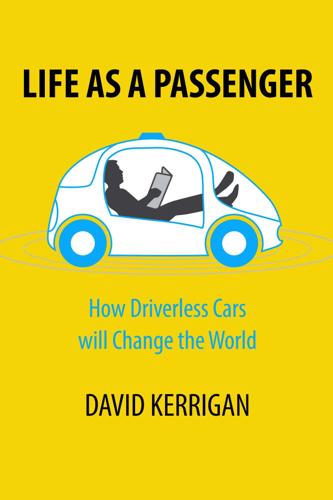
Life as a Passenger: How Driverless Cars Will Change the World
by
David Kerrigan
Published 18 Jun 2017
g=43194ac7-9d44-46f5-9e4c-9c759f8e3641 https://www.bloomberg.com/amp/news/articles/2017-05-16/waymo-s-next-challenge-making-driverless-passengers-feels-safe http://newsroom.aaa.com/2017/03/americans-feel-unsafe-sharing-road-fully-self-driving-cars/ https://www.fastcompany.com/40419374/the-future-of-autonomous-vehicles-relies-on-middle-america Negative articles include: http://www.computerworld.com/article/2599426/emerging-technology/did-you-know-googles-self-driving-cars-cant-handle-99-of-roads-in-the-us.html https://www.technologyreview.com/s/530276/hidden-obstacles-for-googles-self-driving-cars/ https://www.theguardian.com/commentisfree/2016/dec/15/the-guardian-view-on-self-driving-cars-apply-the-brakes https://www.nytimes.com/2016/12/19/opinion/google-wants-driverless-cars-but-do-we.html?_r=0 Blogs: A selection of blogs on the topic of Driverless cars: http://penguindreams.org/blog/self-driving-cars-will-not-solve-the-transportation-problem/# http://utilware.com/autonomous.html http://ideas.4brad.com/rodney-brooks-pedestrian-interaction-andrew-ng-infrastructure-and-both-human-attitudes https://medium.com/@alexrubalcava/a-roadmap-for-a-world-without-drivers-573aede0c968 http://www.newgeography.com/content/005024-preparing-impact-driverless-cars http://blog.piekniewski.info/2017/05/11/a-car-safety-myths-and-facts/ https://medium.com/@christianhern/self-driving-cars-as-the-new-toolbar-8c8a47a3c598 https://backchannel.com/self-driving-cars-will-improve-our-cities-if-they-dont-ruin-them-2dc920345618#.4va0brsyg Videos: A selection of Videos on the topic of Driverless cars: Video of Tesla Auto pilot - https://thescene.com/watch/arstechnica/cars-technica-hands-on-with-tesla-s-autopilot https://youtu.be/tiwVMrTLUWg (15 Minute TED Talk by Chris Urmson of Google, 2015) * * * [1] http://www.mckinsey.com/~/media/McKinsey/Business%20Functions/McKinsey%20Digital/Our%20Insights/Disruptive%20technologies/MGI_Disruptive_technologies_Full_report_May2013.ashx [2] http://www.morganstanley.com/articles/autonomous-cars-the-future-is-now [3] http://www3.weforum.org/docs/Media/WEF_FutureofJobs.pdf [4] https://en.wikipedia.org/wiki/Roy_Amara [5] https://twitter.com/BenedictEvans/status/763209924302090240 [6] https://en.wikipedia.org/wiki/Zeno%27s_paradoxes#Dichotomy_paradox [7] https://twitter.com/BenedictEvans/status/771115479393906688 [8] https://lilium.com/ [9] https://www.uber.com/info/elevate/ [10] The Salmon of Doubt, Douglas Adams, 2002 [11] http://farmerandfarmer.org/mastery/builder.html [12] https://global.oup.com/academic/product/innovation-and-its-enemies-9780190467036?
…
John Jordan, a Professor at Penn State[318] sees parallels in the past: “About 125 years ago, when the internal combustion engine supplanted equine power for personal mobility, there was much talk regarding ‘horseless carriages’, defining the future in terms of the past. We are at much the same juncture today. Much of the conversation starts with what we know human drivers do: ‘How will self-driving cars avoid bicyclists? How will self-driving cars merge in construction zones? How will self-driving cars make left turns across oncoming traffic with solar glare?’ All of these questions must be answered, of course, but I believe it’s not too early to ask what we want of the next car.” Sociologist and economist Thorstein Veblen introduced the concept of Technological Determinism[319] in the 1920s, which proposed that a society's technology determines the development of its social structure and cultural values.
…
mbid=nl_31516 http://www.nlc.org/article/new-autonomous-vehicle-guide-helps-cities-prepare-for-a-driverless-future http://www.nctr.usf.edu/wp-content/uploads/2016/11/Implications-for-Public-Transit-of-Emerging-Technologies-11-1-16.pdf http://globalpolicysolutions.org/wp-content/uploads/2017/03/Stick-Shift-Autonomous-Vehicles.pdf https://www.technologyreview.com/s/607841/a-single-autonomous-car-has-a-huge-impact-on-alleviating-traffic/ Chapter 7 - Regulation & Acceptance https://www.transportation.gov/AV/federal-automated-vehicles-policy-september-2016 https://www.scientificamerican.com/article/when-it-comes-to-safety-autonomous-cars-are-still-teen-drivers1/# http://www.newsweek.com/when-will-we-know-self-driving-cars-are-safe-501270 http://www.huffingtonpost.com/entry/how-safe-are-self-driving-cars_us_5908ba48e4b03b105b44bc6b?ncid=engmodushpmg00000004 http://www.reuters.com/article/us-germany-autos-self-driving-idUSKBN1881HY http://techcrunch.com/2016/01/28/security-and-privacy-standards-are-critical-to-the-success-of-connected-cars/ https://techcrunch.com/2016/11/06/why-the-department-of-transportations-self-driving-car-guidelines-arent-enough/ https://electrek.co/2016/10/19/elon-musk-says-the-media-is-killing-people-when-writing-negative-articles-about-self-driving-cars/ http://readwrite.com/2017/05/07/responsible-autonomous-car-regulations-tl1/ https://www.enotrans.org/wp-content/uploads/2015/09/AV-paper.pdf http://www.lexology.com/library/detail.aspx?
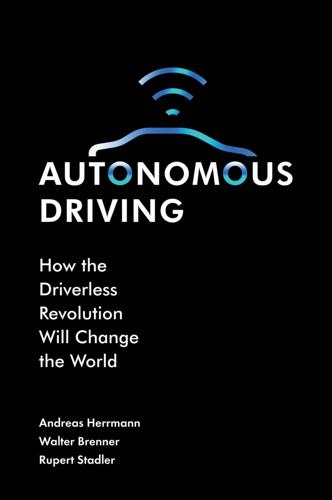
Autonomous Driving: How the Driverless Revolution Will Change the World
by
Andreas Herrmann
,
Walter Brenner
and
Rupert Stadler
Published 25 Mar 2018
Microsoft is also developing connectivity and telematics services and is supporting Toyota’s research into artificial intelligence and self-driving cars. In 2017, Korean tech giant Samsung received permission from the Korean government to test self-driving cars on public roads, using Hyundai vehicles equipped with cameras and sensors. NEW PLAYERS Shanghai has recently joined Beijing and Shenzhen as one of the centres of the Chinese automobile industry. Numerous startups have been established in and around this megacity that are developing autonomous electric vehicles. There are about 20 companies working on self-driving cars, one of which is especially prominent. Jia Yueting, billionaire and CEO of LeEco, a company that has grown enormously with smartphones, TV transmitters and streaming services, has now entered the race.
…
It is clear that these calculations can, at best, indicate the rough magnitudes involved in autonomous driving. One must also be aware that all analyses refer to a traffic situation in which there are only self-driving cars on the roads. However, accidents might still occur with autonomous vehicles, but V-to-X communication based on the new long-term evolution (LTE) vehicular 65 Autonomous Driving 66 Table 8.1. Potential Savings from Self-Driving Cars and Trucks. Expected Savings from the Use of Autonomous Cars and Trucks in the United States Savings Cars Trucks Less fuel $158 billion $35 billion Less labour $70 billion Less injuries and fatalities $542 billion $36 billion Productivity gains $507 billion Less congestion $149 billion $27 billion Total $1.3 trillion $168 billion Source: Morgan Stanley Research [94].
…
Another example is the US National Highway Traffic 146 Autonomous Driving Safety Administration’s (NHTSA) Federal Automated Vehicles Policy and Cybersecurity Best Practices for Modern Vehicles, both of which provide cyber security guidelines for the automotive industry. More recently, in June 2017, a bipartisan group of legislators including Senators John Thune, Bill Nelson and Gary Peters introduced a set of principles to guide legislation on self-driving cars that address many cyber security concerns. Also in June, House Representatives started circulating the drafts of a 14-bill package in an effort to pass federal laws regarding self-driving cars. Finally, on 28 June 2017, the Federal Trade Commission (FTC) and the NHTSA held a workshop to examine consumer privacy and cyber security issues in autonomous and connected vehicles. Despite these guidelines and any federal laws that may be passed, and given the potential damage of an attack, the automotive industry must proactively procure and establish solutions and standards themselves.

Augmented: Life in the Smart Lane
by
Brett King
Published 5 May 2016
In fact, based on Google’s beta testing of its self-driving cars, the existing units are about ten times safer than human drivers. For every 1 million miles that the existing fleet of self-driving cars undertakes, without causing an accident, we will see that number effectively double. Probability means that at some point a self-driving car will cause an accident, and that at some point it will probably be involved in a fatality, but these self-driving cars will still be demonstrably safer than human drivers. As Brad Templeton, a Singularity University professor who worked with Google on the self-driving car, articulated to me during a recent interview: “Self-driving cars don’t get tired, don’t get drunk, don’t get distracted, don’t get road rage and don’t need a rest, unless it might be to charge.”
…
Let me give you a simple example of why the banking system that today requires a person’s identity to be tied to a bank account cannot survive this shift. When Your Self-driving Car Has a Bank Account While owning a car will definitely be an option in the future, many Millennials and their descendants will opt to participate in a sharing economy where ownership is distributed, or where self-driving car time is rented. So let’s take a scenario in 2025 to 2030 when a Millennial subscribes to a personalised car service guaranteeing access to an autonomous, self-driving car for a certain number of hours each day, or where they buy a “share” in a self-driving car. The car picks up the Millennial and takes them to work.
…
Any cars that are being made that don’t have full autonomy will have negative value. It will be like owning a horse. You will only be owning it for sentimental reasons.” Elon Musk, CEO of Tesla, Tesla Earnings call, November 2015 Living with Self-driving Cars At the CES in Las Vegas in 2015, Mercedes launched a self-driving car called the Mercedes F015. In fact, it reportedly drove itself to the venue. Where it differed from the likes of Google’s self-driving car, or those from Volvo, Audi or Tesla, is that it was specifically designed as a “third place” for consumers, as Dieter Zetsch, head of the German company, put it at the time. If our home is our first place and our office or school our second place, then where is the next place we spend a large portion of our time?

Artificial Unintelligence: How Computers Misunderstand the World
by
Meredith Broussard
Published 19 Apr 2018
The best case for considering how artificial intelligence works both really well and not at all is the case of the self-driving car. The first time I rode in a self-driving car, in 2007, I thought I was going to die. Or vomit. Or both. So, when I heard in 2016 that self-driving cars were coming to market, that Tesla had created software called Autopilot and that Uber was testing self-driving cars in Pittsburgh, I wondered: What had changed? Did the reckless engineers I met in 2007 actually manage to embed an ethical decision-making entity inside a two-ton killing machine? It turned out that perhaps not as much has changed as I might have thought. The story of the race to build a self-driving car is a story about the fundamental limits of computing.
…
He’s warning of a likely future path for self-driving cars that is neither safe nor ethical nor toward the greater good. The problem seems to be that few people are listening. “Self-driving cars are nifty and coming soon” seems to be the accepted wisdom, and nobody seems to care that the technologists have been saying “coming soon” for decades now. To date, all self-driving car “experiments” have required a driver and an engineer to be onboard at all times. Only a technochauvinist would call this success and not failure. A few useful consumer advances have come out of self-driving car projects. My car has cameras embedded in all four sides; the live video from these cameras makes it easier to park.
…
When people don’t have a framework or a sense of commitment to others, however, they tend to make decisions that seem aberrant. In the case of self-driving cars, there’s no way to make sure that the decisions made by individual technologists in corporate office buildings will match with actual collective good. This leads us to ask, again: Who does this technology serve? How does it serve us to use it? If self-driving cars are programmed to save the driver over a group of kindergarteners, why? What does it mean to accept that programming default and get behind the wheel? Plenty of people, including technologists, are sounding warnings about self-driving cars and how they attempt to tackle very hard problems that haven’t yet been solved.

The Economic Singularity: Artificial Intelligence and the Death of Capitalism
by
Calum Chace
Published 17 Jul 2016
[clxxix] We drive rather than use public transport because there is no appropriate public transport available, or sometimes because we prefer travelling in our own space. Self-driving cars could give us the best of both worlds, allowing us to read, sleep, watch video or chat as we travel. Finally, self-driving cars will enable us to use our environments more sensibly, especially our cities. Most cars spend 95% of their time parked.[clxxx] This is a waste of an expensive asset, and a waste of the land they occupy while sitting idle. We will consider later how far self-driving cars could alleviate this problem. To autonomy and beyond Self-driving cars, like our artificially intelligent digital assistants, are still waiting to receive their generic name.
…
[clxxxii] The US Department of Transport draws a distinction between (partly) autonomous cars and (fully) self-driving cars.[clxxxiii] The former still have steering wheels, and require a human driver to take over when they encounter a tricky situation. Self-driving cars, by contrast, are fully independent, and the steering wheel has been removed to save space. Autonomous cars will probably be merely a staging post en route to the completely self-driving variety. In fact the US DoT grades cars on a scale from L0, where the driver does everything, to L4, where the car does everything. Google’s initial idea was that the first self-driving cars in general use would be L3, meaning that the human driver should be ready to take over at a moment’s notice if anything went wrong, just as airplane pilots are.
…
[clxxxv] With many technology projects, resolving the last few issues is more difficult than the bulk of the project: edge cases are the acid test. Nevertheless, those edge cases are being tackled, and will be resolved. It is well-known that Google's self-driving cars have travelled well over a million miles in California without causing a significant accident, but what is less well-known is that the cars also drive millions of miles every day in simulators. Chris Urmson, head of the Google project, expects self-driving cars to be in general use by 2020.[clxxxvi] Sceptics point out that Google's self-driving cars depend on detailed maps. But producing maps for the roads outside California doesn't sound like an insurmountable obstacle, and in any case, systems like SegNet from Cambridge University enable cars to produce maps on the fly.

Ghost Road: Beyond the Driverless Car
by
Anthony M. Townsend
Published 15 Jun 2020
Notes Preface xivprivate-sector funding . . . surged tenfold: Aparna Narayanan, “Self-Driving Cars Run into Reality—and Are Further Away Than You Think,” Investors Business Daily, May 24, 2019, https://www.investors.com/news/self-driving-cars-hit-delays-driverless-cars-timeline/. xvperfecting the technology will be trickier: Jeffrey Rothfeder, “For Years, Automakers Wildly Overpromised on Self-Driving Cars and Electric Vehicles—What Now?” Fast Company, July 10, 2019, https://www.fastcompany.com/90374083/for-years-automakers-wildly-overpromised-on-self-driving-cars-and-electric-vehicles-what-now. xvGM’s cruise . . . software sometimes failed: Cohen Coberly, “GM’s Self-Driving Car Fails to See Pedestrians and Detect ‘Phantom’ Bicycles, Report Claims,” Techspot, October 24, 2018, https://www.techspot.com/news/77083-gm-self-driving-car-division-facing-technical-challenges.html. 1.
…
Hawkins, “Waymo and GM Still Lead the Pack in California’s New Self-Driving Report Cards,” The Verge, January 31, 2018, https://www.theverge.com/2018/1/31/16956902/california-dmv-self-driving-car-disengagement-2017. 42more than doubling the average distance between disengagements: Alan Ohnsman, “Waymo Tops Self-Driving Car ‘Disengagement’ Stats as GM Cruise Gains and Tesla Is AWOL,” Forbes, February 13, 2019, https://www.forbes.com/sites/alanohnsman/2019/02/13/waymo-tops-self-driving-car-disengagement-stats-as-gm-cruise-gains-and-tesla-is-awol/#7b83615131ec. 42“freedom from external control or influence”: English Oxford Living Dictionaries, s.v.
…
Cheape, Moving the Masses: Urban Public Transit in New York, Boston, and Philadelphia, 1880–1912 (Cambridge, MA: Harvard University Press, 1980), 174. 89as many as three sets of tracks and overhead power lines ran: Cheape, Moving the Masses, 159. 89commuters paid at least two fares to get to work: Cheape, Moving the Masses, 159. 89PTC’s ridership had tripled: Cheape, Moving the Masses, 174. 89the company’s monopoly was secure: Cheape, Moving the Masses, 162–67. 94“As a driverless taxi was finally introduced”: Keller, “The Living Machine,” 1470. 94drivers take home about 80 percent of ride-for-hire fees: Alex Rosenblat, Uberland: How Algorithms Are Rewriting the Rules of Work (Oakland: University of California Press, 2018). 94all but eliminate the share that goes to labor: International Transport Board of the OECD, Urban Mobility System Upgrade: How Shared Self-Driving Cars Could Change City Traffic, ITF Corporate Partnership Board Report, 2015. 94Today’s cabs spend half of their working hours empty: Judd Cramer and Alan B. Krueger, “Disruptive Change in Taxi Business: The Case of Uber,” American Economic Review 106, no. 5 (2016): 177–82. 94could grow to $285 billion annually by 2030: David Welch and Elisabeth Behrmann, “Who’s Winning the Self-Driving Car Race?” Bloomberg, May 7, 2018, https://www.bloomberg.com/news/features/2018-05-07/who-s-winning-the-self-driving-car-race. 95more than one billion taxibots: Author’s calculation using estimates from UBS, Longer Term Investments: Smart Mobility (Chief Investment Office Americas, October 19, 2017). 95SilverRide targets senior citizens: Mitchell Hartman, “Wanted: Elder Transportation Solutions,” Marketplace, January 30, 2019, https://www.marketplace.org/2019/01/30/business/wanted-elder-transportation-solutions. 95“transported everything from leopards”: Ted Trauter, “Pet Chauffeur Tried to Adapt to Tough Economy,” You’re the Boss (blog), New York Times, August 26, 2011, https://boss.blogs.nytimes.com/2011/08/26/pet-chauffeur-tries-to-adapt-to-tough-economy. 96no-cost rides to prenatal-care appointments and grocery stores: Laura Bliss, “In Columbus, Expectant Moms Will Get On-Demand Rides to the Doctor,” CityLab, December 27, 2018, https://www.citylab.com/transportation/2018/12/smart-city-columbus-prenatal-ride-hailing/579082/. 97the company could soon be serving up to a million passengers: Alexis Madrigal, “Finally, the Self-Driving Car,” The Atlantic, December 5, 2018, https://www.theatlantic.com/technology/archive/2018/12/test-ride-waymos-self-driving-car/577378/. 97Singapore could make do with half: MIT Senseable City Lab, “Unparking,” Massachusetts Institute of Technology, accessed 20 February 2019, http://senseable.mit.edu/unparking/. 97could swap one private self-driving cab for every six: International Transport Board of the OECD, Urban Mobility System Upgrade. 98eliminate upwards of 75 percent of its yellow cabs: Javier Alonso-Mora et al., “On-Demand High-Capacity Ride-Sharing via Dynamic Trip-Vehicle Assignment,” Proceedings of the National Academy of Sciences of the United States of America 114, no. 3 (2017): 462–67. 98high cost of remote human safety monitors: Ashley Nunes and Kristen Hernandez, “The Cost of Self-Driving Cars Will Be the Biggest Barrier to Their Adoption,” Harvard Business Review, January 31, 2019, https://hbr.org/2019/01/the-cost-of-self-driving-cars-will-be-the-biggest-barrier-to-their-adoption. 98“We are going to also offer third-party”: “Full Video and Transcript: Uber CEO Dara Khosrowshahi at Code 2018,” Recode, June 4, 2018, https://www.recode.net/2018/5/31/17397186/full-transcript-uber-dara-khosrowshahi-code-2018. 99flubbed their geometry too: For more, see Jarett Walker, “Does Elon Musk Understand Urban Geometry?”

The Driver in the Driverless Car: How Our Technology Choices Will Create the Future
by
Vivek Wadhwa
and
Alex Salkever
Published 2 Apr 2017
Most important, car sharing will cost a fraction of what car ownership today costs. Owning a car for daily, personal transportation will seem impractical. Self-driving cars will also deliver incontrovertible social benefits. With self-driving cars, the disabled will no longer struggle to find transportation; they will have an on-demand personal driver. Several years ago, as the New York Times in November 2014 relates it, Google’s self-driving car team contacted Steve Mahan, Executive Director of the Santa Clara Valley Blind Center.5 The team wanted feedback and let Mahan come along for test drives in earlier self-driving Prius models as well as in the latest Google car.
…
For me, it’s already a toss-up between driving and flying when I want to travel from San Francisco to Santa Barbara, which is four and a half hours away by car and takes four hours by plane and taxis (provided there are no flight delays). The self-driving cars will easily tip the balance; for any trips on the West coast, I’ll forgo the flights. Imagine the disruptions to the railroad and airline industries when we all start making this choice. And all of this begins to happen by the early 2020s. If I can rely on Elon Musk, my Tesla will become fully autonomous as early as 2018; 14 and Uber’s CEO, Travis Kalanick, has signed a pact with Volvo to have self-driving cars on the roads by 2021.15 Does the Technology Foster Autonomy Rather Than Dependence? I simply can’t wait for self-driving cars to take over our roads; I see them as increasing our personal autonomy as much as, if not more than, anything else discussed in this book.
…
Ben Marlow, “Addison Lee owner flags sale,” the Telegraph (U.K.), 28 June 2014, http://www.telegraph.co.uk/finance/newsbysector/banksandfinance/10933273/Addison-Lee-owner-flags-sale.html (accessed 21 October 2016). 3. Johana Bhuiyan, “Why Uber has to be first to market with self-driving cars,” Recode 29 September 2016, http://www.recode.net/2016/9/29/12946994/why-uber-has-to-be-first-to-market-with-self-driving-cars (accessed 21 October 2016). 4. Alison Griswold, “Uber wants to replace its drivers with robots. So much for that ‘new economy’ it was building,” Slate 2 February 2015, http://www.slate.com/blogs/moneybox/2015/02/02/uber_self_driving_cars_autonomous_taxis_aren_t_so_good_for_contractors_in.html (accessed 21 October 2016). 5. Ray Kurzweil, How to Create a Mind: The Secret of Human Thought Revealed, New York: Viking, 2012. 6.

Right of Way: Race, Class, and the Silent Epidemic of Pedestrian Deaths in America
by
Angie Schmitt
Published 26 Aug 2020
Then her face is obscured, at close distance, by a motion blur, and the video is clipped, right before impact, for her sake and viewers’. Will Self-Driving Cars Save Us? Some people believe that self-driving cars will someday eliminate pedestrian crashes entirely—or nearly so. A system of perfectly calibrated self-driving cars could reduce traffic fatalities 90 percent or more, the Atlantic’s Adrienne LaFrance, among others, has said,1 but that assertion relies on many flawed assumptions—including that 94 percent of crashes can be attributed to so-called human error. Nevertheless, the companies pursuing the self-driving cars tout safety as a foundational moral imperative for the technology, and on some level, it is a compelling vision.
…
Pedestrian Safety on the Technological Frontier 1. Adrienne LaFrance, “Self-Driving Cars Could Save 300,000 Lives Per Decade in America,” Atlantic, September 9, 2015, https://www.theatlantic.com/technology/archive/2015/09/self-driving-cars-could-save-300000-lives-per-decade-in-america/407956/?utm_source=SFTwitter. 2. Hannah Knowles, “Uber’s Self-Driving Cars Had a Major Flaw: They Weren’t Programmed to Stop for Jaywalkers,” Washington Post, November 6, 2019, https://www.boston.com/cars/car-news/2019/11/06/ubers-self-driving-cars-had-a-major-flaw-they-werent-programmed-to-stop-for-jaywalkers. 3.
…
Doug Ducey’s Face,” Arizona Republic, May 23, 2018, https://www.azcentral.com/story/opinion/op-ed/laurieroberts/2018/05/23/uber-arizona-gov-doug-ducey-experiment-blows-up-his-face/639118002/. 6. Julia Carrie Wong, “California Threatens Legal Action against Uber Unless It Halts Self-Driving Cars,” Guardian, December 16, 2016, https://www.theguardian.com/technology/2016/dec/16/uber-defies-california-self-driving-cars-san-francisco. 7. Simon Romero, “Wielding Rocks and Knives, Arizonans Attack Self-Driving Cars,” New York Times, December 31, 2018, https://www.nytimes.com/2018/12/31/us/waymo-self-driving-cars-arizona-attacks.html. 8. Governors Highway Safety Association, “Autonomous Vehicles,” accessed February 29, 2020, https://www.ghsa.org/state-laws/issues/autonomous%20vehicles. 9.

Artificial Intelligence: A Guide for Thinking Humans
by
Melanie Mitchell
Published 14 Oct 2019
The success of self-driving cars is crucially dependent on machine learning (especially deep learning), particularly for the cars’ computer-vision and decision-making components. How can we determine if these cars have successfully learned all that they need to know? This is the billion-dollar question for the self-driving car industry. I’ve encountered conflicting opinions from experts on how soon we can expect self-driving cars to play a significant role in daily life, with predictions ranging (at the time of this writing) from a few years to many decades. Self-driving cars have the potential to vastly improve our lives. Automated vehicles could substantially reduce the millions of annual deaths and injuries due to auto accidents, many of them caused by intoxicated or distracted drivers.
…
In 2016, three researchers published results from surveys of several hundred people who were given trolley-problem-like scenarios that involved self-driving cars, and were asked for their views of the morality of different actions. In one survey, 76 percent of participants answered that it would be morally preferable for a self-driving car to sacrifice one passenger rather than killing ten pedestrians. But when asked if they would buy a self-driving car programmed to sacrifice its passengers in order to save a much larger number of pedestrians, the overwhelming majority of survey takers responded that they themselves would not buy such a car.21 According to the authors, “We found that participants in six Amazon Mechanical Turk studies approved of utilitarian AVs [autonomous vehicles] (that is, AVs that sacrifice their passengers for the greater good) and would like others to buy them, but they would themselves prefer to ride in AVs that protect their passengers at all costs.”
…
There are also experimental vehicles that can operate fully autonomously in fairly wide circumstances, but these vehicles still need human “safety drivers” who remain ready to take over at a moment’s notice. Several fatal accidents caused by self-driving cars, including the experimental ones, have occurred when a human was supposed to have been ready to take over but was not paying attention. The self-driving car industry desperately wants to produce and sell fully autonomous vehicles (that is, level 5); indeed, full autonomy is what we, the consumers, have long been promised in all the buzz around self-driving cars. What are the obstacles to getting to true autonomy in our cars? The primary obstacles are the kinds of long-tail situations (“edge cases”) that I described in chapter 6: situations that the vehicle was not trained on, and that might individually occur rarely, but that, taken together, will occur frequently when autonomous vehicles are widespread.

Architects of Intelligence
by
Martin Ford
Published 16 Nov 2018
We flew down to Victorville, and it was the first time I saw so many self-driving cars in the same place. The whole Stanford team were all fascinated for the first five minutes, watching all these cars zip around without drivers, and the surprising thing was that after five minutes, we acclimatized to it, and we turned our backs to it. We just chatted with each other while self-driving cars zipped passed us 10 meters away, and we weren’t paying attention. One thing that’s remarkable about humanity is how quickly we acclimatize to new technologies, and I feel that it’s not going to be too long before self-driving cars are no longer called self-driving cars, they’re just called cars.
…
ANDREW NG: I don’t like hype, and I feel like a few companies have spoken publicly and described what I think of as unrealistic timelines about the adoption of self-driving cars. I think that self-driving cars will change transportation, and will make human life much better. However, I think that everyone having a realistic roadmap to self-driving cars is much better than having CEOs stand on stage and proclaim unrealistic timelines. I think the self-driving world is working toward more realistic programs for bringing the tech to market, and I think that’s a very good thing. MARTIN FORD: How do you feel about the role of government regulation, both for self-driving cars and AI more generally? ANDREW NG: The automotive industry has always been heavily regulated because of safety, and I think that the regulation of transportation needs to be rethought in light of AI and self-driving cars.
…
For the ecosystem as well, I think public-private partnerships will accelerate the growth of domestic industry, and governments that make thoughtful regulation about self-driving cars will see self-driving accelerate in their communities. I’m very committed to my home state of California, but California regulations do not allow self-driving car companies to do certain things, which is why many self-driving car companies can’t have their home bases in California and are now almost forced to operate outside of California. I think that both at the state level as well as at the nation level, countries that have thoughtful policies about self-driving cars, about drones, and about the adoption of AI in payment systems and in healthcare systems, for example—those countries with thoughtful policies in all of these verticals will see much faster progress in how these amazing new tools can be brought to bear on some of the most important problems for their citizens.

Rule of the Robots: How Artificial Intelligence Will Transform Everything
by
Martin Ford
Published 13 Sep 2021
Mary Chris Jaklevic, “MD Anderson Cancer Center’s IBM Watson project fails, and so did the journalism related to it,” Health News Review, February 23, 2017, www.healthnewsreview.org/2017/02/md-anderson-cancer-centers-ibm-watson-project-fails-journalism-related/. 56. Mark Anderson, “Surprise! 2020 is not the year for self-driving cars,” IEEE Spectrum, April 22, 2020, spectrum.ieee.org/transportation/self-driving/surprise-2020-is-not-the-year-for-selfdriving-cars. 57. Alex Knapp, “Aurora CEO Chris Urmson says there’ll be hundreds of self-driving cars on the road in five years,” Forbes, October 29, 2019, www.forbes.com/sites/alexknapp/2019/10/29/aurora-ceo-chris-urmson-says-therell-be-hundreds-of-self-driving-cars-on-the-road-in-five-years/. 58. Lex Fridman, “Chris Urmson: Self-driving cars at Aurora, Google, CMU, and DARPA,” Artificial Intelligence Podcast, episode 28, July 22, 2019, lexfridman.com/chris-urmson/.
…
The reality is that the routine operation of autonomous cars on both highways and in more urban environments—in other words, situations where things work more or less as expected—has largely been solved. If public roads were anything like the inside of an Amazon warehouse in terms of the overall level of predictability, self-driving cars might already be widely deployed. The problem, of course, is in the so-called edge cases, the virtually infinite number of unusual interactions and situations that are difficult or impossible for a self-driving car to accurately predict or, in many cases, to correctly interpret. Most self-driving car initiatives depend on highly precise advanced mapping of the streets being traveled. Therefore, unexpected road closings, construction or traffic accidents can create problems.
…
This ability to reliably predict the outcome of a robotic operation and work around failure is really the bright line between a controlled warehouse-type environment, where robots are likely to thrive in the relatively near future, and the far more chaotic outside world, where the challenges for technologies like self-driving cars are likely to be far more daunting. A warehouse robot that can predictably handle half the items it might encounter can be highly useful. A self-driving car operating on a public road that can reliably navigate ninety-nine percent of the situations it encounters may be worse than useless because that outlying one percent virtually guarantees disaster. A partially capable fulfillment robot is likely made even more valuable by the fact that Amazon’s sales are governed by a long-tail distribution in which a relatively small fraction of the products stocked in a warehouse constitute the lion’s share of the items that customers tend to order.

Driverless: Intelligent Cars and the Road Ahead
by
Hod Lipson
and
Melba Kurman
Published 22 Sep 2016
Daimler Press Release, “AUDI AG, BMW Group and Daimler AG agree with Nokia Corporation on Joint Acquisition of HERE Digital Mapping Business,” August 3, 2015, http://media.daimler.com/dcmedia/0-921-656186-1-1836824-1-0-0-0-0-0-0-0-0-0-0-0-0-0-0.html 15. “Volvo Car Group tests road magnets for accurate positioning of self-driving cars,” Volvo Car Group Press Release, March 11, 2014, https://www.media.volvocars.com/global/en-gb/media/pressreleases/140760/volvo-car-group-tests-road-magnets-for-accurate-positioning-of-self-driving-cars 16. Bill Vlasic, “U.S. Proposes Spending $4 Billion on Self-Driving Cars,” New York Times, January 14, 2016, http://www.nytimes.com/2016/01/15/business/us-proposes-spending-4-billion-on-self-driving-cars.html?_r=0 17. Brad Templeton “California DMV Regulations May Kill the State’s Robocar Lead,” 4brad.com, December 17, 2015, http://ideas.4brad.com/california-dmv-regulations-may-kill-states-robocar-lead 18.
…
“Autonomous Cars: Self-Driving the New Auto Industry Paradigm,” Morgan Stanley Blue Paper, November 6, 2013. 13. Google Official Blog, “The Latest Chapter for the Self-Driving Car: Mastering City Street Driving,” April 28, 2014, https://googleblog.blogspot.nl/2014/04/the-latest-chapter-for-self-driving-car.html 14. Google Annual Report, 2007. 15. Burkhard Bilger, “Has the Self-Driving Car at Last Arrived?” New Yorker, November 25, 2013, http://www.newyorker.com/reporting/2013/11/25/131125fa_fact_bilger?currentPage=all 16. Mark Harris “The Unknown Start-up That Built Google’s First Self-Driving Car,” IEEE Spectrum Online, November 19, 2014, http://spectrum.ieee.org/robotics/artificial-intelligence/the-unknown-startup-that-built-googles-first-selfdriving-car 9 Anatomy of a Driverless Car Driverless cars “see” and “hear” by taking in real-time data that flows in from several different types of on-board sensors.
…
Sommers, “Teen Drivers’ Perceptions of Inattention and Cell Phone Use While Driving,” Traffic Injury Prevention 16 (supp. 2) (2015): S52. DOI: 10.1080/15389588.2015.1062886 19. Quote comes from Google Self-Driving Car Project Monthly Report, October 2015, https://static.googleusercontent.com/media/www.google.com/en//selfdrivingcar/files/reports/report-1015.pdf 20. Description of the bus incident here, https://static.googleusercontent.com/media/www.google.com/en//selfdrivingcar/files/reports/report-0216.pdf 21. Kevin Root, “Self Driving Cars, Autonomous Vehicles, and Shared Mobility,” Slideshare, http://www.slideshare.net/traveler138/self-driving-cars-v11 4 A Mind of Its Own There’s an old joke that made the rounds on the internet back in the 1990s.

Driverless Cars: On a Road to Nowhere
by
Christian Wolmar
Published 18 Jan 2018
Financial Times, 23 May (http://on.ft.com/2qiE2cB). 57. G. Paton. 2017. Self-driving cars could run on unlit roads to con- serve energy. The Times, 9 October (http://bit.ly/2zMycZo). 58. International Transport Forum. 2017. Shared Mobility: Simula- tions for Helsinki. OECD (http://bit.ly/2zjWxTa). 118 Photo credits ‘A Google self-driving car at the intersection of Junction Ave and North Rengstorff Ave in Mountain View’ (page 17). By Grendelkhan (own work) [CC BY-SA 4.0 (http://creativecommons.org/licenses/ by‑sa/4.0)], via Wikimedia Commons. ‘Uber’s self-driving car test driving in downtown San Francisco’ (page 21).
…
The article continued: ‘The pizza delivery company is testing out a novel way of carrying out deliveries.’ 14 This, again, had become a global story, and a website called TechCrunch was typical, illustrating it with the picture of a young woman picking up a pizza from a ‘self-driving’ car. The truth, however, was again far more banal. The ‘self-driving’ cars will have drivers but they will stay in the car ‘behind darkened windows’ while delivering the pizzas. TechCrunch revealed that the point of the 23 Driverless Cars: On a Road to Nowhere experiment, run jointly by Domino’s and Ford, was not to test the technology but ‘to see how people react to receiving pizzas via self-driving vehicles’.
…
While it is not possible to disentangle precisely the proportion of that huge sum being spent on electric and autonomous car technology, according to the PriceWaterhouseCoopers report on connectivity cited in the last chapter, ‘the self-driving car will be the most valuable contribution to automakers’ top and bottom lines in a generation’.32 Therefore, it is highly likely that much of this money is being spent on the search for the Holy Grail of the self-driving car, and the actual sums mentioned by various companies back this up. Predictions are constantly being made and updated – invariably pushed further into the future – and some of them will therefore be out of date or abandoned even before this book is published.

The Second Intelligent Species: How Humans Will Become as Irrelevant as Cockroaches
by
Marshall Brain
Published 6 Apr 2015
The system also includes front- and rear-facing radar with a longer range, as well as an optical camera that is helpful in determining, among other things, whether a traffic light is red or green. In addition, self-driving cars drive on roads that have been pre-scanned. How can a self-driving car tell where the lanes are if it is night time, raining and the lane marking lines have faded? The car knows where the lanes are because of this pre-scanning. By putting all of this together, a self-driving car can do a great job on public roads. In fact, self-driving cars are far better at driving than human beings are. Self-driving cars never get distracted, never blink, never doze off, never talk on cell phones, never get drunk, etc. In addition, the self-driving car has a 360-degree view and multiple sensors that humans will never have.
…
Chapter 5 - How Computer Vision Systems will Destroy Jobs If you look back at the description of self-driving cars in the previous chapter, notice that computer vision does not really play a role. Current self-driving cars do not have two eyes on the roof or the hood looking out at the road and deciding what to do based on visual input. Self-driving cars do have an optical camera, but it plays a small role. For example, it helps the car decide if a traffic light at an intersection is red or green. This might seem odd to many people. When humans drive a car, visual input through our eyes is essential. Why don't self-driving cars do it the same way? Why doesn't a self-driving car use optical cameras and binocular vision in the same way that human beings use their eyes to sense the world?
…
To get an idea of how this will unfold, let's focus on one specific group of people who will be affected early and completely by the process of automation: truck drivers. As mentioned in Chapter 2, self-driving cars have existed firmly in the public consciousness since 2012. In August, 2012, Google announced that it had developed self-driving car technology that had logged over 300,000 miles on public roadways, co-mingling with normal and oblivious human traffic. Since then, many more self-driving cars have entered the space. The sensor technology and computer technology that makes self-driving cars possible is impressive, but nothing exotic. A LIDAR unit sends out infrared laser pulses all around the vehicle to form a 360 degree 3D image of everything around the car.

Robot, Take the Wheel: The Road to Autonomous Cars and the Lost Art of Driving
by
Jason Torchinsky
Published 6 May 2019
v=PgnsapPGaaw. 27 Wikipedia, “Edge Detection,” https://en.wikipedia.org/wiki/Edge_detection. 28 Torchinsky, Jason, “Why Nissan Built Realistic Inflatable Versions of Its Most Popular Cars,” Jalopnik, October 18, 2012, https://jalopnik.com/why-nissan-built-realistic-inflatable-versions-of-its-m-5952415. 29 Condliffe, Jamie, “This Image Is Why Self-Driving Cars Come Loaded with Many Types of Sensors,” MIT Technology Review, July 21, 2017, https://www. technologyreview.com/s/608321/this-image-is-why -self-driving-cars-come-loaded-with-many-types-of-sensors/. 30 Antunes, João, “Performance over Price: Lumina’s Novel Lidar Tech for Autonomous Vehicles,” SPAR 3D, May 5, 2017, https://www.spar3d.com/news/lidar/performance-price-luminars -novel-lidar-tech-autonomous-vehicles/. 31 Dwivedi, Priya, “Tracking a self-driving car with high precision,” Towards Data Science, April 30, 2017, https://towardsdatascience.com/helping-a-self-driving-car-localize-itself-88705f419e4a. 32 Kichun Jo; Yongwoo Jo; Jae Kyu Suhr; Ho Gi Jung; Myoungho Sunwoo, “Precise Localization of an Autonomous Car Based on Probabilistic Noise Models of Road Surface Marker Features Using Multiple Cameras,” IEEE Transactions on Intelligent Transportaion Systems, vol, 16, 6, December 2015, https://ieeexplore.ieee.org/document/7160754/. 33 Silver, David, “How Self-Driving Cars Work,” Medium, December 14, 2017, https://medium.com/udacity/how-self-driving-cars-work -f77c49dca47e. 34 Website of the Australian Government Department of Infrastructure, Regional Development and Cities, https://infrastructure.gov.au/vehicles/mv_standards_act/files/Sub136_Austroads.pdf.
…
v=PgnsapPGaaw. 27 Wikipedia, “Edge Detection,” https://en.wikipedia.org/wiki/Edge_detection. 28 Torchinsky, Jason, “Why Nissan Built Realistic Inflatable Versions of Its Most Popular Cars,” Jalopnik, October 18, 2012, https://jalopnik.com/why-nissan-built-realistic-inflatable-versions-of-its-m-5952415. 29 Condliffe, Jamie, “This Image Is Why Self-Driving Cars Come Loaded with Many Types of Sensors,” MIT Technology Review, July 21, 2017, https://www. technologyreview.com/s/608321/this-image-is-why -self-driving-cars-come-loaded-with-many-types-of-sensors/. 30 Antunes, João, “Performance over Price: Lumina’s Novel Lidar Tech for Autonomous Vehicles,” SPAR 3D, May 5, 2017, https://www.spar3d.com/news/lidar/performance-price-luminars -novel-lidar-tech-autonomous-vehicles/. 31 Dwivedi, Priya, “Tracking a self-driving car with high precision,” Towards Data Science, April 30, 2017, https://towardsdatascience.com/helping-a-self-driving-car-localize-itself-88705f419e4a. 32 Kichun Jo; Yongwoo Jo; Jae Kyu Suhr; Ho Gi Jung; Myoungho Sunwoo, “Precise Localization of an Autonomous Car Based on Probabilistic Noise Models of Road Surface Marker Features Using Multiple Cameras,” IEEE Transactions on Intelligent Transportaion Systems, vol, 16, 6, December 2015, https://ieeexplore.ieee.org/document/7160754/. 33 Silver, David, “How Self-Driving Cars Work,” Medium, December 14, 2017, https://medium.com/udacity/how-self-driving-cars-work -f77c49dca47e. 34 Website of the Australian Government Department of Infrastructure, Regional Development and Cities, https://infrastructure.gov.au/vehicles/mv_standards_act/files/Sub136_Austroads.pdf.
…
* * * 60 Siler, Wes, “Science Shows People Prefer Angry, Aggressive Cars,” Jalopnik, October 7, 2008, https://jalopnik.com/5060127/science-shows-people-prefer-angry-aggressive-cars. 61 Warren, Tamara, “Google’s Self-Driving Car Design Boss Speaks on Her Strategy,” The Verge, October 25, 2016, https://www.theverge.com/2016/10/25/13307364/google-self-driving-car-design-yoojung -ahn-interview. 62 Torchinsky, Jason, “Honda Once Made a Car Specifically For People to Bone In,” Jalopnik, November 2, 2015, https://jalopnik.com/honda-once-made-a-car-specifically-for-people-to-bone-i-1740050375. 63 Hanlon, Mike, “Honda’s Fuya-jo Party on Wheels Concept,” New Atlas, April 16, 2005, https://newatlas.com/go/3950/. 64 “Branding Nano as the Cheapest Car Was a Big Mistake, Says Ratan Tata,” India Today Online, November 30, 2013, https://www.indiatoday.in/business/story/nano-branding-big-mistake -ratan-tata-219211-2013-11-30.

Super Pumped: The Battle for Uber
by
Mike Isaac
Published 2 Sep 2019
v=TS0NuV-zLZE. 244 “We will impound the vehicle”: Victor Fiorillo, “Uber Launches UberX In Philadelphia, but PPA Says ‘Not So Fast,’ ” Philadelphia, October 25, 2014, https://www.phillymag.com/news/2014/10/25/uber-launches-uberx-philadelphia/. 244 “UBERX: REMINDER”: Documents held by author. 245 a behavior engineers called “eyeballing”: Mike Isaac, “How Uber Deceives the Authorities Worldwide,” New York Times, March 3, 2017, https://www.nytimes.com/2017/03/03/technology/uber-greyball-program-evade-authorities.html. 247 “Uber has for years used”: Isaac, “How Uber Deceives the Authorities Worldwide.” 247 Uber’s security chief, prohibited employees: Daisuke Wakabayashi, “Uber Seeks to Prevent Use of Greyball to Thwart Regulators,” New York Times, March 8, 2017, https://www.nytimes.com/2017/03/08/business/uber-regulators-police-greyball.html. 247 Department of Justice opened a probe: Mike Isaac, “Uber Faces Federal Inquiry Over Use of Greyball Tool to Evade Authorities,” New York Times, May 4, 2017, https://www.nytimes.com/2017/05/04/technology/uber-federal-inquiry-software-greyball.html. 247 the inquiry widened to Philadelphia: Mike Isaac, “Justice Department Expands Its Inquiry into Uber’s Greyball Tool,” New York Times, May 5, 2017, https://www.nytimes.com/2017/05/05/technology/uber-greyball-investigation-expands.html. 248 He called it The Rideshare Guy: Harry Campbell, “About the Rideshare Guy: Harry Campbell,” The Rideshare Guy (blog), https://therideshareguy.com/about-the-rideshare-guy/. 248 directly due to the string of controversies: Kara Swisher and Johana Bhuiyan, “Uber President Jeff Jones Is Quitting, Citing Differences Over ‘Beliefs and Approach to Leadership,’ ” Recode, March 19, 2017, https://www.recode.net/2017/3/19/14976110/uber-president-jeff-jones-quits. 250 “there’s just a bunch of models”: Emily Peck, “Travis Kalanick’s Ex Reveals New Details About Uber’s Sexist Culture,” Huffington Post, March 29, 2017, https://www.huffingtonpost.com/entry/travis-kalanick-gabi-holzwarth-uber_us_58da7341e4b018c4606b8ec9. 253 “I am so sorry for being cold”: Amir Efrati, “Uber Group’s Visit to Seoul Escort Bar Sparked HR Complaint,” The Information, March 24, 2017, https://www.theinformation.com/articles/uber-groups-visit-to-seoul-escort-bar-sparked-hr-complaint. 253 reporter’s cell phone number: Efrati, “Uber Group’s Visit to Seoul Escort Bar.” Chapter 26: FATAL ERRORS 254 who called the maneuver illegal: Mike Isaac, “Uber Expands Self-Driving Car Service to San Francisco. D.M.V. Says It’s Illegal.,” New York Times, December 14, 2016, https://www.nytimes.com/2016/12/14/technology/uber-self-driving-car-san-francisco.html. 254 Uber issued a statement: Isaac, “Uber Expands Self-Driving Car Service to San Francisco.” 255 Uber’s narrative was false: Mike Isaac and Daisuke Wakabayashi, “A Lawsuit Against Uber Highlights the Rush to Conquer Driverless Cars,” New York Times, February 24, 2017, https://www.nytimes.com/2017/02/24/technology/anthony-levandowski-waymo-uber-google-lawsuit.html. 255 Levandowski was unceremoniously terminated: Mike Isaac and Daisuke Wakabayashi, “Uber Fires Former Google Engineer at Heart of Self-Driving Dispute,” New York Times, May 30, 2017, https://www.nytimes.com/2017/05/30/technology/uber-anthony-levandowski.html. 256 “possible theft of trade secrets”: Aarian Marshall, “Google’s Fight Against Uber Takes a Turn for the Criminal,” Wired, May 12, 2017, https://www.wired.com/2017/05/googles-fight-uber-takes-turn-criminal/. 256 expressed contrition in a press interview: Mike Isaac, “Uber Releases Diversity Report and Repudiates Its ‘Hard-Charging Attitude,’ ” New York Times, March 28, 2017, https://www.nytimes.com/2017/03/28/technology/uber-scandal-diversity-report.html. 257 existence of Uber’s program “Hell”: Efrati, “Uber’s Top Secret ‘Hell’ Program.” 257 The team kept tabs: Kate Conger, “Uber’s Massive Scraping Program Collected Data About Competitors Around the World,” Gizmodo, December 11, 2017, https://gizmodo.com/ubers-massive-scraping-program-collected-data-about-com-1820887947. 257 recorded private conversations: Paayal Zaveri, “Unsealed Letter in Uber-Waymo Case Details How Uber Employees Allegedly Stole Trade Secrets,” CNBC, December 15, 2017, https://www.cnbc.com/2017/12/15/jacobs-letter-in-uber-waymo-case-says-uber-staff-stole-trade-secrets.html. 261 personal, private medical files: Kara Swisher and Johana Bhuiyan, “A Top Uber Executive, Who Obtained the Medical Records of a Customer Who Was a Rape Victim, Has Been Fired,” Recode, June 7, 2017, https://www.recode.net/2017/6/7/15754316/uber-executive-india-assault-rape-medical-records. 262 it was over for Eric Alexander: Mike Isaac, “Uber Fires Executive Over Handling of Rape Investigation in India,” New York Times, June 7, 2017, https://www.nytimes.com/2017/06/07/technology/uber-fires-executive.html. 262 Kalanick accepted her resignation: Mike Isaac, “Executive Who Steered Uber Through Scandals Joins Exodus,” New York Times, April 11, 2017, https://www.nytimes.com/2017/04/11/technology/ubers-head-of-policy-and-communications-joins-executive-exodus.html. 263 “The last note I got from her”: Kalanick, “Dad is getting much better in last 48 hours.” 265 “Over the last seven years”: Unpublished letter, obtained by author.
…
Chapter 18 CLASH OF THE SELF-DRIVING CARS Travis Kalanick was fuming in the grand ballroom of the Terranea Resort—a seaside haven for the rich off the coast of Rancho Palos Verdes, California. It was the opening night of the 2014 annual Code Conference, a confab for the tech elite. On stage, Sergey Brin was in the middle of a historic speech, but Kalanick was on his iPhone firing off messages to David Drummond. Brin—who was ostensibly Kalanick’s partner and investor—had just unveiled something that could threaten Uber’s existence: a fully autonomous self-driving car. “The reason I’m excited for this self-driving car project is the ability for it to change the world around you,” Brin told the audience.
…
Uber’s “competitive intelligence” operation—that is, the sprawling, systematic COIN program led by Joe Sullivan and his lieutenant, Mat Henley—grew larger by the day. Kalanick often heard whispers of Google’s self-driving car project, or occasionally, an errant rumor that Google was starting a self-driving taxi service. Every time Kalanick would hear a rumor like this, he’d fire off an email to Drummond. “We get stuff like this more than I would like,” Kalanick once wrote to Drummond, forwarding intel about a Google self-driving car service. “A meeting with Larry [Page] could calm this down if it’s not true but he has been avoiding any meeting with me since last fall.
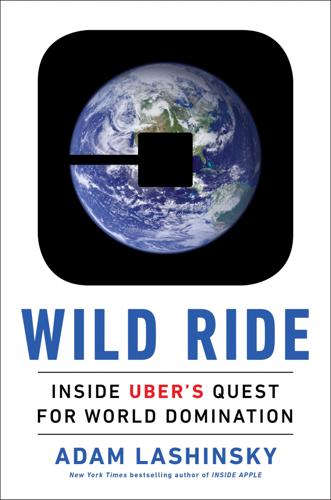
Wild Ride: Inside Uber's Quest for World Domination
by
Adam Lashinsky
Published 31 Mar 2017
This all felt quaintly futuristic in 2013. Still, the one company that could trounce Uber by creating a taxi-like service was already developing a self-driving car, seemingly on a whim. It was a tech powerhouse with vast resources that had already created one of the best digital street-mapping systems in the world. And that company, Google, was on the verge of making a major investment in Uber. And yet, these were still early days for self-driving cars. The concept largely resided in the labs of robotics departments of engineering schools. When Kalanick was first able to check under the hood of Google’s autonomous program, he wasn’t the least bit impressed.
…
When Kalanick was first able to check under the hood of Google’s autonomous program, he wasn’t the least bit impressed. In preparation for a meeting with Google CEO Larry Page, Kalanick was invited to take a ride in one of Google’s self-driving cars, which were tooling around the company’s Mountain View, California, campus. Such rides had become a staple for visiting dignitaries, kind of like a trip to the Great Wall of China or a stroll down the empty street of a movie set. If you were important enough, you were offered a ride in a Google self-driving car. It took more than razzle-dazzle to impress Kalanick, however, and for all the gee-whiz promise of Google’s bold technological experiment, he was underwhelmed.
…
Several years after the DARPA Grand Challenge, Larry Page and Sergey Brin decided they wanted to build a self-driving car. Never mind that it had little to do with Google’s information-quest mission. It was “moonshot” technology they wanted to advance. They persuaded Thrun to leave Stanford in 2010 to help start an in-house research arm called Google X. The group would go on to develop diverse technology such as antiaging drugs and computers that could be printed on eyeglasses and contact lenses. Its first project would be a self-driving car. Thrun helped develop software called Street View and sent cars driven by Google engineers onto city streets to map everything from street signs to the placement of barriers.

AI Superpowers: China, Silicon Valley, and the New World Order
by
Kai-Fu Lee
Published 14 Sep 2018
Every one of these downside risks presents thorny ethical questions. How should we balance the livelihoods of millions of truck drivers against the billions of dollars and millions of hours saved by autonomous vehicles? What should a self-driving car “optimize for” in situations where it is forced to choose which car to crash into? How should an autonomous vehicle’s algorithm weigh the life of its owner? Should your self-driving car sacrifice your own life to save the lives of three other people? These are the questions that keep ethicists up at night. They’re also questions that could hold up the legislation needed for autonomous-vehicle deployment and tie up AI companies in years of lawsuits.
…
CHINA’S “TESLA” APPROACH When managing a country of 1.39 billion people—one in which 260,000 people die in car accidents each year—the Chinese mentality is that you can’t let the perfect be the enemy of the good. That is, rather than wait for flawless self-driving cars to arrive, Chinese leaders will likely look for ways to deploy more limited autonomous vehicles in controlled settings. That deployment will have the side effect of leading to more exponential growth in the accumulation of data and a corresponding advance in the power of the AI behind it. Key to that incremental deployment will be the construction of new infrastructure specifically made to accommodate autonomous vehicles. In the United States, in contrast, we build self-driving cars to adapt to our existing roads because we assume the roads can’t change.
…
“the best company”: April Glaser, “DJI Is Running away with the Drone Market,” Recode, April 14, 2017, https://www.recode.net/2017/4/14/14690576/drone-market-share-growth-charts-dji-forecast. 1.5 million miles: Fred Lambert, “Google’s Self-Driving Car vs Tesla Autopilot: 1.5M Miles in 6 Years vs 47M Miles in 6 Months,” Electrek, April 11, 2016, https://electrek.co/2016/04/11/google-self-driving-car-tesla-autopilot/. $583 billion: “Xiong’an New Area: China’s Latest Special Economic Zone?” CKGSB Knowledge, November 8, 2017, http://knowledge.ckgsb.edu.cn/2017/11/08/all-articles/xiongan-china-special-economic-zone/. 6.

Genius Makers: The Mavericks Who Brought A. I. To Google, Facebook, and the World
by
Cade Metz
Published 15 Mar 2021
That December, while visiting his parents back in Toronto during the holiday break, he’d received an email from a woman named Anelia Angelova, who wanted help with the Google self-driving car. She didn’t actually work on the self-driving car. She worked with Krizhevsky at Google Brain. But she knew the lab’s ongoing research in computer vision—an extension of Krizhevsky’s efforts at the University of Toronto—would remake the way the company built its autonomous vehicles. The Google self-driving car project, known inside the company as Chauffeur, was nearly five years old. That meant Google had spent nearly five years building autonomous vehicles without help from deep learning.
…
There, he did what he’d wanted to do at Microsoft: build a self-driving car. The company launched its project years after Google, but Lu was sure it would put cars on the road far faster than its American rival. This wasn’t because Baidu had better engineers or better technology. It was because Baidu was building its car in China. In China, government was closer to industry. As Baidu’s chief operating officer, he was working with five Chinese municipalities to remake their cities so that they could accommodate the company’s self-driving cars. “There is no question in my mind this will get commercialized way sooner in China than in the United States.
…
It was increasingly obvious, however, that this was, at best, a partial solution. For years, companies like Google and Uber had promised that self-driving cars would soon be on the roads, shuttling everyday people across cities in the United States and abroad. But even the popular press began to realize these claims were grossly exaggerated. Although deep learning had significantly improved their ability to recognize people, objects, and signs on the road—and accelerated their ability to predict events and plan routes forward—self-driving cars were still a long way from dealing with the chaos of the daily commute with the same agility as people.
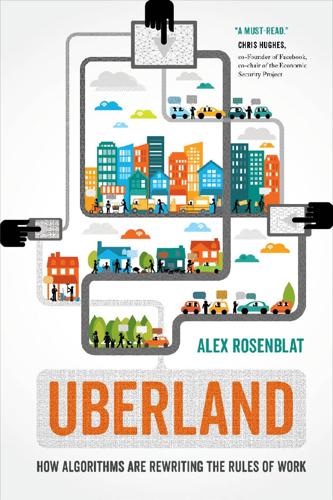
Uberland: How Algorithms Are Rewriting the Rules of Work
by
Alex Rosenblat
Published 22 Oct 2018
It offered a flimsy premise, that its particular technology was simply not subject to the rules the DMV had developed.14 The most important part of Uber’s encounter with the California DMV was the company’s rejection of the government’s authority on principle. Citing Tesla’s autopilot technology as an example of self-driving-car technology that doesn’t require a permit, Uber argued that the testing permits the DMV devised for self-driving cars didn’t apply to Uber’s self-driving cars because they were, in fact, not yet capable of autonomous driving without a human overseer. Anthony Lewandowski, Uber’s lead engineer on self-driving cars (who was accused of stealing Google’s self-driving Internet protocol when he left and came to Uber), announced, “We cannot in good conscience sign up to regulation for something we’re not doing.”15 Uber directly contravened the law with no remorse, and with no real impact.
…
For context: Uber provided these comments to me and my coauthor Ryan Calo as part of our fact-checking effort in preparation for our law review article, “The Taking Economy: Uber, Information and Power.” 14. Sam Levin, “Uber Admits to Self-Driving Car ‘Problem’ in Bike Lanes as Safety Concerns Mount,” The Guardian, December 19, 2016, www.theguardian.com/technology/2016/dec/19/uber-self-driving-cars-bike-lanes-safety-san-francisco. 15. Julia Carrie Wong, “California Threatens Legal Action against Uber Unless It Halts Self-Driving Cars,” The Guardian, December 16, 2016, www.theguardian.com/technology/2016/dec/16/uber-defies-california-self-driving-cars-san-francisco. 16. Mike Isaac (@Mikeisaac) wrote, “The state attorney generals office is not happy with Uber.”
…
Twitter, December 16, 2016, https://twitter.com/MikeIsaac/status/809936567078965248. 17. Marisa Kendall, “Uber Sends Self-Driving Cars to Arizona after Failed San Francisco Pilot,” Mercury News, December 23, 2016, www.mercurynews.com/2016/12/22/uber-ships-self-driving-cars-to-arizona-after-failed-san-francisco-pilot/. 18. Selena Larson, “Arizona Suspends Uber’s Self-Driving Car Tests after Fatal Crash,” CNN Tech, March 27, 2018, http://money.cnn.com/2018/03/26/technology/arizona-suspends-uber-self-driving-cars/index.html. 19. Oliver Laughland, Jessica Glenza, Steven Thrasher, and Paul Lewis, “‘We Can’t Breathe’: Eric Garner’s Last Words Become Protestors’ Rallying Cry,” The Guardian, December 4, 2014, www.theguardian.com/us-news/2014/dec/04/we-cant-breathe-eric-garner-protesters-chant-last-words. 20.

Road to Nowhere: What Silicon Valley Gets Wrong About the Future of Transportation
by
Paris Marx
Published 4 Jul 2022
Part One—Understanding Uber’s Bleak Operating Economics,” Naked Capitalism (blog), November 30, 2016, Nakedcapitalism.com. 25 Ibid. 26 Anthony Ha, “California Regulator Passes First Ridesharing Rules, a Big Win for Lyft, Sidecar, and Uber,” TechCrunch, September 19, 2013, Techcrunch.com. 27 Ken Jacobs and Michael Reich, “The Uber/Lyft Ballot Initiative Guarantees Only $5.64 an Hour,” UC Berkeley Labor Center, October 21, 2019, Laborcenter.berkeley.edu. 28 Wilfred Chan, “Can American Labor Survive Prop 22?,” Nation, November 10, 2020, Thenation.com. 5. Self-Driving Cars Did Not Deliver 1 James Niccolai, “Self-driving Cars a Reality for ‘Ordinary People’ within 5 Years, Says Google’s Sergey Brin,” Computer World, September 25, 2012, Computerworld.com. 2 John Paczkowski, “Google’s Self-Driving Cars Now Legal in California,” All Things D, September 25, 2012, Allthingsd.com. 3 Nicholas Carlson, “Uber Is Planning for a World Without Drivers—Just a Self-Driving Fleet,” Business Insider, May 28, 2014, Businessinsider.com. 4 Kara Swisher, “Self-Driving into the Future: Full Code Conference Video of Google’s Sergey Brin,” Recode, June 11, 2014, Vox.com. 5 Ibid. 6 Adrienne LaFrance, “Your Grandmother’s Driverless Car,” Atlantic, June 29, 2016, Theatlantic.com. 7 Doc Quigg, “Reporter Rides Driverless Car,” Press-Courier, June 7, 1960, News.google.com. 8 “A Brief History of Autonomous Vehicle Technology,” Wired, n.d., Wired.com. 9 Robert D.
…
Norton, Fighting Traffic: The Dawn of the Motor Age in the American City, MIT Press, 2008. 14 Kelcie Ralph et al., “Editorial Patterns in Bicyclist and Pedestrian Crash Reporting,” Transportation Research Record: Journal of the Transportation Research Board 2673:2, 2019. 15 Russell Brandom, “Self-driving Cars Are Headed toward an AI Roadblock,” Verge, July 3, 2018, Theverge.com. 16 Eric A. Taub, “How Jaywalking Could Jam Up the Era of Self-Driving Cars,” New York Times, August 1, 2019, Nytimes.com. 17 Ibid. 18 Matthew Sparkes, “Should We All Wear Sensors to Avoid Being Run Over by Driverless Cars?,” New Scientist, March 5, 2021, Newscientist.com. 19 Edward Taylor, “Volkswagen Says Driverless Vehicles Have Limited Appeal and High Cost,” Reuters, March 5, 2019, Reuters.com. 20 Daisuke Wakabayashi, “Uber’s Self-Driving Cars Were Struggling Before Arizona Crash,” New York Times, March 23, 2018, Nytimes.com. 21 “Collision between Vehicle Controlled by Developmental Automated Driving System and Pedestrian, Tempe, Arizona, March 18, 2018,” Highway Accident Report NTSB/HAR-19/03 prepared by the National Transportation Safety Board, 2019, pp. 43–5, Ntsb.gov. 22 Ibid. 23 Ibid. 24 Lora Kolodny, “Tesla Faces Another NHTSA Investigation after Fatal Driverless Crash in Spring, Texas,” CNBC, April 19, 2021, Cnbc.com. 25 Shara Tibken, “Waymo CEO: Autonomous Cars Won’t Ever Be Able to Drive in All Conditions,” CNET, November 13, 2018, Cnet.com. 26 A.
…
Brin pitched a set of ugly smart glasses called Google Glass as the next big consumer tech product in 2012, but they were a flop. However, his vision for an urban future where self-driving cars would take over streets around the world initially seemed like it might avoid the same fate. In September 2012, then California governor Jerry Brown appeared alongside Brin at Google’s headquarters in Silicon Valley to sign a law aimed at accelerating the testing of autonomous vehicles. At the event, Brin told reporters that he believed “self-driving cars are going to be far safer than human-driven cars.”1 On top of that, the vehicles would reduce traffic congestion, improve fuel efficiency, be prepared for any eventuality that could arise, and better serve those “underserved by the current transportation system.”
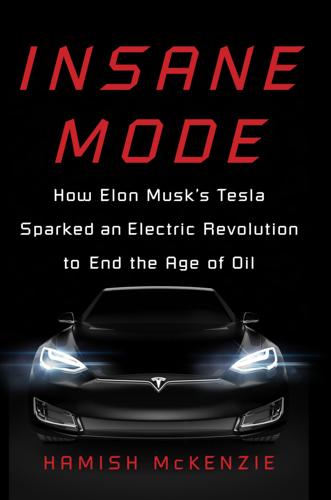
Insane Mode: How Elon Musk's Tesla Sparked an Electric Revolution to End the Age of Oil
by
Hamish McKenzie
Published 30 Sep 2017
For the first applications of its technology, Uisee trialed self-driving vehicles for cargo and passengers at the international airports in Singapore and Guangzhou, in southern China. China could certainly use self-driving cars. More than seven hundred people are killed on its roads a day, according to the World Health Organization. In a phone interview two days before I met Wu, Wang Jing, the head of Baidu’s autonomous driving unit, said Baidu believed self-driving cars could reduce the death toll on China’s roads by 90 percent—since that’s the proportion of accidents caused by human error. Self-driving cars would also save time, Wang said. A commute in a megacity like Beijing or Shanghai commonly takes an hour or two, but most cars on the road have only one occupant.
…
He also argued that China provides the ideal testing conditions for autonomous vehicles, because the roads are so crowded and driving behaviors are so erratic, presenting a panoply of challenges for the cars’ supercomputers to contend with—and ultimately overcome. “Technically, if you can make it work in China, you can make it work anywhere.” A day before my call with Wang, Baidu had announced a partnership with Wuhu, a city of nearly four million people in Anhui province, to start a self-driving-car pilot program in the central city. For the first three years, self-driving cars, vans, and buses would be introduced to downtown areas purely for testing. Beyond three years, the plan is to start commercializing the program and allowing passengers in the vehicles. Ultimately, the program would spread across the whole city. Wang cited Wuhu as an example of how regulation in China might actually work in favor of autonomous vehicles.
…
There’s Tesla, of course, with its autonomous electric semitruck, and other electric truck start-ups Nikola, Thor, and Starsky Robotics. A crack team of engineers from Google’s self-driving car team left the company to establish the San Francisco–based Otto, which said in August 2016 that it was moving “with urgency” to get commercially ready autonomous trucks on the road within two years. Two days later, Uber announced that it had acquired Otto. The company’s cofounder Anthony Levandowski—a pioneering engineer on Google’s self-driving car team—would head up the ride-sharing company’s autonomous vehicle efforts, and Otto would also lead Uber’s efforts in trucking.

The Deep Learning Revolution (The MIT Press)
by
Terrence J. Sejnowski
Published 27 Sep 2018
Rather than follow the traditional AI approach by writing a computer program to anticipate every contingency, Thrun drove Stanley around the desert (figure 1.2), and it learned for itself to predict how to steer based on sensory inputs from its vision and distance sensors. Thrun later founded Google X, a skunk works for high-tech projects, where the technology for self-driving cars was developed further. Google’s self-driving cars have since logged 3.5 million miles driving around the San Francisco Bay Area. Uber has deployed a fleet of self-driving cars in Pittsburgh. Apple is moving into self-driving cars to extend the range of Figure 1.1 Sebastian Thrun with Stanley, the self-driving automobile that won the 2005 DARPA Grand Challenge. This breakthrough jump-started a technological revolution in transportation.
…
General Motors paid $1 billion for Cruise Automation, a Silicon Valley start-up that is developing driverless technology, and invested an additional $600 million in 2017 in research and development.2 In 2017, Intel purchased Mobileye, a company that specializes in sensors and computer vision for self-driving cars, for $15.3 billion dollars. The stakes are high in the multitrillion-dollar transportation sector of the economy. Self-driving cars will soon disrupt the livelihoods of millions of truck and taxi drivers. Eventually, there will be no need to own a car in a city when a self-driving car can show up in a minute and take you safely to your destination, without your having to park it. The average car today is only used 4 percent of the time, which means it needs to be parked somewhere 96 percent of the time. But because self-driving cars can be serviced and parked outside cities, vast stretches of city land now covered with parking lots can be repurposed for more productive uses.
…
Waymo, the self-driving spin-off from Google, has invested $1 billion over 8 years and has constructed a secretive testing facility in California’s central valley with a 91-acre fake town, including fake bicycle riders and fake auto breakdowns.6 The goal is to broaden the training data to include special and unusual circumstances, called edge cases. Rare driving events that occur on highways often lead to accidents. The difference with self-driving cars is that when one car experiences a rare event, the learning experience will propagate to all other self-driving cars, a form of collective intelligence. Many similar test facilities are being constructed by other self-driving car companies. These create new jobs that did not exist before, and new supply chains for the sensors and lasers that are needed to guide the cars.7 Self-driving cars are just the most visible manifestation of a major shift in an economy being driven by information technology (IT).
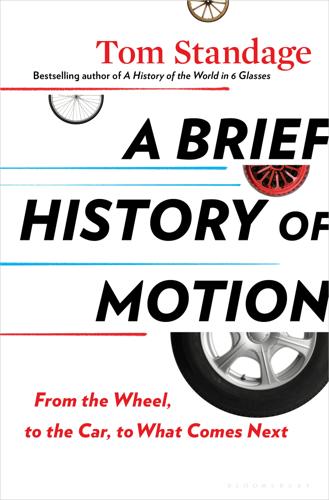
A Brief History of Motion: From the Wheel, to the Car, to What Comes Next
by
Tom Standage
Published 16 Aug 2021
B., here DuPont chemical company, and GM DuCo paints, here Durant, William C., here, here Egyptians, and wheeled vehicles, here, here, here Electric Vehicle Company, here electric vehicles battery technology and, here, here capacity of electrical grid and, here car-related issues not resolved by, here and climate change, effect on, here issues with raw materials for, here reduced environmental impact of, here of 21st century, here and zero-carbon electricity sources, here, here electric vehicles, in late 19th and early 20th centuries advantages and disadvantages of, here competition with gas and steam, here, here, here fleet vehicles, here marketing to women, here, here in Paris–Bordeaux race (1895), here, here in Paris–Rouen race (1894), here sales, here streetcars, here taxicabs, here, here Electrobat electric taxi, here ethanol as motor fuel, here advantages and disadvantages of, here, here, here alcohol taxes and, here, here early vehicles using, here, here and engine knocking, here failure to catch on, here, here Europe anti-car traffic laws in, here coaches as status symbols in, here, here early cities, design of, here early traffic laws and rules, here and invention of wheel, here transport for high-status persons in, here EV1 electric car, here fast food and assembly line food preparation, here car culture and, here declining popularity of, here largest chains, here pioneers of, here and standardization of chains, here, here Ford, Henry on assembly line production, here, here on ethanol fuels, here interest in electric cars, here, here on Model T, here, here and ride-hailing services, here Fordism, here Ford Model T advertisements for, here, here as affordable car for all, here, here assembly line production, here end of production, here and ethanol as motor fuel, here innovative design of, here as jitneys, here price decline with increased production, here, here sales of, here unchanging design of, as liability, here, here, here victory in New York to Seattle race (1909), here Ford Motor Company adoption of GM innovations, here early models, here, here expansion of brand (marque) offerings, here high pay of assembly line workers, here and installment payment plans, rejection of, here international expansion, here and self-driving cars, here and turn to sale of mobility services, here future of the car anti-car books, history of, here calls for end of ownership, here impending demise, here, here, here, here increasing urbanization and, here internet and, here, here modern alternatives to, here, here signs of declining interest, here future of transportation lessons from history of motion, here technological innovation and, here, here see also mobility as a service (MaaS) gasoline as fuel concerns about limited supplies, here, here lead additives to reduce knocking, here as little-used byproduct of kerosene manufacture before gas cars, here OPEC oil embargo of 1973–74 and, here gas stations, drive-in, as innovation, here Gaugamela, Battle of (311 B.C.E.), here General Motors, here car loans, introduction of, here, here carmakers acquired by, here closed body designs, adoption of, here and color choice as selling point, here, here electric cars of 1990s, here ethanol fuels and, here founding of, here growth into world’s largest company, here influence on business practices, here, here introduction of style changes to create “dynamic obsolescence,” here, here and lead as gas additive, here multiple brand (marque) strategy of, here and self-driving cars, here, here, here strategy vs. Ford, here, here, here, here and streetcar lines, purchase of, here surpassing of Ford, here and turn to sale of mobility services, here and used car trades, introduction of, here and World’s Fair Futurama exhibit, here, here General Motors Acceptance Corporation, here, here Good Road Show (Chicago, 1922), here Good Roads movement (U.S.), here Google, self-driving car program (Waymo), here, here, here, here, here Grand Challenge races for self-driving cars, here Gruen, Victor, here Highway Act of 1956, here highways car companies’ support for, here in cities, opposition to, here first parkways in New York City, here, here history of concept, here postwar construction boom, here as supposed remedy for traffic congestion, here, here, here urban, and poor neighborhoods, here and urban planning, here, here, here, here, here Hollingshead, Richard, here horsecars (trams), here, here horse-drawn vehicles in ancient Rome, here, here and coach fad, here in Europe, as status symbols, here, here limited use in medieval world, here use by kings and gods, here, here, here, here use in warfare, here, here, here, here See also chariots; coaches; wheeled vehicles, early horse-drawn vehicles in cities popularity of coaches and, here problems caused by, here, here, here, here railroads’ increase of demand for, here replacement by cars, here, here See also horsecars (trams); omnibus service horseless carriages (runabouts), here horses domestication of, here as transport for high-status men, here use in warfare, here, here, here Howard, Ebenezer, here, here internal combustion engine cars and engine knocking, here first models of, here, here in Paris–Bordeaux race (1895), here, here in Paris–Rouen race (1894), here, here, here, here superiority to other early designs, here, here, here internal combustion engines bicycle as first vehicle powered by, here Daimler-Maybach engines, here, here, here, here, here, here invention and early uses, here internet and new transportation options, here replacement of car for many uses, here, here internet of motion, here see also mobility as a service (MaaS) Iranian Revolution, and oil shock of 1979, here jaywalking, campaign against, here jitneys, here, here Kadesh, Battle of (1274 B.C.E.), here, here King, Martin Luther, Jr., here League of Nations, and traffic standards, here Le Corbusier, here, here Levassor, Émile, here, here, here, here Levitt, William, here, here lidar, in self-driving cars, here Ligroin, as early fuel, here, here Lime, here, here lithium-ion batteries, here, here, here, here Ljubljana Marshes Wheel, here, here, here London carriageway in, here, here and coach traffic, here early omnibus service in, here London Steam Carriage, here, here Lyft, here, here, here, here MaaS.
…
Since then they and other participants in the various DARPA contests have gone on to work on autonomous-vehicle technology at Google, Uber, Tesla, and a host of start-ups, from Aurora to Zoox. Prototype self-driving cars first took to America’s public roads in 2012; they have since traveled millions of miles. Just as the Paris–Rouen race provided a glimpse of the future of horseless carriages, the DARPA challenges did the same for driverless cars. But predictions that self-driving “robotaxis” would be ubiquitous by 2020 proved overly optimistic. Autonomous vehicles (AVs), as self-driving cars are known in the industry, can do extraordinary things, such as navigating busy downtown streets and handling complex junctions with multiple traffic lights.
…
Ride-hailing apps can summon a taxi with a few taps. App-based car-rental and car-sharing services provide access to a vehicle for a few hours or days. Bikes and scooters can be found on street corners in many cities for rental by the minute. And even more radical approaches are coming over the horizon. Proponents of autonomous or self-driving cars predict that summoning a robotaxi when needed will eventually be cheaper than car ownership, and that such vehicles could reduce traffic congestion and road deaths. More ambitious still are the start-ups working on flying cars—giant aerial drones that are large enough to carry people. Revisiting the history of the car, and how it changed the world, can provide a roadmap to help make sense of these new transport options, by showing how social, political, and technological forces interact to produce both expected and unexpected outcomes.

Human Compatible: Artificial Intelligence and the Problem of Control
by
Stuart Russell
Published 7 Oct 2019
In such cases—as in the examples given above—the AI system will often find an optimal solution that sets the thing you do care about, but forgot to mention, to an extreme value. So, if you say to your self-driving car, “Take me to the airport as fast as possible!” and it interprets this literally, it will reach speeds of 180 miles per hour and you’ll go to prison. (Fortunately, the self-driving cars currently contemplated won’t accept such a request.) If you say, “Take me to the airport as fast as possible while not exceeding the speed limit,” it will accelerate and brake as hard as possible, swerving in and out of traffic to maintain the maximum speed in between.
…
Machines designed in this way will defer to humans: they will ask permission; they will act cautiously when guidance is unclear; and they will allow themselves to be switched off. While these initial results are for a simplified and idealized setting, I believe they will survive the transition to more realistic settings. Already, my colleagues have successfully applied the same approach to practical problems such as self-driving cars interacting with human drivers.1 For example, self-driving cars are notoriously bad at handling four-way stop signs when it’s not clear who has the right of way. By formulating this as an assistance game, however, the car comes up with a novel solution: it actually backs up a little bit to show that it’s definitely not planning to go first.
…
Millions of students have taken online AI and machine learning courses, and experts in the area command salaries in the millions of dollars. Investments flowing from venture funds, national governments, and major corporations are in the tens of billions of dollars annually—more money in the last five years than in the entire previous history of the field. Advances that are already in the pipeline, such as self-driving cars and intelligent personal assistants, are likely to have a substantial impact on the world over the next decade or so. The potential economic and social benefits of AI are vast, creating enormous momentum in the AI research enterprise. What Happens Next? Does this rapid rate of progress mean that we are about to be overtaken by machines?
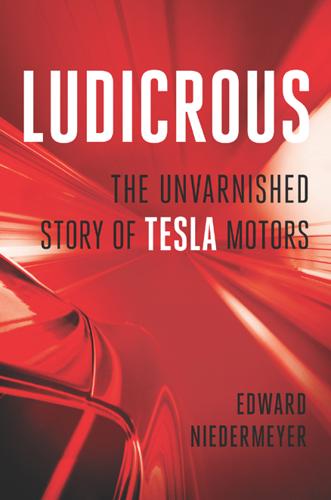
Ludicrous: The Unvarnished Story of Tesla Motors
by
Edward Niedermeyer
Published 14 Sep 2019
There was more than friendship behind Google’s interest in Tesla. Since 2009, Google had been developing a technological play that held even more transformative potential for the auto industry than Tesla’s batteries and electric motors: self-driving car technology. Headed up by Sebastian Thrun, the German innovator and computer scientist who had led a Stanford University team to victory in the 2005 Defense Advanced Research Projects Agency Grand Challenge, Google’s self-driving car program (which would be spun off into a company called Waymo in December 2016) was the undisputed leader in a technology that threatened to make EVs look like old news. Autonomous-drive technology is actually a collection of technologies, each serving different aspects of the driving task.
…
Some of the core challenges of autonomous drive are related to the work Google had done for its map products, which involved multisensor scanning to create realistic models of roadways and machine learning to derive turn-by-turn directions from them. But the near-infinite complexity of traffic made it an order of magnitude more challenging, and until 2013, Google’s self-driving car program was widely seen as a speculative moon shot funded by its massive ad revenues. The first public clue that Google’s self-driving cars were moving beyond mere experimentation came in early May 2013, when Musk revealed that Tesla was discussing possible collaboration on autonomous-drive technology with the search giant. But, in typical Musk fashion, collaboration with Google was only one option, and Tesla would go its own way if necessary.
…
Silicon Valley’s “move fast and break stuff” ethos, which fostered innovation in non-safety-critical software, was beginning to look like a poor approach to developing self-driving car systems, which hold the power of life and death. Using a sensor suite designed for a driver-assist system came across as the ultimate example of Silicon Valley’s “minimum viable product” paradigm, applied not to a smartphone app but to an activity that is a leading cause of death. Any plan to simply update software whenever an underbaked autonomous-drive system runs into a situation it can’t handle has to assume that a number of those situations will involve a customer dying. The challenge of self-driving car development was not simply convincing the public that a car could “drive itself,” which could theoretically be achieved with as little hardware as a brick placed on the accelerator, but by making a car drive itself safely.

WTF?: What's the Future and Why It's Up to Us
by
Tim O'Reilly
Published 9 Oct 2017
There will be significant costs to achieve the kind of availability for passengers that Uber or Lyft currently have using centrally owned self-driving cars. Remember that the total number of cars in the system must be sufficient to satisfy peak demand. If the company itself owns the self-driving cars, and uses them to compete with its human drivers for the busiest, most lucrative times, it risks making them less willing to participate. If the goal is truly to make transportation as reliable as running water or electricity, rather than simply to maximize company profit, these companies should deploy self-driving cars not to compete with their drivers but to supplement them, providing services in areas that are currently not well served, even though those cars might be utilized less often.
…
Even when Siri’s attempts to understand human speech failed, it was remarkable that we were now talking to our devices and expecting them to respond. Siri even became the best friend of one autistic boy. The year 2011 was also the year that Google announced that its self-driving car prototype had driven more than 100,000 miles in ordinary traffic, a mere six years after the winner of the DARPA Grand Challenge for self-driving cars had managed to go only seven miles in seven hours. Self-driving cars and trucks have now taken center stage, as the media wrestles with the possibility that they will eliminate millions of human jobs. This fear, that this next wave of automation will go much further than the first industrial revolution in making human labor superfluous, is what makes many say “this time is different” when contemplating technology and the future of the economy.
…
For example, Uber and Lyft have made much of their plans to incorporate self-driving cars into their future. With a shallow understanding of their business, you might quickly conclude that the reason to do this is that eliminating the 70–80% of the fare that is paid out to drivers will make these businesses more profitable. With the aid of the business model map I outlined above, you’d ask different questions. If the company currently depends on a liquid marketplace of drivers who bring their own cars and work only when they believe they can make a decent wage, what happens when the platforms introduce self-driving cars into the mix? They potentially destabilize their own marketplace.
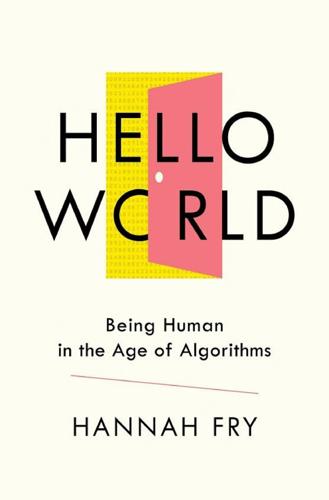
Hello World: Being Human in the Age of Algorithms
by
Hannah Fry
Published 17 Sep 2018
Alex Davies, ‘An oral history of the DARPA Grand Challenge, the grueling robot race that launched the self-driving car’, Wired, 8 March 2017, https://www.wired.com/story/darpa-grand-challenge-2004-oral-history/. 9. ‘Desert race too tough for robots’, BBC News, 15 March, 2004, http://news.bbc.co.uk/1/hi/technology/3512270.stm. 10. Davies, ‘An oral history of the DARPA Grand Challenge’. 11. Denise Chow, ‘DARPA and drone cars: how the US military spawned self-driving car revolution’, LiveScience, 21 March 2014, https://www.livescience.com/44272-darpa-self-driving-car-revolution.html. 12. Joseph Hooper, ‘From Darpa Grand Challenge 2004 DARPA’s debacle in the desert’, Popular Science, 4 June 2004, https://www.popsci.com/scitech/article/2004-06/darpa-grand-challenge-2004darpas-debacle-desert. 13.
…
Project Report (Bristol: University of the West of England, June 2016), http://eprints.uwe.ac.uk/29167/1/Venturer_WP5.2Lit%20ReviewHandover.pdf. 60. Langewiesche, ‘The human factor’. 61. Evan Ackerman, ‘Toyota’s Gill Pratt on self-driving cars and the reality of full autonomy’, IEEE Spectrum, 23 Jan. 2017, https://spectrum.ieee.org/cars-that-think/transportation/self-driving/toyota-gill-pratt-on-the-reality-of-full-autonomy. 62. Julia Pyper, ‘Self-driving cars could cut greenhouse gas pollution’, Scientific American, 15 Sept. 2014, https://www.scientificamerican.com/article/self-driving-cars-could-cut-greenhouse-gas-pollution/. 63. Raphael E. Stern et al., ‘Dissipation of stop-and-go waves via control of autonomous vehicles: field experiments’, arXiv: 1705.01693v1, 4 May 2017, https://arxiv.org/abs/1705.01693. 64.
…
Jean-François Bonnefon, Azim Shariff and Iyad Rahwan (2016), ‘The social dilemma of autonomous vehicles’, Science, vol. 35, 24 June 2016, DOI 10.1126/science.aaf2654; https://arxiv.org/pdf/1510.03346.pdf. 36. All quotes from Paul Newman are from private conversation. 37. Naaman Zhou, ‘Volvo admits its self-driving cars are confused by kangaroos’, Guardian, 1 July 2017, https://www.theguardian.com/technology/2017/jul/01/volvo-admits-its-self-driving-cars-are-confused-by-kangaroos. 38. All quotes from Jack Stilgoe are from private conversation. 39. Jeff Sabatini, ‘The one simple reason nobody is talking realistically about driverless cars’, Car and Driver, Oct. 2017, https://www.caranddriver.com/features/the-one-reason-nobody-is-talking-realistically-about-driverless-cars-feature. 40.
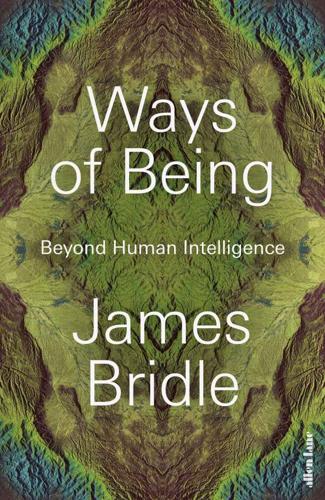
Ways of Being: Beyond Human Intelligence
by
James Bridle
Published 6 Apr 2022
That mind was perched precariously on the passenger seat; I sat at the wheel, still in control, for now. All this took place a few years ago, in the winter of 2017, when I decided to try and build myself a self-driving car. And although it never – quite – drove itself, it did take me to some pretty interesting places. The idea of a self-driving car is fascinating to me. Not really for its capabilities, but for its place in our imagination. The self-driving car is one of those technologies which in the space of just a few years has gone from space-age, ‘Life in the Twenty-First Century’ fantasy to humdrum reality, without ever passing through a period of critical reflection or assimilation.
…
In transferring this analogy to the world of AI, it seems evident that thus far we have mostly created domesticated machines of the first kind, we have begun to corral a feedlot of the second, and we live in fear of unleashing the third. Where does my self-driving car sit in this taxonomy? It’s mostly ‘pet’ – a domesticated machine under my control – but it’s also productive, in harness, a working animal; and, because of my insistence that it goes where it pleases, it’s a little wild, a little unpredictable. With careless handling, the self-driving car might be considered among the most damaging applications of AI. Not only does it contribute directly to the destruction of the planet through material extraction and carbon emissions – at least, until we get fully solar, sustainable versions – but it also steals from us the very real, if guilty, pleasure of driving.
…
But even this intentionally limited proposal was met with opposition, in the form of an open letter, signed by 150 experts in medicine, robotics, AI and ethics, calling the plans ‘inappropriate’ and ‘ideological, nonsensical and non-pragmatic’.18 The European Parliament resolution, however, was a response to a very real problem: that of a legal lack of clarity concerning autonomous systems which have real-world impacts on human lives. Self-driving cars are one such example; autonomous weapons platforms like military drones and robotic sentries are others. If a self-driving car runs someone over – as has already happened – the law remains uncertain as to where the blame should lie, and legal frameworks are urgently required to handle this situation. Likewise, while military drones, missiles and machine-gun posts remain for now under the control of human operators, they will soon operate fully autonomously, with consequences which are both predictable and unpredictable – but almost certainly horrifying.

Rise of the Robots: Technology and the Threat of a Jobless Future
by
Martin Ford
Published 4 May 2015
Tom Simonite, “Data Shows Google’s Robot Cars Are Smoother, Safer Drivers Than You or I,” Technology Review, October 25, 2013, http://www.technologyreview.com/news/520746/data-shows-googles-robot-cars-are-smoother-safer-drivers-than-you-or-i/. 10. See ibid. for Chris Urmson’s comments. 11. “The Self-Driving Car Logs More Miles on New Wheels” (Google corporate blog), August 7, 2012, http://googleblog.blogspot.co.uk/2012/08/the-self-driving-car-logs-more-miles-on.html. 12. As quoted in Heather Kelly, “Driverless Car Tech Gets Serious at CES,” CNN, January 9, 2014, http://www.cnn.com/2014/01/09/tech/innovation/self-driving-cars-ces/. 13. For US accident statistics, see http://www.census.gov/compendia/statab/2012/tables/12s1103.pdf; for global accident statistics, see http://www.who.int/gho/road_safety/mortality/en/. 14.
…
Most people who have given serious thought to the optimal role of self-driving cars seem to agree that, at least in densely populated areas, they are likely to be a shared resource. This has been Google’s intent from the start. As Google co-founder Sergey Brin explained to the New Yorker’s Burkhard Bilger, “[L]ook outside, and walk through parking lots and past multilane roads: the transportation infrastructure dominates. It’s a huge tax on the land.”15 Google hopes to smash the prevailing owner-operator model for the automobile. In the future, you’ll simply reach for your smart phone or other connected device and call for a self-driving car whenever you need it.
…
The Rise—and Stumble—of the MOOC Free Internet-based courses like those offered by edX are part of the trend toward massive open online courses—or MOOCs—that exploded into the public consciousness in the late summer of 2011, when two computer scientists at Stanford University, Sebastian Thrun and Peter Norvig, announced that their introductory artificial intelligence class would be available to anyone at no cost over the Internet. Both of the course’s instructors were celebrities in their field with strong ties to Google; Thrun had led the effort to develop the company’s self-driving cars, while Norvig was the director of research and co-author of the leading AI textbook. Within days of the announcement, more than 10,000 people had signed up. When John Markoff of the New York Times wrote a front-page article5 about the course that August, enrollment rocketed to more than 160,000 people from over 190 countries.
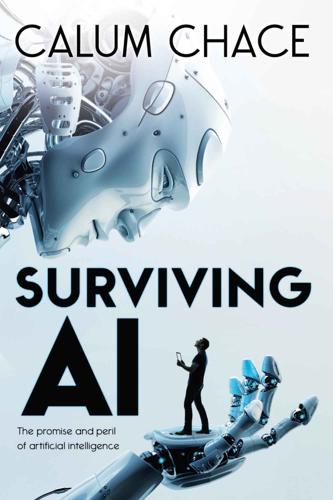
Surviving AI: The Promise and Peril of Artificial Intelligence
by
Calum Chace
Published 28 Jul 2015
Politicians worldwide have understood that they need to agree and implement policies and procedures to cope with the arrival of this technology. (The impetus to introduce self-driving cars is enormous. Around 1.2m lives are lost on the world’s roads each year and most of these deaths are due to driver error. Self-driving cars don’t get tired, distracted or drunk. Accidents are also a major cause of traffic congestion, so average journey times would be significantly reduced if most cars were self-driving. Car-sharing is expected to become more common, and parking should become much easier. There are always unforeseen consequences, of course.
…
Some of this would come from self-driving vehicles, which are likely to appear on our roads in significant numbers from 2017. Some 30 US cities will be experimenting with self-driving cars by the end of 2016, for instance. (22) There are 3.5 million truck drivers in the US alone, (23) 650,000 bus drivers (24) and 230,000 taxi drivers. (25) There are numerous hurdles to be overcome before all these jobs become vulnerable. At the time of writing, Google’s self-driving cars have travelled a million miles without causing an accident. As we saw in chapter 1 they are not perfect, but none of the challenges facing them look insurmountable: Google was recently awarded a patent for a system which can tell whether a cyclist is signalling a turn.
…
from intelligent algorithms which match adverts with readers and viewers, and it is busily looking for more and more new ways to exploit its world-leading expertise in AI in as many industries as it can manage. The huge collection of servers which comprise the distributed computing platform for the AI which drives the company’s numerous services is often called the Google Brain. Sometimes Google enters a new industry using home-grown talent, as with its famous self-driving cars, and with Calico, which is looking to apply Big Data to healthcare. Other times it acquires companies with the expertise not already found inside Google, or “acqui-hires” their key talent. Its rate of acquisition reached one company a week in 2010, and by the end of 2014 it had acquired 170 of them.
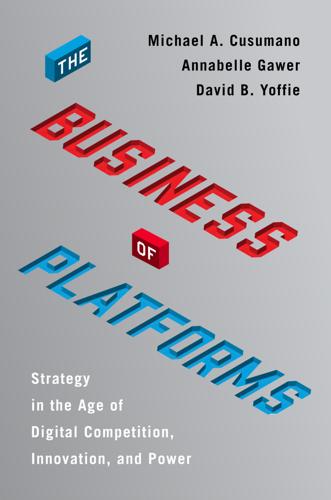
The Business of Platforms: Strategy in the Age of Digital Competition, Innovation, and Power
by
Michael A. Cusumano
,
Annabelle Gawer
and
David B. Yoffie
Published 6 May 2019
CHAPTER 7: LOOKING FORWARD: PLATFORMS AND THE FUTURE 1.Georgia Wells, “Snapchat Zigs Where Facebook Zags,” Wall Street Journal, June 14, 2018. 2.Khari Johnson, “Everything Amazon’s Alexa Learned to Do in 2017,” Venture Beat, December 29, 2017; Paul Cutsinger, “2017 Alexa Skills Kit Year in Review: More Than 100 New Products, Programs, Features, and Tools” January 5, 2018, https://developer.amazon.com/blogs/alexa/post/829a615b-301f-407c-96e7-6956fb988570/2017-alexa-skills-kit-year-in-review-more-than-100-new-products-programs-features-and-tools (accessed May 2, 2018); and Monica Chin, “Amazon Is Killing the Skill (as We Know It),” Tom’s Guide, September 13, 2018. 3.Jake Swearingen, “Amazon Could Give the Echo Dot Away and Still Make Money,” New York Magazine, January 3, 2018. 4.James Stables, “Google Assistant Aces Accuracy Study—but Alexa Is Catching Up Fast,” Ambient, April 30, 2018. 5.Rob Verger, “Someday, You Might Subscribe to a Self-Driving Taxi Service, Netflix-Style,” Popular Science, March 15, 2018. 6.Ibid. 7.Phil LeBeau, “General Motors Plans to Take On Ride-Sharing Services with Self-Driving Cars by 2019,” CNBC, November 30, 2018, https://www.cnbc.com/2017/11/30/gm-to-take-on-ride-sharing-services-with-self-driving-cars-by-2019.html (accessed June 2018). 8.Caitlin Huston, “Driverless Cars Could Cost 35 Cents per Mile for the Uber Consumer,” Marketwatch, September 19, 2016, https://www.marketwatch.com/story/demand-for-driverless-cars-could-boost-uber-to-2016-09-19 (accessed June 2018). 9.Christopher Mims, “How Self-Driving Cars Could End Uber,” Wall Street Journal, May 7, 2017. 10.Max Chafkin, “Uber’s First Self-Driving Fleet Arrives in Pittsburgh This Month,” Bloomberg, August 18, 2016. 11.See Lyft, “The Open Autonomous Era,” https://take.lyft.com/open-platform/ (accessed June 2018). 12.Mike Isaac, “Lyft Adds Ford to Its List of Self-Driving Car Partners,” New York Times, September 27, 2018, https://www.nytimes.com/2017/09/27/technology/lyft-ford-self-driving-cars.html?
…
Ultimately, we expect voice to be a classic platform battle, where the winner(s) will depend on who can build up the largest installed base of users, who can create the best ecosystem for producing innovative applications, and who (if anyone) can lock in their customer base, limit multi-homing in the future, and create a sufficiently compelling solution to reduce competition from niche players and differentiation in the market. RIDE SHARING AND SELF-DRIVING CARS: FROM PLATFORM TO SERVICE While AI will spawn a range of new platforms, it will also enable new capabilities that may destroy existing platforms. One of the most exciting AI applications has been the emergence of self-driving cars. Ironically, this new technology may replace some of the most widely used platforms in the world: Uber, Lyft, Didi Chuxing, and other ride-sharing businesses. Despite the strong cross-side network effects, the ride-sharing platform revolution could actually disappear.
…
Uber’s cofounder and then CEO Travis Kalanick stressed the importance of winning the race: “The minute it was clear to us that our friends in Mountain View [i.e., Google] were going to be getting in the ride-sharing space, we needed to make sure there is an alternative [self-driving car]. Because if there is not, we’re not going to have any business.” Kalanick added that developing a self-driving car “is basically existential for us.”10 Uber announced in November 2017 that it would buy 24,000 self-driving vehicles from Volvo, giving it a fleet to test and later deploy in an autonomous ride-hailing service. Lyft has taken a different approach.

New Laws of Robotics: Defending Human Expertise in the Age of AI
by
Frank Pasquale
Published 14 May 2020
Self-driving vehicles promise to eliminate many thousands of traffic fatalities each year. So the problem may seem easy at first glance. On the other hand, they would also put hundreds of thousands of paid drivers out of work. Does that harm entitle governments to ban or slow down the adoption of self-driving cars? Asimov’s three laws are not clear on such matters. Nor do they have much to say about a recent demand of self-driving car evangelists: that pedestrians be trained to act in ways that make it easier for self-driving vehicles to operate, and penalized if they fail to do so. These ambiguities and many more are why the statutes, regulations, and court cases affecting robotics and AI in our world are finer grained than Asimov’s laws.
…
Both law and norms will shape that new identity over time.64 None of these decisions should be made solely—or even predominantly—by the programmers and corporations developing algorithms for self-driving cars. They involve governance and participation by a much wider range of experts, ranging from urban-studies scholars to regulators to police and attorneys. Negotiations among affected parties are likely to be protracted—but that is the price of a democratic and inclusive transition toward new and better technology. And these are only a few of the ethical, legal, and social implications of a widespread transition to self-driving cars.65 Nevertheless, some futurists argue that AI obviates the need for professions.
…
Marc Canellas and Rachel Haga, “Unsafe at Any Level: The U.S. NHTSA’s Levels of Automation Are a Liability for Automated Vehicles,” Communications of the ACM 63, no. 3 (2020): 31–34. 65. Nor are the strictly technological challenges easy to address. Roberto Baldwin, “Self-Driving Cars are Taking Longer to Build Than Everyone Thought,” Car and Driver, May 10, 2020, https://www.caranddriver.com/features/a32266303/self-driving-cars-are-taking-longer-to-build-than-everyone-thought/. 66. AI Now Institute, AI Now 2019 Report, December 2019, 8, 45–47, https://ainowinstitute.org/AI_Now_2019_Report.pdf. 67. Henry Mance, “Britain Has Had Enough of Experts, says Gove,” Financial Times, June 3, 2016, https://www.ft.com/content/3be49734-29cb-11e6-83e4-abc22d5d108c. 68.
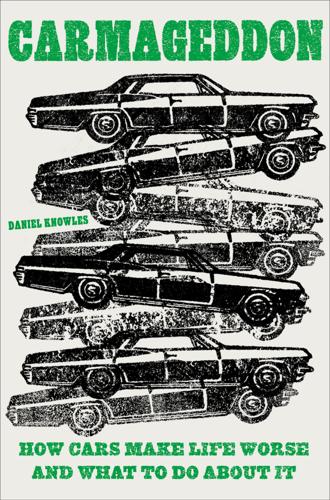
Carmageddon: How Cars Make Life Worse and What to Do About It
by
Daniel Knowles
Published 27 Mar 2023
And that is kind of the problem with self-driving cars. They are perhaps not pure bionic duckweed. Eventually, Google or Tesla or some other competitor may be able to map enough of the world, and improve the technology enough that you really will be able to hop into a car with nobody at the wheel in quite a few cities. That, however, is many years away. And in any case, when self-driving car advocates argue that their rise will mean that technologies such as trains will be made redundant, or that traffic will be solved, they are almost certainly wrong. Self-driving cars still take up space. And however brilliant the engineers designing them are, they will simply never work well in the congested, complicated big cities of the world.
…
Electric cars, for all their faults, are not bionic duckweed. They are very real bits of technology that do, on the important measure of carbon emissions at least, starkly improve the damage done by cars to the environment. But much else is. Chief among them is the idea of autonomous, “self-driving” cars. According to their boosters, self-driving cars are about to change the planet. In December 2021, Elon Musk told a conference hosted by the Wall Street Journal that they are “absolutely coming,” and “will be one of the biggest transformations ever in human civilization.” The idea is that when all cars are self-driving, they will be able to far more efficiently use the road space available, hugging each other like train cars.
…
Uber settled a lawsuit; Vasquez has been charged with negligent homicide, though she pleaded not guilty, and the trial is still pending. Some projects are still ongoing. You can take a Waymo taxi around a relatively smaller suburban part of Phoenix, Arizona, and unlike self-driving cars elsewhere, it does not have to have a driver. Phoenix is probably as perfect a city as you can develop for self-driving cars. It has 291 sunny days per year, which are less confusing to cameras than rainy or overcast days. It is also sprawling, with wide, fairly easy to navigate roads, with not many pedestrians or cyclists to have to navigate around. But the cars still struggle occasionally, getting confused by things like traffic cones.

The Glass Cage: Automation and Us
by
Nicholas Carr
Published 28 Sep 2014
Chapter One: PASSENGERS 1.Sebastian Thrun, “What We’re Driving At,” Google Official Blog, October 9, 2010, googleblog.blogspot.com/2010/10/what-were-driving-at.html. See also Tom Vanderbilt, “Let the Robot Drive: The Autonomous Car of the Future Is Here,” Wired, February 2012. 2.Daniel DeBolt, “Google’s Self-Driving Car in Five-Car Crash,” Mountain View Voice, August 8, 2011. 3.Richard Waters and Henry Foy, “Tesla Moves Ahead of Google in Race to Build Self-Driving Cars,” Financial Times, September 17, 2013, ft.com/intl/cms/s/0/70d26288-1faf-11e3-8861-00144feab7de.html. 4.Frank Levy and Richard J. Murnane, The New Division of Labor: How Computers Are Creating the Next Job Market (Princeton: Princeton University Press, 2004), 20. 5.Tom A.
…
.: Oxford University Press, 2005), 247. 58.Andy Clark, Natural-Born Cyborgs: Minds, Technologies, and the Future of Human Intelligence (New York: Oxford University Press, 2003), 4. 59.Quoted in Fallows, “Places You’ll Go.” Chapter Seven: AUTOMATION FOR THE PEOPLE 1.Kevin Kelly, “Better than Human: Why Robots Will—and Must—Take Our Jobs,” Wired, January 2013. 2.Jay Yarow, “Human Driver Crashes Google’s Self Driving Car,” Business Insider, August 5, 2011, businessinsider.com/googles-self-driving-cars-get-in-their-first-accident-2011-8. 3.Andy Kessler, “Professors Are About to Get an Online Education,” Wall Street Journal, June 3, 2013. 4.Vinod Khosla, “Do We Need Doctors or Algorithms?,” TechCrunch, January 10, 2012, techcrunch.com/2012/01/10/doctors-or-algorithms. 5.Gerald Traufetter, “The Computer vs. the Captain: Will Increasing Automation Make Jets Less Safe?
…
And by processing all the streams of incoming information instantaneously—in “real time”—its onboard computers are able to work the accelerator, the steering wheel, and the brakes with the speed and sensitivity required to drive on actual roads and respond fluidly to the unexpected events that drivers always encounter. Google’s fleet of self-driving cars has now racked up close to a million miles, and the vehicles have caused just one serious accident. That was a five-car pileup near the company’s Silicon Valley headquarters in 2011, and it doesn’t really count. It happened, as Google was quick to announce, “while a person was manually driving the car.”2 Autonomous automobiles have a ways to go before they start chauffeuring us to work or ferrying our kids to soccer games.
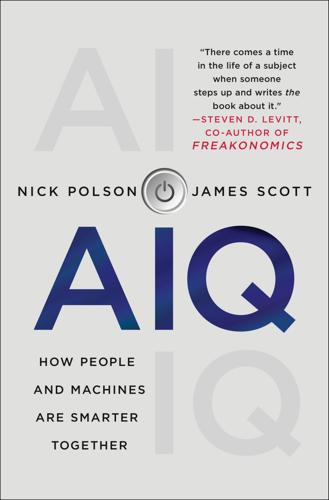
AIQ: How People and Machines Are Smarter Together
by
Nick Polson
and
James Scott
Published 14 May 2018
It’s to tell the algorithm how to train itself what to do, using data and the rules of probability. How Did We Get Here? Modern AI systems, like a self-driving car or a home digital assistant, are pretty new on the scene. But you might be surprised to learn that most of the big ideas in AI are actually old—in many cases, centuries old—and that our ancestors have been using them to solve problems for generations. For example, take self-driving cars. Google debuted its first such car in 2009. But you’ll learn in chapter 3 that one of the main ideas behind how these cars work was discovered by a Presbyterian minister in the 1750s—and that this idea was used by a team of mathematicians over 50 years ago to solve one of the Cold War’s biggest blockbuster mysteries.
…
Another algorithm formats the response into a coherent English sentence. A final algorithm verbalizes that sentence in a non-robotic-sounding way: “The best breakfast tacos in Austin are at Julio’s on Duval Street. Would you like directions?” And that’s AI. Pretty much every AI system—whether it’s a self-driving car, an automatic cucumber sorter, or a piece of software that monitors your credit card account for fraud—follows this same “pipeline-of-algorithms” template. The pipeline takes in data from some specific domain, performs a chain of calculations, and outputs a prediction or a decision. There are two distinguishing features of the algorithms used in AI.
…
For if pulsating stars are the candles of the universe, then Henrietta Leavitt was the one who fashioned their candlestick, giving us an equation that we could hold up to the heavens to shine light into the darkness. 3 THE REVEREND AND THE SUBMARINE Q: What do a bicycle, snow, a kangaroo, and a submarine have in common? A: They’re all important for building a car that can drive itself. TAKE BICYCLES. BICYCLES are trouble. The sensors on a self-driving car are really good at identifying things like pedestrians and squirrels, which move a lot slower than cars and which look basically the same from every angle. Other cars are a piece of cake; they’re giant reflective blobs of metal that light up like a Christmas tree on radar. But bicycles? Bicycles can be fast or slow, big or small, metal or carbon fiber—and depending on your viewing angle, they can be as wide as a car or as narrow as a book.
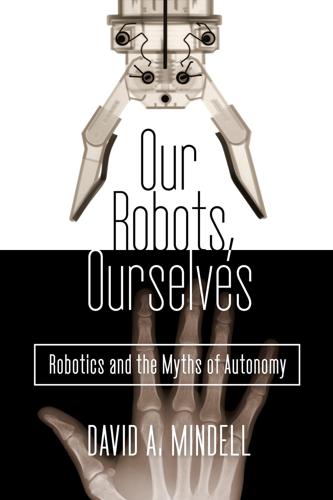
Our Robots, Ourselves: Robotics and the Myths of Autonomy
by
David A. Mindell
Published 12 Oct 2015
“without traffic accidents or congestion”: Sebastian Thrun, “Self-Driving Cars Can Save Lives, and Parking Spaces,” New York Times, December 5, 2011, http://www.nytimes.com/2011/12/06/science/sebastian-thrun-self-driving-cars-can-save-lives-and-parking-spaces.html. Sebastian Thrun, “What We’re Driving At,” Google official blog, http://googleblog.blogspot.com/2010/10/what-were-driving-at.html, accessed July 10, 2014. John Markoff, “A Trip in a Self-Driving Car Now Seems Routine,” Bits Blog, http://bits.blogs.nytimes.com/2014/05/13/a-trip-in-a-self-driving-car-now-seems-routine, accessed July 10, 2014. John Markoff, “Google Cars Drive Themselves, in Traffic,” New York Times, October 9, 2010, http://www.nytimes.com/2010/10/10/science/10google.html.
…
John Markoff, “Police, Pedestrians and the Social Ballet of Merging: The Real Challenges for Self-Driving Cars,” Bits Blog, http://bits.blogs.nytimes.com/2014/05/29/police-bicyclists-and-pedestrians-the-real-challenges-for-self-driving-cars/, accessed July 10, 2014. We know that driverless cars will be susceptible: John Markoff, “Collision in the Making Between Self-Driving Cars and How the World Works,” New York Times, January 23, 2012, http://www.nytimes.com/2012/01/24/technology/googles-autonomous-vehicles-draw-skepticism-at-legal-symposium.html. Will Knight, “Proceed with Caution toward the Self-Driving Car,” MIT Technology Review, April 16, 2013, http://www.technologyreview.com/review/513531/proceed-with-caution-toward-the-self-driving-car/.
…
The Google car’s successful driving tests: Mark Harris, “How Google’s Autonomous Car Passed the First U.S. State Self-Driving Test,” IEEE Spectrum Online, September 10, 2014, http://spectrum.iee.org. Idem., “These Are the Secrets Google Wanted to Keep about Its Self-Driving Cars,” Quartz, http://qz.com/252817/these-are-the-secrets-google-wanted-to-keep-about-its-self-driving-cars/, accessed November 18, 2014. Mark Harris, “How Much Training Do You Need to Be a Robocar Test Driver? It Depends On Whom You Work For,” IEEE Spectrum Cars That Think, February 24, 2015, http://spectrum.ieee.org/cars-that-think/transportation/human-factors/how-much-training-do-you-need-to-be-a-robocar-test-driver-it-depends-on-whom-you-work-for.

Humans as a Service: The Promise and Perils of Work in the Gig Economy
by
Jeremias Prassl
Published 7 May 2018
Justin McCurry, ‘South Korean woman’s hair eaten by robot vacuum cleaner as she slept’, The Guardian (9 February 2015), https://www.theguardian.com/ world/2015/feb/09/south-korean-womans-hair-eaten-by-robot-vacuum- cleaner-as-she-slept, archived at https://perma.cc/86YB-RF49; Aarian Marshall, ‘Puny humans still see the world better than self-driving cars, Wired (5 August 2017), https://www.wired.com/story/self-driving-cars-perception- humans/, archived at https://perma.cc/B8L9-7K32; Marty Padget, ‘Ready to pay billions for self-driving car roads?’, Venture Beat (17 May 2017), https:// venturebeat.com/2017/05/17/ready-to-pay-trillions-for-self-driving-car-roads/, archived at https://perma.cc/ZJ9K-LSXF. There is, furthermore, an important distinction between jobs that could be automated and those that actually are: see David Kucera, New Automation Technologies and Job Creation and Destruction Dynamics (International Labour Organization 2016). 14.
…
McAfee and Brynjofsson disagree: because ‘humanity has recently become much better at building machines that can figure things out on their own,’ they suggest, ‘ “Polanyi’s paradox” is not the barrier it once was; machines can learn even when humans can’t teach them.’12 It is true that * * * Rethinking Employment Law for the Future of Work 139 engineers have been working hard to develop cleaning robots, self-driving cars, and image-recognition software. Even after years of work and billions of investments, however, the algorithms continue to struggle—from a robotic cleaner getting tangled in its owner’s hair until she could be freed by paramedics, to self-driving cars confused by ice, snow, faded road mark- ings, and stray plastic bags.13 Artificial Artificial Intelligence In the long run, the gig economy will not remain beyond the reach of algo- rithms.
…
Entrepreneurs’ reliance on cheap out- workers was said to ‘perpetuate the use of imperfect and inferior machin- ery . . . and thus prevent the adoption of improved and more economical models of production’.74 Two immediate counter-arguments come to mind. First, what about Uber’s well-publicized efforts to develop self-driving cars? And, in any event, might a delay in innovative automation not be to the benefit of workers whose jobs would otherwise be threatened by a rise of the robots? As regards the first of these arguments, Uber’s emphasis on autonomous vehicles has increasingly been questioned by experts from both technological and eco- nomic perspectives: the company’s efforts seem to lag significantly behind competitors’ technological advances.75 In any event, why would Uber replace its current asset-light model, under which drivers bear the full cost of pro- viding cars, petrol, and their time, with a massive investment in an expensive fleet of self-driving cars?

Why We Drive: Toward a Philosophy of the Open Road
by
Matthew B. Crawford
Published 8 Jun 2020
They are consistent with results in surveys by Pew Research Center, the American Automobile Association and others.” Paul Lienert and Maria Caspani, “Americans Still Don’t Trust Self-Driving Cars, Reuters/Ipsos Poll Finds,” Reuters, April 1, 2019, https://www.reuters.com/article/us-autos-selfdriving-poll/americans-still-dont-trust-self-driving-cars-reuters-ipsos-poll-finds-idUSKCN1RD2QS. Other findings consistent with these are collected from opinion polls conducted by various industry groups, insurance institutes, and consumer advocacy groups and available at Saferoads.org. 8.Christopher Mele, “In a Retreat, Uber Ends Its Self-Driving Car Experiment in San Francisco,” New York Times, December 22, 2016, http://www.nytimes.com/2016/12/21/technology/san-francisco-california-uber-driverless-car-.html?
…
Other findings consistent with these are collected from opinion polls conducted by various industry groups, insurance institutes, and consumer advocacy groups and available at Saferoads.org. 8.Christopher Mele, “In a Retreat, Uber Ends Its Self-Driving Car Experiment in San Francisco,” New York Times, December 22, 2016, http://www.nytimes.com/2016/12/21/technology/san-francisco-california-uber-driverless-car-.html?hp&action=click&pgtype=Homepage&clickSource=story-heading&module=first-column-region®ion=top-news &WT.nav=top-news&_r=0. Mike Isaac, “Uber Defies California Regulators with Self-Driving Car Service,” New York Times, December 16, 2016, https://www.nytimes.com/2016/12/16/technology/uber-defies-california-regulators-with-self-driving-car-service.html. 9.John Harris, “With Trump and Uber, the Driverless Future Could Turn into a Nightmare,” Guardian, December 16, 2016, https://www.theguardian.com/commentisfree/2016/dec/16/trump-uber-driverless-future-jobs-go. 10.These are the findings of the city’s transport department as characterized by Nicole Gelinas in “Why Uber’s Investors May Lose Their Lunch,” New York Post, December 26, 2017, available at https://www.manhattan-institute.org/html/why-ubers-investors-may-lose-their-lunch-10847.html. 11.
…
The proposed book is political in spirit, if we may take that term in its broadest sense. As we become ever more administered and pacified in so many domains of life, I want to explore this one domain of skill, freedom, and individual responsibility—driving—before it is too late, and make a case for defending it. For self-driving cars to realize their full potential to reduce traffic and accidents, we can’t have rogue dissidents bypassing the system of coordination that they make possible.6 Their inherent logic presses toward their becoming mandatory—if not by fiat of the state, then by the prohibitive calculations of insurance companies, who will have to distribute risk among fewer human drivers.

Robot Rules: Regulating Artificial Intelligence
by
Jacob Turner
Published 29 Oct 2018
Ngo, “Redesign of the Vehicle Bonnet Structure for Pedestrian Safety”, Proceedings of the Institution of Mechanical Engineers, Part D: Journal of Automobile Engineering, Vol. 226, No. 1 (2012), 70–84. 109Many commentators have pointed out the applicability of the Trolley Problem to self-driving cars, but beyond articulating the issue, few have actually suggested a legal or moral answer. See, for example, Matt Simon, “To Make Us All Safer, Robocars Will Sometimes Have to Kill”, Wired, 17 March 2017, https://www.wired.com/2017/03/make-us-safer-robocars-will-sometimes-kill/, accessed 1 June 2018; Alex Hern, “Self-Driving Cars Don’t Care About Your Moral Dilemmas”, The Guardian, 22 August 2016, https://www.theguardian.com/technology/2016/aug/22/self-driving-cars-moral-dilemmas, accessed 1 June 2018; Jean-François Bonnefon, Azim Shariff, and Iyad Rahwan, “The Social Dilemma of Autonomous Vehicles”, Science, Vol. 352, No. 6293 (2016), 1573–1576; Noah J.
…
Ministry of Justice [2014] UKSC 38, where the Supreme Court declined to find that a terminally ill person had a right to be administered euthanasia, in the absence of any imprimatur from Parliament to that effect. 56Jack Stilgoe and Alan Winfield, “Self-Driving Car Companies Should Not Be Allowed to Investigate Their Own Crashes”, The Guardian, 13 April 2018, https://www.theguardian.com/science/political-science/2018/apr/13/self-driving-car-companies-should-not-be-allowed-to-investigate-their-own-crashes, accessed 1 June 2018. 57“Homepage”, Website of the House of Lords Select Committee on A.I., http://www.parliament.uk/ai-committee, accessed 1 June 2018. 58“Homepage”, Website of the All-Party Parliamentary Group on A.I., http://www.appg-ai.org/, accessed 1 June 2018. 59Another area of focus for discussions on AI and law which is outside of the problems addressed by this book is the impact of AI on the legal industry itself, for example as a replacement for lawyers and judges.
…
See further below at s. 4.1. 6Ibid. 7“Homepage”, Website of AI2, http://allenai.org/, accessed 1 June 2018. 8Oren Etzioni, “How to Regulate Artificial Intelligence”, 1 September 2017, New York Times, https://www.nytimes.com/2017/09/01/opinion/artificial-intelligence-regulations-rules.html, accessed 1 June 2018. 9For a similar formulation to Walsh see Tim Wu, “Please Prove You’re Not a Robot”, New York Times, 15 July 2017, https://www.nytimes.com/2017/07/15/opinion/sunday/please-prove-youre-not-a-robot.html, accessed 1 June 2018. 10Toby Walsh, Android Dreams (London: Hurst & Company, 2017), 113–114. 11Though a 2018 accident in Arizona, where a woman was killed after walking in front of a self-driving vehicle travelling at 40 miles per hour, suggests that—at least at the time of writing—autonomous vehicles remain imperfect in this regard. See, for the issue and a potential solution: Dave Gershgorn, “An AI-Powered Design Trick Could Help Prevent Accidents like Uber’s Self-Driving Car Crash”, Quartz, 30 March 2018, https://qz.com/1241119/accidents-like-ubers-self-driving-car-crash-could-be-prevented-with-this-ai-powered-design-trick/, accessed 1 June 2018. 12For an example of a system which is designed to test whether AI has “common sense”, see the discussion of the AI2 Reasoning Challenge in Will Knight, “AI Assistants Say Dumb Things, and We’re About to Find Out Why”, MIT Technology Review, 14 March 2018, https://www.technologyreview.com/s/610521/ai-assistants-dont-have-the-common-sense-to-avoid-talking-gibberish/, accessed 1 June 2018.

User Friendly: How the Hidden Rules of Design Are Changing the Way We Live, Work & Play
by
Cliff Kuang
and
Robert Fabricant
Published 7 Nov 2019
And he started to see that a great many of those buttons were dedicated to little tidbits of assisted driving. He thought, Why don’t I put those all together on a touchscreen? This was around 2010, when self-driving cars were just beginning to be real. A team at Stanford had figured out how to rig up an Audi to drive itself in a race up the fabled Pikes Peak. Anyone could see that the promise of self-driving cars was too tantalizing for them to remain in the lab for long. It happened that Lathrop was particularly well positioned for the problem. He’d cut his teeth at NASA, trying to create helmet displays for pilots.
…
Victor Cruz Cid, “Volvo Auto Brake System Fail,” YouTube, May 19, 2015, www.youtube.com/watch?v=_47utWAoupo. 3. RockTreeStar, “Tesla Autopilot Tried to Kill Me!” YouTube, October 15, 2015, www.youtube.com/watch?v=MrwxEX8qOxA. 4. Andrew J. Hawkins, “This Map Shows How Few Self-Driving Cars Are Ac-tually on the Road Today,” The Verge, October 23, 2017, www.theverge.com/2017/10/23/16510696/self-driving-cars-map-testing-bloomberg-aspen. 5. There is an irony in this: Audi is owned by Volkswagen, which at the same time was embroiled in a scandal over untrustworthy emissions performance. The engineers and designers in this story had no involvement in that. 6.
…
Presented at TED2017, April 2017. www.ted.com/talks/tristan_harris_the_manipulative_tricks_tech_companies_use_to_capture_your_attention. ———. “How Technology Is Hijacking Your Mind—from a Magician and Google Design Ethicist.” Medium, May 18, 2016. Hawkins, Andrew J. “This Map Shows How Few Self-Driving Cars Are Actually on the Road Today.” The Verge, October 23, 2017. www.theverge.com/2017/10/23/16510696/self-driving-cars-map-testing-bloomberg-aspen. Helft, Miguel. “The Class That Built Apps, and Fortunes.” New York Times, May 7, 2011. www.nytimes.com/2011/05/08/technology/08class.html. Hempel, Jessi. “What Happened to Facebook’s Grand Plan to Wire the World?”
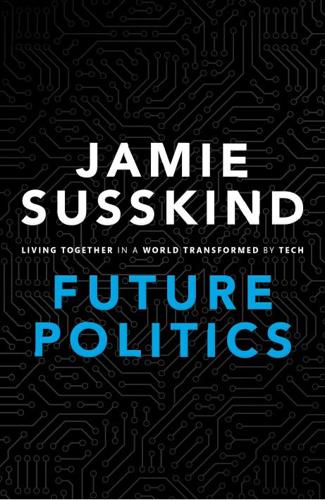
Future Politics: Living Together in a World Transformed by Tech
by
Jamie Susskind
Published 3 Sep 2018
Indeed, machine learning algorithms are all around us:32 Amazon’s algorithm, more than any one person, determines what books are read in the world today. The NSA’s algorithms decide whether you’re a potential terrorist. Climate models decide what’s a safe level of carbon dioxide in the atmosphere. Stock-picking models drive the economy more than most of us do. When the time comes for you to take your first ride in a self-driving car, remember that:33 no engineer wrote an algorithm instructing it, step-by-step, how to get from A to B. No one knows how to program a car to drive, and no one needs to, because a car equipped with a learning algorithm picks it up by observing what the driver does. Machine learning, to borrow from Domingos, is the automation of automation itself.34 It’s a profound development because it liberates AI systems from the limitations of their human creators.
…
It is also about increasing connectivity between people and machines—through Siri-like ‘oracles’ which answer your questions and ‘genies’ that execute commands.35 In the future, when you leave your house, ‘the same conversation you OUP CORRECTED PROOF – FINAL, 28/05/18, SPi РЕЛИЗ ПОДГОТОВИЛА ГРУППА "What's News" VK.COM/WSNWS 48 FUTURE POLITICS were having with your vacuum cleaner or robot pet will be carried on seamlessly with your driverless car, as if one “person” inhabited all these devices’.36 Samsung is looking to put its AI voice assistance Bixby into household appliances, like TVs and refrigerators, to make them responsive to human voice command.37 Self-driving cars will communicate with one another to minimize traffic and avoid collisions. Within the home, Bluetooth Mesh technology could increasingly be used to connect ‘smart’ devices with one another, using every nearby device as a range booster to create a secure network connection between devices that would previously have been out of range.38 (It’s important to note, however, that one of the challenges for the ‘internet of things’ will be developing a unified protocol that enables devices to communicate seamlessly with one another.)39 Looking further ahead, developments in hardware could yield new and astonishing ways of communicating.
…
This was the first scientific instance of ‘mind-to-mind’ communication, also known as telepathy.40 You can already buy basic brainwave-reading devices, such as the Muse headband, which aims to aid meditation by providing real-time feedback on brain activity.41 Companies such as NeuroSky sell headsets that allow you to operate apps and play games on your smartphone using only thoughts.The US army has (apparently not very well) flown a helicopter using this kind of technology.42 Brain–computer interfaces have been the subject of a good deal of attention in Silicon Valley.43 Overall, increasingly connective technology appears set to deliver the vision of Tim Berners-Lee, inventor of the world wide web, of ‘anything being potentially connected with anything’.44 OUP CORRECTED PROOF – FINAL, 28/05/18, SPi РЕЛИЗ ПОДГОТОВИЛА ГРУППА "What's News" VK.COM/WSNWS Increasingly Integrated Technology 49 Sensitive In the future, we can expect a dramatic rise in the number of sensors in the world around us, together with a vast improvement in what they are able to detect.This is increasingly sensitive technology. Our handheld devices already contain microphones to measure sound, GPS chips to determine location, cameras to capture images, and several other sensors. Increasingly, the devices around us will use radar, sonar, lidar (the system used in self-driving cars to measure the distance to an object by firing a laser at it), motion sensors, bar code scanners, humidity gauges, pressure sensors, magnetometers, barometers, accelerometers, and other means of sensing, and hence interacting with, the physical world. There are many reasons why we might want more sensors in our own homes and devices—for recovering lost or stolen items using GPS, for instance, or monitoring the security or temperature of our homes from afar.45 Industrial entities, too, benefit from real-time feedback on their machinery, whether in relation to humidity, air pressure, electrical resistivity, or chemical presence.

Thinking Machines: The Inside Story of Artificial Intelligence and Our Race to Build the Future
by
Luke Dormehl
Published 10 Aug 2016
In the end, the car drove 2,797 miles coast-to-coast from Pittsburgh, Pennsylvania to San Diego, California – including a crossing of the Hoover Dam carried out autonomously. In one memorable highlight, a Businessweek reporter who was covering the event was pulled over by a Kansas State Trooper. Pomerleau and Jochem sailed by in their self-driving car, hands exaggeratedly off the steering wheel. It would be another fifteen years, until October 2010, before Google announced its own self-driving car initiative. However, thanks to his groundbreaking work in neural nets, Dean Pomerleau had proved his point. Welcome to Deep Learning The next significant advance for neural networks took place in the mid-2000s.
…
In shops, bars, theme parks and museums, bluetooth beacons will transmit user-relevant information to your smartphone or wearable device depending on your location and personal preferences. On the street, by far the biggest visible change likely to happen in the next several decades will be the mass arrival of self-driving cars. Following on from the work of Dean Pomerleau, as described in the last chapter, both Google and Apple have invested in this field and look set to play a key role in bringing autonomous vehicles to the mainstream. Self-driving cars won’t only affect us on an individual level, but also collectively by helping to reduce traffic congestion in cities. The data that they gather will be vital to town planners as cities continue to expand.
…
However, some went further and gave the networks themselves the autonomous power to buy and sell. Not coincidentally, the finance sector quickly joined the video game business as an industry ready to throw money at AI researchers. The age of algorithmic trading had begun. Another eye-catching application of neural nets during this time was the invention of the self-driving car. Autonomous vehicles had been a long-time dream of technologists. In 1925, the inventor Francis Houdina demonstrated a radio-controlled car, which he drove through the streets of Manhattan without anyone at the steering wheel. Later, autonomous vehicle tests used guidewires and on-board sensors to follow painted white lines on the road or seek out the alternating current of buried cables.

Prediction Machines: The Simple Economics of Artificial Intelligence
by
Ajay Agrawal
,
Joshua Gans
and
Avi Goldfarb
Published 16 Apr 2018
However, it does this precisely when those changes mean that “old data” is less useful for prediction. 7. Daniel Ren, “Tencent Joins the Fray with Baidu in Providing Artificial Intelligence Applications for Self-Driving Cars,” South China Morning Post, August 27, 2017, http://www.scmp.com/business/companies/article/2108489/tencent-forms-alliance-push-ai-applications-self-driving. 8. Ren, “Tencent Joins the Fray with Baidu in Providing Artificial Intelligence Applications for Self-Driving Cars.” Chapter 16 1. The theory of adaptation and incentives outlined here comes from Steven Tadelis, “Complexity, Flexibility, and the Make-or-Buy Decision,” American Economic Review 92, no. 2 (May 2002): 433–437. 2.
…
When high-quality machine prediction became cheap, human prediction declined in value, so the cabbies were worse off. The number of rides in London’s black cabs fell. Instead, other people provided the same service. These others also had driving skills and human sensors, complementary assets that went up in value as prediction became cheap. Of course, self-driving cars might themselves end up substituting for those skills and senses, but we will return to that story later. Our point here is that understanding the impact of machine prediction requires an understanding of the various aspects of decisions, as described by the anatomy of a decision. Should You Take an Umbrella?
…
You will try foods you don’t like. If you keep trying new foods in the hope of finding some ideal, you are missing out on a lot of good meals. Judgment, whether by deliberation or experimentation, is costly. Knowing Why You Are Doing Something Prediction is at the heart of a move toward self-driving cars and the rise of platforms such as Uber and Lyft: choosing a route between origin and destination. Car navigation devices have been around for a few decades, built into cars themselves or as stand-alone devices. But the proliferation of internet-connected mobile devices has changed the data that providers of navigation software receive.
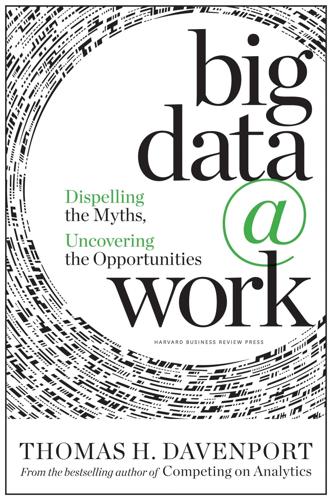
Big Data at Work: Dispelling the Myths, Uncovering the Opportunities
by
Thomas H. Davenport
Published 4 Feb 2014
In some cases, they will require regulatory change (e.g., to allow self-driving cars on the nation’s highways). It’s not entirely clear what the viable business model for each of these innovations is—how companies can make money with them. It’s also not clear that customers will want these innovations—particularly Chapter_02.indd 41 03/12/13 11:42 AM 42 big data @ work those like the pet store video cameras that pose a risk to human and pet privacy. However, it seems likely that some organizations will pull them off, and that they will make those organizations very successful. Just as Google, for example, decided to make the self-driving car a reality, there are other organizations that will succeed with integrating it into a comprehensive travel management capability.
…
Without any actions on Lynda’s part, she receives a proposed itinerary with the f ollowing components: • A flight on her preferred airline, with a frequent flyer upgrade already arranged and her preferred aisle seat reserved • A hotel reservation for all the nights of the conference • A self-driving rental car reservation at the airport (because the conference hotel is forty miles away, and the travel management application has compared the cost at prevailing rates of taxi, limo, and rental car for that distance) • A reservation at the best Italian restaurant in the conference city—Lynda’s favorite dining option—for the “on your own” night of the conference, with three suggestions (and three alternate suggestions) for dining companions who are valued members of her social network and who will also be attending the conference; Lynda needs only to touch her tablet screen once to invite them Chapter_02.indd 33 03/12/13 11:42 AM 34 big data @ work Lynda’s self-driving car delivers her to the conference hotel with no problems; the travel management system had downloaded her destination address, preferred air-conditioning temperature, and favorite satellite music station to the car. Lynda’s only complaint about selfdriving rental cars is that antiquated regulations force her to sit in the driver’s seat, which limits her tablet access.
…
(Note to skeptics: Although many of these automated travel features are not yet available, travel management experts I interviewed suggested that they would be plausible in the fairly near future. And we Chapter_02.indd 34 03/12/13 11:42 AM How Big Data Will Change Your Job, Company, and Industry 35 know that the self-driving car already exists—described by Google as a big data project—and will probably be incorporated into the transportation system in some fashion.) A Big Data Scenario for Energy Management David Byron is a corporate facilities and energy manager for Bathworks, a large US plumbing fixtures manufacturing company.

The End of Traffic and the Future of Transport: Second Edition
by
David Levinson
and
Kevin Krizek
Published 17 Aug 2015
_r=2&src=sch&pagewanted=all Erico Guizzo (2011-10-18) How Google's Self-Driving Car Works IEEE Spectrum http://spectrum.ieee.org/automaton/robotics/artificial-intelligence/how-google-self-driving-car-works 156 These hires included Sebastian Thrun of Stanford and Chris Urmson of CMU, for their own internal secret project, which they announced in 2010. 157 Figure 7.1 Source: Data on Google Cars from 140,000 - http://googleblog.blogspot.com/2010/10/what-were-driving-at.html 300,000 http://googleblog.blogspot.com/2012/08/the-self-driving-car-logs-more-miles-on.html 500,000 http://www.businessinsider.com/google-self-driving-car-problems-2013-3?
…
In this event, unlike the previous Grand Challenges, cars had to have more sophisticated and intelligent sensors. Though road quality was better (paved rather than off-road), the challenge was far more challenging. Fast forward just a few years and we see that Google hired many of the leaders of the Stanford and Carnegie Mellon teams.155 156 Google Self-Driving Cars have since traveled 1.5 million miles (2.4 million km) autonomously, mostly around the San Francisco Bay Area, but also more recently in Austin, Texas and Kirkland, Washington (Figure 7.1).157 Google's cars are map-dependent, operating where the roads have been mapped out in detail, so that they can compare what they see with what they expect to see158—a strategy with obvious strengths and weaknesses.159 In Fall of 2015, the electric vehicle automaker Tesla remotely upgraded its most recent model year cars (about 50,000 vehicles) with “auto-pilot”, making them semi-autonomous (late Level 2, early Level 3).160 Elon Musk, the CEO of Tesla, says he expects fully autonomous vehicles within 3 years (i.e. by 2018).
…
Thus we anticipate that autonomous vehicles will go from their current status of essentially 0% market share to an end state of 100% of all new car sales (i.e. autonomous capability will be a requirement of new car purchases) by 2030. Furthermore, older human-driven vehicles will be phased out except for special purposes (car shows, races, parades) during the 2030s. Self-driving cars in specific contexts (e.g. freeways or isolated campuses) are expected enter the market before 2020. In other words, human drivers will eventually (around 2040) be prohibited on public roads most of the time, just as horses no longer gallop down our streets. Consumer acceptance remains an unknown, and depends on the quality of the product being offered.

Elon Musk
by
Walter Isaacson
Published 11 Sep 2023
“This has the potential to be the far biggest thing we ever do, even bigger than a self-driving car,” he told his chief designer, Franz von Holzhausen. “Once we hear a recurring theme from Elon, we start working on it,” von Holzhausen says. They began meeting in the Tesla design studio in Los Angeles, where the Cybertruck and Robotaxi models were on display. Musk gave the specs: the robot should be about five-foot-eight, with an elfish and androgenous look so it “doesn’t feel like it could or would want to hurt you.” Thus was born Optimus, a humanoid robot to be made by the Tesla teams working on self-driving cars. Musk decided that it should be announced at an event called “AI Day,” which he scheduled for Tesla’s Palo Alto headquarters on August 19, 2021.
…
He was comparing his project at Tesla to the artificial intelligence chatbot that had just been released by OpenAI, the lab that Musk had cofounded with Sam Altman in 2015. For almost a decade, Musk had been working on various forms of artificial intelligence, including self-driving cars, Optimus the robot, and the Neuralink brain-machine interface. Shroff’s project involved the latest machine-learning frontier: devising a self-driving car system that would learn from human behavior. “We process an enormous amount of data on how real humans acted in a complex driving situation, and then we train a computer’s neural network to mimic that.” Musk had asked to meet with Shroff—who had occasionally served as a fourth musketeer with James, Andrew, and Ross—because he was thinking about persuading him to leave Tesla’s Autopilot team and come work at Twitter.
…
It had a fleet of almost two million Teslas around the world collecting billions of video frames per day. “We are uniquely positioned to do this,” Elluswamy said at the meeting. The ability to collect and analyze vast flows of real-time data would be crucial to all forms of AI, from self-driving cars to Optimus robots to ChatGPT–like bots. And Musk now had two powerful gushers of real-time data, the video from self-driving cars and the billions of postings each week on Twitter. He told the Autopilot meeting that he had just made a major purchase of 10,000 more GPU data-processing chips for use at Twitter, and he announced that he would hold more frequent meetings on the potentially more powerful Dojo chips being designed at Tesla.

Robots Will Steal Your Job, But That's OK: How to Survive the Economic Collapse and Be Happy
by
Pistono, Federico
Published 14 Oct 2012
As a result, just because a technology exists and it helps us live better, it will not necessarily be adopted right away, because of many social factors. To explain how this process unfolds, I will try to predict what I think is a possible future scenario for the case of self-driving cars. Needless to say, I do not possess the power of precognition, but I will try to make an educated guess. Some of these events, at the time of writing, have already happened. Many have not. Time will tell how wrong I was. 7.8 A (possible) History of Self-Driving Cars Google announced that they have invented self-driving cars. After a few years of research, with very little money and a small team, they were able to harness the power of machines to solve a very challenging problem of our times.
…
The situation seemed to be changing, and public opinion is now mostly favourable. Then, the first major accident happened. A self-driving car was roaming around as usual, when another car, driven by a human, crashed into it. The person driving the old-fashioned vehicle was exceeding the speed limit and did not care to follow the street signs either. In short, it was his fault. The cybernetic car tried to avoid the collision, but the other car was simply too fast and it all happened to quickly. The result: the driver of the old car, and his friend next to him, died. News stories went nuts. Headlines like “First self-driving car kills 2 people”, “The killer-machine”, and “Who ’s going to pay for this?”
…
But I also received very different answers: “I don’t trust machines, they’ll never be like us. I will never get into a car like that, I want to have control. People won’t accept that, they’ll never have automated cars running on the streets.” This vision is shared by many others I interviewed, some of whom were particularly disturbed by the idea of self-driving cars (surprisingly enough even young people). There are many factors to consider, and the evolution of progress goes through various steps. First, there is the development of a new technology. Computer scientists, mathematicians, physicists, and engineers form a small research team somewhere, and decide they want to tackle a specific problem.
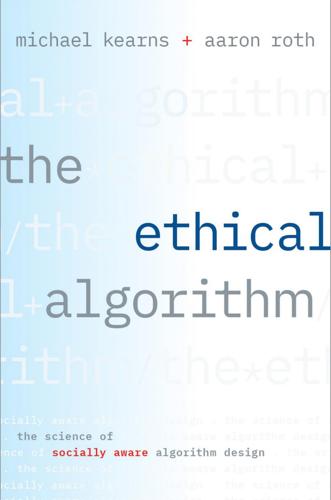
The Ethical Algorithm: The Science of Socially Aware Algorithm Design
by
Michael Kearns
and
Aaron Roth
Published 3 Oct 2019
If you want to fly commercially from Ithaca, New York, to the island town of Lipari in Italy, you can’t simply direct American Airlines to take a nonstop route along the great circle between the two locations—instead you’ll have multiple flight legs and layovers, all for the sake of macroscopic efficiency at the expense of your own time and convenience. In a similar vein, it would be natural for a massive network of self-driving cars to be coordinated so as to implement navigation schemes that optimize for collective average driving time (and perhaps other considerations, such as fuel efficiency) rather than individual self-interest. But even before the self-driving cars arrive en masse, we can imagine other ways Maxwell might be effectively deployed. One is that if, as in our two-route example above, Maxwell randomly chooses the drivers who are given nonselfish routes, users might have a stronger incentives to use the app, since over time the assignment of nonselfish routes will balance out across users, and then each individual user would enjoy lower average driving time.
…
Some of the popular and scientific discussion of algorithmic morality has focused on thought experiments highlighting the difficult ethical decisions that self-driving cars and other systems might soon confront on a regular basis. The Moral Machine project at MIT presents users with a series of such dilemmas in an effort to poll human perspectives on AI and machine learning morality. While it might seem like an extended parlor game, perhaps projects such as this will eventually gather valuable subjective data on moral perception, somewhat akin to the suggestion of surveying user groups to advance algorithmic transparency. Fig. 29. Illustration of standard hypothetical moral dilemmas faced by self-driving cars, in which the controlling algorithm must decide whether to sacrifice its passengers or the pedestrians.
…
But the incentive problems that Maxwell faces are arguably even worse, because they are not simply about drivers lying to the app; rather, the problem is drivers disregarding its recommendations entirely when they are not best responses. There are a couple of reasonable replies to this concern. The first is that we may eventually (perhaps even soon) arrive at an era of mostly or even entirely self-driving cars, in which case the Maxwell solution could simply be implemented by centralized fiat. Public transportation systems are generally already designed and coordinated for collective, not individual, optimality. If you want to fly commercially from Ithaca, New York, to the island town of Lipari in Italy, you can’t simply direct American Airlines to take a nonstop route along the great circle between the two locations—instead you’ll have multiple flight legs and layovers, all for the sake of macroscopic efficiency at the expense of your own time and convenience.

System Error: Where Big Tech Went Wrong and How We Can Reboot
by
Rob Reich
,
Mehran Sahami
and
Jeremy M. Weinstein
Published 6 Sep 2021
The CEO and shareholders of a ride-hailing service that deploys millions of self-driving cars stand to gain untold wealth, while millions of unemployed taxi, bus, and truck drivers will have to grapple with the consequences of technology over which they have no power. When it comes to material well-being, the age of smart machines may be wonderful for some but livelihood destroying for others. What Is Freedom Worth to You? One hidden yet important cost of automation is that it may undermine our freedom to live our lives as we want. Let’s return to the example of self-driving cars, which could save up to 300,000 lives per decade in the United States alone—something one reporter called potentially the “greatest public-health achievement of the 21st century.”
…
And although this may cost more than what is currently spent in the United States, as the Europeans have shown, it’s not only how much you spend but how you spend it that makes all the difference. * * * Because Silicon Valley is an epicenter of the design and testing of self-driving cars, it is not uncommon to pull up to a stoplight and see an autonomous vehicle operating right beside you, its sensors visibly sitting atop the roof of the car. For most people, the sight of a self-driving car causes excitement and perhaps spurs the imagination. But when we stop to consider the vast amount of automation that awaits us, it is difficult to look away from the important decisions we will be confronting.
…
more than 90 percent: National Highway Traffic Safety Administration, “Traffic Safety Facts: 2017 Data,” US Department of Transportation, May 2019, https://crashstats.nhtsa.dot.gov/Api/Public/ViewPublication/812687. making commuting time more productive: Peter Diamandis, “Self-Driving Cars Are Coming,” Forbes, August 13, 2014, https://www.forbes.com/sites/peterdiamandis/2014/10/13/self-driving-cars-are-coming/. Accordingly, most participants: Jean-François Bonnefon, Azim Shariff, and Iyad Rahwan, “The Social Dilemma of Autonomous Vehicles,” Science 352, no. 6293 (June 24, 2016): 1573–76, https://doi.org/10.1126/science.aaf2654. IBM’s Deep Blue computer had “unseated humanity”: Bruce Weber, “Swift and Slashing, Computer Topples Kasparov,” New York Times, May 12, 1997, https://www.nytimes.com/1997/05/12/nyregion/swift-and-slashing-computer-topples-kasparov.html.
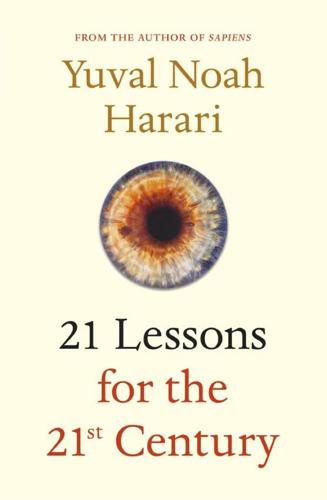
21 Lessons for the 21st Century
by
Yuval Noah Harari
Published 29 Aug 2018
If we teach Kant, Mill and Rawls to write code, they can carefully program the self-driving car in their cosy laboratory, and be certain that the car will follow their commandments on the highway. In effect, every car will be driven by Michael Schumacher and Immanuel Kant rolled into one. Thus if you program a self-driving car to stop and help strangers in distress, it will do so come hell or high water (unless, of course, you insert an exception clause for infernal or high-water scenarios). Similarly, if your self-driving car is programmed to swerve to the opposite lane in order to save the two kids in its path, you can bet your life this is exactly what it will do.
…
When considering automation it is therefore wrong to compare the abilities of a single human driver to that of a single self-driving car, or of a single human doctor to that of a single AI doctor. Rather, we should compare the abilities of a collection of human individuals to the abilities of an integrated network. For example, many drivers are unfamiliar with all the changing traffic regulations, and they often violate them. In addition, since every vehicle is an autonomous entity, when two vehicles approach the same junction at the same time, the drivers might miscommunicate their intentions and collide. Self-driving cars, in contrast, can all be connected to one another.
…
Tesla will produce two models of the self-driving car: the Tesla Altruist and the Tesla Egoist. In an emergency, the Altruist sacrifices its owner to the greater good, whereas the Egoist does everything in its power to save its owner, even if it means killing the two kids. Customers will then be able to buy the car that best fits their favourite philosophical view. If more people buy the Tesla Egoist, you won’t be able to blame Tesla for that. After all, the customer is always right. This is not a joke. In a pioneering 2015 study people were presented with a hypothetical scenario of a self-driving car about to run over several pedestrians.

The Alignment Problem: Machine Learning and Human Values
by
Brian Christian
Published 5 Oct 2020
For a video explanation of the research, see “Quadcopter Navigation in the Forest Using Deep Neural Networks,” https://www.youtube.com/watch?v=umRdt3zGgpU. 54. Bojarski et al., “End to End Learning for Self-Driving Cars.” The Nvidia team further augmented its side-pointing camera images with “Photoshop” manipulations for a greater diversity of angles. These suffered from similar constraints as the ALVINN images, but they were good enough in practice. For a more informal discussion, see Bojarski et al., “End-to- End Deep Learning for Self-Driving Cars,” https://devblogs.nvidia.com/deep-learning-self-driving-cars/. For the video of the car in action on the roads of Monmouth County, see “Dave-2: A Neural Network Drives a Car,” https://www.youtube.com/watch?
…
Some models must, for better or worse, deal not with human abstractions like “GRE score” and “number of prior offenses” but with raw linguistic, audio, or visual data. Some medical diagnostic tools can be fed human inputs, like “mild fever” and “asthmatic,” while others might be shown an X-ray or CAT scan directly and must make some sense of it. A self-driving car, of course, must deal with a stream of radar, lidar, and visual data directly. In such cases we have little choice but the kinds of large, multimillion-parameter “black box” neural networks that have such a reputation for inscrutability. But we are not without resources here as well, on the science of transparency’s other, wilder frontier.
…
“So that makes sense,” she says, “if you’re from an area where fire engines are red.”82 It’s almost always true in the United States, for instance, but not in Australia, where, depending on the district, fire trucks can sometimes be white—or, in Canberra, neon yellow. This would suggest, say, that a self-driving-car model developed on a US-centric dataset might need modification before it was safe to deploy down under. Kim also found that the concept of “arms” was important to identifying “dumbbells,” corroborating the earlier visual findings of the DeepDream group from Google, and hinting that the network might struggle to identify a dumbbell on a rack or on the ground.83 The concept “East Asian” was important to “ping-pong ball,” and the concept “Caucasian” was important to “rugby.”

Scary Smart: The Future of Artificial Intelligence and How You Can Save Our World
by
Mo Gawdat
Published 29 Sep 2021
Those machines will not only become smarter, they will know more (as they have access to the entire internet as their memory pool) and they will communicate between each other better, thus enhancing their knowledge. Think about it: when you or I have an accident driving a car, you or I learn, but when a self-driving car makes a mistake, all self-driving cars learn. Every single one of them, including the ones that have not yet been ‘born’. By 2049, probably in our lifetimes and surely in those of the next generation, AI is predicted to be a billion times smarter (in everything) than the smartest human. To put this into perspective, your intelligence, in comparison to that machine, will be comparable to the intelligence of a fly in comparison to Einstein.
…
There, I was privileged to lead the launch of Google’s operations and technologies in close to half of Google’s offices worldwide, encompassing more than a hundred languages. My time there concluded when I assumed the role of Chief Business Officer of Google [X], the infamous innovation arm of Google that incubated some of the artificial intelligence development projects such as Google’s self-driving cars, Google Brain and most of Google’s robotics innovation. My insights into the very core of the artificial intelligence developments that have led us to where we are today, derived in part from my time at Google [X], are unique. I am combining my direct experience with AI development with my work in the field of happiness research (documented in my internationally bestselling book Solve for Happy, a very successful podcast, Slo Mo, and the non-profit organization I founded, OneBillionHappy.org) to bring you a unique perspective on the challenges we face in the age of the rise of superintelligence.
…
The world champion of Go is Google’s AlphaGo (Go is an abstract strategy board game invented in China more than 2,500 years ago and is known to be one of the most complex strategy games because of its infinite number of possible board configurations). Machines with incredible image recognition systems power our security systems simply because they see better than us, and the world’s safest driver by far is a self-driving car that not only sees further but pays undivided attention to the road. Using multiple sensor technologies for communication with other cars around it, it can even ‘see’ round corners. With enough ‘training’, no matter what the task, machines have been learning to do it better. Into the Unknown It is predicted that by the year 2029, which is relatively just around the corner, machine intelligence will break out of specific tasks and into general intelligence.
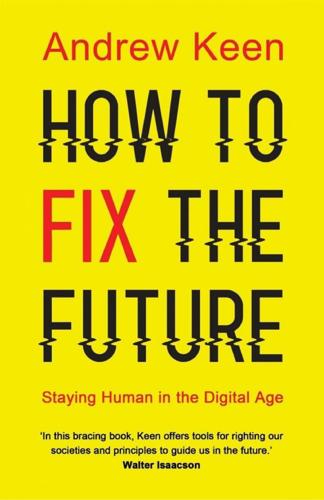
How to Fix the Future: Staying Human in the Digital Age
by
Andrew Keen
Published 1 Mar 2018
In January 2015 Uber “gutted” the robotics lab of Carnegie Mellon University to “poach” the fifty people who were working on self-driving cars.57 As I write this, a little over two years later, Uber is already conducting trials of self-driving vehicles in both Pennsylvania and Arizona. Google, Apple, and many other conventional car companies are conducting similar trials. By the time you read this, we will be ever closer to the reality of self-driving cars on our roads. The logic for this enormous investment in the technology of self-driving cars—particularly from Uber’s point of view—is chillingly obvious. “Uber’s future depends greatly on solving self-driving,” the technology website Recode explains.
…
Farhad Manjoo, “One Way to Fix Uber: Think Twice Before Using It,” New York Times, June 14, 2017. 56. Mike Isaac, “Uber CEO to Leave Trump Advisory Council After Criticism,” New York Times, February 2, 2017. 57. Josh Lowensohn, “Uber Gutted Carnegie Mellon’s Top Robotics Lab to Build Self-Driving Cars,” Verge, May 19, 2015. 58. Johana Bhuiyan, “Inside Uber’s Self-Driving Car Mess,” Recode, March 24, 2017. 59. More, Utopia, 18. Chapter Ten 1. More, Utopia, 51. 2. Ibid., 50. 3. Ibid., 53. 4. John Thornhill and Ralph Atkins, “Money for Nothing,” Financial Times, May 27, 2016. 5. “Sighing for Paradise to Come,” Economist, June 4, 2016. 6.
…
See regulation Apple centralized power of, 60–70 Macintosh, 9, 10 regulation issues, 128–129, 142–144, 146, 151, 160 Siri, 25 social responsibility and, 205 apps, by Singapore, 113, 114 APT 28 (Russia), 96 Archimedes point, 195–196 artificial intelligence (AI) cobots, 277 humanity and, 23–28, 268–272 open technology platforms for, 31–33 robots replaced by craftsmen, by Toyota, 271 self-driving cars, 256–257 social responsibility for, 197–200 as “treachery,” 52–56 artists on copyright issues, 237–245 on streaming services, 226–233 ArtScience Museum (Singapore), 112–115, 124 Austin (Texas), on worker and consumer choice issues, 240, 254 Autodesk, 118 automobile industry competitive innovation by, 182–188, 191 self-driving cars, 256–257 Babbage, Charles, 26 Balakrishnan, Vivian, 119–120 Bannon, Stephen, 94 Basu, Kaushik, 72 Battery (San Francisco club), 217 Bell, Emily, 64 BeneStream, 219 Benioff, Marc, 205, 280–281 Berkeley Food Movement, 224 Berners-Lee, Tim, 32, 58–63, 65, 150–151 Betaworks, 29–31 Bezos, Jeff, 205, 211–213, 223.

Empire of AI: Dreams and Nightmares in Sam Altman's OpenAI
by
Karen Hao
Published 19 May 2025
In 2019, they published their book Ghost Work, based on five years of extensive fieldwork, revealing a hidden web of piecemeal labor and digital exploitation that propped up Silicon Valley. Tech giants and unicorns were building their extravagant valuations not just with engineers paid six-figure salaries in trendy offices. Essential, too, were workers, often in the Global South, being paid pennies to carefully annotate reams of data. Take self-driving cars. A self-driving car needs to drive in the correct lane, respond to erratic driving behavior, and pause at a safe distance for schoolchildren crossing the road. To do this, the software system controlling the car uses an amalgamation of several deep learning models, including those dedicated to recognizing objects on the road: lane markings, road signs, traffic lights, vehicles, trees, pedestrians.
…
That chat-enabled GPT-3.5 would become the basis for ChatGPT, the release of which would turn each of OpenAI’s RLHF steps into the de facto standard for other chatbot developers to imitate. Writing answers and ranking outputs became the new generative AI equivalent of tracing objects in videos for self-driving cars. That meant finding more and more RLHF workers to meet the explosion of the AI industry’s demand. Scale AI, whose business had been struggling after self-driving cars failed to pan out, suddenly saw a new boom as a major RLHF worker supplier, surging its valuation to $14 billion in 2024. In February 2023, Alexandr Wang took to Twitter to brag. “soon companies will start spending $ hundreds of Ms or $ billions on RLHF, just as w/compute,” he said.
…
They found momentum applying their software to a wide array of other commercially relevant technical problems. They worked in parallel to develop deep learning models for machine translation, upgrading Google Translate; for text prediction, adding the suggested completions feature to Gmail; and for an ambitious new self-driving-car project called Waymo. As Google’s AI operations continued to grow, neural networks also produced crucial improvements to the company’s cash cow, search. The software could better match user queries to relevant web pages, delivering users higher-quality search results and, importantly, targeting them with more relevant ads.
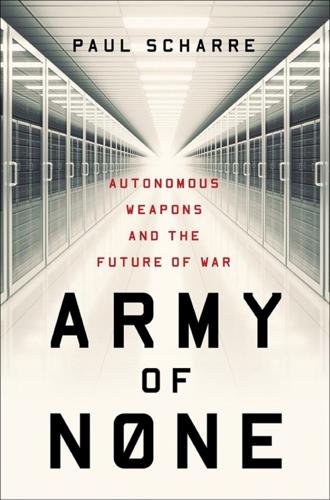
Army of None: Autonomous Weapons and the Future of War
by
Paul Scharre
Published 23 Apr 2018
The organization kept at it, sponsoring a follow-up Grand Challenge the next year. This time, it was a resounding success. Twenty-two vehicles beat the previous year’s distance record and five cars finished the entire course. In 2007, DARPA hosted an Urban Challenge for self-driving cars on a closed, urban course complete with traffic and stop signs. These Grand Challenges matured autonomous vehicle technology in leaps and bounds, laying the seeds for the self-driving cars now in development at companies like Google and Tesla. DARPA has since used the Grand Challenge approach as a way to tackle other truly daunting problems, harnessing the power of competition to generate the best ideas and launch a technology forward.
…
Department of Defense officials state that the option of deploying fully autonomous weapons should be “on the table.” BETTER THAN HUMAN? Armed robots deciding who to kill might sound like a dystopian nightmare, but some argue autonomous weapons could make war more humane. The same kind of automation that allows self-driving cars to avoid pedestrians could also be used to avoid civilian casualties in war, and unlike human soldiers, machines never get angry or seek revenge. They never fatigue or tire. Airplane autopilots have dramatically improved safety for commercial airliners, saving countless lives. Could autonomy do the same for war?
…
When the swarm commanders click go, the swarms close on each other once again. This time the battle comes out dead even, 3–3. In Round 3, Red pulls out a decisive win, 7–4. Red Swarm commander is happy to take credit for the win. “I pushed the button,” he says with a chuckle. Just as robots are transforming industries—from self-driving cars to robot vacuum cleaners and caretakers for the elderly—they are also transforming war. Global spending on military robotics is estimated to reach $7.5 billion per year in 2018, with scores of countries expanding their arsenals of air, ground, and maritime robots. Robots have many battlefield advantages over traditional human-inhabited vehicles.
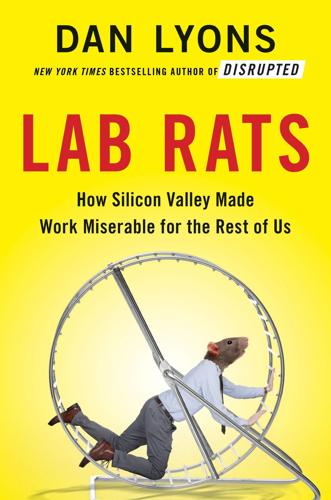
Lab Rats: How Silicon Valley Made Work Miserable for the Rest of Us
by
Dan Lyons
Published 22 Oct 2018
But Tesla also has raced ahead of Detroit in developing the two biggest new car technologies: electric motors and autonomous vehicles. Tesla is not the only Silicon Valley company that threatens Ford. Google and Uber are working on self-driving cars. Apple is rumored to be operating a secret automotive laboratory. The Silicon Valley guys realize that transportation is becoming a technology business. Self-driving cars depend on artificial intelligence, which means sensors and lots of software, stuff they know how to do. To them, a car is just a container for an AI computer, a bunch of software that happens to have wheels attached.
…
“‘Tech Bro’ Calls San Francisco ‘Shanty Town,’ Decries Homeless ‘Riffraff’ in Open Letter.” Chicago Tribune, February 18, 2016. http://www.chicagotribune.com/bluesky/technology/ct-tech-bro-letter-san-francisco-homeless-20160218-story.html. Mims, Christopher. “In Self-Driving-Car Road Test, We Are the Guinea Pigs.” Wall Street Journal, May 13, 2018. https://www.wsj.com/articles/in-self-driving-car-road-test-we-are-the-guinea-pigs-1526212802. Mishel, Lawrence, and Jessica Schieder. “CEO Pay Remains High Relative to the Pay of Typical Workers and High-Wage Earners.” Economic Policy Institute, July 20, 2017. https://www.epi.org/publication/ceo-pay-remains-high-relative-to-the-pay-of-typical-workers-and-high-wage-earners.
…
Ford has been hiring artificial intelligence engineers, built a tech lab in Silicon Valley, and struck a deal with a San Francisco software company whose engineers will teach Ford’s coders about Agile development. Ford wants us to know that it’s in the midst of a huge transformation, and that it’s not falling behind. Earlier, we all took turns going for rides in Ford’s prototype self-driving car, which Ford vows to have in production by 2021. Now we’ve come indoors for an event that is meant to evoke the atmosphere of a big Silicon Valley conference, or an Apple product announcement. Tim Brown, the head of IDEO, a cooler-than-thou Silicon Valley design shop, hangs out in the hallway.
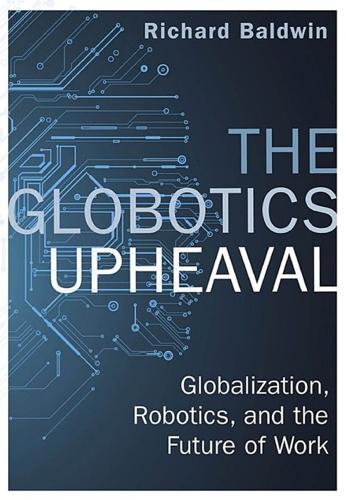
The Globotics Upheaval: Globalisation, Robotics and the Future of Work
by
Richard Baldwin
Published 10 Jan 2019
Imagine how much faster the Industrial Revolution would have spread if Newcomen’s steam engine could have been reproduced costlessly, instantly, and perfectly. Self-driving cars are an example of Varian’s law. They are one of the sure-fire, high-tech wonders of the future. Yet they use no breakthrough technology. They are a recombination of existing technologies like GPS, Wi-Fi, advanced sensors, anti-lock brakes, automatic transmission, traction and stability control, adaptive cruise control, lane control, and mapping software—all integrated by tons of processing power, and an AI-powered white-collared robot. Yet, despite being a mash-up of off-the-shelf tech, self-driving cars will create a $7 trillion market. This is not an isolated example.
…
All that is needed is a populist politician to capture their imagination. In fact, there already is a populist trying to unite blue-collar and white-collar anger: Andrew Yang. Yang, who already entered the 2020 presidential race, argues that the US needs radically new policies to prevent mass unemployment and a violent backlash. “All you need is self-driving cars to destabilize society . . . That one innovation will be enough to create riots in the street. And we’re about to do the same thing to retail workers, call center workers, fast-food workers, insurance companies, accounting firms.”3 Yang is—as New York Times writer Kevin Roose puts it—“a longer-than-long shot” presidential candidate, but his themes are likely to be taken up by more electable candidates.
…
Psychologists define intelligence as: “A very general mental capability that, among other things, involves the ability to reason, plan, solve problems, think abstractly, comprehend complex ideas, learn quickly and learn from experience.”13 Today’s AI is not intelligent in this sense. Machine learning does only the last two items in the psychologists’ list: learn quickly and learn from experience. Even the revolutionary machine learning applications we see today—like Siri and self-driving cars—are just computer programs that recognize patterns in data and then act, or make suggestions based on the patterns they find. The pattern recognition is astonishing, often superhuman in specific areas. But pattern recognition is not “intelligence” as the word is generally used when speaking about intelligent animals like humans, chimpanzees, or dolphins.

Machines of Loving Grace: The Quest for Common Ground Between Humans and Robots
by
John Markoff
Published 24 Aug 2015
“Electronic Stability Control Systems for Heavy Vehicles,” National Highway Traffic Safety Administration, 2012, http://www.nhtsa.gov/Laws+&+Regulations/Electronic+Stability+Control+(ESC). 7.John Markoff, “Police, Pedestrians and the Social Ballet of Merging: The Real Challenges for Self-Driving Cars,” New York Times, May 29, 2014, http://bits.blogs.nytimes.com/2014/05/29/police-bicyclists-and-pedestrians-the-real-challenges-for-self-driving-cars/?_php=true&_type=blogs&_r=0. 8.Lawrence D. Burns, William C. Jordan, and Bonnie A. Scarborough, “Transforming Personal Mobility,” The Earth Institute, Columbia University, January 27, 2013, http://sustainablemo bility.ei.columbia.edu/files/2012/12/Transforming-Personal-Mobility-Jan-27-20132.pdf. 9.William Grimes, “Philippa Foot, Renowned Philosopher, Dies at 90,” New York Times, October 9, 2010, http://www.nytimes.com/2010/10/10/us/10foot.html. 10.
…
Winograd’s conversion coincided with the collapse of a nascent artificial intelligence industry known as the “AI Winter.” Several decades later, Winograd, who was faculty advisor for Google cofounder Larry Page at Stanford, famously counseled the young graduate student to focus on the problem of Web search rather than self-driving cars. In the intervening decades Winograd had become acutely aware of the importance of the designer’s point of view. The separation of the fields of AI and human-computer interaction, or HCI, is partly a question of approach, but it’s also an ethical stance about designing humans either into or out of the systems we create.
…
Even the most successful entrant had gotten stuck in the dust just seven miles from the starting line in a 120-mile race, with one wheel spinning helplessly as it teetered off the edge of the road. When the dust settled, a reporter flying overhead in a light plane saw brightly colored vehicles scattered motionless over the desert floor. At the time it seemed obvious that self-driving cars were still years away, and Tether was criticized for organizing a publicity stunt. Now, just a little more than a year later, Thrun was behind the wheel in a second-generation robot contestant. It felt like the future had arrived sooner than expected. It took only a dozen miles, however, to realize that techno-enthusiasm is frequently premature.
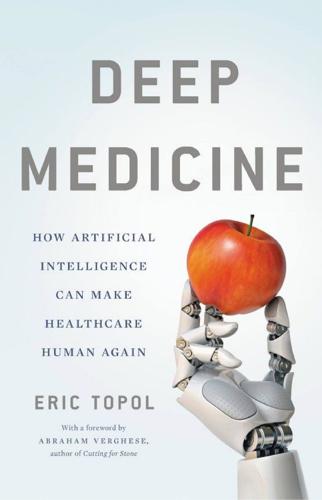
Deep Medicine: How Artificial Intelligence Can Make Healthcare Human Again
by
Eric Topol
Published 1 Jan 2019
As you might anticipate, companies are not enthusiastic about government regulation; many firms, including Microsoft and Google, have set up their own internal ethics boards, arguing that regulatory involvement might be counterproductive, delaying the adoption of self-driving cars over fringe issues when it already seems clear that autonomous vehicles will reduce traffic fatalities overall. But we don’t think of it in the big picture way. More than 1.25 million people are killed by human drivers each year, most by human error, but we as a society don’t bat an eye at the situation.62 The introduction of computers into the mix sets up a cognitive bias, not acknowledging the net benefit. When a self-driving car kills a person, there’s an outcry over the dangers of self-driving cars. The first fatality of a pedestrian hit by a driverless car occurred in an Uber program in Arizona in 2018.
…
The potential for human takeover of the car—conditional automation—is Level 3. Most people are familiar with Level 2, which is like cruise control or lane keeping, representing very limited automation. FIGURE 4.8: Self-driving cars and medicine. The Society of Automotive Engineers’ five levels of self-driving. Source: Adapted from S. Shladover, “The Truth About ‘Self-Driving” Cars,’ Scientific American (2016): www.scientificamerican.com/article/the-truth-about-ldquo-self-driving-rdquo-cars/. The whole auto industry clearly has its sights on Level 4—with limited need for human backup—which relies on multiple, coordinated technologies.
…
TO DEVELOP THE conceptual framework of deep medicine, I’ll start with how medicine is practiced now and why we desperately need new solutions to such problems as misdiagnosis, errors, poor outcomes, and runaway costs. That, in part, hinges on the basics of how a medical diagnosis is made today. To understand the reward and risk potential of AI, we will explore the AI precedents, the accomplishments ranging from games to self-driving cars. Of equal, and perhaps even greater, importance will be an exploration of AI’s liabilities, such as human bias, the potential for worsening inequities, its black-box nature, and concerns for breaches of privacy and security. The transfer of tens of millions of people’s personal data from Facebook to Cambridge Analytica, who then used AI to target individuals, illustrates one critical aspect of what could go wrong in the healthcare context.
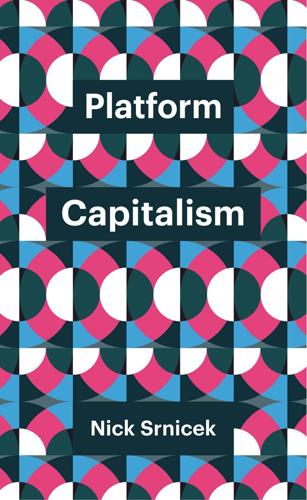
Platform Capitalism
by
Nick Srnicek
Published 22 Dec 2016
This means that, despite their differences, companies like Facebook, Google, Microsoft, Amazon, Alibaba, Uber, and General Electric (GE) are also direct competitors. IBM, for instance, has moved into the platform business, purchasing Softlayer for cloud computing, and BlueMix for software development. The convergence thesis helps explain why Google is lobbying with Uber on self-driving cars and why Amazon and Microsoft have been discussing partnerships with German automakers on the cloud platform required by self-driving cars.28 Alibaba and Apple have made major investments in Didi, Apple’s partnership being particularly strategic, given that iPhones are the major interface to taxi services. And nearly all of the major platforms are working to develop medical data platforms.
…
In the twenty-first century, however, the technology needed for turning simple activities into recorded data became increasingly cheap; and the move to digital-based communications made recording exceedingly simple. Massive new expanses of potential data were opened up, and new industries arose to extract these data and to use them so as to optimise production processes, give insight into consumer preferences, control workers, provide the foundation for new products and services (e.g. Google Maps, self-driving cars, Siri), and sell to advertisers. All of this had historical precedents in earlier periods of capitalism, but what was novel with the shift in technology was the sheer amount of data that could now be used. From representing a peripheral aspect of businesses, data increasingly became a central resource.
…
While they are similar in this respect, their business models are significantly different. Zipcar owns the assets it rents out – the vehicles; Uber does not. The former is a product platform, while the latter is a lean platform that attempts to outsource nearly every possible cost. (Uber aims, however, eventually to command a fleet of self-driving cars, which would transform it into a product platform.) Zipcar, by contrast, might be considered a ‘goods as a service’ type of platform. Product platforms are perhaps one of the biggest means by which companies attempt to recuperate the tendency to zero marginal costs in some goods. Music is the best example, as in the late 1990s downloading music for free became as simple as installing a small program.
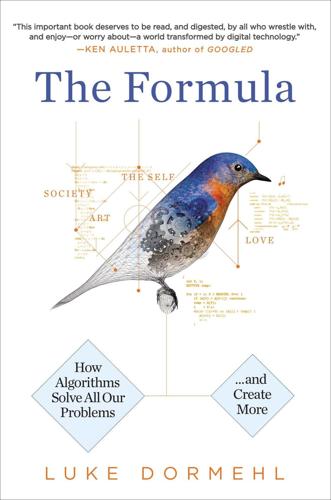
The Formula: How Algorithms Solve All Our Problems-And Create More
by
Luke Dormehl
Published 4 Nov 2014
As a straightforward example, what would happen if the passenger in the car needed to reach a hospital as a matter of urgency—and that this meant breaking the speed limit on a largely empty stretch of road? It is one thing if the driver/passenger was ticketed at a later date thanks to the car’s built-in speed tracker. But what if the self-driving car, bound by fixed Ambient Laws, refused to break the regulated speed limit under any conditions? You might not even have to wait for the arrival of self-driving cars for such a scenario to become reality. In 2013, British newspapers reported on road-safety measures being drawn up by EC officials in Brussels that would see all new cars fitted with “Intelligent Speed Adaptation” measures similar to those already installed in many heavy-goods vehicles and buses.
…
Medicine and the Reign of Technology (Cambridge, UK; New York: Cambridge University Press, 1978). 44 Gusfield, Joseph. The Culture of Public Problems: Drinking-Driving and the Symbolic Order (Chicago: University of Chicago Press, 1981). 45 “Google’s Self-Driving Cars Are Safer Than Human Drivers.” Macworld, August 8, 2012. macworld.com.au/news/googles-self-driving-cars-are-safer-than-human-drivers-67261/#.Uh2-DLyE5eo. 46 Owen, Glen. “Britain Fights EU’s ‘Big Brother’ Bid to Fit Every Car with Speed Limiter.” Daily Mail, August 31, 2013. dailymail.co.uk/news/article-2408012/Britain-fights-EUs-Big-Brother-bid-fit-car-speed-limiter.html. 47 Moskvitch, Katia, and Richard Fisher.
…
This issue will become even more pressing as the rise of Ambient Law continues—with technologies not only having the power to regulate behavior but to dictate it as well, sometimes by barring particular courses of action from being taken. Several years ago, Google announced that it was working on a fleet of self-driving cars, in which algorithms would be used for everything from planning the most efficient journey routes, to changing lanes on the motorway by determining the smoothest path combining trajectory, speed and safe distance from nearby obstacles. At the time of writing, these cars have completed upward of 300,000 miles of test drives in a wide range of conditions, without any reported accidents—leading to the suggestion that a person is safer in a car driven by an algorithm than they are in one driven by a human.45 Since cars driven by an algorithm already conform to a series of preprogrammed rules, it is understandable why specific laws would become just more to add to the collection.
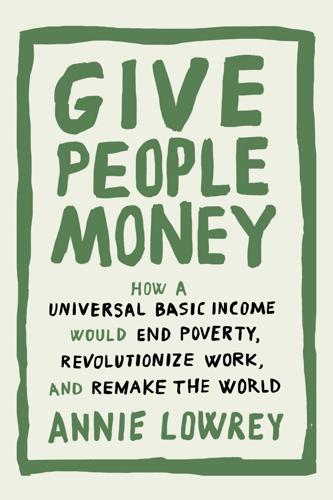
Give People Money
by
Annie Lowrey
Published 10 Jul 2018
* * * It goes as far back as the spear, the net, the plow. Man invents machine to make life easier; machine reduces the need for man’s toil. Man invents car; car puts buggy driver and farrier out of work. Man invents robot to help make car; robot puts man out of work. Man invents self-driving car; self-driving car puts truck driver out of work. The fancy economic term for this is “technological unemployment,” and it is a constant and a given. You did not need to go far from the auto show to see how the miracle of invention goes hand in hand with the tragedy of job destruction. You just need to take a look at its host city.
…
Heck, even throw in any number of construction and retail workers who move goods around, as well as the kid who delivers your pizza and the part-timer who schleps your groceries to your doorstep. President Barack Obama’s White House estimated that self-driving vehicles could wipe out between 2.2 and 3.1 million jobs. And self-driving cars are not the only technology on the horizon with the potential to dramatically reduce the need for human work. Today’s Cassandras are warning that there is scarcely a job out there that is not at risk. If you have recently heard of UBI, there is a good chance that it is because of these driverless cars and the intensifying concern about technological unemployment writ large.
…
“I don’t think we’re going to have a choice,” he said of a UBI. “I think it’s going to be necessary.” In Detroit, that risk felt ominously real. The question I wondered about as I wandered the halls of the Cobo Center and spoke with technology investors in Silicon Valley was not whether self-driving cars and other advanced technologies would start putting people out of work. It was when—and what would come next. The United States seems totally unprepared for a job-loss Armageddon. A UBI seemed to offer a way to ensure livelihoods, sustain the middle class, and guard against deprivation as extraordinary technological marvels transform our lives and change our world

Designing Great Data Products
by
Jeremy Howard
,
Mike Loukides
and
Margit Zwemer
Published 23 Mar 2012
We need to define the models we will need, such as physics models to predict the effects of steering, braking and acceleration, and pattern recognition algorithms to interpret data from the road signs. As one engineer on the Google self-driving car project put it in a recent Wired article, “We’re analyzing and predicting the world 20 times a second.” What gets lost in the quote is what happens as a result of that prediction. The vehicle needs to use a simulator to examine the results of the possible actions it could take. If it turns left now, will it hit that pedestrian? If it makes a right turn at 55 mph in these weather conditions, will it skid off the road? Merely predicting what will happen isn’t good enough. The self-driving car needs to take the next step: after simulating all the possibilities, it must optimize the results of the simulation to pick the best combination of acceleration and braking, steering and signaling, to get us safely to Santa Clara.
…
Engineers start by defining a clear objective: They want a car to drive safely from point A to point B without human intervention. Great predictive modeling is an important part of the solution, but it no longer stands on its own; as products become more sophisticated, it disappears into the plumbing. Someone using Google’s self-driving car is completely unaware of the hundreds (if not thousands) of models and the petabytes of data that make it work. But as data scientists build increasingly sophisticated products, they need a systematic design approach. We don’t claim that the Drivetrain Approach is the best or only method; our goal is to start a dialog within the data science and business communities to advance our collective vision.

Silicon City: San Francisco in the Long Shadow of the Valley
by
Cary McClelland
Published 8 Oct 2018
You look at the highway, if you take a picture, I think 92 percent of it is empty and only 8 percent is filled by cars, because humans are bad drivers and need all this safety distance between them. With a self-driving car, you could drive much more efficiently, faster and closer together with a lower accident rate. You don’t need parking. Look out of the window, a big part of the city is parking lots. You waste all this real estate in the best locations storing stuff that rusts. You can change urban architecture. It allows elderly people to participate in life because, when they can’t drive anymore, they get cut off from their friends. So, that vision for self-driving cars is great, but the part that’s really hard and, honestly, isn’t solved yet by any of the players, is to make it really robust and reliable.
…
They call it “the tipping point.” The only problem with the tipping point is you can only see it in the rearview mirror. HENDRIK DAHLKAMP He specializes in teaching machines how to see. Born and raised in Germany, he came to California to study computer science and landed a job at Google working on the self-driving car. He left to launch his own start-up out of his apartment in SoMa. The living room is flanked on two sides with floor-to-ceiling windows. You can look out in 180 degrees and see nothing but sky and city, like you are floating above San Francisco. You can see all the way to the highways—which are jammed solid with cars inching their way east to the Bay Bridge and south toward Google, Facebook, and the peninsula.
…
We put all of that data on a map: you could just click on any point and you saw the panorama of the street. The tech wasn’t all that complicated, but it made for a pretty cool demo because you click on any address and get immersed. You could hit a button and travel along the road. Larry Page, the CEO of Google, he loves self-driving cars. He’s a big alpha geek in technology. He actually came to the DARPA Grand Challenge. Half my team joined Google and quickly built up a fleet of these cars, not just one. We had a hundred cars in the country and four hundred worldwide. We turned the mapping function into a product that became Google Street View.
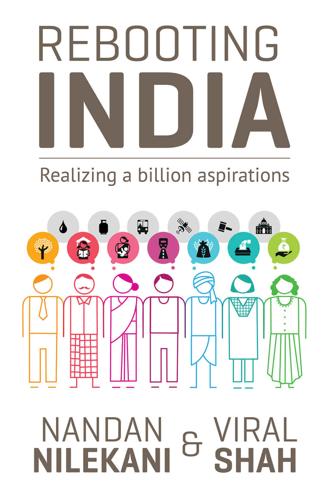
Rebooting India: Realizing a Billion Aspirations
by
Nandan Nilekani
Published 4 Feb 2016
http://archive.darpa.mil/grandchallenge05/ 16. Fisher, Adam. 18 September 2013. ‘Inside Google’s Quest To Popularize Self-Driving Cars’. Popular Science. http://www.popsci.com/cars/article/2013-09/google-self-driving-car Winkler, Rolfe, and Macmillan, Douglas. 2 February, 2015. ‘Uber Chases Google in Self-Driving Cars With Carnegie Mellon Deal’. Wall Street Journal. http://blogs.wsj.com/digits/2015/02/02/uber-chases-google-in-self-driving-cars/ Taylor, Edward, and Oreskovic, Alexei. 14 February 2015. ‘Apple studies self-driving car, auto industry source says’. Reuters. http://www.reuters.com/article/2015/02/14/us-apple-autos-idUSKBN0LI0IJ20150214. 17. 18 September 2014.
…
Through DARPA—coincidentally the agency that also birthed the internet—the US government has been funding such endeavours for over a decade.15 The underlying technology has now entered the commercial space; Google is testing self-driving cars using its Google Chauffeur platform, Uber has just announced an academic collaboration with Carnegie Mellon University to ‘develop driverless car and mapping technology’, and Apple is reportedly investigating technologies for building electric and self-driving cars.16 While we may not see a fleet of self-driving cars taking over our streets in the near future, it’s worthwhile to consider that various US state governments are already starting to pass laws that permit driverless cars to operate on state roads.17 Once again, government regulations need to anticipate innovation by keeping a close eye on emerging trends and assessing their potential impact and chances of widespread adoption.
…
In fact, the data generated by GSTN can be combined with data from various other e-commerce platforms, payment systems, and MCA21—a platform launched by the ministry of corporate affairs—to make a data-based credit assessment of a business. Data can also become the basis by which individuals are granted loans, thanks to new credit-scoring models that combine information from payment transactions, tax filings, social media activity, and so on. In the same way that a computer algorithm can end up giving us a self-driving car, so also algorithms can unlock credit for millions of people and small businesses. Finally, in the last six grand challenges, we extrapolate our learnings and experiences from the previous six. The use of technology already ensures free and fair elections in India today. As the Election Commission undertakes its stated goal of linking voter IDs to Aadhaar, the errors of inclusion and exclusion that plague our voter rolls and weaken our democracy can be fixed.

Mapmatics: How We Navigate the World Through Numbers
by
Paulina Rowinska
Published 5 Jun 2024
lidars, radars, cameras and other sensors: ‘How Autonomous Vehicles Work’, Waymo, n.d., accessed 7 June 2023, https://ltad.com/about/how-autonomous-vehicles-work.html#:~:text=LiDAR%20System,and%20return%20to%20the%20vehicle. stop signs and lane markers: ‘Waymo Driver’, Waymo, n.d., accessed 7 June 2023, https://waymo.com/waymo-driver/. manually added by engineers: Saket Sonekar, ‘Are HD Maps a Bottleneck for Self-Driving Cars?’, LinkedIn, 19 September 2021, https://www.linkedin.com/pulse/hd-maps-bottleneck-self-driving-cars-saket-sonekar/. to alter the map accurately: Divya Agarwal, ‘How SLAM Works for Self-Driving Cars: A Brief but Detailed Overview’, AutoVision News, 5 June 2020, https://www.autovision-news.com/adas/how-slam-works/. Index References in bold are to figures and tables. Aarhus, Denmark ref1 abstraction ref1 actuaries ref1n Adler, Hanna ref1 Afonso V of Portugal ref1 Air France Flight 447 ref1, ref2 airplane flight paths ref1, ref2, ref3 airplane wrecks, finding ref1, ref2 Alaska, USA ref1, ref2, ref3 Alexandria, Egypt ref1, ref2, ref3 algorithm ref1 Amsterdam, Netherlands ref1, ref2 ‘An Application of Geography to Mathematics’ (Rickey and Tuchinsky) ref1, ref2 analysis ref1n angles alternate interior ref1n azimuthal projections ref1, ref2, ref3, ref4 retroazimuthal projections ref1, ref2 sines ref1n Snell’s Law ref1, ref2 solstices and Earth’s circumference ref1, ref2 on spheres ref1, ref2 tangents ref1, ref2n triangulation ref1, ref2, ref3, ref4, ref5 trigonometry ref1, ref2, ref3, ref4, ref5n animated movies ref1, ref2 ant colonies ref1 Apian, Peter ref1 Appel, Kenneth ref1 arc minutes ref1n Aristotle ref1 astronomical observations ref1, ref2, ref3 autonomous cars ref1 azimuthal projections ref1, ref2, ref3, ref4, ref5, ref6, ref7 azimuths ref1, ref2, ref3, ref4 Baltimore phenomenon ref1 Barbara Petchenik Children’s World Map Drawing Competition ref1 Bartholdi III, John J. ref1 Bayes’ theorem ref1 Bayes, Thomas ref1 Bayesian search ref1, ref2 BBC ref1, ref2 Beck, Henry ref1, ref2, ref3 Behrmann, Walter ref1 Bell Labs, New Jersey, USA ref1, ref2, ref3 Berann, Heinrich ref1 Bergen-op-Zoom, Netherlands ref1 Bessel, Friedrich Wilhelm ref1 biomimetics ref1 Blostein, Dorothea ref1, ref2 Boeing Company ref1 Bolivar, Simón ref1 Bond, Henry ref1 Bonin, Pierre-Cédric ref1 Boston Gazette ref1 Boston Public Schools (BPS), Massachusetts, USA ref1, ref2 Brantingham, Patricia and Paul ref1 Broad Street, London, UK ref1, ref2 Brown, Oliver ref1 Brown vs Board of Education (USA) ref1 Budd, William ref1 Bureau d’Enquêtes et d’Analyses (BEA), France ref1 Büttner, J.
…
In 2009, Google took on the challenge of developing autonomous cars and, after less than a decade, any interested resident or visitor in Phoenix, Arizona, could hail a self-driving car with a simple click on an app. Today, fully autonomous taxis are a popular mode of transportation in Phoenix and San Francisco, due to their novelty, convenience, and low cost – although Sam points out that ‘you’re paying for it with the risk that it could kill you’. But they add that driverless cars seem to drive more safely than human drivers – if anything, the car will err on the side of caution, stopping completely when unsure how to proceed. To replace a human driver’s eyes, ears and thinking patterns, a self-driving car combines information from multiple sources.
…
In the same way, human drivers also feel much more comfortable driving in a familiar environment, where they can concentrate on watching out for pedestrians and surprising manoeuvres of fellow drivers instead of making decisions at every turn and intersection. It’s this overload of information that makes us much more tired after driving to a new holiday destination than after our daily commute. Before a self-driving car is allowed in a new part of the city, the whole area must be mapped in unprecedented detail. GPS usually provides the location down to a few metres, which is enough for everyday use, but autonomous cars need to know their surroundings down to the centimetre so they can precisely locate details such as kerbs, stop signs and lane markers.

The Network Imperative: How to Survive and Grow in the Age of Digital Business Models
by
Barry Libert
and
Megan Beck
Published 6 Jun 2016
Those assets sitting on a balance sheet seem costly to maintain compared with intangibles. The major auto companies, for example, had enormous real estate holdings, many of them factories. Managing and maintaining these holdings drained cash, diluted focus, made the automakers sclerotic, and became a hindrance to innovation. So who then is creating self-driving cars? Why, Apple and Google, of course. These great innovators have few tangible assets relative to their size, and yet they enjoy some of the highest equity values in the world. Starwood Hotels is another great example. With more than twelve hundred properties under management, Starwood is currently pursuing an asset-light strategy, selling about $1.5 billion in property from 2013 to 2015.
…
Lyft’s president John Zimmer stated, “We strongly believe that autonomous vehicle go-to-market strategy is through a network, not through individual car ownership.” According to executives at both GM and Lyft, they will start work on developing a network of self-driving vehicles—a challenge to Google, Tesla, and Uber, which are also devoting resources to this innovation.2 Openness Makes Space for Ongoing Change Will GM’s self-driving-car aspiration create value for the firm? Will its investment in Lyft lead to automotive leadership in ten years? We couldn’t say. But so far its openness to adaptation and new ideas shows potential for future growth and transformation. We’ve now reached the last of the principles to be considered for a network orchestrator business model, and it points us to the mental model.
…
We have talked about Facebook, but Google is another classic open organization. From its policy of encouraging employees to work 20 percent of their time on their own projects—whatever they think will benefit the company—to its mission to “organize the world’s information and make it universally accessible and useful,” to its eagerness to take on projects (such as self-driving cars and glucose-checking contact lenses) far outside its core competencies, it could be said that Google has openness in its DNA. In fact, Google has become so open that founders Larry Page and Sergey Brin have had to create a newer, bigger company—Alphabet—as a part of continuous business model innovation.

Futureproof: 9 Rules for Humans in the Age of Automation
by
Kevin Roose
Published 9 Mar 2021
Several years ago, when I started as a tech columnist for the Times, most of what I heard about AI mirrored my own optimistic views. I met with start-up founders and engineers in Silicon Valley who showed me how new advances in fields like deep learning were helping them build all kinds of world-improving tools: algorithms that could increase farmers’ crop yields, software that would help hospitals run more efficiently, self-driving cars that could shuttle us around while we took naps and watched Netflix. This was the euphoric peak of the AI hype cycle, a time when all of the American tech giants—Google, Facebook, Apple, Amazon, Microsoft—were pouring billions of dollars into developing new AI products and shoving machine learning algorithms into as many of their apps as possible.
…
My more tech-skeptical friends and colleagues generally approved. They’d been hearing the gloomy predictions about job-killing robots, and it worried them. They wanted me to confirm their fears of a looming automation crisis, and affirm their suspicions that even if AI didn’t cause mass unemployment, it would bring new harms—creepy surveillance, runaway self-driving cars, brain-melting social media apps—that would outweigh its benefits. Among people in Silicon Valley, though, more typical was the reaction I got from Aaron Levie, the CEO of the enterprise software company Box. “Oh God,” he said. “Please tell me you’re not writing one of those ‘robots are taking all the jobs’ books that makes everyone terrified and depressed.”
…
Maybe we’ll all want personal trainer robots to follow us around, reminding us to eat healthier and exercise more. Maybe we’ll have cities filled with connected sensors that can dynamically adjust traffic patterns to avoid congestion, or spot disease outbreaks by analyzing our wastewater. Maybe in addition to self-driving cars, we’ll build self-driving restaurants, which will shuttle us from place to place as we dine. All those new projects will require humans—not just to write the code, but to give the advice, install the sensors, and provide the hospitality. We’ve always been good at coming up with new, interesting work for ourselves as technology opens new doors, the optimists say, and our bottomless desires will keep us from running out of things to do

Life After Google: The Fall of Big Data and the Rise of the Blockchain Economy
by
George Gilder
Published 16 Jul 2018
As Claude Shannon showed, these success rates of 95 percent, or even 99.999 percent, are deceptive, because you have no way of telling which instances are the errors.6 The vast majority of the home loans in the mortgage crisis were sound, but because no one knew which ones were not, all the securities crashed. You don’t want that problem with self-driving cars. In a joint appearance in 2012 in Aspen, Peter Thiel chided Eric Schmidt: “You don’t have the slightest idea of what you are doing.” He pointed out that the company had amassed some $50 billion in cash at the time and was allowing it to sit in the bank at near-zero interest rates while its vast data centers still could not identify cats as well as a three-year-old could.7 Thiel is the leading critic of Silicon Valley’s prevailing philosophy of “inevitable” innovation.
…
That span, traveled in every step in the computation, is governed by the speed of light, which on a chip is around nine inches a nanosecond—a significant delay on chips that now bear as much as sixty miles of tiny wires. What Dally saw is that the serial computer has reached the end of the line. Most computers (smartphones and tablets and laptops and even self-driving cars) are not plugged into the wall any more. Even supercomputers and data centers suffer from power constraints, manifested in the problems of cooling the machines, whether by giant fans and air conditioners or by sites near rivers or glaciers. As Hölzle comments, “By classic definitions, there is little ‘work’ produced by a datacenter since most of the energy is converted to heat.”
…
Tegmark makes the case as well as it can be made that the attainments of AI programs—“Watson” the quiz-show winner and occasionally superior medical diagnostician; Big Blue the chess champion; Google’s DeepMind game players, which learned to outperform human players from scratch in dozens of electronic games; the face-recognizers; the natural language translators; the self-driving car programs—portend a super-intelligence that will someday be so superior to the human mind that we will no more comprehend its depths than a dog grasps the meaning of our own cerebrations. It is just a matter of time. Although shunning the dystopian interpretation, Kurzweil boldly offers a date: 2049.
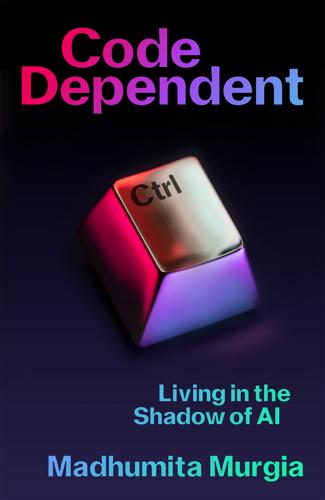
Code Dependent: Living in the Shadow of AI
by
Madhumita Murgia
Published 20 Mar 2024
It was a surreal loop. Armin had moved to hilly Pittsburgh from Berkeley in 2019, to take a job at a self-driving car company Argo.ai, a start-up funded by Ford and Volkswagen. He led the team that designed the user interface between human passengers and the autonomous vehicle. He spent hours with drivers inside cars, observing their behaviours, their gripes, their decision-making, and used that psychology to design the AI system’s responses. He was a human–machine translator. As he developed software for self-driving cars, Armin became aware that he was working on a two-tonne moving death-machine being tested on real roads, and a wrong line of code could literally kill someone.
…
In particular, this has led to the rise of a subtype of AI known as machine learning, and its descendent deep learning, methods of teaching computer software to spot statistical correlations in enormous pools of data – be they words, images, code or numbers. One way to spot patterns is to show AI models millions of labelled examples. This method requires humans to painstakingly label all this data so they can be analysed by computers. Without them, the algorithms that underpin self-driving cars or facial recognition remain blind. They cannot learn patterns. The algorithms built in this way now augment or stand in for human judgement in areas as varied as medicine, criminal justice, social welfare and mortgage and loan decisions. Generative AI, the latest iteration of AI software, can create words, code and images.
…
It also operates in Uganda and India, where its workers are more educated, but equally impoverished, part of a global precariat. The company serves a who’s who of corporate America – from Google, Facebook, Apple and Tesla, to Walmart, Nvidia, Ford and Microsoft. Benja, Ian and their colleagues have worked on Tesla’s self-driving cars, Walmart’s online product search, Apple’s Face ID and Instagram’s content filters. They even helped train AI chatbot ChatGPT, launched by OpenAI just over a year ago. In 2022, the company said it had lifted more than 50,000 people in East Africa out of poverty through digital work – this number includes dependents of their employees and those they trained but didn’t employ.5 It has an office in Uganda’s capital Kampala, but its second office in the country is in Gulu, a small town in the north of the country, ravaged for decades by the Lord’s Resistance Army – a violent guerrilla group that recruited child soldiers.

Collision Course: Carlos Ghosn and the Culture Wars That Upended an Auto Empire
by
Hans Gremeil
and
William Sposato
Published 15 Dec 2021
Reuters, “New-Energy Vehicles Make Major Inroads, Engineer Group Predicts,” Automotive News, October 29, 2020, https://www.autonews.com/china/new-energy-vehicles-make-major-inroads-engineer-group-predicts. 4. “VW Increases Spending on Electric Self-Driving Cars,” Automotive News Europe, November 13, 2020, https://europe.autonews.com/automakers/vw-increases-spending-electric-self-driving-cars. 5. H. Lutz, “GM Ups EV Spending, Says 40 U.S. Lineup Electric in 2025,” Automotive News, November 19, 2020, https://www.autonews.com/future-product/gm-ups-ev-spending-says-40-us-lineup-electric-2025. 6. LMC Electrification Automotive Sector Impact Report, “Global Personal Vehicle Outlook* by xEV Technology Type,” LMC Automotive, October 20, 2020, https://lmc-auto.com/wp-content/uploads/2020/10/LMC-ELECTRIFICATION-AUTOMOTIVE-SECTOR-IMPACT-REPORT-20TH-OCTOBER-2020.pdf?
…
He saw a future for electric vehicles while rivals were still dabbling in gasoline-electric hybrids. He wanted to leapfrog that halfway technology, then championed by archrival Toyota, and land straight into what he saw as a radical new future of zero emissions cars. And Ghosn stole a lead on the competitors again in 2013, when he declared that Nissan would develop self-driving cars and have them for sale in 2020. At the time, even high-end luxury brands such as Mercedes-Benz and BMW were offering just rudimentary driver-assist features that could only aid steering and braking at low speeds. Ghosn’s pledge that mass-market Nissans, of all brands, would be a world leader in cars that could navigate intersections by themselves while drivers sit back and relax set the industry abuzz.
…
“Certainly, electric vehicles. Arguably too early, before the rest of the world was ready. We were ridiculed by other manufacturers saying electric vehicles would never take off. And again, with autonomous driving. Nissan socialized that before any other mass-market provider.” High ambition for EVs and self-driving cars was a trademark of Ghosn’s leadership. So was his resolve in pursuing ever-bigger scale. He was one of the industry’s earliest and most vocal proselytizers of consolidation and mass volume. High technology and grand scale—ideally approaching ten million vehicles a year globally—went hand in hand.
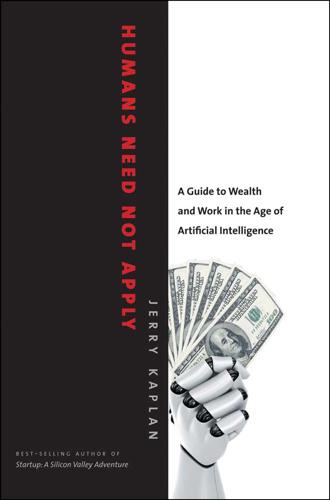
Humans Need Not Apply: A Guide to Wealth and Work in the Age of Artificial Intelligence
by
Jerry Kaplan
Published 3 Aug 2015
Imagine that my car is crossing a narrow bridge and a school bus full of children suddenly enters from the other side. The bridge can’t accommodate both vehicles, so to avoid destroying both it’s clear that one of them will have to go over the edge. Would I buy a car that is willing to sacrifice my life to save the children? Will the aggressiveness of a self-driving car become a selling point like gas mileage? Moral quandaries like this, no longer confined to the musings of philosophers, will urgently arrive on our courthouse steps. The emergence of synthetic intellects and forged laborers that act as our individual agents will raise a raft of practical conundrums.
…
Looking further to the future while staying rooted in today’s technologies, imagine the fire extinguishers, shrunk to the size of insects, digging themselves into miniature foxholes awaiting a command to spring into action. When summoned, they might self-assemble to form a protective dome or blanket around homes, infrastructure, even individual people. Research on concepts like this is active enough to have earned the name “swarm robotics.” Even self-driving cars aren’t going to be nearly as self-contained or autonomous as they appear. Standards for vehicles and roadside sensors to share information wirelessly, essentially becoming one interconnected system of eyes and ears, are close to completion. The U.S. Department of Transportation, among other institutions, is developing so-called V2V (vehicle to vehicle) communications protocols by piggybacking on the Federal Communications Commission’s allocation of radio spectrum for dedicated short-range communications (DSRC) specifically intended for automotive applications.
…
This same principle, appropriately generalized, can apply to just about any circumstance where electronic agents compete with humans—not just to lines. Do the participants differ in their ability, or the cost they pay, to access the resource? This question needs to be answered on a case-by-case basis, but the concept is clear. For instance, suppose I send my robot to move my car every two hours to avoid a parking ticket, or instruct my self-driving car to repark itself. Will we judge that cost sufficiently equivalent to doing it myself to consider it fair to those without a robotic driver or car to spare? What if it costs me as much to send the robot as it would for you to send your human administrative assistant? I contend that the brawl for the right to display an ad to you seems a lot fairer than having HFT programs participate in the securities markets.

The Singularity Is Nearer: When We Merge with AI
by
Ray Kurzweil
Published 25 Jun 2024
For further information on this rapid evolution, see Alex Davies, “An Oral History of the Darpa Grand Challenge, the Grueling Robot Race That Launched the Self-Driving Car,” Wired, August 3, 2017, https://www.wired.com/story/darpa-grand-challenge-2004-oral-history; Joshua Davies, “Say Hello to Stanley,” Wired, January 1, 2006, https://www.wired.com/2006/01/stanley; Ronan Glon and Stephen Edelstein, “The History of Self-Driving Cars,” Digitaltrends, July 31, 2020, https://www.digitaltrends.com/cars/history-of-self-driving-cars-milestones. BACK TO NOTE REFERENCE 1 Kristen Korosec, “Waymo’s Driverless Taxi Service Can Now Be Accessed on Google Maps,” TechCrunch, June 3, 2021, https://techcrunch.com/2021/06/03/waymos-driverless-taxi-service-can-now-be-accessed-on-google-maps; Rebecca Bellan, “Waymo Launches Robotaxi Service in San Francisco,” TechCrunch, August 24, 2021, https://techcrunch.com/2021/08/24/waymo-launches-robotaxi-service-in-san-francisco; Jonathan M.
…
BACK TO NOTE REFERENCE 157 Skip Descant, “Autonomous Vehicles to Have Huge Impact on Economy, Tech Sector,” Government Technology, June 27, 2018, https://www.govtech.com/fs/automation/Autonomous-Vehicles-to-Have-Huge-Impact-on-Economy-Tech-Sector.html; Kirsten Korosec, “Intel Predicts a $7 Trillion Self-Driving Future,” The Verge, June 1, 2017, https://www.theverge.com/2017/6/1/15725516/intel-7-trillion-dollar-self-driving-autonomous-cars; Adam Ozimek, “The Massive Economic Benefits of Self-Driving Cars,” Forbes, November 8, 2014, https://www.forbes.com/sites/modeledbehavior/2014/11/08/the-massive-economic-benefits-of-self-driving-cars/#723609f53273. BACK TO NOTE REFERENCE 158 An estimated 42,915 people died in traffic accidents on US roads in 2021. While there is ongoing debate about how much of this should be attributed to human error, it is clear that the overwhelming majority of crashes have human error as a key component—likely somewhere between 90 and 99 percent.
…
To address this, the Alphabet subsidiary Waymo created self-driving software for its autonomous cars but initially had a human monitor participate in all the rides.[89] Every aspect of these rides was recorded, and from that survey a very comprehensive simulator was created. Now that the actual vehicles have recorded well over 20 million miles (at the time of this writing),[90] simulated cars can travel billions of miles training in this realistic virtual space.[91] With the accumulation of this vast experience, an actual self-driving car will ultimately be able to perform much, much better than human drivers. Similarly, as described further in chapter 6, AI is using a range of novel simulation techniques to make better predictions about how proteins fold. This is one of the most challenging problems in biology and solving it is opening the door to discovering breakthrough medicines.

The Second Machine Age: Work, Progress, and Prosperity in a Time of Brilliant Technologies
by
Erik Brynjolfsson
and
Andrew McAfee
Published 20 Jan 2014
But our experience on the highway convinced us that it’s a viable approach for the large and growing set of everyday driving situations. Self-driving cars went from being the stuff of science fiction to on-the-road reality in a few short years. Cutting-edge research explaining why they were not coming anytime soon was outpaced by cutting-edge science and engineering that brought them into existence, again in the space of a few short years. This science and engineering accelerated rapidly, going from a debacle to a triumph in a little more than half a decade. Improvement in autonomous vehicles reminds us of Hemingway’s quote about how a man goes broke: “Gradually and then suddenly.”5 And self-driving cars are not an anomaly; they’re part of a broad, fascinating pattern.
…
Joseph Hooper, “DARPA’s Debacle in the Desert,” Popular Science, June 4, 2004, http://www.popsci.com/scitech/article/2004-06/darpa-grand-challenge-2004darpas-debacle-desert. 4. Mary Beth Griggs, “4 Questions About Google’s Self-Driving Car Crash,” Popular Mechanics, August 11, 2011, http://www.popularmechanics.com/cars/news/indus try/4-questions-about-googles-self-driving-car-crash; John Markoff, “Google Cars Drive Themselves, in Traffic,” New York Times, October 9, 2010, http://www.nytimes.com/2010/10/10/science/10google.html. 5. Ernest Hemingway, The Sun Also Rises (New York: HarperCollins, 2012), p. 72. 6.
…
According to an initial specification supplied by the agency, they will have to be able to drive a utility vehicle, remove debris blocking an entryway, climb a ladder, close a valve, and replace a pump.34 These seem like impossible requirements, but we’ve been assured by highly knowledgeable colleagues—ones competing in the DRC, in fact—that they’ll be met. Many saw the 2004 Grand Challenge as instrumental in accelerating progress with autonomous vehicles. There’s an excellent chance that the DRC will be similarly important at getting us past Moravec’s paradox. More Evidence That We’re at an Inflection Point Self-driving cars, Jeopardy! champion supercomputers, and a variety of useful robots have all appeared just in the past few years. And these innovations are not just lab demos; they’re showing off their skills and abilities in the messy real world. They contribute to the impression that we’re at an inflection point—a bend in the curve where many technologies that used to be found only in science fiction are becoming everyday reality.

Possible Minds: Twenty-Five Ways of Looking at AI
by
John Brockman
Published 19 Feb 2019
Indeed, it has been one of the tenets of the field that AI systems should be general purpose—i.e., capable of accepting a purpose as input and then achieving it—rather than special purpose, with their goal implicit in their design. For example, a self-driving car should accept a destination as input instead of having one fixed destination. However, some aspects of the car’s “driving purpose” are fixed, such as that it shouldn’t hit pedestrians. This is built directly into the car’s steering algorithms rather than being explicit: No self-driving car in existence today “knows” that pedestrians prefer not to be run over. Putting a purpose into a machine that optimizes its behavior according to clearly defined algorithms seems an admirable approach to ensuring that the machine’s “conduct will be carried out on principles acceptable to us!”
…
Each of these stages was heralded as a revolutionary advance over the limitations of its predecessors, yet all effectively do the same thing: They make inferences from observations. How these approaches relate can be understood by how they scale—that is, how their performance depends on the difficulty of the problem they’re addressing. Both a light switch and a self-driving car must determine their operators’ intentions, but the former has just two options to choose from, whereas the latter has many more. The AI-boom phases have started with promising examples in limited domains; the bust phases came with the failure of those demonstrations to handle the complexity of less-structured, practical problems.
…
The third problem that scaling solved for AI was coming up with the rules for reasoning without having to hire a programmer for each problem. Wiener recognized the role of feedback in machine learning, but he missed the key role of representation. It’s not possible to store all possible images in a self-driving car, or all possible sounds in a conversational computer; they have to be able to generalize from experience. The “deep” part of deep learning refers not to the (hoped-for) depth of insight but to the depth of the mathematical network layers used to make predictions. It turned out that a linear increase in network complexity led to an exponential increase in the expressive power of the network.
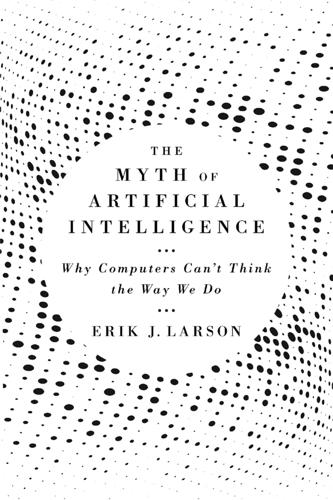
The Myth of Artificial Intelligence: Why Computers Can't Think the Way We Do
by
Erik J. Larson
Published 5 Apr 2021
Cluttering up photos with other images also results in severe degradation.7 A few irrelevant letters added to the red area of a stop sign are easily ignored by humans, but when an image altered in this way was presented to one deep learning system, it classified it as a speed limit sign. And there are similar real-world examples, including autonomous navigation systems on self-driving cars that have misclassified a school bus as a snowplow, and a turning truck as an overpass. Machine learning is inductive because it acquires knowledge from observation of data. The technique known as deep learning is a type of machine learning—a neural network—that has shown much promise in recognizing objects in photos, boosting performance on autonomous vehicles, and playing seemingly difficult games.
…
Time-series prediction has important applications in complex tasks like medical diagnosis, factory planning, and stock prediction, among others. Supervised learning accounts for nearly all the major successes in machine learning to date, including image or voice recognition, autonomous navigation with self-driving cars, and text classification and personalization strategies online. Unsupervised learning has the virtue of requiring significantly less data preparation, since labels aren’t added to training data by humans. But as a direct consequence of this loss of a human “signal,” unsupervised systems lag far behind their supervised cousins on real-world tasks.
…
“And the answer is, it’s still improving—but we are getting to the point where we get less benefit than we did in the past.”13 As of this writing, Norvig’s cautionary comments are seven years old. The ImageNet competitions probably can’t use more data—the best systems are now 98 percent accurate (using the standard test measure of getting a target label in a system’s top five predictions). But self-driving cars, once thought to be around the corner, are still in a heavy research phase, and no doubt part of the problem is the training data from labeled video feeds, which is not insufficient in volume but is inadequate to handle long tail problems with atypical driving scenarios that nonetheless must be factored in for safety.
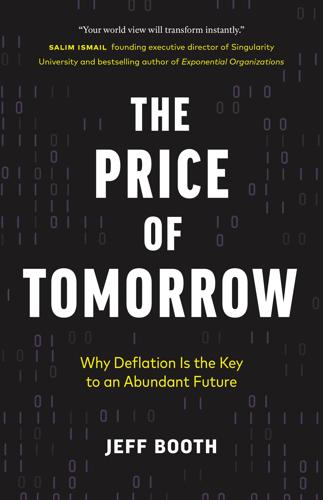
The Price of Tomorrow: Why Deflation Is the Key to an Abundant Future
by
Jeff Booth
Published 14 Jan 2020
How the Economy Works, Part II: Creative Destruction Out with the old, in with the new The BuildDirect journey The windows of opportunity The rise of the platforms On the eve of destruction 3. It Is Hard to Think Differently Building on weak foundations Two-speed thinking Myths we live by How do we overcome our errors? 4. The Technology Boom Doubling up Self-driving cars Virtual and augmented reality Additive manufacturing and 3D printing The coming sonic boom 5. The Future of Energy The laws of energy Let the sun shine in Changing the price of tomorrow 6. The Future of Intelligence The impact of artificial intelligence A brief history of intelligence The beginning of AI 7.
…
Remember that the underpinnings of the technology revolution are continuing to double. There are developments on the horizon that will make what we have now look primitive. And many of these technologies are not independent. They feed back to each other, which in turn drives more acceleration. For example, the same data captured through visualization in self-driving cars, drones, or robots provides more data to the network to learn faster. If it feels like it’s hard keeping up with the rate of progress today, just wait for what’s to come. Technological advances have been hugely beneficial, enhancing our ability to live our lives better. As we are seeing, though, most of our jobs today come from the same inefficiencies and waste that technology replaces over the longer term.
…
And all of it is undermining the very basis of our economies: growth and inflation. Let’s take a deeper look at three technologies that should be entering the mainstream in the not-too-distant future. You are likely very aware of these technologies, but because adoption is still quite early, beyond the hype, their impact on society so far has been limited. Self-driving cars We have come a long way since the first DARPA Grand Challenge launched in 2004 to spur development of the first fully autonomous ground vehicles. None of the entrants in that first contest even finished the race. Fifteen years later, the time is nearing when truly autonomous self-driving automobiles will start their march across industries.
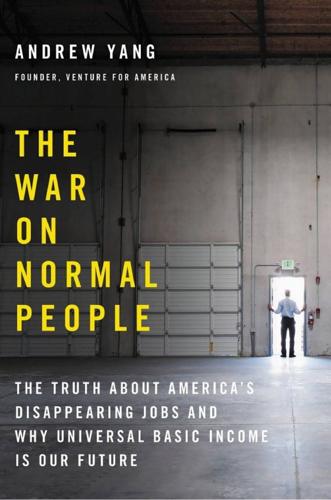
The War on Normal People: The Truth About America's Disappearing Jobs and Why Universal Basic Income Is Our Future
by
Andrew Yang
Published 2 Apr 2018
Rio Tinto has 73 autonomous mining trucks hauling iron ore 24 hours a day in Australia. Europe saw its first convoys of self-driving trucks cross the continent in 2016. In 2016 Uber bought the self-driving truck company Otto for $680 million and now employs 500 engineers to perfect the technology. Google spun off its self-driving car company Waymo, which is working on self-driving trucks with the big truck manufacturers Daimler and Volvo. Jim Scheinman, a venture capitalist at Maven Ventures who has backed startups in both autonomous trucks and cars, says that self-driving trucks will arrive significantly before cars because highway driving is so much easier.
…
Department of Transportation is throwing its full support behind development of autonomous vehicles as a way to improve safety on our roadways.” In 2016 the trucking industry spent $9.1 million on lobbying, and the Ohio government has already committed $15 million to set up a 35-mile stretch of highway outside Columbus for testing self-driving trucks. Arizona, California, and Nevada have begun allowing self-driving car trials in their states, and others will follow. Will truckers and the industry fight back? Back in the 1950s, truckers were highly unionized, with the Teamsters being legendary in their aggressiveness. Today, only about 13 percent of U.S. truckers are unionized, and 90 percent of the trucking industry is made up of small businesses with 10 or fewer trucks.
…
History repeats itself until it doesn’t. No one has an incentive to sound the alarm. To do so could make you seem uneducated and ignorant of history, and perhaps even negative and shrill. It also would make you right in this case. There has never been a computer smarter than humans until now. Self-driving cars are a different type of leap forward than the invention of cars themselves. Data is about to supplant human judgment. And on and on. It’s like the warning you get when investing—sometimes the past is not the best indicator of the present or future. It’s important also to remember that things got quite rough during the Industrial Revolution; in America this is the period between 1870 and 1914 when factories and assembly lines absorbed millions of workers before World War I.
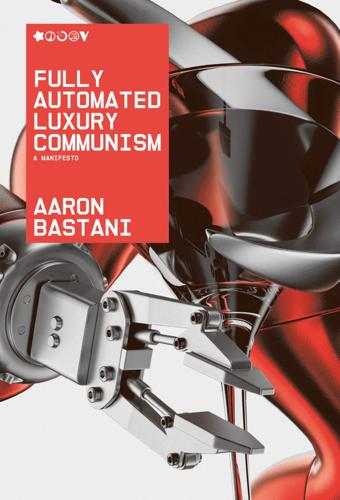
Fully Automated Luxury Communism
by
Aaron Bastani
Published 10 Jun 2019
‘Drivers Could Lose up to 25,000 Jobs per Month when Self-Driving Cars Hit, Goldman Sachs Says’. CNBC, 22 May 2017. Bomey, Nathan. ‘US Vehicle Deaths Topped 40,000 in 2017, National Safety Council Estimates’. USA Today, 15 February 2018. Darter, Michael. ‘DARPA’s Debacle in the Desert’. Popular Science, 4 June 2004. Dillow, Clay. ‘Revealed: Google’s Car Fleet Has Been Driving around Unmanned for 140,000 Miles Already’. Popular Science, 11 October 2010. Ford, Martin. The Rise of the Robots: Technology and the Threat of Mass Unemployment. Oneworld, 2017. Marshall, Aarian. ‘As Uber Flails, Its Self-driving Car Research Rolls On’.
…
While the challenge had been ambitious – after all, the point was to stretch the entrants’ abilities – few thought it would descend into such farce. One observer even labelled the episode ‘the debacle in the desert’. To any reasonable person the possibility of autonomous vehicles seemed decades away. And yet, just six years later in 2010, Google announced their self-driving cars had ‘logged in over 140,000 miles’ with seven test vehicles completing over 1,000 miles each without any human intervention – including difficult terrain like San Francisco’s notoriously steep Lombard Street. Since then the likes of Apple, Tesla and Uber have entered the game, not to mention the older incumbents of the automobile industry.
…
In the span of just eleven years the technology underpinning autonomous vehicles had improved so dramatically that they went from a totem of public ridicule to influencing the business models of some of the world’s most valuable companies. That is how exponential technologies work: ponderously at first, and then a sudden transformation – a tendency historically visible with personal computing, smartphones, the internet and soon the descendants of Atlas. For now, however, the technology that will turn self-driving cars from engineering possibility to background feature in our everyday lives remains to be perfected. Importantly, the way this challenge is being approached by the likes of Google and Uber offers an insight into how automation may diffuse across other parts of the economy and eliminate jobs. The strategy runs something like this: begin by acquiring massive amounts of data to allow algorithms to model and reproduce outcomes and work their way through highly repetitive tasks.
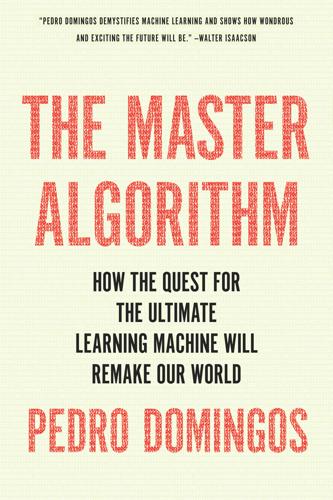
The Master Algorithm: How the Quest for the Ultimate Learning Machine Will Remake Our World
by
Pedro Domingos
Published 21 Sep 2015
The candidate with the best voter models wins, like Obama against Romney. Unmanned vehicles pilot themselves across land, sea, and air. No one programmed your tastes into the Amazon recommendation system; a learning algorithm figured them out on its own, by generalizing from your past purchases. Google’s self-driving car taught itself how to stay on the road; no engineer wrote an algorithm instructing it, step-by-step, how to get from A to B. No one knows how to program a car to drive, and no one needs to, because a car equipped with a learning algorithm picks it up by observing what the driver does. Machine learning is something new under the sun: a technology that builds itself.
…
We know how to drive cars and decipher handwriting, but these skills are subconscious; we’re not able to explain to a computer how to do these things. If we give a learner a sufficient number of examples of each, however, it will happily figure out how to do them on its own, at which point we can turn it loose. That’s how the post office reads zip codes, and that’s why self-driving cars are on the way. The power of machine learning is perhaps best explained by a low-tech analogy: farming. In an industrial society, goods are made in factories, which means that engineers have to figure out exactly how to assemble them from their parts, how to make those parts, and so on—all the way to raw materials.
…
In machine learning, knowledge is often in the form of statistical models, because most knowledge is statistical: all humans are mortal, but only 4 percent are Americans. Skills are often in the form of procedures: if the road curves left, turn the wheel left; if a deer jumps in front of you, slam on the brakes. (Unfortunately, as of this writing Google’s self-driving cars still confuse windblown plastic bags with deer.) Often, the procedures are quite simple, and it’s the knowledge at their core that’s complex. If you can tell which e-mails are spam, you know which ones to delete. If you can tell how good a board position in chess is, you know which move to make (the one that leads to the best position).

Exponential: How Accelerating Technology Is Leaving Us Behind and What to Do About It
by
Azeem Azhar
Published 6 Sep 2021
But those are big ifs. When our scientific understanding of a subject is still developing, predictions are sometimes little better than guesswork.22 Self-driving cars create similar, if rather smaller, headaches. In 2019, Elon Musk envisioned that Tesla, the car firm, would have a fleet of 1 million self-driving taxis, what he called ‘robo-taxis’, on the roads by the end of 2020.23 The actual number was zero. And Tesla is not alone. Every self-driving car company has missed its targets. It turns out that the problem is much harder, from a purely technical perspective, than the teams building the technologies were willing to acknowledge.
…
Sagaria, ‘Misperception of Exponential Growth’, Perception & Psychophysics, 18(6), November 1975, pp. 416–422 <https://doi.org/10.3758/BF03204114>. 14 Fernand Braudel, The Mediterranean and the Mediterranean World in the Age of Philip II (New York: Harper & Row, 1972), p. 20. 15 Pascal Boyer and Michael Bang Petersen, ‘Folk-Economic Beliefs: An Evolutionary Cognitive Model’, Behavioral and Brain Sciences, 41, 2018, E158 <https://doi.org/10.1017/S0140525X17001960>. 16 Duff McDonald, The Firm: The Story of McKinsey and Its Secret Influence on American Business (New York: Simon & Schuster, 2014), pp. 178–179. 17 ‘Planet of the Phones’, The Economist, 26 February 2015 <https://www.economist.com/leaders/2015/02/26/planet-of-the-phones> [accessed 15 March 2021]. 18 Simon Evans, ‘Solar Is Now “Cheapest Electricity in History”, Confirms IEA’, Carbon Brief, 13 October 2020 <https://www.carbonbrief.org/solar-is-now-cheapest-electricity-in-history-confirms-iea> [accessed 18 December 2020]. 19 Ray Kurzweil, The Age of Spiritual Machines: When Computers Exceed Human Intelligence (New York, NY: Penguin, 2000). 20 Suzana Herculano-Houzel, ‘The Human Brain in Numbers: A Linearly Scaled-up Primate Brain’, Frontiers in Human Neuroscience, 3 November 2009 <https://doi.org/10.3389/neuro.09.031.2009>. 21 Carl Zimmer, ‘100 Trillion Connections: New Efforts Probe and Map the Brain’s Detailed Architecture’, Scientific American, January 2011 <https://doi.org/10.1038/scientificamerican0111-58>. 22 Even if we could build a machine with the complexity of the human brain – comprising artificial rather than real neurons, and connections between them – it isn’t clear this would give rise to anything that can do what the human brain does. 23 Graham Rapier, ‘Elon Musk Says Tesla Will Have 1 Million Robo-Taxis on the Road Next Year, and Some People Think the Claim Is So Unrealistic That He’s Being Compared to PT Barnum’, Business Insider, 23 April 2019 <https://www.businessinsider.com/tesla-robo-taxis-elon-musk-pt-barnum-circus-2019-4> [accessed 11 January 2021]. 24 Andrew Barclay, ‘Why Is It So Hard to Make a Truly Self-Driving Car?’, South China Morning Post, 5 July 2018 <https://www.scmp.com/abacus/tech/article/3028605/why-it-so-hard-make-truly-self-driving-car> [accessed 11 January 2021]. 25 Rani Molla, ‘How Apple’s iPhone Changed the World: 10 Years in 10 Charts’, Vox, 26 June 2017 <https://www.vox.com/2017/6/26/15821652/iphone-apple-10-year-anniversary-launch-mobile-stats-smart-phone-steve-jobs> [accessed 22 July 2020]. 26 Ritwik Banerjee, Joydeep Bhattacharya and Priyama Majumdar, ‘Exponential-Growth Prediction Bias and Compliance with Safety Measures Related to COVID-19’, Social Science & Medicine, 268, January 2021, 113473 <https://doi.org/10.1016/j.socscimed.2020.113473>. 27 Robert C.
…
Katz, Christina Patterson, Chicago Booth and John Van Reenen, ‘The Fall of the Labor Share and the Rise of Superstar Firms’, The Quarterly Journal of Economics, 135(2), May 2020, pp. 645–709 <https://doi.org/10.1093/qje/qjaa004> Banerjee, Ritwik, Joydeep Bhattacharya and Priyama Majumdar, ‘Exponential-Growth Prediction Bias and Compliance with Safety Measures Related to COVID-19’, Social Science & Medicine, 268, January 2021, 113473 <https://doi.org/10.1016/j.socscimed.2020.113473> Barclay, Andrew, ‘Why Is It So Hard to Make a Truly Self-Driving Car?’, South China Morning Post, 5 July 2018 <https://www.scmp.com/abacus/tech/article/3028605/why-it-so-hard-make-truly-self-driving-car> [accessed 11 January 2021] Benson, Christopher L., Giorgio Triulzi, and Christopher L. Magee, ‘Is There a Moore’s Law for 3D Printing?’, 3D Printing and Additive Manufacturing, 5(1), March 2018, pp. 53–62 <https://doi.org/10.1089/3dp.2017.0041> Bessen, James, Learning by Doing: The Real Connection between Innovation, Wages, and Wealth (New Haven: Yale University Press, 2015) Biancotti, Claudia, ‘India’s Ill-Advised Pursuit of Data Localization’, Peterson Institute for International Economics, 9 December 2019 <https://www.piie.com/blogs/realtime-economic-issues-watch/indias-ill-advised-pursuit-data-localization> [accessed 20 March 2021] Bo, Marta, ‘Autonomous Weapons and the Responsibility Gap in Light of the Mens Rea of the War Crime of Attacking Civilians in the ICC Statute in Weapons and Targeting’, Journal of International Criminal Justice, 2021, mqab005 <https://doi.org/10.1093/jicj/mqab005> Bobier, Jean-François, Philipp Gerbert, Jens Burchardt, and Antoine Gourévich, ‘A Quantum Advantage in Fighting Climate Change’, BCG Global, 22 January 2020 <https://www.bcg.com/publications/2020/quantum-advantage-fighting-climate-change> [accessed 23 March 2021] Boyer, Pascal, and Michael Bang Petersen, ‘Folk-Economic Beliefs: An Evolutionary Cognitive Model’, Behavioral and Brain Sciences, 41, 2018, E158 <https://doi.org/10.1017/S0140525X17001960> Bradshaw, Samantha, and Philip N.
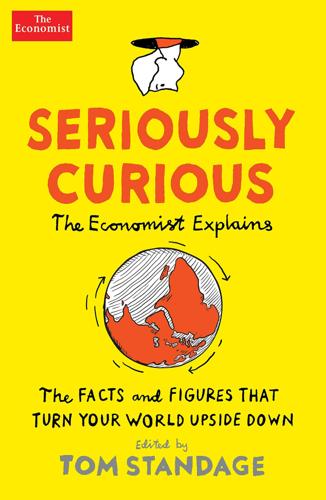
Seriously Curious: The Facts and Figures That Turn Our World Upside Down
by
Tom Standage
Published 27 Nov 2018
Why biggest isn’t fastest in the animal kingdom Geek speak: getting technical What is a brain-computer interface? The link between video games and unemployment What do robots do all day? Why 5G might be both faster and slower than previous wireless technologies Mobile phones are more common than electricity in much of sub-Saharan Africa Why self-driving cars will mostly be shared, not owned How ride-hailing apps reduce drink-driving What is augmented reality? Why we’re still waiting for the space elevator How astronomers spotted the first interstellar asteroid Why drones could pose a greater risk to aircraft than birds What is the point of spam e-mail?
…
At the Olympics, for example, many contestants were followed by 360-degree video cameras. At special venues sports fans could don virtual-reality goggles to put themselves right into the action. 5G is also supposed to become the connective tissue for the internet of things, interconnecting everything from smartphones and wireless sensors to industrial robots and self-driving cars. This will be made possible by a technique called “network slicing”, which allows operators to create bespoke networks that give each set of devices exactly the kind of connectivity they need to job a particular job. Despite its versatility, it is not clear how quickly 5G will take off. The biggest brake will be economic.
…
Mobile-money services, which enable people to send cash straight from their phones, have in effect created personal bank accounts that people can carry in their pockets. By one estimate, the M-Pesa mobile-money system alone lifted about 2% of Kenyan households out of poverty between 2008 and 2014. Technology cannot solve all of Africa’s problems, but it can help with some of them. Why self-driving cars will mostly be shared, not owned When will you be able to buy a driverless car that will work anywhere? This commonly asked question contains three assumptions: that autonomous vehicles (AVs) will resemble cars; that people will buy them; and that they will be capable of working on all roads in all conditions.

The Age of AI: And Our Human Future
by
Henry A Kissinger
,
Eric Schmidt
and
Daniel Huttenlocher
Published 2 Nov 2021
Both the quantity and coverage matter—training AIs on large quantities of highly similar images will result in neural networks that are incorrectly certain of an outcome because they have not encountered it before. In other high-stakes situations, similar underspecification can occur. For example, datasets for training self-driving cars may contain relatively few examples of extraordinary situations, such as when a deer leaps across the road, leaving the AI underspecified as to how to deal with such a scenario. Yet in such scenarios, the AI has to operate at peak levels. Alternatively, AI bias may result directly from human bias—that is, its training data may contain bias inherent in human actions.
…
Most AIs, though, train in a phase distinct from the operational phase: their learned models—the parameters of their neural networks—are static when they exit training. Because an AI’s evolution halts after training, humans can assess its capacities without fear that it will develop unexpected, undesired behaviors after it completes its tests. In other words, when the algorithm is fixed, a self-driving car trained to stop at red lights cannot suddenly “decide” to start running them. This property makes comprehensive testing and certifications possible—engineers may vet a self-driving AI’s behavior in a safe environment before uploading it into a car, where an error could cost lives. Of course, fixity does not mean that an AI will not behave unexpectedly when set in novel contexts—it simply means that pretesting is possible.
…
In many areas, from communication to commerce to security to human consciousness itself, AI will transform our lives and futures. We must all ensure that AI is not created in isolation—and accordingly, pay attention to both its potential benefits and its potential risks. CHAPTER 4 GLOBAL NETWORK PLATFORMS FICTIONAL VISIONS OF the future of AI technology tend to invoke images of sleek, fully automated self-driving cars and sentient robots that coexist with humans in homes and workplaces, conversing with their users with uncanny intelligence. Inspired by such science fiction scenes, popular conceptions of AI often involve machines that develop a seeming self-awareness, inevitably leading them to misunderstand, decline to obey, or eventually rise up against their human creators.
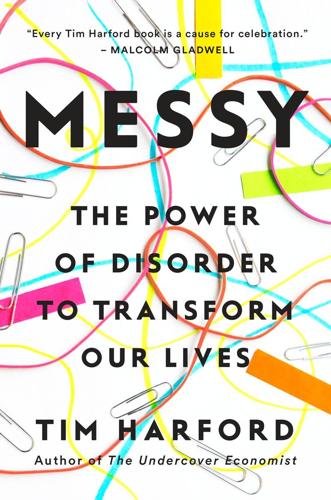
Messy: The Power of Disorder to Transform Our Lives
by
Tim Harford
Published 3 Oct 2016
Klein, Streetlights and Shadows, pp. 123–124. 19. “Will Self-Driving Cars Spell the End of the American Road Trip?” 99% Invisible (podcast), available on The Eye: Slate’s Design Blog, July 3, 2015, http://www.slate.com/blogs/the_eye/2015/07/03/self_driving_cars_and_the_paradox_of_automation_from_99_invisible.html. Raj Rajkumar’s comments below are from the same podcast. 20. Jack Stewart, “What May Be Self-Driving Cars’ Biggest Problem,” BBC Future, August 25, 2015, http://www.bbc.com/future/story/20150824-what-may-be-self-driving-cars-biggest-problem. 21. Cited in Langewiesche, “The Human Factor.” 22.
…
Once the veterans retire, the human expertise to intuit when the computer has screwed up will be lost forever.18 • • • We’ve seen the problems with GPS systems and with autopilot. Put the two ideas together, and you get the self-driving car. Chris Urmson, who runs Google’s self-driving car program, hopes that the cars will soon be so widely available that his sons will never need to have a driving license. (His oldest son will be sixteen in 2020—Urmson is in a hurry.) There’s a revealing implication in that target: that unlike a plane’s autopilot, a self-driving car will never need to cede control to a human being. True to form, Google’s autonomous vehicles have no steering wheel, though one hopes there will be some way to jump out if they start heading for the ocean.19 Not everyone thinks it is plausible for cars to be completely autonomous—or, at least, not soon enough for Urmson junior.
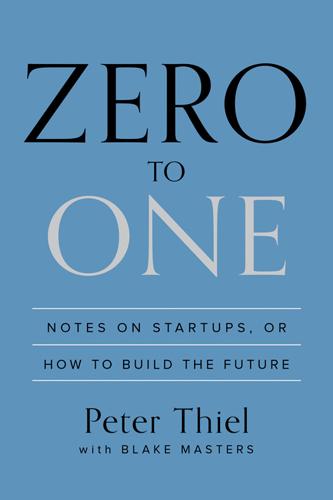
Zero to One: Notes on Startups, or How to Build the Future
by
Peter Thiel
and
Blake Masters
Published 15 Sep 2014
Computers already have enough power to outperform people in activities we used to think of as distinctively human. In 1997, IBM’s Deep Blue defeated world chess champion Garry Kasparov. Jeopardy!’s best-ever contestant, Ken Jennings, succumbed to IBM’s Watson in 2011. And Google’s self-driving cars are already on California roads today. Dale Earnhardt Jr. needn’t feel threatened by them, but the Guardian worries (on behalf of the millions of chauffeurs and cabbies in the world) that self-driving cars “could drive the next wave of unemployment.” Everyone expects computers to do more in the future—so much more that some wonder: 30 years from now, will there be anything left for people to do?
…
Non-monopolists exaggerate their distinction by defining their market as the intersection of various smaller markets: British food ∩ restaurant ∩ Palo Alto Rap star ∩ hackers ∩ sharks Monopolists, by contrast, disguise their monopoly by framing their market as the union of several large markets: search engine ∪ mobile phones ∪ wearable computers ∪ self-driving cars What does a monopolist’s union story look like in practice? Consider a statement from Google chairman Eric Schmidt’s testimony at a 2011 congressional hearing: We face an extremely competitive landscape in which consumers have a multitude of options to access information. Or, translated from PR-speak to plain English: Google is a small fish in a big pond.
…
Kaczynski, Ted Karim, Jawed Karp, Alex, 11.1, 12.1 Kasparov, Garry Katrina, Hurricane Kennedy, Anthony Kesey, Ken Kessler, Andy Kurzweil, Ray last mover, 11.1, 13.1 last mover advantage lean startup, 2.1, 6.1, 6.2 Levchin, Max, 4.1, 10.1, 12.1, 14.1 Levie, Aaron lifespan life tables LinkedIn, 5.1, 10.1, 12.1 Loiseau, Bernard Long-Term Capital Management (LTCM) Lord of the Rings (Tolkien) luck, 6.1, 6.2, 6.3, 6.4 Lucretius Lyft MacBook machine learning Madison, James Madrigal, Alexis Manhattan Project Manson, Charles manufacturing marginal cost marketing Marx, Karl, 4.1, 6.1, 6.2, 6.3 Masters, Blake, prf.1, 11.1 Mayer, Marissa Medicare Mercedes-Benz MiaSolé, 13.1, 13.2 Michelin Microsoft, 3.1, 3.2, 3.3, 4.1, 5.1, 14.1 mobile computing mobile credit card readers Mogadishu monopoly, monopolies, 3.1, 3.2, 3.3, 5.1, 7.1, 8.1 building of characteristics of in cleantech creative dynamism of new lies of profits of progress and sales and of Tesla Morrison, Jim Mosaic browser music recording industry Musk, Elon, 4.1, 6.1, 11.1, 13.1, 13.2, 13.3 Napster, 5.1, 14.1 NASA, 6.1, 11.1 NASDAQ, 2.1, 13.1 National Security Agency (NSA) natural gas natural secrets Navigator browser Netflix Netscape NetSecure network effects, 5.1, 5.2 New Economy, 2.1, 2.2 New York Times, 13.1, 14.1 New York Times Nietzsche, Friedrich Nokia nonprofits, 13.1, 13.2 Nosek, Luke, 9.1, 14.1 Nozick, Robert nutrition Oedipus, 14.1, 14.2 OfficeJet OmniBook online pet store market Oracle Outliers (Gladwell) ownership Packard, Dave Page, Larry Palantir, prf.1, 7.1, 10.1, 11.1, 12.1 PalmPilots, 2.1, 5.1, 11.1 Pan, Yu Panama Canal Pareto, Vilfredo Pareto principle Parker, Sean, 5.1, 14.1 Part-time employees patents path dependence PayPal, prf.1, 2.1, 3.1, 4.1, 4.2, 4.3, 5.1, 5.2, 5.3, 8.1, 9.1, 9.2, 10.1, 10.2, 10.3, 10.4, 11.1, 11.2, 12.1, 12.2, 14.1 founders of, 14.1 future cash flows of investors in “PayPal Mafia” PCs Pearce, Dave penicillin perfect competition, 3.1, 3.2 equilibrium of Perkins, Tom perk war Perot, Ross, 2.1, 12.1, 12.2 pessimism Petopia.com Pets.com, 4.1, 4.2 PetStore.com pharmaceutical companies philanthropy philosophy, indefinite physics planning, 2.1, 6.1, 6.2 progress without Plato politics, 6.1, 11.1 indefinite polling pollsters pollution portfolio, diversified possession power law, 7.1, 7.2, 7.3 of distribution of venture capital Power Sellers (eBay) Presley, Elvis Priceline.com Prince Procter & Gamble profits, 2.1, 3.1, 3.2, 3.3 progress, 6.1, 6.2 future of without planning proprietary technology, 5.1, 5.2, 13.1 public opinion public relations Pythagoras Q-Cells Rand, Ayn Rawls, John, 6.1, 6.2 Reber, John recession, of mid-1990 recruiting, 10.1, 12.1 recurrent collapse, bm1.1, bm1.2 renewable energy industrial index research and development resources, 12.1, bm1.1 restaurants, 3.1, 3.2, 5.1 risk risk aversion Romeo and Juliet (Shakespeare) Romulus and Remus Roosevelt, Theodore Royal Society Russia Sacks, David sales, 2.1, 11.1, 13.1 complex as hidden to non-customers personal Sandberg, Sheryl San Francisco Bay Area savings scale, economies of Scalia, Antonin scaling up scapegoats Schmidt, Eric search engines, prf.1, 3.1, 5.1 secrets, 8.1, 13.1 about people case for finding of looking for using self-driving cars service businesses service economy Shakespeare, William, 4.1, 7.1 Shark Tank Sharma, Suvi Shatner, William Siebel, Tom Siebel Systems Silicon Valley, 1.1, 2.1, 2.2, 2.3, 5.1, 5.2, 6.1, 7.1, 10.1, 11.1 Silver, Nate Simmons, Russel, 10.1, 14.1 singularity smartphones, 1.1, 12.1 social entrepreneurship Social Network, The social networks, prf.1, 5.1 Social Security software engineers software startups, 5.1, 6.1 solar energy, 13.1, 13.2, 13.3, 13.4 Solaria Solyndra, 13.1, 13.2, 13.3, 13.4, 13.5 South Korea space shuttle SpaceX, prf.1, 10.1, 11.1 Spears, Britney SpectraWatt, 13.1, 13.2 Spencer, Herbert, 6.1, 6.2 Square, 4.1, 6.1 Stanford Sleep Clinic startups, prf.1, 1.1, 5.1, 6.1, 6.2, 7.1 assigning responsibilities in cash flow at as cults disruption by during dot-com mania economies of scale and foundations of founder’s paradox in lessons of dot-com mania for power law in public relations in sales and staff of target market for uniform of venture capital and steam engine Stoppelman, Jeremy string theory strong AI substitution, complementarity vs.
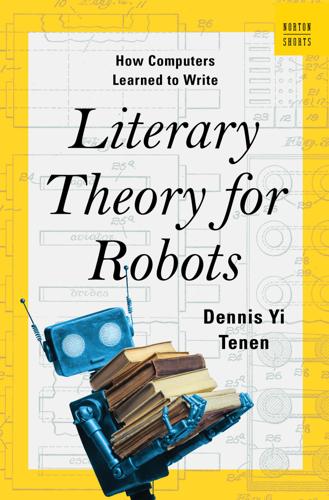
Literary Theory for Robots: How Computers Learned to Write
by
Dennis Yi Tenen
Published 6 Feb 2024
It does not, as we will see, amount to one thing but many: a talking library, a metaphor, a personification of a chorus. If we are to call it “intelligent,” it is intelligent in the way of a collective. It remembers like a family does. It thinks like a state. It understands like a corporation. Consider the self-driving car. An automobile consists of many connected subsystems: drivetrain, suspension, braking, steering, cabin control, and so on. Modern cars also contain numerous sensors, which monitor everything from speed to ambient temperature and driver alertness. Many of these subsystems exhibit intelligence in their own right.
…
How does a mere tool move into the subject position of the sentence—where it detects, devises, and masters—gaining a sense of agency and interiority in the process? Plenty of smart things don’t get to do that. Other less-intelligent ones readily conjure the image. Savvy marketeers understand that self-driving cars and smart houses make for compelling subjects, while automatic transmissions and toasters do not. Emergence somehow happens by the critical accumulation of smarts, where intelligence sometimes bubbles up, pulling along with it the more intangible silk of sentience, awareness, and conscience.
…
What does that mean literally? Who exactly is about to take your job? Reason it out. Chances are, it will become plural under scrutiny. You will find multiple specific entities, agents, persons, and organizations responsible. Like the passive voice, AI can be demystified in more careful phrasing. Chatbots and self-driving cars don’t originate from a single source. You will often hear something like “AI is bad at recognizing giraffes.” Ask: Which algorithm exactly? Does the “sort by date” function in my spreadsheet editor know or care about giraffes? Does the smart vacuum? Why are we considering all of them together, in the singular, as one intelligence?

The Internet Is Not the Answer
by
Andrew Keen
Published 5 Jan 2015
“Society is reshaping itself to fit the contours of the new computing infrastructure. The infrastructure orchestrates the instantaneous data exchanges that make fleets of self-driving cars and armies of killer robots possible. It provides the raw materials for the predictive algorithms that inform the decisions of individuals and groups. It underpins the automation of classrooms, libraries, hospitals, shops, churches, and homes.”24 With its massive investment in the development of intelligent labor-saving technologies like self-driving cars and killer robots, Google—which has imported Ray Kurzweil, the controversial evangelist of “singularity,” to direct its artificial intelligence engineering strategy25—is already invested in the building and management of the glass cage.
…
“The Internet,” Joi Ito, the director of the MIT Media Lab, notes, “is not a technology; it’s a belief system.”14 Everything and everyone are being connected in a network revolution that is radically disrupting every aspect of today’s world. Education, transportation, health care, finance, retail, and manufacturing are now being reinvented by Internet-based products such as self-driving cars, wearable computing devices, 3-D printers, personal health monitors, massive open online courses (MOOCs), peer-to-peer services like Airbnb and Uber, and currencies like Bitcoin. Revolutionary entrepreneurs like Sean Parker and Kevin Systrom are building this networked society on our behalf.
…
Google, for example, still prides itself as being an “uncompany,” a corporation without the traditional structures of power—even though the $400 billion leviathan is, as of June 2014, the world’s second most valuable corporation. It’s active and in some cases brutally powerful in industries as varied as online search, advertising, publishing, artificial intelligence, news, mobile operating systems, wearable computing, Internet browsers, video, and even—with its fledgling self-driving cars—the automobile industry. In the digital world, everyone wants to be an unbusiness. Amazon, the largest online store in the world and a notorious bully of small publishing companies, still thinks of itself as the scrappy “unstore.” Internet companies like the Amazon-owned shoe store Zappos, and Medium, an online magazine founded by billionaire Twitter founder Ev Williams, are run on so-called holacratic principles—a Silicon Valley version of communism where there are no hierarchies, except, of course, when it comes to wages and stock ownership.
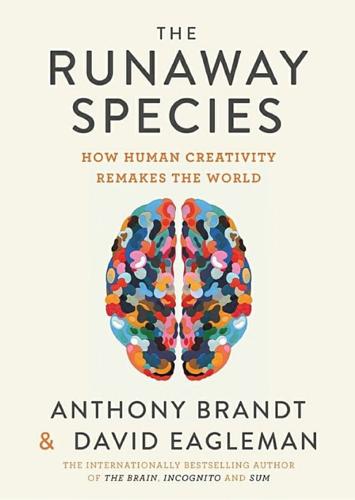
The Runaway Species: How Human Creativity Remakes the World
by
David Eagleman
and
Anthony Brandt
Published 30 Sep 2017
Likewise, it’s hard for us to imagine that some decades from now, our children may have their own self-driving cars. Your six-year-old child will be able to commute to school on her own: just strap her in and wave goodbye. Meanwhile, in case of an emergency, your own self-driving car could be turned into an ambulance: if your heart starts beating irregularly, the car’s built-in biological monitoring can detect it and reroute to the nearest hospital. And there’s no reason why you have to be the only one in the car. You could be picked up in a self-driving car and get a manipedi or a dental appointment while moving to your next destination: offices can be entirely mobile.
…
In recent decades, the world has found itself transitioning from a manufacturing economy to an information economy. But that is not where this road ends. As computers become better at digesting mountains of data, people are being freed up to work on other tasks. We’re already seeing the first glimpses of this new model: the creativity economy. Synthetic biologist, app developer, self-driving car designer, quantum computer designer, multimedia engineer – these are positions that didn’t exist when most of us were in school, and they represent the vanguard of what’s coming. When you grab your morning coffee ten years from now, you may be walking into a job that looks very different from the one you’re working now.
…
It’s not always about the particular solution, but instead about the variation. Why do humans adapt to everything around us so quickly? It’s because of a phenomenon known as repetition suppression. When your brain gets used to something, it displays less and less of a response each time it sees it. Imagine, for example, that you come across a new object – say, a self-driving car. The first time you see it, your brain shows a large response. It’s absorbing something new and registering it. The second time you see it, your brain shows slightly less response. It doesn’t care quite as much about it, because it’s not quite as novel. The third time: less response again. The fourth time: even less.

What to Think About Machines That Think: Today's Leading Thinkers on the Age of Machine Intelligence
by
John Brockman
Published 5 Oct 2015
In theory it could happen, but we have more pressing things to worry about. Once we put aside the sci-fi disaster plots, the possibility of advanced artificial intelligence is exhilarating—not just for the practical benefits, like the fantastic gains in safety, leisure, and environment-friendliness of self-driving cars but also for the philosophical possibilities. The computational Theory of Mind has never explained the existence of consciousness in the sense of first-person subjectivity (though it’s perfectly capable of explaining the existence of consciousness in the sense of accessible and reportable information).
…
First, and most simply, it matters because we regularly find ourselves in everyday situations where we need to know why. Why was I denied a loan? Why was my account blocked? Why did my condition suddenly get classified as “severe”? And sometimes we need to know why in cases where the machine made a mistake. Why did the self-driving car abruptly go off the road? It’s hard to troubleshoot problems when you don’t understand why they’re happening. There are deeper troubles, too; to talk about them, we need to understand more about how these algorithms work. They’re trained on massive quantities of data and they’re remarkably good at picking up on the subtle patterns these data contain.
…
Call the first “Humanoid Thinking,” or Humanoid AI, and the second “Alien Thinking,” or Alien AI. Almost all AI today is Humanoid Thinking. We use AI to solve problems too difficult, time-consuming, or boring for our limited brains to process: electrical-grid balancing, recommendation engines, self-driving cars, face recognition, trading algorithms, and the like. These artificial agents work in narrow domains with clear goals their human creators specify. Such AI aims to accomplish human objectives—often better, with fewer cognitive errors, distractions, outbursts of bad temper, or processing limitations.
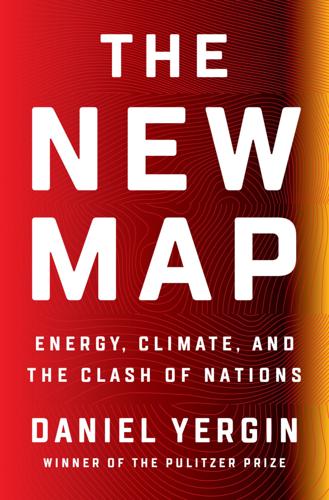
The New Map: Energy, Climate, and the Clash of Nations
by
Daniel Yergin
Published 14 Sep 2020
Page opened up the trunk of his car and pulled out the robot for Thrun to examine. Thrun quickly pulled together a team, and the robot was fixed.5 The decisive race was two years later—that 2007 Grand Challenge on that deserted Air Force base in Victorville, California. An empty desert was one thing. But could a self-driving car navigate the streets of an American city, even if it was a ghost city? Eleven teams made it into the 2007 competition, but once again it was Carnegie Mellon versus Stanford. Stanford’s team was back with a Volkswagen named “Junior,” after Leland Stanford Jr., for whom the university was named.
…
“There was no way, before 2000, to make something interesting,” Thrun said. “The sensors weren’t there, the computers weren’t there, and the mapping wasn’t there. Radar was a device on a hilltop that cost two hundred million dollars.”9 Even with all the competitors and competing visions, there is at least a consensus on the benchmarks for defining a self-driving car. The Society of Automotive Engineers has classified cars by level of automation. The first three levels go from “no automation” at Level 0 up to Level 3, which is cruise control and autopilot that controls acceleration under the supervision of the driver. Level 4 is “high automation”—capable of driving and monitoring the environment without human supervision but only in what is called a “geofenced area,” which might be a college campus, a central business district, or using the “pods” to go from Terminal 5 at Heathrow Airport to the business car park.
…
What happens if a vehicle goes to the wrong destination? Or if there is construction or an accident en route? Or weather causes a malfunction? Or the car has to make a decision whether to hit a person or crash on the side of the road? Since people are handing over control to a machine, in order to instill confidence these self-driving cars will have to function at much higher levels of performance than cars driven by humans. While millions of miles have now been driven by test driverless cars, humans drive more than eight billion miles every day in the United States. Will some groups create havoc by hacking the software in tens of thousands of cars?

The Industries of the Future
by
Alec Ross
Published 2 Feb 2016
Accidents are caused by the four Ds: Bilger, “Auto-Correct.” There remain many gaps: Lee Gomes, “Hidden Obstacles for Google’s Self-Driving Cars,” MIT Technology Review, August 28, 2014, http://www.technologyreview.com/news/530276/hidden-obstacles-for-googles-self-driving-cars/. Uber has already built: John Biggs, “Uber Opening Robotics Research Facility in Pittsburgh to Build Self-Driving Cars,” TechCrunch, February 2, 2015, http://techcrunch.com/2015/02/02/uber-opening-robotics-research-facility-in-pittsburgh-to-build-self-driving-cars/. At last count there were 162,037 active drivers: Emily Badger, “Now We Know How Many Drivers Uber Has—and Have a Better Idea of What They’re Making,” Washington Post, January 22, 2015, http://www.washingtonpost.com/blogs/wonkblog/wp/2015/01/22/now-we-know-many-drivers-uber-has-and-how-much-money-theyre-making%E2%80%8B/.
…
As Sebastian Thrun explained in a TED talk, his best friend was killed in a car accident, spurring his personal crusade to innovate the car accident out of existence: “I decided I’d dedicate my life to saving 1 million people every year.” Google has hired the former deputy director of the National Highway Traffic Safety Administration, Ron Medford, to be its director of safety for self-driving cars. Medford explained that Americans collectively drive approximately 3 trillion miles per year, and more than 30,000 people die in the process. Worldwide, those statistics are enormous; approximately 1.3 million people die every year in car crashes. Google, of course, also has an interest in allowing consumers to have more time on their hands—quite literally, to have their hands free.
…
This isn’t just about taxi drivers; the delivery driver may be replaced by Amazon’s airborne delivery drones or automated delivery trucks. UPS and Google are also testing their own versions of the delivery drone. Two and a half million people in the United States make their living from driving trucks, taxis, or buses, and all of them are vulnerable to displacement by self-driving cars. It’s hard to wrap your head around all the changes this might mean. I met the CEO of a company that develops high-tech access control systems (like the new parking garage system at the airport that tells you how many open spaces are available on each floor) and asked him what worries him about the future.

Don't Be Evil: How Big Tech Betrayed Its Founding Principles--And All of US
by
Rana Foroohar
Published 5 Nov 2019
The energy in the room, the excitement to simply be in the same space with the uber-Bro, was visceral. We all enjoyed the high-end snacks in the company canteen while Kalanick was peppered with questions about his career history, Uber’s new ventures into self-driving cars, and whether the company would ever consider augmenting its already hefty pay and benefits (self-driving-car engineers in the Valley can make around $2 million) by handing out perks like subsidized MBAs, as other larger tech firms do. “Oooh, it’s getting hot in here,” he quipped, to laughs and earnest nods of agreement around the room. But in another session, a somewhat different view of the company emerged.
…
With each buzz and beep of our phones, each automatically downloaded video, each new contact popping up in our digital networks, we get just a glimmer of a vast new world that is, frankly, beyond most people’s understanding, a bizarre land of information and misinformation, of trends and tweets, and of high-speed surveillance technology that has become the new normal. Just think: Russian election-hacking; hate-mongering Twitter feeds; identity theft; big data; fake news; online scams; digital addiction; self-driving car crashes; the rise of the robots; creepy facial recognition technology; Alexa eavesdropping on our every conversation; algorithms that watch us work, play, and sleep; and companies and governments that control them. The list of technology-driven social disruption is endless—and all of it has appeared in just the past few years.
…
Netflix, Amazon, and, even to a certain extent, Apple, who are relative newcomers to the entertainment business, are no longer content being the uncontested leaders in the video streaming market; now they are also dominant content producers, becoming in effect TV and movie studios, spending billions of dollars (in the case of Netflix and Amazon) on original television programming,42 a move that has left the previous titans of the entertainment business scrambling to match them (hence the recent massive industry mergers of AT&T and Time Warner). Google has lurched into the transportation business with its bid to create a self-driving car, and Facebook is trying to launch its own finance system with the creation of a bespoke cryptocurrency, Libra (Apple has already teamed up with Goldman Sachs on a credit card). Big Tech, in other words, doesn’t just want to become a leader in one sector. It wants to become the platform for everything, the operating system for your life.
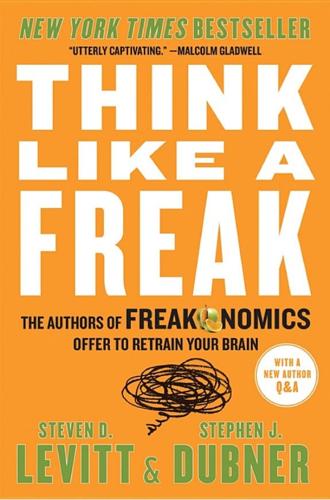
Think Like a Freak
by
Steven D. Levitt
and
Stephen J. Dubner
Published 11 May 2014
: See Robert Hornik, Lela Jacobsohn, Robert Orwin, Andrea Piesse, Graham Kalton, “Effects of the National Youth Anti-Drug Media Campaign on Youths,” American Journal of Public Health 98, no. 12 (December 2008). 174 SELF-DRIVING CARS: Among the many people who informed our thinking on the driverless-car future, we are especially indebted to Raj Rajkumar and his colleagues at Carnegie Mellon, who let us ride in their driverless vehicle and answered every question. / 175 Google has already driven its fleet of autonomous cars: See Angela Greiling Keane, “Google’s Self-Driving Cars Get Boost from U.S. Agency,” Bloomberg.com, May 30, 2013; “The Self-Driving Car Logs More Miles on New Wheels,” Google official blog, August 7, 2012. (Our text contains updated mile figures from a Google spokesperson as of October 2013.) / 174 Ninety percent of traffic deaths due to driver error: Per Bob Joop Goos, chairman of the International Organization for Road Accident Prevention; also per National Highway Traffic Safety Administration (NHTSA) statistics. / 174 Worldwide traffic deaths: Most of the statistics in this section are drawn from World Health Organization and NHTSA reports. / 175 In many U.S. cities, 30 to 40 percent of the downtown surface area is devoted to parking: See Stephen J.
…
Panaceas are almost nonexistent. If you paper over the shortcomings of your plan, that only gives your opponent reason to doubt the rest of it. Let’s say you’ve become a head-over-heels advocate for a new technology you think will change the world. Your argument goes like this: The era of the self-driving car—a.k.a. the driverless car, or autonomous vehicle—is just around the corner, and we should embrace it as vigorously as possible. It will save millions of lives and improve just about every facet of our society and economy. You could go on and on. You could talk about how the toughest challenge—the technology itself—has largely been conquered.
…
Wade, 93 Rolling Stone, 140 Romania, witches in, 30–31 Roth, David Lee, 152, 154 and game theory, 142–43 and King Solomon, 137–38, 142–43 and M&M clause, 141–42 and Van Halen, 137, 138, 140–42 running with the herd, 10, 112–15, 172 salt sensitivity, 76–77 Sargent, Thomas, 26–27 “Save to Win,” 99 savings: prize-linked (PLS) account, 98–99 rate of, 97–99 scams, 154–61 schoolteachers, early retirement of, 180–81 “Scramble for Africa,” 74 Seeger, Pete, 138 self-assessment, 27 self-driving car, 174–77 self-interest, 7 self-sterilizing surface, invention of, 194–95 Sen, Amartya, 66 separating equilibrium, 143, 154 September 11 attacks, 22, 161–62 seriousness, 96 shame, fear of, 6 Shaw, George Bernard, 10–11 shoes, selling, 128–30 Silva, Rohan, 12 simplicity, 94 Singer, Isaac Bashevis, “Why I Write for Children,” 104 slavery: and Caribbean blacks, 77 and salt sensitivity, 76–77 in South America, 74–77 Smile Pinki, 120 Smile Train, 119–24, 130 Smith, Adam, 58 Smith, Billie June, 99 soccer, penalty kick in, 3–7, 29 Soccer Boy, 119 social-gaming site, 100 social issues: and corruption, 66–67 experiments in, 39–40 incentives in, 112, 113 problem solving, 66–67 Society of Fellows, Harvard, 42 Solomon, King, 152, 165 and David Lee Roth, 137–38, 142–43 First Temple built by, 137 and game theory, 142–43 maternity dispute settled by, 58, 139–40, 154, 187 Solomon method, 58, 140n solution, “perfect,” 173–74 sophistication, 88n South America: colonialism in, 74 slavery in, 74–77 Spanish Prisoner, 156 speculation, 90 Spenkuch, Jörg, 71–72 SpinForGood.com, 100 sports: brain as critical organ in, 63 competitive eating, 62–64 expectations in, 64 training for, 62 tricking athletes into improvement, 63 Springsteen, Bruce, 208 Standards of Conduct Office, 184 starvation, causes of, 66–67 status quo, 10 status-quo bias, 206 stock markets, predictions of, 24–25, 29–30 stomach acid, 78, 79–80, 95 Stone, Alex, 101–3 storytelling, 181–88 anecdotes vs., 181–82 in the Bible, 185–88 data in, 182 and narcissism, 183 teaching via, 183 time frame in, 182 truth vs. falsity of, 182–83 suicide, 32–34 getting help, 34 impulse toward, 34 “no one left to blame” theory of, 33–34 sunk-cost fallacy, 191, 192, 199 Sunstein, Cass, 172 SuperFreakonomics, 11–12, 161, 164 swimming accidents, 91 table manners, Japanese, 57 talent: as overrated, 96 self-assessment of, 27 teacher quality, 50 Teach Your Garden to Weed Itself, 143, 145, 149, 154 Ten Commandments, 185–86 terrorists: and banks, 161–65 and education, 171 and life insurance, 163–65 Tetlock, Philip, 23–25, 171 Thaler, Richard, 172 thinking: big, 89 with different muscles, 8 like a child, 87, 92, 95, 100 like a Freak, 8, 10–11, 87 small, 88–92 time spent in, 10–11 Thomas, Sonya, 61 time frame, 182 total internal reflection, 195 tradition, 39, 78, 82 traffic accidents, 178–79 “transpoosion,” 87 trial by ordeal, 144–49, 154 tricks: fun in, 152 improving athletes via, 63 “Turn!

Gigged: The End of the Job and the Future of Work
by
Sarah Kessler
Published 11 Jun 2018
Workers and US Government Cheated Out of Billions in Stolen Wages and Lost Tax Revenue. National Employment Law Project. February 19, 2014. 2 Newton, Casey. Uber Will Eventually Replace All of Its Drivers with Self-Driving Cars. The Verge. May 28, 2014. https://hbr.org/2017/07/lots-of-employees-get-misclassified-as-contractors-heres-why-it-matters. 3 Kessler, Sarah. A Timeline of When Self-Driving Vehicles Will Be on the Road, According to the People Making Them. Quartz. March 29, 2017. https://qz.com/943899/a-timeline-of-when-self-driving-cars-will-be-on-the-road-according-to-the-people-making-them/. 4 McKinsey Global Institute. What the Future of Work Will Mean for Jobs, Skills, and Wages.
…
“The reason Uber could be expensive is because you’re not just paying for the car—you’re paying for the other dude in the car,” Travis Kalanick said on stage at a conference in 2014. “When there’s no other dude in the car, the cost of taking an Uber anywhere becomes cheaper than owning a vehicle.”2 Uber started picking up passengers in its first tests of self-driving cars in Pittsburgh in 2016. Toyota, Nissan, General Motors, and Google have all estimated that automated cars will be on the road by 2020.3 In the United States, 1.8 million people make a living driving trucks; another 687,000 drive buses; another 1.4 million deliver packages; and another 305,000 work as taxi drivers and chauffeurs.
…
See also retirement security Perez, Thomas Pollack, Ethan Postmates (courier delivery service) poverty Prehype (startup accelerator) Quartz (business news website) QuickTrip racism Reich, Robert remote talent workers retirement security 401(k) contingent workers and decline in economics and Honest Dollar (independent worker retirement savings) Managed by Q and Peers.org (sharing-economy support) pensions portable benefit programs Social Security traditional employees and ride-hailing services A-Ryde income of drivers Juno platform cooperativism and tips and See also Lyft; Uber Rolf, David Salehi, Niloufar Samaschool. See also Davenport, Terrence; Foster, Gary; Green, Shakira; Logan, Kristen Samasource Schneider, Nathan Scholz, Trebor Schwartz, Emma (Managed by Q employee) Schwarzenegger, Arnold Screen Actors Guild self-driving cars Shea, Katie Shieber, Jon Shyp (shipping service) sick days Silberman, Six Snapchat So Lo Mo (social, local, mobile) Social Security SpaceX Sprig (restaurant delivery service) Starbucks Stern, Andy Stocksy (stock photo cooperative) subcontractors Arise and earnings Managed by Q and Silicon Valley and Sundararajan, Arun Sweet, Julie SXSW (South by Southwest) Taft-Hartley Act Take Wonolo (staffing agency) Target TaskRabbit (odd job marketplace) taxi industry EU regulation and New York Taxi Workers Alliance tips and Uber and US statistics See also Lyft; ride-hailing services; Uber TechCrunch (blog) TechCrunch Disrupt temp workers and agencies early history of earnings freelancers versus injury rate Kelly Services (“Kelly Girls”) Manpower permanent employees versus Silicon Valley and “temp worker” as a category US statistics work satisfaction Teran, Dan Tischen (labor marketplace) Ton, Zeynep Trader Joe’s trucking industry Trudeau, Kevin Trump, Donald Try Caviar (food delivery service) Turker Nation (online forum) Turkopticon Twitch (live streaming video platform) Twitter Uber (ride-hailing service) 180 days of change affiliate marketing program driver-led activism and protests Drivers’ Guild and FTC charges of exaggerated earnings funding growth of guaranteed fares history of independent contractor model lawsuits and legal issues “No shifts.
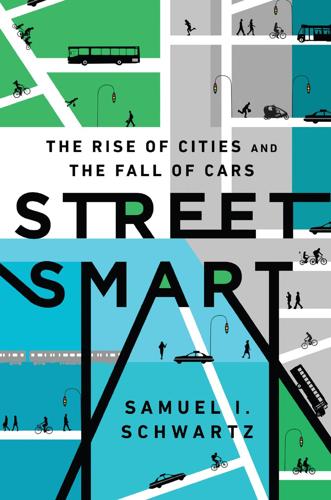
Street Smart: The Rise of Cities and the Fall of Cars
by
Samuel I. Schwartz
Published 17 Aug 2015
Even better: so long as more autonomy equals more safety, there is no point where the cost of the technology exceeds its added value. The most prominent player in the world of autonomous driving, though, isn’t Allstate or Geico. It isn’t Mercedes-Benz or Ford, or even Tesla. It’s Google. The Google Self-Driving Car is a project that the Internet giant saw as a natural outgrowth of its existing mapping software, particularly the technology from Google Street View, which stitches together panoramic photos of more than five million miles of roads in more than forty countries. Google’s versions of the driverless car—refitted Toyotas, Audis, and Lexuses—combine real-time access to all that data with a laser rangefinder that creates and refreshes three-dimensional maps of the area immediately around the car.
…
Transit riders use more than 20 percent more calories than drivers on a per-trip basis, which gives buses, subways, and streetcars a giant health advantage over cars. In fact, after five years of taking transit, the obese percentage of a given population—those with a Body Mass Index greater than 30—drops by more than half. And, as long as cities create plazas and piazzas where cars are banned but not people, self-driving cars offer no advantage, even without recognizing the mathematical impossibility of moving thousands of people through a city center in single-occupant vehicles. This doesn’t mean there isn’t a place for cars, with or without laser-rangefinders and GPS mapping. In less dense parts of cities, suburbs, and rural areas, all the safety aspects developed by automated cars make sense.
…
A group of simulated driverless cars negotiating a typical urban intersection at the same (slow) acceleration of a commuter train increases the time needed to cross the intersection by anywhere from 36 percent to more than 2,000 percent. If you want to browse the Internet while commuting, and still want to get to work on time, trains look like a much better option. There are other reasons to be suspicious of the brave new world represented by Google’s self-driving cars and others of similar ambition. On a purely personal level, I’m a little taken aback by the promise that autonomous vehicles will be able to collect you at your front door and deposit you at the front door of a supermarket or shopping mall—or even at your desk or workstation—without your feet ever touching the ground.

The Future Is Faster Than You Think: How Converging Technologies Are Transforming Business, Industries, and Our Lives
by
Peter H. Diamandis
and
Steven Kotler
Published 28 Jan 2020
Right now, the system is an array of cameras and GPS sensors, but soon models will include microphones, speakers, and the ability—via AI-driven natural language processing—to communicate with customers. Since 2016, Starship has carried out fifty thousand deliveries in over one hundred cities in twenty countries. Along similar lines, Nuro, the company cofounded by Jiajun Zhu, one of the engineers who helped Google develop their self-driving car, has a miniature self-driving car of their own. Half the size of a sedan, the Nuro looks like a toaster on wheels, except with a mission. This toaster has been designed to carry cargo—about twelve bags of groceries (version 2.0 will carry twenty)—which it’s been doing for select Kroger stores since 2018 (in 2019, Domino’s also partnered with Nuro).
…
Next, Holden went to another startup, Groupon—which is hard to remember as a disruptive enterprise today, but was then part of the first wave of “power to the people” internet companies. From there, he went to Uber, where, despite the turmoil the company experienced, Holden strung together a series of unlikely wins: UberPool, Uber Eats, and, most recently, Uber’s self-driving car program. So when he proposed an even zanier product line—that Uber take to the skies—it wasn’t all that surprising that the company’s leadership took him seriously. And for good reason. The theme of the second annual Uber Elevate wasn’t actually flying cars. The cars have already arrived. Instead, the theme of the second Uber Elevate was the path to scale.
…
Traditional automotive players like BMW, Mercedes and Toyota were competing for this emerging market with tech giants like Apple, Google (via Waymo), Uber, and Tesla, trying out different designs, gathering data, and honing neural networks. Out of these, Waymo seems well positioned for early market dominance. Formerly Google’s self-driving car project, Waymo began its work in 2009 by hiring Sebastian Thrun, the Stanford professor who won the DARPA Grand Challenge. Thrun helped develop the AI system that would become the brains behind Waymo’s self-driving fleet. About ten years later, in March 2018, Waymo purchased that fleet, buying twenty thousand sporty, self-driving Jaguars for its forthcoming ride-hailing service.

Uncanny Valley: A Memoir
by
Anna Wiener
Published 14 Jan 2020
A social network everyone said they hated but no one could stop logging in to went public at a valuation of one-hundred-odd billion dollars, its grinning founder ringing the opening bell over video chat, a death knell for affordable rent in San Francisco. Two hundred million people signed on to a microblogging platform that helped them feel close to celebrities and other strangers they’d loathe in real life. Artificial intelligence and virtual reality were coming into vogue, again. Self-driving cars were considered inevitable. Everything was moving to mobile. Everything was up in the cloud. The cloud was an unmarked data center in the middle of Texas or Cork or Bavaria, but nobody cared. Everyone trusted it anyway. It was a year of new optimism: the optimism of no hurdles, no limits, no bad ideas.
…
Instead, the men discussed work projects using secret code names. They discussed their graduate research. One had spent seven years trying to teach robots to tie different kinds of knots, like Boy Scouts. I asked if he was studying robotics at one of the universities in the Bay Area. No, he said, looking me up and down—he was a professor. Talk turned to self-driving cars. One of the engineers mentioned a recent Take Your Child to Work Day, where the autonomous-car unit had asked visiting children to jump and dance and roll around in front of the sensors. The technology was world-class, but it still needed to train on nonadults. It was an incredibly exciting moment for transportation, he said: the hurdles they faced weren’t technical, but cultural.
…
I wanted attention, some acknowledgment. I wanted to make sure everyone knew I wasn’t just some engineer’s girlfriend who stood around at parties waiting for him to finish geeking out—though of course that’s exactly what I was doing. I was skeptical, I told the men. The media hype seemed more than overblown: self-driving cars were part of a future vision that seemed not just unlikely, but beyond fantasy. Hadn’t we just established that the cars didn’t even know how to identify children? The group turned toward me. The scout-leader professor looked amused. “What did you say you do?” one of the men asked. I explained that I worked at a mobile analytics company, hoping they would assume I was an engineer.
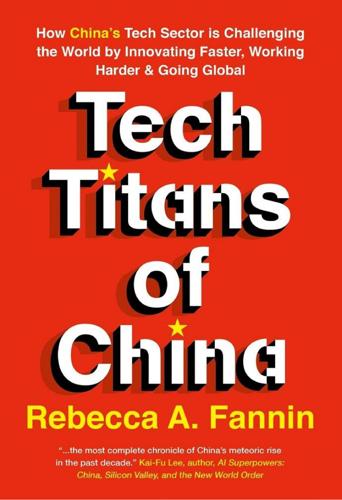
Tech Titans of China: How China's Tech Sector Is Challenging the World by Innovating Faster, Working Harder, and Going Global
by
Rebecca Fannin
Published 2 Sep 2019
—Gary Rieschel Founding managing partner, Qiming Venture Partners Rieschel knows full well the key factors driving China’s push to win the global tech race, from working and living in Shanghai for eight years on the front lines of China’s techno-charged environment. China’s workaholic, determined entrepreneurs are quick to get new technologies commercialized. Chinese people voraciously embrace the latest apps, games, payment services, social media, and online shopping. Venture capitalists fund cutting-edge startups in artificial intelligence, self-driving cars, electric vehicle batteries, biotech, robotics, drones, and augmented and virtual reality. China’s huge digital markets—the world’s largest for the internet, smartphones, e-commerce, and mobile payments—are spurring advancements that go mainstream quickly. Not least of all, the Chinese government’s protectionism and concerted nationalistic policies propel China to become a world-leading innovative country.
…
Like Mark Zuckerberg, Jeff Bezos, and Larry Page, who confront a tech backlash and constant challenges to their clout, China’s leaders face daunting issues that could weaken them: privacy concerns, counterfeit charges, restrictions on their most addictive products, and competitive threats. Baidu faces a possible reentry of Google to the Middle Kingdom some 10 years after googling didn’t knock out China’s search leader. Baidu’s bid to own the future for AI with self-driving cars and facial recognition for payments is uncertain after Li lost two experts in a row who were leading Baidu’s AI charge while rivals chip into the sector: Alibaba in smart-city traffic management, Tencent in medical imaging and diagnostic tools, and startups SenseTime and Face++ with AI-enhanced face-matching technologies for IDs and public security.
…
The New York City Police Department is reportedly monitoring citizens using cameras and facial recognition software developed in China, from SenseTime partner Hikvision.1 In the United States, tech giants Google, Microsoft, Amazon, Facebook, and IBM dominate AI for many futuristic and practical uses. Google self-driving cars are being tested on California’s Highway 101; Facebook spins out posts based on deep learning of content preferences; Amazon’s Alexa powers lights, TVs, and speakers by voice activation; and Microsoft’s Azure relies on cognitive computing for speech and language applications, while IBM Watson’s AI-based computer system increases productivity and improves customer service for call centers, production lines, and warehouses.
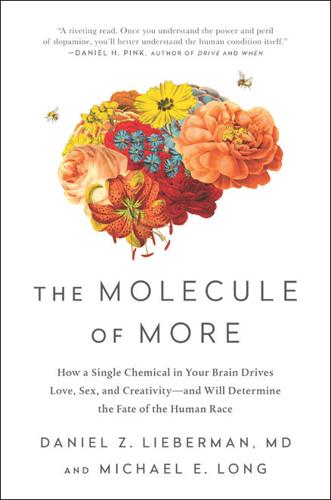
The Molecule of More: How a Single Chemical in Your Brain Drives Love, Sex, and Creativityand Will Det Ermine the Fate of the Human Race
by
Daniel Z. Lieberman
and
Michael E. Long
Published 13 Aug 2018
Whether a person chooses one outcome or the other partly depends on activity within the dopamine circuits. HARD DECISIONS IN THE REAL WORLD This problem is more than just theoretical; it confronts developers of self-driving cars. If a fatal crash between two cars is inevitable, what should the self-driving car be programmed to do? Should it swerve in one direction to protect the life of its owner, or should it swerve in the opposite direction, killing its owner, if fewer people in the other car will die? Consumer tip: If you’re in the market for a self-driving car, ask the salesperson how it’s been programmed. Another example of the problem was depicted in the 2016 film Eye in the Sky.
…
See also schizophrenia psychotherapy, 100–105, 124 radishes-and-cookies challenge, 96–98 Raskin, Aza, 218 rats, experiments with, 4–5, 33, 66–68, 103 Reagan, Ronald, 76 Reed, Lou, 190 Reich, Frank, 74 relationships affiliative, 76, 201, 213, 222 agentic, 75–77 and empathy, 135–136 and Here and Now neurotransmitters (H&Ns), 104, 135–139 importance of, 104–105, 201 and 7R allele, 187 religious beliefs and teachings, 22, 151, 160, 194, 198 replacement fertility, 206–207 reward circuit, 3–7 reward prediction error, 6–7, 12, 23, 38, 44–45, 53–55, 102, 215 Richards, Keith, 133 risk management, 164–165 Ritalin, 81 Rock, Chris, 150 Romney, Mitt, 150, 155, 173 salience, 113–114, 116, 126, 163 same-sex marriage, acceptance of, 173 schizoaffective disorder, 141 schizophrenia antipsychotics for, 112–116 and creativity, 126, 138–141, 189 and dopamine, 112–113, 189 dopamine, blocking, 114–116 and dreams, 129 genetics, 138 low latent inhibition, 116–119 primary thought process, 128 and salience, 113–114, 116 symptoms of, 111–112 tangentiality, 119 word salad, 120 Schopenhauer, Arthur, 128–129 Schultz, Wolfram, 5 Schulz, Charles, 138 science and art, 134–135 Scientific Games, 12 Seinfeld, Jerry, 150 self-control. See willpower self-driving cars, 96 self-efficacy, 69–74, 106, 221 serotonin, 16–17, 168–169, 212. See also Here and Now neurotransmitters (H&Ns) 7R allele, 154–155, 185–189. See also genetics sex. See also pornography and companionate love, 18, 158 daydreaming during, 21 and dopamine, 20–21 hypersexuality, 48–50 marriage, waiting for, 22 sexual attraction and testosterone, 19–20 sexual desire, 19–22 stages of, 20 sex addiction, 37, 51–53.
…
See also change effects of, 187 and multitasking, 218 submissiveness and agentic relationships, 76–77 courtesy, 78 and dopamine control circuit, 77–78, 106 nonverbal displays of, 71–73 Sullivan, William, 171 tangentiality, 119 Taylor, Derek, 141 technology. See also computers artificial intelligence (AI), 204–205 and gratification of needs and desires, 205–206 pace of, 202, 204 self-driving cars, 96 video games, 53–56 virtual reality (VR), 207–208 tenacity, 65–69, 78, 96–97, 105 Tesla, Nikola, 139 testosterone, 18–20, 22, 158 Thematic Apperception Test (TAT), 129–130 Tocqueville, Alexis de, 194–195 Trading Places (film), 213 transcranial direct current stimulation (tDCS), 127 trolley problem, 94–96, 169, 174 Trollope, Anthony, 89 Truman, Harry, 176 Turner, Ted, 190 twelve-step facilitation therapy, 39, 100, 104–105 ultimatum game, 168–169 underdogs and comebacks, 73–74 United States bipolar disorder in, 192–194.
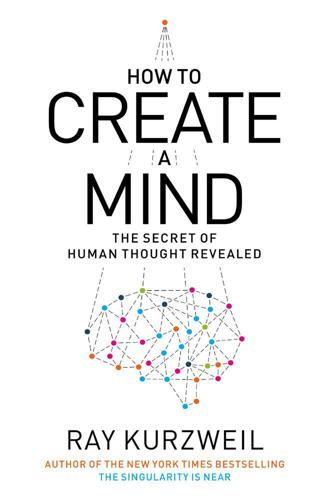
How to Create a Mind: The Secret of Human Thought Revealed
by
Ray Kurzweil
Published 13 Nov 2012
Calculations per second per (constant) thousand dollars of different computing devices.10 Floating-point operations per second of different supercomputers.11 Transistors per chip for different Intel processors.12 Bits per dollar for dynamic random access memory chips.13 Bits per dollar for random access memory chips.14 The average price per transistor in dollars.15 The total number of bits of random access memory shipped each year.16 Bits per dollar (in constant 2000 dollars) for magnetic data storage.17 Even the predictions that were “wrong” were not all wrong. For example, I judged my prediction that we would have self-driving cars to be wrong, even though Google has demonstrated self-driving cars, and even though in October 2010 four driverless electric vans successfully concluded a 13,000-kilometer test drive from Italy to China.18 Experts in the field currently predict that these technologies will be routinely available to consumers by the end of this decade.
…
People are already talking to their phones in natural language (via Siri, for example, which was also contributed to by Nuance). These natural-language assistants will rapidly become more intelligent as they utilize more of the Watson-like methods and as Watson itself continues to improve. The Google self-driving cars have logged 200,000 miles in the busy cities and towns of California (a figure that will undoubtedly be much higher by the time this book hits the real and virtual shelves). There are many other examples of artificial intelligence in today’s world, and a great deal more on the horizon. As further examples of the LOAR, the spatial resolution of brain scanning and the amount of data we are gathering on the brain are doubling every year.
…
If all the AI systems decided to go on strike tomorrow, our civilization would be crippled: We couldn’t get money from our bank, and indeed, our money would disappear; communication, transportation, and manufacturing would all grind to a halt. Fortunately, our intelligent machines are not yet intelligent enough to organize such a conspiracy. What is new in AI today is the viscerally impressive nature of publicly available examples. For example, consider Google’s self-driving cars (which as of this writing have gone over 200,000 miles in cities and towns), a technology that will lead to significantly fewer crashes, increased capacity of roads, alleviating the requirement of humans to perform the chore of driving, and many other benefits. Driverless cars are actually already legal to operate on public roads in Nevada with some restrictions, although widespread usage by the public throughout the world is not expected until late in this decade.
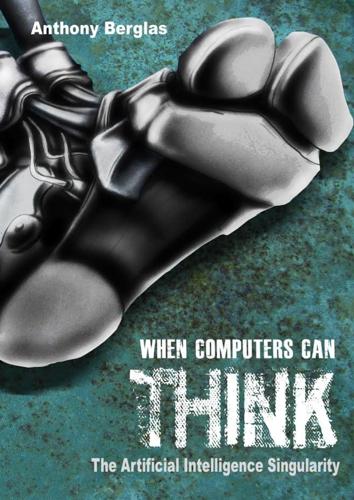
When Computers Can Think: The Artificial Intelligence Singularity
by
Anthony Berglas
,
William Black
,
Samantha Thalind
,
Max Scratchmann
and
Michelle Estes
Published 28 Feb 2015
There is no need nor reason to give most of them a humanoid shape, although humanoid robots also exist.) Mine sites can be controlled fairly tightly, but robots are now working in much more natural and unstructured environments. The first of these technologies that is likely to have widespread impact is self driving cars and trucks. Google self driving car. News www.mirror.co.uk The famous Google driverless car can negotiate urban traffic autonomously, and is purported to have covered 500,000 kilometres with only one accident caused by another car running into it from behind. What that really means is unclear because the cars also have drivers that could take over if the computer was about to cause an accident.
…
Computers note your licence plate when you drive down the road, and much of your day to day communication is via computer networks that are carefully monitored. The computers that do this are locked away in secure data centres so you personally cannot turn them any of them off. More directly, robots in many shapes and sizes will soon be leaving the factory. Initially, there will be self driving cars and automated cleaners, fruit pickers, and systems for maintaining racks of computers in data centres. Computers already fly military drones and the military is investing heavily in semi-autonomous robot soldiers. By the time computers become truly intelligent they will be in a good position to directly control the physical world.
…
Robots leaving the factory The most significant change that is likely to be seen over the next ten years is the practical application of robots that are working outside of carefully structured factory environments. The earliest have been the automated vacuum cleaners, the better of which actively map out the rooms that are cleaning. Probably the most significant in the short term will be autonomous, self-driving cars. Huge trucks have been autonomously driving around mine sites for several years. Mercedes already ships driver assist technology that senses other cars, while BMW expects to move their completely automatic freeway driving system into production by 2020. The Google driverless car has received considerable attention, but all vehicle manufactures have invested in the technology.

The Long History of the Future: Why Tomorrow's Technology Still Isn't Here
by
Nicole Kobie
Published 3 Jul 2024
Those are perhaps the leaders, in terms of miles driven and attention received in the media, though there are plenty of others – many of which can be traced back through Google and Uber to the DARPA competition. Ford and VW-backed Argo AI was founded by one-time Google staffer Bryan Salesky, who worked on the CMU driverless car project with Urmson (formerly of Google and CMU), alongside the former head engineer of Uber’s self-driving car unit, Peter Rander; it’s raised more than $3.6 billion, mainly from carmakers. There’s also truck-focused Aurora, which was started by Urmson, Tesla’s former head of Autopilot Sterling Anderson, and Uber’s former head of autonomy Drew Bagnell – so you can see why that startup has won billions in investment, as well as media attention
…
* * * Perhaps the best way to understand how driverless cars work is to see what happens when they fail. The most significant failure to date is unquestionably the crash of Uber’s driverless car in March 2018, killing Elaine Herzberg in Tempe, Arizona. The 49-year-old woman was the first pedestrian to be killed by a self-driving car, sparking an investigation by the American National Transport Safety Board (NTSB).23 Herzberg was struck by the car while walking across the road. She wasn’t using a designated pedestrian crossing and it was dark out, neither of which should prevent a driverless car from spotting her, as radar and lidar see well without ambient light.
…
Much of what these companies and their systems learn in San Francisco will be applicable elsewhere, but there will be lessons to learn in every new city. It’s safe to say rollout will be slow – and if you live outside of a major US city with supportive authorities, it’ll be even slower. There are different roads we could take when it comes to self-driving cars: sticking with it, mitigating limitations or giving up. The first is to keep at it, and Waymo and California’s state authorities are hell-bent on continuing to push in this direction. But there’s a real risk that regulators will lose patience and ban the cars from city roads, and that investors will give up and yank funding for these high-cost trials rather than continuing to spend billions of dollars with little short-term payoff.

The Age of Surveillance Capitalism
by
Shoshana Zuboff
Published 15 Jan 2019
AI evolves differently. When one of the self-driving cars makes an error, all of the self-driving cars learn from it. In fact, new self-driving cars are “born” with the complete skill set of their ancestors and peers. So collectively, these cars can learn faster than people. With this insight, in a short time self-driving cars safely blended onto our roads alongside human drivers, as they kept learning from each other’s mistakes.… Sophisticated AI-powered tools will empower us to better learn from the experiences of others.… The lesson with self-driving cars is that we can learn and do more collectively.33 This is a succinct but extraordinary statement of the machine template for the social relations of an instrumentarian society.
…
Google was also among the wealthiest of all registered lobbyists in the EU, second only to a lobbying group that represents a confederation of European corporations.108 The firm also learned to engineer sophisticated lobbying efforts at the state level, primarily geared to fight back any proposed legislation that would augment privacy and curtail behavioral surplus operations. For example, Google won the right to put its self-driving cars on the road—anticipated as important supply chains—after enlisting Obama officials to lobby state regulators for key legislation.109 Both Google and Facebook currently lead aggressive state-level lobbying campaigns aimed at repelling or weakening statutes to regulate biometric data and protect privacy.
…
Indeed, under the direction of surveillance capitalism the global reach of computer mediation is repurposed as an extraction architecture. This process originated online but has spread to the real world as well, a fact that we will examine more closely in Part II. If Google is a search company, why is it investing in smart-home devices, wearables, and self-driving cars? If Facebook is a social network, why is it developing drones and augmented reality? This diversity sometimes confounds observers but is generally applauded as visionary investment: far-out bets on the future. In fact, activities that appear to be varied and even scattershot across a random selection of industries and projects are actually all the same activity guided by the same aim: behavioral surplus capture.

Money: Vintage Minis
by
Yuval Noah Harari
Published 5 Apr 2018
And it is sobering to realise that, at least for armies and corporations, the answer is straightforward: intelligence is mandatory but consciousness is optional. Armies and corporations cannot function without intelligent agents, but they don’t need consciousness and subjective experiences. The conscious experiences of a flesh-and-blood taxi driver are infinitely richer than those of a self-driving car, which feels absolutely nothing. The taxi driver can enjoy music while navigating the busy streets of Seoul. His mind may expand in awe as he looks up at the stars and contemplates the mysteries of the universe. His eyes may fill with tears of joy when he sees his baby girl taking her very first step.
…
Taxi drivers are highly likely to go the way of horses. Indeed, if we forbid humans to drive not only taxis but vehicles altogether, and give computer algorithms a monopoly over traffic, we can then connect all vehicles to a single network, thereby rendering car accidents far less likely. In August 2015 one of Google’s experimental self-driving cars had an accident. As it approached a crossing and detected pedestrians wishing to cross, it applied its brakes. A moment later it was hit from behind by a sedan whose careless human driver was perhaps contemplating the mysteries of the universe instead of watching the road. This could not have happened if both vehicles had been guided by interlinked computers.
…
You ask a question, the oracle replies, but it is up to you to make a decision. If the oracle wins your trust, however, the next logical step is to turn it into an agent. You give the algorithm only a final aim, and it acts to realise that aim without your supervision. In the case of Waze, this may happen when you connect Waze to a self-driving car, and tell Waze ‘take the fastest route home’ or ‘take the most scenic route’ or ‘take the route which will result in the minimum amount of pollution’. You call the shots, but leave it to Waze to execute your commands. Finally, Waze might become sovereign. Having so much power in its hands, and knowing far more than you, it may start manipulating you and the other drivers, shaping your desires and making your decisions for you.
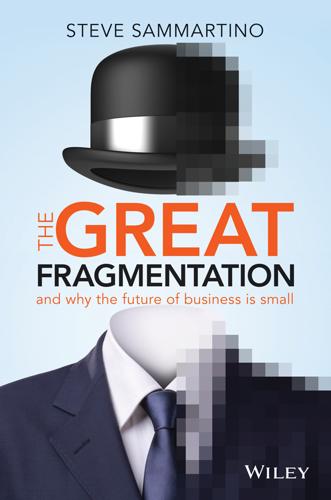
The Great Fragmentation: And Why the Future of All Business Is Small
by
Steve Sammartino
Published 25 Jun 2014
Who knows, the crowd may come up with significant safety enhancements that use sensors to wake sleepy drivers. glass cockpit: an aircraft cockpit that features electronic (digital) instrument displays, typically large LCD screens (Wikipedia) Moreover, cars are very soon going to evolve into lounge rooms once self-driving cars become the norm. The technology for safe self-driving cars already exists. Millions of kilometres have been driven without incident. The cost of the technology that makes it possible is in rapid freefall. It’s hard to predict when autonomous driving cars will be available to the public, and estimates range from a few years to up to 20 years.1 Google, a leading developer of the technology, claims its technology will be ready to commercialise with major auto manufacturers by the year 2018.
…
Given we’re talking about years, rather than decades, car companies should probably prepare for the inevitable now. A world of entirely new revenue streams awaits the auto industry if they follow the playbook already evidenced in both media evolution and personal computing technology. All they need is to have the courage to let other people get involved. The technology for safe self-driving cars already exists. From products to platforms Being able to thrive going forward is about removing the finality that comes with the launch mentality: not assuming that a product is finished when we deliver it to the market. Brands that survive the current reconfiguration of economics will understand that a product or service is a continuum of development, a continuum that people take from the company and invent the next stages of.
…
As car ownership widens and we start to seal the roads, we make highways, roundabouts and traffic lights. We invent maps for directions as the number and complexity of roads increases. We use GPS devices and live traffic reports (via the web) for more efficient movement on the roads. And our next stack will be the self-driving car, which will do it all for us. Each layer is needed before the subsequent layer can make any sense or be needed. While the industrial revolution created a machine-based layer of technology in business and lifestyle, we’re now entering a stage where a digital layer is being added. Cheap, disposable technology will give us a new layer that augments both how we live and how we do business.
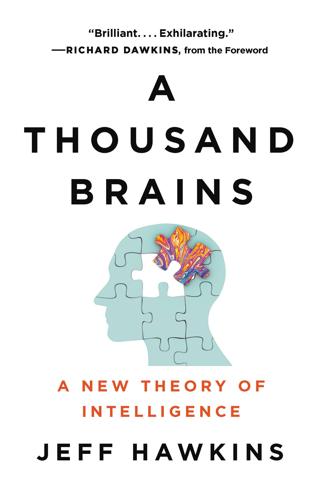
A Thousand Brains: A New Theory of Intelligence
by
Jeff Hawkins
Published 15 Nov 2021
We, the designers of intelligent machines, have to go out of our way to design in motivations. Why would we design a machine that accepts our first request but ignores all others after that? This is as likely as designing a self-driving car that, once you tell it where you want to go, ignores any further requests to stop or go someplace else. Further, it assumes that we designed the car so that it locks all the doors and disconnects the steering wheel, brake pedal, power button, etc. Note that a self-driving car isn’t going to develop goals on its own. Of course, someone could design a car that pursues its own goals and ignores the requests of humans. Such a car might cause harm.
…
We learn thousands of skills in our lifetime, and although we may not be the best at any one of these skills, we are flexible in what we can learn. Deep learning AI systems exhibit almost no flexibility. A Go-playing computer may play the game better than any human, but it can’t do anything else. A self-driving car may be a safer driver than any human, but it can’t play Go or fix a flat tire. The long-term goal of AI research is to create machines that exhibit human-like intelligence—machines that can rapidly learn new tasks, see analogies between different tasks, and flexibly solve new problems. This goal is called “artificial general intelligence,” or AGI, to distinguish it from today’s limited AI.
…
The chess-playing computer uses this reference frame to represent the location of each piece, to represent legal chess moves, and to plan movements. A chessboard reference frame is inherently two-dimensional and has only sixty-four locations. This is fine for chess, but it is useless for learning the structure of staplers or the behaviors of cats. Self-driving cars typically have multiple reference frames. One is GPS, the satellite-based system that can locate the car anywhere on Earth. Using a GPS reference frame, a car can learn where roads, intersections, and buildings are. GPS is a more general-purpose reference frame than a chess board, but it is anchored to Earth, and therefore can’t represent the structure or shape of things that move relative to Earth, such as a kite or a bicycle.
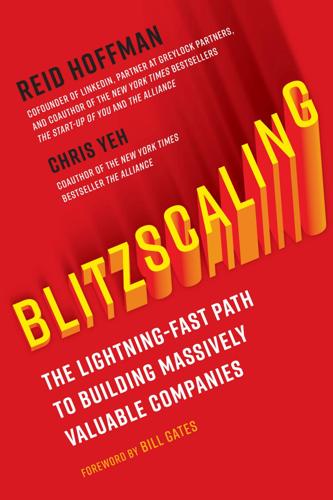
Blitzscaling: The Lightning-Fast Path to Building Massively Valuable Companies
by
Reid Hoffman
and
Chris Yeh
Published 14 Apr 2018
Google has since used the financial power of its gross margins to place big bets that other companies might shy away from, such as investing in Android and Chrome, two products that were going up against dominant competitors (Apple’s iOS in mobile phone software and Microsoft and Firefox in Web browsers). Google has also used its margins to fund radical experiments like X (formerly Google X) and Waymo (self-driving cars). These bets may or may not pay off, but even if they fail, Google’s margins give it the ability to recover quickly and keep going. Network Effects Google has leveraged network effects quite a bit in its major business lines, though not, ironically enough, in its core search product!
…
For example, we suspect that the market for food delivery from existing restaurants—a pure commodity business—is unlikely to offer any lasting competitive advantages that would justify an expensive blitzscaling campaign. LEARNING CURVE Another way to use blitzscaling to create a lasting competitive advantage is to be the first to climb a steep learning curve. Some opportunities, such as self-driving cars, require you to solve hard, complex problems. The more rapidly you scale, the more data you have to drive learning (or train machine learning), which improves your product, making it easier to scale further in the market while your competitors who have just begun to learn lag far behind. Netflix is the leader in streaming video entertainment, but it only achieved this status by being willing to climb a series of steep learning curves.
…
ADVANTAGE #3: LONGEVITY While the ability to undertake multiple attempts at blitzscaling is an advantage, so is the ability to be patient with a single attempt. Large companies can (if they have patient shareholders) have longer time horizons than start-ups, which need to show immediate results to continue raising money. Google often plays this long game with technologies ranging from self-driving cars to a cure for aging. Facebook is also playing the long game with Oculus Rift and VR. The key is knowing when to scale up. Microsoft tried to scale smartphones too early with Windows CE; as it turns out, the modern smartphone only became practical once Moore’s Law made mobile CPUs powerful enough, and Apple combined software with capacitive touch screens, Corning’s damage-resistant Gorilla Glass, and high-volume Chinese manufacturing.
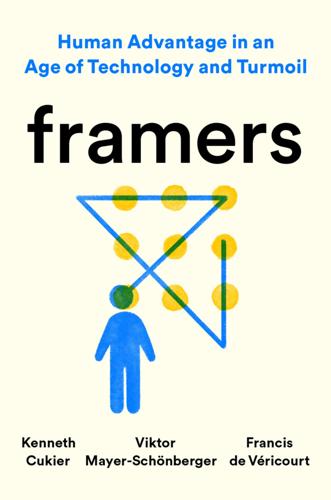
Framers: Human Advantage in an Age of Technology and Turmoil
by
Kenneth Cukier
,
Viktor Mayer-Schönberger
and
Francis de Véricourt
Published 10 May 2021
The car braked hard and decelerated quickly—but not before it slammed into the boundary and was poised to go off the road. In the end, it came to a rest . . . on a thin, purple line of pixels on the screen. The minor accident was a digital simulation. It happened only in the computer servers of Waymo, Google’s self-driving-car company. The simulation is designed to overcome a serious shortcoming of all autonomous vehicles: a lack of data on rare events because they are, well, rare. For well over a decade, the industry has been collecting real-world road data to train the AI models that power the self-driving systems.
…
See also: Sam Greenspan, “11 Most Absurd Inventions Created by MacGyver,” 11 Points, March 18, 2018, https://11points.com/11-absurd-inventions-created-macgyver/. Our sense of predictability and control: Keith D. Markman et al., “The Impact of Perceived Control on the Imagination of Better and Worse Possible Worlds,” Personality and Social Psychology Bulletin 21, no. 6 (June 1995): 588–95. Introductory example of self-driving cars: Videos from research in an Arxiv paper at: Mayank Bansal, Alex Krizhevsky, and Abhijit Ogale, “ChauffeurNet: Learning to Drive by Imitating the Best and Synthesizing the Worst,” Waymo, accessed November 2, 2020, https://sites.google.com/view/waymo-learn-to-drive. The scenario was “recovering from a trajectory perturbation (M2 = M1 + environment losses).”
…
The scenario was “recovering from a trajectory perturbation (M2 = M1 + environment losses).” The paper itself is at “ChauffeurNet,” Waymo, Arxiv, December 7, 2018, https://arxiv.org/abs/1812.03079. On Carcraft: An article with superb reporting is: Alexis C. Madrigal, “Inside Waymo’s Secret World for Training Self-Driving Cars,” Atlantic, August 23, 2017, https://www.theatlantic.com/technology/archive/2017/08/inside-waymos-secret-testing-and-simulation-facilities/537648. Data on the amount of simulation driving: “The Virtual World Helps Waymo Learn Advanced Real-World Driving Skills,” Let’s Talk Self-Driving, accessed November 2, 2020, https://letstalkselfdriving.com/safety/simulation.html.

The Thinking Machine: Jensen Huang, Nvidia, and the World's Most Coveted Microchip
by
Stephen Witt
Published 8 Apr 2025
They were the first to experience what would soon become a common phenomenon: the uncontainable thrill of sneak previewing embargoed AI technology that would shock the world once unveiled. Theorizing on the impact that SuperVision would have on the world, the researchers discussed autonomous robots, self-driving cars, and self-coding computers. The three men regarded AI as a purely positive force for progress—or they did at the time, at least. The Toronto research group began to see something else as well: if SuperVision had benefited from Nvidia, Nvidia was going to benefit from SuperVision even more, for the neural net’s demands for increased parallel-computing power had no foreseeable limit.
…
Investments in AI led to profits in such direct fashion that Huang resurrected one of the oldest pitches in retail sales: “The more you buy, the more you save.” Venture capitalists began shoveling money at AI start-ups, investing not only in image and speech recognition but also in health care, retail self-checkout, self-driving cars, and education. In 2010, venture investment in AI was closer to zero than any other meaningful number; by 2015, it had swelled to $5 billion and was rapidly growing. “We’ve been investing in a lot of startups applying deep learning to many areas, and every single one effectively comes in building on Nvidia’s platform,” Marc Andreessen, of the firm Andreessen Horowitz, said in early 2016.
…
Once the two men were seated, Huang got straight to the point. “You were quoted as saying artificial intelligence was more dangerous than nuclear weapons,” Huang said. Musk shifted in his chair. “I said ‘potentially.’ ” “You also said it’s like summoning a demon,” Huang said. Musk glared at him. Huang didn’t press, and changed topics to self-driving cars. (“I almost view this as a solved problem,” Musk said. “We’ll be there in a few years.”) The two discussed automobiles for a while, but at the end Musk revisited Huang’s promptings about existential risk. “It’s odd that we’re so close to the advent of AI,” Musk said. “It seems strange that we’d be alive at this time.”

Superminds: The Surprising Power of People and Computers Thinking Together
by
Thomas W. Malone
Published 14 May 2018
But we also need to understand how new electronic information technologies will profoundly transform these superminds. Many people today believe that the most important new kind of information technology will be artificial intelligence (AI), embodied in robots and other software programs that do smart things only humans could do before. It’s certainly true that machines like Amazon’s Alexa and Google’s self-driving cars are getting smarter, and it’s possible that someday, in the future, we will have artificially intelligent machines that are as smart and broadly adaptable as humans. But most experts estimate that, if this happens, it probably won’t be for at least several decades and quite possibly much longer.
…
As we move further along the continuum toward greater machine control, Google Assistant and Amazon’s Alexa are examples of automated systems that strive to be assistants rather than just tools, especially when they do things like volunteering information you never asked for—such as reminding you that you need to leave for the airport now to make your flight. Similarly, a fully self-driving car would be a clear example of an assistant. Like a human taxi (or Uber) driver, this automated assistant will take a great deal of initiative to navigate through traffic to the destination you specify. Another example of an automated assistant is the software used by the online clothing retailer Stitch Fix to help its human stylists recommend items to customers.3 Stitch Fix customers first fill out detailed questionnaires about their style, size, and price preferences.
…
Peers Some of the most intriguing uses of computers will involve roles where the machines operate as peers of the humans more than as assistants or tools, even in cases where there isn’t much actual artificial intelligence being used. In many cases, this will happen because a program that acts as an assistant for one human acts as a peer of another. For example, if you are riding in a self-driving car, and I am driving myself on the same road, then your driving assistant is my driving peer. If you are a stock trader, you may already be transacting with someone else’s automated program trading system without even knowing it. And if you are bidding in an eBay auction, you may be competing with someone else who uses an automated “sniping” assistant that is programmed to outbid you in the last few seconds of an auction.
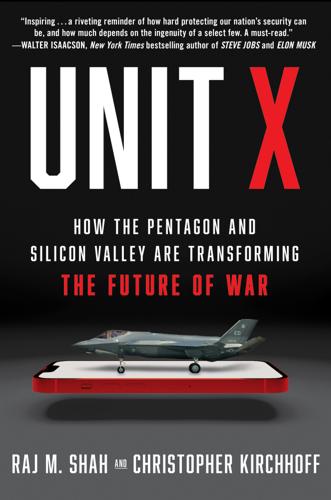
Unit X: How the Pentagon and Silicon Valley Are Transforming the Future of War
by
Raj M. Shah
and
Christopher Kirchhoff
Published 8 Jul 2024
While many technologies were important, AI was proving most consequential because it unlocks exponential progress in other fields. Human language processing, self-driving cars, modeling protein structures, controlling plasma in a cold fusion reactor—AI could potentially solve these seemingly intractable problems. The stakes of the game were quickly coming into focus. Whichever nation first mastered AI at scale would not only command scientific and commercial power. Its military capability would grow exponentially as well. Self-driving cars lead to self-driving tanks. Algorithms that detect signals can defeat stealth. AI will drive geopolitics in the same way other empires have risen and fallen on gunpowder, the steamship, and steel.
…
That was the first time Raj realized how far Silicon Valley had leapt ahead of defense contractors like General Dynamics and Lockheed Martin when it came to developing new technology, especially software. A decade later, in 2016, when Raj, now a civilian, visited the air force command center in Qatar that coordinated the combat missions he flew, he found that instead of catching up, the military had fallen even further behind. The outside world had self-driving cars, virtual reality goggles, and smartphones that could summon an Uber, handle banking, and pay for groceries. You could ask Siri for directions and tell Alexa to play Miles Davis. But in the military control center where airmen handled the life-or-death business of routing jets, directing air strikes, and managing refueling tankers over an active battlefield, in the middle of the war against ISIS, U.S. service members were using outdated Windows PCs and running software programs older than the officers using them.
…
Carter wasn’t openly alarmist, but the digerati understood. Carter also reminded his audience of influential executives that some of Silicon Valley’s biggest companies had succeeded by building their products on research funded by the government. Google got its start with a grant by the National Science Foundation, and its self-driving cars grew out of a Grand Challenge by DARPA, the Defense Advanced Research Projects Agency. DARPA had invented the Internet as well as Siri, Apple’s AI-powered voice assistant. Now it was time for Silicon Valley to repay the favor. “We need to drill holes in the wall that exists between the Department of Defense and the commercial and scientific sector,” Carter implored.

The Patient Will See You Now: The Future of Medicine Is in Your Hands
by
Eric Topol
Published 6 Jan 2015
Sullivan, “Google’s New Driverless Car Has No Brakes or Steering Wheel,” Washington Post, May 28, 2014, http://www.washingtonpost.com/news/morning-mix/wp/2014/05/28/googles-new-driverless-car-has-no-brakes-or-steering-wheel//?print=1. 29. R. Lawler, “Google X Built a Fully Self-Driving Car from Scratch, Sans Steering Wheel and Pedals,” TechCrunch, May 27, 2014, http://techcrunch.com/2014/05/27/google-x-introduces-a-fully-self-driving-car-sans-steering-wheel-and-pedals/. 30. L. Gannes, “Google’s New Self-Driving Car Ditches the Steering Wheel,” Recode, May 27, 2014, http://recode.net/2014/05/27/googles-new-self-driving-car-ditches-the-steering-wheel/. 31. R. W. Lucky, “The Drive for Driverless Cars,” IEEE Spectrum, June 26, 2014, http://spectrum.ieee.org/computing/embedded-systems/the-drive-for-driverless-cars. 32.
…
Pai, “In-Depth: Providers’ Inevitable Acceptance of Patient Generated Health Data,” MobiHealthNews, March 21, 2014, http://mobihealthnews.com/31268/in-depth-providers-inevitable-acceptance-of-patient-generated-health-data/. 25. J. Markoff, “A Trip in a Self-Driving Car Now Seems Routine,” New York Times, May 13, 2014, http://bits.blogs.nytimes.com/2014/05/13/a-trip-in-a-self-driving-car-now-seems-routine/?smid=tw-nytimesbits. 26. A. Salkever, “What Google’s Driverless Car Future Might Really Look Like,” Read Write, May 28, 2014, http://readwrite.com/2014/05/28/googles-driverless-car-future?awesm=readwr.it_p20r-awesm=~oFWmYrlzbbCpi0. 27.
…
The Google driverless car is now electric without brakes, an accelerator, or a steering wheel.25–31 It has a 360-degree field of view—eliminating any blind spots—with hundreds of laser and radar sensors. It can now recognize pedestrians and bicyclists, along with their hand gestures, better than human beings can, and has a sterling safety record that surpasses driving by humans. And it can be summoned by a smartphone. If we can build self-driving cars with this sensor and computing technology, are we ready to develop doctorless patients? I think the answer is much more autonomous patients, yes, without question, but truly doctorless, no. Much of the practice of medicine will reboot and bypass the current deeply engrained, sacrosanct doctor-dependent operations.32–34 Just as you can do your electrocardiogram by your smartphone today and get an immediate computer algorithm interpretation, so it will be the case for many diagnostics in the future, such as whether you have sleep apnea or hypertension—anything with simple quantitative data to record, process, and quickly return to you.
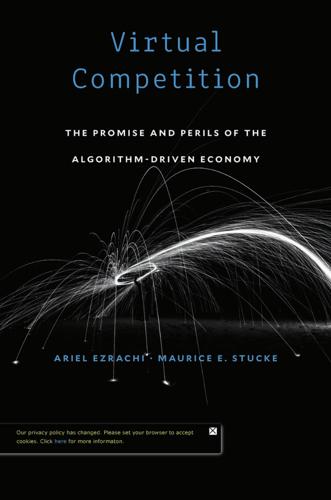
Virtual Competition
by
Ariel Ezrachi
and
Maurice E. Stucke
Published 30 Nov 2016
For a discussion of the “nowcasting radar,” see Stucke and Grunes, Big Data and Competition Policy. Yoko Kubota, “Toyota Aims to Make Self-Driving Cars by 2020,” Wall Street Journal, October 6, 2015, http://www.wsj.com/articles/toyota-aims-to-make -self-driving-cars-by-2020 -1444136396; Yoko Kubota, “Behind Toyota’s Late Shift into Self-Driving Cars,” Wall Street Journal, January 12, 2016, 338 25. 26. 27. 28. 29. 30. 31. 32. Notes to Pages 239–240 http://www.wsj.com/articles/behind-toyotas-late-shift-into-self-driving-cars -1452649436 (“In the battle for global pre-eminence, traditional car makers fear soft ware makers will steal the auto’s soul and profitability, putting incumbents in a similar position to Chinese factories making smartphones for global brands.”).
…
Nathaniel Mott, “Uber Should Fear the Company Formerly Known as Google,” Gigaom (August 11, 2015), https://gigaom.com/2015/08/11/uber-vs -alphabet-google/. Weinberger, “Microsoft Could See an Opportunity to Poke Google in the Eye with Uber Investment.” Douglas MacMillan, “GM Invests $500 Million in Lyft, Plans System for Self-Driving Cars,” Wall Street Journal, January 4, 2016, http://www.wsj.com /article _email/gm-invests-500-million-in-lyft-plans-system-for-self-driving -cars-1451914204-lMyQjAxMTI2NTA2NDEwODQyWj. Coupons.com, Form 10-K for 2014 (2014), 17; Yelp Inc., Form 10-Q for the Quarterly Period Ended June 30, 2015 (2015), 33, http://www.sec.gov /Archives/edgar/data/1345016/000120677415002479/yelp_10q.htm.
…
In quickly accessing and analyzing our personal data, the super-platforms have powerful tools that the monopolies of yesteryear lacked, such as the ability to discern trends and threats well before others, including the government.23 Their superior market position enables them to dictate the interaction not only with us—the customers—but also with small and medium size companies. The latter, just like us, may lack the resources, data, and algorithms to effectively curb the power of the super-platforms when they ex- Final Reflections 239 pand into their markets. Even Goliaths like General Motors are wary that with self-driving cars, the lion’s share of profits will go to those tech firms that develop the algorithms and collect the data.24 The auto manufacturers’ profits (and their unionized workers’ salaries) are squeezed. The winners in the data-collection arms race benefit in several ways: first, in improving their self-learning algorithms; second, in capturing greater value from the data (either directly or indirectly through advertisingrelated ser vices or behavioral discrimination); third, in using the profits to expand their platform, thereby attracting more users, advertisers, and personal data; and finally, as their platforms evolve into super-platforms, in becoming the lords of the new market order—keepers of the data—who can promote or disrupt competition at their will.
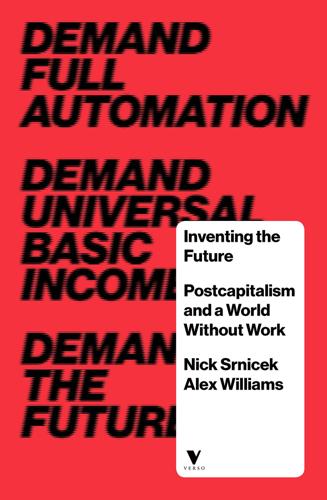
Inventing the Future: Postcapitalism and a World Without Work
by
Nick Srnicek
and
Alex Williams
Published 1 Oct 2015
These are tasks that computers are perfectly suited to accomplish once a programmer has created the appropriate software, leading to a drastic reduction in the numbers of routine manual and cognitive jobs over the past four decades.22 The result has been a polarisation of the labour market, since many middle-wage, mid-skilled jobs are routine, and therefore subject to automation.23 Across both North America and Western Europe, the labour market is now characterised by a predominance of workers in low-skilled, low-wage manual and service jobs (for example, fast-food, retail, transport, hospitality and warehouse workers), along with a smaller number of workers in high-skilled, high-wage, non-routine cognitive jobs.24 The most recent wave of automation is poised to change this distribution of the labour market drastically, as it comes to encompass every aspect of the economy: data collection (radio-frequency identification, big data); new kinds of production (the flexible production of robots,25 additive manufacturing,26 automated fast food); services (AI customer assistance, care for the elderly); decision-making (computational models, software agents); financial allocation (algorithmic trading); and especially distribution (the logistics revolution, self-driving cars,27 drone container ships and automated warehouses).28 In every single function of the economy – from production to distribution to management to retail – we see large-scale tendencies towards automation.29 This latest wave of automation is predicated upon algorithmic enhancements (particularly in machine learning and deep learning), rapid developments in robotics and exponential growth in computing power (the source of big data) that are coalescing into a ‘second machine age’ that is transforming the range of tasks that machines can fulfil.30 It is creating an era that is historically unique in a number of ways.
…
New pattern-recognition technologies are rendering both routine and non-routine tasks subject to automation: complex communication technologies are making computers better than humans at certain skilled-knowledge tasks, and advances in robotics are rapidly making technology better at a wide variety of manual-labour tasks.31 For instance, self-driving cars involve the automation of non-routine manual tasks, and non-routine cognitive tasks such as writing news stories or researching legal precedents are now being accomplished by robots.32 The scope of these developments means that everyone from stock analysts to construction workers to chefs to journalists is vulnerable to being replaced by machines.33 Workers who move symbols on a screen are as at risk as those moving goods around a warehouse.
…
On a technical level, machines today remain worse than humans at jobs involving creative work, highly flexible work, affective work and most tasks relying on tacit rather than explicit knowledge.46 The engineering problems involved in automating these tasks appear insurmountable for the next two decades (though similar claims were made about self-driving cars ten years ago), and a programme of full automation would aim to invest research money into overcoming these limits. A second barrier to full automation occurs for economic reasons: certain tasks can already be completed by machines, but the cost of the machines exceeds the cost of the equivalent labour.47 Despite the efficiency, accuracy and productivity of machine labour, capitalism prefers to make profits, and therefore uses human labour whenever it is cheaper than capital investment.
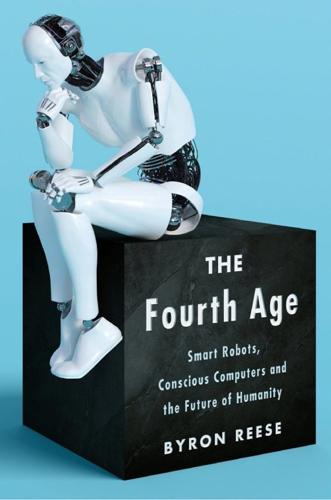
The Fourth Age: Smart Robots, Conscious Computers, and the Future of Humanity
by
Byron Reese
Published 23 Apr 2018
The other kind of AI is referred to by three different names: general AI, strong AI, or artificial general intelligence (AGI). Although the terms are interchangeable, I will use AGI from this point forward to refer to an artificial intelligence as smart and versatile as you or me. A Roomba vacuum cleaner, Siri, and a self-driving car are powered by narrow AI. A hypothetical robot that can unload the dishwasher would be powered by narrow AI. But if you wanted a robot MacGyver, that would require AGI, because MacGyver has to respond to situations that he has not previously considered. AGI does not currently exist, nor is there agreement on how to build it—or even if it is possible.
…
In another example, a European rocket exploded in flight with $7 billion worth of loss because a 64-bit number was too large to convert to a 16-bit number, causing both a metaphoric and a literal crash. While expensive, these disasters were at least well contained. Imagine a similar problem affecting the self-driving car network, the power grid, or—gasp—your company’s payroll system. I point these issues out not to suggest that we should rethink our march toward a more mechanical future. Machines are, on the whole, more reliable than people in what they do. However, generally speaking, machine failures have a larger potential to cascade.
…
Lucky for him, a deus ex machina in the form of the sorcerer, awakened by the commotion, comes down and puts a stop to the whole affair, retrieving his hat from a contrite apprentice. 13 * * * The Human Brain We’ve thoroughly explored the world of narrow AI. Narrow AI powers the self-driving car, the thermostat that learns the temperatures you prefer, and the spam filter of your email folder. Yes, these are technical marvels, but don’t ask any of them what you should get your spouse for Christmas. Artificial general intelligence (AGI), on the other hand, is an intelligence that is at least as smart as you and me.
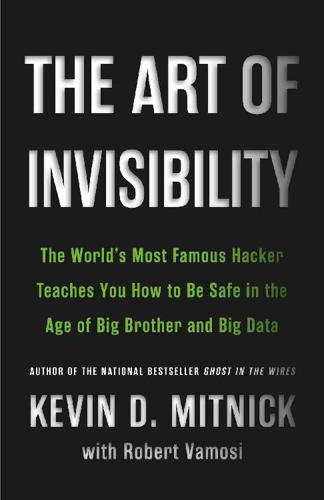
The Art of Invisibility: The World's Most Famous Hacker Teaches You How to Be Safe in the Age of Big Brother and Big Data
by
Kevin Mitnick
,
Mikko Hypponen
and
Robert Vamosi
Published 14 Feb 2017
However, only a few automakers, such as Mercedes, Tesla, and Ford, send over-the-air updates to all their cars. The rest of us still have to go into the shop to get our automobile software updated. If you think the way Tesla and Uber are tracking every ride you take is scary, then self-driving cars will be even scarier. Like the personal surveillance devices we keep in our pockets—our cell phones—self-driving cars will need to keep track of where we want to go and perhaps even know where we are at a given moment in order to be always at the ready. The scenario proposed by Google and others is that cities will no longer need parking lots or garages—your car will drive around until it is needed.
…
But it’s predicted that by 2025 a majority of the cars on the road will be connected—to other cars, to roadside assistance services—and it’s likely that a sizable percentage of these will be self-driving.28 Imagine what a software bug in a self-driving car would look like. Meanwhile, every trip you take will be recorded somewhere. You will need an app, much like the Uber app, that will be registered to you and to your mobile device. That app will record your travels and, presumably, the expenses associated with your trip if they would be charged to the credit card on file, which could be subpoenaed, if not from Uber then from your credit card company. And given that a private company will most likely have a hand in designing the software that runs these self-driving cars, you would be at the mercy of those companies and their decisions about whether to share any or all of your personal information with law enforcement agencies.
…
The scenario proposed by Google and others is that cities will no longer need parking lots or garages—your car will drive around until it is needed. Or perhaps cities will follow the on-demand model, in which private ownership is a thing of the past and everyone shares whatever car is nearby. Just as our cell phones are less like copper-wire phones than they are like traditional PCs, self-driving cars will also be a new form of computer. They’ll be self-contained computing devices, able to make split-second autonomous decisions while driving in case they are cut off from their network communications. Using cellular connections, they will be able to access a variety of cloud services, allowing them to receive real-time traffic information, road construction updates, and weather reports from the National Weather Service.

Artificial Intelligence: A Modern Approach
by
Stuart Russell
and
Peter Norvig
Published 14 Jul 2019
A good example is the work of Hoiem et al. (2007); recently this has been reworked using deep neural networks. Turning now to the applications of computer vision for guiding action, Dickmanns and Zapp (1987) first demonstrated a self-driving car driving on freeways at high speeds; Pomerleau (1993) achieved similar performance using a neural network approach. Today building self-driving cars is a big business, with the established car companies competing with new entrants such as Baidu, Cruise, Didi, Google Waymo, Lyft, Mobileye, Nuro, Nvidia, Samsung, Tata, Tesla, Uber, and Voyage to market systems that provide capabilities ranging from driver assistance to full autonomy.
…
To his right is a pivotal position from the second game of the historic Go match between former world champion Lee Sedol and DeepMind’s ALPHAG Oprogram. Move 37 by ALPHAG Oviolated centuries of Go orthodoxy and was immediately seen by human experts as an embarrassing mistake, but it turned out to be a winning move. At top left is an Atlas humanoid robot built by Boston Dynamics. A depiction of a self-driving car sensing its environment appears between Ada Lovelace, the world’s first computer programmer, and Alan Turing, whose fundamental work defined artificial intelligence. At the bottom of the chess board are a Mars Exploration Rover robot and a statue of Aristotle, who pioneered the study of logic; his planning algorithm from De Motu Animalium appears behind the authors’ names.
…
For an artificially defined task such as chess or shortest-path computation, the task comes with an objective built in—so the standard model is applicable. As we move into the real world, however, it becomes more and more difficult to specify the objective completely and correctly. For example, in designing a self-driving car, one might think that the objective is to reach the destination safely. But driving along any road incurs a risk of injury due to other errant drivers, equipment failure, and so on; thus, a strict goal of safety requires staying in the garage. There is a tradeoff between making progress towards the destination and incurring a risk of injury.
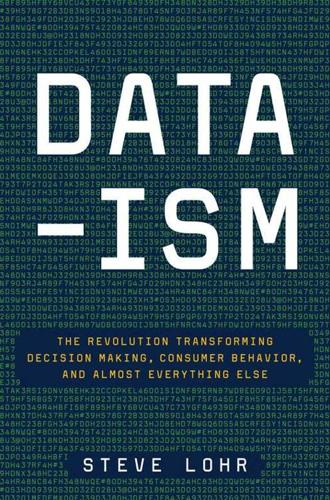
Data-Ism: The Revolution Transforming Decision Making, Consumer Behavior, and Almost Everything Else
by
Steve Lohr
Published 10 Mar 2015
But Brynjolfsson sees a pattern playing out with big data that is comparable to past technologies. Innovations that have been percolating for years in research labs are making their way into products. An industry or two leads the way, like online advertising, and showcase projects point toward the future, like IBM’s Watson or Google’s self-driving cars (robotic incarnations of big data). Enthusiasm fans investment by companies and start-ups. But a broad-based payoff has not yet emerged. Debate rages between the techno-optimists and the pessimists. In his office, I ask Brynjolfsson to describe the steps that led him to become a big-data believer.
…
By December of 2013, however, Krugman had become more impressed by advances in computing and he wrote an article, published on the Times’s Web site, explaining why he thinks Gordon is “probably wrong.” A decade ago, Krugman writes, “the field of artificial intelligence had marched from failure to failure. But something has happened—things that were widely regarded as jokes not long ago, like speech recognition, machine translation, self-driving cars, and so on, have suddenly become more or less working reality.” Data and software, Krugman observes, have forged the path to working artificial intelligence. “They’re using big data and correlations and so on,” he writes, “to implement algorithms—mindless algorithms, you might say. But if they can take people’s place, does it matter?”
…
The human users are interested partners and can override the machine, but most of the time they let the Nest algorithms take over. The issue of when to trust the machine—a mechanical one or a virtual one, a software algorithm—is going to play out repeatedly in the future. Appeals to efficiency alone will not carry the day. Advocates for self-driving cars marshal safety statistics and logical-sounding arguments to push their case—about accident rates and the human foibles of drowsiness, distractedness, and drunkenness. Those arguments help, but they do not speak to the issues of trust and comfort with the machines. People are not aggregates; we all experience the world as individuals.
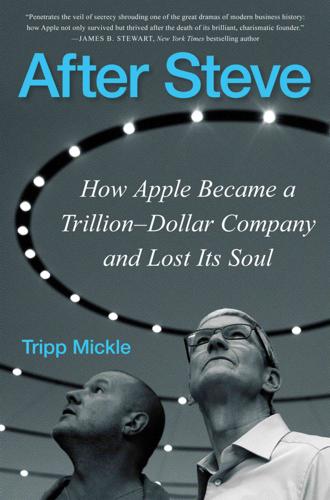
After Steve: How Apple Became a Trillion-Dollar Company and Lost Its Soul
by
Tripp Mickle
Published 2 May 2022
In his youth, he had worked: Buster Hein, “These Are the Fabulous Rides of Sir Jony Ive,” Cult of Mac, February 27, 2014, https://www.cultofmac.com/254380/jony-ives-cars/. His vision differed from: Daisuke Wakabayashi, “Apple Scales Back Its Ambitions for a Self-Driving Car,” New York Times, August 22, 2017, https://www.nytimes.com/2017/08/22/technology/apple-self-driving-car.html. As the debate simmered: Jack Nicas, “Apple, Spurned by Others, Signs Deal with Volkswagen for Driverless Car,” New York Times, May 23, 2018, https://www.nytimes.com/2018/05/23/technology/apple-bmw-mercedes-volkswagen-driverless-cars.html.
…
In a bid to restart: Daisuke Wakabayashi, “Apple Taps Bob Mansfield to Oversee Car Project,” Wall Street Journal, July 25, 2016, https://www.wsj.com/articles/apple-taps-bob-mansfield-to-oversee-car-project-1469458580; Daisuke Wakabayashi and Brian X. Chen, “Apple Is Said to Be Rethinking Strategy on Self-Driving Cars,” New York Times, September 9, 2016, https://www.nytimes.com/2016/09/10/technology/apple-is-said-to-be-rethinking-strategy-on-self-driving-cars.html. Shortly after the iTunes shutdown: Paul Mozur and Jane Perlez, “Apple Services Shut Down in China in Startling About-Face,” New York Times, April 21, 2016, https://www.nytimes.com/2016/04/22/technology/apple-no-longer-immune-to-chinas-scrutiny-of-us-tech-firms.html.
…
At the time, Tesla was in the process of doubling its staff and plowing money into the development of more sophisticated batteries for its electric vehicles. The electric vehicle company was recruiting dozens of Apple engineers, who told former colleagues that the company’s founder, Elon Musk, was going to be the next Jobs. In nearby Mountain View, Google had been working on its own self-driving car and trying to partner with established automakers to bring it to roads nationwide in a few years. The entire peninsula buzzed with the possibility of a transportation revolution. A group of engineers gathered in a conference room to discuss how to proceed. They reviewed marketing analysis drawn up by the consulting firm McKinsey & Company.
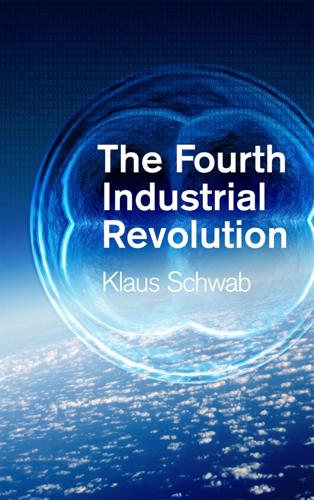
The Fourth Industrial Revolution
by
Klaus Schwab
Published 11 Jan 2016
Positive impacts – Improved safety – More time for focusing on work and/or consuming media content – Effect on the environment – Less stress and road rage – Improved mobility for those older and disabled, among others – Adoption of electric vehicles Negative impacts – Job losses (taxi and truck drivers, car industry) – Upending of insurance and roadside assistance (“pay more to drive yourself”) – Decreased revenue from traffic infringements – Less car ownership – Legal structures for driving – Lobbying against automation (people not allowed to drive on freeways) – Hacking/cyber attacks The shift in action In October 2015, Tesla made its cars that were sold over the last year in the US semi-autonomous via a software update. Source: http://www.wired.com/2015/10/tesla-self-driving-over-air-update-live Google plans to make autonomous cars available to the public in 2020. Source: Thomas Halleck, 14 January 2015, “Google Inc. Says Self-Driving Car Will Be Ready By 2020”, International Business Times: http://www.ibtimes.com/google-inc-says-self-driving-car-will-be-ready-2020-1784150 In the summer of 2015, two hackers demonstrated their ability to hack into a moving car, controlling its dashboard functions, steering, brakes etc., all through the vehicle’s entertainment system. Source: http://www.wired.com/2015/07/hackers-remotely-kill-jeep-highway/ The first state in the United States (Nevada) to pass a law allowing driverless (autonomous) cares did so in 2012.
…
In doing so, they are making (and even “growing”) objects that are continuously mutable and adaptable (hallmarks of the plant and animal kingdoms).4 In The Second Machine Age, Brynjolfsson and McAfee argue that computers are so dexterous that it is virtually impossible to predict what applications they may be used for in just a few years. Artificial intelligence (AI) is all around us, from self-driving cars and drones to virtual assistants and translation software. This is transforming our lives. AI has made impressive progress, driven by exponential increases in computing power and by the availability of vast amounts of data, from software used to discover new drugs to algorithms that predict our cultural interests.
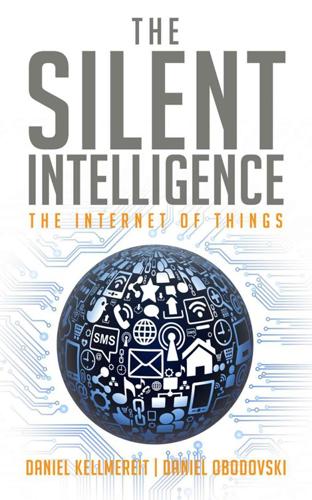
The Silent Intelligence: The Internet of Things
by
Daniel Kellmereit
and
Daniel Obodovski
Published 19 Sep 2013
Machines are often not only faster than humans, but also more accurate, and they dramatically minimize the chance of human error caused by fatigue. As things around us become smarter due to remotely controlled sensors, machines will take over more and more tasks. One of the amazing things coming down the pipeline is the self-driving car. Says Astro Teller: Self-driving cars in the not-too-distant future are just going to be meaningfully better than people. It will become irresponsible and antiquated for people to drive cars. That is absolutely going to happen in the next decade. I believe that very strongly. Whether Google does it or not, reasonable people could disagree, but whether that generally is going to happen, that I feel very strongly about.
…
In addition, modern cars are filled with sensors: detecting light for the mirrors and headlights and rain for the windshield wipers, tire pressure monitors, accelerometers, gyroscopes, and compasses. Going further down this path, the digitalization of mechanics in cars allows for the arrival of driverless cars or self-driving cars, which Google has successfully tested over the past few years. But connectivity offers even more: communication between cars to optimize traffic flow and make better decisions on behalf of the driver. Volvo, for example, has successfully demonstrated road trains as part of the EU’s SARTRE (Safe Road Trains for the Environment) Project, which has several cars following one another in a platoon formation; the lead car has a professional driver taking responsibility for the platoon, while following vehicles operate in a semi-autonomous mode, reducing the distance between the vehicles, and reducing drag and fuel consumption, while getting to their destination faster.23 You may be familiar with the crowd-sourced navigation application Waze, which is one of the most accurate personal navigation applications today because it uses real-time traffic and construction information provided by users.
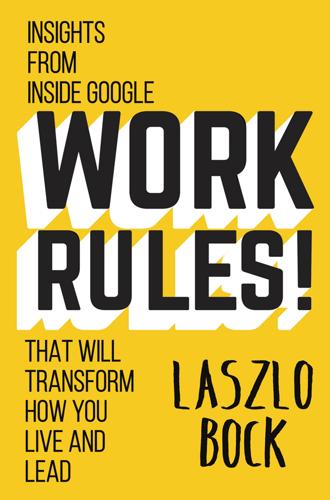
Work Rules!: Insights From Inside Google That Will Transform How You Live and Lead
by
Laszlo Bock
Published 31 Mar 2015
More than fifty billion apps have been downloaded from the Google Play store. Chrome, launched as a safer, faster, and open-source Web browser in 2008, has over 750 million active users and has grown into an operating system powering “Chromebook” laptops.10 And Google is just beginning to explore what is possible, from self-driving cars to Project Loon, which aims to provide Internet access by balloon to the hardest-to-reach parts of the globe. From wearable computing products like Google Glass, which blends the Web and the world in a tiny lens that sits above your right eye (we’re working on a version for lefties), to the Google Smart Contact Lens, a contact lens that doubles as a blood glucose monitor for people with diabetes.
…
Thus far, the innovation and learning from having both systems outweigh the costs of deciding on one or the other. We also use an unfortunately named technique common in technology firms called “dogfooding,” where Googlers are the first to try new products and provide feedback.ix Dogfooders were the first to test-ride in our self-driving cars, supplying valuable feedback on how they work in daily use. This way, Googlers learn what’s going on, and teams get valuable, early feedback from real users. One of the serendipitous benefits of transparency is that simply by sharing data, performance improves. Dr. Marty Makary, a surgeon at the Johns Hopkins Hospital in Baltimore, Maryland, points to when New York State started requiring hospitals to post death rates from coronary artery bypass surgeries.
…
Japanese college grades are virtually useless as a hiring signal, but knowing which college someone attended is helpful, at least for hiring new graduates. Our professional recruiters are also familiar with many jobs across Google, no small feat considering our business currently includes search, self-driving cars, futuristic glasses, fiber-based Internet services, manufacturing, video studios, and venture capital! This is important, because when someone applies to a job at your company, they don’t know everything your company does. In fact, most large companies have distinct recruiting teams for different divisions.
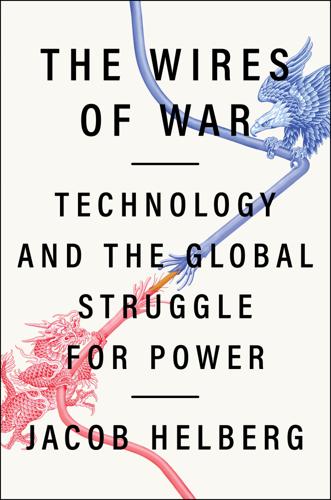
The Wires of War: Technology and the Global Struggle for Power
by
Jacob Helberg
Published 11 Oct 2021
Stanford PhD students Larry Page and Sergey Brin had incorporated the company in 1998, after working out of the garage of Susan Wojcicki (now YouTube’s CEO). By the time I joined, nearly two decades later, Google had grown into one of the most iconic companies on the planet. There were more than 60,000 Googlers working around the world, on everything from perfecting search engines to testing self-driving cars.1 Those products and services brought in an astonishing $90 billion in annual revenue.2 Within a year Google would briefly dethrone Apple as the most valuable brand in the world.3 Google had become the kind of company every scrappy start-up sought to unseat. Yet as I began my new job, nothing about Google seemed boring or bureaucratic.
…
As ridiculous as these articles might seem, the Russians’ firehosing might have managed to trick Google’s algorithms. For those outside the tech world, an algorithm can best be understood as a set of rules in the form of math or some other problem-solving operation. It’s the process that allows computers to produce an output (like a search result) or make a decision about something (like whether a self-driving car should hit the brakes when it comes to a Stop sign). As the British futurist Jamie Susskind writes, algorithms are all around us—even offline. “A set of driving directions is one form of algorithm, specifying what to do under various conditions,” he notes. “ ‘Go down the street, turn right at the post office and then left at the lights.’ ” Susskind points out that we even use algorithmic decision-making in our romantic relationships.
…
It poses a direct threat to American—and global—security. And the problem isn’t simply the tremendous data collection capabilities 5G networks would offer foreign intelligence services. The more items are connected to the Internet of Things via 5G, the more those items could potentially be weaponized against us. What if China directed a fleet of self-driving cars to mow down pedestrians? What if your Internet-enabled pacemaker stopped working? What if your thermostat was cranked up to 120 degrees in the heat of summer? What if China were able to pinpoint the exact geographic cellular location of Indian soldiers along its disputed border? Testifying in favor of restricting cities from buying buses or trains from Chinese manufacturers—infrastructure that will no doubt soon rely on 5G networks—Scott Paul, the president of the Alliance for American Manufacturing, said, “Putting railcars manufactured by a Chinese state-owned firm underneath the Pentagon in Washington, DC, or near sensitive locations in New York City or anywhere else in America is a horrible idea.”
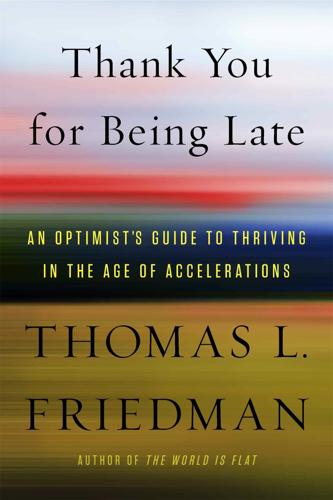
Thank You for Being Late: An Optimist's Guide to Thriving in the Age of Accelerations
by
Thomas L. Friedman
Published 22 Nov 2016
When you keep doubling something for fifty years you start to get to some very big numbers, and eventually you start to see some very funky things that you have never seen before. The authors argued that Moore’s law just entered the “second half of the chessboard,” where the doubling has gotten so big and fast we’re starting to see stuff that is fundamentally different in power and capability from anything we have seen before—self-driving cars, computers that can think on their own and beat any human in chess or Jeopardy! or even Go, a 2,500-year-old board game considered vastly more complicated than chess. That is what happens “when the rate of change and the acceleration of the rate of change both increase at the same time,” said McAfee, and “we haven’t seen anything yet!”
…
This mismatch, as we will see, is at the center of much of the turmoil roiling politics and society in both developed and developing countries today. It now constitutes probably the most important governance challenge across the globe. Astro Teller’s Graph The most illuminating illustration of this phenomenon was sketched out for me by Eric “Astro” Teller, the CEO of Google’s X research and development lab, which produced Google’s self-driving car, among other innovations. Appropriately enough, Teller’s formal title at X is “Captain of Moonshots.” Imagine someone whose whole mandate is to come to the office every day and, with his colleagues, produce moonshots—turning what others would consider science fiction into products and services that could transform how we live and work.
…
Think of the introduction of the printing press, the telegraph, the manual typewriter, the Telex, the mainframe computer, the first word processors, the PC, the Internet, the laptop, the mobile phone, search, mobile apps, big data, virtual reality, human-genome sequencing, artificial intelligence, and the self-driving car. A thousand years ago, Teller explained, that curve representing scientific and technological progress rose so gradually that it could take one hundred years for the world to look and feel dramatically different. For instance, it took centuries for the longbow to go from development into military use in Europe in the late thirteenth century.

Radical Markets: Uprooting Capitalism and Democracy for a Just Society
by
Eric Posner
and
E. Weyl
Published 14 May 2018
It was around that time that both the volume of data collected and the speed and depth of computation became sufficient to allow applications that made a difference in users’ lives. Around that time the first ML-powered personal digital assistants and dictation services emerged; Siri, Google Assistant, and Cortana became familiar features of everyday life. Even more ambitious applications are being developed, including virtual and augmented reality, self-driving cars, and drones that deliver goods to consumers at the click of a button. Because these services have high “sample complexity,” they require vast stores of data on which to train the ML systems. Thus, the vast data sets collected by Google, Facebook, and others as a by-product of their core business functions became a crucial source of revenue and competitive advantage.
…
Instead, they are smaller companies, academic researchers, and financial firms with no direct access to data. Many of these businesses have exciting prospects. Work Fusion, for example, offers a sophisticated incentive scheme to workers to help train AIs to automate business processes. Might AI firms hire workers to label maps and road images and sell the labeled data to companies producing self-driving cars? However, the total size of these markets is tiny compared to the number of users who produce data used by the siren servers. The number of workers on mTurk is in the tens of thousands, compared to billions of users of services offered by Google and Facebook.25 The data titans (Google, Facebook, Microsoft, etc.) do not pay for most of their data.
…
A lonely middle-aged spinster from a corner of Asia was soon the voice of those who spurned the robots and apps, the visa papers and the voice credits. She was the sound of a homeland, a life lost. Yet for all the attention she received, Tuyên was disappointed by the narrowness of the response and the jeering her movement received. Why couldn’t the others see that teaching a computer to cook phở or keeping tabs on robots at some Korean self-driving car factory were not the jobs they had grown up dreaming of, grown up with a right to deserve? Some had initially responded, but the moment that American markets began to sneeze, even Tuyên’s neighbors became jittery about her protests. Why did she have to risk all of their dividends? So Tuyên began to travel around the country and world looking for pockets of fellow travelers unwilling to sell their soul to the demons of data and commonly owned capital.

Open for Business Harnessing the Power of Platform Ecosystems
by
Lauren Turner Claire
,
Laure Claire Reillier
and
Benoit Reillier
Published 14 Oct 2017
If the future that GM is preparing for materializes soon, we will have the option to hail (or pre-book) a self-driving car from an app in just a few years’ time.14 This is not as far-fetched as many people think, and since the disruptive entry of Tesla, Uber and Google in the race for self-driving capabilities, the pressure 212 The future of platforms has been mounting for traditional car manufacturers to get their act together. It is relatively easy to imagine a platform model where one side is entirely automated. There may still be a market for hand-driven rides (like handmade suits) for many years to come, but self-driving cars certainly have the potential to replace cab – and truck – drivers within a generation.
…
Google is also behind the Android operating system, a suite of software products including the Chrome browser, associated Chrome laptop products and Android smartphones, as well as fibre access networks in the US.30 The company also acquired the mobile division of Motorola and its extensive patent portfolio in 2013. More recently, Google has entered the ‘Internet of things’ (IoT) market with the acquisition of Nest (temperature control) and Dropcam (video surveillance) as well as the launch of Google Home (voice activated assistant). Google is also very active in self-driving car technology, artificial intelligence and, through its ventures arm, an investor in some of the most promising start-ups in Silicon Valley (including Uber). Although these different activities may look disparate, they actually create a powerful ecosystem with complex linkages, as well as unique antitrust challenges.
…
Index Accor Group 3, 201, 211 add-on platforms 77, 88–9, 92, 102, 105 advertising 37, 43, 45, 67–8, 93, 97, 99–100, 142, 144, 183 AdWords (Google) 67, 69, 183, 184 Airbnb 1–2, 3, 4, 15, 24, 168, 188; brand 51–2, 153, 169–70; business model 45; credibility 158–9, 163; feedback 35, 52, 160, 179–80; insurance 164; market sizing 79; match 47, 52, 83; value propositions 83, 95, 123 Alibaba 1, 15, 28, 34, 123, 124, 132, 208 Amazon 8, 12, 13, 14, 15, 125; business model 48, 59, 63; conflict resolution 163; ecosystem 28, 57–8, 59–61, 62, 70; feedback 35, 160; home automation 212 Amazon FBA (Fulfilment by Amazon) 58, 61–2 Amazon Marketplace 26–7, 48, 57, 58, 59, 60, 61–2, 84, 111 Amazon Prime 58, 61, 62 Amazon Web Services (AWS) 58 analytics 50–1, 52, 110, 123, 162, 187, 208, 213; see also data capture Android operating system (Google) 58, 67, 185–6 anticompetitive behaviour 173, 182, 186 APIs (application programming interfaces) 52, 183, 197 Apple 5, 8, 13, 14, 28, 193; App Store 32, 38, 63, 64–6; business model 54, 63, 66; ecosystem 63–6, 70, 132; iPhone 63, 65, 123; iTunes 63, 65 application programming interfaces see APIs Ariba 96 Artfire 143 attract 6, 15, 24, 47, 167; ignition 75, 91–6; maturity 75, 121–2, 131; pre-launch 74; scaling-up 75, 105, 107, 110–14, 117 audience builders 24 AWS see Amazon Web Services balance 48, 50, 106, 111–12, 114, 117, 124, 144–7, 150 Bezos, J. 57, 58 big bang launch strategy see event strategy BlaBlaCar 7, 154, 157, 158, 159; insurance 164; pricing strategies 147, 150, 156; scaling-up 112, 115 BorrowMyDoggy 99 bottlenecks 51, 73, 75–6, 86, 98, 99, 100, 101, 108, 112, 116 bowling pin strategy 54, 95, 109 brand 14–15, 51, 76, 118, 153–70 bundling strategies 61, 131, 182 business architecture 22, 66, 74, 80, 91 business models 6–7, 11, 22, 27, 59, 62, 63, 68, 132; platform businesses 6–7, 11, 22, 23, 27–8, 41–54, 70, 87, 138, 146, 177, 199, 200, 212; traditional businesses 62, 73, 91, 193, 211 card platforms 6, 23, 80, 126 catalyst businesses 23–4 Chesky, B. 1, 2, 169 218 Index Choudary, S. 25 communications platforms see Snapchat; WeChat; WhatsApp communities 44–5, 51, 78, 94, 112, 118, 125, 170 compensation strategy see dollar strategy competing platforms 131, 140, 149 competition 22, 25, 121, 130–2, 140, 173, 193 competition authorities 122, 131, 173-5, 186, 197 complements 31, 38, 130, 131 conflict resolution 126, 163, 167 connect 4, 45–6, 62; ignition 98; maturity 97; pre-launch 85; scaling-up 115, 117 consistency 159–60, 203 contributions 78, 82-3, 94, 118 control 52, 53, 123, 140–1, 162 core transactions 49, 52, 85–6, 98–101, 125, 168 correction activities 162 Craigslist 34, 95, 167 credibility 156, 158–9, 195 critical mass 31, 35–6, 37, 46, 73, 80, 121 cultural meme 97 customer acquisition 93, 107, 127; see also platform participants customer experience 36, 48, 53; maturity 108, 111; pricing strategies 139, 140–1; scaling-up 162 data capture 187; see also analytics dating platforms 13, 36, 48, 50, 95, 166, 176 delay strategy 195 Deliveroo 95, 111, 133, 170, 208 demand coordinators 24–5 denial strategy 194 denigrate strategy 194 deter strategy 194–5 Didi Chuxing 15, 132 digital platforms 4, 5, 12, 17, 73, 157, 167 direct network effects 34–5 direct platforms 80 disintermediation 126, 147–8 dispute resolution see conflict resolution dollar strategy 196 dynamic capabilities 196, 199, 200, 201 eBay 4, 15, 22, 48, 49, 53–4; brand 169, 170; business model 21, 27; connect 4, 85; feedback 159, 160; ignition 54; network effects 33, 34; pricing strategies 129, 140, 144, 146; scaling-up 108, 112, 115, 208; value propositions 83, 112 economic value 4, 14, 197 economies of scale 31, 32–33 ecosystems 6, 13, 17, 26–8, 180–1, 186, 207, 211; Amazon 26–7, 57–8, 59–61, 62, 70; Apple 63–6, 70, 132; Facebook 28, 70; Google 66–7, 68–9, 70, 132, 180–1, 185–6; Microsoft 70, 130, 132 enablers 51, 52, 87; ignition 101; maturity 128; pre-launch 87; scaling-up 118 Etsy 84, 87, 94, 110, 132, 146, 210 Evans, P. 14, 24, 25 event strategy 96 ex ante regulation 173, 188 ex post regulation 173 externalities 31–3, 65, 175, 180 Facebook 8, 13, 14, 52, 124, 131, 163, 168; ecosystem 28, 70; ignition 95, 96; network effects 35; pricing strategies 149; scaling-up 107, 166; search results 124 fast follower strategy 199 fear barriers 168–9 feedback 32, 34–6, 47, 77, 98, 100, 101, 108, 110, 111, 125, 160, 165, 188 Fulfilment by Amazon see Amazon FBA gaming platforms 35, 69, 97, 145 Gawer, A. 14, 25 Gebbia, J. 1, 169 Google 7, 13, 14, 67, 163, 180–6; AdWords 67; Android operating system 67, 185; brand 169; business model 50–1, 68; ecosystem 66–7, 68–9, 70, 132, 180–1, 186; home automation 212; search results 125; YouTube 67, 69, 131, 182 Google+ 69, 182 Index governance 51, 76, 140, 165, 167; prelaunch 87; trust framework 155, 157, 162, 164–70 Gumtree 132, 143 Hailo (MyTaxi) 93, 185 HiGear 163 home automation 212 Honda 27 hotels 1, 3, 7, 79, 179–80 IBM 14, 26, 194 ignition 73, 74, 91–102; eBay 53–4; Facebook 95, 96 indirect network effects 34–5 indirect platforms 80–1 innovation 140, 170, 174; maturity 127, 128; regulation 174, 186, 199 Instagram 70, 99, 107, 110, 133 insurance 164 intervention 175 intimacy 156 IT infrastructure 52 key enablers 51, 52 Kickstarter 78, 109, 210 La Belle Asiette 93–4, 99 labour laws 177 Launchworks 21, 157, 206, 208 leakage 49, 126, 147–8 leverage 61, 62, 70, 88, 124–5 linear businesses 6, 12, 41–2, 44, 52 LinkedIn 49, 70, 100, 107, 143, 150, 159 liquidity 33, 52, 143; ignition 99, 101; scaling-up 117 listing fees 144 Lyft 15, 132, 174, 176, 202 management principles 6, 7, 207 management rules 7, 17 market failures 167, 175–6, 187 market makers 24–5 marketplace platforms 12, 15, 48, 26, 59, 61, 85 marketplaces 6, 26, 64, 49, 59, 84, 85, 208 219 market power 37, 173–6, 180–3, 186, 197 market sizing 79–80 Mastercard 5, 23, 26, 80, 134 match 75; ignition 97–101, 115; maturity 124; platform participants 47–8, 52, 84–5, 95; pre-launch 86; scaling-up 114–15 maturity 73, 75–6, 121–2, 127–8 media companies 25 membership fees 139, 143–4 meshed communities 94–5 Microsoft 13–14, 23, 28, 63, 65, 70, 125, 143; ecosystem 70, 130, 132; home automation 212 minimum viable product see MVP monetization 50, 67, 86, 100, 116, 142, 147 MSP (multisided platforms) 25, 46 multihoming 36–7, 149, 176, 177 multisided markets 5, 23–4, 46 multisided platforms see MSP MVP (minimum viable product) 91, 100–1 MyTaxi 93 negative externalities 32, 180 Netflix 26, 197 network effects 33–5, 35, 48, 52, 68, 99, 133, 176; positive 48, 115, 126, 133, 142, 149 networks 31, 33–5 North Star metric 86, 100, 119 on-boarding processes 107–8, 168 Onefinestay 200–1 online platforms 11, 50, 51, 162 OpenTable 93 operating systems 5, 6, 25, 34; Android 58, 67, 185–6 optimize 50, 76; ignition 100, 101; maturity 128, 130; pre-launch 74, 86; scaling-up 116 over-regulation 174 Parker, G. 23, 25–6 partners 45, 79, 128 payment platforms 6, 24, 48 PayPal 95, 131, 187 performance metrics 100, 117, 127 220 Index personalization 124 piggybacking 95 platform balance 111, 117, 128, 144–6 platform businesses 4, 5–7, 11–14, 205, 207, 212, 214; definitions 21, 24–8 platform business models 4–7, 21–2, 27, 45–7, 146, 199, 205, 207, 212, 214 platform development 73, 77, 88; ignition 73, 75–6, 91–101; maturity 73, 75–6, 122, 125, 126, 128, 130; pre-launch 50, 73, 74, 75–6, 77–8, 82–7, 87, 169; scaling-up 73, 75–6, 91, 105–18, 169, 176 platform disruption 193–9, 201–3, 210–11; traditional businesses 132, 193–4, 206, 198–201 platform ecosystems see ecosystems platform fit 75–6, 91, 92, 100, 105, 169 platform management 6–7, 17, 161, 168 platform owners 79, 84, 95, 100, 105 platform participants 35, 47, 48, 51, 78–80, 113, 142, 165; connect 98; ignition 91, 101; match 35, 84, 97; maturity 121–2; pre-launch 78–9, 86; trust framework 51, 158, 160–1 platforms 11–12 Pokémon Go 97 Porter, M. 6, 42–3 positive externalities 31, 32, 65 positive network effects: match 48; maturity 111, 114; pricing strategies 126, 142, 149; scaling-up 117 pre-launch 73, 74, 75–6, 77–8 premium services 142–3 price discrimination 137–8, 143 price elasticity 37, 137 pricing 50, 81, 116, 126–8, 137, 150 pricing friction 141–4 pricing models 139, 141–4, 146 pricing strategies 23, 138–9, 140, 145–50 producer acquisition 108–9 producer retention 108, 121 producers 78, 107–8 Quora 110, 159 Reddit 49, 78, 84, 94, 209, 210, 213 regulation 167, 173–9, 186–9 reliability 156 retention 47, 107–8, 111, 122 risk management 163 Rochet, J. 23–4 rocket model 46, 51, 73, 82, 116; ignition 73, 74, 91; maturity 73, 122; pre-launch 73, 74; scaling-up 73, 162 Ruby Lane 143, 166 SAP 123 scaling-up 73, 105–6, 116 Schmalensee, R. 24 search results 48, 50, 52, 67, 98, 114, 124, 180–1 self-driving cars 67, 211–12 sharing economy 8, 16, 164, 208–11 single homing 36–7 Snapchat 16, 110 Spotify 123 stakeholders 74, 79, 82, 210 start-ups 15 Stootie 98 strategic enablers 51, 101, 118 substitutes 38 talent platforms 205–6 Taobao 124–5 TaskRabbit 108, 148 taxi market 7, 24, 80, 93, 131, 174, 176, 178, 196 Tesco 27 Tinder 13, 96, 166 tipping point 36 Tirole, J. 7, 23–4 traditional businesses 4, 11, 13, 25, 41, 46, 79, 82, 137, 176; platform disruption 38, 193, 198 traditional business models 33 41, 53, 62, 132, 193, 211; ignition 91; maturity 132, 193 transactional platforms 85, 111 transaction fees 139, 143–4, 146 transaction metrics 111, 115, 116 Transport for London (TfL) 177–8 travel platforms 3, 11; see also Airbnb; Lyft; Uber Index trust 45, 49, 51, 84, 87, 99, 106, 115, 121, 130, 147, 153 trust framework 153, 155, 157, 165, 188 Twitter 69, 96, 159, 163 tying strategies 182–3 Uber 11, 15, 22, 52, 108, 177; business model 24, 79; price strategies 81, 140; regulation 140, 162, 167, 174, 177 UberEATS 133 under-regulation 174 unfair competition 3, 174, 180–1, 186 unicorns 15–16 Upwork 47, 88, 126, 159, 169, 206 user acquisition 93, 97, 107–10, 122; see also platform participants user retention 107–8, 111, 122 221 value chains 6, 42–3, 52–3, 202–3 value creation 11, 50, 78, 139, 174, 193, 211 value propositions 57, 63, 82, 112, 196, 197; maturity 112; pre-launch 82; scaling-up 112, 133, 142 Van Alstyne, M. 23, 25–6 VIP strategy 96 viral loops 110 Visa 5, 14, 23, 26, 80–1, 134 WeChat 6, 97, 132 WhatsApp 70, 110 YouTube (Google) 67–9, 131, 182, 183, 186 Zalando 12, 102, 200

The Technology Trap: Capital, Labor, and Power in the Age of Automation
by
Carl Benedikt Frey
Published 17 Jun 2019
The productivity slowdown appears structural and real. 78. Brynjolfsson, Rock, and Syverson, forthcoming, “Artificial Intelligence and the Modern Productivity Paradox,” 25. 79. C. F. Kerry and J. Karsten, 2017, “Gauging Investment in Self-Driving Cars,” Brookings Institution, October 16. https://www.brookings.edu/research/gauging-investment-in-self-driving-cars/. 80. Brynjolfsson, Rock, and Syverson, forthcoming, “Artificial Intelligence and the Modern Productivity Paradox,” 25. 81. N. F. Crafts and T. C. Mills, 2017, “Trend TFP Growth in the United States: Forecasts versus Outcomes” (Discussion Paper 12029, Centre for Economic Policy Research, London).
…
“News Conference 24.” https://www.jfklibrary.org/archives/other-resources/john-f-kennedy-press-conferences/news-conference-24. Kenworthy, L. 2012. “It’s Hard to Make It in America: How the United States Stopped Being the Land of Opportunity.” Foreign Affairs 91 (November/December): 97–109. Kerry, C. F., and J. Karsten. 2017. “Gauging Investment in Self-Driving Cars.” Brookings Institution, October 16. https://www.brookings.edu/research/gauging-investment-in-self-driving-cars/. Keynes, J. M. [1930] 2010. “Economic Possibilities for Our Grandchildren.” In Essays in Persuasion, 321–32. London: Palgrave Macmillan. Klein, M. 2007. The Genesis of Industrial America, 1870–1920. Cambridge: Cambridge University Press.
…
And unlike the situation in the days of the Industrial Revolution, workers in the developed world today have more political power than the Luddites did. In America, where Andrew Yang is already tapping into growing anxiety about automation, an overwhelming majority now favor policies to restrict it. The disruptive force of technology, Yang fears, could cause another wave of Luddite uprisings: “All you need is self-driving cars to destabilize society.… [W]e’re going to have a million truck drivers out of work who are 94 percent male, with an average level of education of high school or one year of college. That one innovation will be enough to create riots in the street. And we’re about to do the same thing to retail workers, call center workers, fast-food workers, insurance companies, accounting firms.”8 The point is not fatalism or pessimism.
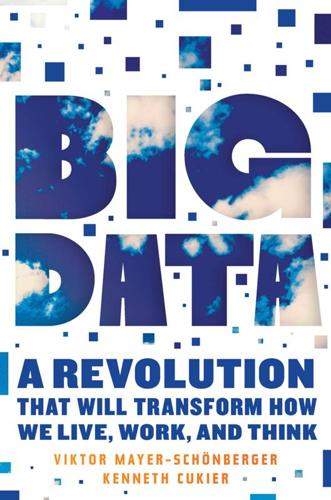
Big Data: A Revolution That Will Transform How We Live, Work, and Think
by
Viktor Mayer-Schonberger
and
Kenneth Cukier
Published 5 Mar 2013
Instead, it’s about applying math to huge quantities of data in order to infer probabilities: the likelihood that an email message is spam; that the typed letters “teh” are supposed to be “the”; that the trajectory and velocity of a person jaywalking mean he’ll make it across the street in time—the self-driving car need only slow slightly. The key is that these systems perform well because they are fed with lots of data on which to base their predictions. Moreover, the systems are built to improve themselves over time, by keeping a tab on what are the best signals and patterns to look for as more data is fed in.
…
A single Google Street View drive amassed a myriad of discrete data streams at every moment. The extensibility comes in because Google applied the data not just for a primary use but for lots of secondary uses. For example, the GPS data it garnered improved the company’s mapping service and was indispensable for the functioning of its self-driving car. The extra cost of collecting multiple streams or many more data points in each stream is often low. So it makes sense to gather as much data as possible, as well as to make it extensible by considering potential secondary uses at the outset. That increases the data’s option value. The point is to look for “twofers”—where a single dataset can be used in multiple instances if it can be collected in a certain way.
…
Its stock market prospectus in 1997 described “collaborative filtering” before Amazon knew how it would work in practice or had enough data to make it useful. Both Google and Amazon span the categories, but their strategies differ. When Google first sets out to collect any sort of data, it has secondary uses in mind. Its Street View cars, as we have seen, collected GPS information not just for its map service but also to train self-driving cars. By contrast, Amazon is more focused on the primary use of data and only taps the secondary uses as a marginal bonus. Its recommendation system, for example, relies on clickstream data as a signal, but the company hasn’t used the information to do extraordinary things like predict the state of the economy or flu outbreaks.
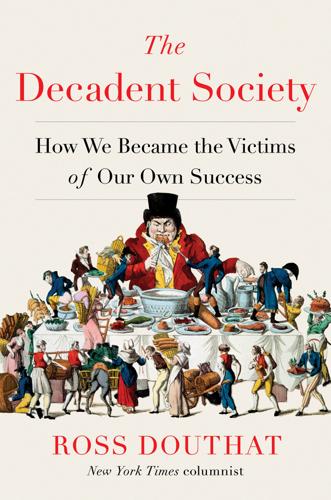
The Decadent Society: How We Became the Victims of Our Own Success
by
Ross Douthat
Published 25 Feb 2020
So it sits there, widely regarded as one of the defining success stories of the Internet era, a unicorn unlike any other, with billions in losses and a plan to become profitable that involves vague promises to somehow monetize all its user data and a specific promise that its investment in a different new technology—the self-driving car, much ballyhooed but as yet not exactly real—will square the circle and make the math add up. That’s the story of Uber—so far. It isn’t a pure Instagram fantasy like the Fyre Festival or a naked fraud like Theranos; it managed to go public and maintain its outsize valuation, unlike its fellow money-losing unicorn WeWork, whose recent attempt at an IPO hurled it into crisis.
…
Or to use Cowen’s favored metaphor, if we have plucked most of the low-hanging fruit that the industrial revolution made possible to reach, there might still be a ladder that someone could invent that would make the higher branches suddenly easier to reach, and for all we know, that ladder might be being extended even now. In which case, we will look back on our present decadence as simply a lull—a period when innovation slowed temporarily before self-driving cars and CRISPR and nanotech and private spaceflight sent it surging forward once again. That possibility will be considered in more detail later. But the lull is still the multigenerational reality right now, and human history offers no reassurance that it will necessarily end. As Gordon and Cowen note, it’s the great surge of innovation in recent Western history that’s the historical anomaly, not the disappointing years since our great leap moonward.
…
Maybe we have simply been in a kind of bottleneck for the last few generations, achieving important scientific breakthroughs that don’t (yet) translate into society-altering changes. At a certain point, we’ll clear the bottleneck, and it will become clear that our era was a necessary prelude to renewed acceleration—eventually giving us self-driving cars courtesy of a finally profitable Uber, a Mars colony courtesy of the Elon Musk–Jeff Bezos space race, and radical life extension courtesy of Google’s longevity lab or some other zillionaire who can’t imagine shuffling off this mortal coil. All of this could happen on a scale that would be world altering without having the truly utopian scenarios come to pass.
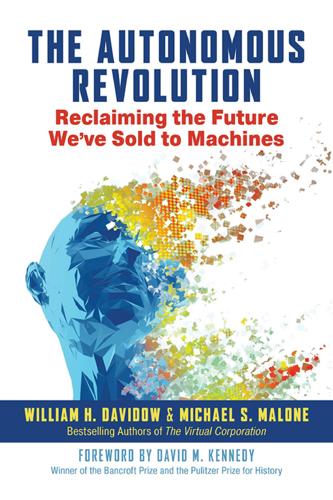
The Autonomous Revolution: Reclaiming the Future We’ve Sold to Machines
by
William Davidow
and
Michael Malone
Published 18 Feb 2020
David Cardinal, “Ten Years After Their Debut, Autonomous Trucks Are Finally Hitting the Roads,” ExtremeTech, October 5, 2015, http://www.extremetech.com/extreme/215626-ten-years-after-their-debut-autonomous-trucks-are-finally-hitting-the-roads (accessed June 27, 2019). 18. Dan Fagella, “Self-Driving Car Timeline for 11 Top Automakers,” VentureBeat, June 4, 2017, https://venturebeat.com/2017/06/04/self-driving-car-timeline-for-11-top-automakers/ (accessed June 27, 2019). 19. “Number of Motor Vehicles Registered in the United States from 1990 to 2017,” Statista, www.statista.com/statistics/183505/number-of-vehicles-in-the-united-states-since-1990/ (accessed June 27, 2019); and Jared Green, “500 Million Reasons to Rethink the Parking Lot,” Grist, June 7, 2012, http://grist.org/cities/500-million-reasons-to-rethink-the-parking-lot/ (accessed June 27, 2019). 20.
…
It claims to operate from 4,700 cities, provide owners with liability insurance, and deliver cars directly to their renters.45 BlaBlaCar, a European service, allows its more than 35 million members to locate other members who are going where they want to so they can hitch a ride.46 Looming in the future, when the self-driving car arrives, are driverless types of Uber services. The vision is that you will be able to summon a car using your smartphone. It will pick you up, drive you to where you are going, and then speed away to pick up the next passenger. Car sharing is one of the growth industries of the future. GM estimates that 5 to 6 million people globally already share cars and that that number will grow to 20 to 30 million in the next few years.47 To capitalize on this trend, GM has launched its Maven car-sharing service, which allows part-time workers in the gig economy to rent a car when they need it to do such things as delivering groceries to paying customers.48 Maven competes with Mercedes’ Car2Go, which “allows customers to take cars one-way inside of a set perimeter and charges by the minute.”49 Our first thought is that these services compete with cabs and limousine services, but that may be overlooking the depth of the structural transformation.
…
“Truck Drivers in the USA,” All Trucking.com, http://www.alltrucking.com/faq/truck-drivers-in-the-usa/ (accessed June 27, 2019). 27. Alexis C. Madrigal, “Could Self-Driving Trucks Be Good for Truckers?,” The Atlantic, February 1, 2018, https://www.theatlantic.com/technology/archive/2018/02/uber-says-its-self-driving-trucks-will-be-good-for-truckers/551879/ (accessed on June 27, 2019); and Anika Balakrishman, “Self-Driving Cars Could Cost America’s Professional Drivers Up to 25,000 Jobs a Month, Goldman Sachs Says,” CNBC, May 22, 2017, https://www.cnbc.com/2017/05/22/goldman-sachs-analysis-of-autonomous-vehicle-job-loss.html (access June 27, 2019). 28. “Truck Drivers in the USA.” 29. Nicholas Carlson, “Revenue per Employee Charts Are a Fascinating Way to Judge the Health of Tech Companies,” Business Insider, April 9, 2015, http://www.businessinsider.com/revenue-per-employee-charts-are-a-fascinating-way-to-judge-the-health-of-tech-companies-2015-4 (accessed June 27, 2019). 30.

A Hacker's Mind: How the Powerful Bend Society's Rules, and How to Bend Them Back
by
Bruce Schneier
Published 7 Feb 2023
Other examples include carefully placed, seemingly innocuous stickers affixed to a stop sign that fool an AI classifier into thinking it’s a speed-limit sign, or placement of stickers on a road that fool a self-driving car into swerving into oncoming traffic. These are all theoretical examples, and while researchers have succeeded in causing cars to fail in this manner in tests, as far as we know no one has actually crashed a self-driving car through adversarial ML. Adversarial ML doesn’t have to be malevolent, and it isn’t restricted to laboratory settings. Right now, there are adversarial ML projects trying to hack facial recognition systems so that protesters and others can congregate publicly without fear of being identified by police.
…
While this is fascinating work, encompassing fields from computer science to sociology to philosophy, its practical applications are probably decades away. I want to focus instead on specialized AI, because that’s what’s under development now. Specialized AI is designed for a specific task, such as the system that controls a self-driving car. It knows how to steer the vehicle, how to follow traffic laws, how to avoid getting into accidents, and what to do when something unexpected happens—like a child’s ball suddenly bouncing into the road. Specialized AI knows a lot and can make decisions based on that knowledge, but only in the limited domain of driving.
…
See wealth/power private equity, 101–2 Protestant Reformation, 72 psychotherapy, 217 pump-and-dump, 80–81 Quibi, 100–101 ranked-choice voting, 171 real estate hacks, 86–88 reciprocation, 217 recommendation engines, 236 Reconstruction, 161–62 red-teaming, 56, 77, 126–27, 149 Redeemers, 161–62 regulation accountability and, 68 banking, 74 financial exchange hacks and, 84 governance systems, 245–48 market hacks and, 94 real estate hacks and, 87–88 See also regulation avoidance regulation avoidance, 123–27 financial exchange hacks and, 82 gig economy and, 123–25, 264n jurisdictional rules and, 131 regulatory capture, 75–77, 91, 116–18 ride-sharing apps and, 123–24, 264n “too big to fail” hack and, 97 wealth/power advantages and, 121 Regulation Q, 74, 75 regulatory capture, 75–77, 91, 116–18 religious hacks, 71–72, 73, 85, 111, 139–40, 260n resilience, 28, 67–68 responsible disclosure, 89–90 rewards, 184, 186, 231–35, 240 ride-sharing apps, 99, 100, 101, 116, 123–25, 264n Riegle-Neal Interstate Banking and Branching Efficiency Act (1994), 75 risk analysis, 195–96 robotics, 208, 217–19, 222–23 See also AI hacking; AI systems Rodriguez, Alex, 170 Rodríguez, Jose, 170 Roombas, 217 Rosenblum, Jeremy, 126–27 rules, 18–19, 25, 232 Russell, Stuart, 233 Sahu, Lakhan, 170–71 Saunders, Don, 31 script kiddies, 22 secure systems design, 59, 85 Securities Act (1933), 82 Securities Exchange Act (1934), 80 Sedol, Lee, 212 segmentation, 60 self-driving cars, 209–10 SGT STAR, 188 shoplifting, 63, 68 SIM swapping, 191 simplicity, 59, 80 Siri, 217 skimming, 33 Smith, Adam, 93 social engineering, 191–92, 216 social media, 184–85, 186–87 soft money, 169 SoftBank, 99 SolarWinds, 54–55, 60, 145 South Carolina v. Katzenbach, 164 spam, 46–47 spear phishing, 192 Spectre, 48 sponsored content, 194 spoofing, 81, 82 sports hacks, 41–44, 46, 103, 259n Summers, Larry, 97 sumptuary laws, 110 supply chain attacks, 145 Susskind, Jamie, 248 Suzuki, Daichi, 42 systems additional for hacking defense, 54, 60 biological, 19–20 defined, 17–18, 19 hierarchy and, 200 multiple levels of, 32 norms and, 66–67 resilience in, 152 rigidity of, 27 rules and, 18–19 thinking based on, 20 TaskRabbit, 124 Tata, Anthony, 160 tax code bugs in, 14–15 complexity of, 13–14 See also tax hacks Tax Cuts and Jobs Act (2017), 14, 15–16, 129, 146–47, 149 tax hacks architecture and, 109 creative hackers and, 22 cum-ex trading, 104–5 de minimis rule and, 249 defenses against, 15–16, 51, 61 jurisdictional rules and, 128–31 morality and, 263n wealth/power advantages and, 120 tax havens, 128–31 Tay (chatbot), 210 technological change, 251–52 telephone hacks, 26–27, 46 Terminator, 243 terrorism, 196 Tetzel, Johann, 72, 260n Theranos, 101 Thiel, Peter, 3, 4 threat modeling, 62–63, 64–65, 96 title-only bills, 154 “too big to fail” hack, 95–98 travel hacks, 179–80 trespass law, 135–36 tribal courts, 113 tribalism, 196–97 Troubled Asset Relief Program, 96 Trump, Donald banking hacks and, 77 cognitive hacks and, 182 destruction as result of hacking and, 173 legislative process hacks and, 147 norms and, 66–67 payday loans and, 126 social media and, 185 tax hacks and, 105 trust hacking, 27, 191–94, 218 TurboTax, 190 turducken, 110, 263n Turkle, Sherry, 218–19 Twenty-Fourth Amendment, 164 Twitter, 81 typos, 84–85 Uber, 99, 100, 101, 116, 123, 125, 264n unemployment insurance, 132–33 United Nations Convention on the Law of the Sea (1994), 130 user interface design, 189–90 Vacancies Reform Act (1998), 160 variable rewards, 186 venture capital (VC), 99–101, 125 Violence Against Women Act (2013), 114 voice assistants, 217 Volcker Rule, 77 Volkswagen, 234 Voltaire, 172 voter eligibility hacks, 161–63 voter ID laws, 164–65 Voting Rights Act (1965), 164 vulnerabilities acceptance of, 16 AI ability to find, 229–30, 238–39 ATM hacks and, 31, 33, 34 bugs as, 14–15 hacking as parasitical and, 48, 49 hacking hierarchy and, 201 hacking life cycle and, 21 identifying, 56–57, 77–78, 237–38 legislative process hacks and, 147–48, 267n of AI systems, 4, 209–11, 226–27 real estate hacks and, 86 responsible disclosure, 89–90 secure systems design and, 59 zero-day, 90 See also patching Walker, Scott, 166–67 WannaCry, 50 Warner, Mark, 190 Watts, Duncan, 97 wealth/power access and, 22 administrative burdens and, 134 democratic growth and, 250 election hacks and, 168–71 hacking advantages of, 103–4, 119–22 hacking governance systems and, 248 hacking normalization and, 73, 104, 119, 120, 122 impact on vulnerability patches and, 24 market hacks and, 97 trust breakdown and, 251 West, Kanye, 170 Westphal, Paul, 41 WeWork, 100 WikiLeaks, 191 Wilson, Edward O., 251 Winston, Patrick, 206 Women, Infants, and Children (WIC) program, 134 work-to-rule, 115–16, 121 YouTube, 185, 236 Zelenskyy, Volodymyr, 193 zero-day vulnerabilities, 90 Zone of Death jurisdictional loophole, 112–13 Zuckerberg, Mark, 94 Zuckerman, Ethan, 183 ALSO BY BRUCE SCHNEIER We Have Root Click Here to Kill Everybody Data and Goliath Carry On Liars and Outliers Cryptography Engineering Schneier on Security Practical Cryptography Beyond Fear Secrets and Lies The Twofish Encryption Algorithm The Electronic Privacy Papers E-Mail Security Protect Your Macintosh Applied Cryptography Copyright © 2023 by Bruce Schneier All rights reserved First Edition For information about permission to reproduce selections from this book, write to Permissions, W.
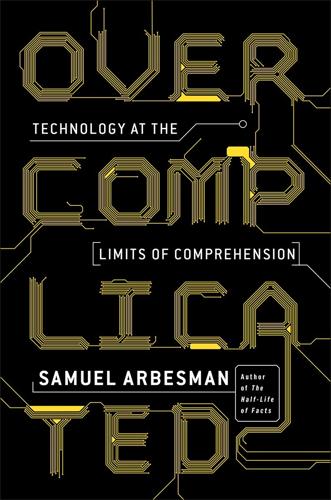
Overcomplicated: Technology at the Limits of Comprehension
by
Samuel Arbesman
Published 18 Jul 2016
I’ve noticed that when faced with such massive complexity, we tend to respond at one of two extremes: either with fear in the face of the unknown, or with a reverential and unquestioning approach to technology. Fear is a natural response, given how often we are confronted with articles on such topics as the threat of killer machines, the dawn of superintelligent computers with powers far beyond our ken, or the question of whether we can program self-driving cars to avoid hitting jaywalkers. These are technologies so complex that even the experts don’t completely understand them, and they also happen to be quite formidable. This combination often leads us to approach them with alarm and worry. Even if we aren’t afraid of our technological systems, many of us still maintain an attitude of wariness and distaste toward the algorithms and technologies that surround us, particularly when we are confronted with their phenomenal power.
…
One need not always end up with messy code because the world is messy, but it does often happen. Fortunately, there are ways to mitigate it. See Steve McConnell, Code Complete: A Practical Handbook of Software Construction, 2nd ed. (Redmond, WA: Microsoft Press, 2004), 583. building a self-driving vehicle: The complexity of building self-driving cars was discussed by Google[x]’s “Captain of Moonshots” in his closing keynote address at South by Southwest Interactive (SXSW) 2015: Astro Teller, “How to Make Moonshots,” Backchannel, March 17, 2015, https://medium.com/backchannel/how-to-make-moonshots-65845011a277. the exceptions that nonetheless have to be dealt with: One solution is to use humans to manually troubleshoot, or at least hard-code, the exceptions.
…
isn’t the worst thing to tell someone: I am thankful for this insight, as well the insights related to limitative theorems, from discussion with folks from the Department of Philosophy at the University of Kansas. incomprehensible systems are the new reality: For example, just because we might not fully grasp all the details of a self-driving car, that doesn’t mean that it can’t be much safer than one driven by a person. And by the way, we already don’t really understand the car driven by a person, let alone the driver himself! the “unthinkable present”: Quoted in Carlin Romano, America the Philosophical (New York: Alfred A. Knopf, 2012), 501.
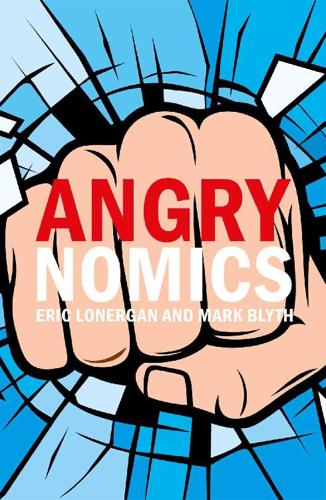
Angrynomics
by
Eric Lonergan
and
Mark Blyth
Published 15 Jun 2020
The OECD then took it down to 9 per cent, as reality took hold.24 That is, once the hysteria died down, certain things started to become apparent. The first was that almost none of these technologies either exist or are deployable at scale. Self-driving cars and trucks are probably the most developed of these technologies, but they only exist in pilot schemes and are subject to innumerable legal and practical obstacles. Think about the following problem. How do you write a computer command in advance to tell the self-driving car to “always hit the car with fewer people in it” in order to minimize losses, and not get sued by the family of the fewer people in the car? Nonetheless, the constant drumbeat that, for example, in a decade “all truck-driving jobs will go the way of the gas-lighter” may be, in part, responsible for the fact that the US trucking industry was by around 2017 short of 100,000 drivers and the fleet was operating at 100 per cent capacity.
…
MARK: Here’s something that perhaps illustrates this tension for people who lived through the 2010s. Just as the global financial crisis really began to bite in Europe in 2010, the press everywhere suddenly became replete with stories about how pretty much all workers were shortly to be replaced by robots. Whether in the form of self-driving cars and trucks, drone delivery of goods, computer analysis of financial and legal data, blockchain and bitcoin, we were told over and over that no one was immune. Why? Because this time it was different – different in that AI and ML would combine to do things better than humans can do, and that such machines would get better at doing whatever they do better faster than we can catch up, hence the “race against the machine” and we were all going to lose.

Age of Context: Mobile, Sensors, Data and the Future of Privacy
by
Robert Scoble
and
Shel Israel
Published 4 Sep 2013
Similarly, significant innovations and accuracy improvements in voice recognition make systems like Apple’s Siri, Google Now and Google Voice Search possible. The foundation for the Age of Context—all of these technologies working together—is the cloud computing infrastructure, which continues to grow exponentially in capability and capacity. And it had better keep growing: A self-driving car, which we describe in Chapter 5, generates about 700 megabytes of data per second. We talked with GM, Ford, Toyota—and Google—about what would happen if every car had that technology. Well, for one thing, today’s cloud computing technology would melt down. Rackspace, a cloud hosting provider and Scoble’s employer, was the first and largest sponsor of this book.
…
Prior to CES, thousands of Northern California drivers had already been startled, while driving along public roads, to pass vehicles with odd spinning devices mounted on their roofs. These cars usually moved at precisely the speed limit and contained passengers. Normal enough, except that no one was behind the wheel. These were part of Google’s growing fleet of experimental self-driving cars. They employ short-range radar, laser beams and motion and 3D sensors. The technology allows the cars to discern what’s around them in all directions and decide what, if anything, to do about it. The rooftop spinners contain a new technology, called “lidar” (Laser Imaging Detection and Ranging).
…
Lien walked us through a multitude of issues that dampen our hopes that the self-driving objects we see in the future are closer than they appear. To get from a consumer exhibition to general use on public roads will require “a great many incremental steps” in technology refinement, user acceptance and cost, as well as institutional adjustments such as legislation, liability and mixed-use roadways. Lien predicts that self-driving cars will first be available “in urban scenarios, because the technology can understand terrain and traffic patterns more easily and cars move at lower speeds.” Industrywide, some cars have already instituted features that are helpful in urban settings: Automatic parking features use sensors to back into tight spots without curb scrape or bumper tapping, and traffic-jam assistance recognizes patterns and adjusts lanes or routes for the driver, thus burning less fuel.
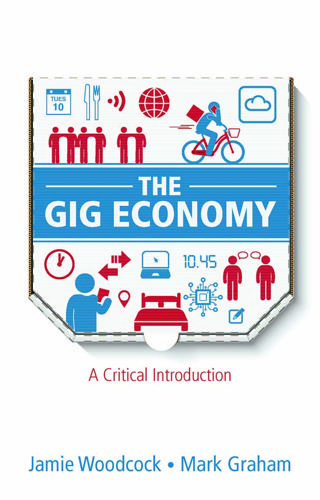
The Gig Economy: A Critical Introduction
by
Jamie Woodcock
and
Mark Graham
Published 17 Jan 2020
Within the platform, huge amounts of data are collected about the drivers and journeys. Uber knows where its drivers are, where they have been, the routes they have taken, the cost of each journey, and how it was rated by the passenger. Part of this hunger for data can be explained by Uber’s ambition to introduce self-driving cars.11,12 The huge quantities of data provide a training set that can be used to train artificial intelligence self-driving, meaning that the losses made in the short term could be offset by the potential for longerterm gains if Uber has the majority on self-driving vehicles.13 Anyone in doubt about the granularity of Uber’s data collection should note the so-called ‘god view’ that can be used to show all drivers and users in a city.
…
Tied up in the platform model is the capturing of data from workers and users, and the developing of ways to turn it into a productive resource. For example, with Uber, the actions of workers provide data that is used to further the short-term aims of the platform, while also developing the possibility to replace workers with even cheaper (and more docile) artificial intelligence in the form of self-driving cars. While, in many cases, this level of automation may seem relatively far off, it impacts on the strategy of the platform and also informs the perspective that they take towards workers: why offer a steady and secure employment contract if you would prefer these tasks were automated anyway? Automation is a concern that is increasingly on the policy agenda throughout the world.
…
With delivery work, some parts of the labour process have already been automated, through the use of GPS-assisted route planning and barcodes or radio-frequency identification (RFID) tagging for inventory management. The second is that in all of these cases, workers are contributing to datasets being used to train artificial replacements. The data generated by drivers contributes to the training sets for self-driving cars, while microwork allows for a much wider range of training data. Often workers will not be aware of the role they are playing, as the tasks are fractured and stripped of their meaning. Barriers to entry for workers Many platforms operate with limited barriers to entry for workers, in part because of the relatively low levels of formal training needed for workers to engage in the job.

No Ordinary Disruption: The Four Global Forces Breaking All the Trends
by
Richard Dobbs
and
James Manyika
Published 12 May 2015
And in Europe, organizations such as Design for Manufacturing Forum connect industrial designers, engineers, and manufacturers with the fast-growing “maker” movement to create a decentralized, lean manufacturing ecosystem around urban clusters in cities like Rotterdam. Think of Cities as Laboratories Cities are demographic and political microcosms well suited for both private- and public-sector experimentation. Compared with their rural counterparts, city leaders often have greater license to experiment, be it in school reform or regulation of self-driving cars. Private- and public-sector leaders are increasingly collaborating on R&D to find innovative solutions to evolving city needs. As a result, cities are becoming increasingly important partners in innovation—particularly for companies that need to pilot new products and services in self-contained markets before rolling them out nationally.
…
In 2004, DARPA (Defense Advanced Research Projects Agency) funded the Grand Challenge, a competition that offered $1 million to the first driverless car that could drive 150 miles across the Mojave Desert. Nobody won the prize money; the best-performing car (from Carnegie Mellon) managed a little over 7 miles. Ten years later, Google’s fleet of self-driving cars has already logged 700,000 miles in city streets—with the only accident occurring when a human was operating one of the Toyota Prius cars. Today, new car models offer the latest advances in driver-assist systems, such as braking, parking, and collision avoidance. By 2025, the driverless revolution in ground and airborne vehicles could be well underway, especially if the regulatory framework keeps pace with the changes.
…
Policy makers who understand technology can harness it to improve societal outcomes in a range of ways—from providing health care, education, and other public services to improving productivity and making governance more transparent and accountable. In addition, governments need to constantly revise legal and regulatory frameworks to ensure their relevance. California legislators are now trying to prepare for advances in self-driving cars; officials from several state departments meet routinely to try to understand all of the ways in which the technology requires legislative changes—such as in liability insurance, drivers’ licenses, safety requirements, and infrastructure needs. They understand that the benefits of being early—especially the potential jobs that could be created in related businesses—are sufficiently large to offset the difficulties of being early.23 Governments around the world are also facing new challenges from increasing global connectivity in data and communication flows.

The End of College: Creating the Future of Learning and the University of Everywhere
by
Kevin Carey
Published 3 Mar 2015
He dressed in jeans and stylish T-shirts and married a beautiful professor of comparative literature who liked to tease him about his techno-utopian ways. In March of that year, Thrun was invited to TED (Technology, Education, Design), the annual festival of technologist self-congratulation, where he stood before a rapt audience and described how he and his colleagues at Google had built a self-driving car. Afterward, Thrun hung around the conference to watch the other presenters, including an energetic former hedge fund analyst named Salman Khan. Khan had computer science degrees from MIT and an MBA from Harvard, and had become recently famous for creating a series of instructional videos for elementary, middle, and high school children that had attracted millions of views on YouTube.
…
Then a New York Times reporter wrote a story about the course, and suddenly word shot around the world. Enrollment reached six figures and continued to climb. Sebastian Thrun had done nothing particularly interesting from an educational or technological perspective. He did not invent the college equivalent of a self-driving car. There were already thousands of lecture videos on YouTube and iTunes by 2011 and millions of students enrolled in online courses offered by accredited colleges and universities. Because it was huge and free, CS221 was soon described as a “massive open online course,” or MOOC. But Thrun hadn’t invented MOOCs, either; the term had first been used three years earlier to describe a course on the nature of learning taught at the University of Manitoba by a pair of Canadian professors named George Siemens and Stephen Downes.
…
To survive and prosper in the world with limited cognitive capacity, humans filter waves of constant sensory information through neural patterns—heuristics and mental shortcuts that our minds use to weigh the odds that what we are sensing is familiar and categorizable based on our past experience. Sebastian Thrun’s self-driving car does this with Bayesian statistics built into silicon and code, while the human mind uses electrochemical processes that we still don’t fully understand. But the underlying principle is the same: Based on the pattern of lines and shapes and edges, that is probably a boulder and I should drive around it.
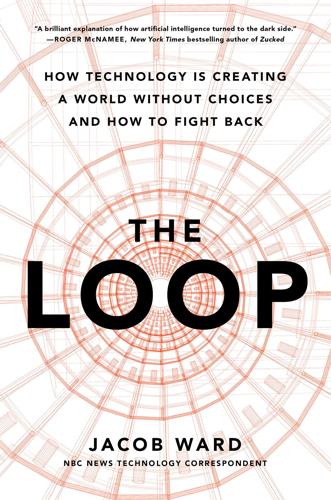
The Loop: How Technology Is Creating a World Without Choices and How to Fight Back
by
Jacob Ward
Published 25 Jan 2022
This particular competition in Florida was an annual competition, a yearly federal goosing of the robotics industry into producing an all-in-one robot helper for disaster work. (Although of course a robot capable of these tasks could have other, more military purposes as well.) This same competition format previously produced a functional self-driving car, after several years during which the entrants careened off roadways and crashed into barriers. But this year it didn’t reach such heights with the robotic assistants that DARPA imagined someday putting out fires, handling nuclear material, or carrying lunch across a minefield. The trouble was that these robots were faced with human tasks, in human environments.
…
That process might take hours, days, maybe longer, but if no one had bothered to build a dog-versus-cow recognition system before, perhaps it would be the best route to distinguishing the animals from one another. Whatever AI we brought in, there are two major forces at work that guide the outcome of the process. The first is called the objective function. It’s what the human wants out of the project, whether that’s a self-driving car parked equidistant between two other cars, no more than six inches from the curb, or a cheeseburger parked between two buns, cooked medium rare. The objective function is the purpose toward which the whole system is striving, and writing it out clearly is the defining first task of any successful machine-learning system.
…
Ancient myths are full of badly composed objective functions: Pirithous wants Persephone, queen of the underworld, as his wife and winds up stuck in hell. Sibyl asks Apollo for as many years of life as grains of sand in her fist, but she forgets to ask for youth along with it and winds up shriveled in pain. If the self-driving car isn’t told it must park parallel to the curb, or if the burger bot doesn’t know the buns go on the outside, it can all go very wrong. The other major force at work is the sheer ruthless efficiency that we design any machine-learning system to use in pursuit of the objective function. After all, the purpose of these systems is to save humans the time and effort required to spot patterns in a vast field of data, and to get better and better at the process over time.
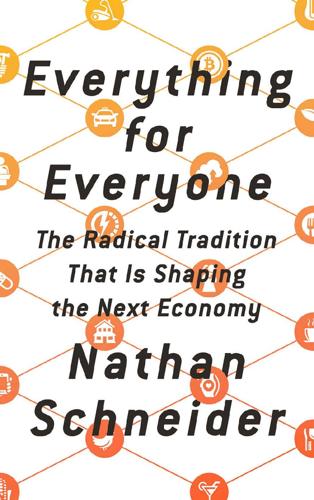
Everything for Everyone: The Radical Tradition That Is Shaping the Next Economy
by
Nathan Schneider
Published 10 Sep 2018
While I waited, I scrolled through the Twitter feed of Autocab International, the company that created Green Taxi’s app, “the No. 1 largest supplier of taxi booking and dispatch systems in the world.” Recent posts included pictures of a workshop held in the United Kingdom about how to beat Uber, as well as links to news articles reporting new tests of self-driving cars, self-driving trucks, self-driving mini-buses. Also, alongside a broken link: “Crisis management is our specialty.” While Green Taxi’s drivers scrambled to protect their livelihoods, Uber and Tesla and Google were tooling up to automate them. I asked Buni about this. He said, “We’re really trying to feed a family for the next day.
…
He said, “We’re really trying to feed a family for the next day. When it happens, we’ll make a plan”—that is, crisis management, for the foreseeable future. To that end, he and his crisis-ridden co-owners pooled more than $1.5 million to put one-third of Denver’s taxi industry under worker control. Self-driving cars hadn’t come to the city’s roads yet, but Wall Street’s anticipation of them was fueling investment in the big apps, which put pressure on the taxi market and motivated so many drivers to set off on their own. The disruption was already happening, and Green Taxi had been born of it. In the beginning, before Uber and Lyft and even checkered taxicabs, there was sharing.
…
The founders of both Savvy and Word Jammers live with chronic conditions, and their concern for the standards of platform work stem from experiences of being differently abled. They know, better than most, that the dominant online economy wasn’t designed with them in mind. Some platform users are already serving as trainers for their robot replacements. Uber drivers feed their data to the future self-driving cars, and Google’s algorithms learn every time a website asks us to identify the street signs in a reCAPTCHA quiz. Artificial intelligence should be a wonderful thing, but so far the bulk of it is being owned and controlled by a few big-data giants. That’s why a group of researchers in the United States and India has proposed “cooperative models for training artificial intelligence”—enabling trainers to receive benefits through shared ownership.20 Yet these are still only models, and they’re competing against up-and-running juggernauts.

Data Action: Using Data for Public Good
by
Sarah Williams
Published 14 Sep 2020
Chapter 5 1 The Economist, “Off the Map,” Economist, November 13, 2014, https://www.economist.com/news/international/21632520-rich-countries-are-deluged-data-developing-ones-are-suffering-drought. 2 Umar Serajuddin et al., Data Deprivation: Another Deprivation to End (Washington, DC: World Bank, 2015). 3 Ibid. 4 Data Revolution Group, “A World That Counts,” 2014, http://www.undatarevolution.org/wp-content/uploads/2014/11/A-World-That-Counts.pdf. 5 danah boyd and Kate Crawford, “Critical Questions for Big Data: Provocations for a Cultural, Technological, and Scholarly Phenomenon,” Information, Communication & Society 15, no. 5 (2012): 662–679. 6 Sean O’Kane, “Tesla and Waymo Are Taking Wildly Different Paths to Creating Self-Driving Cars,” Verge, April 19, 2018, https://www.theverge.com/transportation/2018/4/19/17204044/tesla-waymo-self-driving-car-data-simulation. 7 Sarah Williams, “Who Owns the City of the Future?” Cooper Hewitt Design Journal (Winter 2018): 8–10. 8 Jim Thatcher, David O’Sullivan, Dillon Mahmoudi, “Data Colonialism through Accumulation by Dispossession: New Metaphors for Daily Data,” Environment and Planning D: Society and Space 34, no. 6 (2016): 990–1006. 9 Nick Couldry, The Costs of Connection: How Data Is Colonizing Human Life and Appropriating It for Capitalism (Stanford, CA: Stanford University Press, 2019). 10 Greg Elmer, Ganaele Langlois, and Joanna Redden, Compromised Data: From Social Media to Big Data (New York: Bloomsbury Publishing, 2015). 11 Jo Bates, “The Strategic Importance of Information Policy for the Contemporary Neoliberal State: The Case of Open Government Data in the United Kingdom,” Government Information Quarterly 31 (2014): 388–395. 12 Thomas L.
…
Economist, November 13, 2014. https://www.economist.com/international/2014/11/13/off-the-map. Offenhuber, Dietmar, and Carlo Ratti. Waste Is Information: Infrastructure Legibility and Governance. Cambridge, MA: MIT Press, 2017. O’Kane, Sean. “Tesla and Waymo Are Taking Wildly Different Paths to Creating Self-Driving Cars.” The Verge, April 19, 2018. https://www.theverge.com/transportation/2018/4/19/17204044/tesla-waymo-self-driving-car-data-simulation. Olson, Donald R., Kevin J. Konty, Marc Paladini, Cecile Viboud, and Lone Simonsen. “Reassessing Google Flu Trends Data for Detection of Seasonal and Pandemic Influenza: A Comparative Epidemiological Study at Three Geographic Scales.”
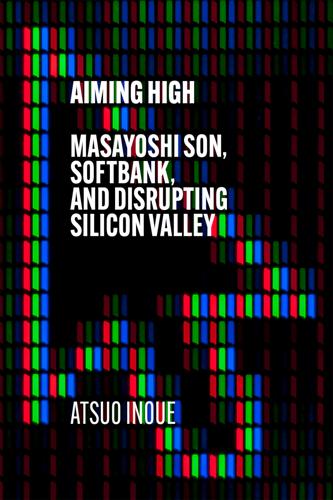
Aiming High: Masayoshi Son, SoftBank, and Disrupting Silicon Valley
by
Atsuo Inoue
Published 18 Nov 2021
Ron Fisher offers his comments on the deal as well: ‘Arm and Nvidia combining their individual areas of expertise is going to usher in a new generation of performance and I think it was a very good decision. The solution they’ve come up with by combining the two types of processing will give rise to next-level platforms. One of the more obvious next-level applications is autonomous transportation (such as self-driving cars) but when combining the CPU and GPU pairing with robotics, AI, central processing and cloud computing, there is no doubt in my mind completely new technological platforms will start springing up, much like when the Intel 8088 and 8086 came out, sparking the creation of platforms which were used over decades.
…
He would also comment further on the value of the ecosystem created by the fusion between Arm and Nvidia, stating the two would be capable of creating the types of chips required to jump-start the AI revolution, leading to AI being capable of solving problems faced by humanity, such as AI-led drug development or self-driving cars, or robots with access to the cloud and AI. It would even be capable of developing its own computing platforms. Son would comment that the most important thing with these advances was their capacity for making major contributions to the future of humankind. Elsewhere in his comments he would state that the seeds sown with the SoftBank Vision Fund were starting to sprout and bear fruit.
…
Out of the 128 companies at least 15 to 20 are thought to be truly revolutionary, and their emergence and mass popularity will change people’s lives: companies specialising in new medicines to prevent cancer, businesses focusing on online education to completely change the way people learn, virtual kitchens, self-driving cars, driverless delivery vehicles. Misra also makes his expectations concerning the scope of the Vision Fund perfectly clear. ‘Where venture capitalists invest early, SVF will invest later, mid-stage and help those companies in a number of ways. SVF helps them in bank financing. SVF helps them hire people.

Machine, Platform, Crowd: Harnessing Our Digital Future
by
Andrew McAfee
and
Erik Brynjolfsson
Published 26 Jun 2017
Google believes that because human inattention is a perennial problem, we need to be taken entirely out of the loop in driving. As Chris Urmson, the former head of the company’s self-driving car project, put it, “Conventional wisdom would say that we’ll just take these driver assistance systems and we’ll kind of push them and incrementally improve them, and over time, they’ll turn into self-driving cars. Well, I’m here to tell you that’s like me saying that if I work really hard at jumping, one day I’ll be able to fly. We actually need to do something a little different.” So the company is working to build 100% self-driving cars that require no contributions from humans—known in the industry as “level 5 autonomy.”
…
Some people will continue to self-select human-to-human interactions, but we believe virtualization is a long-term trend that will generally increase over time as machines gain more capabilities. Robotics is undergoing a “Cambrian Explosion” as machines learn to see, as well as by many other kinds of digital progress. Automatons of all kinds—robots, drones, self-driving cars, and so on—are becoming cheaper, more widely available, more capable, and more diverse all at the same time. Drivers of the robotic Cambrian Explosion include data, algorithms, networks, the cloud, and exponential improvements in hardware: DANCE. Robots and their kin will be increasingly used wherever work is dull, dirty, dangerous, and dear.
…
And for products with a demand curve that looks like the one in Figure 8, the biggest rectangle turns out to be a long, low one. The revenue-maximizing price, in other words, is surprisingly low. This appears to be the case for rides in cars within cities. As Uber has lowered prices, first with UberX and then with UberPool (and perhaps eventually with self-driving cars), demand has expanded greatly.** Uber very much wants to satisfy this demand by charging extremely low prices, since doing so will maximize its revenue. Figure 8 Most demand curves are not straight lines. Sometimes, they have this shape. But in two-sided markets, simply working its way down the demand curve is only a small part of the story.

The New Digital Age: Transforming Nations, Businesses, and Our Lives
by
Eric Schmidt
and
Jared Cohen
Published 22 Apr 2013
While some of the very exciting new possibilities in transportation, like supersonic tube commutes and suborbital space travel, are still far in the distance, ubiquitous self-driving cars are imminent. Google’s fleet of driverless cars, built by a team of Google and Stanford University engineers, has logged hundreds of thousands of miles without incident, and other models will soon join it on the road. Rather than replacing drivers altogether, the liminal step will be a “driver-assist” approach, where the self-driving option can be turned on, just as an airline captain turns on the autopilot. Government authorities are already well versed on self-driving cars and their potential—in 2012, Nevada became the first state to issue licenses to driverless cars, and later that same year California also affirmed their legality.
…
one of the lowest rates of literacy in the world: “Field Listing: Literacy,” CIA, World Fact Book, accessed October 11, 2012, https://www.cia.gov/library/publications/the-world-factbook/fields/2103.html#af. in 2012, Nevada became the first state to issue licenses to driverless cars: Chris Gaylord, “Ready for a Self-Driving Car? Check Your Driveway,” Christian Science Monitor, June 25, 2012, http://www.csmonitor.com/Innovation/Tech/2012/0625/Ready-for-a-self-driving-car-Check-your-driveway. California also affirmed their legality: James Temple, “California Affirms Legality of Driverless Cars,” The Tech Chronicles (blog), San Francisco Chronicle, September 25, 2012, http://blog.sfgate.com/techchron/2012/09/25/california-legalizes-driverless-cars/; Florida has passed a similar law.
…
Sarkozy, Nicolas satellite positioning Saud, Alwaleed bin Talal al- Saudi Arabia, 2.1, 2.2, 3.1, 4.1, 6.1 “Saudi People Demand Hamza Kashgari’s Execution, The” (Facebook group) Save the Children scale effects Schengen Agreement Scott-Railton, John search-engine optimization (SEO), n secession movements secure sockets layer (SSL) security, 2.1, 2.2, 2.3, 2.4 in autocracies censorship and company policy on, 2.1, 2.2 privacy vs., itr.1, 5.1, 5.2 in schools selective memory self-control self-driving cars, itr.1, 1.1, 1.2 September 11, 2001, terrorist attacks of, 3.1, 5.1 Serbia, 4.1, 6.1 servers Shafik, Ahmed shanzhai network, 1.1 sharia Shia Islam Shia uprising Shiites Shock Doctrine, The (Klein), 7.1n short-message-service (SMS) platform, 4.1, 7.1 Shukla, Prakash Sichuan Hongda SIM cards, 5.1, 5.2, 5.3, 6.1, 6.2, nts.1 Singapore, 2.1, 4.1 Singer, Peter, 6.1, 6.2, 6.3, 6.4, 6.5, 6.6, 6.7, 6.8 singularity SkyGrabber Skype, 2.1, 2.2, 2.3, 3.1, 5.1 sleeping rhythms Slim Helú, Carlos smart phones, itr.1, 1.1, 1.2, 5.1, 5.2, 7.1 in failed states peer-to-peer capability on Snapchat Snoad, Nigel social networking, 2.1, 4.1, 5.1 social-networking profiles social prosthetics social robots “socioeconomically at risk” people Solidarity Somalia, 2.1, 5.1, 5.2, 5.3, 6.1n, 210, 7.1, 7.2, 7.3 Sony South Africa, 4.1, 7.1 South Central Los Angeles Southern African Development Community (SADC) South Korea, 3.1, 3.2 South Sudan Soviet Union, 4.1, 6.1 Spain Speak2Tweet Special Weapons Observation Reconnaissance Detection System (SWORDS), 6.1, 6.2 speech-recognition technology spoofing Spotify Sputnik spyware, 3.1, 6.1 Stanford University statecraft State Department, U.S., 5.1, 7.1 states: ambition of future of Storyful, n Strategic Arms Limitation Talks (SALT) Stuxnet worm, 3.1, 3.2 suborbital space travel Sudan suggestion engines Summit Against Violent Extremism Sunni Web supersonic tube commutes supplements supply chains Supreme Council of the Armed Forces (SCAF) surveillance cameras Sweden switches Switzerland synthetic skin grafts Syria, 2.1, 3.1, 4.1, 4.2 uprising in Syrian Telecommunications Establishment tablets, 1.1, 1.2, 7.1 holographic Tacocopter Tahrir Square, 4.1, 4.2, 4.3 Taiwan Taliban, 2.1, 5.1, 7.1 TALON Tanzania technology companies, 2.1, 3.1 Tehran Telecom Egypt telecommunications, reconstruction of telecommunications companies Télécoms Sans Frontières television terrorism, terrorists, 4.1, 5.1, con.1 chat rooms of connectivity and cyber, 3.1n, 153–5, 5.1 hacking by Thailand Thomson Reuters Foundation thought-controlled robotic motion 3-D printing, 1.1, 2.1, 2.2, 5.1 thumbprints Tiananmen Square protest, 3.1, 4.1 Tibet time zones tissue engineers to-do lists Tor service, 2.1, 2.2, 2.3, 3.1, 5.1n Total Information Awareness (TIA) trade transmission towers transparency, 2.1, 4.1 “trespass to chattels” tort, n Trojan horse viruses, 2.1, 3.1 tsunami Tuareg fighters Tumblr Tunisia, 4.1, 4.2, 4.3, 4.4, 4.5 Turkey, 3.1, 3.2, 4.1, 5.1, 6.1 Tutsis Twa Twitter, 2.1, 2.2, 2.3, 2.4, 2.5, 2.6, 2.7, 3.1, 3.2, 4.1, 4.2, 5.1, 5.2, 6.1, 7.1, 7.2, nts.1 Uganda Uighurs, 3.1, 6.1 Ukraine unemployment UNESCO World Heritage Centre unique identification (UID) program United Arab Emirates, 2.1, 2.2, 2.3 United Kingdom, 2.1, 2.2, 2.3, 3.1 United Nations, 4.1, 5.1, 6.1, 7.1 United Nations Security Council, 3.1n, 214, 7.1 United Russia party United States, 3.1, 3.2, 3.3, 4.1, 5.1, 7.1 engineering sector in United States Agency for International Development (USAID) United States Cyber Command (USCYBERCOM) unmanned aerial vehicles (UAVs), 6.1, 6.2, 6.3, 6.4, 6.5 Ürümqi riots user-generated content Ushahidi vacuuming, 1.1, 1.2 Valspar Corporation Venezuela, 2.1, 2.2, 6.1 verification video cameras video chats video games videos Vietcong Vietnam vigilantism violence virtual espionage virtual governance virtual identities, itr.1, 2.1, 2.2 virtual juvenile records virtual kidnapping virtual private networks (VPNs), 2.1, 3.1 virtual reality virtual statehood viruses vitamins Vodafone, 4.1, 7.1 Vodafone/Raya voice-over-Internet-protocol (VoIP) calls, 2.1, 5.1 voice-recognition software, 1.1, 2.1, 5.1 Voilà VPAA statute, n Walesa, Lech walled garden Wall Street Journal, 97 war, itr.1, itr.2, 6.1 decline in Wardak, Abdul Rahim warfare: automated remote warlords, 2.1, 2.2 Watergate Watergate break-in Waters, Carol weapons of mass destruction wearable technology weibos, 62 Wen Jiabao Wenzhou, China West Africa whistle-blowers whistle-blowing websites Who Controls the Internet?
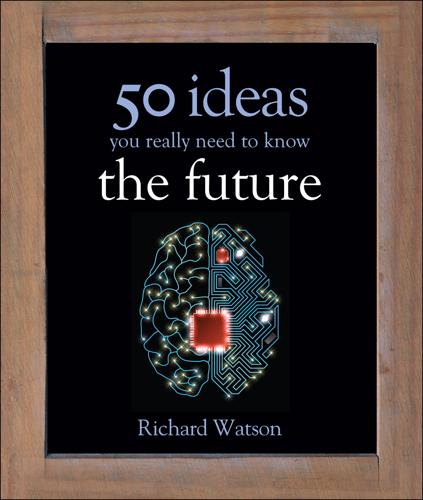
50 Future Ideas You Really Need to Know
by
Richard Watson
Published 5 Nov 2013
In the UK, 13 percent of farmers are now using autosteering on farm machinery and we will soon see the development of automated, driverless vehicles that work, alone, out in the fields. From there it’s not much of a leap to semi-intelligent harvester robots or robots that can go off by themselves to look for weeds or sick animals. The idea of self-driving cars has been a staple of science fiction for many decades, but in reality we are likely to see self-driving farm machinery and military vehicles far sooner than we will see serious numbers of automated vehicles on public roads, largely because many of the safety and legal concerns that apply to road use do not apply quite so much on private farmland or battlefields.
…
the condensed idea Reinventing our wheels timeline 1769 First self-propelled mechanical vehicle 1885 Karl Benz invents the modern motorcar 1960s Personal jetpack technology becomes a reality 2004 China unveils a high-speed magnetic levitation train 2016 35 percent of cars now hybrids 2022 Self-driving cars start to appear in China and India 2039 High-speed rail networks link Europe with North Africa 2036 Solar-powered planes widely used in Africa and Australia 15 Extra-legal & feral slums According to a UN estimate, 1 in 7 people worldwide now live in slums and in many cases these slums, which are not regulated or sanctioned by law, are set to become major cities in the near future.
…
But in the future, machines with strong AI will be able to learn as they go and respond to unexpected events. The implications? Think of automated disease diagnosis and surgery, military planning and battle command, customer-service avatars, artificial creativity and autonomous robots that predict then respond to crime (a “Department of Future Crime”—see also Chapter 32 and Biocriminology). Self-driving cars Gone are the days when Google was just a search engine and cars needed a driver. Google’s autonomous car project, started by Sebastian Thrun of Stanford Artificial Intelligence Laboratory, uses a Toyota Prius equipped with sensors to follow a GPS route all by itself. A robotics scientist sits in the car, but doesn’t actually drive it.
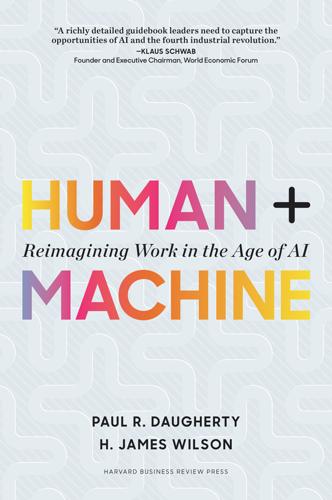
Human + Machine: Reimagining Work in the Age of AI
by
Paul R. Daugherty
and
H. James Wilson
Published 15 Jan 2018
Chapter 7 1.Shoshana Zuboff, In the Age of the Smart Machine: The Future of Work and Power (New York: Basic Books, 1989), 13. 2.Autoline Network, “The ART of Audi,” YouTube video, 1:04:45, August 22, 2014, https://youtu.be/Y6ymjyPryRo. 3.Sharon Gaudin, “New Markets Push Strong Growth in Robotics Industry,” ComputerWorld, February 26, 2016, http://www.computerworld.com/article/3038721/robotics/new-markets-push-strong-growth-in-robotics-industry.html. 4.Spencer Soper and Olivia Zaleski, “Inside Amazon’s Battle to Break into the $800 Billion Grocery Market,” Bloomberg, March 20, 2017, https://www.bloomberg.com/news/features/2017-03-20/inside-amazon-s-battle-to-break-into-the-800-billion-grocery-market. 5.Izzie Lapowski, “Jeff Bezos Defends the Fire Phone’s Flop and Amazon’s Dismal Earnings,” Wired, December 2, 2014, https://www.wired.com/2014/12/jeff-bezos-ignition-conference/. 6.Ben Fox Rubin, “Amazon’s Store of the Future Is Delayed. Now What?” CNET, June 20, 2017, www.cnet.com/news/amazon-go-so-far-is-a-no-show-now-what/. 7.Steven Overly, “The Big Moral Dilemma Facing Self-Driving Cars,” Washington Post, February 20, 2017, https://www.washingtonpost.com/news/innovations/wp/2017/02/20/the-big-moral-dilemma-facing-self-driving-cars/?utm_term=.e12ae9dedb61. 8.Matthew Hutson, “Why We Need to Learn to Trust Robots,” Boston Globe, January 25, 2015, https://www.bostonglobe.com/ideas/2015/01/25/why-need-learn-trust-robots/Nj6yQ5DSNsuTQlMcqnVQEI/story.html. 9.Aaron Timms, “Leda Braga: Machines Are the Future of Trading,” Institutional Investor, July 15, 2015, http://www.institutionalinvestor.com/article/3471429/banking-and-capital-markets-trading-and-technology/leda-braga-machines-are-the-future-of-trading.html. 10.Accenture Research Survey, January 2017; and Lee Rainie and Janna Anderson, “Code-Dependent: Pros and Cons of the Algorithm Age,” Pew Research, February 8, 2017, http://www.pewinternet.org/2017/02/08/code-dependent-pros-and-cons-of-the-algorithm-age/. 11.Jane Wakefield, “Microsoft Chatbot Is Taught to Swear on Twitter,” BBC, March 24, 2016, http://www.bbc.com/news/technology-35890188. 12.Craig Le Clair et al., “The Future of White-Collar Work: Sharing Your Cubicle with Robots,” Forrester, June 22, 2016. 13.Madeline Clare Elish, “The Future of Designing Autonomous Systems Will Involve Ethnographers,” Ethnography Matters, June 28, 2016, https://ethnographymatters.net/blog/2016/06/28/the-future-of-designing-autonomous-systems-will-involve-ethnographers/. 14.Madeleine Clare Elish, “Letting Autopilot Off the Hook,” Slate, June 16, 2016, www.slate.com/articles/technology/future_tense/2016/06/why_do_blame_humans_when_automation_fails.html. 15.Berkeley J.
…
Lanier, “Disturbing Trends in Physician Burnout and Satisfaction with Work-Life Balance,” Mayo Clinic Proceedings 90, no. 12 (December 2015): 1593–1596. 5.Wes Venteicher, “UPMC Turns to Artificial Intelligence to Ease Doctor Burnout,” TribLive, February 16, 2017, http://triblive.com/news/healthnow/11955589-74/burnout-doctors-microsoft. 6.Bob Rogers, “Making Healthcare More Human with Artificial Intelligence,” IT Peer Network at Intel, February 17, 2017, https://itpeernetwork.intel.com/making-healthcare-human-artificial-intelligence/. 7.Conner Dial, “Audi Makes Self-Driving Cars Seem Normal By Putting a T-Rex at the Wheel,” PSFK, September 16, 2016, https://www.psfk.com/2016/09/audi-t-rex-ad-campaign-makes-self-driving-vehicles-seem-normal.html. 8.“AI Summit New York,” AI Business, 2016, http://aibusiness.org/tag/ai-summit-new-york/. 9.Ibid. 10.Murray Shanahan, “The Frame Problem,” Stanford, February 23, 2004, https://plato.stanford.edu/entries/frame-problem/. 11.Manoj Sahi, “Sensabot Is the First Inspection Robot Approved for Use by Oil and Gas Companies,” Tractica, October 18, 2016, https://www.tractica.com/robotics/sensabot-is-the-first-inspection-robot-approved-for-use-by-oil-and-gas-companies/. 12.Author interview with Steve Schnur, December 7, 2016. 13.Author interview with Bill Ruh, April 11, 2017. 14.Shivon Zilis, “Machine Intelligence Will Let Us All Work Like CEOs,” Harvard Business Review, June 13, 2013, https://hbr.org/2016/06/machine-intelligence-will-let-us-all-work-like-ceos. 15.Julie Bort, “How Salesforce CEO Marc Benioff Uses Artificial Intelligence to End Internal Politics at Meetings,” Business Insider, May 18, 2017, www.businessinsider.com/benioff-uses-ai-to-end-politics-at-staff-meetings-2017-5. 16.

Like, Comment, Subscribe: Inside YouTube's Chaotic Rise to World Domination
by
Mark Bergen
Published 5 Sep 2022
He asked if Google should look into selling YouTube or shutting it down. Such questions, Mehrotra would learn, were recurring at Google, only half in jest. Nearly every quarter its financial chief would eye a growing list of the company’s internet assets and science-fair projects—bottomless free web video, free global maps, and later self-driving cars and computerized eyeglasses—and wonder aloud how long they should remain funded. Google rarely pulled plugs abruptly. Instead, it usually let fading projects slowly die on their vines; eventually, the Google Video searchable TV database did just that. YouTube, however, had a turn of luck that helped it avoid that fate.
…
Everyone should be “uncomfortably excited,” should possess “a healthy disregard for the impossible.” The top Larry-ism: “10x.” As in, that thing you’re working on, why not make it ten times bigger? When Google’s new web browser, Chrome, failed to meet its usage goals, Page called for higher ones. When roboticists making self-driving cars readied vehicles that could handle contained settings like a college campus, Page ordered the vehicles to work on all roads. 10x! Inside YouTube, Page’s 10x decree prompted a dramatic overhaul of its business goals and operations. In a few short months, YouTube would lay the groundwork for an expansion in size and economic activity beyond what anyone imagined.
…
* * * • • • The company knew something was askew with its creator economy. But it had another corporate hubbub to deal with. That August in 2015, Larry Page had shocked the world (and most Googlers) by announcing the creation of Alphabet, a new holding company that would split his empire into several stand-alone businesses: one for Google, one for self-driving cars, one for smart thermostats, and so on. YouTube seemed like a natural splinter; it already operated with a different name and office. Leaders there considered plans to become a separate Alphabet unit, detached from Google. Wojcicki wanted to keep reporting to Page, who had appointed himself Alphabet CEO, rather than his successor at Google, Sundar Pichai.
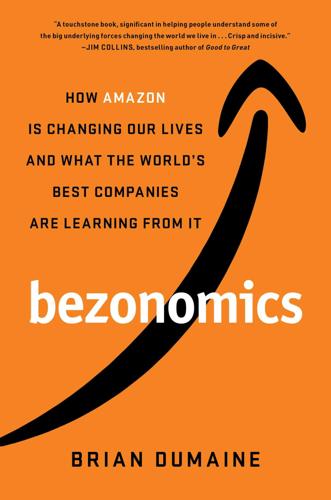
Bezonomics: How Amazon Is Changing Our Lives and What the World's Best Companies Are Learning From It
by
Brian Dumaine
Published 11 May 2020
In the business arena, warehouse robots, scanners, and self-driving delivery vans also connect to the Internet, thanks to inexpensive sensors and smart algorithms. By 2022, there will be more than 29 billion connected devices worldwide, roughly four times the number of people in the world. Now tech giants such as Alibaba, JD.com, Tencent, and even Google’s parent, Alphabet—with its smart home devices and self-driving cars—are joining Amazon in its quest to infiltrate every corner of our lives with AI. This has dire implications for the global job market. As these companies automate their warehouses, use drones and self-driving trucks for delivery, many solid blue-collar jobs will disappear. Moreover, as Amazon and other global tech giants move into new industries, they’ll accelerate the digitization of health care, banking, and other sectors of the economy and have an even bigger impact on jobs.
…
Around the same time, Amazon led a $530 million investment round for Aurora, a Silicon Valley self-driving vehicle start-up founded by three stars of this emerging industry: Sterling Anderson, Drew Bagnell, and Chris Urmson. Anderson ran Tesla’s autopilot program, Bagnell headed the autonomy and perception team at Uber, and Urmson was the former head of Google’s self-driving project, which has morphed into one of the leading self-driving car companies: Waymo. Aurora will not build cars but is developing the AI brains behind autonomous vehicles and plans to partner with retailers like Amazon and major automakers to create state-of-the-art autonomous vehicles. Amazon is far from alone in the race for self-driving vehicles. According to the research firm CB Insights, at least forty-six companies around the world are working on self-driving vehicle technology.
…
As a first step, Bezos in 2014 hired Babak Parviz, an Iranian immigrant who previously headed Google X, a respected research facility (now a division of Alphabet called X) that worked on various moonshot projects, including kites that gather wind energy, the Google Glass virtual-reality headset, and self-driving cars—an initiative that eventually became the Alphabet subsidiary Waymo. Just as at Google, Parviz’s innovation lab at Amazon, which is named Grand Challenge, will have, as its name suggests, a broad mandate to take the long view and to tinker creatively on some of the world’s biggest problems. A job posting for the lab cited astronomer Carl Sagan: “Somewhere, something incredible is waiting to be known.”

The Truth Machine: The Blockchain and the Future of Everything
by
Paul Vigna
and
Michael J. Casey
Published 27 Feb 2018
Nonetheless the capacity to incorporate IoT-specific protections into a permissionless blockchain is important because it opens up a much broader vision of an IoT future than one that is controlled by select IT companies. Consider one scenario that some envisage in an IoT world, where a self-driving car that needs to get somewhere in a hurry can make a small payment to another self-driving car to let it pass. As discussed, you’ll need a distributed trust system to verify the integrity of the transaction, which may involve a lot more information than just that of the money transfer before it can be processed—for example, you may need to know whether the overtaking car is certified as safe to drive at the faster speed, or whether one car’s software can be trusted not to infect the other with malware.
…
Not only is the data inaccessible to the wider community unless fees are paid, but mistrust of the monopoly can lead data providers to withhold information. A “global brain” can’t really come into existence in an economy dominated by the centralized trust model. Blockchain-based network designs probably won’t get the same attention in homeware magazines as smart doorknobs and self-driving cars, but they will be a fundamental backbone of the network computational capacity of an Internet of Things economy in which tens of billions of devices like doorknobs and cars are autonomously “talking” to and trading with each other. World Economic Forum founder Klaus Schwab says we’re moving into a “fourth industrial revolution,” not because one particular new line of products is coming but because a variety of technologies are combining to create whole new systems: mobile devices, sensors, nanotech processors, renewable energy, brain research, virtual reality, artificial intelligence, and so forth.
…
In the past, new technology has spurred a sufficiently healthy gain in the U.S. economy to foster new, higher-tech jobs that offset the losses of the lower-tech and typically lower-paying ones they replaced. Farmworkers became factory workers and factory workers became office workers. But this shift to decentralized trust, along with all other disruption coming from, you name it—self-driving cars, automated medicine, peer-to-peer credit, 3D printing, artificially intelligent writers—will be too big to keep up with. The idea that the office towers of New York and Chicago will be left half empty for decades is not unfeasible. “Software is eating the world,” as Marc Andreessen likes to say.

The Best Interface Is No Interface: The Simple Path to Brilliant Technology (Voices That Matter)
by
Golden Krishna
Published 10 Feb 2015
CNN, February 7, 2014. http://money.cnn.com/2014/02/07/investing/google-exxon-market-value/ 5 2012 Lobbying (Millions $) Google, 18.22 Exxon Mobil, 12.97 “Biggest Increases in Lobbying in U.S.,” Bloomberg, May 28, 2013. http://www.bloomberg.com/visual-data/best-and-worst/biggest-increases-in-lobbying-in-u-dot-s-companies 2014 April–June (Q2) Lobbying (Millions $) Google, 5.03 Exxon Mobil, 2.80 Pfizer, 1.60 Lauren Hepler, “Google Drops $5M on Q2 2014 Lobbying: Self-Driving Cars, Health, Tax, Immigration,” Silicon Valley Business Journal, July 28, 2014. http://www.bizjournals.com/sanjose/news/2014/07/28/self-driving-cars-health-tech-immigration-google.html 6 Ashlee Vance, “This Tech Bubble Is Different,” Businessweek, April 14, 2011. http://www.businessweek.com/magazine/content/11_17/b4225060960537.htm Chapter 5 Addiction UX 1 “A whopping 96 percent of Google’s $37.9 billion 2011 revenue came from advertising . . .”
…
Automatic solutions sound so wonderful. Everything just magically gets done. And machines do it all on their own. They give us what we need, when we need it, and how we need it. The computer becomes a mind reader for our preferences. Science fiction becomes reality. Robot vacuums. Autopilot. Self-driving cars. Back to the Future power laces. A lot of NoUI thinking lends itself to making these kinds of automatic solutions. They aim to feel like pure delight. Like magic. Where technology should be in the twenty-first century. But when it comes to actually implementing an automatic solution, a lot of people get scared.

The Self-Made Billionaire Effect: How Extreme Producers Create Massive Value
by
John Sviokla
and
Mitch Cohen
Published 30 Dec 2014
One example of this discomfort and its negative effects comes from an effort that has been getting a great deal of press in recent months: the self-driving car. Right now Google owns this space. Google is the brand that has been working on the technology, and there are Google leaders out there making it real in the marketplace and evangelizing its positive applications. Reportedly, the team that went to Sergey Brin and Larry Page for permission to work on the self-driving car was pushed to be more ambitious by the founding Producers—Page and Brin gave the development team the green light to make the car only if it would be able to travel a thousand miles in both highway and city contexts with limited GPS access, a challenge the car achieved in fifteen months.6 But Google’s prominence in this market raises a thorny question: Why aren’t leading car manufacturers pursuing that charge?
…
They have difficulty with the idea that their innovations—historically built for proprietary use—might reside in a competitor’s product; they can’t or won’t construct a narrative of change that shows employees, customers, and stakeholders the ways in which this new disruptive model is simply a natural evolution of what they have always done. Compare the way the automotive industry has recused itself from Inventive Execution on the self-driving car with the way the Producer Bill Gates inserted Microsoft into the Internet space. In 1995, Gates knew Microsoft was late to the Internet party, and that Netscape, Sun Microsystems, and other competitors had already taken over and defined the browser and net server markets which served as the gateways to defining how users store, find, organize, and use information.
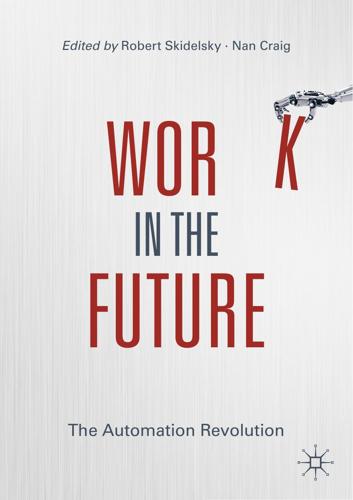
Work in the Future The Automation Revolution-Palgrave MacMillan (2019)
by
Robert Skidelsky Nan Craig
Published 15 Mar 2020
He argues that specific jobs or categories of work rarely become obsolete in their entirety—rather, they evolve as technology becomes available to automate particular elements of the work. In deciding whether automation creates or destroys jobs, the decisive factor is demand rather than technology. 1 Introduction 5 What are the advantages of technology? Often people say, ‘It is obvious that self-driving cars will reduce the numbers of road accidents. Automated diagnostic and treatment systems will reduce medical casualties and so on’. We know that argument, but will algorithmic trading increase the efficiency of financial markets, or render them more liable to crashes? So far, it seems the latter has been the case.
…
Artificial General Intelligence: Concept, State of the Art, and Future Prospects. Journal of Artificial General Intelligence, 5(1), 1–26. Hurst, D. (2018, February 6). Japan Lays Groundwork for Boom in Robot Carers. The Guardian. Price, R. (2019, April 12). Uber Says Its Future is Riding on the Success of Self- driving Cars, but Warns Investors That There’s a Lot That Can Go Wrong. Business Insider. Shead, S. (2016, April 4). There’s a Worldwide Shortage of the Board Game Go after Google’s Computer Beat the World Champ. Business Insider. Silver, D., Schrittwieser, J., Simonyan, K., Antonoglou, I., Huang, A., Guez, A., Hubert, T., Baker, L., Lai, M., Bolton, A., Chen, Y., Lillicrap, T., Hui, F., Sifre, L., van den Driessche, G., Graepel, T., & Hassabis, D. (2018).
…
Uber retorted that it would only be $429 million.7 The result of this worker pushback is that these very low margin businesses are going to become even more unprofitable in the future, and the business model is unlikely to expand much further. What is Uber’s plan? Here we see that even Uber doesn’t think the business model they pioneered is likely to succeed. They want to grow big—to monopolise taxi services. Yet their next goal is to replace drivers with self-driving cars and build a massive moat around their business that no one else can compete with. This is a major shift in the nature of their business as suddenly they are taking on the costs and responsibilities of an immense amount of fixed capital. We can see the shift by looking at a now famous quote from 2015: Uber, the world’s largest taxi company, owns no vehicles.
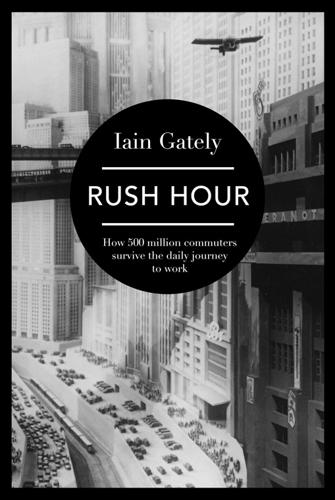
Rush Hour: How 500 Million Commuters Survive the Daily Journey to Work
by
Iain Gately
Published 6 Nov 2014
qt=qt0375405. 320 For Chunka Mui and driverless cars, see: http://www.forbes.com/sites/chunkamui/. 321 ‘typical commuter arteries’, Chris Knapman, ‘Large-scale trial of driverless cars to begin on public roads’, Daily Telegraph, 2 December 2013: http://www.telegraph.co.uk/motoring/news/10484839/Large-scale-trial-of-driverless-cars-to-begin-on-public- roads.html. 321 For KPMG and driverless cars, see ‘Self-driving cars: the next revolution’: https://www.kpmg.com/US/en/IssuesAndInsights/ArticlesPublications/Documents/self-driving-cars-next-revolution.pdf. 326 ‘Something suddenly falls off a truck ahead of the car. Can the system react faster’, Dan Neil, ‘Driverless Cars’. 328 A ‘bold commitment to modernisation’, Jim Pickard, ‘Mandelson fears HS2 will prove an “expensive mistake”’, Financial Times, 2 July 2013. 328 ‘live in a rail bubble’, Matt Ridley, ‘Hadrian’s wall was a marvellous mistake; so is HS2’, 26 July 2013: http://www.rationaloptimist.com/blog/hadrian%27s-wall-was-a-marvellous-mistake-so- is-hs2.aspx. 329 For ‘reached the end of its life’, see: http://www.businessweek.com/articles/2013-07-12/french-wreck-reveals-hidden-danger-in-its-vaunted-train-system. 331 For ‘barf ride’, see: http://pedestrianobservations.wordpress.com/2013/08/13/loopy-ideas-are-fine-if- youre-an-entrepreneur/. 333 For population estimates and the world’s carrying capacity, see World Population Monitoring 2001, United Nations, Department of Economic and Social Affairs, Population Division, New York, 2001, pp. 31ff. 333 ‘occasional vertical and random horizontal low speed vehicular or moving-belt travel’, John Heaver Fremlin, ‘How Many People Can the World Support?’
…
Traffic density could double or treble in rush hour, without creating the need to build any new roads. The vehicles could be fun to ride in, too. Instead of a row or two of forward-facing seats, there’d be space for beds, chandeliers, mini-bars, workstations, or a croupier and a roulette wheel. Commuting would become an adventure, or a form of luxury travel once again. Self-driving cars will also be wonderfully easy to use – the ultimate taxi service. You’ll be able to text for one, anywhere, anytime. Those with handicaps, alcoholics, and other classes of people currently disbarred from driving would also be empowered by the hands-free revolution. Elderly people who, whether through sight loss or growing immobility, are unable to drive themselves, will not have to lose the freedom to ride in a car that they have enjoyed all their lives.
…
In the opinion of Catherine Lovazzano, senior manager for consumer trends at Chrysler, the motorcar is no longer ‘the iconic freedom machine that it might have been for a baby boomer’. Generation Now, together with the Digital Natives in the age cohort beneath them, make up nearly half the population of America, and if the Natives are as apathetic as the Nows, then self-driving cars will have a giant market. A similar lack of interest in driving among the young is apparent throughout the West. In a 2012 feature, ‘Seeing the back of the car’, the UK news magazine The Economist noted that ‘All over the rich world, young people are getting their licences later than they used to… in Britain, Canada, France, Norway, South Korea and Sweden’ as well as in America.

A World Without Work: Technology, Automation, and How We Should Respond
by
Daniel Susskind
Published 14 Jan 2020
We spend large parts of our lives trying to perfect whatever talents and abilities we have, and like the proverbial oil tanker we find it difficult to slow down and change course. Whenever I take a ride in a London taxi, for instance, I am in awe of the drivers: each one has spent years memorizing every street in London, all twenty-five thousand of them, building a legendary body of street smarts known as “the knowledge.” Worrying about their future in the age of self-driving cars, I wonder how they might have fared as doctors or lawyers if they had turned their remarkable memories to remembering symptoms and illnesses, or regulations and court cases, rather than destinations and routes. At this point, though, for older drivers a U-turn like this is likely to be a fantasy.
…
,” International Labour Office, Working Paper No. 13 (November 2016); Executive Office of the President, “Artificial Intelligence, Automation, and the Economy,” December 2016. 35. Fergal O’Brien and Maciej Onoszko, “Tech Upheaval Means a ‘Massacre of the Dilberts’ BOE’s Carney Says,” Bloomberg, 13 April 2018. 36. Scott Dadich, “Barack Obama, Neural Nets, Self-Driving Cars, and the Future of the World,” Wired, November 2016. 37. UBS, “Intelligence Automation: A UBS Group Innovation White Paper” (2017); PwC, “Workforce of the Future: The Competing Forces Shaping 2030” (2018); Deloitte, “From Brawn to Brains: The Impact of Technology on Jobs in the UK” (2015). 38.
…
Novoa, et al., “Dermatologist-Level Classification of Skin Cancer with Deep Neural Networks,” Nature 542 (2017): 115–18. 11. See Jeff Reinke, “From Old Steel Mill to Autonomous Vehicle Test Track,” Thomas, 19 October 2017; Michael J. Coren, “Tesla Has 780 Million Miles of Driving Data, and Adds Another Million Every 10 Hours,” Quartz, 28 May 2016; and Alexis C. Madrigal, “Inside Waymo’s Secret World for Training Self-Driving Cars,” Atlantic, 23 August 2017. 12. David McCandless, “Codebases: Millions of Lines of Code,” 24 September 2015, https://informationisbeautiful.net/visualizations/million-lines-of-code/ (accessed 25 April 2018). 13. Michael J. Coren, “San Francisco Is Actually One of the Worst-Paying Places in the US for Software Engineers,” Quartz, 9 February 2017. 14.

Power and Progress: Our Thousand-Year Struggle Over Technology and Prosperity
by
Daron Acemoglu
and
Simon Johnson
Published 15 May 2023
Indeed, there is now a shortage of radiologists that is predicted to increase over the next decade.” On the diagnosis of diabetic retinopathy and the combination of AI algorithms and specialists, see Raghu, Blumer, Corrado, Kleinberg, Obermeyer, and Mullainathan (2019). On the wishes of Google’s chief of self-driving cars, see Fried (2015). For Elon Musk’s comments on self-driving cars, see Hawkins (2021). General AI Illusion. On superintelligence, see Bostrom (2017). On AlphaZero, see https://www.deepmind.com/blog/alphazero-shedding-new-light-on-chess-shogi-and-go. For an interesting critique of the current AI approach to intelligence, which also emphasizes the social and situational aspects of intelligence, see Larson (2021).
…
Princeton, NJ: Princeton University Press. Frey, Carl Benedikt, and Michael A. Osborne. 2013. “The Future of Employment: How Susceptible Are Jobs to Computerisation?” Mimeo. Oxford: Oxford Martin School. Fried, Ina. 2015. “Google Self-Driving Car Chief Wants Tech on the Market Within Five Years.” Vox, March 17. www.vox.com/2015/3/17/11560406/google-self-driving-car-chief-wants-tech-on-the-market-within-five. Friedman, Milton. 1970. “A Friedman Doctrine—the Social Responsibility of Business Is to Increase Its Profits.” New York Times, September 13. www.nytimes.com/1970/09/13/archives/a-friedman-doctrine-the-social-responsibility-of-business-is-to.html.
…
For example, state-of-the-art machine-learning algorithms can improve the diagnosis of diabetic retinopathy, which results from damage to blood vessels on the retina among diabetic patients. Nevertheless, accuracy increases significantly more when algorithms are used to identify difficult cases, which are then assigned to ophthalmologists for better diagnosis. The chief technology officer of Google’s self-driving car division confidently expected in 2015 that his then-eleven-year-old son would not need to get a driver’s license by the time he turned sixteen. In 2019 Elon Musk predicted that Tesla would have one million fully automated, driverless taxicabs on the streets by the end of 2020. These predictions have not come to pass for the same reason.
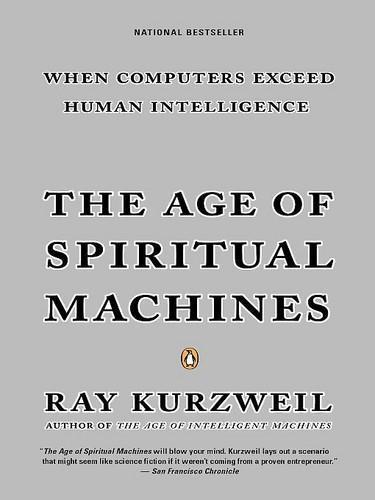
The Age of Spiritual Machines: When Computers Exceed Human Intelligence
by
Ray Kurzweil
Published 31 Dec 1998
• Prediction: Around the year 2000, chips with more than a billion components will emerge.What Happened: We’re right on schedule. • Prediction: The technology for the “cybernetic chauffeur” (self-driving cars using special sensors in the roads) will become available by the end of the 1990s with implementation on major highways feasible during the first decade of the twenty-first century.What Happened: Self-driving cars are being tested in Los Angeles, London, Tokyo, and other cities. There were extensive successful tests on Interstate 15 in southern California during 1997. City planners now realize that automated driving technologies will greatly expand the capacity of existing roads.
…
Crystalline computing also refers to the possibility of growing computers as crystals. CSR See Continuous speech recognition. Cybernetic artist A computer program that is able to create original artwork in poetry, visual art, or music. Cybernetic artists will become increasingly commonplace starting in 2009. Cybernetic chauffeur Self-driving cars that use special sensors in the roads. Self driving cars are being experimented with in the late 1990s, with implementation on major highways feasible during the first decade of the twenty-first century. Cybernetic poet A computer program that is able to create original poetry. Cybernetics A term coined by Norbert Wiener to describe the “science of control and communication in animals and machines.”
…
City planners now realize that automated driving technologies will greatly expand the capacity of existing roads. Installing the requisite sensors on a highway costs only about $10,000 per mile, compared to $1 to $10 million per mile for building new highways. Automated highways and self-driving cars will also eliminate most accidents on these roads. The U.S. National Automated Highway System (NAHS) consortium is predicting implementation of these systems during the first decade of the twenty-first century.15 • Prediction: Continuous speech recognition (CSR) with large vocabularies for specific tasks will emerge in the early 1990s.What Happened: Whoops.

Homo Deus: A Brief History of Tomorrow
by
Yuval Noah Harari
Published 1 Mar 2015
Christopher Steiner, Automate This: How Algorithms Came to Rule Our World (New York: Penguin, 2012), 215; Tom Vanderbilt, ‘Let the Robot Drive: The Autonomous Car of the Future is Here’, Wired, 20 January 2012, accessed 21 December 2014, http://www.wired.com/2012/01/ff_autonomouscars/all/; Chris Urmson, ‘The Self-Driving Car Logs More Miles on New Wheels’, Google Official Blog, 7 August 2012, accessed 23 December 2014, http://googleblog.blogspot.hu/2012/08/the-self-driving-car-logs-more-miles-on.html; Matt Richtel and Conor Dougherty, ‘Google’s Driverless Cars Run into Problem: Cars with Drivers’, New York Times, 1 September 2015, accessed 2 September 2015, http://www.nytimes.com/2015/09/02/technology/personaltech/google-says-its-not-the-driverless-cars-fault-its-other-drivers.html?
…
And it is sobering to realise that, at least for armies and corporations, the answer is straightforward: intelligence is mandatory but consciousness is optional. Armies and corporations cannot function without intelligent agents, but they don’t need consciousness and subjective experiences. The conscious experiences of a flesh-and-blood taxi driver are infinitely richer than those of a self-driving car, which feels absolutely nothing. The taxi driver can enjoy music while navigating the busy streets of Seoul. His mind may expand in awe as he looks up at the stars and contemplates the mysteries of the universe. His eyes may fill with tears of joy when he sees his baby girl taking her very first step.
…
And the autonomous car will soon be able to do that far better than a human driver, even though it cannot enjoy music or be awestruck by the magic of existence. Indeed, if we forbid humans to drive taxis and cars altogether, and give computer algorithms monopoly over traffic, we can then connect all vehicles to a single network, and thereby make car accidents virtually impossible. In August 2015, one of Google’s experimental self-driving cars had an accident. As it approached a crossing and detected pedestrians wishing to cross, it applied its brakes. A moment later it was hit from behind by a sedan whose careless human driver was perhaps contemplating the mysteries of the universe instead of watching the road. This could not have happened if both vehicles were steered by interlinked computers.
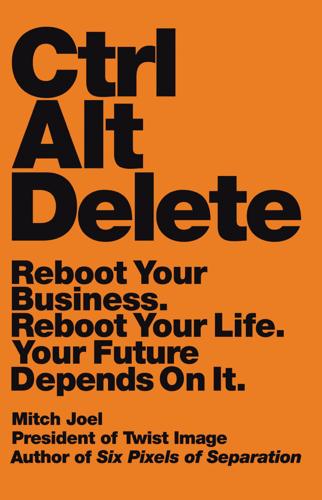
Ctrl Alt Delete: Reboot Your Business. Reboot Your Life. Your Future Depends on It.
by
Mitch Joel
Published 20 May 2013
Instagram started out as a very derivative copy of foursquare before switching its focus to mobile photos with a social edge. Google continues to fascinate as the search engine expands into areas like online video (YouTube), mobile (Android and the Nexus line of devices), email services (Gmail), Web browsers (Google Chrome), online social networking (Google+), and beyond (self-driving cars and Google Glasses). Amazon continues to squiggle by pushing beyond selling books online into e-readers (Kindle), selling shoes (Zappos), offering cloud computing technology (Amazon Web Services), and beyond. When you actually start digging down deep into how these companies have evolved and stayed relevant, you won’t see business models that look like anything from the playbooks of Kodak or RIM.
…
This means that we can’t be afraid to have a more squiggly career path, and we also have to be more open to doing the big, big stuff (Steve Jobs would often talk about making a “dent in the universe”). You will hear Mark Zuckerberg talk about Facebook as the place to connect the world. Sergey Brin and Larry Page of Google often talk about Google’s mission to organize the world’s information and knowledge (and, with that, they squiggle to create self-driving cars!). It’s one thing to dream big. It’s another thing to think and do big. In this new world, the squiggle is about not being afraid of the big stuff within whatever industry you serve. If you’re not thinking about the bigger problems that face your industry, someone else is. Squiggle… uncover and go after the big ideas.
…
I can’t help but wonder and think about a time in the not-too-distant future when we’re no longer carrying these devices around but they are actually in us… a part of us (subdermal implants or brain-activity-activated… who knows?). As I was walking through the airport, I noticed that the current cover story for Wired magazine is all about self-driving cars. Such instances of science fiction catching up to reality get me excited. They get me thinking more about how much I love business, and it makes me hopeful that I’ll be privileged enough to be alive long enough to see how we innovate from this very powerful moment in time that we currently find ourselves in.
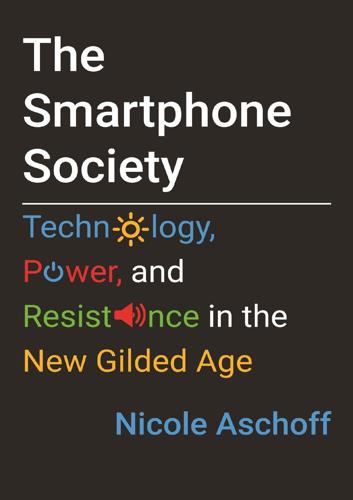
The Smartphone Society
by
Nicole Aschoff
Amazon alone employs more than 613,000 warehouse workers worldwide, and adds about 100,000 more temp workers during peaks.48 Jessica Bruder, in Nomadland: Surviving America in the Twenty-First Century, follows the lives of Amazon’s “CamperForce,” a large group of (mainly) retirees who can’t afford to retire, so they live in their RVs and other vehicles and find temporary work in the warehouses of “the everything store” during the holidays. When peak season is over, these “workampers” drive away in what Amazon executives proudly call a “tail light parade.”49 Log on to the Spare5 mobile task app on the long bus ride home, circle the road signs in a series of photographs for some self-driving-car start-up, and you’ve paid for that afternoon splurge on a triple macchiato at Starbucks. App jobs like this are appealing at first glance. There are few barriers to entry. You can work when you’re able, and the ads promise decent money. You just need a smartphone, often a car, and a willingness to work.
…
Google founders Sergey Brin and Larry Page created Alphabet in 2015 to organize their growing pile of tech companies—a conglomerate that, in addition to Google, includes companies focused on biotech (Calico), cybersecurity (Chronicle), wind power (Makani), and the life sciences (Verily). Add to that Waymo and Wing, which develop self-driving car and drone delivery technology, and DeepMind, Alphabet’s artificial intelligence subsidiary. Throw in venture capital and private equity firms (GV, Capital G), a tech incubator (Jigsaw), broadband and balloon internet providers (Google Fiber and Loon), an urban innovation organization (Sidewalk Labs), and a “semisecret” research and development facility called X Development, and one gets a sense of the growing reach of the behemoth that started with a search engine.
…
The fundamentals are in place for bounty that vastly exceeds anything we’ve ever seen before.19 Chris Anderson, the editor-in-chief of Wired magazine, predicted back in 2008 that we’d reached the “end of theory”—that our 24/7 connected lives would generate so much data that soon we wouldn’t even need theory anymore: “Correlation supersedes causation, and science can advance even without coherent models, unified theories, or really any mechanistic explanation at all.”20 With advancements in networks and computing we’ll generate more and more data, solving problems and fueling breakthroughs in medicine, science, agriculture, policing, and logistics. Self-driving cars and the ability of the Alpha Go Zero program to teach itself how to play the ancient and extremely difficult Chinese game of Go using only the game rules and reinforcement learning are just the beginning of a seismic shift rooted in the power of data. The motto of Alphabet subsidiary DeepMind encapsulates this vision of the future: “Solve intelligence and use that to solve everything else.”
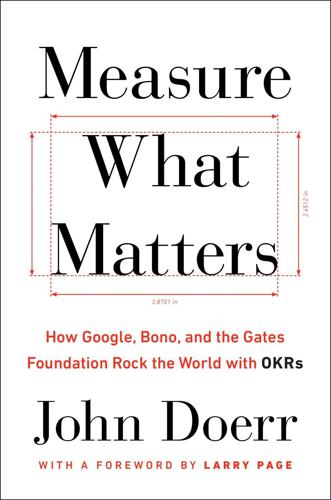
Measure What Matters: How Google, Bono, and the Gates Foundation Rock the World With OKRs
by
John Doerr
Published 23 Apr 2018
Thousand percent improvement requires rethinking problems, exploring what’s technically possible and having fun in the process. At Google, in line with Andy Grove’s old standard, aspirational OKRs are set at 60 to 70 percent attainment. In other words, performance is expected to fall short at least 30 percent of the time. And that’s considered success! Eric Schmidt, Larry Page, and Sergey Brin with Google’s first self-driving car, 2011—10x thinking in action! Google has had its share of colossal misfires, from Helpouts to Google Answers. Living in the 70 percent zone entails a liberal sprinkling of moonshots and a willingness to court failure. At the start of the period, not a single goal may look possible. And so the Googlers are pushed to ask harder questions: What radical, high-risk action needs to be considered?
…
And then after ten milliseconds of celebration we have to set ourselves another [set of] highly difficult-to-reach objectives and we have to meet them. And the reward of having met one of these challenging goals is that you get to play again. 13 Stretch: The Google Chrome Story Sundar Pichai CEO Stretch goals were beautifully defined by the leader of the Google X team that developed Project Loon and self-driving cars. Says Astro Teller: “ If you want your car to get fifty miles per gallon, fine. You can retool your car a little bit. But if I tell you it has to run on a gallon of gas for five hundred miles, you have to start over.” In 2008, Sundar Pichai was Google’s vice president of product development.
…
K., 47 “rule of seven,” 14 Salesforce, 114 sandbagging, 34 , 78 , 181 , 259 –60 Sandberg, Sheryl, 54 n, 175 , 184 –85, 251 Sand Hill Unicorns, 81 , 81 –85, 82 , 84 , 87 San Francisco Marathon, 88 San Jose Hyatt House, 43 scaling, 113 –14 culture and, 220 –21 at Google, 3 , 11 MyFitnessPal story, 93 –94, 95 Nuna story, 72 Remind story, 63 –65 Zuma Pizza story, 203 scarcity, 161 Schmidt, Eric, 6 n, 11 , 13 , 15 , 140 , 146 , 251 , 252 scoring, 120 –22 assessment variations, 123 –24 Sculley, John, 248 Sears, 8 Seidman, Dov, 219 –21 self-actualization, 136 –37 self-assessments, 122 –24, 276 assessment variations, 123 –24 self-discipline, 30 , 31 , 202 –3 self-driving cars, 140 , 143 self-reflection, 124 –25 goal planning and, 183 , 269 Series A funding, 64 , 94 Series B funding, 64 Shriver, Bobby, 237 Sibyl, 161 silos, 12 , 25 , 102 –3, 275 Slack, 12 , 73 , 110 , 111 Slavitt, Andrew M., 76 Smith, Brad, 104 –5, 106 Smith, Jeff, 231 –32 “snippets,” 11 n Social+Capital Partnership, 64 stack rankings, 175 , 191 , 278 Staffa, Tim, 179 –80 Stanford University, 3 , 21 n, 144 , 152 Stonesifer, Patty, 126 –32, 127 stretch goals, 17 , 34 , 133 –71, 277 –78 Bono’s ONE Campaign story, 238 –39 daring to fail, 33 –34 Google Chrome story, 143 –53 gospel of 10x, 138 –40 need to stretch, 136 –38 stretch variables, 141 –42 YouTube story, 154 –71 structured goal setting, 9 –10, 134 , 203 , 215 subjective self-assessments, 122 –24, 276 suggestion boxes, 185 Sun Microsystems, 6 –7, 148 Superpower #1 (focus and commit to priorities), 16 –17, 47 –76, 274 care of key results, 50 communicating with clarity, 49 –50 less is more, 55 –57 Nuna story, 69 –76 pairing key results, 52 –54 the perfect and the good, 54 –55 Remind story, 58 –68 top-line goals, 48 –49 the what, how, when, 51 –52 Superpower #2 (align and connect for teamwork), 17 , 77 –112, 275 bottom-up OKRs, 86 –89 cascading OKRs, 79 –86 cross-functional coordination, 88 –89 Intuit story, 102 –12 MyFitnessPal story, 90 –101 Sand Hill Unicorns, 81 –85 Superpower #3 (track for accountability), 17 , 113 –32, 276 –77 Gates Foundation story, 126 –32 midlife tracking, 117 –19 OKR shepherds, 115 –16 reflection, 124 –25 scoring, 120 –22 self-assessment, 122 –24 setting up, 113 –15 Superpower #4 (stretch for amazing), 17 , 133 –71, 277 –78 Google Chrome story, 143 –53 gospel of 10x, 138 –40 need to stretch, 136 –38 stretch variables, 141 –42 YouTube story, 154 –71 Suzuki, Joseph, 205 –6 Taylor, Frederick Winslow, 24 teamwork, 12 , 178 , 275 .
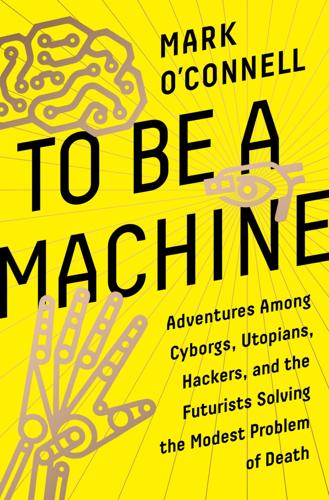
To Be a Machine: Adventures Among Cyborgs, Utopians, Hackers, and the Futurists Solving the Modest Problem of Death
by
Mark O'Connell
Published 28 Feb 2017
This, in fact, is basically the first of Isaac Asimov’s famous Three Laws of Robotics, which states: “A robot may not injure a human being or, through inaction, allow a human being to come to harm.” But the reality is that we’re not quite as monomaniacally invested in the prevention of harm to our children as we imagine ourselves to be. A self-driving car that followed this instruction with absolute rigor would, for instance—given the nontrivial risk of getting into an accident on the way—decline to take your kids to the movies to see the latest computer-animated film about a young boy and his adventures with his robot pal. One potential approach, most prominently proposed by Stuart himself, was that rather than attempting to write these implicit values and trade-offs into an AI’s source code, the AI be programmed so that it learned by observing human behavior.
…
The car that got the farthest from the starting pistol made it just under seven and a half miles before finally coming to grief on a large rock, and DARPA declined to award its million-dollar prize. But when the race was held again the following year, five cars finished the route, and the winning team went on to form the nucleus of Google’s Self-Driving Car Project, under the auspices of which, even now, California’s roads were being successfully navigated by vehicles unguided by human hands, luxury ghostmobiles on the decaying highways, an advance guard of an automated future. Uber, the drive-sharing service that had seriously damaged the taxi sector in recent years, was already speaking openly about its plans to replace all of its drivers with automated cars as soon as the technology allowed.
…
“It’s really a matter of gathering as much data as possible about your life,” she told him, “and figuring out how you can use that data to optimize yourself as a person.” “Right,” said Tim. “Although I’d like to take the ‘person’ term completely out of the equation. People really suck at decisions. It’s like the whole self-driving car thing. People are like, ‘Oh, you can’t take humans out of the loop, I’m a human and I’m an awesome driver.’ And I’m like, no, man, you’re not an awesome driver. You’re a monkey, and monkeys suck at making decisions.” Anne emitted a perfunctory laugh. She seemed uncomfortable, and I wondered whether this discomfort was a reaction to the way in which Tim’s language seemed to lay bare the mechanistic principles of the QS movement, its view of the self as reducible to a set of facts and statistics that could be interpreted, and whose interpretation thereby informed the activity of the self, and thereby the generation of further data—the human being as a feedback loop of input and output.

99%: Mass Impoverishment and How We Can End It
by
Mark Thomas
Published 7 Aug 2019
Other problems which may benefit from this kind of high-power computing include mapping of entire proteins in the way that genes can be mapped today – or even entire genomes – and, of course, the development of full AI. Narrow AI for applications such as autonomous vehicles Proof of concept studies on self-driving cars have been underway for almost a decade and large-scale trials are now in progress. Google, for example, has more than twenty autonomous vehicles in the US, and NuTonomy has trials of taxis underway in Singapore. Many commentators believe that the first commercially available self-driving cars will hit the market before 2020.9 The heads of automakers General Motors and Nissan have both confirmed that they expect driverless cars on the roads by 2020.
…
I would pick out the following technologies for special attention, because they seem to me to be harbingers of what is just around the corner: • additive manufacturing – for example, 3-D printing; • nanotechnology – for example, new processes like genetic editing and new materials like graphene; • new computing approaches – for example quantum computing, new applications of narrow artificial intelligence (AI) such as self-driving cars, and even full artificial intelligence (AI) capable of solving any problem a human can solve; • clean energy – possibly even nuclear fusion. Most of these technologies will have entered the mainstream by 2040, so over the next thirty-five years, you can expect to feel their impact. ADDITIVE MANUFACTURING Traditionally, to manufacture a complex structure, you would start with a block and machine away the material you didn’t want.
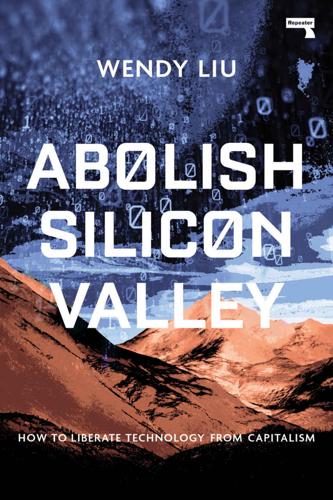
Abolish Silicon Valley: How to Liberate Technology From Capitalism
by
Wendy Liu
Published 22 Mar 2020
Patents should be granted to private enterprises rarely — only when there is no suitable public or non-profit entity that could use the patent instead — and should not be privately tradeable for the purpose of patent trolling. Trade secrets are another form of intellectual property, and these should be reduced in prevalence where relevant to the public interest. Consider the case of self-driving car technology, the subject of a recent trade secret dispute between Google and Uber. Google might argue that its self-driving car technology is their private property, and so for a former employee to share that technology with a competitor would be theft.10 And yet, if the technology is truly as useful to society as Google claims, then it would better serve the public interest if that technology were owned and developed by an institution accountable to the public.
…
We devoured all the entrepreneurial motivation we could find: blog posts from founders who had failed but were trying again, pivoting how-tos with advice like “discuss things you’re excited about”. It was a little like group therapy for burnt-out startup founders, with the topics of discussions provided by TechCrunch headlines or VC Twitter: chatbot startups, self-driving cars, which latest tech luminary was accused of sexual harassment. Nick brought up health-tech, which Liam and I vetoed because we had no expertise in that field; I suggested something to do with food, despite having no expertise in that either. Liam babbled about fin-tech companies with the potential to democratise finance.

Applied Artificial Intelligence: A Handbook for Business Leaders
by
Mariya Yao
,
Adelyn Zhou
and
Marlene Jia
Published 1 Jun 2018
When smoke levels reach a predefined level, the device will play an alarm sound until it is turned off manually. Similarly, the cruise control in your car uses a powered mechanism to control the throttle position in order to maintain a constant speed. You would never set your cruise control, take your hands off the wheel, and claim that you now have a self-driving car. Doing so would result in terrible outcomes. Yet most companies claiming to have AI are really just using Systems That Act, or rule-based mechanisms that are incapable of dynamic actions or decisions. Systems That Predict Systems That Predict are systems that are capable of analyzing data and using it to produce probabilistic predictions.
…
In sales, for example, machine learning approaches to lead scoring can perform better than rule-based or statistical methods. Once the machine has produced a prediction on the quality of a lead, the salesperson then applies human judgment to decide how to follow up. More complex systems, such as self-driving cars and industrial robotics, handle everything from gathering the initial data to executing the action resulting from its analysis. For example, an autonomous vehicle must turn video and sensor feeds into accurate predictions of the surrounding world and adjust its driving accordingly. Systems That Create We humans like to think we’re the only beings capable of creativity, but computers have been used for generative design and art for decades.
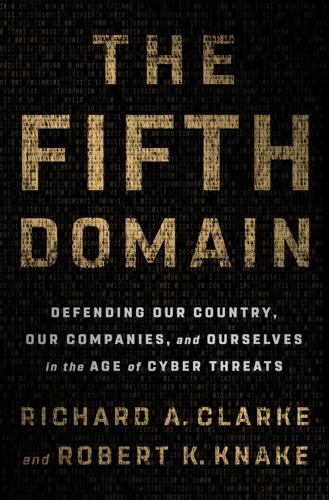
The Fifth Domain: Defending Our Country, Our Companies, and Ourselves in the Age of Cyber Threats
by
Richard A. Clarke
and
Robert K. Knake
Published 15 Jul 2019
“third-party control risk”: Warning letter to Abbott Laboratories from the Food and Drug Administration, April 12, 2017, www.fda.gov/iceci/enforcementactions/warningletters/2017/ucm552687.htm. issuing regulations requiring such assurances: Colin Dwyer, “Department of Transportation Rolls Out New Guidelines for Self-Driving Cars,” National Public Radio, September 12, 2017, www.npr.org/sections/the-two-way/2017/09/12/550533833/department-of-transportation-rolls-out-new-guidelines-for-self-driving-cars. Chapter 18: Derisking Ourselves We like ten-character passwords: “How to Choose a Password,” Office of Information Security, University of Cincinnati, accessed January 6, 2019, www.uc.edu/infosec/password/choosepassword.html.
…
In that approach, DHS would regulate only the sectors it already has responsibility for, such as the chemical, pipeline, and maritime industries, leaving other sector-specific agencies that understand their industries to regulate them. Although Clinton, Bush, and Obama eschewed, rejected, or declined to establish a federal cybersecurity regulatory regime, there is a mountain of cybersecurity regulation created by federal agencies. Banks, nuclear power plants, self-driving cars, hospitals, insurance companies, defense contractors, passenger aircraft, chemical plants, and dozens of other private-sector entities are all subject to cybersecurity regulation by a nearly indecipherable stream of agencies including the FTC, FAA, DHS, DoD, FERC, DOE, HHS, DOT, OCC, and on and on.
…
What kind of device qualifies as part of the IoT? Any electronic device that has some sort of computer chip or computing ability and is connected to a network that is in turn connected to the internet is part of the IoT. The places they are used vary enormously and include heart pacemakers, self-driving cars, safety monitors on refineries and chemical plants, surveillance cameras, subway cars and airport trams, drones, switches on electric power substations, robotic welders on assembly lines, sensors in Coke vending machines, office building HVAC sensors and controls, self-diagnostic elevators, and on and on.
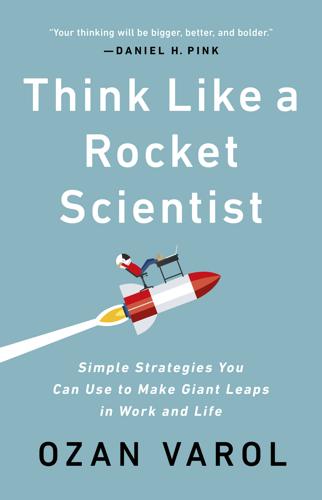
Think Like a Rocket Scientist: Simple Strategies You Can Use to Make Giant Leaps in Work and Life
by
Ozan Varol
Published 13 Apr 2020
Taking a risk on big ideas—using a jetpack to land a Humvee on Mars or building a career that defies stereotypes—is easier when the potential reward is also big. The reward, in the case of Curiosity, “is that we have a Humvee driving around on Mars, exploring it, and unlocking the secrets of the solar system,” Waydo said. And the reward for Waydo? She helped put three rovers on Mars and later moved on to building self-driving cars—accomplishments that transcend Waydo to enrich every person touched by her skills. If you’re still having trouble activating those divergent-thinking muscles, even with the payoff in mind, the next section will give you a jetpack you can use to boost your own vision. Shocking the Brain There was a guy who became famous in the 1970s by lifting some weights.
…
She later joined Google as the director of consumer marketing for Europe, Middle East, and Africa.58 While she was at the top of her marketing game, a phone call from Teller changed everything. On the call, Teller walked Felten through the audacious projects that X was incubating—including self-driving cars and balloon-powered internet. She responded with questions that Teller hadn’t heard before: Is what you’re doing legal? Have you talked to any governments and regulators about it? Will you collaborate with other companies? Do you have a business plan?59 Teller had no answers. “Oh, no one’s really thinking about any of these problems,” he replied.
…
For example, they examined how the food industry makes snack chip bags and sausage casings.73 They eventually solved the problem and survived all other attempts by Xers to prove the project impossible. Projects like Loon that survive this rigorous de-risking process graduate from X—with employees getting actual diplomas—and become their own independent companies. X’s graduates include businesses that produce self-driving cars, autonomous drones, and contact lenses that measure glucose levels. These ideas all seemed like science fiction—until X struck the right balance between idealism and pragmatism, making them a reality. At a different company, SpaceX, two leaders represent these two perspectives of idealism and pragmatism.

Future Crimes: Everything Is Connected, Everyone Is Vulnerable and What We Can Do About It
by
Marc Goodman
Published 24 Feb 2015
Though the evidence and my gut tell me there are significant bumps in the road ahead—ones that government and industry are not dedicating sufficient resources to address or combat—I want to believe in the techno-utopia promised to us by Silicon Valley. This book is the story of the society we are building with our technological tools and how these very same implements can be used against us. The more we plug our devices and our lives into the global information grid—whether via mobile phones, social networks, elevators, or self-driving cars—the more vulnerable we become to those who know how the underlying technologies work and how to exploit them to their advantage and to the detriment of the common man. Simply stated, when everything is connected, everyone is vulnerable. The technology we routinely accept into our lives with little or no self-reflection or examination may very well come back to bite us.
…
In what vision of the future, then, is it conceivable that we will have any clue how to protect the next fifty billion things to go online? Given our inability to secure today’s global information matrix, how might we ever protect a world in which every physical object, from pets to pacemakers to self-driving cars, is connected to the Net and hackable from anywhere on the planet? The obvious reality is that we cannot. The Internet of Things will become nothing more than the Internet of Things to be hacked, a cornucopia of malicious opportunity for those with the means and motivation to exploit our common technological insecurity.
…
In the same way both Crime, Inc. and crazed exes are targeting computers and mobile phones, it’s only logical that they will go after cars in the future too, bringing scenes like those in Stephen King’s 1983 horror thriller about a possessed car named Christine many steps closer to reality. Law enforcement officials clearly see the threat, and in July 2014 the FBI warned in an internal report that driverless cars could be used as “lethal weapons, with terrorists potentially packing explosives into a self-driving car aimed at a specific destination.” Autonomous vehicles could also potentially be turned off en masse, bringing traffic to a complete standstill in a city or country. To be certain, some of these vehicular attacks require a high degree of computer savvy to pull off, but as we have seen with other exploits, soon there will be point-and-click crimeware options for car hacking as well.
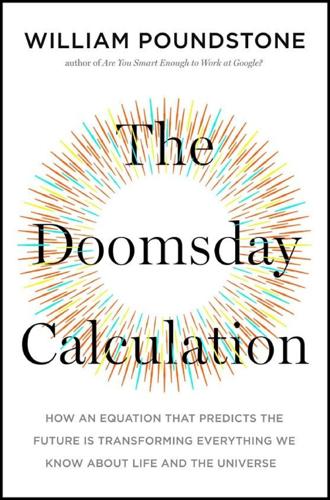
The Doomsday Calculation: How an Equation That Predicts the Future Is Transforming Everything We Know About Life and the Universe
by
William Poundstone
Published 3 Jun 2019
Should a self-driving vehicle swerve to save the life of its occupants, if that means killing a pedestrian? Is saving the life of a dog that darts into the street worth allowing a human passenger’s broken rib? Designers of self-driving cars are beginning to grapple with such issues. Human drivers hardly ever confront them: our reflexes are too slow to allow meaningful choices. (“It all happened so fast!”) The nearly instant reflexes of a self-driving car pose new ethical imponderables. Automotive engineers can try to interpolate what the driver (and society) would want the car to do. But the problem is immensely more challenging for AI coders on the verge of an intelligence explosion.
…
Even if AI were a genie capable of ending hunger or curing cancer, some people would have a problem with that. AI would need robust ways of dealing with a fact we all struggle with: you can’t please everyone. Twenty Questions AI should have an “off” switch. This is good practice for a carpet-cleaning robot or a self-driving car. But implementing an “off” switch isn’t so easy for advanced AI that perpetually redesigns itself. “How,” asked Yudkowsky, “do you encode the goal functions of an AI such that it has an ‘Off’ switch, and it wants there to be an ‘Off’ switch, and it won’t try to eliminate the ‘Off’ switch, and it will let you press the ‘Off’ switch, but it won’t jump ahead and press the ‘Off’ switch itself?
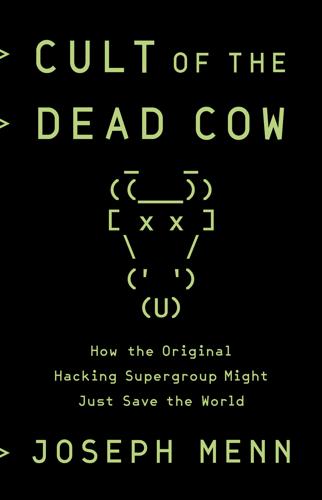
Cult of the Dead Cow: How the Original Hacking Supergroup Might Just Save the World
by
Joseph Menn
Published 3 Jun 2019
“We’ve just owned everything that we are about and believe in,” O’Rourke said. Declining money from political action committees hurt, but Adam and Stamos’s fundraiser helped. Several who attended it went on to hold their own fundraising parties in a chain reaction. Across the country in Boston, cDc stalwart Sam Anthony, a Harvard doctoral candidate working to make self-driving cars safer, held a fundraiser for O’Rourke that likewise inspired additional East Coast donations. Though many others would also gravitate toward helping O’Rourke as he gained steam, won the 2018 primary, and drew almost even with Cruz in the polls, the early support in San Francisco and Boston was fitting.
…
Cofounder Brandon Brewer, once known as Sid Vicious, is as straight as it gets: senior vice president of real estate–services firm Republic Title, based in Fort Worth. Sam Anthony went to work as a programmer in a Harvard University lab, then started graduate school there, working on biological models for computation. He earned a PhD in 2018. Along the way, he cofounded a self-driving car technology company, Perceptive Automata. Autonomous vehicles “are super good at knowing where the road is, how fast the car is going, whether something’s a tree or a person,” Sam explained. “They’re miserably bad at solving the psychology problem of guessing what’s in a human’s head. The techniques we developed while I was doing my PhD are perfect for situations where you want machine learning to do something where humans are incredible.”
…
See Monsegur, Hector Sadofsky, Jason Scott, 38, 46–47, 58–59, 67, 69 Salon (online magazine), 151 San Antonio Express-News, 60 Sandberg, Sheryl, 200 San Francisco, California, 1–8, 22, 30, 65, 113, 123, 128, 155, 186 satellite communications, 61, 93, 95, 131, 177 Schneier, Bruce, 82–83, 155, 210 script kiddies, 64, 83, 122 secrecy, role of, 117–120, 134, 145, 171, 196 WikiLeaks, 142–151, 155–156, 158–159, 163, 166, 169–170, 192 “Secrets of the Little Blue Box” (Rosenbaum), 18 Secure Sockets Layer encryption, 127 security, 3–5, 43, 51, 84, 136, 182–184, 199 advisories to public, 56–57, 59, 61, 72–74, 108–110, 113, 193, 197 consulting, 56, 109–111 industry, 29–30, 79–80, 85, 171, 177–180, 197 self-driving car technology, 7, 175, 178, 186–187 Sendmail, 48, 56 Setec Astronomy, 65 sexism, in tech world, 158, 170, 193–194 sexual misconduct, in tech world, 150, 152–156, 193 Shadow Brokers, 167 Shea, Dylan (FreqOut), 49, 65 Sid Vicious. See Brewer, Brandon Signal, 152, 162, 171, 178 Silicon Valley, 3–4, 37, 121, 130, 133, 184–185, 191–192, 201–202 Sir Dystic (Josh Buchbinder), 63–68, 78, 81, 93, 186 Six/Four System, 128–129, 162 Slack, 193 Slashdot, 84 Slick, Grace, 22 smartphones, 124, 130–131, 163, 178 Smith, Val, 121, 177–178 Sneakers (film), 65, 109 Snowden, Edward, 138, 167, 172, 177, 181–182, 211 contents of leak, 4, 120, 137, 139, 151, 172 Freedom of the Press Foundation, 150–151, 155 ramifications of leak, 122, 153, 161, 196–198 Snyder, Window (Rosie the Riveter), 49–50, 63, 110–111, 121–123, 171 social engineering, 35, 141, 153 social media, 6, 192–195, 203 Facebook, 4–6, 152, 157–158, 190–196, 198–201, 211 Instagram, 192, 199–200 See also Twitter software, pirated, 15–16, 21, 30, 54, 68, 121 software flaws.

Know Thyself
by
Stephen M Fleming
Published 27 Apr 2021
In fact, a key problem with modern machine learning techniques is that they are often overconfident in the real world; they think they know the answer when they would be better off hedging their bets. This poses a serious problem for operating AI devices in novel environments—for instance, the software installed in self-driving cars can be fooled by inputs it has not encountered before or different lighting conditions, potentially leading to accidents.10 Another problem is that, once a neural network is trained, it is hard to know why it is doing what it is doing. As we have seen, modern AI is not usually set up with the goal of self-explanation.
…
It is likely that similar abstract self-beliefs will prove useful in guiding autonomous robots toward tasks that fit their niche—for instance, to allow a drone to know that it should seek out more parcel-delivery jobs rather than try to vacuum the floor. Let’s imagine what a future may look like in which we are surrounded by metacognitive machines. Self-driving cars could be engineered to glow gently in different colors, depending on how confident they were that they knew what to do next—perhaps a blue glow for when they are confident and yellow for when they are uncertain. These signals could be used by their human operators to take control in situations of high uncertainty and increase the humans’ trust that the car did know what it was doing at all other times.
…
That is our first scenario: building minimal forms of artificial metacognition and self-awareness into machines. This research is already well underway. But there is also a more ambitious alternative: augmenting machines with the biology of human self-awareness. Know Thy Robot Imagine that when we step into a self-driving car of the future, we simply hook it up to a brain-computer interface while we drive it around the block a few times. The signals streaming back from the car while we drive gradually lead to changes in neural representations in the PFC just as they have already been shaped by a variety of other tools we use.
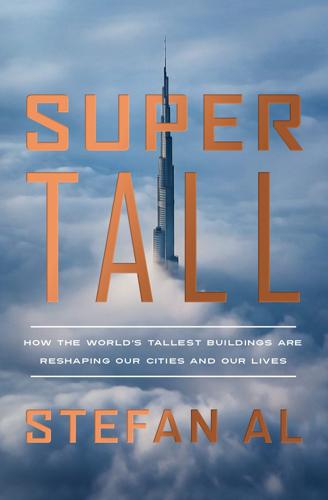
Supertall: How the World's Tallest Buildings Are Reshaping Our Cities and Our Lives
by
Stefan Al
Published 11 Apr 2022
Perhaps you can live a little farther away and buy a cheaper home? In other words, cities will increasingly sprawl out. The increase of telecommuting, accelerated by COVID-19, may have a similar impact. Workers may choose to live farther away when they require fewer commutes to their downtown office. Self-driving cars may have more positive implications on downtown cores. They can liberate a lot—a parking lot. When the car drops you off, it likely won’t be parking. It will pick up someone else, since many of us may be sharing cars. The obsolete city parking lot can then be repurposed. In New York, some predict this AV-reduced parking demand can free up roughly 900 city blocks, the size of six Central Parks.27 This means a lot of potential for parks, or for skyscrapers.
…
“Gloves to Muffle Stadium Applause,” South China Morning Post, October 13, 1994. 24.Jeffrey Hardwick, Mall Maker: Victor Gruen, Architect of an American Dream (Philadelphia: University of Pennsylvania Press, 2010), 216. 25.Yuko Okayasu, “Hong Kong Tops Global Ranking of Most Expensive Shopping Streets,” Cushman & Wakefield, November 14, 2019, accessed February 21, 2021, https://www.cushmanwakefield.com/. 26.Stefan Al, “Mall City: Hong Kong’s Dreamworlds of Consumption,” in Mall City (Honolulu: University of Hawaii Press, 2020), 1–20. 27.Nikolaus Lang et al., “Can Self-Driving Cars Stop the Urban Mobility Meltdown?” Boston Consulting Group, July 8, 2020, https://www.bcg.com. 28.Ben Hamilton-Baillie, “Towards Shared Space,” Urban Design International 13, no. 2 (2008): 130–38. 29.SpaceX, “Hyperloop Alpha,” August 12, 2013, accessed February 27, 2021, https://www.spacex.com.
…
See also rebar of Burj Khalifa, 67 compression strength in 1950s, 4 mass timber combined with, 47 rust (corrosion) of, 22, 34, 42 taller than steel-framed buildings, 35 residential towers, luxurious in England, 166, 171 in New York, 178–79, 197, 200–201, 202, 206 RHW.2, Vienna, 135 risk in building tall, 16–17, 271, 272 robotics, 139, 237, 263, 265, 271 Rockefeller Center, 188–89, 202 Rogers, Richard, 124–25, 163 Roman arches, 52, 54–56 Roman city planning, 151–52, 171 Roman concrete, 22, 25–28, 29, 33–34, 41, 55 Roman cooling systems, 118 roofs, 139, 240, 250–51, 262–63 Rudolph, Paul, 224 rust, 22, 34, 42 Safdie, Moshe, 254 Sagrada Familia, 32, 82 Saint-Denis, Church of, 56–57 Salesforce Tower, San Francisco, 10–11 sand in concrete, 25, 33 for Dubai real estate, 37 Sant’Elia, Antonio, 14, 96 Saskatchewan Conservation House, 133–34 Saudi Binladen Group, 68, 75 Scheeren, Ole, 77, 78 Seafront Towers, Shenzhen, 77 Seagram Building, 123, 123–24, 190–91 sea level rise, 271 Sears Tower, 65, 65–66, 206 Second Industrial Revolution, 156, 246–47 self-driving cars, 233, 235–36 sensors of conditioned air and electric light, 12 digital twin and, 140 structural stability and, 9 Seoul, Korea, 78, 249 setback regulations, New York, 184–86, 269 Shanghai Tower, 86, 86–87 double curtain wall, 126 elevator cables, 103, 108–9 elevators, 87, 100–101, 103, 104–5, 106, 107 structure of, 103 tuned mass damper, 74–75 twisted shape, 71–72 Shanghai World Financial Center, 72, 86, 102, 103 Shard, London, 145, 147, 148, 160–61, 162–63, 168, 169, 172 Shibam, Yemen, 128 Shukhov, Vladimir, 6–7, 10 Siemens, Werner von, 93, 218 silica fume, 33 Singapore building regulations, 254–55 digital twin, 264 food supply, 257–58 founding of, 251–52 greening of, 240, 252–53 home ownership in, 253–54 imagined future of, 265 parks in, 254, 257, 264 skyscrapers, 254–56, 259 strict behavior enforcement, 258–59 vertical farms, 240, 258 vertical gardens, 256 water supply, 253, 254, 255, 258 Skidmore, Owings & Merrill (SOM), 38, 47, 60 skybridges, 15, 76–77, 111, 173, 225 sky exposure planes, 184–85, 189 sky lobbies, 76, 77, 174 Skyscraper Curse, 207–8 skyscrapers.

The Optimist: Sam Altman, OpenAI, and the Race to Invent the Future
by
Keach Hagey
Published 19 May 2025
AI researchers like Selman had learned, through successive cycles of hope and despair, to stay quiet about the potential of artificial intelligence, after the excessive exuberance of earlier generations had shoved their field to the academic margins. But recent gains in computer vision, machine translation, and self-driving cars were remarkable, and Bostrom’s Superintelligence had launched a movement that went far beyond the dusty corner of academia where AI researchers had long huddled. The conference had been organized by the Future of Life Institute, founded less than a year earlier by MIT physicist Max Tegmark and funded by a $100,000-a-year pledge from Skype co-founder and effective altruist Jaan Tallinn.
…
Discussions are over.”12 He stopped sending money, though he kept paying the rent for a while, and Reid Hoffman, the LinkedIn co-founder and college friend of Peter Thiel’s, stepped in to cover OpenAI employee salaries and other overhead. By the end of 2017, Musk had poached Karpathy and made him the head of artificial intelligence at Tesla, in charge of leading the company’s self-driving car technology. In January 2018, he wrote Sutskever and Brockman an email urging them to merge OpenAI into Tesla. “It seems to me that OpenAI today is burning cash and that the funding model cannot reach the scale to seriously compete with Google (an 800B company),” he wrote. “A for-profit pivot might create a more sustainable revenue stream over time and would, with the current team, likely bring in a lot of investment.
…
However, building out a project from scratch would steal focus from AI research, it would take a long time and it’s unclear if a company could ‘catch up’ to Google scale, and the investors might exert too much pressure in the wrong directions. The most promising option I can think of, as I mentioned earlier, would be for OpenAI to attach to Tesla as its cash cow.” He proposed it as a win-win: OpenAI’s technology could help accelerate Tesla’s push into self-driving cars, which would raise Tesla’s market cap so much that it could afford to fund OpenAI’s quest for AGI. “With a functioning full self-driving solution in ~2–3 years we could sell a lot of cars/trucks,” he wrote. The move could increase Tesla’s market capitalization, allowing OpenAI to use the revenue to work on AI at a larger scale, he argued.

To Save Everything, Click Here: The Folly of Technological Solutionism
by
Evgeny Morozov
Published 15 Nov 2013
Their point is not that such liberation through technology is illusory or inconsequential but, rather, that such liberation never happens in a vacuum and may, all things considered, actually enslave. Yes, Google’s self-driving cars would make driving easier and perhaps even cut the number of deaths on the road, but a reasonable transportation system ought to pursue many other objectives. Would self-driving cars result in inferior public transportation as more people took up driving? Would it lead to even greater suburban sprawl as, now that they no longer had to drive, people could do e-mail during their commute and thus would tolerate spending more time in the car?
…
Even those who’ve never bothered to vote in the past are finally provided with the right incentives—naturally, as a part of an online game where they collect points for saving humanity—and so they rush to use their smartphones to “check in” at the voting booth. Thankfully, getting there is no longer a chore; self-driving cars have been invented for the purpose of getting people from place to place. Streets are clean and shiny; keeping them that way is also part of an elaborate online game. Appeals to civic duty and responsibility to fellow citizens have all but disappeared—and why wouldn’t they, when getting people to do things by leveraging their eagerness to earn points, badges, and virtual currencies is so much more effective?
…
See Perversity-futility-jeopardy triad Galileo Galison, Peter Galton, Francis Gambling addiction Game mechanics Games and gamification and humanitarianism and smartphones vs. reality Gamification and adversarial design and degrading environment, enjoyment in and efficiency vs. inefficiency and games and games vs. reality literature and motivation and rewards vs. citizenship Gardner, James Garland, David Gasto Público Bahiense (website) Gatekeepers Gates, Bill Gates, Kelly Gawker Gender discrimination Generativity theory Genetic engineering Gertner, Joe Ghonim, Wael Gillespie, Tarleton Global Integrity Godin, Benoit Google AdSense and advertising and algorithms and algorithms, and democracy and algorithms, neutrality and objectivity of and badges and citizenship and content business and ethics GPS-enabled Android phones and Huffington Post and information organization and legal challenges and mirror imagery and openness PageRank Places and predictive policing and privacy Project Glass goggles and scientific credentials and self-driving cars values and WiFi networks and Zagat Google+ Google Autocomplete Google Buzz Google News and badges Google Scholar Government and networks role of Government, US, and WikiLeaks GPS driving data GPS-enabled Android phones (Google) Grafton, Anthony Graham, Paul Grant, Ruth Green, Donald Green, Shane Greenwald, Glenn Guernica Gutenberg, Johannes Gutshot-detection systems Hanrahan, Nancy Harvey, David Hayek, Friedrich Heald, David Health and gamification monitoring device Heller, Nathaniel Hibbing, John Hierarchies, and networks Hieronymi, Pamela Highlighting and shading Hildebrandt, Mireille Hill, Kashmir Hirschman, Albert Historians, and Internet debate History as irrelevant of technology Hoffman, Reid Holiday, Ryan Holocaust Horkheimer, Max Howard Dean for Iowa Game Huffington Post, The Humanitarianism, and games Hunch.com Hypocrisy Illich, Ivan Image-recognition software Imperfection Impermium Incentives Information cascades theory Information consumption self-tracking of Information emperors Information industries and government history of Information organization Information-processing imperative Information reductionism Information technology InfoWorld (website) Innovation and justice and technology unintended consequences of Innovation talk Institutions, and networks Intel Intermediaries.
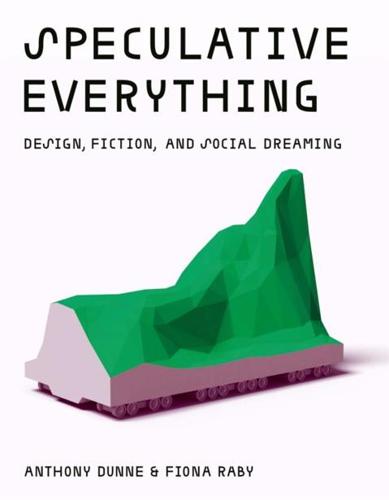
Speculative Everything: Design, Fiction, and Social Dreaming
by
Anthony Dunne
and
Fiona Raby
Published 22 Nov 2013
It is the most dystopian yet familiar of all the micro-kingdoms. Their main form of transport is the digicar, a development of electric self-drive cars being pioneered today by companies such as Google.27 The car has evolved from being a vehicle for navigating space and time, to being an interface for navigating tariffs and markets. Every square meter of road surface and every millisecond of access, at any moment, is monetized and optimized. Today, self-drive cars are presented as social spaces for relaxing commutes, but digicars are closer to economy airlines, offering the most basic but humane experience.

Automation and the Future of Work
by
Aaron Benanav
Published 3 Nov 2020
Capital Stock and Labor Productivity Growth Rates, 1950–2017 Preface THE INTERNET, SMARTPHONES, AND social media have already transformed so much about the way we interact with each other and come to know the world. What would happen if these digital technologies moved off the screen and increasingly integrated themselves into the physical world around us? Advanced industrial robotics, self-driving cars and trucks, and intelligent cancer-screening machines appear to presage a world of ease, but they also make us uneasy. After all, what would human beings do in a largely automated future? Would we be able to adapt our institutions to realize the dream of human freedom that a new age of intelligent machines might make possible?
…
For one thing, machines remain comically incapable of opening doors or, alas, folding laundry. Robotic security guards are toppling into mall fountains. Computerized digital assistants can answer questions and translate documents, but not well enough to do the job without human intervention; the same is true of self-driving cars.2 In 2014, in the midst of the American “Fight for Fifteen” movement, billboards went up in San Francisco threatening to replace fast-food workers with touch-screens if a law raising the minimum wage were passed. The Wall Street Journal dubbed the bill the “robot employment act.” Yet many fast-food workers in Europe already work alongside touchscreens, often earning better pay than comparable workers in the United States.3 So is the talk of automation overblown?

Imaginable: How to See the Future Coming and Feel Ready for Anything―Even Things That Seem Impossible Today
by
Jane McGonigal
Published 22 Mar 2022
“There’s a reason why getting your first driver’s license is such an important rite of passage,” he said. “It marks the moment when a young person finally feels in control of their own life. That’s just not going to change.” I asked if they thought that the possibility of reducing motor vehicle fatalities would be a stronger motivator than being in charge of your life. What if self-driving cars were ultimately safer than people-driven cars? What if we could eliminate some of the nearly 1.5 million car-related fatalities that happen globally each year? No, they all agreed. Safety gains would never trump a sense of individual freedom and control. I shared a few other reasons I thought autonomous cars would become commonplace, but I didn’t get any traction.
…
And then as soon as I had a moment to myself, I pulled out the tiny notebook I always carry with me, and I wrote up everything I could remember about the conversation. I wanted to capture the conversation because I was fascinated by the certainty they expressed in rejecting this possible future. I didn’t take their opinions to be an official company position—and I later learned that there were already people within the company advocating for taking self-driving cars more seriously. But our conversation stood out to me as a clear example of how an idea can get labeled “unthinkable,” and how, once the idea is labeled, it is hard to get people to change their minds about it, even in a team tasked with innovation. Before I started training as a futurist, I was probably just as stubborn about my own views of the world.
…
People predict they would feel excited, nervous, awed, terrified, curious, nauseated, grateful, thrilled, confused, vigilant, asleep, free. The words they share run the full gamut of positive and negative emotions, with no consensus whatsoever. With this kind of insight into other people’s imagined futures, it becomes much harder to hold any strong opinion about self-driving cars too tightly. This is especially true if we try to understand—or better yet, have a conversation about—why exactly someone else might feel nervous about the ride while we would feel excited, why someone else might feel free during the ride while we might feel nauseated, why some people want this future and others don’t.
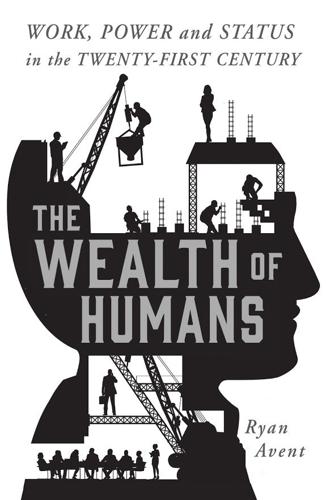
The Wealth of Humans: Work, Power, and Status in the Twenty-First Century
by
Ryan Avent
Published 20 Sep 2016
Acemoglu, Daron ageing populations agency, concept of Airbnb Amazon American Medical Association (AMA) anarchism Andreessen, Marc Anglo-Saxon economies Apple the iPhone the iPod artisanal goods and services Atkinson, Anthony Atlanta, Georgia austerity policies automation in car plants fully autonomous trucks of ‘green jobs’ during industrial revolution installation work as resistant to low-pay as check on of menial/routine work self-driving cars and technological deskilling automobiles assembly-line techniques automated car plants and dematerialization early days of car industry fully autonomous trucks self-driving cars baseball Baumol, William Belgium Bernanke, Ben Bezos, Jeff black plague (late Middle Ages) Boston, Massachusetts Brazil BRIC era Bridgewater Associates Britain deindustrialization education in extensions of franchise in financial crisis (2008) Great Exhibition (London 1851) housing wealth in and industrial revolution Labour Party in liberalization in political fractionalization in real wages in social capital in surpassed by US as leading nation wage subsidies in Brontë, Charlotte Brynjolfsson, Erik bubbles, asset-price Buffalo Bill (William Cody) BuzzFeed Cairncross, Frances, The Death of Distance (1997) capital ‘deepening’ infrastructure investment investment in developing world career, concept of cars see automobiles Catalan nationalism Central African Republic central banks Chait, Jonathan Charlotte chemistry, industrial Chicago meat packers in nineteenth-century expansion of World’s Columbia Exposition (1893) China Deng Xiaoping’s reforms economic slow-down in era of rapid growth foreign-exchange reserves ‘green jobs’ in illiberal institutions in inequality in iPod assembly in technological transformation in wage levels in Chorus (content-management system) Christensen, Clayton Cisco cities artisanal goods and services building-supply restrictions growth of and housing costs and industrial revolution and information membership battles in rich/skilled and social capital clerical work climate change Clinton, Hillary Coase, Ronald Columbia University, School of Mines communications technology communism communities of affinity computing app-based companies capability thresholds cloud services cycles of experimentation desktop market disk-drive industry ‘enterprise software’ products exponential progress narrative as general purpose technology hardware and software infrastructure history of ‘Moore’s Law’ and productivity switches transistors vacuum tubes see also digital revolution; software construction industry regulations on Corbyn, Jeremy Corliss steam engine corporate power Cowen, Tyler craft producers Craigslist creative destruction the Crystal Palace, London Dalio, Ray Dallas, Texas debt deindustrialization demand, chronically weak dematerialization Detroit developing economies and capital investment and digital revolution era of rapid growth and industrialization pockets of wealth in and ‘reshoring’ phenomenon and sharp slowdown and social capital see also emerging economies digital revolution and agency and company cultures and developing economies and distance distribution of benefits of dotcom tech boom emergence of and global imbalances and highly skilled few and industrial institutions and information flows investment in social capital niche markets pace of change and paradox of potential productivity and output and secular stagnation start-ups and technological deskilling techno-optimism techno-pessimism as tectonic economic transformation and trading patterns web journalism see also automation; computing; globalization discrimination and exclusion ‘disruption’, phenomenon of distribution of wealth see inequality; redistribution; wealth and income distribution dotcom boom eBay economics, classical The Economist education in emerging economies during industrial revolution racial segregation in USA and scarcity see also university education electricity Ellison, Glenn Ellison, Sara Fisher emerging economies deindustrialization economic growth in education in foreign-exchange reserves growth in global supply chains highly skilled workers in see also developing economies employment and basic income policy cheap labour as boost to and dot.com boom in Europe and financial crisis (2008) ‘green jobs’ low-pay sector minimum wage impact niche markets in public sector ‘reshoring’ phenomenon as rising globally and social contexts and social membership as source of personal identity and structural change trilemma in USA see also labour; wages Engels, Friedrich environmental issues Etsy euro- zone Europe extreme populist politics liberalized economies political fractionalization in European Union Facebook face-recognition technology factors of production land see also capital; labour ‘Factory Asia’ factory work assembly-line techniques during industrial revolution family fascism Federal Reserve financial crisis (2008) financial markets cross-border capital flows in developing economies Finland firms and companies Coase’s work on core competencies culture of dark matter (intangible capital) and dematerialization and ‘disruption’ ‘firm-specific’ knowledge and information flows internal incentive structures pay of top executives shifting boundaries of social capital of and social wealth start-ups Ford, Martin, Rise of the Robots (2015) Ford Motor Company fracking France franchise, electoral Friedman, Milton Fukuyama, Francis Gates, Bill gender discrimination general purpose technologies enormous benefits from exponential progress and skilled labour supporting infrastructure and time lags see also digital revolution Germany ‘gig economy’ Glaeser, Ed global economy growth in supply chains imbalances lack of international cooperation savings glut and social consensus globalization hyperglobalization and secular stagnation and separatist movements Goldman Sachs Google Gordon, Robert Gothenburg, Sweden Great Depression Great Depression (1930s) Great Exhibition, London (1851) Great Recession Great Stagnation Greece ‘green jobs’ growth, economic battle over spoils of boom (1994-2005) and classical economists as consistent in rich countries decline of ‘labour share’ dotcom boom emerging economies gains not flowing to workers and industrial revolution Kaldor’s ‘stylized facts of’ and Keynes during liberal era pie metaphor in post-war period and quality of institutions and rich/elite cities rich-poor nation gap and skilled labour guilds Hansen, Alvin Hayes, Chris, The Twilight of the Elites healthcare and medicine hedge funds and private equity firms Holmes, Oliver Wendell Hong Kong housing in Bay-Area NIMBY campaigns against soaring prices pre-2008 crisis zoning and regulations Houston, Texas Huffington Post human capital Hungary IBM identity, personal immigration and ethno-nationalist separatism and labour markets in Nordic countries and social capital income distribution see inequality; redistribution; wealth and income distribution India Indonesia industrial revolution automation during and economic growth and growth of cities need for better-educated workers and productivity ‘second revolution’ and social change and wages and World’s Fairs inequality and education levels between firms and housing wealth during industrial revolution during liberal era between nations pay of top executives rise of in emerging economies and secular stagnation in Sweden wild contingency of wealth see also rich people; wealth and income distribution inflation in 1970s hyperinflation information technology see computing Intel interest rates International Space Station (ISS) iRobot ISIS Italy Jacksonville, Florida Jacquard, Joseph Marie Japan journalism Kaldor, Nicholas Keynes, John Maynard Kurzweil.
…
Ray labour abundance as good problem bargaining power cognitive but repetitive collective bargaining and demographic issues discrimination and exclusion global growth of workforce and immigration liberalization in 1970s/80s ‘lump of labour’ fallacy occupational licences organized and proximity reallocation to growing industries retraining and skill acquisition and scarcity and social value work as a positive good see also employment Labour Party, British land scarcity Latvia Le Pen, Jean-Marie Le Pen, Marine legal profession Lehman Brothers collapse (2008) Lepore, Jill liberalization, economic (from 1970s) Linkner, Josh, The Road to Reinvention London Lucas, Robert Lyft maker-taker distinction Malthus, Reverend Thomas Manchester Mandel, Michael Mankiw, Gregory marketing and public relations Marshall, Alfred Marx, Karl Mason, Paul, Postcapitalism (2015) McAfee, Andrew medicine and healthcare ‘mercantilist’ world Mercedes Benz Mexico Microsoft mineral industries minimum wage Mokyr, Joel Monroe, President James MOOCs (‘massive open online courses’) Moore, Gordon mortality rates Mosaic (web browser) music, digital nation states big communities of affinity inequality between as loci of redistribution and social capital nationalist and separatist movements Netherlands Netscape New York City Newsweek NIMBYism Nordic and Scandinavian economies North Carolina North Dakota Obama, Barack oil markets O’Neill, Jim Oracle Orbán, Viktor outsourcing Peretti, Jonah Peterson Institute for International Economics pets.com Philadelphia Centennial Fair (1876) Philippines Phoenix, Arizona Piketty, Thomas, Capital in the Twenty-First Century (2013) Poland political institutions politics fractionalization in Europe future/emerging narratives geopolitical forces human wealth narrative left-wing looming upheaval/conflict Marxism nationalist and separatist movements past unrest and conflict polarization in USA radicalism and extremism realignment revolutionary right-wing rise of populist outsiders and scarcity social membership battles Poor Laws, British print media advertising revenue productivity agricultural artisanal goods and services Baumol’s Cost Disease and cities and dematerialization and digital revolution and employment trilemma and financial crisis (2008) and Henry Ford growth data in higher education of highly skilled few and industrial revolution minimum wage impact paradox of in service sector and specialization and wage rates see also factors of production professional, technical or managerial work and education levels and emerging economies the highly skilled few and industrial revolution and ‘offshoring’ professional associations skilled cities professional associations profits Progressive Policy Institute property values proximity public spending Putnam, Robert Quakebot quantitative easing Race Against the Machine, Brynjolfsson and McAfee (2011) railways Raleigh, North Carolina Reagan, Ronald redistribution and geopolitical forces during liberal era methods of nation state as locus of as a necessity as politically hard and societal openness wealth as human rent, economic Republican Party, US ‘reshoring’ phenomenon Resseger, Matthew retail sector retirement age Ricardo, David rich people and maker-taker distinction wild contingency of wealth Robinson, James robots Rodrik, Dani Romney, Mitt rule of law Russia San Francisco San Jose Sanders, Bernie sanitation SAP Saudi Arabia savings glut, global ‘Say’s Law’ Scalia, Antonin Scandinavian and Nordic economies scarcity and labour political effects of Schleicher, David Schwartz, Anna scientists Scotland Sears Second World War secular stagnation global spread of possible solutions shale deposits sharing economies Silicon Valley Singapore skilled workers and education levels and falling wages the highly skilled few and industrial revolution ‘knowledge-intensive’ goods and services reshoring phenomenon technological deskilling see also professional, technical or managerial work Slack (chat service) Slate (web publication) smartphone culture Smith, Adam social capital and American Constitution baseball metaphor and cities ‘deepening’ definition/nature of and dematerialization and developing economies and erosion of institutions of firms and companies and good government and housing wealth and immigration and income distribution during industrial revolution and liberalization and nation-states productive application of and rich-poor nation gap and Adam Smith and start-ups social class conflict middle classes and NIMBYism social conditioning of labour force working classes social democratic model social reform social wealth and social membership software ‘enterprise software’ products supply-chain management Solow, Robert Somalia South Korea Soviet Union, dissolution of (1991) specialization Star Trek state, role of steam power Subramanian, Arvind suburbanization Sweden Syriza party Taiwan TaskRabbit taxation telegraphy Tesla, Nikola Thatcher, Margaret ‘tiger’ economies of South-East Asia Time Warner Toyota trade China as ‘mega-trader’ ‘comparative advantage’ theory and dematerialization global supply chains liberalization shaping of by digital revolution Adam Smith on trade unions transhumanism transport technology self-driving cars Trump, Donald Twitter Uber UK Independence Party United States of America (USA) 2016 Presidential election campaign average income Bureau of Labour Statistics (BLS) Constitution deindustrialization education in employment in ethno-nationalist diversity of financial crisis (2008) housing costs in housing wealth in individualism in industrialization in inequality in Jim Crow segregation labour scarcity in Young America liberalization in minimum wage in political polarization in post-crisis profit rates productivity boom of 1990s real wage data rising debt levels secular stagnation in shale revolution in social capital in and social wealth surpasses Britain as leading nation wage subsidies in university education advanced degrees downward mobility of graduates MOOCs (‘massive open online courses’) and productivity see also education urbanization utopias, post-work Victoria, Queen video-gamers Virginia, US state Volvo Vox wages basic income policy Baumol’s Cost Disease cheap labour and employment growth and dot.com boom and financial crisis (2008) and flexibility and Henry Ford government subsidies and housing costs and immigration and industrial revolution low-pay as check on automation minimum wage and productivity the ‘reservation wage’ as rising in China rising in emerging economies and scarcity in service sector and skill-upgrading approach stagnation of and supply of graduates Wandsworth Washington D.C.
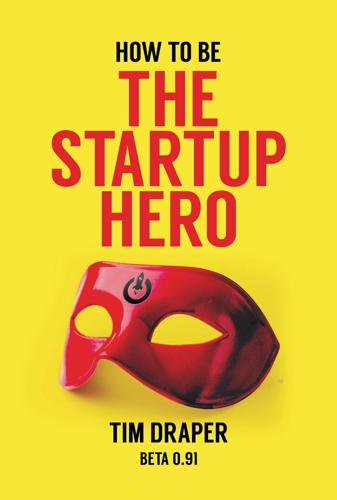
How to Be the Startup Hero: A Guide and Textbook for Entrepreneurs and Aspiring Entrepreneurs
by
Tim Draper
Published 18 Dec 2017
The school, Draper University of Heroes, has shaken up the education establishment by offering team-based learning, project-oriented experiences and survival training, and has transformed the lives of 1000 young people who have come from 68 different countries and started about 300 companies at this writing, one of which is a unicorn already. Since deciding to invest through my new vehicle, Draper Associates, I have had a few early successes. Twitch.TV, a company that created a platform for fans to watch people play video games, was sold to Amazon for $1 billion; Cruise Automation, the first independent self-driving car company was sold to General Motors for $1 billion; and my son Billy sourced a company that simplifies investing in the public markets called Robinhood, which just completed a venture round at a valuation over $1 billion. Billy and I were able to raise a $190 million fund and we are enjoying working together.
…
She made the first bold move to “make them fly” autonomously. Kyle is a Startup Hero. He took the first step and all the steps after that. He was willing to take long odds at the extraordinary outcome. So is the CEO of GM, who stuck her neck and professional reputation on the line to leap into the great unknown and invest in a self-driving car. Book One: The Startup Hero’s Pledge This book is written to help make you a Startup Hero. A Startup Hero needs a guide for when life gets complicated. I have written this pledge to help Startup Heroes get centered. A Startup Hero must also be flexible and willing to continue marching forward when things are not predictable.
…
If other scientists decide to follow suit and we get an open source outflowing of scientific ideas and collaboration, science could go through the same explosion that we have had in entrepreneurship in Silicon Valley, and human progress will again be accelerated. Look for industries to improve: healthcare, entertainment, real estate, insurance, fashion and banking. Look for new technologies to improve them with: the shared economy, social media, programmable stem cells, CRISPR, microsatellites, virtual reality, Bitcoin, solar economies, self-driving cars, electronic clothes, bioelectronics, robot brains, prosthetic limbs, Pokémon derivatives, offline massively open online courses (MOOCs), enterprise software, and multivariable authenticators. Put them together to approach or even invent new technology industries. Your imagination is unlimited.
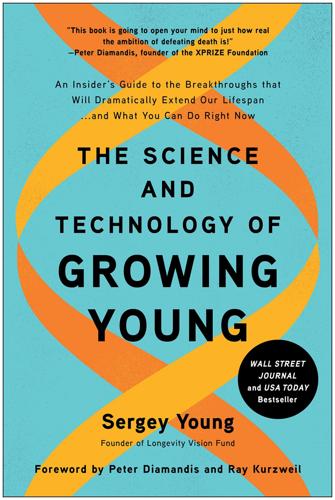
The Science and Technology of Growing Young: An Insider's Guide to the Breakthroughs That Will Dramatically Extend Our Lifespan . . . And What You Can Do Right Now
by
Sergey Young
Published 23 Aug 2021
If so, blame the audacity of the concept or the scarcity of mainstream reporting about longevity science—but don’t blame the man. Kurzweil predicted, nearly a decade in advance, that world chess champion Garry Kasparov would be beaten by a computer like IBM’s Deep Blue. He predicted the widespread use of wireless communication and something like Google nearly twenty years before they came to be. He predicted self-driving cars, remote learning, cloud computing, smart watches, augmented reality, nano devices, robotic exoskeletons, and at least a hundred more innovations, often with eerily accurate timing. In tech circles, when Ray makes a prediction, many people now set their watch by it. Nobody laughs anymore. It is anybody’s guess what will become of longevity escape velocity, or when it may come to pass.
…
And of the more than one billion people worldwide living with hypertension, as many as half do not know about it.7 In fact, when you dig into the nearly sixty million lives lost around the globe each year, more than thirty million are from conditions that are restorable if caught early. Only one item on the World Health Organization’s top ten causes of death—road accidents—isn’t a partially or fully treatable condition8 (and that one will soon be eliminated by self-driving cars). The problem is—we just are not diagnosing people early enough. Diagnosing Accurately The second problem with diagnosis today comes when the sick do get checked but are given the wrong diagnosis. For a view into this troubling matter, Google Doug Lindsay. The St. Louis, Missouri, native suffers from an autonomic nervous system disorder known as autonomic dysfunction, which killed his mother and left him bedridden for eleven years.
…
If you must drink, use a ride-sharing app like Uber or Lyft, which studies show have reduced alcohol-related auto accidents by 25 to 35 percent since their launch.15 Consider using a blood alcohol concentration calculator app like MyLimit or even installing a smartphone breathalyzer like BacTrack. Soon, fully self-driving cars will drastically reduce road accidents. Until then, for heaven’s sake, slow down, never drink and drive, put your phone away, and buckle up! Obviously, I don’t recommend that you board up your windows and stay inside. You have to decide for yourself what level of calculated risk you are comfortable with.
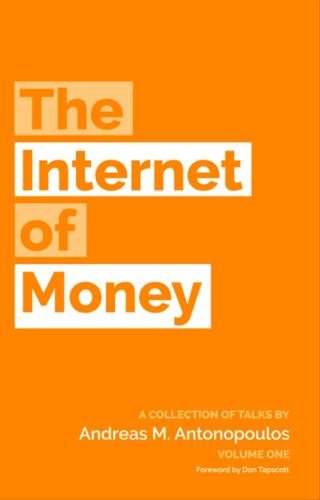
The Internet of Money
by
Andreas M. Antonopoulos
Published 28 Aug 2016
Uber. Self-driving cars. What happens when you mash the three together? The self-owning car. A car that pays for its Toyota lease, its insurance, and its gas, by giving people rides. A car that is not owned by a corporation. A car that is a corporation. A car that is a shareholder and owner of its own corporation. A car that exists as an autonomous financial entity with no human ownership. This has never happened before, and that’s just the beginning. Audience member gasps: "Oh shit!" "Let’s take three radically disruptive technologies and mash them together. Bitcoin. Uber. Self-driving cars. What happens when you mash the three together?
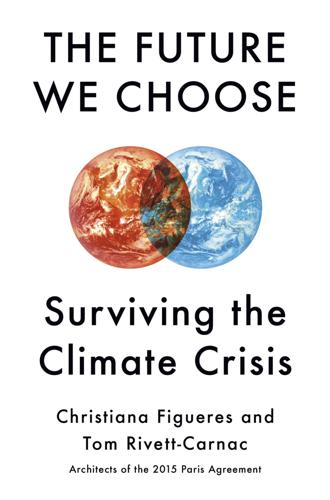
The Future We Choose: Surviving the Climate Crisis
by
Christiana Figueres
and
Tom Rivett-Carnac
Published 25 Feb 2020
San Francisco Chronicle, July 10, 2017, https://www.sfchronicle.com/opinion/openforum/article/Are-we-ready-for-the-end-of-individual-car-11278535.php. 34. A great article and podcast on this can be found here: Hans-Werner Kaas, Detlev Mohr, and Luke Collins, “Self-Driving Cars and the Future of the Auto Sector,” McKinsey & Company, August 2016, https://www.mckinsey.com/industries/automotive-and-assembly/our-insights/self-driving-cars-and-the-future-of-the-auto-sector. 35. Rosie McCall, “Millions of Fossil Fuel Dollars Are Being Pumped into Anti-Climate Lobbying,” IFLScience, March 22, 2019, https://www.iflscience.com/environment/millions-of-fossil-fuel-dollars-are-being-pumped-into-anticlimate-lobbying/. 36.
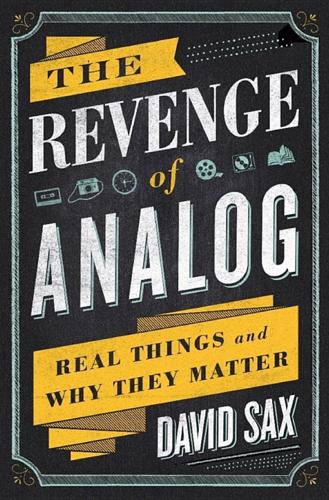
The Revenge of Analog: Real Things and Why They Matter
by
David Sax
Published 8 Nov 2016
What began on the factory floor has edged up to the cubicle and corner office, threatening not just warehouse workers and delivery drivers with robots and drones, but lawyers, radiologists, and newspaper reporters, whose jobs are increasingly being done by artificial intelligence software. In a few years, as you step into your self-driving car, what job will it take you to? If the answer is a job that can either be done by a computer with artificial intelligence or a robot equipped with one, you might want to think about a new career path. Futurists and technology leaders offer a sunnier view: all this displacement could simply be a way station to a period of technological bliss.
…
Although fundamentally not that different from printed correspondence courses, recorded audio- or videotape lectures, or other distance-learning initiatives of the past century, MOOC emerged as a new term in 2008, when advances in streaming video technology and cloud computing made it possible to deliver lectures online in real time. A number of universities, colleges, and other institutions had previously experimented with putting some courses, lectures, and even degrees online, but MOOC fever really hit in 2012. That was the year the artificial intelligence researcher Sebastian Thrun (creator of Google’s self-driving car) and his partner Peter Norvig (Google’s director of research) posted their introductory lecture on artificial intelligence at Stanford University online. Surprisingly, their lecture attracted more than 100,000 views, and the two launched the MOOC company Udacity, which along with its competitor Coursera and a handful of others promised to usher in a revolution in the way the world learned.
…
The most commonly floated solution to this, which is still in the early stages of research, is so-called analog computing. This would rely not on the exact binary calculations of 1’s and 0’s flowing through silicon chips, but on more approximate calculations, which recognize patterns while using far less energy. It is highly complex, futuristic stuff, but then again, so are self-driving cars. Many say that analog is nothing less than the future of computers. Silicon Valley is an idealistic place, far more so than other industries, such as finance or manufacturing. Although its technical roots lie in the postwar military/industrial complex, its soul and heart are intimately tied to the counterculture movement of the late 1960s and early 1970s.

The Seventh Sense: Power, Fortune, and Survival in the Age of Networks
by
Joshua Cooper Ramo
Published 16 May 2016
The connected devices themselves are constantly improving too. Back in Baran’s day, dozens of scientists counted themselves lucky to share a single computer. A few decades later, the PC revolution gave everyone a machine. And now, of course, we each have many computers in our lives: phones, wired TVs, soon smart self-driving cars. Because of connection, we have access to thousands of such devices in data centers, a fusion of software and hardware and connection that we are starting to lean on as “everyware.” This now-commonplace magic was formalized in 1965 by Gordon Moore, one of the founding engineers at Intel, who noticed that since the introduction of integrated chips, in 1959, the number of transistors on each tiny chip had been doubling every two years.
…
If they can’t innovate fast enough to develop tools to manage massive data flows or are unable to absorb the best new technology, they will be the new divergence club. Fast networks will elude them. Self-defense will be impossible; their time will be as vulnerable to manipulation by enemies as the resources of Africa and Latin America were to colonialist plunder several hundred years ago. In the next decade, everything from self-driving cars to war-fighting robots will begin to become commonplace in the most advanced nations. Think of the efficiencies these will bring: cheaper logistics and transport in a world of self-handled and self-unloaded trucks. A country such as the United States, which might be a leader in adopting such systems, would outperform even further a nation such as Chile or Nigeria, which may wait years before automated logistics can be implemented.
…
.… Thus the first ultraintelligent machine is the last invention that man need ever make, provided that the machine is docile enough to tell us how to keep it under control.” Vinge labeled this instant “the singularity”: “It is a point,” he wrote, “where our models must be discarded.” The trivial version of this would be an age of autonomous armed drones, self-driving cars, and electrical grids that flipped nuclear plants on or off according to a logic only they understood. The more profound version, however, would be the arrival of AI that really did think and create and intuit tremors too subtle for the human mind to sense. Like so much of our connected age, such machines would arrive, Vinge felt, because we wanted and even needed them to achieve our dreams.

The Big Nine: How the Tech Titans and Their Thinking Machines Could Warp Humanity
by
Amy Webb
Published 5 Mar 2019
Here are just a few of our real-world outcomes: In 2016, an AI-powered security robot intentionally crashed into a 16-month-old child in a Silicon Valley mall.11 The AI system powering the Elite: Dangerous video game developed a suite of superweapons that the creators never imagined, wreaking havoc within the game and destroying the progress made by all the real human players.12 There are myriad problems when it comes to AI safety, some of which are big and obvious: self-driving cars have already run red lights and, in a few instances, killed pedestrians. Predictive policing applications continually mislabel suspects’ faces, landing innocent people in jail. There are an unknowable number of problems that escape our notice, too, because they haven’t affected us personally yet.
…
Right now, when you talk to your Alexa or Google Home, your voice is being recorded, parsed, and then transmitted to the cloud for a response—given the physical distance between you and the various data centers involved, it’s mind-blowing that Alexa can talk back within a second or two. As AI permeates more of our devices—in the form of smartphones with biometric sensors, security cameras that can lock onto our faces, cars that drive themselves, or precision robots capable of delivering medicine—a one- or two-second processing delay could lead to a catastrophic outcome. A self-driving car can’t ping up to the cloud for every single action because there are far too many sensors that would need to continually feed data up for processing. The only solution is to move the computing closer to the source of the data, which will reduce latency while also saving on bandwidth. This new kind of architecture is called “edge computing,” and it is the inevitable evolution of AI hardware and systems architecture.
…
See also Dartmouth Workshop Rongcheng, China, 81, 168 Rosenblatt, Frank, 32, 34, 41; Perception system, 32–33. See also Dartmouth Workshop Royal Dutch Shell company, 141–142 Rubin, Andy, 55 Rus, Daniela, 65 Russell, Bertrand: Principia Mathematica, 30–31 Ryder, Jon, 41 Safety issues, AI: robots, 58; self-driving cars, 58. See also Accidents and mistakes, AI Safety standards, AI: establishment of global, 251 Salieri, Antonio, 16 Scenario planning, 141; Royal Dutch Shell company use of, 141–142. See also Scenarios Scenarios, 141; as cognitive bias behavioral economics coping tool, 142; preferred outcomes and, 141; probability neglect and, 142; purpose of, 143.

Supremacy: AI, ChatGPT, and the Race That Will Change the World
by
Parmy Olson
Thrun was part of a new breed of academics who weren’t content to spend their days writing grant proposals and waiting for tenure but who worked with tech giants. Stanford was just five miles from Google’s headquarters, and Thrun also ran the cutting-edge “moonshot” projects at Google X that made self-driving cars and augmented reality glasses. In class, Thrun taught his students about machine learning, a technique that computers used to infer concepts from being shown lots of data instead of being programmed to do something specific. The concept was critical in the field of AI, even though the term learning was misleading: machines can’t think and learn as humans do.
…
While they require taking bigger risks, any potential returns are commensurate with that.” Till then, YC had mostly accepted consumer app makers and enterprise software companies who had more predictable paths to revenue. But Altman didn’t think these were the companies that would transform the world. So he persuaded the founders of Cruise, a self-driving car start-up, to join the YC program, as well as Helion Energy, a nuclear fusion start-up based in Redmond, Washington. Nuclear fusion happens when two light atomic nuclei combine to form a heavier nuclease, releasing energy in the process. It’s the same reaction that powers the sun and the stars as well as the flux capacitor in Back to the Future’s DeLorean time machine and the arc reactor in Tony Stark’s Iron Man suit.
…
“Having systems that fail unpredictably is not a good thing,” he told one podcast, referring to the incident. But Amodei’s concerns weren’t limited to racist and offensive decisions by algorithms. He was also worried about how reinforcement learning, the AI technique being mastered by DeepMind, was being used to control physical systems like robots, self-driving cars, and Google’s data centers. “Once you’re actually interfacing with the world directly and controlling direct physical things, I think the potential for things to go wrong … starts to increase,” he said in a 2016 interview with Jaan Tallinn’s Future of Life Institute. Amodei’s research into AI harms led him to more and more catastrophic possibilities, and by 2023, he would be warning the media that there was a 25 percent chance runaway AI posed an extinction risk to humans.

Fair Shot: Rethinking Inequality and How We Earn
by
Chris Hughes
Published 20 Feb 2018
The same goes with Google’s translation software or Amazon’s Echo devices, which are constantly incorporating feedback into their future performance plans. Tesla’s self-driving cars improve their driving ability by collecting, storing, and analyzing all of the driving data they receive while cars are on the road. These systems aren’t just automating processes: they are growing smarter over time. There is little doubt that artificial intelligence could destroy many jobs in the future, but I’m not sure they will. Self-driving cars could replace human drivers, and smart bots might replace personal assistants. The white-collar jobs of doctors and nurses, teachers, and lawyers might be radically reshaped with the introduction of smarter technologies.

Data and Goliath: The Hidden Battles to Collect Your Data and Control Your World
by
Bruce Schneier
Published 2 Mar 2015
Much of that is automatically recorded: Nate Cardozo (11 Feb 2013), “Mandatory black boxes in cars raise privacy questions,” Electronic Frontier Foundation, https://www.eff.org/press/releases/mandatory-black-boxes-cars-raise-privacy-questions. A self-driving car: Lucas Mearian (23 Jul 2013), “Self-driving cars could create 1GB of data a second,” Computer World, http://www.computerworld.com/s/article/9240992/Self_driving_cars_could_create_1GB_of_data_a_second. Embedded in digital photos: Benjamin Henne, Maximilian Koch, and Matthew Smith (3–7 Mar 2014), “On the awareness, control and privacy of shared photo metadata,” Distributed Computing & Security Group, Leibniz University, presented at the Eighteenth International Conference for Financial Cryptography and Data Security, Barbados, http://ifca.ai/fc14/papers/fc14_submission_117.pdf. 15 If you upload the photo: This is a particularly creepy story about camera metadata.
…
Much of that is automatically recorded in a black box recorder, useful for figuring out what happened in an accident. There’s even a computer in each tire, gathering pressure data. Take your car into the shop, and the first thing the mechanic will do is access all that data to diagnose any problems. A self-driving car could produce a gigabyte of data per second. Snap a photo, and you’re at it again. Embedded in digital photos is information such as the date, time, and location—yes, many cameras have GPS—of the photo’s capture; generic information about the camera, lens, and settings; and an ID number of the camera itself.
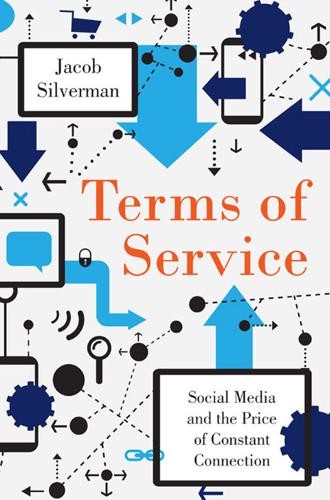
Terms of Service: Social Media and the Price of Constant Connection
by
Jacob Silverman
Published 17 Mar 2015
Google then had a challenge: how to get the hundreds of millions of people using its other products, like Search, Gmail, Docs, and YouTube, to embrace Google+. And it was a problem they desperately needed to solve, since Facebook’s huge, active membership and its use of Like buttons and other tracking tools meant that it had a glut of information that advertisers wanted. No matter its various ambitious projects (self-driving cars, mapping the world) or its widely used e-mail service, Google is, at heart, an advertising company—about 91 percent of its 2013 revenue came from its advertising arm, down from 95 percent the previous year. So how could Google both rope more users into Google+ and maintain its informational supremacy in the advertising arms race?
…
In the meantime, those whose sweat this industry still relies upon find themselves submitting to exploitative conditions, whether as a Foxconn worker in Shenzhen or a Postmates courier in San Francisco. As one Uber driver complained to a reporter: “We have a real person performing a function, not a Google automatic car. We have become the functional end of the app.” It might not be long before he is traded in for a self-driving car. They don’t need breaks, they don’t worry about safety conditions or unions, they don’t complain about wages. Compared to a human being, automatic cars are perfectly efficient. And who will employ him then? Who will be interested in someone who’s spent a few years bouncing between gray-market transportation facilitation services, distributed labor markets, and other hazy digital makework?
…
They are culture jammers par excellence. A collection of about twenty artists and pranksters, F.A.T. distributes all of their material free of copyright. Often, they produce 3-D models, instruction kits, masks, and other materials that they encourage people to disseminate and to make at home. F.A.T. has produced a fake Google self-driving car that they drove around New York City. They built a fake Google Street View car and took it around Berlin, where concern about Google’s privacy and surveillance practices runs high. (The car also appeared in New York.) They created BRICKiPhone, a functional case for the iPhone (“the most ubiquitous device of the yuppie class”), which turns the phone into a blocky, gray, late-eighties-style cell phone, complete with protruding black antenna.

Coders: The Making of a New Tribe and the Remaking of the World
by
Clive Thompson
Published 26 Mar 2019
Facebook engineers had long been using many different styles of machine learning to help recognize faces in photos, filter stories in the News Feed, and predict whether users would click on an ad; it set up an experimental AI research lab, and soon Facebook was producing a deep-learning model that could recognize faces with 97.35 percent accuracy, 27 percent better than the state of the art (“closely approaching human-level performance,” as they noted.) Self-driving car programs around the world seized on deep learning to help teach cars to navigate roads. Uber uses it to predict where new rides will emerge. The National Cancer Institute is working on using it to detect cancer in CT scans. It’s even seeping into the world of culture: ByteDance, one of China’s hugest firms, uses neural nets to help curate news stories in its Toutiao news app, so successfully that users spend more than 74 minutes a day using it.
…
They’re fields that are newly technically challenging; serious machine-learning work requires some genuinely mathematical thinking (and, if you practice it at a high level, formal computer science education). And these coders know that these skills are the most lucrative, because they’re necessary for the hot venture-capital-soaked fields like robotics and self-driving cars. This is why thinkers like Marie Hicks, the academic who’s closely studied the history of women in coding, are unenthusiastic about the idea that boot camps will bring more women deeply into the field. Sure, they’ll get some work—but they’ll be limited as to how high they can rise by the industry’s belief that women innately aren’t suited to the “harder” coding jobs; hey, if they were, wouldn’t they already be getting hired for those top jobs?
…
“human-level performance,” as they noted: Steven Levy, “Inside Facebook’s AI Machine,” Wired, February 23, 2017, accessed August 19, 2018, https://www.wired.com/2017/02/inside-facebooks-ai-machine/; Yaniv Taigman, Ming Yang, Marc’Aurelio Ranzato, and Lior Wolf, “DeepFace: Closing the Gap to Human-Level Performance in Face Verification,” Conference on Computer Vision and Pattern Recognition (CVPR), June 24, 2014, accessed August 19, 2018, https://research.fb.com/publications/deepface-closing-the-gap-to-human-level-performance-in-face-verification. to navigate roads: Andrew J. Hawkins, “Inside Waymo’s Strategy to Grow the Best Brains for Self-driving Cars,” The Verge, May 9, 2018, accessed August 19, 2018, https://www.theverge.com/2018/5/9/17307156/google-waymo-driverless-cars-deep-learning-neural-net-interview. where new rides will emerge: Nikolay Laptev, Slawek Smyl, and Santhosh Shanmugam, “Engineering Extreme Event Forecasting at Uber with Recurrent Neural Networks,” Uber Engineering, June 9, 2017, accessed August 19, 2018, https://eng.uber.com/neural-networks.

Four Battlegrounds
by
Paul Scharre
Published 18 Jan 2023
These problems are common in image classification systems, and have resulted in increased scrutiny of high-consequence applications, such as law enforcement use of facial recognition systems. In some settings, these failures can have fatal consequences. Problems with computer vision and image classification have contributed to self-driving cars and Tesla cars on autopilot striking pedestrians, semitrailers, concrete barriers, fire trucks, and parked cars, leading to several fatal accidents. Military systems are not immune to these flaws. In fact, the first deployed Maven systems reportedly suffered similar challenges, with initially a very poor accuracy rate (60 percent) because the algorithm was trained using drone footage from a different region than the one in which it was deployed.
…
Adversarial attacks have been embedded into physical objects, such as a 3D-printed turtle that was subtly altered to fool an image classifier into misidentifying it as a rifle. Even more alarming than stickers on stop signs, in a real-world driving experiment researchers used black box methods to create a physical adversarial object that was able to evade detection by the laser-based detection systems used by self-driving cars. To the autonomous car’s sensors, the object simply wasn’t there. In theory, adversarial attacks could be used to subvert deployed AI systems in a variety of real-world settings. An individual wearing manipulated clothing—a hat, shirt, or glasses—could fool a facial recognition system into believing they are someone else.
…
Adversarial examples could be placed like cognitive land mines in the environment waiting for AI systems to run across them, altering their behavior. Adversarial stickers or patches could be used to hide objects from detectors or to overload detectors with false positives. Adversarial objects or stickers could cause self-driving cars to disobey traffic laws, collide with objects, or cause traffic jams. Some physical adversarial attacks involve changes that are big enough to be obvious to a human. For example, the manipulated glasses that fooled facial recognition systems consisted of large, multicolored frames that were hardly subtle.
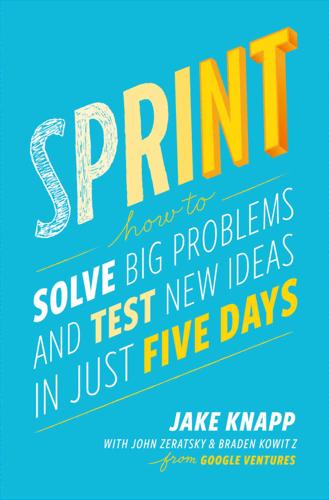
Sprint: How to Solve Big Problems and Test New Ideas in Just Five Days
by
Jake Knapp
,
John Zeratsky
and
Braden Kowitz
Published 8 Mar 2016
We’ve used sprints to assess the viability of new businesses, to make the first version of new mobile apps, to improve products with millions of users, to define marketing strategies, and to design reports for medical tests. Sprints have been run by investment bankers looking for their next strategy, by the team at Google building the self-driving car, and by high school students working on a big math assignment. This book is a DIY guide for running your own sprint to answer your pressing business questions. On Monday, you’ll map out the problem and pick an important place to focus. On Tuesday, you’ll sketch competing solutions on paper.
…
A., 229 feedback, 207 reaction vs., 169–70 finance experts, 34 Fitbit, 171 fitness training, automated, 171–74 FitStar sprint, 171–74, 189, 206 Flatiron Health sprint, 60–64, 76, 85, 88, 100–101, 153, 176, 224 Flickr, 143 focus, sprint process emphasis on, 32 Foundation Medicine sprint, 16, 176–77, 185 FoundationOne, 176 Freeman, James, 21–25, 30, 103 Gebbia, Joe, 210–11 genetic analysis, in cancer treatments, 176 George Mason University, 38 Getting Things Done (Allen), 108–9 Giarusso, Serah, 24, 103 Glitch (video game), 128–29, 143 Gmail, 2, 4 goals, ambitious, 229 goals, long-term, 55–57, 61, 67, 110, 138, 141, 147 dangerous assumptions and, 56–57 in Flatiron Health sprint, 62–63 Goldilocks quality, 170, 207 Gonzalez, Tony, 171–72 Google, 60 experimentation culture of, 1 self-driving car of, 16 Google Earth, 83 Google Forms, 121 Google Hangouts, 3 Google Search, 4 Google Ventures (GV), 4–6, 7, 12, 15, 16, 60, 85, 113, 130, 171, 176, 201, 231 Google X, 4 Grace, Merci, 130, 131, 143–44, 152, 156, 175, 216–17, 221, 222 Graco sprint, 27–28 Green, Bobby, 76, 85, 86 Grijalva, Dave, 171–74 Harry Potter and the Philosopher’s Stone (Rowling), 196, 196n heat map, in deciding process, 131, 132–35 high stakes, as challenge, 26 honesty, in deciding process, 139–40 hotels, guest satisfaction and, 10, 56 Howard, Ron, 53 How Might We notes, 68, 73–82, 110 in Blue Bottle sprint, 73–74 challenges and, 77–78 in Flatiron Health sprint, 76–78 maps and, 81–82 organizing, 79–80 prioritizing, 80–81 target and, 87 HTML, 184 Hurley, Chad, 6 IdeaPaint, 44 IDEO, 73 illusion, 165–66 see also façades Incredibles, The (film), 149 Indian Ocean, 84 industrial companies, sprints and, 27–28 Ingram, Alex, 62, 76 interruptions, productivity and, 38–39 Interviewer, 188, 190, 204–5, 217, 225 tips for, 212–15 interviews, 196–200, 201–15 being a good host in, 212 broken questions in, 214–15 context questions in, 202, 205–6 curiosity mindset in, 215 debriefing in, 202, 209–10 detailed tasks in, 202, 208–9 as emotional roller coaster for sprint team, 197 feedback in, 207 in FitStar sprint, 197, 206 in FitStar test, 208 five-act structure of, 202 ideal number of customers for, 197–99 introducing prototypes in, 202, 206–7 in One Medical sprint, 199–200 open-ended vs. leading questions in, 212–13 power of, 210–11 schedule of, 199 in Slack sprint, 217 team observation of, see interviews, learning from thinking aloud in, 207–8 welcome in, 202, 204–5 “why” questions in, 199–200 interviews, learning from: in Blue Bottle sprint, 223–24 in Flatiron Health sprint, 224 group note-taking in, 219–21 importance of real-time team observation in, 202–4, 218–19 looking for patterns in, 222 in Savioke sprint, 223 in Slack sprint, 220–21, 223 sprint questions and, 222–23 Invite Media, 60 iPads, 171–73, 178, 189 as banned from sprint room, 41 JavaScript, 184 Keynote, 171, 173, 175, 176, 177, 178, 184–85, 186 Knapp, Jake, 24, 27–28, 30, 47, 48, 60, 62, 76, 77, 85, 107n, 109 Kowitz, Braden, 5, 22, 23–24, 30, 43, 60, 76, 156, 216 Kranz, Gene, 53, 55, 85 Lachapelle, Serge, 3 Lancelotta, Mary Pat, 176 Landauer, Thomas K., 198n laptops, as banned from sprint room, 41 Lau, Tessa, 11, 12, 178 lean development, 17 learning, see interviews, learning from Lightning Demos, 96–101, 110 Lord of the Rings, The (Tolkien), 59, 60 Lowe, David, 27 McKinsey & Company, 230 Makers, 187, 188 mapping the problem, 16, 59–67, 110, 230 in Blue Bottle sprint, 23–24, 65, 66 division of labor and, 101–2 experts and, 69–70, 76, 77 in Flatiron Health sprint, 62–63 How Might We notes and, 81–82, 85 in Savioke sprint, 10, 64–65, 66 steps in, 66 as story, 65–66 target and, 84, 85–86 Margolis, Michael, 5, 12, 60, 62, 201–2, 203, 204, 206, 208, 209, 212, 214, 216, 217 Maris, Bill, 4–5 markers, dry-erase, 75 marketing experts, 34 Maser, Mike, 171–73 “Mathematical Model of the Finding of Usability Problems, A” (Nielsen and Landauer), 198n mechanics, of product or service, 70–71 Medium, 6 Medium sprint, 224 Meehan, Bryan, 22 meetings, frustrations of, 127–28, 230 Microsoft Word, 186 Mid-Ocean Ridge, 83–84, 87 “Mind Reader, The” (Blue Bottle solution sketch), 104–6, 115 Mission Control, 53–54, 225 momentum, regaining, 26 Move Loot sprint, 113 movies, façades in, 165–66, 173 My Neighbor Totoro (film), 98 NASA, 54 Nest, 16 Newton, Alice, 195–96 Newton, Nigel, 195–96 New York Times, 15, 130, 152, 153, 188 Nielsen, Jakob, 197–98, 198n no-devices rule, 41, 110 Note-and-Vote, 146–47 note-taking: on interviews, 219–21 sketching and, 109, 110 see also How Might We notes Ocean’s Eleven (film), 29–30, 36, 37, 225 office supplies, for sprint rooms, 45 One Medical Group sprint, 180–82, 185–86, 199 opening scene, 188 OstrichCo, 139–40 paper, for sprint rooms, 44 paper coffee filters, 95–96 patterns, in customer reactions to prototypes, 222 permission, Facilitators and, 89 personal trainers, 171 phones, as banned from sprint room, 41 Photoshop, 184 Pitt, Brad, 29, 36 Pixar, 149 plate tectonics, 84 PlayStation, 178 Porter, Josh, 89 Post-It notes, see sticky notes PowerPoint, 184, 186 previous efforts, see existing solutions priorities, setting, 54–55 “Priority Inbox” project, 2–3 Procter & Gamble, 73 productivity, interruptions and, 38–39 progress, rapid, from sprint process, 31 prototype mindset, 168–69, 230 prototypes, prototyping, 16, 60, 183–90 actors and scripts in, 186 appearance of reality in, 169–70 Asset Collector in, 188 in Blue Bottle sprint, 25, 28, 104–6 Brochure Façades in, 185 Deciders and, 31, 32 deciding on, see deciding as disposable, 169 division of labor in, 183, 187 façades and, see façades Facilitator and, 187 in FitStar sprint, 189 focus on learning from, 169 in Foundation Medicine sprint, 185 Goldilocks quality in, 170 in Graco sprint, 27–28 Interviewer in, 188, 190 Makers in, 187 mindset and, 168–69 in One Medical sprint, 199 picking right tools for, 183–86 in Priority Inbox sprint, 3 Rumbles and, 143–47 in Savioke sprint, 9, 10, 11–12, 185 sketching and, 104–6 in SquidCo sprint, 30–31 Stitcher in, 183, 187, 189 storyboard scenes and, 188, 189–90 trial run in, 183, 189–90 universal application of, 169 using existing objects or spaces in, 186 Writer in, 187–88 questions: in interviews, 212–14 obvious, Facilitators and, 90 questions, finding answers to, 138, 141, 147 in Blue Bottle sprint, 23 in FitStar sprint, 171 in Flatiron Health sprint, 62–63, 88 in Foundation Medicine sprint, 176–77 in Graco sprint, 27–28 and learning from interviews, 222–23 in One Medical sprint, 180 role of sprints in, 15, 16–17, 67 in Savioke sprint, 9, 10, 178 in Slack sprint, 175, 216–17, 222–23 Starting at the End and, 55–58 surface and, 28 see also How Might We notes reaction, feedback vs., 169–70 Relay robot, 7, 14, 56 eyes of, 97–98 guest satisfaction and, 10 guests’ responses to, 13 “personality” of, 11, 13, 71, 178, 179 risk-taking, 156, 166 robot helpers, human interaction with, 8–9, 10 Rogers, Jan, 46–47 Rogers, Loran, 46, 48 rooms, for sprints, 41–45 Rumbles, 143–47, 223 in Blue Bottle sprint, 146 Deciders in, 145, 146 fake brands in, 145–46 Note-and-Vote in, 146–47 single-prototype vs., 145, 147 in Slack sprint, 144, 145 Savioke Labs sprint, 7–15, 26, 33, 64, 66, 71, 119, 145, 153, 157, 178–79, 185, 223 better guest experience as goal of, 56, 84 schedule, clearing space for sprints in, 10, 39, 40–41 screener surveys, in recruiting test customers, 119–21 Scribe, in speed critique, 135–36 Seattle, Wash., 229 Sharpies, 75n simplicity, in maps, 66 sketching, 16, 60, 102, 103–18 abstract ideas and, 106–7 in Blue Bottle sprint, 24, 103–4, 108, 113 Crazy 8s exercise in, 109, 111–13 in Move Loot sprint, 113 prototypes and, 104–6 of rough ideas, 109, 111 solution sketches in, see solution sketches taking notes in, 109, 110 as working alone together, 107–9 Slack sprint, 129–31, 143–44, 149–58, 175, 216, 217, 220–21, 222, 223 expansion into new markets as challenge for, 129–30 Smithsonian Institute, 228 snacks, for sprints, 45 solution sketches, 109, 114–18 anonymity of, 114–15 in Blue Bottle sprint, 116–17 deciding on, see deciding as explanatory, 114 importance of words in, 115 maybe-laters in, 142, 155 single-scene, 114, 117 in Slack sprint, 130 sticky notes and, 114 storyboard format in, 114, 116 titles for, 115 winners in, 141–42 speed critique: in deciding process, 131, 135–37 Scribe in, 135–36 sprints: checklists for, 232–49 clearing calendars for, 10, 39, 40–41 concept of, 3 daily schedule in, 39, 40–41, 90–91 deciding process in, see deciding façades in, see façades as five-day process, 5–6, 9, 16, 40–41 frequently asked questions about, 251–57 learning from, see interviews, learning from no-devices rule in, 41, 110 origin of, 2–5 prototypes in, see prototypes, prototyping questions to be answered in, see questions, finding answers to; tests, real-world risk-taking in, 166 Rumbles in, 143–47 setting priorities in, 54–55 storyboards in, see storyboarding time allocation in, 38–41 timers for, 46–48 uncovering dangerous assumptions through, 56–57 universal application of, 229–30 versatility of, 5–6, 229–30 wide application of, 5–6 working alone together in, 107–9 work rooms for, 41–45 Squarespace, 186 SquidCo sprint, 30–31, 32, 139 Starting at the End, 5, 53–58 in Apollo 13 rescue, 53–54 in Blue Bottle sprint, 55–56, 57 in Flatiron Health sprint, 62–63 long-term goals and, 55–57, 61, 62–63, 67 questions to be answered in, 55–58, 62–63, 67 in Savioke sprint, 56 setting priorities in, 54–55 startups, 231 sprints and, 4–5, 15–16, 27 Starwood, 9 sticky notes: poster-size, 43, 44 solution sketches and, 114 see also How Might We notes Stitcher, 187, 189 storyboarding, 125, 148–58 “artist” for, 151, 154–55, 156 assigning prototyping tasks from, 188, 189–90 in Blue Bottle sprint, 153, 157, 188 competitors’ products in, 154 copywriting in, 155–56 Decider in, 156 detail in, 156 in Flatiron Health sprint, 153 maybe-laters in, 155 opening scene in, 152–53 resisting new ideas in, 155 risk-taking in, 156 in Savioke sprint, 153, 157 in Slack sprint, 149–53, 156 solution sketches as, 114, 116 test-time limits and, 157 story-centered design, 5 strategy, 70 straw polls, 87–88 in deciding process, 131, 138–40 successes, flawed, 223–24 supervotes, 143, 144 in deciding process, 131, 140–42, 143 surface, as contact point between product and customer, 28 target, 82, 83–88 in Blue Bottle sprint, 84–85, 101 Decider and, 31, 32, 85–88 in Flatiron Health sprint, 85–87, 88 How Might We notes and, 87 key customers in, 85–86 key event in, 85–86 maps and, 84, 85–86 in Savioke sprint, 84 straw polls and, 87–88 Tcho, 97 team processes, 1 teams, 29–37, 218 in Blue Bottle sprint, 22–24, 33 challenges and, 68 choosing members of, 33, 34–36 Deciders in, see Deciders division of labor in, 101–2 experts and, see Ask the Experts Facilitators in, see Facilitators ideal size of, 33 interviews observed by, see interviews, learning from in Ocean’s Eleven, 29–30 in Savioke sprint, 9–11, 33 in SquidCo sprint, 30–31 troublemakers in, 35 tech/logistic experts, 34 “Tenacious Tour, The” (Slack solution sketch), 144, 175, 217, 220–21, 222 tests, real-world, 5, 16, 231 in Blue Bottle sprint, 25 competitors’ products in, 154 Deciders and, 31, 32 in FitStar sprint, 173–74 in Graco sprint, 27–28 interview in, see interviews recruiting customers for, 119–23, 197 in Savioke sprint, 10, 11–13, 15 time units in, 157 Tharp, Marie, 83–84 3D printing, 27, 185, 186 tight deadlines, 109 time, allocation of, for sprints, 38–41 timers, in deciding process, 136, 138 Time Timers, 46–48 Tolkien, J.

Predictive Analytics: The Power to Predict Who Will Click, Buy, Lie, or Die
by
Eric Siegel
Published 19 Feb 2013
Colin Farrell’s Department of Justice agent confronts Cruise, and the two brutes stand off, mano a mano. “You ever get any false positives?” accuses Farrell. A false positive, aka false alarm, is when a model incorrectly predicts yes, when the correct answer is no. It says you’re guilty, convicting you of a crime you didn’t (or in this case, won’t) commit. As self-driving cars emerge from Google and BMW and begin to hit the streets, a new cultural acceptance of machine risk will emerge as well. The world will see automobile collision casualty rates decrease overall, and eventually, among waves of ire and protest, learn to accept that on some occasions the computer is to blame for an accidental death.
…
See crime fighting and fraud detection frequency Freud, Sigmund Friedman, Jerome friendships, predicting Fukuman, Audrey Fulcher, Christopher fund-raising, predicting in Furnas, Alexander future, views on human nature and knowing about predictions for 2020 uncertainty of G Galileo generalization paradox Ghani, Rayid Gilbert, Eric Gimpert, Ben Gladwell, Malcolm GlaxoSmithKline (UK) Gmail Goethe, Johann Wolfgang von Goldbloom, Anthony Gondek, David Google ineffective ads, predicting mouse clicks, measuring for predictions privacy policies Schmidt, Eric searches for playing Jeopardy! self-driving cars spam filtering Google Adwords Google Flu Trends Google Glass Google Page Rank government data storage by fraud detection for invoices PA for public access to data GPS data grades, predicting Granger, Clive grant awards, predicting Greenspan, Alan Grockit Groundhog Day (film) Grundhoefer, Michael H hackers, predicting Halder, Gitali HAL (intelligent computer) Hansell, Saul happiness, social effect and Harbor Sweets Harcourt, Bernard Harrah’s Las Vegas Harris, Jeanne Harvard Medical School Harvard University Hastings, Reed healthcare death predictions in health risks, predicting hospital admissions, predicting influenza, predicting medical research, predicting in medical treatments, risks for wrong predictions in medical treatments, testing persuasion in PA for personalized medicine, uplift modeling applications for health insurance companies, PA for Hebrew University Heisenberg, Werner Karl Helle, Eva Helsinki Brain Research Centre Hennessey, Kathleen Heraclitus Heritage Health Prize Heritage Provider Network Hewlett Foundation Hewlett-Packard (HP) employee data used by financial savings and benefits of PA Global Business Services (GBS) quitting and Flight Risks, predicting sales leads, predicting turnover rates at warranty claims and fraud detection High Anxiety (film) HIV progression, predicting HIV treatments, uplift modeling for Hollifield, Stephen Holmes, Sherlock hormone replacement, coronary disease and hospital admissions, predicting Hotmail.com House (TV show) “How Companies Learn Your Secrets” (Duhigg) Howe, Jeff HP.
…
See PA (predictive analytics) Predictive Analytics World (PAW) conferences predictive models defined marketing models overlearning and assuming response modeling response uplift modeling univariate vs. multivariate See also ensemble models predictive models, launching about action and decision making causality and deployment phase Elder’s success in going live machine learning and building observation and personalization and risks in uplift modeling predictive technology See also machine learning predictor variables pregnancy and birth, predicting customer pregnancy and buying behavior premature births prejudice, risk of PREMIER Bankcard privacy Google policies on insight vs. intrusion regarding predicted consumer data and profiling customers Progressive Insurance psychology emotions, cause and effect of Freud on emotions predictive analysis in schizophrenia, predicting psychopathy, predicting Psych (TV show) purchases, predicting Q Quadstone R Radcliffe, Nicholas Radica Games Ralph’s random forests Rebellion Research recency recidivism prediction for law enforcement recommendation systems Reed Elsevier reliability modeling REO Speedwagon (band) response modeling drawbacks of examples of targeted marketing with response rates response uplift modeling retail websites, behavior on retirement, health and Richmond (VA) Police Department Rio Salado Community College Riskprediction.org.uk risk management risk scores Risky Business (film) Robin, Leo Romney, Mitt Royal Astronomy Society R software Russell, Bertrand Rutter, Brad S Saaf, Randy safety and efficiency, PA for Safeway sales leads, predicting Salford Systems Salsburg, David Santa Cruz (CA) Police Department sarcasm, in reviews Sartre, Jean-Paul SAS satellites, predicting fault in satisficing Schamberg, Lisa schizophrenia, predicting Schlitz, Don Schmidt, Eric Schwartz, Ari Science magazine security levels, predicting self-driving cars Selfridge, Oliver Semisonic (band) sepsis, predicting Sessions, Roger Shakespeare, William Shaw, George Bernard Shearer, Colin shopping habits, predicting sickness, predicting Siegel, Eric silence, concept of Silver, Nate Simpsons, The (TV show) Siri Sisters of Mercy Health Systems small business credit risks Smarr, Larry smoking and smokers health problems and causation for motion disorders and social effect and quitting SNTMNT Sobel, David social computing social effect social media networks data glut on happiness as contagious on healthcare LinkedIn PA for spam filtering on Twitter viral tweets and posts on YouTube See also Facebook sociology, uplift modeling applications for SpaceShipOne spam filtering Spider-Man (film) sporting events, crime rates and sports cars Sprint SPSS staff behavior.
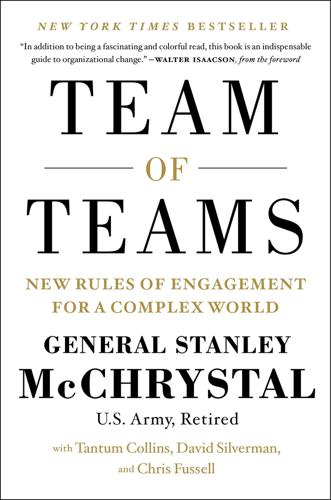
Team of Teams: New Rules of Engagement for a Complex World
by
General Stanley McChrystal
,
Tantum Collins
,
David Silverman
and
Chris Fussell
Published 11 May 2015
UT professor Peter Stone, one of the leaders of the project, notes that 25 percent of accidents and 33 percent of the thirty-three thousand auto deaths each year in America occur at intersections, and 95 percent are attributable to “human error.” Early trials suggest that self-driving cars could save ten thousand deaths a year while making commutes faster and more comfortable. But for all the statistics and trials, the UT simulation still doesn’t look right. A computer simulation on how intersections could change in the future due to the innovation of self-driving cars. It looks unnatural because we have a strongly ingrained idea of how traffic should look, and it is governed by a mechanical rhythm of stops, starts, and turns.
…
Human interaction—not just in the context of management—is changing tremendously. The University of Texas at Austin computer simulation on the future of automotive traffic provides a perfect reflection of these shifts. The program illustrates how a four-way intersection might look in an urban landscape dominated by self-driving cars communicating in real time. And watching it somehow just feels wrong. The intersection is huge—a ten-lane highway crossing over another ten-lane highway—but there are no traffic lights, no stop signs, and seemingly no sense of order. Vehicles don’t queue up based on direction of travel to wait their turn before migrating to the other side en masse.

The Smart Wife: Why Siri, Alexa, and Other Smart Home Devices Need a Feminist Reboot
by
Yolande Strengers
and
Jenny Kennedy
Published 14 Apr 2020
,” PLoS ONE 13, no. 7 (2018): e0201581. 59. Jennifer Rhee, The Robotic Imaginary: The Human and the Price of Dehumanized Labor (Minneapolis: University of Minnesota Press, 2018). 60. Julia Carrie Wong, “Rage against the Machine: Self-Driving Cars Attacked by Angry Californians,” Guardian, March 6, 2018, https://www.theguardian.com/technology/2018/mar/06/california-self-driving-cars-attacked. 61. “Rage against the Machine,” Sydney Morning Herald, July 26, 2003, https://www.smh.com.au/technology/rage-against-the-machine-20030726-gdh5sc.html. 62. Stanley Milgram, “Behavioral Study of Obedience,” Journal of Abnormal and Social Psychology 67, no. 4 (October 1963): 371–378; Christoph Bartneck and Jun Hu, “Exploring the Abuse of Robots,” Interaction Studies 9, no. 3 (2008): 415–433. 63.
…
For those not familiar with this cult manga and anime series originating in the 1950s (the decade responsible for much of the smart wife’s prototyping), Astro Boy is a powerful “roboy” created by the head of the Ministry of Science, Dr. Tenma, to replace his son Tobio (or Toby), who died in a self-driving car accident. Tenma ultimately rejects Astro Boy, realizing that he could never replace his son. After a cruel beginning, Astro Boy is adopted by another man and the new head of the Ministry of Science, Professor Ochanomizu, who realizes Astro Boy’s amazing powers, skills, and ability to experience human emotions.

Hands-On Machine Learning With Scikit-Learn and TensorFlow: Concepts, Tools, and Techniques to Build Intelligent Systems
by
Aurélien Géron
Published 13 Mar 2017
Convolutional neural networks (CNNs) emerged from the study of the brain’s visual cortex, and they have been used in image recognition since the 1980s. In the last few years, thanks to the increase in computational power, the amount of available training data, and the tricks presented in Chapter 11 for training deep nets, CNNs have managed to achieve superhuman performance on some complex visual tasks. They power image search services, self-driving cars, automatic video classification systems, and more. Moreover, CNNs are not restricted to visual perception: they are also successful at other tasks, such as voice recognition or natural language processing (NLP); however, we will focus on visual applications for now. In this chapter we will present where CNNs came from, what their building blocks look like, and how to implement them using TensorFlow.
…
In this chapter we will first explain what Reinforcement Learning is and what it is good at, and then we will present two of the most important techniques in deep Reinforcement Learning: policy gradients and deep Q-networks (DQN), including a discussion of Markov decision processes (MDP). We will use these techniques to train a model to balance a pole on a moving cart, and another to play Atari games. The same techniques can be used for a wide variety of tasks, from walking robots to self-driving cars. Learning to Optimize Rewards In Reinforcement Learning, a software agent makes observations and takes actions within an environment, and in return it receives rewards. Its objective is to learn to act in a way that will maximize its expected long-term rewards. If you don’t mind a bit of anthropomorphism, you can think of positive rewards as pleasure, and negative rewards as pain (the term “reward” is a bit misleading in this case).
…
Pac-Man, (c) Go player, (d) thermostat, (e) automatic trader5 Note that there may not be any positive rewards at all; for example, the agent may move around in a maze, getting a negative reward at every time step, so it better find the exit as quickly as possible! There are many other examples of tasks where Reinforcement Learning is well suited, such as self-driving cars, placing ads on a web page, or controlling where an image classification system should focus its attention. Policy Search The algorithm used by the software agent to determine its actions is called its policy. For example, the policy could be a neural network taking observations as inputs and outputting the action to take (see Figure 16-2).
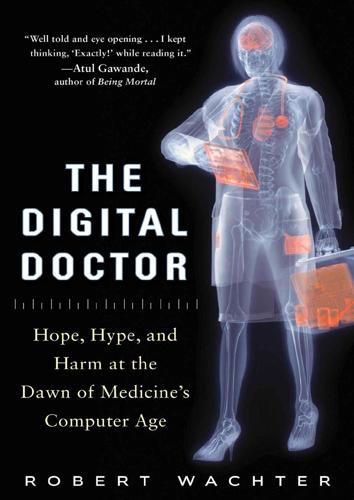
The Digital Doctor: Hope, Hype, and Harm at the Dawn of Medicine’s Computer Age
by
Robert Wachter
Published 7 Apr 2015
McAfee, The Second Machine Age: Work, Progress, and Prosperity in a Time of Brilliant Technologies (New York: W. W. Norton, 2014). While the car is an astounding achievement, there still are a few things it cannot do, described in R. Sorokanich, “Six Simple Things Google’s Self-Driving Car Still Can’t Handle,” August 30, 2014, available at http://gizmodo.com/6-simplethings-googles-self-driving-car-still-cant-han-1628040470. 94 “Executing a left turn across oncoming traffic” F. Levy and R. J. Murnane, The New Division of Labor: How Computers Are Creating the Next Job Market (Princeton, NJ: Princeton University Press, 2004). 94 “Just as factory jobs were eliminated” The story of Watson’s defeat of the Jeopardy champions is described in S.
…
The juice bar is a busy congregational space, as are the small glasswalled rectangular conference rooms, in which one twentysomething, seated on a couch, is listening to another map out a company’s can’t-miss strategy on a dry-erase board. If one half expects to see a horse-drawn carriage from the window of David Blumenthal’s Fifth Avenue office in Manhattan, one half expects to see a self-driving car outside the offices of these Silicon Valley start-ups. The sense of limitless possibilities is palpable when you enter this world, but the hype can border on the farcical. In the “Health 2.0” office near San Francisco’s CalTrain station, a London-born healthcare impresario named Matthew Holt and his staff spend their days analyzing healthcare IT start-ups for a series of publications and conferences that they produce.

Faster, Higher, Farther: How One of the World's Largest Automakers Committed a Massive and Stunning Fraud
by
Jack Ewing
Published 22 May 2017
Winterkorn alluded to the Silicon Valley companies that were beginning to take an interest in the car business—a reference to Google, which was devoting some of its huge financial resources to develop cars that could drive themselves, and to Apple, said to have assembled a large team to design an electric car. Volkswagen, too, would develop self-driving cars, he said, and they would be “not just for the upper class, but for everyone.” What’s more, all Volkswagen Group vehicles would soon be smartphones on wheels. (The statement made at least a few well-informed listeners chuckle. A few days earlier, Müller, the Porsche chief executive, had told an auto magazine that his vehicles would not be smartphones on wheels.)
…
Dozens of workers in their white uniforms crowded around the black sedan for a last group photo. While probably no one but Ferdinand Piëch would rue the unpopular luxury Volkswagen, the cuts came as the auto industry faced new competition from Silicon Valley. Apple was rumored to be working on its own car project. Google was investing massively in self-driving cars. At auto shows, the talk was of a move to battery power. Though the number of electric cars on the roads was still tiny, executives worried that a shift away from internal combustion engines to batteries would make them vulnerable to new competitors, perhaps from China. Volkswagen would have less money to respond to all these changes.
…
District Court, San Francisco Schmidt, Oliver admissions about defeat device, 199 arrest of, 268 conference call with CARB, 182 indictment of, 269 obfuscations about defeat device, 196–97 on regulators’ queries, 179 testimony before European regulators, 231–32 Schneiderman, Eric T., 229 Schröder, Gerhard, 95, 101, 163 Schuster, Helmuth, 102–4, 106 SCR (selective catalytic reduction) systems; See also BlueMotion emissions technology; BlueTec emissions technology Audi’s undermining of, 127 and CARB tests, 173, 176, 177 and defeat device, 227, 246 and EA 288 engine, 180 falling price of, 209 ICCT test, 167 and urea tank, 167 SEAT, 97, 158 self-driving cars, 204, 222 self-expression, cars as form of, 146 sex scandal, 102–7 shared platform, See platform strategy shareholders, VW, 26, 58–59, 244 share prices declines (2015), 189 declines (early 2000s), 130–31 following EPA charges against VW, 212 under Pischetsrieder, 110 Porsche, 96 Porsche-VW takeover battle, 138–40 short-selling, 138–41 short squeeze, 139–40, 142 Siemens bribery scandal, 257–58 Silicon Valley, 222 Skoda, 6, 48, 102–4, 158 Skoda Octavia, 53 slave labor, 12–14 smog, NOx and, 2, 160, 168–69 Snap-On, 70 Social Democratic Party, 26, 49, 164 software, 120, 226–28; See also defeat device software updates, 182–84, 224, 244 soot particles, 43–44, 115, 159 Sorrell, William, 248 South Korea, 245 sovereign wealth funds, 143 Soviet Union, 17 special settlement master, 233 Speer, Albert, 17 sport utility vehicles (SUVs), 94–96 Stadler, Rupert, 257, 272, 273 Stalin, Joseph, 6 Standard & Poor’s, 219 “Statement of Facts,” 269 Steiner, Rudolf, 129 Steinkühler, Franz, 49 stock market, 96 stock options, 133, 136, 137 Strategy 2018, 150–51, 188 stretch goals, 151 Stumpf, John, 262 subprime mortgage crisis, 136 Sudetenland, 6 Sullivan & Cromwell, 229–30, 235 Super Bowl, 145 supervisory board (Audi), 45–46 supervisory board (VW) executive committee awareness of emissions problem, 271 failure to sanction managers for emissions cheating, 256–57 and internal investigation, 216 Piëch as member after retirement, 97, 157 Piëch’s attempt to oust Winterkorn, 187 Piëch’s elevation to VW CEO, 49 Porsche-Piëch family’s influence on, 264 Porsche’s attempted VW acquisition, 135–36 Porsche’s position on VW board, 133 VW’s acquisition of Porsche, 143–44 worker participation in, 57 supply chain, as VW weakness, 50–51 synthetic shares, 137 Tatra, 9 tax credits, 147 TDI (turbocharged direct injection), 44–45, 55, 116, 128, 146, 181 “Think Small” ad campaign, 34–35 Thiruvengadam, Arvind, 1, 167, 169, 171, 172 Thomas, Sven, 239 Thompson, Greg, 79–80, 166, 167, 172, 174 three-liter diesel engine and “acoustic function,” 123, 128, 246 defeat device in, 152, 158 EPA/CARB questions about, 183–84 EPA’s second notice of violation, 217 exclusion from first US settlement, 238 notice of violation for cars with, 217 SCR technology, 180 settlement for US and Canada, 266 US charges against designer of, 246–47 Tiercelet, France, iron mine, 15 Tiger Tank, 10–11 Time magazine, 265 Tolischus, Otto D., 9 Toyota as competitor in early 1990s, 50–51 EA 189 engine as part of VW’s strategy against, 107 European market share, 161 former employees at Porsche, 52 hybrid technology, 2–3, 116, 146; See also Toyota Prius surpassed by VW as world’s largest carmaker, 187–88, 206 VW’s efficiency gap with, 50–51, 58, 94, 110, 188, 219 VW’s sales competition with, 156 Toyota Prius, 107, 116, 146, 207, 208 Transport Select Committee, House of Commons, 231 truck engine emissions cheating scandal, 72–74, 76, 78, 125, 163 trust fund, 236 Tuch, Frank, 223 turbochargers, 44 Type 166 Schwimmwagen, 10 Umweltbundesamt, 162–64 unemployment benefits, 101 unemployment rate, German, 101, 102 United States Audi defeat device revelations, 267–68 Clean Air Act Amendments (1990), 67 EA 189 as key to VW market in, 116–17, 119 EA 189 development, 107–8, 119–20 environmental rule enforcement, 165 fleet average fuel economy milestones, 131 legal ramifications of emissions violations, 225–31 NOx regulations, 165 penalties for emissions violations, 122, 155, 156, 163 state lawsuits, 245–47 TDI Club, 45 truck engine defeat device scandal, 163 VW plant in, 148–49 VW sales (early 1970s), 36 VW sales (early 1990s), 47 VW sales (late 1990s), 55 VW sales (2014), 206 VW sales after cheating revelations, 217–18 VW’s “clean diesel” campaign, 145–58 VW’s declining fortunes in early 1990s, 47, 48, 50 VW’s early success in, 34–35 VW’s missteps in, 115–16 VW’s responsibility for diesel pollution, 253 and Winterkorn’s sales ambitions for VW, 112–13 unit injector (Pumpe Düse), 116–17 University of Virginia Center for Alternative Fuels, Engines, and Emissions, See Center for Alternative Fuels, Engines, and Emissions (CAFEE) urea solution, 177, 180–81, 192; See also BlueTec emissions technology urea tank, 113, 127–28, 152–53, 183 U.S.
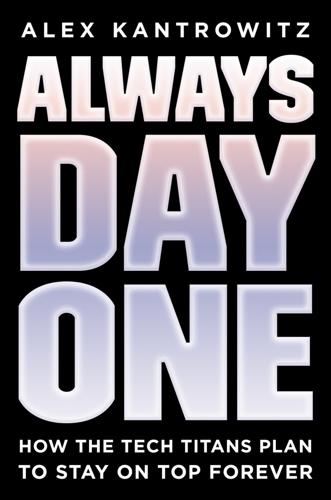
Always Day One: How the Tech Titans Plan to Stay on Top Forever
by
Alex Kantrowitz
Published 6 Apr 2020
When you build an autonomous driving vehicle, the software inside is much more important than how the car looks, similar to a smart speaker. But design frustrated its engineers by issuing burdensome top-down edicts instead of listening to what would be best for the project. Design, for instance, tried to hide the car’s sensors, ugly appendages that make your typical self-driving car look like a rolling submarine. But by burying them, design obstructed the sensors’ view, limiting the data they could collect and forcing the engineers into suboptimal workarounds. Design also put its hands on the wheel. After assigning groups to work on the design of the car with and without a steering wheel, design removed the wheel completely, creating further technical challenges for the team now tasked with building for full autonomy.
…
When Linda arrives at the office, she’s approached by a consultant who tells her she’s going to wear a recording device at all times. The company has already automated her entire department, so she understands what’s coming. One month later, after the device has fully recorded her work, Linda’s self-driving car plunges into a lake. Dealing with the loss, her family sits down to review the recording device’s footage, and they’re struck by what they see. Linda’s husband, who’s questioned her intelligence, watches her brilliant, creative performance at work—the reason she was hard to automate—and becomes emotional.

Whistleblower: My Journey to Silicon Valley and Fight for Justice at Uber
by
Susan Fowler
Published 18 Feb 2020
It was clear that Kalanick wanted to send a message: he was taking this seriously—so seriously that anyone involved in what had happened, anyone responsible for the story that was now being repeated by every major news outlet across the globe, would be fired. Three days later, The New York Times published its own damning account of Uber’s culture. The day after that, Waymo, a subsidiary of Google that was developing self-driving cars, sued Uber for patent infringement and trade secret theft. Less than a week later, a video leaked of Travis Kalanick berating an Uber driver. And that was only the beginning. By the time I found myself across the table from President Obama’s attorney general, the public consensus was that something was very wrong with Uber, but nobody was quite sure of the extent of the problem or who should be held responsible for it.
…
In the wake of this report, two of Uber’s earliest investors—Mitch Kapor and Freada Kapor Klein—penned an open letter to Uber’s board and investors that was picked up by multiple media outlets; in the letter, they said that they had known about Uber’s culture for a long time and had been trying to quietly change it from the inside. Waymo, a Google subsidiary that was developing self-driving cars, sued Uber for patent infringement and trade secret theft, and a video leaked of Travis Kalanick berating an Uber driver. There was something validating about all the stories that were finally coming out about problems at Uber, because they proved to the world that my mistreatment and the mistreatment of my colleagues weren’t isolated incidents and that, as I knew all too well, Uber’s mistreatment of employees and egregious corporate behavior weren’t limited to sexual harassment.

Radical Technologies: The Design of Everyday Life
by
Adam Greenfield
Published 29 May 2017
Bush,” New York Times, October 17, 2004. 73.Alex Tabarrok, “The Rise of Opaque Intelligence,” Marginal Revolution, February 20, 2015. 74.Travis Mannon, “Facebook Outreach Tool Ignores Black Lives Matter,” Intercept, June 9, 2016. 75.This is easier to do than it is to explain. See rednuht.org/genetic_cars_2/. 76.August C. Bourré, Comment, Speedbird blog, May 28, 2014, speedbird.wordpress.com/2014/05/28/weighing-the-pros-and-cons-of-driverless-cars/#comment-23389. 77.David Z. Morris, “Trains and Self-Driving Cars, Headed for a (Political) Collision,” Fortune, November 2, 2014. 9Artificial intelligence 1.Jeff Hawkins, keynote speech, “Why Can’t a Computer Be More Like a Brain? How a New Theory of Neocortex Will Lead to Truly Intelligent Machines,” O’Reilly Emerging Technology Conference 2007, San Diego, CA, March 27, 2007. 2.The Next Rembrandt project, nextrembrandt.com. 3.David Silver et al., “Mastering the Game of Go with Deep Neural Networks and Tree Search,” Nature, Volume 529, Issue 7587, pp. 484–9, January 28, 2016. 4.Younggil An and David Ormerod, Relentless: Lee Sedol vs Gu Li, Go Game Guru, 2016. 5.Nature Video, “The Computer That Mastered Go,” January 27, 2016, YouTube.com. 6.Ormerod, David.
…
“Alphago Shows Its True Strength in 3rd Victory Against Lee Sedol,” Go Game Guru, March 12, 2016, gogameguru.com. 7.Yaskawa Electric Corporation, “YASKAWA BUSHIDO PROJECT: Industrial Robot vs Sword Master,” June 4, 2015, YouTube.com. 8.See Machii’s official website at http://nihontou.jp/syuushinryuu/intro.htm. 9.Cade Metz, “The Sadness and Beauty of Watching Google’s AI Play Go,” Wired, March 11, 2016. 10.Jo Liss, tweet, December 8, 2015, twitter.com/jo_liss/status/674332649226436613 11.Hector J. Levesque, Ernest Davis and Leora Morgenstern, “The Winograd Schema Challenge,” Proceedings of the Thirteenth International Conference on Principles of Knowledge Representation and Reasoning, 2012, aaai.org/ocs/index.php/KR/KR12/paper/download/4492/4924. 12.Cara McGoogan, “Uber’s Self-Driving Cars Labelled ‘Not Ready for Streets’ After They Are Found to Cut Across Cycle Lanes,” Telegraph, December 20, 2016. 13.Timothy A. Salthouse, “When Does Age-Related Cognitive Decline Begin?,” Neurobiology of Aging, April 2009, Volume 30, Issue 4, pp. 507–14. 10Radical technologies 1.Bruce Sterling and Jon Lebkowsky, “Topic 487: State of the World 2016,” The WELL, January 3, 2016, well.com. 2.Mark Bergen, “Nest CEO Tony Fadell Went to Google’s All-Hands Meeting to Defend Nest.
…
,” Neurobiology of Aging, April 2009, Volume 30, Issue 4, pp. 507–14. 10Radical technologies 1.Bruce Sterling and Jon Lebkowsky, “Topic 487: State of the World 2016,” The WELL, January 3, 2016, well.com. 2.Mark Bergen, “Nest CEO Tony Fadell Went to Google’s All-Hands Meeting to Defend Nest. Here’s What He Said,” Recode, April 13, 2016. f 3.Brad Stone and Jack Clark, “Google Puts Boston Dynamics Up for Sale in Robotics Retreat,” Bloomberg Technology, March 17, 2016. 4.John Markoff, “Latest to Quit Google’s Self-Driving Car Unit: Top Roboticist,” New York Times, August 5, 2016. 5.Mark Harris, “Secretive Alphabet Division Funded by Google Aims to Fix Public Transit in US,” Guardian, June 27, 2016. 6.Siimon Reynolds, “Why Google Glass Failed: A Marketing Lesson,” Forbes, February 5, 2015. 7.Rajat Agrawal, “Why India Rejected Facebook’s ‘Free’ Version of the Internet,” Mashable, February 9, 2016. 8.Mark Zuckerberg, “The technology behind Aquila,” Facebook, July 21, 2016, facebook.com/notes/mark-zuckerberg/the-technology-behind-aquila/10153916136506634/. 9.Mari Saito, “Exclusive: Amazon Expanding Deliveries by Its ‘On-Demand’ Drivers,” Reuters, February 8, 2016. 10.Alan Boyle, “First Amazon Prime Airplane Debuts in Seattle After Secret Night Flight,” GeekWire, August 4, 2016. 11.Farhad Manjoo, “Think Amazon’s Drone Delivery Idea Is a Gimmick?

How to Build a Billion Dollar App: Discover the Secrets of the Most Successful Entrepreneurs of Our Time
by
George Berkowski
Published 3 Sep 2014
Chapter 37: People at a Billion-Dollar Scale 1 Victoria Baret, ‘How the Kids at Box Are Disrupting Software’s Most Lucrative Game’, Forbes, 4 March 2013 issue, www.forbes.com/sites/victoriabarret/2013/02/13/box-aaron-levie-mobile-enterprise-software/. 2 Eric Savitz, ‘SurveyMonkey To Raise $794M In Recap; Valuation $1.35 Billion (Updated)’, article on Forbes.com, 17 January 2013, www.forbes.com/sites/ericsavitz/2013/01/17/surveymonkey-to-raise-794min-recap-valuation-1-35-billion/. 3 ‘How Dave Goldberg of SurveyMonkey Built a Billion-Dollar Business and Still Gets Home by 5.30 p.m.’, article and video interview on FirstRound.com, firstround.com/article/how-dave-goldberg-of-surveymonkey-built-a-billion-dollar-business-and-still-gets-home-by-5-30. 4 Ibid. 5 Mike Rose, ‘Supercell’s Secret Sauce’, article on Gamasutra.com, 7 December 2012, www.gamasutra.com/view/feature/183064/supercells_secret_sauce.php. 6 Ibid. 7 Alyson Shontell and Andrea Huspeni, ‘15 Incredible Employee Perks That Will Make You Wish You Worked at a Startup’, article on BusinessInsider.com, 31 May 2012, www.BusinessInsider.com/killer-startup-perks-2012-5. 8 Heather Leonard, ‘Facebook Generates Over $1 Million in Revenue Per Employee’, article on BusinessInsider.com, 19 March 2013, www.BusinessInsider.com/facebook-has-high-revenue-per-employee-2013-3. 9 Megan Rose Dickey, ‘“Clash of Clans” Maker Had a Monster Year in 2013: Revenue Increased Nearly Ninefold’, article on BusinessInsider.com, 12 February 2014, www.BusinessInsider.com/gaming-startup-supercell-2013-revenue-2014-2. 10 Steven Levy, ‘Google’s Larry Page on Why Moon Shots Matter’, article on Wired.com, 17 January 2013, www.wired.com/business/2013/01/ff-qa-larry-page/all/. 11 Peter Murray, ‘Google’s Self-Driving Car Passes 300,000 Miles’, article on Forbes.com, 15 August 2012, www.forbes.com/sites/singularity/2012/08/15/googles-self-driving-car-passes-300000-miles/. 12 For more information about Project Loon, visit www.google.com/loon/. 13 ‘Google X’, entry on Wikipedia, en.wikipedia.org/wiki/Google_X. Chapter 38: Advice from Billion-Dollar CEOs 1 Will Oremus, ‘Google’s Big Break’, article on Slate.com, 13 October 2013, www.slate.com/articles/business/when_big_businesses_were_small/2013/10/google_s_big_break_how_bill_gross_goto_com_inspired_the_adwords_business.html. 2 Ibid. 3 ‘Drew Houston’s Morph from Hacker to Hyper-Growth CEO’, article on FirstRound.com, www.firstround.com/article/Drew-Houstons-morph-from-hacker-to-hyper-growth-CEO. 4 Peter Kafka, ‘Larry Page on Speed: “There are no companies that have good slow decisions”’, article on AllThingsD.com, 27 September 2011, allthingsd.com/20110927/larry-page-on-speed-there-are-no-companies-that-have-good-slow-decisions/. 5 Glen Cathey, ‘LinkedIn Traffic Statistics and User Demographics 2013’, article on BooleanBlackBelt.com, 24 July 2013, booleanblackbelt.com/2013/07/linkedin-traffic-statistics-and-user-demographics-2013/. 6 Juhana Hietala, ‘Rovio Mobile Company Presentation – Dynamic World of Mobile Game Business’, 1 April 2005, www.soberit.hut.fi/T-76.640/Slides/T-76.640_Rovio2005_04_01HUT.pdf. 7 ‘The 30 Best Pieces of Advice for Entrepreneurs’, article on FirstRound.com, firstround.com/article/30-Best-Pieces#ixzz2pRF5EZ8a. 8 Ibid. 9 ‘Drew Houston’s Morph from Hacker to Hyper-Growth CEO’, op. cit. 10 Ibid. 11 ‘The 30 Best Pieces of Advice for Entrepreneurs’, op. cit. 12 Ibid. 13 Eric Savitz, ‘Jack Dorsey: Leadership Secrets of Twitter and Square’, article for Forbes, 5 November 2012 issue, www.forbes.com/sites/ericsavitz/2012/10/17/jack-dorsey-the-leadership-secrets-of-twitter-and-square/. 14 ‘The 30 Best Pieces of Advice for Entrepreneurs’, op. cit.
…
Companies that don’t have robust business models will not be able to invest in these kinds of activities, which will make it increasingly harder for them to retain the best people, who in turn, once salary is taken care of, will be looking for a job with meaning. And that comes from a company that has a culture of pure innovation and solving meaningful problems. Google X is the division of Google that is home to the company’s moonshots. Since 2010 it has delivered a variety of seemingly impossible fantasies, such as the self-driving car (which has travelled over 500,000 km without a single accident11), Google Glass (a wearable computer with an optical head-mounted display), Project Loon (which provides rural Internet connectivity via high-altitude autonomous balloons12) and more than 100 other projects.13 So, when you think about the future of your app, it’s important to think about how big your ambition and vision are – and how you are going to take people on that journey.
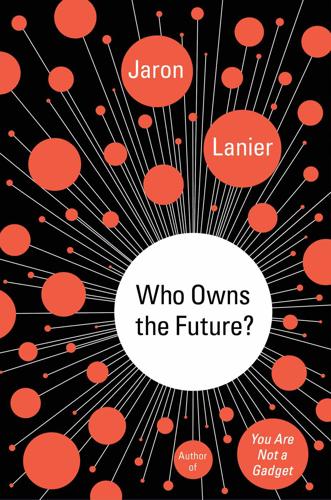
Who Owns the Future?
by
Jaron Lanier
Published 6 May 2013
We kill each other in car accidents so frequently that the toll has become a more deadly problem than wars or terrorism. It’s one of our biggest sources of death and pain. A team of Google and Stanford researchers has famously demonstrated cars that are quite effective at driving themselves. (They are not alone; similar developments are occurring around the world.) The motivations for developing self-driving cars are so extraordinarily powerful that it’s hard to imagine stronger ones. Results from experiments thus far indicate that it is unlikely robots will ever drive as badly as people. My mother died in a car accident. What could be more compelling? But there’s more. Stoplights would generally go away.
…
However, the chosen route might be peculiar. Maybe the taxi lingers in front of billboards along the way, or forces you to a particular convenience store if you need to pick up something, or whatever scam would come about in a Siren Server–driven car. But one thing we can guess even at this early date is that self-driving cars will depend on cloud data about streets, pedestrians, and everything else that can affect a trip. That information will be renewed constantly, with every single ride. Will the rider be compensated beyond a free ride for helping to generate this information? To do otherwise would be considered accounting fraud in a humanistic information economy.
…
The age of silver bullets seems to have retired around the time networking got good and data became big. And yet, the future hasn’t vanished completely. My daughter, who turned six as I finished this book, asks me: “Will I learn to drive, or will cars drive themselves?” In ten years, I imagine, self-driving cars will be familiar, but probably not yet ubiquitous. But it’s at least possible that learning to drive will start to feel anachronistic to my daughter and her friends, instead of a beckoning rite of passage. Driving for her might be like writing in longhand. Will she ever wear the same dress twice as an adult?
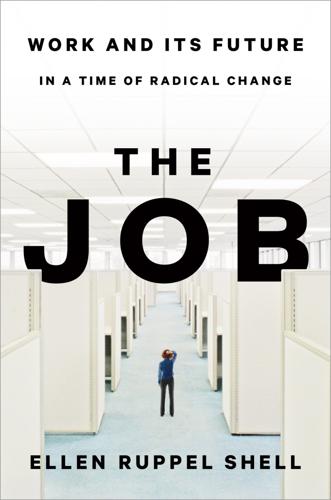
The Job: The Future of Work in the Modern Era
by
Ellen Ruppel Shell
Published 22 Oct 2018
People have always shifted away from work better done by machines, but the economic principle of “comparative advantage” predicts that humans will maintain an edge in fields where they are the least disadvantaged. Under this logic, technology will not displace us but set us free to do less dangerous, more challenging things, essentially the very things that make humans human. For example, in 2016, the National Highway Traffic Safety Administration officially recognized “software” as a driver of self-driving cars, thereby putting the nation’s 4.1 million paid motor-vehicle operators—drivers of taxis, trucks, buses, and Uber—on notice. But under the rubric of competitive advantage, this will not simply unemploy people but free them to fill new roles—for example, to invent new sorts of engines or design new sorts of fenders or tackle other challenges better suited to uniquely human capabilities.
…
Robots, she said, would soon weave themselves into the fabric of everyday life and become “indistinguishable” from that fabric. As an example, she cited a robot maid “waking up” in the morning, sensing its owner’s desire for coffee or orange juice, and—noting that there was none at hand—jumping into a self-driving car to the grocery store, where it would be waited on by other robots. Humans who desired to get their own coffee or juice could of course do so, Rus said, but that seemed unlikely, because robots—not other people—would man the store, allowing little opportunity for human interaction, and therefore little incentive to endure the inconvenience.
…
The company invests in such a broad array of endeavors that even its employees have difficulty keeping track: a browser called Chrome, a smartphone operating system called Android, a suite of cloud computing platforms called Google Cloud Platform, a video-sharing platform called YouTube, and online services that include Google Maps, Gmail, and Google Docs. Alphabet, Google’s parent company, is a force in the self-driving car realm, and its investment arm, GV, has a piece of more than three hundred other companies, including Uber. All this is mind-bogglingly impressive, but incomplete, as it neglects the segment of Google business that generates the vast bulk of its revenue stream. Roughly 90 percent of Google’s revenue comes from advertising, more than three-quarters of it plastered across the company’s own websites.

Gambling Man
by
Lionel Barber
Published 3 Oct 2024
Seven years later, Uniqlo’s Tadashi Yanai remembers his first reaction to news that Masa was considering stepping down in favour of Nikesh Arora. ‘Retirement, isn’t that a joke?’15 23. Smash and Grab In 2015, the world’s top technology investors, including Masayoshi Son, were gushing about digital genetic coding, self-driving cars, next-generation robotics and something called ‘the internet of things’. This was the fancy term to describe a new high-tech ecosystem where billions of smart devices would talk to each other, transforming every sector of the economy. In this brave new digital age, Masa had long spotted one clear winner: ARM Holdings, based in Cambridge, England.
…
Today SoftBank’s portfolio includes China’s ride-hailing Didi and internet giant ByteDance; food-delivery services like DoorDash and Grab; as well as automated robotic warehouses like Symbotic. These were the ‘first wave’ of AI-related companies with ‘baby’ applications. In 2024 Masa invested in next-generation AI companies such as the US medical data firm Tempus and the UK self-driving car technology start-up Wayve. The emergence of ChatGPT, according to Masa, has changed everything. So-called generative AI points to a future he has long predicted: the moment when machines think faster, learn faster and react faster than humans. ‘It’s like the Cambrian Explosion,’ he says, referring to the proliferation of complex animal species which began life on earth more than 500 million years ago.
…
Ive, Jony, 335 Jain, Anshu, 183, 184 Japan: American occupation (1945-51), 12, 17; Black Ships (kurofune) (1853), 116–17; Communist party, 13; corruption scandals at millennium, 155; culture of perfection, 6; in early post-war years, 12–14, 15–17, 178; earthquake (11 March 2011), 213–22, 223; Great Kanto Earthquake (1923), 10; high demands on quality, 65; Hiroshima and Nagasaki atomic bombs, 12; imperial expansion from 1900s, 9, 11; Kobe Earthquake (1995), 137; Masa returns to (March 1980), 47; Meiji Restoration (1868), 2, 3, 68, 116–17; myth of postwar unity/homogeneity, 17, 28–9; nuclear power in, 213–22; overthrow of Ashikaga shogunate (1573), 208; parenting tradition in, 20; personal computer revolution in, 49, 51, 53–4; real estate bubble (late 1980s), 1; relations with Communist China, 175–6; Renewable Energy Bill (2011), 219–20; resistance to change in, 48, 83–4; and Second World War, 11–12, 17, 34, 73; sensitivity to long-term purpose, 146–7, 202; tea ceremony, 206–7; technological miniaturization in, 48–9; ‘warring states’ period, 162–3 see also Japanese economy; Korean migrants to Japan (zainichi); Kyushu, island of; Tokyo; Tosu Japan Patrol Security (Secom), 64, 65 Japan Post, 155, 156, 288 Japan Research Institute, 52 Japan Telecom, 166, 171–4, 182 Japanese Association of Finance Company (JAFCO), 84 Japanese economy: Anglo-Saxon style deregulation in, 69; bubble bursts (1989), 1, 82–3, 124, 136–7; Confucian capitalists, 119; consumer electronics industry, 34, 35, 43–5, 48–9, 65–7, 89–90; ‘copy and compete’ model, 90; corporate scandals in 1990s, 124; cultural barriers to US market entry, 73, 89–90; economic miracle, 21, 48, 178; exclusion of ethnic Koreans, 10, 14, 15–19, 21–3; failure to develop US-style start-up culture, 83–4; fiscal stimulus policies in late 1980s, 70, 80–81; impact of Plaza Accord (1985), 69–70, 80; and imperial expansion, 11; industrialization, 9, 21; just-in-time manufacturing model, 48; Keidanren (business federation), 220–21; ‘Lost Decade’ (1990s), 1, 82–3, 97–9, 136–8; mobile phone market, 157, 166, 172, 173–4, 178–88, 189, 191, 193, 221, 334; neo-liberalism in post-bubble period, 155–6; real estate bubble (late 1980s), 3, 80–83, 84–5, 124, 136; ‘salaryman culture’, 3, 21–2, 124; stock market bubble (late 1980s), 80–83, 84–5; TV market, 112, 113–16, 117–19, 120, 121; weak financial governance standards, 123; zaibatsu, 5, 134 Jobs, Steve, 4, 35, 48, 56, 72, 73, 178, 189–91, 192–3; death of (October 2011), 223; fabled return to Apple, 102–3, 190; has terminal cancer, 191–2 Joshin Denki (electronics retailer), 53–4, 55 Kabuki theatre, 161 Kageyama, Takumi, 106 Kamaya, Takayuki, 203, 204, 208–9 Kan, Naoto, 214–15, 219–20 Kasai, Kazuhiko, 150, 167, 184–5, 195, 196–7, 203 Katerra (construction company), 320 Katsumata, Tsunehisa, 214 Katzenberg, Jeffrey, 236 Kawamoto, Yuko, 322–3 Kawashima, Masahide, 56 KDDI, 166, 179, 186, 187 Kelly, Brian, 126 Kennedy, Chris, 253 Khashoggi, Jamil, 278–9 Kimiwada, Kazuko, 195, 204 Kingdom Ventures, 278 Kingston Technologies, 108–11, 115, 124, 146 Kita-Kyushu, 21–2 Kitao, Yoshitaka, 96–8, 109–10, 115, 123, 124, 128, 139, 149, 150; parts company with Masa, 166–7 Kogan, Misha, 46* Koizumi, Junichiro, 155–6 Korea: divided on 38th parallel (1951), 17; Japanese annexation of (1910), 9; victims of Japanese wartime atrocities, 11–12, 17; Yangban class, 9–10, 13, 16 Korean migrants to Japan (zainichi): ‘alien registration cards’, 24, 28*; assuming of Japanese names, 10, 16–17, 28–9, 42–3, 44, 50, 78–9; dilemma of dual identity, 6, 10, 18, 23–4, 28–9, 31, 38–9, 49–50, 85–6, 211–12; in early post-war years, 12–14, 15–17; family as bedrock for, 29–30; first wave in early twentieth century, 9; legal no-man’s-land for, 10, 17, 50; massacres of (1923), 10; naturalization under ethnic name, 79*; as outcasts in 1950s/60s, 17–18, 28–9; and pachinko industry, 21–2, 50; prejudice/violence against, 10, 18, 28, 50; and Second World War, 11–12; Son’s family history, 6, 9–11, 13–14, 15–17, 211–12 Kotick, Bobby, 72–3 Kraft, 248 Kravis, Henry, 239 Kroll (corporate espionage company), 241 Kudo, Hiroshi, 54 Kumada, Dr Hiromitsu, 68–9 Kyushu, island of, 6, 9, 11–12, 14, 22, 31, 35, 44, 216; Fukuoka SoftBank Hawks baseball team, 188, 196–7; New Otani Hakata hotel, Fukuoka, 49 Langham Huntington, Pasadena, 290 Lantzsch, Tom, 245 Las Vegas, 72, 89, 93, 94–5, 103 Layard, Richard, Happiness, Lessons from New Science, 209* Lazard Freres bank, 91, 100, 246–50 Lee, Min Jin, 22 Lee Hsien Loong, 224 Lee Wong-jo (grandmother of Masa), 11, 13–14, 15, 17–18, 19, 23, 29, 211 Legend, John, 290 Legere, John, 227 Lehman Brothers, 139, 194, 196, 197, 235 LeMay, William, 172 Levy, Jordan, 87–9, 107, 123, 139, 140–41, 237–8, 271, 273 Lewis, Michael, The Big Short, 183 Liberal Democratic Party (LDP), 155–6 Light (advanced camera developer), 285–6 Long Term Credit Bank (Shinsei bank), 171–2 Lotus, 74, 77 Lu, Hong, 36, 38–9, 41, 42–3, 56, 67, 147; and China, 143, 145–6; and Park An-nam loan scheme, 62–3, 63*; video games venture (Unison World), 46, 47, 50, 62–3; visits a sick Masa in Japan, 61–2 Lycos, 101 Lyft, 283 Lynton, Michael, 236–7 M Speech Systems Inc., 42–3 Ma, Jack, 142–4, 145, 147, 168–70, 174–5, 176–7, 219; leaves SoftBank (June 2020), 313–14, 315; and Xi Jinping’s crackdown, 321–2 MAC (Masa’s private company), 86, 93, 122, 127, 128, 130, 131 MacArthur, General Douglas, 12, 25, 71 Macau, 95 Malone, John, 240 Management Research Institute (MRI), 52, 53, 54 Manchester City football club, 266 Mannesmann, 180 Marks, Michael, 320 Marsalek, Jan, 306 Matsushita, Konosuke, 34 Matsushita, Manabu (Park An-nam), 62–3 May, Theresa, 252 McBride, John, 113, 114, 115, 116, 117, 118, 120 McDonald’s Japan, 24, 25 media, mainstream: Asahi Weekly profile of Masa (1982), 56; and bursting of dot.com bubble, 149–50; DataNet (magazine publishing company), 69; and digital revolution, 2, 101, 113–16, 117–19, 120–21; doorstepping by business journalists, 206; Gekkan Keieijuku profile of Masa (1994), 90; Japanese computer magazines, 65, 69, 74, 86; Japanese newspapers, 56, 64, 149–50; Japan’s TV market, 112, 113–16, 117–19, 120, 121; JSkyB, 117–19, 120; Masa enters set-top business, 119; and Murdoch, 112–13, 114–16, 117–19, 120–21; Phoenix’s stable of PC magazines, 78, 124; profile of Masa (2003), 165–6; Sky PerfecTV, 120; Softbank’s publishing division, 56–7; TV Asahi, 11–19, 115–16, 117; Ziff-Davis computer magazines, 78, 91–3, 100, 101, 102, 103, 124, 125, 127, 128–9, 158 Meeker, Mary, 132–3 Merrill Lynch, 132 Meta (Facebook), 236, 259, 297, 303, 307, 329 MIC (Masa’s private company), 125 Microsoft, 33, 74, 89, 137, 179, 329; ASCII partnership with Nishi, 65–7; Bing, 232; rivalry with Novell, 76–7; Speed-Net venture with SoftBank, 159; uses Softbank as distributor, 77 Middle East petro-states, 260–66, 267, 269, 278–9, 281, 282, 284, 290, 291, 300 see also Saudi Arabia Miller, Chris, Chip Wars, 331 Misra, Rajeev, 197, 232, 242, 262, 274, 294, 296; accumulation of vast wealth at SoftBank, 317–18; and Arora honey-trap mystery, 240–41, 287, 288–9; character of, 181, 183, 240–41, 260, 283, 289; conflict with Arora, 235–6, 240–41, 287, 289; conflict with Claure, 287–8, 289, 316–17; at Deutsche Bank, 181–2, 183, 235, 259; expertise in structured credit, 181, 235, 312–13; heads Vision Fund, 282–3, 284–5, 286, 287–8, 304, 317, 326; joins Softbank, 235–6; launches One Investment Management, 326; leaves SoftBank (2022), 326; leaves SoftBank board (November 2020), 318; and Masa’s personal spending, 181–2; and Naheta, 304, 306, 308, 309–10; and Northstar, 311, 312–13; and Vodafone Japan purchase, 182–3, 184–5, 231; and WeWork, 276, 278, 326* Mitchell, Edson, 183 Mitsubishi, 98, 101 Mittal, Sunil Bharti, 182, 223–5, 266, 271 Miyamoto, Musashi, 168 Miyauchi, Ken, 77, 218 Mizuho (Japanese bank), 300 mobile internet: 3G technology mobile phones, 157, 182, 192–3; and ARM chips, 244, 245, 247, 330; as central to Masa’s expansion plans, 189, 190–91, 223–4; China Mobile, 225, 235; and Japan Telecom, 166, 171–4, 182; and Steve Jobs, 189–91, 192, 193; Masa’s Sprint–T-Mobile merger plan, 225–7, 232, 235, 240, 267, 268; mobile phone market in Japan, 157, 166, 172, 173–4, 178–88, 189, 191, 193, 216, 218, 221, 334; ‘portability’ of mobile phones, 179, 191; SoftBank Mobile, 178–88, 216, 218, 221, 223–4, 237, 279–80, 296, 334, 335; SoftBank Mobile IPO (2018), 279–80; T-Mobile-Sprint merger (2020), 298, 317–18, 323–4, 334 Modi, Narendra, 262, 271 Mohammed bin Salman, Crown Prince, 55, 260, 263, 264–5, 276, 278, 291–2; and Jamil Khashoggi murder, 278–9 Mohammed bin Zayed, Crown Prince, 265–6 Montgomery, Emily, 304 Morgan Stanley, 132–3, 139, 159, 248, 249, 251 Mori Hamada Matsumoto (law firm), 311, 314 Morita, Akio, 34 Moritz, Michael, 102–3, 104, 105–6, 135, 281–2, 316 Morningstar Japan, 107, 137, 138 Morrow, Bill, 179, 180 Mozer, Forrest, 36–7, 39, 40–41, 42, 43–5, 46, 171* Al Mubarak, Khaldoon, 266 MUFG (Japanese bank), 300 Munger, Charlie, 297 Murdoch, James, 120 Murdoch, Rupert, 112–13, 114–16, 117–21, 160, 205, 240, 286 music industry, 236–7, 239–40 Musk, Elon, 35, 259, 274–5, 331 Myners, Lord, 254 Nagamori, Shigenobu, 163* Nagura, Satoshi, 130 Naheta, Akshay, 285, 286, 303–7, 308–10, 311, 312, 313, 314 Nakamura, Masao, 192 Narula, Herman, 286* Nasdaq stock market, New York, 2, 4, 138, 148, 149 National Semiconductor (NSC), 43, 44–5 Nawa, Takashi, 161 NEC, 49 Negri, Mahendra, 137 Netflix, 307 Netscape, 101, 102 Neumann, Adam, 269, 270–73, 276–7, 290–91, 293, 301, 308, 325; and Project Fortitude, 277–8, 279–80 News Corporation, 112–13, 115, 116, 117–19 Nextel, 225 Nikko Securities, 84 Nippon Credit Bank (NCB, Aozora), 138–9, 158 Nippon Sheet Glass, 247 Nishar, Deep, 237, 316 Nishi, Kazuhiko, 65–7, 77 Nobunaga, Oda, 208 Noda, Kazuo, 52 Noda, Yoshihiko, 220 Nomura Securities, 65, 84, 85, 86, 96–7, 98, 124 Noorda, Ray, 76, 77 Norris, Floyd, 149 Novell (Utah computer company), 76–7 Noyce, Robert, 35, 101–2 NTT (Telecoms company), 69, 89, 165, 166, 183; control of infrastructure, 158, 159–61, 166; Docomo (mobile unit), 179, 186, 187, 188, 189, 191, 192–3, 225; Masa’s battle with, 156–7, 158–9, 160–63, 168, 187, 188, 189, 191, 192–3; and next-generation iPhone, 192–3 Nvidia, 304–5, 308, 311, 323, 330–31 Oakland, California, 42, 45, 56; Holy Names College, 31, 32–4, 36; Ice Creamery, on Lakeshore Avenue, 38, 39, 46–7; Yoshi’s jazz bar and restaurant, 46–7 Obama, Barack, 226, 227, 267, 268 Obunsha media group, 115–16 Okimoto, Dan, 70 Ola (ride-hailing service), 241 Omori, Yasuhiko, 63–5, 67, 69, 70–71, 84 OneWeb, 265–6, 300–301 Onoue, Nui, 81 Open AI, 327, 328 Oracle, 140, 189 Osborne, George, 252 Ovitz, Michael, 107* OYO Hotels, 237, 290, 299 pachinko, 21–4, 50, 54–5, 85 Packard, David, 102 Page, Larry, 232, 233–4, 235 Palo Alto Networks, 289* Paris St Germain football team, 261 PayPal, 103, 275 PC Week, 78 PerfecTV, 120 Perry, Commodore Matthew, 116 Pfizer, 248, 249 Philopon (stimulant), 15 Phoenix Technology, 77, 124 pigs, 16–17, 18–19, 185–6 Pilkington, 247 Popular Electronics, 33, 78 Porte, Thierry, 139 Priebus, Reince, 268 Providence Capital Partners, 185 Putin, Vladimir, 324 Al-Qasabi, Majid, 264 Qatar, 260, 261–3, 278–9 Qualcomm, 139 radar technology, 34 Raine Group, 205, 224 Rakuten (media company), 283 Rattner, Steve, 91–2, 93 Reagan, Ronald, 181, 272 Red Sea regatta, 291–2 Rieschel, Gary, 89, 105, 109, 133, 134, 140, 141, 147, 148, 150 Ripplewood (US private equity firm), 171–4, 180 Roberts, Brian, 240 Robey, Simon, 248–9, 250–51, 254 Robey Warshaw, 249, 252 robotics, 210, 244, 275, 295, 328, 329, 330 Rockefeller Center, New York, 80, 101 Roivant, 328 Rothschild family dynasty, 261 Rucker, William, 246–8, 250, 254 Al-Rumayyan, Yasir, 264, 265, 291, 318 Russo-Ukraine war (from 2022), 324 Sago, Katsunori, 288, 318, 325 Sakamoto, Ryoma, 2–3, 68, 202* Sama, Alok, 237, 246, 248, 250, 265, 267 San Francisco, 30 San Francisco treaty (1951), 17 Sanyo, 43 Sarin, Arun, 180–81, 182–3, 184 Sasaki, Tadashi, 34, 35, 36, 39–40, 43, 50, 52, 55, 63–4 Sato, Eisuku, 215* Sato, Yuhei, 215–16, 218 Saudi Arabia, 5, 55, 260, 269, 290, 294, 318; invests in Vision Fund, 263–5, 266, 267, 269, 276, 278–9, 281, 282, 284, 291, 326; and Jamil Khashoggi murder, 278–9; and Vision Fund 2 plan, 276, 291 SBC (formerly BellSouth), 165 Schmidt, Eric, 232–3, 234 Schreiber, Ron, 87–9 Schwartz, Mark, 219, 270–71, 276, 278 Schwarzman, Steve, 167, 268 Schwarzman Fellows programme, 102* Second World War, 11–12, 17, 34, 73 Segars, Simon, 245, 246, 247, 253, 255 self-driving cars, 244, 329 Semel, Terry, 164 Semmoto, Sachio, 160 Sequoia Capital, 103, 104, 105, 281–2 Serramonte high school, Daly City, 30, 31–2, 76 Shaheen, George, 135 Sharp (electronics company), 35, 39–40, 43, 45, 50, 55, 64, 66, 118 She, Chauncey, 143, 147 Shearman & Sterling (New York law firm), 241 Shimizu, Masataka, 214 Siegel, Bugsy, 94 Silicon Valley, California: and ARM IPO (14 September 2023), 330; and Bit Valley Association, 1; Cringely’s book on, 163; culture of, 5, 101–2, 234–5, 238; geography of, 34; as global VC centre, 260, 262; Google’s HQ in Mountain View, 232–3; and Masa’s Comdex purchase, 95; Masa’s FAANGs, 303, 307–8, 312–14, 315–16; Masa’s seat on Cisco board, 90; Masa’s VC investment in Yahoo!

Time Travel: A History
by
James Gleick
Published 26 Sep 2016
Warp drive and wormholes notwithstanding, we seem to have given up on populating the galaxy. Nanorobots. Remote-control warfare. The internet in your contact lens or brain implant. Self-driving cars, a comedown, somehow, from i futuristi and their fearsome roaring racing machines. The aesthetic of futurism changed, too, without anyone issuing a manifesto—from big and bold, primary colors and metallic shine to grim, dank rot and ruins. Genetic engineering and/or species extinctions. Is that all the future we have to look forward to? Nanobots and self-driving cars? Credit 14.1 Card produced c. 1900 by Hildebrands chocolate company If we lack space travel, we do have telepresence.
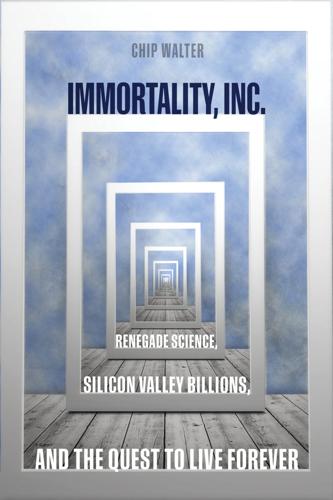
Immortality, Inc.
by
Chip Walter
Published 7 Jan 2020
IBM’s Deep Blue computer defeated Garry Kasparov, the chess world champion, in one of the highest profile competitions ever. The world gasped. Kurzweil also foresaw the explosive growth of the internet in the early 1990s, when the world’s total population of users was a mere 2.6 million. In 2017, that number would clock in at 3.7 billion, more than a thousandfold increase. Smartphones, cloud computing, and self-driving cars were also among his predictions. Not that he was always right, but he clearly foresaw something in this idea of digitizing the human genome, and all the exponential business that went with it. In his efforts to predict the future, Kurzweil had turned to Moore’s law. Gordon Moore was one of the founders of NM Electronics, which later became the Silicon Valley juggernaut Intel Corporation.
…
They feel that way because of something called recency bias, the sense that a new thing is quickly perceived as old hat because it’s become so indispensable. Think of fax machines, microwaves, streaming television, and car doors that open with a gesture. The race for immortality will behave very much the same way, Kurzweil says. Costs will start high, and the idea of living radically long will look as cockamamy as mobile phones, or self-driving cars. But then costs will plummet. And when they do, that is when they will actually work—because history shows that the only people who pay through the nose for technology that doesn’t work are the wealthy. They are the early adopters because they can afford to be. But they are also the only ones who lower the costs of new technology enough that the rest of us can afford them.

12 Bytes: How We Got Here. Where We Might Go Next
by
Jeanette Winterson
Published 15 Mar 2021
A robot with a map of your kitchen wouldn’t ‘know’ why a table is where it is – and it will be confused if the table moves. Statistical knowledge is not the same thing as general understanding. Machine learning can get around this by throwing more data at the problem (train your AI on bigger data-sets), but we aren’t solving the underlying issue. This is still narrow AI. That’s why it is so hard to design self-driving cars in open environments. If something random happens (and let’s face it, humans and animals can be pretty random out on the road), the system stalls. Even a perfect 3D mapping of an environment, using sensors and lasers, will still produce errors, if there is no general understanding. And right now, there isn’t.
…
As technology advances, customised robots based on your favourite cartoon character will be available. What they do will be programmable – my Frogbot will tell stories. Your Frogbot will sing. Linking the programmes links the robots, so that children can share their friend. For adults the range will be unlimited. A helperbot can guide you round the shops, just as a self-driving car guides itself round town. Mobility scooters will chat with you as you ride along, and if your friend is nearby, your scooter will ‘know’. * * * Anything we start talking to develops into a relationship. If people can form a bond with the fish in their fish tank – and they do – forming a bond with a non-bio helper won’t be a problem
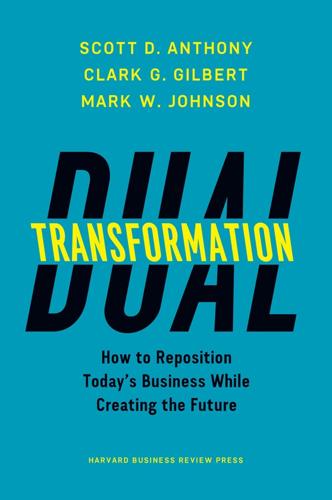
Dual Transformation: How to Reposition Today's Business While Creating the Future
by
Scott D. Anthony
and
Mark W. Johnson
Published 27 Mar 2017
Over the next decade Google invested to further develop the technology behind self-driving cars and to change local regulations to welcome autonomous cars. In 2014 it introduced a new car with no wheels and no pedals. In August 2016, Singapore’s first autonomous taxi debuted on the roads of a cluster of buildings with far-out names like Fusionopolis. Scenes in movies with legions of driverless cars—such as I, Robot and Minority Report—increasingly seem less like science fiction and more like a preview of the next decade. And, of course, that’s to say nothing of the rise of electric vehicles. The rise of self-driving cars will have systemwide effects.
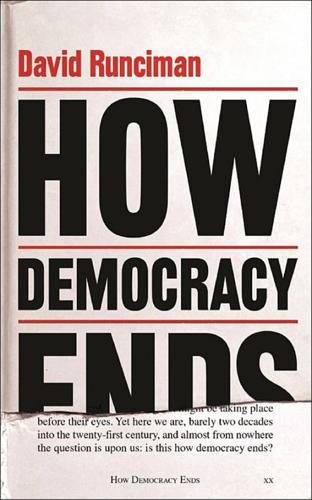
How Democracy Ends
by
David Runciman
Published 9 May 2018
What the historian David Edgerton calls ‘the shock of the old’ applies to digital technology as much as to any other kind of technology – change rarely happens as fast as we think.49 It takes place in a landscape where most objects are still the familiar ones. A world that is about to herald the arrival of self-driving cars also contains more bicycles than ever before. We tend to overstate how quickly technological transformation will make itself clear to us. This is especially true of people with a vested interest in making it happen. They want it to happen now. We remain some way off from the long-promised dawn of machines with minds of their own.
…
The danger of unintelligent machines is that, as they grow in power and usefulness, they lure intelligent human beings into relying on them for too much. Machine learning currently allows computers to mine vast amounts of data for insights that no human could match, picking up the rules of the game as they go along. These are not intelligent insights – they lack depth, nuance and emotional resonance. Yet it is machine learning that enables self-driving cars to travel the roads more safely and reliably than any human-driven automobile could. It is machine learning that tells Google what you are searching for before you have quite realised it yourself. Without knowing what they are doing, machines can navigate the world we have built more successfully than we can.

The System: Who Owns the Internet, and How It Owns Us
by
James Ball
Published 19 Aug 2020
In many of the 5G specs today, they talk about something called network slicing,’ says Marby. Network slicing would essentially allow 5G to be broken up, or ‘sliced’, into smaller networks optimised for different apps or different types of content – designed to work ideally for video streaming, self-driving cars, industrial control information or some other form of content. This has practical uses, but could easily be overextended to allow for the kind of charging by type of content that net neutrality was designed to prevent – if someone who stood to profit from it could say that video really does have technical needs different from those of instant messaging, they could maybe justify ‘slicing’ it, and then charging separately.
…
We have come to see that, almost always, online power reflects offline power, and in the offline world at least, the era of the USA as the world’s only superpower is coming to an end – and it’s China that is rising fastest to join it as a second superpower. Huawei is not China’s only tech behemoth. China has its own version of Amazon, eBay and Paypal, largely merged within the same company, Alibaba. It has its own search engine rival to Google, Baidu, which like Google is also diversifying into AI, self-driving cars, ad platforms and more. Its WhatsApp rival WeChat is owned by a company called TenCent, which is now investing in global social networking apps. The Chinese tech giants are no longer content to operate solely in China. The USA certainly exploited the soft power and intelligence advantages of its global domination of the internet and its largest companies.
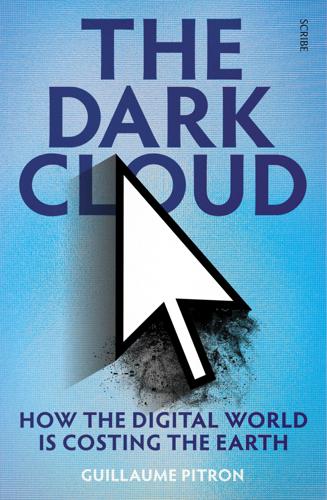
The Dark Cloud: How the Digital World Is Costing the Earth
by
Guillaume Pitron
Published 14 Jun 2023
The pandemic made it impossible to travel to Masdar, and so I base my descriptions on official promotional material. 2 Federico Cugurullo, Exposing smart cities and eco-cities: Frankenstein urbanism and the sustainability challenges of the experimental city, Environment and Planning A: Economy and Space, 16 November 2017. 3 Op. cit. 4 See ‘Welcome to Masdar City’ on YouTube. More promotional material available at masdarcity.ae/en. 5 Interview with Federico Cugurullo, Assistant Professor in Smart and Sustainable Urbanism at Trinity College Dublin, 2020. 6 fosterandpartners.com/projects/masdar-city/ 7 For example, if a bird flies in front of a self-driving car it would grind to a halt to avoid hitting it. The PRT also needed to be able to operate in a tunnel — a proposal/feature that was never applied. 8 The numerous anomalies in the measurement of water and air conditioning consumption have not been resolved, ‘and no one seems to understand why these features do not work’, Gökçe Günel reports in her book Spaceship in the Desert, op.cit. 9 ‘Masdar’s zero-carbon dream could become world’s first green ghost town’, The Guardian, 16 February 2016. 10 ‘Mapping Smart Cities in the EU’, Directorate General for Internal Policies, Policy Department, Economic and Scientific Policy, January 2014. 11 ‘Navigant Research’s smart city tacker 2Q19 highlights 443 projects spanning 286 cities around the world’, Business Wire, 20 June 2019.
…
An exploration of likely vs. desirable outcomes’, European Journal of Futures Research, vol. 3, no. 1, December 2015. According to Thomopoulos and Givoni, there is ‘the risk of autonomous cars leading to the renaissance of the private car […] at the expense of public and NMT (non-motorised transport)’. 55 ‘Not all of our self-driving cars will be electrically powered – here’s why’, The Verge, 12 December 2017. 56 ‘Another big challenge for autonomous car engineers: Energy efficiency’, Automotive News, 11 October 2017. 57 Mathieu Saujot, Laura Brimont, Oliver Sartor, ‘Putting autonomous mobility on the path to sustainable development’ (full report in French), IDDRI, June 2018.

Blockchain Revolution: How the Technology Behind Bitcoin Is Changing Money, Business, and the World
by
Don Tapscott
and
Alex Tapscott
Published 9 May 2016
He also expects to see bitcoin applications in the Metaverse (a virtual world) where you can convert bitcoin into Kongbucks and hire Hiro Protagonist to hack you some data.20 Or jack yourself into the OASIS (a world of multiple virtual utopias) where you actually do discover the Easter egg, win Halliday’s estate, license OASIS’s virtual positioning rights to Google, and buy a self-driving car to navigate Toronto.21 And, of course, there’s the Internet of Things, where we register our devices, assign them an identity (Intel is already doing this), and coordinate payment among them using bitcoin rather than multiple fiat currencies. “You can define all these new business cases that you want to do, and have it interoperate within the network, and use the network infrastructure without having to bootstrap a new blockchain, just for yourself,” said Hill. 22 Unlike fiat currency, each bitcoin is divisible to eight decimal places.
…
All the available vehicles start automatically posting offers, which Melissa’s node ranks and presents to her based on her selection criteria. Melissa factors in how much she’s willing to pay for faster routes (e.g., higher-priced toll lanes). Meanwhile John, unlike most users, is a SUber vehicle owner and as his self-driving car is taking him to work, it identifies all the parking options, both public and privately owned, selects a space, and reserves and pays for it through an autonomous parking marketplace. Because John’s predetermined parameters always include seeking the cheapest available spot within a ten-minute walk of his destination, he almost always goes with his car’s first choice.
…
All this runs on a distributed peer-to-peer platform—connecting multiple apps—so no centralized company is mediating the orders or taking part of the fee. There is no surge pricing and no unexpected fees. What is striking about this proposed model is not the driverless vehicles, because self-driving cars will be commonplace—probably sooner rather than later. Rather, the cars could be fully autonomous agents that earn their own fares, pay for their own fuel and repair, get their own auto insurance, negotiate liability in collisions, and operate (“drive”) without outside human control, except when they need to take some entity—maybe a human being—to court.

Smart Cities: Big Data, Civic Hackers, and the Quest for a New Utopia
by
Anthony M. Townsend
Published 29 Sep 2013
When congestion is reduced due to the new capacity, the opportunity cost of driving falls, spurring drivers who would never have ventured onto the previously clogged road to sally forth. Over the coming decades, we’ll witness just such a process play out as automated vehicles take to the road. So far, the excitement over innovations like Google’s self-driving car has been about safety and convenience. You’ll be able to surf the net during your commute. You’ll never have to worry about your drunken teenager wrapping the family sedan around a telephone pole. But the even greater economic potential of self-driving cars is that they could potentially double road capacity by reducing spacing between cars and jams caused by a whole host of idiosyncratic human behaviors. If that spurs people who would have stayed home to take new trips, we’ll have to double fuel economy just to hold even.
…
Norton), 99–100 financial crisis of 1812, 79 Firth Bridge, 21 Fishman, Robert, 98 Flickr, 200 Flint, Anthony, 103–4 Flint, Charles E., 61–62 Flood, Joe, 212 FootPath, 271–72 “forever day” vulnerabilities, 268 Forio, 83 Forrester, 2 Forrester, Jay, 76–78, 81–82, 84–85 Foundation (Asimov), 74–75, 88 Foursquare, 144–52, 319 Dodgeball compared with, 148–49 Franken, Al, 14 Frankfurt, 38 Frazer, John and Julia, 21–22 Freedom of Information Act, 296 Frenchman, Dennis, 219 Friendster, 122–23 From Warfare to Welfare: Defense Intellectuals and Urban Problems in Cold War America (Light), 78–79 G8 group of industrialized nations, 279 Gale International, 27–28, 49 Garaufis, Nicholas, 275 Garden Cities of To-Morrow (Howard), 94–95 Garden City Movement, 94–98, 107 g-cloud, 170, 289 Geddes, Patrick, 96–98, 105–6, 113–14, 235–36, 282–83, 302–3 Gelernter, David, 69–73, 89–91, 283, 298 General Electric, 8, 34, 38, 77 General Motors, 7, 18, 47, 95, 101 General Transit Feed Specification, 204 “Generator,” 21–22 as celebration of “messy human scale,” 28 Geraci, John, 154–59, 165, 202 Germany, 244 Gerstner, Louis, Jr., 62 Gettys, Jim, 266 Gibson, William, 119 GigaOM, 38 Gig.U, 289 Gilbertson, Nate, 159 Gilder, George, 6 Gilliam, Terry, 258 Gilman, Howard, 20–21 Giuliani, Rudolph “Rudy,” 205 Glaeser, Ed, 159–60, 278 GLONASS, 265 Goldman, Greg, 194–98 Goldsmith, Stephen, 205–7 Goldstein, Brett, 211 GOODBUILDINGS, 229 Google, 125, 134, 146, 157–58, 242, 272 Flu Trends of, 157 self-driving car of, 317–18 Google Maps, 200 Gordon, Robert, 280 Gottmann, Jean, 160–61 “Gov 2.0,” 237–38, 241 Gowalla, 146–47 GPS, 68, 163, 186–87, 207, 265, 272, 306 headset for blind using, 244 Gray Area Foundation for the Arts, 226–28, 230 Greenfield, Adam, 113, 303 Greenhill, Andrew, 237–38 Green Metropolis (Owen), 278 Greenwich Village, 102–4 Grossman, Nick, 158–59 Haamer, Veljo, 133–34 hackers, 119–26, 145, 153, 158, 227–30, 292, 301, 320 for open-source and free-wireless, 223 of the smart city, 227 Hagen, Erica, 186, 188 Hahn, Jury, 301–2 Hamas, 233, 273 Harrelson, Chris, 204 Harris, Josh, 121 Harrison, Colin, 64–65, 68, 69, 72, 84–85, 88, 269, 299 Harvey, Adam, 14 Haselmayer, Sascha, 243–48 HBO, 132 Hebbert, Frank, 307 Heeks, Richard, 175–76, 180, 188, 192 Heiferman, Scott, 159 Heisenberg, Werner, 88 Herron, Ron, 20 Hickenlooper, John, 206 Hills Are Evil!
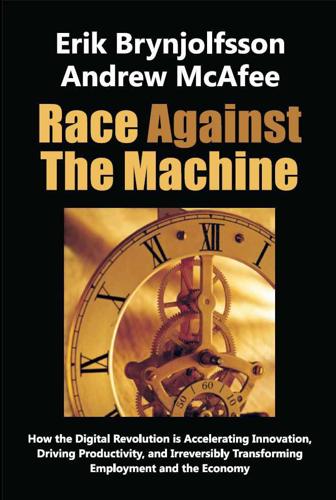
Race Against the Machine: How the Digital Revolution Is Accelerating Innovation, Driving Productivity, and Irreversibly Transforming Employment and the Economy
by
Erik Brynjolfsson
Published 23 Jan 2012
Although multiplying five-digit numbers is an unnatural and difficult skill for the human mind to master, the visual cortex routinely does far more complex mathematics each time it detects an edge or uses parallax to locate an object in space. Machine computation has surpassed humans in the first task but not yet in the second one. As digital technologies continue to improve, we are skeptical that even these skills will remain bastions of human exceptionalism in the coming decades. The examples in Chapter 2 of Google’s self-driving car and IBM’s Watson point to a different path going forward. The technology is rapidly emerging to automate truck driving in the coming decade, just as scheduling truck routes was increasingly automated in the last decade. Likewise, the high end of the skill spectrum is also vulnerable, as we see in the case of e-discovery displacing lawyers and, perhaps, in a Watson-like technology, displacing human medical diagnosticians.
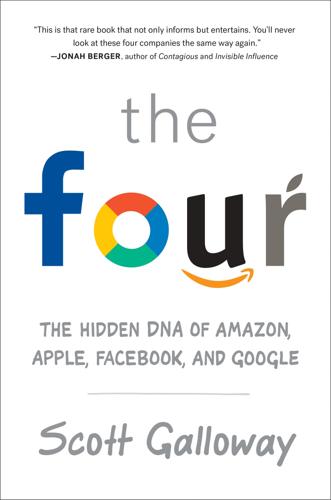
The Four: How Amazon, Apple, Facebook, and Google Divided and Conquered the World
by
Scott Galloway
Published 2 Oct 2017
Facebook faces a similar question. The prime material—the oil—for Facebook is the billions of identities it is following and getting to know in ever-greater detail. The easy money is on the sure things in its people portfolio. By comparison, virtual reality goggles, curing death, laying fiber, self-driving cars, and other business opportunities represent much longer odds. If people make it clear, with their clicks, likes, and postings, that they hate certain things and love others, those people are easy to sell to. Clear as day. Easy as oil in Arabia. If I go into Facebook and click on an article about Bernie Sanders and “love” one about Chuck Schumer, the machine, expending almost no energy, can throw me in a bucket of liberal die-hards.
…
Can a car service really justify Uber’s $70 billion private-market valuation? Doubtful. But Uber is more than just a car service. In fact, taxis are to Uber what books were to Amazon. It’s a real business, and one Uber can do quite well with, but it’s only the camel’s nose under the tent. The real prize is leveraging its massive driver network (and soon, its massive self-driving car network). In California, Uber trialed UberFRESH, a food delivery service. In Manhattan, it trialed UberRUSH, a package courier. In Washington, D.C., it started UberEssentials, an online ordering and delivery service of grocery store essentials.26 The firm appears to be building a vascular (last-mile) system for global business—that is, taking the “blood” of commerce to the “organs” of business, globally.
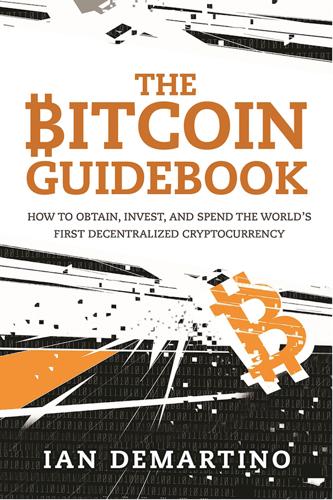
The Bitcoin Guidebook: How to Obtain, Invest, and Spend the World's First Decentralized Cryptocurrency
by
Ian Demartino
Published 2 Feb 2016
It would be up to the owners of the network to put into the initial program how the network plans on turning a profit—but with a much lower overhead than traditional businesses, it might not be that difficult. Another idea is publicly run, self-driving cars acting as a decentralized, Uber-like platform. A group of people could raise money by selling a coin, then use that money to buy a fleet of self-driving cars, design an app that calls the cars, and let them loose on a metropolitan area. In the future, people might have multiple DACs that they own a small part of, and they might receive some residual income from them on a regular basis.

Infinite Detail
by
Tim Maughan
Published 1 Apr 2019
Plus he’s poured years of work into security systems to protect them from exactly this. They’re getting a hammering, though—just glancing at his diagnostics software he can see unprecedented levels of network traffic trying to break in, and he doesn’t need to check IP or MAC addresses to know where it’s coming from. Spex, self-driving cars, smart lightbulbs, toys, fridges, security cameras—it’s coming from everywhere, everything and anything with a connection is pumping data into the network, flooding it. It’s not being targeted at the Croft, either, it’s being targeted at everything. He’s seen this before, in the countless analyses he’s read of all the major outages over the last few weeks, starting with Times Square: something is spreading, hijacking any and all Internet-connected devices it finds, and as it does, it floods the network with data—a distributed-denial-of-service attack without a specified target, apparently aimed at bringing the whole connected world to its knees.
…
It’s lit only by the rapidly fading daylight and the glow of fires—part of Cabot Circus seems to be ablaze. The streets are full of people, walking, running, shouting. Some gather in groups, some sit on the ground, looking concussed, confused. Others are trying to make their way around the vehicles that jam up the roads, self-driving cars and cabs and buses that have all ground to a halt, their passengers shouting for help or smashing windows to free themselves. There’s a constant ambient soundscape of breaking glass, chanting, and police sirens that reverberates up the architecture to where they’re watching. “Fucking hell,” says College.

New Dark Age: Technology and the End of the Future
by
James Bridle
Published 18 Jun 2018
But we are no longer in the industrial age, and, according to Piketty, any belief that technological progress will lead to ‘the triumph of human capital over financial capital and real estate, capable managers over fat cat stockholders, and skill over nepotism’ is ‘largely illusory’.17 Technology is in fact a key driver of inequality across many sectors. The relentless progress of automation – from supermarket checkouts to trading algorithms, factory robots to self-driving cars – increasingly threatens human employment across the board. There is no safety net for those whose skills are rendered obsolete by machines; and even those who programme the machines are not immune. As the capabilities of machines increase, more and more professions are under attack, with artificial intelligence augmenting the process.
…
Their customers are in turn further alienated; the whole system contributing to the offshoring of tax revenues, the decline of public transport services, and the class divisions and congestion of city streets. And, like Amazon and most other digitally driven businesses, Uber’s ultimate goal is to replace its human workers entirely with machines. It has its own self-driving car program, and its chief product officer, asked about the company’s long-term viability when so many of its employees were dissatisfied, responded simply, ‘Well, we’re just going to replace them all with robots.’ What happens to the Amazon workers eventually happens to everyone. Technological opacity is also wielded by corporations against the wider population, and against the planet.

Outnumbered: From Facebook and Google to Fake News and Filter-Bubbles – the Algorithms That Control Our Lives
by
David Sumpter
Published 18 Jun 2018
Their offices were at a well-appointed address on Buckingham Palace Road, where there were large Lego structures in the lobby and fridges stuffed full of health drinks and superfoods. The ‘Googlers’, which was how they referred to themselves, were clearly very proud of their surroundings. I asked some of the Googlers what the company was up to now. I had heard about the self-driving cars, Google Glass and contact lenses, the drones delivering packages to our door, and the idea of injecting nanoparticles into our bodies to detect disease, and I wanted to know more about the rumours. But the Googlers were cagey. After a run of bad publicity about the company becoming an over-creative hub for crazy ideas, the policy was to stop telling the outside world too much about what it was up to.
…
Without a bit of hype early on, DeepMind might not have acquired the resources to solve some of these important problems. Elon Musk hasn’t toned down his rhetoric. He appears to be adopting a deliberate position of continually hyping AI to push many of his super-ambitious projects, including self-driving cars. These long-term projects can only succeed if customers are willing to buy into the idea that purchasing the latest Tesla car is a step towards a fantastic future. It is often a far-off dream that drives our desire to find things out about the world. It isn’t money per se that motivates the people at DeepMind or Tesla.

City 2.0: The Habitat of the Future and How to Get There
by
Ted Books
Published 20 Feb 2013
This is why it’s incredibly useful to have sensors embedded within the tools and objects we swap out frequently, like our phones and cars. In fact, much of the progress being made toward the Internet of Things has occurred in transportation. In the very near future, cars will communicate with other cars to improve the safety and flow of traffic. Google’s self-driving car is one high-profile example, but another project, run by the U.S. National Highway Traffic Safety Administration (NHTSA), is a more likely predictor of where this concept could go. The NHTSA recently launched a yearlong test enabling 2,800 cars in Ann Arbor, Mich., to effectively communicate directly with one another.
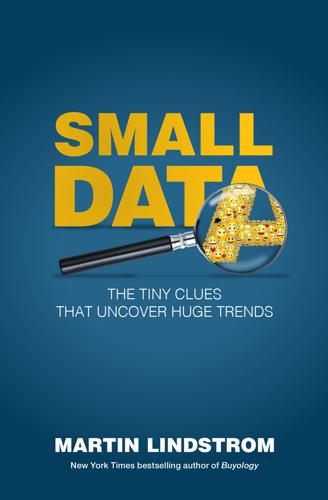
Small Data: The Tiny Clues That Uncover Huge Trends
by
Martin Lindstrom
Published 23 Feb 2016
Thing is, it wasn’t because customers were dissatisfied with the bank or its customer service. No: most were getting a divorce, which explained why they were shifting around their assets.14 A parallel small data study could have figured this out in a day or less. Then there are the issues facing Google’s new self-driving cars, most of which it seems can be credited to the mismatch between technology and humanity. According to the New York Times, last year as one of Google’s new cars approached a crosswalk, it did as it was supposed to and came to a complete stop. The pedestrian in front crossed the street safely, at which point the Google car was rammed from behind by a second non-Google automobile.
…
See also ethnography; Subtext Research Apple, 49, 59, 96, 112, 138, 172–4, 178, 180, 203 Arons, Marc de Swaan, 13 aspiration, 4, 29, 34, 60, 81, 131–7, 180, 196 and Brazil, 122, 126–35, 140–1, 144–5 and fashion, 128–9, 150–2, 155–6, 158 Australia, 15, 75, 104–5, 107–8, 115, 131, 142, 176, 180–1 Austria, 142, 151, 154, 156, 158, 168 automobiles BMW Mini Cooper, ix, 199 Chevrolet, 138 and China, 172, 179–80, 199–205 and Germany, 173, 200–202 and identity, 180 and Saudi Arabia, 35 self-driving cars, 216 and the United States, 61, 63, 200–202 beauty, 29, 77, 80, 100, 145, 177. See also cosmetics; fashion bicycling, 105, 171–2, 214 big data, vii-viii, 2–3, 12–14, 73, 160, 212–16 Boas, Franz, 11 brands and building, 1–2, 4, 14, 67, 112, 173 and aspiration, 131–7 brand ambassadors, 108, 115, 145, 191 brand loyalty, 107, 113, 163, 213 country branding, 57, 60, 175–7 definition of brand, 211 and desire, 9–11 destinations, 173–7 fear of losing branded identities, 210–11 globalization of, 147–8 and Kulturbrille (culture glasses), 11 and religion, 138–9 and Somatic Marker Hypothesis, 65–6 See also specific brands; Subtext Research Brasil Kirin, 121–3, 138.

The Connected Company
by
Dave Gray
and
Thomas Vander Wal
Published 2 Dec 2014
FORD “Ford announced recently that they are creating an open platform that will allow tinkerers and developers to electronically ‘hot-rod’ their cars.” From “Hack your car with OpenXC, a platform for modding Ford car computers,” by Dean Takahashi, VentureBeat, September 12, 2011, http://www.venturebeat.com/2011/09/12/hack-your-car-with-openxc-platform-for-modding-ford-car-computers/. SELF-DRIVING CARS “Google is working on cars that will drive themselves.” From “Google Cars Drive Themselves, in Traffic,” by John Markoff, The New York Times, October 9, 2010. JOB GROWTH “Job growth will be led by health care…” From “Occupational Outlook Handbook: 2010-20 Projections,” Bureau of Labor Statistics, March 29, 2012, http://www.bls.gov/ooh/About/Projections-Overview.htm.
…
, How IBM Rediscovered Customers, How Profits Can Destroy Your Company American International Group (AIG), Too Much Autonomy–Failure to Invest in the Platform, Failure to Invest in the Platform ant colony, Strategy by Discovery AOL (company), The Platform Ashby’s Law, The Law of Requisite Variety Asplund, Jim, Promoters and Detractors ATM revolt (Bank of America), The ATM Revolt attractors, Attractors, Attractors attrition warfare, Three Types of Strategy authoritarian power structure, People Resist Being Controlled Autodesk software company, Disrupting Desktop Software at Autodesk–Network Weaving, Network Weaving automobiles, Urbanization–Urbanization, Urbanization, Urbanization, Urbanization, Urbanization, Urbanization self-driving cars, Urbanization services for, Urbanization urban populations and, Urbanization–Urbanization, Urbanization, Urbanization, Urbanization avatars, A Product is a Service Avatar products as, A Product is a Service Avatar B back stage, Front Stage and Back Stage–Balancing the Front Stage and the Back Stage, Balancing the Front Stage and the Back Stage–Making Platform Decisions, Balancing the Front Stage and the Back Stage, Balancing the Front Stage and the Back Stage, Making Platform Decisions about, Front Stage and Back Stage–Balancing the Front Stage and the Back Stage, Balancing the Front Stage and the Back Stage balancing with front stage, Balancing the Front Stage and the Back Stage–Making Platform Decisions, Balancing the Front Stage and the Back Stage, Making Platform Decisions Bain & Company, Promoters and Detractors, The Net Promoter Score Bank of America, The ATM Revolt Barabás, Albert-László, Scale-free Networks Basecamp application, You don’t have to be Big Bass, Carl, Disrupting Desktop Software at Autodesk Beer, Stafford, Purpose Sets the Context for Organizations to Learn behaviorist philosophy, The Company as a Machine Beinhocker, Eric D., Let a Thousand Flowers Bloom Best Buy (company), Whole Foods, an Agile Team of Agile Teams betweenness measure in networks, Power in Networks–Control, Control, Control Bezos, Jeff, Products as Job Descriptions, Amazon is Podular–A Podular System Trades Flexibility for Consistency, Amazon is Podular, Amazon is Podular, A Podular System Trades Flexibility for Consistency, Level One: How Entrepreneurs Learn, Balancing the Front Stage and the Back Stage, Small Bets: Set a Low Bar for Initial Experimentation, Moral Authority, Attractors Amazon and, Amazon is Podular–A Podular System Trades Flexibility for Consistency, Amazon is Podular, Amazon is Podular, A Podular System Trades Flexibility for Consistency appreciation shown by, Attractors as entrepreneur, Level One: How Entrepreneurs Learn moral authority and, Moral Authority on innovation, Small Bets: Set a Low Bar for Initial Experimentation on Kindle, Products as Job Descriptions on Zappos, Balancing the Front Stage and the Back Stage blind alleys, Small Bets: Set a Low Bar for Initial Experimentation blitzkrieg, Three Types of Strategy boiled frog effect, It Won’t be Easy boundary-setting in companies, Balance the Individual Freedom with the Common Good Boyd, John, Three Types of Strategy, Moral Authority, Customers First Brand, Stuart, Pace Layers Branson, Richard, Level One: How Entrepreneurs Learn Brickhouse innovation studio, Failure to Invest in the Platform Brogan, Chris, Network Weaving brokerage, defined, Small Worlds Brown, John Seely, Return on Assets is Dwindling Building Collaboration Services, Disrupting Desktop Software at Autodesk Bureau of Labor Statistics, Urbanization Burger King (company), Adaptive Moves Can Create Opportunities for Others Burt, Ron, Small Worlds Buzzsaw (company), Disrupting Desktop Software at Autodesk C Carlzon, Jan, Moments of Truth Carroll, Dave, Cascading Effects Can be Initiated by Customers–Cascading Effects Can be Initiated by Senior Executives, Cascading Effects Can be Initiated by Customers, Cascading Effects Can be Initiated by Senior Executives Carroll, Lewis, The Red Queen Race Castain, Eric, Be Connectable to Everything Channel Marketing Corp, Big Bets: The Responsibility of Senior Leaders chaos monkey, Netflix, a City of Services Christensen, Clayton, Purpose Sets the Context for Organizations to Learn Christian, Kristen, The ATM Revolt cities, Complex Adaptive Systems–The Long-lived Company, Complex Adaptive Systems, The Long-lived Company, What is a Platform?
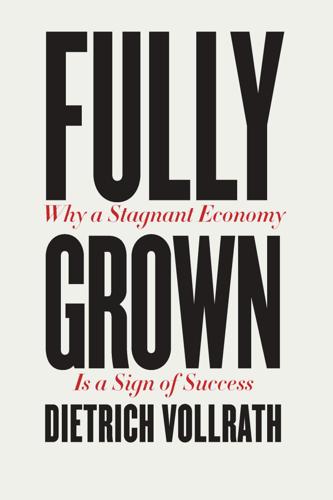
Fully Grown: Why a Stagnant Economy Is a Sign of Success
by
Dietrich Vollrath
Published 6 Jan 2020
Advances in solar-cell and battery technologies contribute to productivity growth by lowering costs and allowing firms and individuals to substitute for other sources of energy. The examples go on and on. But be careful to keep technological change and productivity growth as separate concepts in your head. The slowdown in productivity growth does not mean that we have become less inventive or capable. From the other side, advances in exciting new technologies—self-driving cars, genetic editing, biofuel—don’t necessarily mean anything for the productivity growth rate. I have no clue what future technologies will look like or what their fundamental impact on human welfare will be. Maybe we are about to enter some kind of techno-utopia. Or perhaps Skynet will kill us all.
…
If any of this is true, then it would allow us to be more optimistic about the future growth rate of productivity, although it would still be unwise to assume anything. I think a similar sentiment is warranted with respect to technological change in general. There are, without a doubt, an incredible number of new and improved technologies arriving every day. Self-driving cars, gene editing, low-cost solar panels, more efficient batteries, biofuel, quantum computers, 3-D printing of metals, artificial intelligence, and on and on and on. Any, or all, of these could generate profound changes in how we live and how we produce the goods and services that go into GDP. That said, it isn’t obvious that we’ll see profound effects on the growth rate of the economy.

I, Warbot: The Dawn of Artificially Intelligent Conflict
by
Kenneth Payne
Published 16 Jun 2021
The Artificial Intelligence of today would astonish a visitor from the recent past. The science fiction writer Arthur C. Clarke wrote in the 1970s that any sufficiently advanced technology is indistinguishable from magic. That might well be the experience of someone catapulted forward in time half a century from then to today. Here we are, on the cusp of self-driving cars, where the smartphone in everyone’s pocket responds to voice commands by pulling up useful information from the ether. That’s precisely the sort of magic that Douglas Adams imagined in his bestselling 1970s novel The Hitchhiker’s Guide to the Galaxy. It’s now almost a decade since an AI called Watson thrashed humans at Jeopardy, the popular television general knowledge quiz.
…
A-10 Warthog abacuses Abbottabad, Pakistan Able Archer (1983) acoustic decoys acoustic torpedoes Adams, Douglas Aegis combat system Aerostatic Corps affective empathy Affecto Afghanistan agency aircraft see also dogfighting; drones aircraft carriers algorithms algorithm creation Alpha biases choreography deep fakes DeepMind, see DeepMind emotion recognition F-117 Nighthawk facial recognition genetic selection imagery analysis meta-learning natural language processing object recognition predictive policing alien hand syndrome Aliens (1986 film) Alpha AlphaGo Altered Carbon (television series) Amazon Amnesty International amygdala Andropov, Yuri Anduril Ghost anti-personnel mines ants Apple Aristotle armour arms races Army Research Lab Army Signal Corps Arnalds, Ólafur ARPA Art of War, The (Sun Tzu) art Artificial Intelligence agency and architecture autonomy and as ‘brittle’ connectionism definition of decision-making technology expert systems and feedback loops fuzzy logic innateness intelligence analysis meta-learning as ‘narrow’ needle-in-a-haystack problems neural networks reinforcement learning ‘strong AI’ symbolic logic and unsupervised learning ‘winters’ artificial neural networks Ashby, William Ross Asimov, Isaac Asperger syndrome Astute class boats Atari Breakout (1976) Montezuma’s Revenge (1984) Space Invaders (1978) Athens ATLAS robots augmented intelligence Austin Powers (1997 film) Australia authoritarianism autonomous vehicles see also drones autonomy B-21 Raider B-52 Stratofortress B2 Spirit Baby X BAE Systems Baghdad, Iraq Baidu balloons ban, campaigns for Banks, Iain Battle of Britain (1940) Battle of Fleurus (1794) Battle of Midway (1942) Battle of Sedan (1940) batwing design BBN Beautiful Mind, A (2001 film) beetles Bell Laboratories Bengio, Yoshua Berlin Crisis (1961) biases big data Bin Laden, Osama binary code biological weapons biotechnology bipolarity bits Black Lives Matter Black Mirror (television series) Blade Runner (1982 film) Blade Runner 2049 (2017 film) Bletchley Park, Buckinghamshire blindness Blunt, Emily board games, see under games boats Boden, Margaret bodies Boeing MQ-25 Stingray Orca submarines Boolean logic Boston Dynamics Bostrom, Nick Boyd, John brain amygdala bodies and chunking dopamine emotion and genetic engineering and language and mind merge and morality and plasticity prediction and subroutines umwelts and Breakout (1976 game) breathing control brittleness brute force Buck Rogers (television series) Campaign against Killer Robots Carlsen, Magnus Carnegie Mellon University Casino Royale (2006 film) Castro, Fidel cat detector centaur combination Central Intelligence Agency (CIA) centre of gravity chaff Challenger Space Shuttle disaster (1986) Chauvet cave, France chemical weapons Chernobyl nuclear disaster (1986) chess centaur teams combinatorial explosion and creativity in Deep Blue game theory and MuZero as toy universe chicken (game) chimeras chimpanzees China aircraft carriers Baidu COVID-19 pandemic (2019–21) D-21 in genetic engineering in GJ-11 Sharp Sword nuclear weapons surveillance in Thucydides trap and US Navy drone seizure (2016) China Lake, California Chomsky, Noam choreography chunking Cicero civilians Clarke, Arthur Charles von Clausewitz, Carl on character on culmination on defence on genius on grammar of war on materiel on nature on poker on willpower on wrestling codebreaking cognitive empathy Cold War (1947–9) arms race Berlin Crisis (1961) Cuban Missile Crisis (1962) F-117 Nighthawk Iran-Iraq War (1980–88) joint action Korean War (1950–53) nuclear weapons research and SR-71 Blackbird U2 incident (1960) Vienna Summit (1961) Vietnam War (1955–75) VRYAN Cole, August combinatorial creativity combinatorial explosion combined arms common sense computers creativity cyber security games graphics processing unit (GPU) mice Moore’s Law symbolic logic viruses VRYAN confirmation bias connectionism consequentialism conservatism Convention on Conventional Weapons ConvNets copying Cormorant cortical interfaces cost-benefit analysis counterfactual regret minimization counterinsurgency doctrine courageous restraint COVID-19 pandemic (2019–21) creativity combinatorial exploratory genetic engineering and mental disorders and transformational criminal law CRISPR, crows Cruise, Thomas Cuban Missile Crisis (1962) culmination Culture novels (Banks) cyber security cybernetics cyborgs Cyc cystic fibrosis D-21 drones Damasio, Antonio dance DARPA autonomous vehicle research battlespace manager codebreaking research cortical interface research cyborg beetle Deep Green expert system programme funding game theory research LongShot programme Mayhem Ng’s helicopter Shakey understanding and reason research unmanned aerial combat research Dartmouth workshop (1956) Dassault data DDoS (distributed denial-of-service) dead hand system decision-making technology Deep Blue deep fakes Deep Green DeepMind AlphaGo Atari playing meta-learning research MuZero object recognition research Quake III competition (2019) deep networks defence industrial complex Defence Innovation Unit Defence Science and Technology Laboratory defence delayed gratification demons deontological approach depth charges Dionysus DNA (deoxyribonucleic acid) dodos dogfighting Alpha domains dot-matrix tongue Dota II (2013 game) double effect drones Cormorant D-21 GJ-11 Sharp Sword Global Hawk Gorgon Stare kamikaze loitering munitions nEUROn operators Predator Reaper reconnaissance RQ-170 Sentinel S-70 Okhotnik surveillance swarms Taranis wingman role X-37 X-47b dual use technology Eagleman, David early warning systems Echelon economics Edge of Tomorrow (2014 film) Eisenhower, Dwight Ellsberg, Daniel embodied cognition emotion empathy encryption entropy environmental niches epilepsy epistemic community escalation ethics Asimov’s rules brain and consequentialism deep brain stimulation and deontological approach facial recognition and genetic engineering and golden rule honour hunter-gatherer bands and identity just war post-conflict reciprocity regulation surveillance and European Union (EU) Ex Machina (2014 film) expert systems exploratory creativity extra limbs Eye in the Sky (2015 film) F-105 Thunderchief F-117 Nighthawk F-16 Fighting Falcon F-22 Raptor F-35 Lightning F/A-18 Hornet Facebook facial recognition feedback loops fighting power fire and forget firmware 5G cellular networks flow fog of war Ford forever wars FOXP2 gene Frahm, Nils frame problem France Fukushima nuclear disaster (2011) Future of Life Institute fuzzy logic gait recognition game theory games Breakout (1976) chess, see chess chicken Dota II (2013) Go, see Go Montezuma’s Revenge (1984) poker Quake III (1999) Space Invaders (1978) StarCraft II (2010) toy universes zero sum games gannets ‘garbage in, garbage out’ Garland, Alexander Gates, William ‘Bill’ Gattaca (1997 film) Gavotti, Giulio Geertz, Clifford generalised intelligence measure Generative Adversarial Networks genetic engineering genetic selection algorithms genetically modified crops genius Germany Berlin Crisis (1961) Nuremburg Trials (1945–6) Russian hacking operation (2015) World War I (1914–18) World War II (1939–45) Ghost in the Shell (comic book) GJ-11 Sharp Sword Gladwell, Malcolm Global Hawk drone global positioning system (GPS) global workspace Go (game) AlphaGo Gödel, Kurt von Goethe, Johann golden rule golf Good Judgment Project Google BERT Brain codebreaking research DeepMind, see DeepMind Project Maven (2017–) Gordievsky, Oleg Gorgon Stare GPT series grammar of war Grand Challenge aerial combat autonomous vehicles codebreaking graphics processing unit (GPU) Greece, ancient grooming standard Groundhog Day (1993 film) groupthink guerilla warfare Gulf War First (1990–91) Second (2003–11) hacking hallucinogenic drugs handwriting recognition haptic vest hardware Harpy Hawke, Ethan Hawking, Stephen heat-seeking missiles Hebrew Testament helicopters Hellfire missiles Her (2013 film) Hero-30 loitering munitions Heron Systems Hinton, Geoffrey Hitchhiker’s Guide to the Galaxy, The (Adams) HIV (human immunodeficiency viruses) Hoffman, Frank ‘Holeshot’ (Cole) Hollywood homeostasis Homer homosexuality Hongdu GJ-11 Sharp Sword honour Hughes human in the loop human resources human-machine teaming art cyborgs emotion games King Midas problem prediction strategy hunter-gatherer bands Huntingdon’s disease Hurricane fighter aircraft hydraulics hypersonic engines I Robot (Asimov) IARPA IBM identity Iliad (Homer) image analysis image recognition cat detector imagination Improbotics nformation dominance information warfare innateness intelligence analysts International Atomic Energy Agency International Criminal Court international humanitarian law internet of things Internet IQ (intelligence quotient) Iran Aegis attack (1988) Iraq War (1980–88) nuclear weapons Stuxnet attack (2010) Iraq Gulf War I (1990–91) Gulf War II (2003–11) Iran War (1980–88) Iron Dome Israel Italo-Turkish War (1911–12) Jaguar Land Rover Japan jazz JDAM (joint directed attack munition) Jeopardy Jobs, Steven Johansson, Scarlett Johnson, Lyndon Joint Artificial Intelligence Center (JAIC) de Jomini, Antoine jus ad bellum jus in bello jus post bellum just war Kalibr cruise missiles kamikaze drones Kasparov, Garry Kellogg Briand Pact (1928) Kennedy, John Fitzgerald KGB (Komitet Gosudarstvennoy Bezopasnosti) Khrushchev, Nikita kill chain King Midas problem Kissinger, Henry Kittyhawk Knight Rider (television series) know your enemy know yourself Korean War (1950–53) Kratos XQ-58 Valkyrie Kubrick, Stanley Kumar, Vijay Kuwait language connectionism and genetic engineering and natural language processing pattern recognition and semantic webs translation universal grammar Law, Jude LeCun, Yann Lenat, Douglas Les, Jason Libratus lip reading Litvinenko, Alexander locked-in patients Lockheed dogfighting trials F-117 Nighthawk F-22 Raptor F-35 Lightning SR-71 Blackbird logic loitering munitions LongShot programme Lord of the Rings (2001–3 film trilogy) LSD (lysergic acid diethylamide) Luftwaffe madman theory Main Battle Tanks malum in se Manhattan Project (1942–6) Marcus, Gary Maslow, Abraham Massachusetts Institute of Technology (MIT) Matrix, The (1999 film) Mayhem McCulloch, Warren McGregor, Wayne McNamara, Robert McNaughton, John Me109 fighter aircraft medical field memory Merkel, Angela Microsoft military industrial complex Mill, John Stuart Milrem mimicry mind merge mind-shifting minimax regret strategy Minority Report (2002 film) Minsky, Marvin Miramar air base, San Diego missiles Aegis combat system agency and anti-missile gunnery heat-seeking Hellfire missiles intercontinental Kalibr cruise missiles nuclear warheads Patriot missile interceptor Pershing II missiles Scud missiles Tomahawk cruise missiles V1 rockets V2 rockets mission command mixed strategy Montezuma’s Revenge (1984 game) Moore’s Law mosaic warfare Mueller inquiry (2017–19) music Musk, Elon Mutually Assured Destruction (MAD) MuZero Nagel, Thomas Napoleon I, Emperor of the French Napoleonic France (1804–15) narrowness Nash equilibrium Nash, John National Aeronautics and Space Administration (NASA) National Security Agency (NSA) National War College natural language processing natural selection Nature navigation computers Nazi Germany (1933–45) needle-in-a-haystack problems Netflix network enabled warfare von Neumann, John neural networks neurodiversity nEUROn drone neuroplasticity Ng, Andrew Nixon, Richard normal accident theory North Atlantic Treaty Organization (NATO) North Korea nuclear weapons Cuban Missile Crisis (1962) dead hand system early warning systems F-105 Thunderchief and game theory and Hiroshima and Nagasaki bombings (1945) Manhattan Project (1942–6) missiles Mutually Assured Destruction (MAD) second strike capability submarines and VRYAN and in WarGames (1983 film) Nuremburg Trials (1945–6) Obama, Barack object recognition Observe Orient Decide and Act (OODA) offence-defence balance Office for Naval Research Olympic Games On War (Clausewitz), see Clausewitz, Carl OpenAI optogenetics Orca submarines Ottoman Empire (1299–1922) pain Pakistan Palantir Palmer, Arnold Pandemonium Panoramic Research Papert, Seymour Parkinson’s disease Patriot missile interceptors pattern recognition Pearl Harbor attack (1941) Peloponnesian War (431–404 BCE) Pentagon autonomous vehicle research codebreaking research computer mouse development Deep Green Defence Innovation Unit Ellsberg leaks (1971) expert system programme funding ‘garbage in, garbage out’ story intelligence analysts Project Maven (2017–) Shakey unmanned aerial combat research Vietnam War (1955–75) perceptrons Perdix Pershing II missiles Petrov, Stanislav Phalanx system phrenology pilot’s associate Pitts, Walter platform neutrality Pluribus poker policing polygeneity Portsmouth, Hampshire Portuguese Man o’ War post-traumatic stress disorder (PTSD) Predator drones prediction centaur teams ‘garbage in, garbage out’ story policing toy universes VRYAN Prescience principles of war prisoners Project Improbable Project Maven (2017–) prosthetic arms proximity fuses Prussia (1701–1918) psychology psychopathy punishment Putin, Vladimir Pyeongchang Olympics (2018) Qinetiq Quake III (1999 game) radar Rafael RAND Corporation rational actor model Rawls, John Re:member (Arnalds) Ready Player One (Cline) Reagan, Ronald Reaper drones reciprocal punishment reciprocity reconnaissance regulation ban, campaigns for defection self-regulation reinforcement learning remotely piloted air vehicles (RPAVs) revenge porn revolution in military affairs Rid, Thomas Robinson, William Heath Robocop (1987 film) Robotics Challenge robots Asimov’s rules ATLAS Boston Dynamics homeostatic Shakey symbolic logic and Rome Air Defense Center Rome, ancient Rosenblatt, Frank Royal Air Force (RAF) Royal Navy RQ-170 Sentinel Russell, Stuart Russian Federation German hacking operation (2015) Litvinenko murder (2006) S-70 Okhotnik Skripal poisoning (2018) Ukraine War (2014–) US election interference (2016) S-70 Okhotnik SAGE Said and Done’ (Frahm) satellite navigation satellites Saudi Arabia Schelling, Thomas schizophrenia Schwartz, Jack Sea Hunter security dilemma Sedol, Lee self-actualisation self-awareness self-driving cars Selfridge, Oliver semantic webs Shakey Shanahan, Murray Shannon, Claude Shogi Silicon Valley Simon, Herbert Single Integrated Operations Plan (SIOP) singularity Siri situational awareness situationalist intelligence Skripal, Sergei and Yulia Slaughterbots (2017 video) Slovic, Paul smartphones Smith, Willard social environments software Sophia Sorcerer’s Apprentice, The (Goethe) South China Sea Soviet Union (1922–91) aircraft Berlin Crisis (1961) Chernobyl nuclear disaster (1986) Cold War (1947–9), see Cold War collapse (1991) Cuban Missile Crisis (1962) early warning systems Iran-Iraq War (1980–88) Korean War (1950–53) nuclear weapons radar technology U2 incident (1960) Vienna Summit (1961) Vietnam War (1955–75) VRYAN World War II (1939–45) Space Invaders (1978 game) SpaceX Sparta Spike Firefly loitering munitions Spitfire fighter aircraft Spotify Stanford University Stanley Star Trek (television series) StarCraft II (2010 game) stealth strategic bombing strategic computing programme strategic culture Strategy Robot strategy Strava Stuxnet sub-units submarines acoustic decoys nuclear Orca South China Sea incident (2016) subroutines Sukhoi Sun Tzu superforecasting surveillance swarms symbolic logic synaesthesia synthetic operation environment Syria Taliban tanks Taranis drone technological determinism Tempest Terminator franchise Tesla Tetlock, Philip theory of mind Threshold Logic Unit Thucydides TikTok Tomahawk cruise missiles tongue Top Gun (1986 film) Top Gun: Maverick (2021 film) torpedoes toy universes trade-offs transformational creativity translation Trivers, Robert Trump, Donald tumours Turing, Alan Twitter 2001: A Space Odyssey (1968 film) Type-X Robotic Combat Vehicle U2 incident (1960) Uber Uexküll, Jacob Ukraine ultraviolet light spectrum umwelts uncanny valley unidentified flying objects (UFOs) United Kingdom AI weapons policy armed force, size of Battle of Britain (1940) Bletchley Park codebreaking Blitz (1940–41) Cold War (1947–9) COVID-19 pandemic (2019–21) DeepMind, see DeepMind F-35 programme fighting power human rights legislation in Litvinenko murder (2006) nuclear weapons principles of war Project Improbable Qinetiq radar technology Royal Air Force Royal Navy Skripal poisoning (2018) swarm research wingman concept World War I (1914–18) United Nations United States Afghanistan War (2001–14) Air Force Army Research Lab Army Signal Corps Battle of Midway (1942) Berlin Crisis (1961) Bin Laden assassination (2011) Black Lives Matter protests (2020) centaur team research Central Intelligence Agency (CIA) Challenger Space Shuttle disaster (1986) Cold War (1947–9), see Cold War COVID-19 pandemic (2019–21) Cuban Missile Crisis (1962) culture cyber security DARPA, see DARPA Defense Department drones early warning systems F-35 programme Gulf War I (1990–91) Gulf War II (2003–11) IARPA Iran Air shoot-down (1988) Korean War (1950–53) Manhattan Project (1942–6) Marines Mueller inquiry (2017–19) National Security Agency National War College Navy nuclear weapons Office for Naval Research Patriot missile interceptor Pearl Harbor attack (1941) Pentagon, see Pentagon Project Maven (2017–) Rome Air Defense Center Silicon Valley strategic computing programme U2 incident (1960) Vienna Summit (1961) Vietnam War (1955–75) universal grammar Universal Schelling Machine (USM) unmanned aerial vehicles (UAVs), see drones unsupervised learning utilitarianism UVision V1 rockets V2 rockets Vacanti mouse Valkyries Van Gogh, Vincent Vietnam War (1955–75) Vigen, Tyler Vincennes, USS voice assistants VRYAN Wall-e (2008 film) WannaCry ransomware War College, see National War College WarGames (1983 film) warrior ethos Watson weapon systems WhatsApp Wiener, Norbert Wikipedia wingman role Wittgenstein, Ludwig World War I (1914–18) World War II (1939–45) Battle of Britain (1940) Battle of Midway (1942) Battle of Sedan (1940) Bletchley Park codebreaking Blitz (1940–41) Hiroshima and Nagasaki bombings (1945) Pearl Harbor attack (1941) radar technology V1 rockets V2 rockets VRYAN and Wrangham, Richard Wright brothers WS-43 loitering munitions Wuhan, China X-37 drone X-drone X-rays YouTube zero sum games
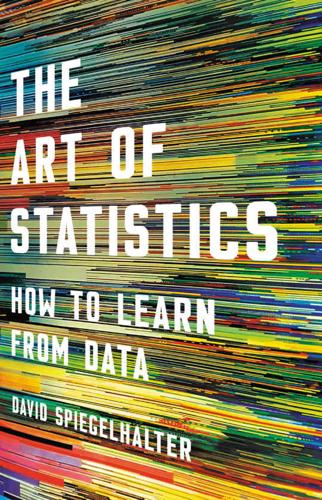
The Art of Statistics: How to Learn From Data
by
David Spiegelhalter
Published 2 Sep 2019
For example, the likes and dislikes of an online customer, or whether that object in a robot’s vision is a child or a dog. • Prediction: to tell us what is going to happen. For example, what the weather will be next week, what a stock price might do tomorrow, what products that customer might buy, or whether that child is going to run out in front of our self-driving car. Although these tasks differ in whether they are concerned with the present or the future, they both have the same underlying nature: to take a set of observations relevant to a current situation, and map them to a relevant conclusion. This process has been termed predictive analytics, but we are verging into the territory of artificial intelligence (AI), in which algorithms embodied in machines are used either to carry out tasks that would normally require human involvement, or to provide expert-level advice to humans.
…
Bayesian learning is also now seen as a fundamental process of human awareness of the environment, in that we have prior expectations about what we will see in any context, and then only need to take notice of unexpected features in our vision which are then used to update our current perceptions. This is the idea behind the so-called Bayesian Brain.6 The same learning procedures have been implemented in self-driving cars, which have a probabilistic ‘mental map’ of their surroundings that is constantly being updated by recognition of traffic lights, people, other cars, and so on: ‘In essence, a robot car “thinks” of itself as a blob of probability, traveling down a Bayesian road.’7 These problems are about estimating quantities that describe the world, but using Bayesian methods for assessing scientific hypotheses remains more controversial.
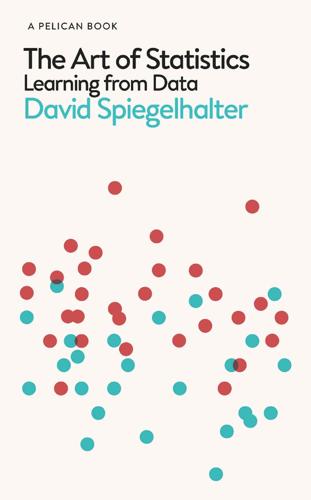
The Art of Statistics: Learning From Data
by
David Spiegelhalter
Published 14 Oct 2019
For example, the likes and dislikes of an online customer, or whether that object in a robot’s vision is a child or a dog. Prediction: to tell us what is going to happen. For example, what the weather will be next week, what a stock price might do tomorrow, what products that customer might buy, or whether that child is going to run out in front of our self-driving car. Although these tasks differ in whether they are concerned with the present or the future, they both have the same underlying nature: to take a set of observations relevant to a current situation, and map them to a relevant conclusion. This process has been termed predictive analytics, but we are verging into the territory of artificial intelligence (AI), in which algorithms embodied in machines are used either to carry out tasks that would normally require human involvement, or to provide expert-level advice to humans.
…
Bayesian learning is also now seen as a fundamental process of human awareness of the environment, in that we have prior expectations about what we will see in any context, and then only need to take notice of unexpected features in our vision which are then used to update our current perceptions. This is the idea behind the so-called Bayesian Brain.6 The same learning procedures have been implemented in self-driving cars, which have a probabilistic ‘mental map’ of their surroundings that is constantly being updated by recognition of traffic lights, people, other cars, and so on: ‘In essence, a robot car “thinks” of itself as a blob of probability, traveling down a Bayesian road.’7 These problems are about estimating quantities that describe the world, but using Bayesian methods for assessing scientific hypotheses remains more controversial.

Green Swans: The Coming Boom in Regenerative Capitalism
by
John Elkington
Published 6 Apr 2020
Their goal is “to produce a 10x impact on the world’s most intractable problems, not just 10% improvements.”70 “X is perhaps the only enterprise on the planet where regular investigation into the absurd is not just permitted but encouraged, and even required,” reported The Atlantic magazine. “X has quietly looked into space elevators and cold fusion. It has tried, and abandoned, projects to design hoverboards with magnetic levitation and to make affordable fuel from seawater. It has tried—and succeeded, in varying measures—to build self-driving cars, make drones that deliver aerodynamic packages, and design contact lenses that measure glucose levels in a diabetic person’s tears.”71 I recently met up again with X’s Sarah Hunter, this time in London. She was responsible for X’s public policy team, helping governments and policy makers around the world understand new technologies and their impacts.
…
,” BBC News, May 17, 2019. See also: https://www.bbc.co.uk/news/resources/idt-sh/boeing_two_deadly_crashes. 10.Henry Grabar, “The Crash of the Boeing 737 Max Is a Warning to Drivers, Too,” Slate, March 12, 2019. See also: https://slate.com/technology/2019/03/boeing-737-max-crashes-automation-self-driving-cars-surprise.html. 11.John Gapper, “Boeing’s Hubris Blinded It to a Lurking Danger,” Financial Times, April 11, 2019. 12.Jared Diamond, Collapse: How Societies Choose to Fail or Succeed. New York: Viking Press, 2005. See also: https://en.wikipedia.org/wiki/Collapse:_How_Societies_Choose_to_Fail_or_Succeed. 13.Jared Diamond, Upheaval: How Nations Cope With Crisis And Change.
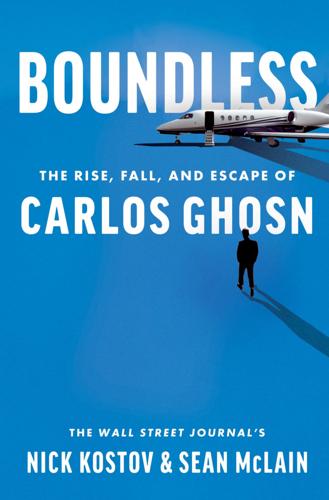
Boundless: The Rise, Fall, and Escape of Carlos Ghosn
by
Nick Kostov
Published 8 Aug 2022
Still, using a Dutch-registered company tied to Nissan sounded promising, and an opportunity to do just that soon presented itself. In the summer of 2010, Nissan executives were debating the idea of creating a special fund aimed at investing in innovative startups. Ghosn had expressed concerns that Nissan risked falling behind in the race to develop electric vehicles and self-driving cars if it didn’t keep track of disruptive projects being thought up in places like Silicon Valley. Ghosn wanted the idea of an internal venture capital fund to be put on a fast track. In September, he called Kelly and the company’s chief financial officer into his office to outline a plan. Kelly was tasked with writing a proposal for approval by the executive committee.
…
” * * * Beating Toyota, Volkswagen, and GM to the top of the automotive leaderboard was just the start. In September, Ghosn told the world that the Alliance wasn’t content to sell 10 million cars a year; it wanted to sell 14 million. Ghosn reasoned that with the advent of electric vehicles and self-driving cars, only the biggest companies would have the cash to survive and prosper. If the Alliance could gain an edge in the early chase for breakthroughs, Ghosn thought, the gap would only continue to widen. He set targets for Renault, Mitsubishi, and Nissan to hit those sales numbers by 2022. Saikawa was uneasy about Ghosn’s aggressive sales targets, fearing they would further erode the profit margin at Nissan, which had already missed its sales targets a few months earlier.

The Rationalist's Guide to the Galaxy: Superintelligent AI and the Geeks Who Are Trying to Save Humanity's Future
by
Tom Chivers
Published 12 Jun 2019
‘So we’re going to try to solve the problems in the toys like this, and maybe it’ll make it safer later. Is it going to make a huge difference? I don’t know. But does it seem like it might? Yes.’ But it’s an example of something that could go wrong in strange ways – long before human-level AI, when an AI is in charge of, say, self-driving cars. ‘It’s not a situation you want to be in if, say, an AI is managing the power grid and something weird happens. Where there’s a little bit of space that wasn’t in the training set and it just totally melts down. Basically, if you imagine a future where you give an AI a goal and it’ll maximise the hell out of that goal, but you better hope that you specify that goal perfectly and nothing weird happens, it doesn’t see anything it didn’t see in its training – in that world I think you would be right to feel very scared.’
…
Yudkowsky deliberately tries to take it away from the meta-ethical, finding-esoteric-flaws-in-the-ethical-system stuff and into basic numbers. I’ll go into what I mean by that in a second, but I think it’s most simply expressed in a tweet by someone else entirely, a web developer called Mason Hartman, who was talking about the ethics of self-driving cars: Philosophy: so sometimes it goes haywire & ends up— Me: do the thing that kills fewer people Philosophy: but it’s very salient th— Me: do the thing that kills fewer people Philosophy: but the human element of control is— Me: do the thing Me: that kills Me: fewer people1 (Yudkowsky retweeted it, and I know retweets ≠ endorsement and all that, but I’m pretty sure this one does.)
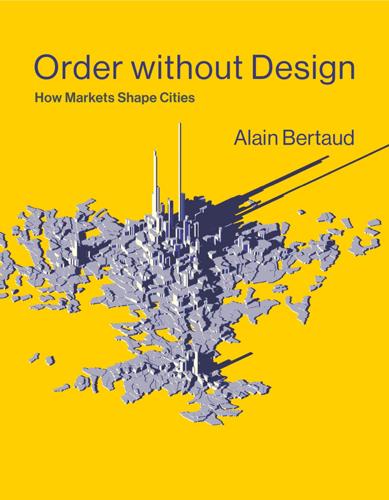
Order Without Design: How Markets Shape Cities
by
Alain Bertaud
Published 9 Nov 2018
There are only two ways to decrease the street area consumed by moving cars: the first would be to decrease the width of vehicles so that two vehicles fit in the width of one lane (e.g., a motorcycle); the second would be to decrease safely the 2-second reaction time by using technology like self-driving cars. We will explore these possibilities later on. For vehicles moving on a road, the consumption of street area per passenger is therefore dependent on four parameters: the length of the vehicle, the reaction time to ensure a safe distance between vehicles, the speed of the vehicle, and the number of passengers.
…
Emerging new personal mobility vehicles, such as the Toyota i-Road, are examples of a possible replacement for the traditional car that would provide more mobility for less road space and less energy, pollution, and GHG emissions per kilometer. 6. Finally, the possibility of sharing small self-driving vehicles on demand could provide a very efficient alternative in the future for many suburb-to-suburb trips. Self-driving cars would have three important advantages over traditional cars. First, they would save street space by being able to run closer to one another without requiring the 2-second reaction time that human drivers require; that would save about 65 percent of road space at speeds of about 60 km/h. Second, they would dramatically reduce accidents and, therefore, the unpredictability of road commuting times.
…
Designing New Land Use Regulations and Auditing Existing Regulations The necessity of living and working in close proximity requires rules that will minimize friction. Because the economic and technological environment is changing constantly, the rules have to be constantly adapted to the new environment. For instance, the introduction of self-driving cars in cities in the near future will require new regulations, just as new regulations were required when cars replaced horse carts as a main mode of urban transport. Past regulations also have to be periodically reviewed for their relevance. As described in chapter 7, the shadows cast by very tall buildings were a major issue for the first part of the twentieth century, until indoor lighting and air conditioning became efficient and cheap.
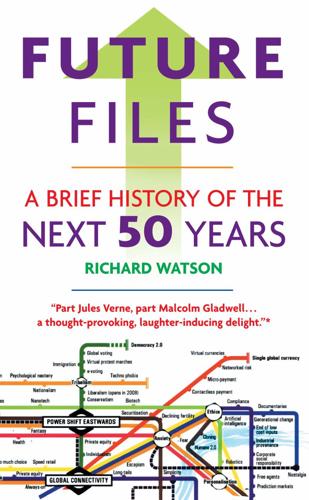
Future Files: A Brief History of the Next 50 Years
by
Richard Watson
Published 1 Jan 2008
Hence better vehicular access (doors) and better forward, backward and side vision will become increasingly important engineering elements and testing of older drivers will eventually become commonplace globally. Automotive and Transport 165 Ultimately, though, the solution to both older and younger driver safety will be to take the necessity of driving away altogether. Along with flying cars, self-driving cars have been a feature of the sci-fi future for decades. They first appeared in the 1950s, although the idea never really progressed beyond the concept stage for a number of legal, social and technical reasons. Nevertheless, General Motors claims that it is building such a car and that it could be introduced as early as 2008.
…
A 311 Index ‘O’ Garage 170 3D printers 56 accelerated education 57 accidents 159, 161–6, 173, 246 ACNielsen 126 adaptive cruise control 165 Adeg Aktiv 50+ 208 advertising 115–16, 117, 119 Africa 70, 89, 129, 174, 221, 245, 270, 275, 290, 301 ageing 1, 10, 54, 69, 93, 139, 147–8, 164, 188, 202, 208, 221, 228–9, 237, 239, 251, 261, 292, 295, 297–8 airborne networks 56 airlines 272 allergies 196–7, 234, 236 Alliance Against Urban 4x4s 171 alternative energy 173 alternative futures viii alternative medicine 244–5 alternative technology 151 amateur production 111–12 Amazon 32, 113–14, 121 American Apparel 207 American Express 127–8 androids 55 Angola 77 anti-ageing drugs 231, 237 anti-ageing foods 188 anti-ageing surgery 2, 237 antibiotics 251 anxiety 10, 16, 30, 32, 36, 37, 128, 149, 179, 184, 197, 199, 225, 228, 243, 251, 252, 256, 263, 283–4, 295–6, 300, 301, 305 Apple 61, 115, 121, 130, 137–8, 157 Appleyard, Bryan 79 Argentina 210 Armamark Corporation 193 artificial intelliegence 22, 40, 44, 82 131, 275, 285–6, 297, 300 Asda 136, 137 Asia 11, 70, 78, 89, 129, 150, 174, 221, 280, 290, 292 Asimov, Isaac 44 Asos.com 216 asthma 235 auditory display software 29 Australia 20–21, 72–3, 76, 92, 121, 145, 196, 242, 246, 250, 270, 282 Austria 208 authenticity 32, 37, 179, 194, 203–11 authoritarianism 94 automated publishing machine (APM) 114 automation 292 automotive industry 154–77 B&Q 279 baby boomers 41, 208 bacterial factories 56 Bahney, Anna 145 Bahrain 2 baking 27, 179, 195, 199 Bangladesh 2 bank accounts, body double 132 banknotes 29, 128 banks 22, 123, 135–8, 150, 151 virtual 134 Barnes and Noble 114 bartering 151 BBC 25, 119 Become 207 Belgium 238 313 314 benriya 28 Berlusconi, Silvio 92 Best Buy 223 biofuel 64 biomechatronics 56 biometric identification 28, 35, 52, 68, 88, 132 bionic body parts 55 Biosphere Expeditions 259 biotechnology 40, 300 blended families 20 blogs 103, 107, 109, 120 Blurb 113 BMW 289 board games 225 body double bank accounts 132 body parts bionic 55 replacement 2, 188, 228 Bolivia 73 Bollywood 111 books 29, 105, 111–25 boomerang kids 145 brain transplants 231 brain-enhancing foods 188 Brazil 2, 84, 89, 173, 247, 254, 270, 290 Burger King 184 business 13, 275–92 Bust-Up 189 busyness 27, 195, 277 Calvin, Bill 45 Canada 63, 78, 240 cancer 251 car sharing 160, 169, 176 carbon credits 173 carbon footprints 255 carbon taxes 76, 172 cars classic 168–9 driverless 154–5 flying 156, 165 hydrogen-powered 12, 31, 157, 173 pay-as-you-go 167–8 self-driving 165 cascading failure 28 cash 126–7, 205 cellphone payments 129, 213 cellphones 3, 25, 35, 51, 53, 120, 121, FUTURE FILES 129, 156, 161, 251 chicken, Christian 192 childcare robots 57 childhood 27, 33–4, 82–3 children’s database 86 CHIME nations (China, India, Middle East) 2, 10, 81 China 2, 10, 11, 69–72, 75–81, 88, 92–3, 125, 137, 139–40, 142, 151, 163, 174–5, 176, 200, 222, 228, 247, 260, 270–71, 275, 279, 295, 302 choice 186–7 Christian chicken 192 Christianity, muscular 16, 73 Chrysler 176 cinema 110–11, 120 Citibank 29, 128 citizen journalism 103–4, 108 City Car Club 168 Clarke, Arthur C. 58–9 Clarke’s 187 classic cars 168–9 climate change 4, 11, 37, 43, 59, 64, 68, 74, 77–9, 93, 150, 155, 254, 257, 264, 298–9 climate-controlled buildings 254, 264 cloning 38 human 23, 249 CNN 119 coal 176 Coca-Cola 78, 222–3 co-creation 111–12, 119 coins 29, 128, 129 collective intelligence 45–6 Collins, Jim 288 comfort eating 200 Comme des Garçons 216 community 36 compassion 120 competition in financial services 124–5 low-cost 292 computers disposable 56 intelligent 23, 43 organic 56 wearable 56, 302 computing 3, 33, 43, 48, 82 connectivity 3, 10, 11, 15, 91, 120, Index 233, 261, 275–6, 281, 292, 297, 299 conscientious objection taxation 86 contactless payments 123, 150 continuous partial attention 53 control 36, 151, 225 convenience 123, 178–9, 184, 189, 212, 223, 224 Coren, Stanley 246 corporate social responsibility 276, 282, 298 cosmetic neurology 250 Costa Rica 247 Craig’s List 102 creativity 11, 286; see also innovation credit cards 141–3, 150 crime 86–9 forecasting 86–7 gene 57, 86 Croatia 200 Crowdstorm 207 Cuba 75 cultural holidays 259, 273 culture 11, 17–37 currency, global 127, 151 customization 56, 169, 221–2, 260 cyberterrorism 65, 88–9 Cyc 45 cynicism 37 DayJet 262 death 237–9 debt 123–4, 140–44, 150 defense 63, 86 deflation 139 democracy 94 democratization of media 104, 108, 113 demographics 1, 10, 21, 69, 82, 93, 202, 276, 279–81, 292, 297–8 Denmark 245 department stores 214 deregulation 11, 3 Destiny Health 149 detox 200 Detroit Project 171 diagnosis 232 remote 228 digital downloads 121 evaporation 25 315 immortality 24–5 instant gratification syndrome 202 Maoism 47 money 12, 29, 123, 126–7, 129, 132, 138, 150, 191 nomads 20, 283 plasters 241 privacy 25, 97, 108 readers 121 digitalization 37, 292 Dinner by Design 185 dirt holidays 236 discount retailers 224 Discovery Health 149 diseases 2, 228 disintegrators 57 Disney 118–19 disposable computers 56 divorce 33, 85 DNA 56–7, 182 database 86 testing, compulsory 86 do-it-yourself dinner shops 185–6 dolls 24 doorbells 32 downshifters 20 Dream Dinners 185 dream fulfillment 148 dressmaking 225 drink 178–200 driverless cars 154–5 drugs anti-ageing 231, 237 performance-improving 284–5 Dubai 264, 267, 273 dynamic pricing 260 E Ink 115 e-action 65 Earthwatch 259 Eastern Europe 290 eBay 207 e-books 29, 37, 60, 114, 115, 302 eco-luxe resorts 272 economic collapse 2, 4, 36, 72, 221, 295 economic protectionism 10, 15, 72, 298 economy travel 272 316 Ecuador 73 education 15, 18, 82–5, 297 accelerated 57 lifelong learning 290 Egypt 2 electricity shortages 301 electronic camouflage 56 electronic surveillance 35 Elephant 244 email 18–19, 25, 53–4, 108 embedded intelligence 53, 154 EMF radiation 251 emotional capacity of robots 40, 60 enclosed resorts 273 energy 72, 75, 93 alternative 173 nuclear 74 solar 74 wind 74 enhancement surgery 249 entertainment 34, 121 environment 4, 10, 11, 14, 64, 75–6, 83, 93, 155, 171, 173, 183, 199, 219–20, 252, 256–7, 271, 292, 301 epigenetics 57 escapism 16, 32–3, 121 Estonia 85, 89 e-tagging 129–30 e-therapy 242 ethical bankruptcy 35 ethical investing 281 ethical tourism 259 ethics 22, 24, 41, 53, 78, 86, 132, 152, 194, 203, 213, 232, 238, 249–50, 258, 276, 281–2, 298–9 eugenics 252 Europe 11, 70, 72, 81, 91, 141, 150, 174–5, 182, 190, 192, 209 European Union 15, 139 euthanasia 238, 251 Everquest 33 e-voting 65 experience 224 extended financial families 144 extinction timeline 9 Facebook 37, 97, 107 face-recognition doors 57 fakes 32 family 36, 37 FUTURE FILES family loans 145 fantasy-related industries 32 farmaceuticals 179, 182 fast food 178, 183–4 fat taxes 190 fear 10, 34, 36, 38, 68, 150, 151, 305 female-only spaces 210–11, 257 feminization 84 financial crisis 38, 150–51, 223, 226, 301 financial services 123–53, 252 trends 123–5 fish farming 181 fixed-price eating 200 flashpacking 273 flat-tax system 85–6 Florida, Richard 36, 286, 292 flying cars 165 food 69–70, 72, 78–9, 162, 178–201 food anti-ageing 188 brain-enhancing 188 fast 178, 183–4 functional 179 growing your own 179, 192, 195 history 190–92 passports 200 slow 178, 193 tourism 273 trends 178–80 FoodExpert ID 182 food-miles 178, 193, 220 Ford 169, 176, 213, 279–80 forecasting 49 crime 86–7 war 49 Forrester Research 132 fractional ownership 168, 175, 176, 225 France 103, 147, 170, 189, 198, 267 Friedman, Thomas 278–9, 292 FriendFinder 32 Friends Reunited 22 frugality 224 functional food 179 Furedi, Frank 68 gaming 32–3, 70, 97, 111–12, 117, 130, 166, 262 Gap 217 Index gardening 27, 148 gas 176 GE Money 138, 145 gendered medicine 244–5 gene silencing 231 gene, crime 86 General Motors 157, 165 Generation X 41, 281 Generation Y 37, 41, 97, 106, 138, 141–2, 144, 202, 208, 276, 281, 292 generational power shifts 292 Genes Reunited 35 genetic enhancement 40, 48 history 35 modification 31, 182 testing 221 genetics 3, 10, 45, 251–2 genomic medicine 231 Germany 73, 147, 160, 170, 204–5, 216–17, 261, 267, 279, 291 Gimzewski, James 232 glamping 273 global currency 127 global warming 4, 47, 77, 93, 193, 234 globalization 3, 10, 15–16, 36–7, 63–7, 72–3, 75, 81–2, 88, 100, 125, 139, 143, 146, 170, 183, 189, 193–5, 221, 224, 226, 233–4, 247–8, 263, 275, 278–80, 292, 296, 299 GM 176 Google 22, 61, 121, 137, 293 gout 235 government 14, 18, 36, 63–95, 151 GPS 3, 15, 26, 50, 88, 138, 148, 209, 237, 262, 283 Grameen Bank 135 gravity tubes 57 green taxes 76 Greenpeace 172 GRIN technologies (genetics, robotics, internet, nanotechnology) 3, 10, 11 growing your own food 178, 192, 195 Gucci 221 Gulf States 125, 260, 268 H&M 217 habitual shopping 212 Handy, Charles 278 317 Happily 210 happiness 63–4, 71–2, 146, 260 health 15, 82, 178–9, 199 health monitoring 232, 236, 241 healthcare 2, 136, 144, 147–8, 154, 178–9, 183–4, 189–91, 228–53, 298; see also medicine trends 214–1534–7 Heinberg, Richard 74 Helm, Dieter 77 Heritage Foods 195 hikikomori 18 hive mind 45 holidays 31, 119; see also tourism holidays at home 255 cultural 259 dirt 236 Hollywood 33, 111–12 holographic displays 56 Home Equity Share 145 home baking 225 home-based microgeneration 64 home brewing 225 honesty 152 Hong Kong 267 hospitals 228, 241–3, 266 at home 228, 238, 240–42 hotels 19, 267 sleep 266 human cloning 23, 249 Hungary 247 hybrid humans 22 hydrogen power 64 hydrogen-powered cars 12, 31, 157, 173 Hyperactive Technologies 184 Hyundai 170 IBM 293 identities, multiple 35, 52 identity 64, 71 identity theft 88, 132 identity verification, two-way 132 immigration 151–2, 302 India 2, 10, 11, 70–72, 76, 78–9, 81, 92, 111, 125, 135, 139, 163, 174–5, 176, 247, 249–50, 254, 260, 270, 275, 279, 302 indirect taxation 86 318 individualism 36 Indonesia 2, 174 industrial robots 42 infinite content 96–7 inflation 151 information overlead 97, 120, 159, 285; see also too much information innovation 64, 81–2, 100, 175, 222, 238, 269, 277, 286–8, 291, 297, 299 innovation timeline 8 instant gratification 213 insurance 123, 138, 147–50, 154, 167, 191, 236, 250 pay-as-you-go 167 weather 264 intelligence 11 embedded 53, 154 implants 229 intelligent computers 23, 43 intelligent night vision 162–3 interaction, physical 22, 25, 97, 110, 118, 133–4, 215, 228, 243, 276, 304 interactive media 97, 105 intergenerational mortgages 140, 144–5 intermediaries 123, 135 internet 3, 10, 11, 17–18, 25, 68, 103, 108, 115–17, 124, 156, 240–41, 261, 270, 283, 289, 305 failure 301 impact on politics 93–4 sensory 56 interruption science 53 iPills 240 Iran 2, 69 Ishiguro, Hiroshi 55 Islamic fanaticism 16 Italy 92, 170, 198–9 iTunes 115, 130; see also Apple Japan 1, 18, 26, 28–9, 54–5, 63, 80–81, 114, 121, 128–9, 132, 140, 144–5, 147, 174, 186, 189, 192, 196, 198, 200, 209–10, 223, 240, 260, 264, 271, 279, 291 jetpacks 60 job security 292 journalism 96, 118 journalism, citizen 103–4, 107 joy-makers 57 FUTURE FILES Kaboodle 207 Kapor, Mitchell 45 Kenya 128 keys 28–9 Kindle 60, 121 Kramer, Peter 284 Kuhn, Thomas 281 Kurzweil, Ray 45 Kuwait 2 labor migration 290–91 labor shortages 3, 80–81, 289–90 Lanier, Jaron 47 laser shopping 212 leisure sickness 238 Let’s Dish 185 Lexus 157 libraries 121 Libya 73 life-caching 24, 107–8 lighting 158, 160 Like.com 216 limb farms 249 limited editions 216–17 live events 98, 110, 304 localization 10, 15–16, 116, 128, 170, 178, 189, 193, 195, 215, 220, 222–3, 224, 226, 255, 270, 297 location tagging 88 location-based marketing 116 longevity 188–9, 202 Longman, Philip 71 low cost 202, 219–22 luxury 202, 221, 225, 256, 260, 262, 265–6, 272 machinamas 112 machine-to-machine communication 56 marketing 115–16 location-based 116 now 116 prediction 116 Marks & Spencer 210 Maslow, Abraham 305–6 masstigue 223 materialism 37 Mayo Clinic 243 McDonald’s 130, 168, 180, 184 McKinsey 287 Index meaning, search for 16, 259, 282, 290, 305–6 MECU 132 media 96–122 democratization of 104, 108, 115 trends 96–8 medical outsourcing 247–8 medical tourism 2, 229, 247 medicine 188, 228–53; see also healthcare alternative 243–4 gendered 244–5 genomic 231 memory 229, 232, 239–40 memory loss 47 memory pills 231, 240 memory recovery 2, 228–9, 239 memory removal 29–30, 29, 240 Menicon 240 mental health 199 Meow Mix 216 Merriman, Jon 126 metabolomics 56 meta-materials 56 Metro 204–5 Mexico 2 micromedia 101 micro-payments 130, 150 Microsoft 137, 147, 293 Middle East 10, 11, 70, 81, 89, 119, 125, 129, 139, 174–5, 268, 301 migration 3, 11, 69–70, 78, 82, 234, 275, 290–91 boomerang 20 labor 290–91 Migros 215 military recruitment 69 military vehicles 158–9 mind-control toys 38 mindwipes 57 Mitsubishi 198, 279 mobile payments 123, 150 Modafinil 232 molecular biology 231 monetization 118 money 123–52 digital 12, 29, 123, 126–7, 129, 132, 138, 150, 191 monitoring, remote 154, 168, 228, 242 monolines 135, 137 319 mood sensitivity 41, 49, 154, 158, 164, 187–8 Morgan Stanley 127 mortality bonds 148 Mozilla Corp. 289 M-PESA 129 MTV 103 multigenerational families 20 multiple identities 35, 52 Murdoch, Rupert 109 muscular Christianity 16, 73 music industry 121 My-Food-Phone 242 MySpace 22, 25, 37, 46, 97, 107, 113 N11 nations (Bangladesh, Egypt, Indonesia, Iran, South Korea, Mexico, Nigeria, Pakistan, Philippines, Turkey, Vietnam) 2 nanoelectronics 56 nanomedicine 32 nanotechnology 3, 10, 23, 40, 44–5, 50, 157, 183, 232, 243, 286, 298 napcaps 56 narrowcasting 109 NASA 25, 53 nationalism 16, 70, 72–3, 139, 183, 298, 302 natural disasters 301 natural resources 2, 4, 11, 64, 298–9 Nearbynow 223 Nestlé 195 Netherlands 238 NetIntelligence 283 networkcar.com 154 networks 28, 166, 288 airborne 56 neural nets 49 neuronic whips 57 neuroscience 33, 48 Neville, Richard 58–9 New Economics Foundation 171 New Zealand 265, 269 newspapers 29, 102–9, 117, 119, 120 Nigeria 2, 73 Nike 23 nimbyism 63 no-frills 224 Nokia 61, 105 Norelift 189 320 Northern Rock 139–40 Norwich Union 167 nostalgia 16, 31–2, 51, 169–70, 179, 183, 199, 203, 225, 303 now marketing 116 nuclear annihilation 10, 91 nuclear energy 74 nutraceuticals 179, 182 Obama, Barack 92–3 obesity 75, 190–92, 199, 250–51 oceanic thermal converters 57 oil 69, 72–3, 93, 151, 174, 176, 272, 273, 301 Oman 2, 270 online relationships 38 organic computers 56 organic food 200, 226 osteoporosis 235 outsourcing 224, 292 Pakistan 2 pandemics 4, 10, 16, 59, 72, 128, 232, 234, 272, 295–7, 301 paper 37 parasite singles 145 passwords 52 pictorial 52 pathogens 233 patient simulators 247 patina 31 patriotism 63, 67, 299 pay-as-you-go cars 167–8 pay-as-you-go insurance 167 payments cellphone 129, 213 contactless 123, 150 micro- 130, 150 mobile 123, 150 pre- 123, 150 PayPal 124, 137 Pearson, Ian 44 performance-improving drugs 284–5 personal restraint 36 personal robots 42 personalization 19, 26, 56, 96–8, 100, 102–3, 106, 108–9, 120, 138, 149, 183, 205–6, 223, 244–5, 262, 267, 269 Peru 73 FUTURE FILES Peters, Tom 280 Pharmaca 244 pharmaceuticals 2, 33, 228, 237 Philippines 2, 212, 290 Philips 114 Philips, Michael 232–3 photographs 108 physical interaction 22, 25, 97, 110, 118, 133–4, 215, 228, 243, 276, 304 physicalization 96–7, 101–2, 106, 110, 120 pictorial passwords 52 piggy banks 151 Pink, Daniel 285 plagiarism 83 polarization 15–16, 285 politics 37, 63–95, 151–2 regional 63 trends 63–5 pop-up retail 216, 224 pornography 31 portability 178, 183–4 power shift eastwards 2, 10–11, 81, 252 Prada 205–6, 216 precision agriculture 181–2 precision healthcare 234–7 prediction marketing 116 predictions 37, 301–2 premiumization 223 pre-payments 123, 150 privacy 3, 15, 41, 50, 88, 154, 165–7, 205, 236, 249, 285, 295 digital 25, 97, 108 Procter & Gamble 105, 280 product sourcing 224 Prosper 124, 135 protectionism 67, 139, 156, 220, 226, 301 economic 10, 15, 72, 299 provenance 178, 193, 226 proximity indicators 32 PruHealth 149 psychological neoteny 52 public ownership 92 public transport 171 purposeful shopping 212 Qatar 2 quality 96–7, 98, 101, 109 Index quantum mechanics 56 quantum wires 56 quiet materials 56 radiation, EMF 251 radio 117 randominoes 57 ranking 34, 83, 109, 116, 134, 207 Ranking Ranqueen 186 reality mining 51 Really Cool Foods 185 rebalancing 37 recession 139–40, 202, 222 recognition 36, 304 refrigerators 197–8 refuge 121 regeneration 233 regional food 200 regional politics 63 regionality 178, 192–3 regulation 124, 137, 143 REI 207 Reid, Morris 90 relationships, online 38 religion 16, 58 remote diagnosis 228 remote monitoring 154, 168, 228, 242 renting 225 reputation 34–5 resistance to technology 51 resorts, enclosed 273 resource shortages 11, 15, 146, 155, 178, 194, 254, 300 resources, natural 2, 4, 11, 64, 73–4, 143, 298–9 respect 36, 304 restaurants 186–8 retail 20–21, 202–27, 298 pop-up 216, 224 stealth 215 theater 214 trends 202–3 Revkin, Andy 77 RFID 3, 24, 50, 121, 126, 149, 182, 185, 192, 196, 205 rickets 232 risk 15, 124, 134, 138, 141, 149–50, 162, 167, 172, 191, 265, 299–300, 303 Ritalin 232 321 road pricing 166 Robertson, Peter 49 robogoats 55 robot department store 209 Robot Rules 44 robotic assistants 54, 206 concierges 268 financial advisers 131–2 lobsters 55 pest control 57 soldiers 41, 55, 60 surgery 35, 41, 249 robotics 3, 10, 41, 44–5, 60, 238, 275, 285–6, 292, 297 robots 41, 54–5, 131, 237, 249 childcare 57 emotional capacity of 40, 60 industrial 42 personal 42 security 209 therapeutic 41, 54 Russia 2, 69, 72, 75, 80, 89, 92–3, 125, 174, 232, 254, 270, 295, 302 safety 32, 36, 151, 158–9, 172–3, 182, 192, 196 Sainsbury’s 215 Salt 187 sanctuary tourism 273 satellite tracking 166–7 Saudi Arabia 2, 69 Schwartz, Barry 186 science 13, 16, 40–62, 300 interruption 53 trends 40–42 scramble suits 57 scrapbooking 25, 108, 225 Sears Roebuck 137 seasonality 178, 193–4 second-hand goods 224 Second Life 133, 207–8 securitization 124, 140 security 16, 31, 151 security robots 209 self-driving cars 165 self-medication 242 self-publishing 103, 113–14 self-reliance 35, 75 self-repairing roads 57 322 self-replicating machines 23, 44 Selfridges 214 sensor motes 15, 50, 196 sensory internet 56 Sharia-based investment 125 Shop24 209 shopping 202–27 habitual 212 laser 212 malls 211–5 purposeful 212 slow 213 social 207 Shopping 2.0 224 short-wave scalpels 57 silicon photonics 56 simplicity 169–70, 179, 186, 202, 218, 224, 226, 272 Singapore 241 single-person households 19–20, 202–3, 208–9, 221, 244, 298, 304 skills shortage 293, 302 sky shields 57 sleep 159–60, 188, 228, 231, 246–7, 265 sleep debt 96, 266 sleep hotels 266 sleep surrogates 57 slow food 178, 193 slow shopping 213 slow travel 273 smart devices 26–7, 28, 32, 35, 44, 50, 56, 57, 164, 206, 207 smart dust 3, 15, 50, 196 smartisans 20 Smartmart 209 snakebots 55 social networks 97, 107, 110, 120, 133, 217, 261 social shopping 207 society 13, 15–16, 17–37 trends 15–16 Sodexho 193 solar energy 74 Sony 114, 121 South Africa 84, 149, 242 South America 82, 270 South Korea 2, 103, 128–9 space ladders 56 space mirrors 47 space tourism 271, 273 FUTURE FILES space tugs 57 speed 164, 202, 209, 245, 296–7 spirituality 16, 22, 282, 298, 306 spot knowledge 47 spray-on surgical gloves 57 St James’s Ethics Centre 282 stagflation 139 starch-based plastics 64 stealth retail 215 stealth taxation 86 Sterling, Bruce 55 storytelling 203 Strayer, David 161 street signs 162–3 stress 32, 96, 235, 243, 245–6, 258–9, 265, 257–9, 275, 277, 283–5 stress-control clothing 57 stupidity 151, 302 Stylehive 207 Sudan 73 suicide tourism 236 Super Suppers 185 supermarkets 135–6, 184–6, 188, 191–2, 194, 202–3, 212, 215, 218–19, 224, 229 surgery 2, 31 anti-ageing 2, 237 enhancement 249 Surowiecki, James 45 surveillance 35, 41 sustainability 4, 37, 74, 181, 193–5, 203, 281, 288, 298–9 Sweden 84 swine flu 38, 251, 272 Switzerland 168, 210, 215 synthetic biology 56 Taco Bell 184 Tactical Numerical Deterministic Model 49 tagging, location 86, 88 Taiwan 81 talent, war for 275, 279, 293; see also labor shortages Target 216 Tasmania 267 Tata Motors 174, 176 taxation 85–6, 92, 93 carbon 76, 172 conscientious objection 86 Index fat 190 flat 85–6 green 76 indirect 86 stealth 86 Tchibo 217 technology 3, 14–16, 18, 22, 26, 28, 32, 37, 40–62, 74–5, 82–3, 96, 119, 132, 147–8, 154, 157, 160, 162, 165–7, 178, 182, 195–8, 208, 221, 229, 237, 242–3, 249, 256, 261, 265–6, 268, 275–6, 280, 283–4, 292, 296–7, 300 refuseniks 30, 51, 97 trends 40–42 telemedicine 228, 238, 242 telepathy 29 teleportation 56 television 21, 96, 108, 117, 119 terrorism 67, 91, 108, 150, 262–3, 267, 272, 295–6, 301 Tesco 105, 135–6, 185, 206, 215, 219, 223 Thailand 247, 290 therapeutic robots 41, 54 thermal imaging 232 things that won’t change 10, 303–6 third spaces 224 ThisNext 207 thrift 224 Tik Tok Easy Shop 209 time scarcity 30, 96, 102, 178, 184–6, 218, 255 time shifting 96, 110, 116 time stamps 50 timeline, extinction 9 timeline, innovation 8 timelines 7 tired all the time 246 tobacco industry 251 tolerance 120 too much choice (TMC) 29, 202, 218–19 too much information (TMI) 29, 51, 53, 202, 229; see also information overload tourism 254–74 cultural 273 ethical 259 food 273 323 local 273 medical 2, 229, 247 sanctuary 273 space 271, 273 suicide 238 tribal 262 Tourism Concern 259 tourist quotas 254, 271 Toyota 48–9, 157 toys, mind-control 38 traceability 195 trading down 224 transparency 3, 15, 143, 152, 276, 282, 299 transport 15, 154–77, 298 public 155, 161 trends 154–6 transumerism 223 travel 2, 3, 11, 148, 254–74 economy 272 luxury 272 slow 273 trends 254–6 trend maps 6–7 trends 1, 5–7, 10, 13 financial services 123–5 food 178–80 healthcare 228–9 media 96–8 politics 63–5 retail 202–3 science and technology 40–42 society 15–16 transport 154–6 travel 254–6 work 275–7 tribal tourism 262 tribalism 15–16, 63, 127–8, 183, 192, 220, 260 trust 82, 133, 137, 139, 143, 192, 203, 276, 282–3 tunnels 171 Turing test 45 Turing, Alan 44 Turkey 2, 200, 247 Twitter 60, 120 two-way identity verification 132 UAE 2 UFOs 58 324 UK 19–20, 72, 76, 84, 86, 90–91, 100, 102–3, 105, 128–9, 132, 137, 139–42, 147–9, 150, 163, 167–8, 170–71, 175, 185, 195–6, 199, 200, 206, 210, 214–16, 238, 259, 267–8, 278–9, 284, 288 uncertainty 16, 30, 34, 52, 172, 199, 246, 263, 300, 303 unemployment 151 Unilever 195 University of Chicago 245–6 urban rental companies 176 urbanization 11, 18–19, 78, 84, 155, 233 Uruguay 200 US 1, 11, 19–21, 23, 55–6, 63, 67, 69, 72, 75, 77, 80–83, 86, 88–90, 92, 104–5, 106, 121, 129–33, 135, 139–42, 144, 147, 149, 150, 151, 162, 167, 169–71, 174, 185, 190–3, 195, 205–6, 209, 211, 213, 216, 218, 220, 222–3, 237–8, 240–8, 250, 260, 262, 267–8, 275, 279–80, 282–4, 287, 291 user-generated content (UGC) 46, 97, 104, 289 utility 224 values 36, 152 vending machines 209 Venezuela 69, 73 verbal signatures 132 VeriChip 126 video on demand 96 Vietnam 2, 290 Vino 100 113 Virgin Atlantic 261 virtual adultery 33 banks 134 economy 130–31 protests 65 reality 70 sex 32 stores 206–8 vacations 32, 261 worlds 157, 213, 255, 261, 270, 305 Vocation Vacations 259–60 Vodafone 137 voice recognition 41 voice-based internet search 56 voicelifts 2, 237 FUTURE FILES Volkswagen 175 voluntourism 259 Volvo 164 voting 3, 68, 90–91 Walgreens 244 Wal-Mart 105, 136–7, 215, 219–20, 223, 244, 282 war 68–9, 72 war for talent 275, 279; see also labor shortages war forecasting 49 water 69–70, 74, 77–9, 199 wearable computers 55 weather 64 weather insurance 264 Web 2.0 93, 224 Weinberg, Peter 125 wellbeing 2, 183, 188, 199 white flight 20 Wikipedia 46, 60, 104 wild swimming 273 Wilson, Edward O. 74 wind energy 74 wine producers 200 wisdom of idiots 47 Wizard 145 work 275–94 trends 275–94 work/life balance 64, 71, 260, 277, 289, 293 worldphone 19 xenophobia 16, 63 YouTube 46, 103, 107, 112 Zara 216–17 Zipcar 167 Zopa 124, 134

The End of Ownership: Personal Property in the Digital Economy
by
Aaron Perzanowski
and
Jason Schultz
Published 4 Nov 2016
It relies less—or at least less obviously—on DRM and the threat of DMCA liability, and more on the appeal of new product features, and in particular those found in the smart devices that make up the so-called Internet of Things (IoT). IoT has become something of a buzzword, intended to cover a range of devices from smartphones and networked thermostats to self-driving cars and wearable technology. These products generally combine embedded software, network connectivity, microscopic sensors, and large-scale data analytics. In essence, they are computers. As Chief Justice John Roberts recently wrote about mobile phones: “The term ‘cell phone’ is itself misleading shorthand; many of these devices are in fact minicomputers that also happen to have the capacity to be used as a telephone.
…
What’s more, Nest planned to exercise its software-enabled remote control over the devices to render them entirely inoperable. After a May 15 software update, it explained, “The Revolv app won’t open and the hub won’t work.”9 Alphabet, Google’s recently-created parent company, which has its sights set on the self-driving car and medical device markets, decided it was within its rights to reduce a device that consumers bought to nothing more than an overpriced paperweight. Consider that before you buy a Google car. In this chapter, we look at a small sampling of IoT devices across a wide range of sectors and consider their consequences for ownership and consumer welfare more broadly.
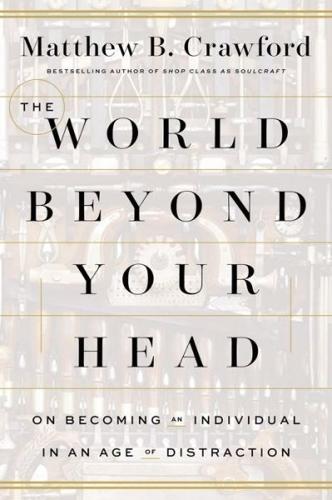
The World Beyond Your Head: On Becoming an Individual in an Age of Distraction
by
Matthew B. Crawford
Published 29 Mar 2015
If you have ever listened to the NPR show Car Talk and heard people mimicking the sounds their cars make when they are misbehaving in some way, then you have some idea of the role played by sound in our ongoing monitoring of our cars, which we become aware of only when there is a new sound, indicating a problem. 11. Then again, it is said that we live at the end of history, so maybe we needn’t fret about any of this. “In the future” (as Conan O’Brien used to say), we will be ferried around by Google’s self-driving cars, wearing Google Glass goggles and who knows what all. The goggles will give us something exciting to watch, like Grand Theft Auto, and we will be given a steering wheel that shakes realistically as we execute brilliant evasive maneuvers. We will make vroom vroom sounds with our mouths to preserve that “sense of involvement,” and arrive at our destination in a mood of triumph.
…
Sara (chimpanzee) Sartre, Jean-Paul SATs savings rate Schüll, Natasha Dow Schutz, Alfred Schweitzer, Albert science under communism scientific method scientific revolution screw transform seat belts secondary qualities Seeman, Axel self brain-centered perspective on cognitive extension and coherent in conflict with world consciousness and contingencies and in dismantling inherited cultural jigs environment and fantasy of unencumbered fragility of freedom of heteronomy vs. and inheritance of past maintaining of as result of historical polemics right vs. left politics and scientific method and situated statistical in West self-absorption self-awareness self-control self-criticism self-discipline self-doubt self-driving cars self-knowledge self-motion self-protection “Self-Reliance” (Emerson) self-responsibility self-sufficiency self-understanding Sennett, Richard sensorimotor contingency sensorimotor experience Seoul sequences Sesame Street sex, Kinsey Reports on sex addicts Sexual Behavior studies (Kinsey) Shapiro, Lawrence Sharon (gambler) Sheba (chimpanzee) Shop Class as Soulcraft (Crawford) short-order cooks background jig of jigging of environment by kitchen-self relationship of as “machine” silence, importance of Simmel, Georg situatedness situated self affordances and situation defining features of pragmatic criteria of propositional knowledge and role of risk in comprehending role of skill in comprehending 60 Minutes skateboarders, world-historical significance of skepticism skill acquisition of and perception of affordances skilled action, contingent facts in skilled practices see also specific skilled practices Sleeper (film) slot machines autoplay see also machine gambling smart technology Smith, Christian “smooth coping” social capital social engineering gambling addiction as nudging and social media social mobility social nature Socrates South Korea sovereign, relationship of citizens to sovereignty, absolute Soviet Union five-year plan in spatial categories speed, judgment and Spiegel, Bernt spontaneous encounters Springsteen, Bruce stackable self Stahl, Lesley state of nature steering head bearings stereotyping stimulation Stoicism stories Stowe, Doug Stradivari, Antonio subjectivism Kant and submission suicide Sunstein, Cass supermarket Supersizing the Mind (Clark) suppression of environment suspension Sweden symbolic representation tacit knowledge tactical flight suit Tagliapietra, Lino Tannenberg, David tannic acid tapered roll bearings taxes, taxation filing of gambling as Taylor, Charles Taylor, George reverse engineering by Taylor and Boody Tea Party technology automaticity and television children’s and orienting response in public spaces Terror (French Revolution) texting Thaler, Richard Thatcher, Margaret “thing in itself” things attention structured by encountering of thought Descartes’s belief in certainty of explicit thrift tipping Tocqueville, Alexis de toddlers mastery of body gained by will of “To Each His Own” (Fleming) tools totalitarianism Toyota recall (2008) toys agency and traction traders tradition as authority vs. self-responsibility traffic lights transvestites Trilling, Lionel truth as representation standard for TRW Turkle, Sherry Two Treatises of Government (Locke) United Kingdom United States apprenticeships criticized in belief in meritocracy of massification in science in social mobility in Upper Half of the Motorcycle, The (Spiegel) value ventilation systems Verizon Vico, Giambattista video gambling violins virtual reality virtual reel mapping, in slot machines virtual stops, in slot machines visual demand visual perception von Hebenstreit, Benedikt walking Wallace, David Foster walls, colored Wampole, Christy “war of all against all” (Hobbes) water wealth Weariness of the Self, The (Ehrenberg) Weber, Max weight lifting Weil, Simone welfare reform Whitman, Walt Who Owns the Future?
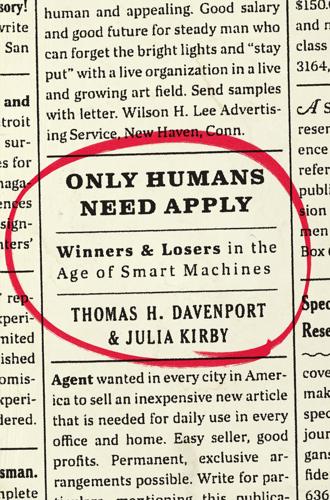
Only Humans Need Apply: Winners and Losers in the Age of Smart Machines
by
Thomas H. Davenport
and
Julia Kirby
Published 23 May 2016
Law, regulations, and union contracts can strictly limit a firm’s use of promising technologies—and even the sense that such rules might be imposed can put a damper on development. It’s important to note, however, that the same rules that constrain automation in your industry can end up serving you well, if your own strategy aims for augmentation. For example, developers of automated transportation solutions—think self-driving cars—face something between a thicket and a morass of regulations. Although it’s now pretty clear that the technical capabilities for driverless cars, trucks, and golf carts are already mastered or masterable, it’s not at all obvious when the regulatory structure will allow them on highways and fairways.
…
Plenty of people have pointed out that the laws are problematic, because social situations are complex. Legendary investor Warren Buffett, for example, raised a common question about autonomous vehicles during a forum hosted by the National Automobile Dealers Association. What if, he asked, a toddler runs into the street in front of a self-driving car, and the robot’s only option not to hit that child is to swerve into the path of an oncoming vehicle with four people in it? After that split-second decision is made and fatal accident results, said Buffett, “I am not sure who gets sued.” More deeply, “[I]t will be interesting to know who programs that computer and what their thoughts are about the values of human lives and things.”

Falter: Has the Human Game Begun to Play Itself Out?
by
Bill McKibben
Published 15 Apr 2019
It’s why Amazon knows the thing you want to buy next, and it’s how Siri sort of responds to your queries, and it’s why your new car knows to slow down if another car pulls in front of you. When the fully self-driving car finally arrives in your driveway, that will be weak AI to the max: thousands of sensors deployed to perform a specific task better than you can do it. You’ll be able to drink IPAs for hours at your local tavern, and the self-driving car will take you home—and it may well be able to recommend precisely which IPAs you’d like best. But it won’t be able to carry on an interesting discussion about whether this is the best course for your life.

Fixed: Why Personal Finance is Broken and How to Make it Work for Everyone
by
John Y. Campbell
and
Tarun Ramadorai
Published 25 Jul 2025
We live in a world where many people have given up their discretion over navigation when they drive to work, relying on the advice of automated navigation products such as Google Maps and Waze. Cars are easier to drive with the help of adaptive cruise control systems that maintain a desired speed subject to keeping a safe distance from vehicles ahead, and self-driving cars are already on the road in some cities. Why not do the same for financial products, cutting out the hardest decisions and aiming in the long run to build self-driving financial products? It may seem counterintuitive to suggest that consumers are best served by financial products that reduce their right to choose, but in this book we have discussed many problems that can be ameliorated with this approach.
…
Most obviously, technology lowers the fixed cost of providing small accounts to people of modest means, and thereby can lower the price of financial products for these people. It also makes it possible to design financial products that manage themselves rather than requiring continuous human oversight—the financial equivalent of self-driving cars. However, as we discussed in chapter 8, information technology is not capable of resolving the problems of the financial system on its own. While technology can be used to create simple, cheap, safe, and easy products, it can also be misused to create harmful products, such as smartphone apps that tempt investors into day-trading meme stocks.
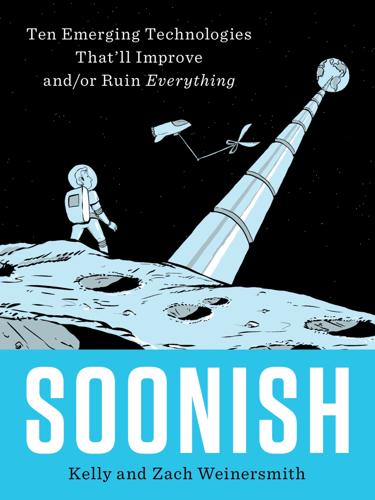
Soonish: Ten Emerging Technologies That'll Improve And/or Ruin Everything
by
Kelly Weinersmith
and
Zach Weinersmith
Published 16 Oct 2017
A very specific example—if you have a plane and you have programmable materials in the wings, you may not want to just give over total freedom to allow the wings to come up with solutions as you’re flying. There’s a lot of fear in terms of that space, like how do we ensure that? How do we guarantee that this is going to happen? What happens if there’s failure and the material’s at fault? Who’s blamed for it when you give agency to materials?” The field of self-driving cars is already dealing with the “Who’s at fault when a machine messes up?” question. But at least with cars, the space of possible problems is pretty limited. If thinking objects are ubiquitous, figuring out blame is going to be really complicated. There are some frightening military applications as well, depending on whether you’re the country with control of the programmable swarm or not.
…
Craig Venter Institute, 214–15 Jell-O, 298 Jell-O shots, 161 jet fuel, 209–10, 218 Jin, Yaochu, 122 joinery, 143–44 Joint BioEnergy Institute, 210 Joint European Torus (JET), 89 Josephson, Brian, 5–6 Josephson junction, 6 Jurassic Park (film), 222 Kazakhstan, 100 Keasling, Jay, 199 Keating, Steven, 146–48, 153, 155, 253 Kennedy, Philip, 315–17 Kevlar, 35 Khoshnevis, Behrokh, 145, 146, 147, 158 kidneys (organ), 280 Kilobot project, 115, 119 Kohler, Matthias, 152 Kurman, Melba, 159 Lake Chagan, 100 lasers, 2, 27–29, 84, 86–87 Law of the Sea, 33 leukemia, 238, 239, 242 Leuthardt, Eric, 303, 314–15 Levin, Gilbert, 334 levitation, 326–27 LiDAR, 174 life insurance, 250 LIFT (laser-induced forward transfer), 265–66 Limited Test Ban Treaty (LTBT), 99 Lipschultz, Bruce, 91–92, 93 Lipson, Hod, 159 Lipton, Jeffrey, 162 liquid hydrogen, 39 liquid oxygen, 20, 39 lithium, 77 LIT ROOM, 110–11 livers (organs), 257–59, 260–61, 280 lizards, 187 locked-in syndrome, 316 Lockheed Martin, 90 lossless power transmission, 325 Low Earth Orbit (LEO), 14, 15–16, 21, 34, 38 Lowther, William, 50 lung cancer, 238–40 lungs (organ), 261 Lyme disease, 255 lymphoma, 242 McAlpine, Michael, 271 McCracken, Garry, 77 Magee, John Gillespie, Jr., 13 “magic book,” 176 MagLIF (Magnetized Liner Inertial Fusion) project, 87–88 “magnetic confinement”-type reactors, 85 magnetic levitation (MagLev) trains, 24–25, 30, 327 magnetosphere, 59 magnets, 5 MakerBot, 162 malaria, 198–203, 207 mammoth genome, 222–24 Mankins, John, 320 marble, 144 marching bands, 119–20 Mars, 19, 40, 45n, 52, 55, 158–59 Mars One project, 45n Masiello, Carrie, 210–11 Massachusetts General Hospital, 242 Massachusetts Institute of Technology (MIT), 102, 103, 104, 106, 107n, 108, 214, 216 Mediated Matter lab at, 146 Plasma Science and Fusion Center at, 91 matching markets, 275–81 Matthews, Kirstin, 250 Maus, Marcela, 242–43 Max Planck Institute for Infection Biology, 212 µBiome, 2 M-blocks, 118 MD Anderson Cancer Center, 232, 234 Mediated Matter lab, 146 medical tourism, 272 medical trials, 254–55, 268–69 medicine, 221 augmented reality in, 179, 185–86 bioprinting and, see bioprinting origami robots in, 106–7 programmable matter in, 127–28 synthetic biology in, 198–207 see also precision medicine Meetup.com, 175, 179 MEG (magnetoencephalography), 289–90, 291 Meissner effect, 326 meltdown, 91–92 memory, 220, 304, 307–8, 311 Mendelsohn, John, 232, 234 Meng, Yan, 122 Menges, Achim, 104 Menon, Sandeep, 235 messenger RNA, 193 metabolome, 244–46 meteorites, 53, 67 Michigan Array, 296, 298 microRNA, 239–40, 246–47 Microsoft, 272 Miller, Jordan, 261, 269, 270–71, 274 miniaturization, 176 “Minibuilders,” 151–52 miRBase, 240 mirror humans, 332–35 MIT Technology Review, 6n molds, configurable, 134 molecular scissors, 212, 213–14 molecules, mirror, 334 monogenic traits, 196–97 mononucleosis, 230 moon, 55 moon landing, 19 moral hazard, 273–74 Moravec’s Paradox, 139 mosquitoes, 200, 203, 218 Mossad, 50 motion sickness, 168 movies, 183 MRI (magnetic resonance imaging), 290–91 M-type (metal) asteroids, 53, 54 mucociliary escalator, 187–88 mucus, 236 Mukhopadhyay, Aindrila, 210 multiverse, 329 Munger, Steven, 334–35 Musk, Elon, 19 mutation breeding, 191–92 mutations, 219, 236–37 Mycoplasma genitalium, 214–15 Mycoplasma laboratorium, 215 Mycoplasma mycoides, 215n Nagasaki bombing, 98 nano-bio-machines, 3 nanobots, 118 nanotechnology, 221 NASA Innovative Advanced Concepts (NIAC), 25, 31, 35 nasal cycle, 186–89 nasal venous sinusoids, 188 NASA (National Aeronautics and Space Administration), 20, 47, 60, 65, 92, 158, 159–60 National Academy of Sciences, 203 National Cancer Institute, 238 National Defence Department, Canada, 47 National Ignition Facility (NIF), 86–87 National Institutes of Health, 214, 234, 235 Native Americans, 196n natural gas, 73, 98–99 Nebraska, University of, 176 Neufert, Ernst, 135 neural dust, 299 neural implants, 310 Neurobridge, 312 neuro-cyber-connection, 312–13 neurons, 286–87, 290, 298, 306 EEGs and, 287–90 NeuroPace, 302 neuroprosthetics, 311, 315, 322, 324 neurotrophic electrodes, 297–98, 315, 316 Neutron Club, 80 neutron gun, 80–81 neutrons, 73, 91 New Jersey, 299 New Mexico, 96 nickel, 54 Nocera, Dan, 208 North Carolina State University, 63 Norway, 22n nostrils, 186–89 Nuclear Explosions for the National Economy, 100 nuclear reactors, 58 Nucleon (concept car design), 97 nucleus, 192, 193 nutrition, 245–46 Olestra, 334 Oliver, John, 326n Open Humans Foundation, 252n “optical mining,” 63 orbiting factory, 24 organ donation, 257n organ markets, 274, 275–81 Organovo, 268 organ rejections, 275 organ sales, 258, 280–81 organ transplant list, 257–58, 272 organ transplants, 206–7 origami robots, 105–8, 129 OSIRIS-REx, 65 “Our Friend the Atom” (Disney cartoon), 97 Outer Space Treaty (1967), 63–64 oxidizer, 20 Oxman, Neri, 146, 148 oxygen, 208–9 oxygen deprivation, 205 oxygen gas, 82 Pacific Ocean, 35–36 Paddon, Chris, 199 Palo Alto Research Center, 116 Panama Canal, 97 pancreas, 236 parallel universe, 329 paralysis, 312 Parkinson’s disease, 301 patenting, 124 patent law, 272 peacekeepers, 181 Pennsylvania, University of, 108 Personal Genome Project, 252–53 personal security, 124–25 PERVs, 207 pesticides, 200 Petersen, Kirstin, 149, 150–51 Pfizer, 235 phobias, 179 Phobos (moon of Mars), 55 phosphenes, 306 photosynthesis, 208 Picon, Antoine, 138 pigs, 206 Piraha (Amazonian tribe), 140n Pitt, Brad, 167 Plait, Phil, 36, 38 plants, 125 Chinese sweet wormwood, 198–99 plasma, 85, 88 Plasma Science and Fusion Center, 91 platinum, 52, 55 pluripotent stem cells, 273 plutonium, 58 pogo sticks, 27 Pokémon GO, 8n, 166, 182–83 pollution, 94 porcine endogenous retroviruses (PERVs), 207 positive transcriptional autoregulation, 205n potassium iodide pills, 60 poverty, 157 precision medicine, 229–56 benefits of, 254–56 cancer diagnosis, treatment, and monitoring in, 238–44 concerns about, 248–53 data collection in, 234–35 genetic disorders and, 235–37 metabolome and, 244–46 privacy issues in, 248, 250–53 Precision Medicine Initiative Cohort Program, 234 predictive ability, 1–2 Princeton University, 142, 271 privacy issues, 130, 182, 248 of AR, 180–81 in brain-computer interfaces, 309–10 in precision medicine, 248, 250–53 programmable matter, 101–32 benefits of, 125–29 computers as, 101 concerns about, 122–25 in everyday life, 105 hacking of, 122–23 military applications of, 123–24 origami robots as, 105–8 power for, 118 reconfigurable houses and, 109–11 see also robots programmed materials, 103–5 Project Babylon, 48–49 Project Esper, 185 Project HARP (High Altitude Research Project), 47, 48 Project Plowshare, 96–100 Project Rulison, 98 Promobot, 129 Promobot IR77, 129 propellants, 14–15, 18, 20, 23 prostate cancers, 239n, 247 prosthetics, advanced, 322–24 proteins, 193, 194, 195, 221, 234, 239, 332 protium, 73 protons, 73, 77 Pryor, Richard, 328n QR code, 169–71 quantum computing, 328–30 quantum mechanics, 329, 330 Quinn, Roger, 151n radiation, 59–60, 62, 99 radiation therapy, 241 radioactive waste, 91 railgun, electromagnetic, 24–25 ramjet, 21, 22, 26 Reaction Engines, 22 Recognizer, 180 Reconfigurable House exhibit, 111 recycled fecal matter, 160 recycling, 128 Reece, Andrew, 247 refining, 56 refrigeration, 4 “Registry of Standard Biology Parts,” 216 Reichert, Steffen, 104 Reiss, Louise and Eric, 99 RepRap, 269–70 “repugnance,” in markets, 276 reuse, 128 ribosome, 193–94, 195 Rice University, 200n, 210, 250, 261 rigid airship, 29–30 Ringeisen, Bradley, 259 RNA, 193–94, 195, 332 RNS System, 302 Robinette, Paul, 130 Robot Baby Project, 120n robotic construction, 134–63 benefits of, 156–59 concerns about, 153–56 and space travel, 158–59 swarm robots in, 149–53 3D printing for, 144–49 robots, 102, 129–32 autonomous, 113–16 as construction workers, 139–44 coordinating movement of many, 119–22 evolving of, 120–22 generalization in, 142 industrial, 136 in medicine, 127–28 modular, 112–16 neuroprosthetics and, 311 origami, 105–8, 129 termite-inspired, 150–51 see also programmable matter rocket launches, 3 rockets, 23, 39 air-breathing, 19–24 aircraft-launched, 29–30 cost of, 14 laser ignition for, 27–29 propellant for, 14–15, 18, 20, 23 reusable, 14, 15, 18–19, 39 simplicity of, 22 stages of, 18n rocket sled, 25, 26 rockoon, 29 rod from God, 38 roller coaster, 23, 42 Romanishin, John, 118 Roombots, 112–13, 121, 127 Roth, Alvin, 276, 277, 279, 280 “Ruby Red” grapefruit, 192 Rus, Daniela, 106–7, 108, 118, 128 Russia, 67, 99, 217n SABRE (Synergetic Air-Breathing Rocket Engine), 22 Saddest Generation, 166 Safe Is Not an Option: Overcoming the Futile Obsession with Getting Everyone Back Alive That Is Killing Our Expansion into Space (Simberg), 44 Sahara Desert, 321 SAM (robot), 141, 142, 153–54 Sandia Labs, 85, 87 San Francisco, Calif., 154 sanitation, 157 satellites, 20, 34, 41, 47 Schalk, Gerwin, 313 Schall, Gerhard, 177 Schrödinger’s cat, 329 Schrödinger’s Killer App (Dowling), 330n Schwenk, Kurt, 187 See No Evil, Hear No Evil (film), 328n seizures, 300, 301, 302 Select Sires, Incorporated, 197n self-driving cars, 123 Sensorama, 168 Shapiro, Beth, 222, 223–24 Shotwell, Gwynne, 19 Shtetl-Optimized (blog), 330n Siberia, 224 sickle cell amenia, 237 Silberg, Joff, 210–11, 218–19 silicon, 52, 54 Silver, Pamela, 204, 205–6, 208–10, 219 Simberg, Rand, 44 Skylon, 22 Skype, 314 Skywalker, Luke (char.), 324 Slingatron, 25–26 slums, 157 smallpox, 216, 217 Smart Helmet, 179 “smart homes,” 111 smartphones, 169 smell, sense of, 174–75, 186–89, 334 Smith, Noah, 153n, 154 snakes, 187 social media, 248, 250 privacy issues of, 180–81 software, 102, 104–5, 124 hacking of, 122 solar flares, 60 solar panels, 58 cost of, 320 solar photovoltaic cells, 92, 208 solar power, space-based, 319–21 solar wind, 37 Solid Freeform Fabrication Symposium, 162 solid rocket boosters, 39 solid tumors, 238, 240–41 Solomon, Scott, 200n sound, speed of, 21 South Africa, 48 Southern California, University of, 145, 308 Soviet Union, 38, 58, 99, 100, 135 space cannon, 23–26 space debris, 39–40 space elevators, 31–38, 39, 41, 42–43, 314, 320 spaceflight, 13–50 air-breathing rockets and spaceplanes for, 19–24 benefits of, 41–45 concerns about, 38–40 cost of, 41, 44–45 present cost of, 13–14 reusable rockets for, 18–19 space elevators and tethers for, 31–38 starting at high altitude, 29–30 spaceplanes, 19–24, 39 space settlements, 40 Space Shuttle, U.S., 18, 39 space tethers, 31–38 space tourism, 42 space travel: fusion energy in, 94 supergun for, 23–26 SpaceX, 8n, 18–19, 30 spatial resolution, 288, 289, 292–93 spearmint, 334 spinal damage, 312 Sputnik, 39 SR-71 spy plane, 21 Starbucks, 180 Star Trek franchise, 34, 86 Star Wars franchise, 78n, 82, 263 steam turbine, 76 stem cells, 263, 272–73 Stevens Institute of Technology, 92, 122 STL-file, 267 storytelling, 178 stratospheric spaceport, 29–30 straw, reconfigurable, 103–4 stress, 246 stroke, 247 strong nuclear force, 77 strontium-90 (Sr-90), 99 Stuttgart, University of, 104, 143 S-type (stony) asteroids, 53, 54 sugar molecules, 210 sugar sintering, 270–71 sun, 59, 78 Sung, Cynthia, 108, 119, 127 superconducting levitation, 326–27 superconducting quantum interference device (SQUID), 4, 6, 290 superconductors, 4–6 room-temperature, 325–28 supergun, 46–50 supersonic ramjet (“scramjet”), 21–22, 26, 126 Sure Shot Cattle Company, 197n surgery, 185–86 Surrey, University of, 122 swarm bots, 119–20, 121–22 SWARMORPH project, 113–15 swarm robots, 149–53 switchgrass, 209–10 Switzerland, 22n SYMBRION, 115 Syn 3.0, 215 synthetic biology, 190–225 benefits of, 220–21 concerns about, 216–19 environmental monitoring by, 210–12 fuel production by, 208–10 generalizing of, 212–14 grassroots approach to, 216 “Synthetic Biology for Recycling Human Waste into Food, Nutraceuticals, and Materials: Closing the Loop for Long-Term Space Travel” project, 160 synthetic materials, 101–2 syphilis, 230n Syria, 156 Systems & Materials Research Consultancy, 159 T cells, 242–43 technology, 3–4 asteroid-moving, 67 contingent nature of development of, 3–7 discontinuous leaps in, 2 Telegraph, 183 Teller, Edward, 98 temporal resolution, 288, 292–93 Terminator (film), 103 termites, 120, 149, 150–51 terrorism, 36, 38, 217 Tethers Unlimited, 63 tetracycline, 200 theft, 130 3D printers, 144–49, 151–52, 259 prosthetics and, 322 3D printing, 125, 152 of food, 159–63 of organs, see bioprinting software for, 267 3554 Amun, 53 Throw Trucks with Your Mind (game), 312 thyroid, 60 Tibbits, Skylar, 103–5, 118, 123, 126 titanium, 35 “tokamak” configuration, 88, 92 tornados, 25 touch, sense of, 175 Tourette’s syndrome, 301 transcranial magnetic stimulation, 302, 304 transfer RNA, 193–94, 195 Transformers series, 102 The Tree of Life (Web site), 234n tritium, 74, 77n, 91 tumor cells, 205 tumors, 290 “Tunable Protein Piston That Breaks Membranes to Release Encapsulated Cargo, A” (Silver, et al.), 206 “Tunguska event” (1908), 67 turbofan engine, 20–21, 22 Turner, Ron, 35, 36, 37 23andMe, 251, 252 Twitter, 20n, 187, 250 Two and a Half Men (TV show), 310 Type II superconductors, 326 Umbrellium (Haque Design + Research), 111 Underground Railroad, 178 UN-Habitat, 157 Unilateral Forced Nostril Breathing (UFNB), 189 United Nations, 96 United States, 39, 135–36 Universal Semen Sales, Inc., 197n uranium, 58 U.S.
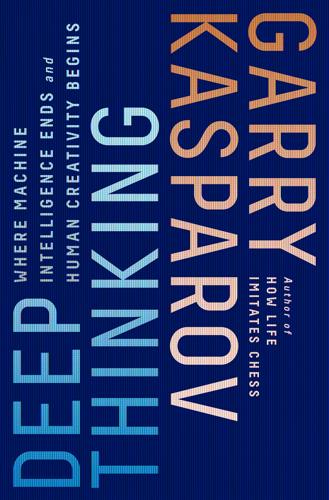
Deep Thinking: Where Machine Intelligence Ends and Human Creativity Begins
by
Garry Kasparov
Published 1 May 2017
This growth of machines from chess beginners to Grandmasters is also a progression that is being repeated by countless AI projects around the world. AI products tend to evolve from laughably weak to interesting but feeble, then to artificial but useful, and finally to transcendent and superior to human. We see this path with speech recognition and speech synthesis, with self-driving cars and trucks, and with virtual assistants like Apple’s Siri. There is always a tipping point at which they go from amusing diversions to essential tools. Then there comes another shift, when a tool becomes something more, something more powerful than even its creators had in mind. Often this is the result of a combining of technologies over time, as in the case of the Internet, which is really a half-dozen different layers of technology working together.
…
DARPA never completely gave up on AI, and even had room in its budget for a little chess. If you check the fine print of the scholarly papers on Hans Berliner’s machine HiTech at Carnegie Mellon, you can see it was partly funded by a DARPA grant in the 1980s. More recently, DARPA has funded contests for self-driving cars and other “practical AI” tech. Using the development of chess machines as a model, DARPA has proposed tournament competitions to develop autonomous network defense. In true Darwinian fashion, focusing on competition over basic research was bad for true AI, but very good at producing better and better chess machines.

The Raging 2020s: Companies, Countries, People - and the Fight for Our Future
by
Alec Ross
Published 13 Sep 2021
For instance, when Google received €3.96 from the Ascani family, it likely would have avoided paying a dime to the Italian government. As soon as the transaction was completed, that money departed the country. The payment did not go directly to Google LLC, the corporation headquartered in Silicon Valley, nor to Alphabet Inc., the company that owns Google and its various side projects for self-driving cars, drone delivery, biotechnology, and the like. Instead, the Ascanis’ €3.96 worked its way through a chain of corporate entities scattered across three different countries, none of which played any role in getting Marco his belt. The reason Google and other multinational firms shuffle their money around the map in this way is to minimize their taxes, allowing them to generate billions of dollars from customers around the globe without giving a cut to the countries where they do business.
…
But artificial intelligence is a general-purpose technology with both national security applications and completely benign commercial uses. A computer vision algorithm can be trained to spot enemy combatants on a battlefield, but it can also be used to tag friends in social media posts and power self-driving cars. AI takes on the values and intentions of its human masters. The same AI-enabled facial recognition technology that can identify known terrorism suspects can just as easily profile and track members of an ethnic minority. The technology is also imperfect. The accuracy of artificial intelligence depends on the quality of the data used to train it, and it is not always clear how the software reaches a particular conclusion.
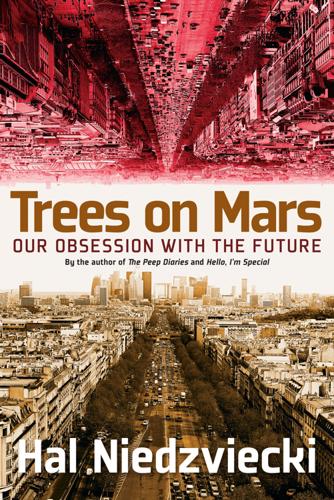
Trees on Mars: Our Obsession With the Future
by
Hal Niedzviecki
Published 15 Mar 2015
Adam Fisher, “Google’s Road Map to Global Domination,” The New York Times, December 11, 2013, sec. Magazine, http://www.nytimes.com/2013/12/15/magazine/googles-plan-for-global-domination-dont-ask-why-ask-where.html. 20. Alexis C. Madrigal, “The Trick That Makes Google’s Self-Driving Cars Work,” The Atlantic, May 15, 2014, http://www.theatlantic.com/technology/archive/2014/05/all-the-world-a-track-the-trick-that-makes-googles-self-driving-cars-work/370871/. 21. Mayer-Scho¨nberger and Cukier, Big Data, 57. 22. “The Pregnancy Is Gone, but the Promotions Keep Coming,” Motherlode Blog, accessed February 4, 2014, http://parenting.blogs.nytimes.com/2014/02/02/the-pregnancy-is-gone-but-the-promotions-keep-coming/. 23.

Zucked: Waking Up to the Facebook Catastrophe
by
Roger McNamee
Published 1 Jan 2019
What I have in mind is an independent company that represents the interest of users at login, providing the minimum information required for each transaction. With each new generation of technology, entrepreneurs and engineers have an opportunity to profit from designing products that serve rather than exploit the needs of their users. Virtual reality, artificial intelligence, self-driving cars, and the Internet of Things (IoT)—smart speakers and web-enabled televisions, automobiles, and appliances—all present opportunities to create bicycles for the mind. Unfortunately, I see no evidence yet that the designers in those categories are thinking that way. The term you hear instead is “Big Data,” which is code for extracting value rather than creating it.
…
The platforms have been able to acquire promising startups in adjacent categories—as Facebook had done with Instagram and WhatsApp—converting potential competitors into extensions of their monopoly. In addition, Facebook and Google have gotten footholds in many promising new categories—ranging from virtual reality to AI to self-driving cars—in their pre-market stages. Engagement by the platforms has validated new categories, but in all probability, it has also distorted them, changing the incentives for market participants. It is hard to imagine that Facebook’s purchase of and commitment to the Oculus virtual-reality platform did not discourage investment in alternative hardware platforms.
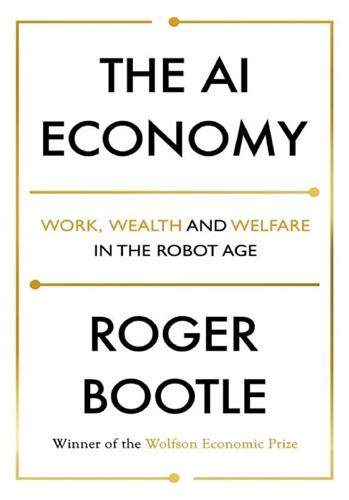
The AI Economy: Work, Wealth and Welfare in the Robot Age
by
Roger Bootle
Published 4 Sep 2019
The state of California has recently approved new rules allowing driverless cars to operate without a human driver sitting behind the wheel. In the UK the Chancellor of the Exchequer, Philip Hammond, told the BBC that he aimed to have “fully driverless cars” in use by 2021. About 50 companies, including Alphabet, Apple, Ford, GM, Toyota, and Uber, are already testing self-driving cars in California. Indeed, more than a hundred trials of autonomous vehicles are currently taking place around the world. Moreover, according to the companies developing them, the performance of self-driven cars is already impressive and is improving all the time. All these companies have invested huge sums and clearly believe that driverless vehicles are the future.
…
A more serious test would be to put these cars through their paces in London, Moscow, or Istanbul – in February. The degree of human intervention Legislators, courts, and insurance companies are having to deal with some very tricky issues created by driverless vehicles. Under new UK legislation, drivers of self-driving cars must not take their hands off the wheel for more than a minute. And in April 2018 a motorist was banned from driving after being caught on the M1 motorway in the passenger seat, with the driving seat vacant as the AI “drove” the car.10 The British government is planning to scrap the requirement for a “safety driver” to enable advanced trials on public roads of fully automated vehicles by the end of 2019.

The Measure of Progress: Counting What Really Matters
by
Diane Coyle
Published 15 Apr 2025
There w ill be general equilibrium effects too, through accountancy and legal services as an intermediate input to other sectors, 68 Ch a pter T wo Table 2.2. A Time-Based Approach to Productivity Market production Home production Leisure/consumption Routine Routine manufacturing Cleaning, driving; Daily run, personal Routine services, e.g., domestic robots, care, eating (largely payroll processing, self-driving cars may non-automatable checkouts, tax preparation automate some because inalienable although some market purchases possible, e.g., nail bars, hairdryers) Non-routine Medicine, legal, consultancy; Cooking, gardening (may Cooking, gardening elements of these also be purchased in (inherently becoming routinised the market) enjoyable for some by technology Creative activities, e.g., people) Travel agency, banking; vlogs, open-source Creative activities, increasingly moving into software (some p eople e.g., vlogs, open- online home production will seek to monetise source software Non-routine manufacturing these) (done for Car repair, driving, plumbing, Car repair, driving, enjoyment) decorating; technology plumbing, decorating Theatre, concerts, automating some (may also be purchased sport, socialising, elements in the market) eating out Source: Author’s own.
…
So, for that m atter, is innovation for the h ousehold: the late, g reat Hans Rosling gave a marvellous 2010 TED Talk about the importance of the washing machine for economic development, but this rarely features in lists of great tech innovations.1 Perhaps failing to account for what happens in the household helps explain why Silicon Valley focuses on self-driving cars and cryptocurrencies rather than ironing and cleaning robotics. One reason for this may be the absence of regular economic statistics pointing to the potential scope of this market; time-use data are infrequently collected and not sufficiently detailed, although statistical agencies are improving this (Bridgman 2016).
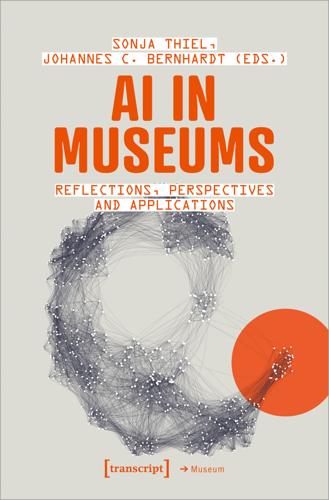
AI in Museums: Reflections, Perspectives and Applications
by
Sonja Thiel
and
Johannes C. Bernhardt
Published 31 Dec 2023
This chapter argues that museums should also engage in a broader conversation about the power and impact of these digital tools and products, and outlines three models or frameworks that can be used to help development teams think about the impact these technologies have on visitors, as well as on the data, archives, and collections that museums hold as public institutions. The focus of the discussion will thus be on museums as public institutions and their role in shaping how visitors experience digitally mediated worlds. Narratives and Practice We quite often think of digital innovation in connection with self-driving cars and robots, but when it comes to AI in particular, we find contradictory narratives of voice assistants and robot housekeepers helping improve our lives, alongside dystopian narratives of totalitarian robot states, where lives are controlled by faceless machines (Fry 2018). Both narratives serve as helpful outliers, a framing through which to examine how we want to use these technologies now and in the future.
…
Some researchers prefer the term machine learning and avoid speaking of artificial intelligence (Zweig 2019), but that does not seem to resolve the issue, but rather to shift it to yet another concept that is hard to define. For the development of and need for ethical frameworks, it therefore seems obvious that different ethical frameworks are needed for different applications—a self-driving car calls for other ethical guidelines than addiction-inducing social media algorithms or a facial recognition system used by police forces. It therefore seems necessary to find strategic approaches based on the perspective from which one would like to approach the subject, particularly regarding the actual field of application of AI technologies in the museum context.

Valley of Genius: The Uncensored History of Silicon Valley (As Told by the Hackers, Founders, and Freaks Who Made It Boom)
by
Adam Fisher
Published 9 Jul 2018
Steve Wozniak: Science fiction leads to real products, but first you’ve got to deal with the laws of physics, and ask, “What’s it going to cost?” John Giannandrea: I’m fond of this book by Arthur C. Clarke, Profiles of the Future. He splits the book into two sections. One section is things that will happen, like self-driving cars. The other is things that will be surprising if it happens, like time travel. And the thing is the kind of people who worked at General Magic or Netscape would be like, “Show me the technical detail that makes this possible—and sign me up!” John Battelle: They were these really smart engineering types who had nonstandard political views.
…
It’s not that it’s going to be humanlike but faster. It’s an alien intelligence—and that turns out to be its chief benefit. The reason why we employ an AI to drive our cars is because they’re not driving it like humans. Jim Clark: It’s bound to happen, the robotic driving of cars. Nolan Bushnell: Self-driving cars are going to change everything and help cities to literally become gardens because streets, in some ways, kind of go away. Jaron Lanier: Once we have automated transportation you might stop thinking about home in the same way. The idea is that everybody would be in self-driving RVs forever, so there would just be like this constant streaming of people living a mobile lifestyle going from here to there all over the world.
…
That could actually be really nice, because what we do these days is we spend hours a day moving kids around from this lesson to that school to this soccer thing or whatever and it’s kind of an insane way to live. That makes no sense to anybody. And so I could imagine something that’s actually pretty nice coming together. I like that vision a lot. Scott Hassan: I like the concept of self-driving cars, but I worry that our legal system can’t really handle them. The problem with autonomous cars is that it’s the manufacturer who is driving that car. Kevin Kelly: Humans should not be allowed to drive! We’re just terrible drivers. In the last twelve months humans killed one million other humans driving.

Four Futures: Life After Capitalism
by
Peter Frase
Published 10 Mar 2015
But only recently have they begun to challenge the areas in which humans excel: fine-grained motor skills and the navigation of a complex physical terrain. The US Department of Defense is now developing computer-controlled sewing machines so as to avoid sourcing its uniforms from China.9 Until just the past few years, self-driving cars were regarded as well beyond the scope of our technical ability. Now the combination of sensor technology and comprehensive map databases is making it a reality in such projects as the Google self-driving fleet. Meanwhile a company called Locus Robotics has launched a robot that can process orders in giant warehouses, potentially replacing the workers for Amazon and other companies who currently toil in often brutal conditions.10 Automation continues to proceed even in agriculture, which once consumed the largest share of human labor but now makes up a tiny fraction of employment, especially in the United States and other rich countries.

Korea--Culture Smart!
by
Culture Smart!
Published 15 Jun 201
Once within North Korea, foreigners with Korean hosts are likely to find that they are kept on a tight rein. Those responsible for you take their duties very seriously and will often refuse to let you out of their sight. International driver’s licenses are not accepted and there are no facilities for self-drive cars. Only resident foreigners who have taken a local driving test can drive; heads of international organizations and diplomatic missions are exempt from taking the test as long as they can produce a valid driver’s license. There are rental cars outside hotels and some shops. However, unless a Korean accompanies you, these may well refuse to take you.

Platform Revolution: How Networked Markets Are Transforming the Economy--And How to Make Them Work for You
by
Sangeet Paul Choudary
,
Marshall W. van Alstyne
and
Geoffrey G. Parker
Published 27 Mar 2016
Even more remarkably, the changes that Uber has already brought are probably just the opening salvo in a barrage of further disruptions that may ultimately transform the entire transportation sector. Combining the platform model with another technology that is rapidly moving from the drawing board to the showroom—the self-driving car—will improve Uber’s already stellar economic model and could lead to a series of cascading impacts that extend beyond the taxi industry. One futurist foresees a time when millions of people will eschew car ownership altogether, instead relying on an instantly deployable fleet of driverless Uber vehicles to take them wherever they want to go at a cost of around fifty cents per mile.
…
P., 245–46 rate of conversion to sale, 197 ratings, 157–58, 265 razors-and-blades strategy, 109–10 Real Audio, 222 real estate market, 9, 12, 62, 124, 237, 277, 282 RealNetworks, 222 real-time processing, 247, 252–53 recipients, 100, 101, 104, 105 recruiters, 50, 51, 119, 218–19 redBus, 73, 95 Reddit, 5, 36, 47, 93, 173 Regulation 2.0, 253–56 regulatory capture, 235–37, 257 RelayRides, 9, 10, 67, 230 research and development (R & D), 14, 33, 275 reservations, 8–9, 90, 95, 101, 137, 142, 194 resources: allocation of, 6, 15, 70–71, 199, 200, 298–99 control of, 208–9, 212, 227 intensive use of, 263–64, 278, 289 model based on, 208–10, 213, 216 restaurants, 36, 37, 76, 90, 91, 95, 101, 113, 120, 142, 170, 194, 259 retail industry, 12, 63, 77, 82–83, 85, 89, 111, 123–24, 141, 145, 157–58, 204–7, 240–49, 251, 264 revenue grabs, 121, 157–58 rewards (incentives), 82, 101, 102, 166, 173–74, 182, 227 R/GA, 76 ride-sharing services, 2, 9, 12, 16–18, 25, 30, 36, 37, 49–50, 60–62, 67, 115, 175, 190, 227, 231, 233, 250–54, 258–59, 264, 278, 287, 297 Ries, Eric, 199, 201–2 Rifkin, Jeremy, 286 Roman military campaigns, 183, 237 Roth, Alvin, 164, 171 royalties, 72, 122 Rudder, Christian, 26–27 Sacks, David, 17, 18 Safaricom, 277–78 safety net, 280–81, 288 Saks Fifth Avenue, 275 sales conversion rate, 191–92 Salesforce, x, 55, 145, 245–46, 267 sales forces, 42–44, 73–74, 91, 125, 145 sales tax, 248–49 same-side effects, 29–32, 34, 298 Samsung, xi, 86, 137, 270–71, 295 San Francisco, 1–2, 18, 61, 233, 278, 281–83 SAP, vii, x, 155, 173–75, 216, 219, 241 scrapers (automated software), 91–92, 107 search engine optimization, 120–21, 145, 191, 297 search engines, 24–25, 40, 120–21, 145, 190, 191, 197–98, 215, 216, 242, 297 Sears, Roebuck, 207 seeding strategy, 18, 92–93, 105 self-driving cars, 62 self-governance, 176–80, 182, 246, 253–56 self-serve advertising, 131, 133–34 semiconductor industry, 225 senders, 100, 101–2, 105 sensor data, 246, 286 service interfaces, 176–78, 221 Shapiro, Carl, 19, 240–41 shared model, 137, 138, 140–41, 154–55 shareholders, 11, 164 sharing economy, 10, 298–99 Shleifer, Andrei, 236–37, 238 shopping malls, 123–24 ShopRunner, 206–7 ShopThis!
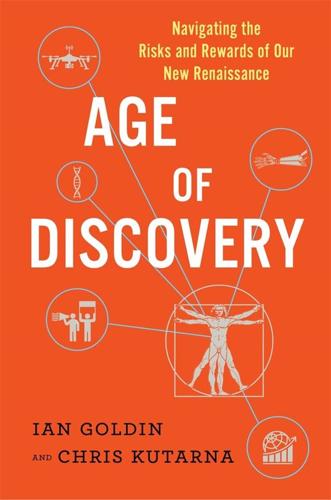
Age of Discovery: Navigating the Risks and Rewards of Our New Renaissance
by
Ian Goldin
and
Chris Kutarna
Published 23 May 2016
Now is the time to turn the tap back on, and get a leg up on over-cautious competitors who lack your insight into the bigger picture. Companies and entrepreneurs that are showing the way include: IBM, which in 2014 announced a five-year plan to bet 10 percent of its net income on post-silicon computer chips;30 Google (Alphabet), whose recent long-term bets include a new quantum artificial intelligence lab, self-driving cars and research into anti-aging drugs;31 and Elon Musk, a co-founder of PayPal whose moon shots include SpaceX (a space transport firm whose eventual goal is to colonize Mars) and Tesla (whose diverse aims include the mass-market adoption of electric cars, household battery packs to store renewable energy, and a 600-mile-per-hour hyperloop to transport people between Los Angeles and San Francisco).
…
See also trade Free Trade Area of the Association of Southeast Asian Nations (ASEAN), 25 Galaxy Zoo, 148 Galileo Galilei, 107, 134, 237 Gates, Bill, 36 Gemma, Reinerus, 61 genetics gene therapy, 119–20, 158 genome sequencing costs, 117 history of, 114 Human Genome Project, 117, 238 and paradigm shifts, 114–21, 129–31 and race, 236–7 synthetic biology, 120 and technology, 116–21, 129–31, 148, 161, 165, 183 genius challenges of, 163–8 collective genius, 132–9 and contact points, 137–9 and courage, 242–3 and diversity, 238 and doubt, 150–5 and economic data, 155–6 and education, 135, 263–6 embracing, 238–45 and failure, 240–2 and fast-flowing ideas, 134–9 formula for flourishing, 132 and hope, 155–63 impacts of, 155–9 mitigating risk, 251–2 and new maps, 251–2 and patronage, 239–51 and place, 245–51 and policy, 243–5, 259–62 and risk-taking, 135–6 and technology, 136–7 and virtue, 256–66 See also paradigm shifts al-Ghazali, 69 GitHub, 35 Giving Pledge, 262 globalization, 5, 195, 219, 231, 259 Google search trends, 5 Google (Alphabet), 59, 198 cloud storage, 33 Google Translate, 146 high-altitude balloons, 96 Quantum Artificial Intelligence Lab, 126, 243 search engine, 156, 159 self-driving car, 167, 243 Gorbachev, Mikhail, 21–2 Gordon, Robert, 151 Grove, Andy, 157 Guicciardini, Francesco, 164 gunpowder, 2, 10, 19, 60, 74, 164, 168, 194 Gutenberg, Johann, 1, 7, 11, 25–6, 39, 80, 133–4, 136, 143, 150, 156, 167, 229 Gutenberg moment, 30–3, 35 Hanny’s Voorwerp, 148 Hawking, Stephen, 141, 156 health and medicine aging, 7, 113, 119, 153, 162 child mortality, 84, 119 genetics, 114–21, 129–31, 148, 153, 157, 161, 163, 165, 183, 236–7 life expectancy, 4, 7, 76, 82, 84, 88, 101, 153, 158 life expectancy at birth vs.

Radicals Chasing Utopia: Inside the Rogue Movements Trying to Change the World
by
Jamie Bartlett
Published 12 Jun 2017
Elon Musk, the billionaire Silicon Valley entrepreneur, declared AI to be comparable to summoning the Devil and donated $10 million to research to make sure the super-machines of the future will be kind to us. Stephen Hawking said ‘the development of artificial intelligence could spell the end of the human race.’ Either way, and of more immediate concern, AI—or the ability of machines to replicate human decision-making—could leave millions without jobs.29 Google’s self-driving cars will replace drivers, drones will replace warehouse workers, machine-learning algorithms will undertake some (although not all) the work of lawyers and doctors. What will we do if half the population—especially the middle class tax payers—are laid off work? Of course, workforces change, and it’s also possible that the gains of AI-produced wealth are distributed fairly amongst populations and free up people from repetitive tasks for more exciting and fulfilling roles.
…
See Radio Frequency Identification Richards, Bill, 106 right wing, 309 See also far right Robinson, Tommy, 49, 50, 56–60, 76, 79–80 arrests of, 87 demonstration in Copenhagen led by, 67–70 EDL started by, 53–54, 161 home town context for attitudes of, 77–78 Muslim stories framed by, 72–74 Muslim taxi driver and, 82 after Pegida-UK failure, 91 Pegida-UK leadership and, 61–66 police attitude toward, 87–88 speech in Copenhagen, 74 violent past of, 61–62 robots, 18, 29 Rohic, Milan, 56, 57–61, 88 Rome, Italy, female mayor of, 174 Rothery, Tina Louise, 255–258, 262, 263 roulette, 9–10, 14 Rousseau, 180 Russia, 311 Sabir, Rizwaan, 136–137 Safeguarding Children Board, 138 Sanders, Bernie, 178–179, 306 science regenerative, 33 transhumanism and, 31–32 Science for the Masses, 26 secret service, 283 self-driving cars, 36 self-focusing, 22 Serbia Croatian war of independence from, 269 Gornja Siga and, 267 serotonin, psilocybin mimicking of, 118 Sharia Watch, 62 Sharp, Mark, 78 Shirky, Clay, 160 Sinclair, David, 32 Slavonja, 270 Smith, Ifhat, 146 social licence, 243–244 social media, 27–28, 177–178 populism and, 180 Socrates, 131 Solar Village, in Tamera commune, 206–208, 209 South Sudan, 278 Spain, 306 spirituality, survey on religion and, 122–123 statecraft, Liberland, 278–284 Stone, Mark, 237–238 stoning, 63, 145 Stroukal, Dominik, 277–278 subculture, activist, 234, 242–243, 244, 266 Syria, 129–130, 141, 144 Syrian refugees, German acceptance of, 52–53 Tamera commune (in Portugal), Introduction Week at, 192, 214, 215 autonomy goal of, 225–226 children in, 195 communal living issues and, 217, 218–219 creator of, 193–194 decision-making body, 196 Duhm’s influence on, 218 eco-villages and, 204–205 Energy Power Greenhouse, 207–208 EU study on, 208–209 failure and success of, 223–224, 225–227 free love lifestyle and philosophy, 195, 198, 219, 220 God Point meeting, 211–213 healing biotope goal of, 190 Introduction Week, 200–203 lack of smartphones in, 224–225 Love School, 199 meals, 196, 199 men’s discussion group during, 220–221 number of residents, 191 post-visit assessment of, 217–218 requirements for permanent residence in, 192 Ring of Power, 189, 190, 226 Solar Village, 206–208, 209 spiritual work of, 210 typical day in, 222 visitor area, 190–191, 197 water-retention landscape in, 208–209 wild boar problem, 201–202 See also Duhm, Dieter Tarkowski Tempelhof, Susanne, 270–271, 285–294, 296, 299 on democracy, 292 taxation, voluntary, 275 technologies artificial intelligence, 36–38 bio-hacking, 22 exaggerated claims about, 37–38 Grinders and, 23–24 life extension and transhumanist, 32–34 mobile, 26–27 as transhumanist focus, 10–11 Tehachapi (bio-hacking lab town), 21–22 Terra Deva, 200, 202 terra nullius, 268, 278 terrorism conveyor-belt model of radicalisation and, 137–138 factors leading to, 134–135 right-wing extremists attacks of, 148 See also counter-terrorism strategies; Islamist radicalism; Prevent Thiel, Peter, 12 third parties, 41 The Time Machine (Wells), 38 Toynbee, Polly, 79 Transatlantic Trade and Investment Partnership (TTIP), 169 transhumanism Gyurko’s mass appeal goal for, 15–16 immortality quest of, 10–11, 30–31 Las Vegas setting for, 29 life extension and, 12 modern roots of, 11 movement, 12 philosophy, 11–13 problem with, 36–40 religious undertone in, 35–36 roulette scenario and, 9–10, 14 science and, 31–32 technology focus of, 10–11 wager of, 13, 14, 15 See also presidential campaign tour, Gyurko Transhumanist Bill of Rights, 14, 16, 46 Transhumanist Party, 30, 43, 44–45 transhumanists bio-hackers and, 26 as Californians, 35 tropical rainforests, 232 Trump, Donald, 5, 7, 80–81, 147–148, 306 digital politics and, 179–180 free media coverage given to, 180 Keystone XL veto overturned by, 264 Muslim ban ordered by, 92 Muslim focus of, 149 Pegida-UK and, 91–93 TTIP.
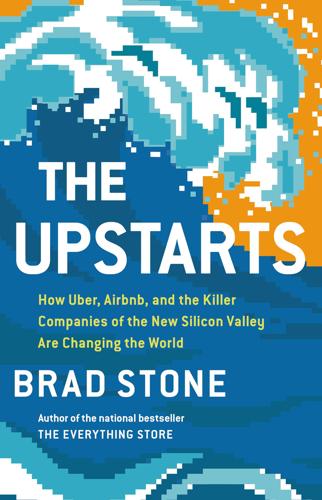
The Upstarts: How Uber, Airbnb, and the Killer Companies of the New Silicon Valley Are Changing the World
by
Brad Stone
Published 30 Jan 2017
They have attained these heights despite the fact that their businesses own little in the way of physical assets. Airbnb can be considered the biggest hotel company on the planet, yet it possesses no actual hotel rooms. Uber is among the world’s largest car services, yet it doesn’t employ any professional drivers or own any vehicles (save for a small, experimental fleet of self-driving cars). They are the ultimate twenty-first-century internet businesses, bringing not only new opportunities but new kinds of risks, often poorly understood, to those who provide and utilize their services. Uber, as the world well knows, allows anyone to summon a vehicle with ease, track its progress on a virtual map, and then ride with a driver whose reliability is illustrated by a one-to five-star rating.
…
Krane had orchestrated an experience that would blow Kalanick’s mind. When Uber’s CEO came down to the lobby, a prototype driverless car from the Google X lab idled in front of the hotel, waiting to ferry him to Mountain View. Sitting in the front seat was a Google engineer who could answer all his questions. It was Kalanick’s first ride in a self-driving car on real roads. At the Google campus, Kalanick met with Page, Google senior lawyer David Drummond, and Krane’s boss at GV at the time, Bill Maris. Page assured Kalanick that the companies could work together to develop Google Maps, which Uber relied on for navigation in its apps, but he didn’t say much or stay very long.

Arriving Today: From Factory to Front Door -- Why Everything Has Changed About How and What We Buy
by
Christopher Mims
Published 13 Sep 2021
The three remaining cameras on the robot are “time-of-flight” cameras that can individually perceive depth in a very different way: by sending out a pulse of LED or laser light and measuring the time it takes for it to return to the camera. A laser-based time-of-flight camera is in fact a form of solid-state lidar, but the resolution of time-of-flight cameras has historically been much lower than what can be achieved with the lidar that goes on self-driving cars and trucks. The robot also uses ultrasonic sensors that send out a high-frequency pulse of sound and “listen” for its return. It’s the same principle as echolocation in a bat or dolphin, only it’s achieved in silicon. What all these sensors have in common is that, thanks to their use in many common devices other than robots, they are widely available and relatively cheap.
…
The same is true of the “brain” of the Starship robot, which is a mobile application-optimized AMD Ryzen processor. Designed for laptops and other devices, it’s significantly less powerful than a desktop computer, gaming laptop, or the kind of server-level equipment used on autonomous cars. To cram object detection, navigation, SLAM, GPS, IMU navigation, and the like—all the things a self-driving car relies on, more or less—into such a tiny and energy-efficient package is by now a greater feat of engineering than autonomous navigation itself. Starship’s robots are driving themselves with the computing power of an iPhone. All of that economizing, all of that cramming of its systems into a package of technology that is good enough today and will only become cheaper with time, until the day it’s almost disposably cheap, is what it takes to eke out a profit on two-dollar deliveries.

The Code of Capital: How the Law Creates Wealth and Inequality
by
Katharina Pistor
Published 27 May 2019
And Google has not shied away from using trade secrecy law to restrain former employees, thereby undermining one of the greatest comparative advantages of Silicon Valley’s legal landscape: the non-enforceability of non-compete clauses.78 When information technology first came of age, other technology companies, such as IBM along Route 128 in Massachusetts, were invoking these rules to keep know-how in house but were soon outcompeted by Silicon Valley with its free-wheeling start-up culture. It did not stay this way. Google recently sued Uber after one of its prized employees switched sides, claiming that he had appropriated trade secrets for self-driving cars of one or more of the company’s subsidiaries.79 The civil case was settled, but criminal proceedings continued and Google cooperated with the authorities.80 The pattern should be familiar by now: The former disrupters of existing law or technology learn quickly that only by invoking legal protection of their own (often the same protection they only recently fought) can they protect their own gains.
…
AnnaLee Saxenian, Regional Advantage: Culture and Competition in Silicon Valley and Route 128 (Cambridge, MA: Harvard University Press, 1994). 79. The case, Waymo LLC v. Ueber Techs Inc., was filed in 2017, but settled in February 2018 only a few days into the trial. Ueber paid Waymo 0.34 percent of its equity, worth $245 million, and promised not to use Waymo technology for self-driving cars. Daisuke Wakabayashi, “Ueber and Waymo settle Trade Secrecy Suit over Driverless Car,” February 9, 2018, available online at www.nytimes.com. 80. Charles Duhigg, “Stop Thief,” New Yorker, October 22, 2018, 50–61, p. 61, quoting a spokesperson for Waymo, the Google subsidiary: “We comply with law-enforcement requests where there is a valid legal process, and this case is no exception.” 81.
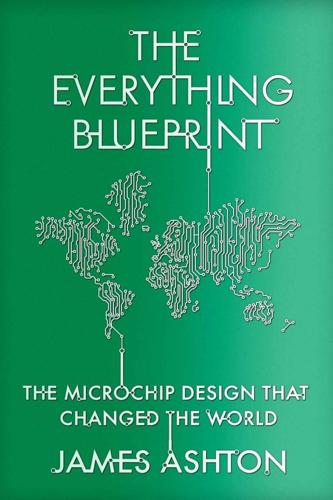
The Everything Blueprint: The Microchip Design That Changed the World
by
James Ashton
Published 11 May 2023
By 2028 it was aiming to have clung on to that same dominance in an advancing market it predicted would be worth $47bn. In networking equipment, Arm was aiming to take a 32 per cent market share up to greater than 65 per cent over the same time frame. Its data-centre ambition was still to be realised but furious work being done on self-driving cars meant the automotive segment showed promise too. Overall, Arm had a healthy 33 per cent share of its addressable market. With the Sōzō crowd, Segars shared his excitement at ‘being able to invest aggressively in a way that we never could have done as a public company’. Setting out those market opportunities, ‘we haven’t had to choose one, we are able to invest in parallel’, he said.8 And then there was the internet of things (IOT), whose promise had captivated Son in 2016.
…
The vision was still there, no doubt, but the business had been slow to mature. Son and Huang knew each other well. One month after SoftBank’s acquisition of Arm in 2016, they met in a suite of the Tokyo Conrad Hotel, located in the upper floors of the tower that housed SoftBank’s headquarters. The pair were there to sign an agreement to work together on self-driving cars, but soon began thinking bigger when Son posed the question: ‘The entire world will eventually become a single computer. What will you be able to do then?’21 Two weeks later, on 20 October 2016, Huang joined Son for dinner in California, where they sat on the terrace drinking wine and reminiscing about the Apple leader Steve Jobs, who had died five years earlier.

The Innovators: How a Group of Inventors, Hackers, Geniuses and Geeks Created the Digital Revolution
by
Walter Isaacson
Published 6 Oct 2014
Among the papers they produced (along with another graduate student, Craig Silverstein, who would become the first hire when they founded Google) were two on market basket analysis, a technique that assesses to what extent a consumer who buys items A and B is more or less likely also to buy items C and D.141 From that Brin became interested in ways to analyze patterns from the data trove on the Web. With Winograd’s help, Page began casting around for a dissertation topic. He considered close to a dozen ideas, including one on how to design self-driving cars, as Google would later do. Eventually he homed in on studying how to assess the relative importance of different sites on the Web. His method came from growing up in an academic environment. One criterion that determines the value of a scholarly paper is how many other researchers cite it in their notes and bibliography.
…
Presper, ref1, ref2, ref3, ref4, ref5, ref6, ref7, ref8, ref9, ref10, ref11, ref12, ref13, ref14, ref15, ref16, ref17, ref18 patents sought by, ref1, ref2 and public display of ENIAC, ref1 and storage of programs in ENIAC, ref1, ref2 von Neumann accused of stealing ideas by, ref1 Eckert-Mauchly Computer Corporation, ref1 Edison, Thomas, ref1, ref2 EDSAC, ref1 EDVAC, ref1, ref2, ref3, ref4 Edwards, Dan, ref1, ref2 Edwards, Elwood, ref1 Einstein, Albert, ref1, ref2, ref3, ref4, ref5, ref6, ref7 Eisenhower, Dwight, ref1, ref2, ref3, ref4, ref5, ref6 electrical circuits, ref1, ref2, ref3 needed to break German codes, ref1, ref2 electricity, ref1 Electric Kool-Aid Acid Test, The (Wolfe), ref1, ref2 Electronic Discrete Variable Automatic Calculator, see EDVAC Electronic Engineering Times, ref1 Electronic News, ref1, ref2 Electronics, ref1 Electronics Magazine, ref1 electrons, ref1, ref2, ref3, ref4 Elkind, Jerry, ref1, ref2 Elwell, Cyril, ref1 email, ref1 Emsworth, Lord, ref1 Encyclopedia Britannica, ref1 Engelbart, Doug, ref1, ref2, ref3, ref4, ref5, ref6, ref7, ref8, ref9, ref10, ref11, ref12, ref13, ref14, ref15, ref16, ref17, ref18, ref19, ref20 on human-machine interaction, ref1, ref2, ref3, ref4, ref5, ref6, ref7 English, Bill, ref1, ref2, ref3 ENIAC, ref1, ref2, ref3, ref4, ref5, ref6, ref7, ref8, ref9 decimal system used by, ref1 as first modern computer, ref1, ref2 hydrogen bomb equations worked out by, ref1 patents for work on, ref1, ref2, ref3, ref4 public unveiling of, ref1 speed of, ref1, ref2 storage of programs in, ref1, ref2 update of, ref1 women as programmers of, ref1, ref2 Enigma, ref1 Enlightenment, ref1 Enquire, ref1 Enquire Within Upon Everything, ref1, ref2, ref3, ref4 Entscheidungsproblem, ref1, ref2, ref3, ref4 Esquire, ref1, ref2, ref3 Estridge, Don, ref1 Eternal September, ref1, ref2 Ethernet, ref1, ref2n, ref3 Euclidean geometry, ref1 Eudora, ref1 Evans, David, ref1, ref2 Evans, Kent, ref1, ref2 EvHead, ref1 Excite, ref1, ref2 Expensive Planetarium, ref1 Eyser, George, ref1 Facebook, ref1, ref2, ref3, ref4 Fairchild, Sherman, ref1, ref2 Fairchild Camera and Instrument, ref1, ref2, ref3 Fairchild Semiconductor, ref1, ref2, ref3, ref4 formation of, ref1, ref2 microchips sold to weapons makers by, ref1 Noyce’s resignation from, ref1 Farnsworth, Philo, ref1 Federal Communications Commission, ref1 Felsenstein, Lee, ref1, ref2, ref3, ref4, ref5, ref6, ref7, ref8, ref9, ref10, ref11 Ferranti, ref1 Ferranti Mark I, ref1 Ferrucci, David, ref1 Feynman, Richard, ref1 file sharing, ref1 Filo, David, ref1 Firefox, ref1, ref2, ref3 “First Draft of a Report on the EDVAC, by John von Neumann,” ref1 Fischer, Dave, ref1 Flowers, Tommy, ref1, ref2, ref3, ref4 influence of, ref1 “Fool on the Hill, The,” ref1 formal systems of mathematics, ref1 Fortran, ref1, ref2, ref3, ref4 Fortune, ref1, ref2, ref3 Frankenstein, or The Modern Prometheus (Shelley), ref1, ref2, ref3 Franklin, Benjamin, ref1, ref2, ref3, ref4 Frankston, Bob, ref1 Free Software Foundation, ref1 Free Speech Movement, ref1, ref2, ref3 French, Gordon, ref1, ref2 French Revolution, ref1 Fuchs, Klaus, ref1, ref2 Fulghum, Robert, ref1 Fuller, Buckminster, ref1, ref2, ref3, ref4 Fylstra, Dan, ref1 Galaxy Games, ref1 Gale, Grant, ref1 Galison, Peter, ref1 GameLine, ref1, ref2 Garcia, Jerry, ref1 Gates, Bill, ref1, ref2, ref3, ref4, ref5, ref6, ref7, ref8, ref9, ref10, ref11, ref12, ref13, ref14, ref15, ref16, ref17, ref18 Allen’s disputes with, ref1, ref2, ref3, ref4, ref5 background of, ref1 BASIC for Altair designed by, ref1, ref2 BASIC learned by, ref1 belief of, in future of personal computer, ref1 copyright issues and, ref1, ref2, ref3 8008 language written by, ref1 electronic grid work of, ref1 Evans’s death and, ref1, ref2 at Harvard, ref1, ref2 innovator personality of, ref1 Jobs’s dispute with, ref1 Lakeside Programming Group formed by, ref1 operating system and, ref1, ref2 payroll program written by, ref1, ref2 PDP-10 work of, ref1 programming’s importance seen by, ref1 on reverse-engineering brain, ref1 Gates, Mary, ref1 Gatlinburg conference, ref1, ref2, ref3 General Electric (GE), ref1, ref2 General Post Office, ref1 general-purpose machines, ref1, ref2, ref3, ref4, ref5, ref6, ref7, ref8, ref9, ref10 Engelbert’s foreseeing of, ref1 see also memex General Relativity, ref1, ref2 geometry, ref1 germanium, ref1 Germany, codes of, ref1, ref2, ref3 Gertner, Jon, ref1, ref2 Gibson, William, ref1 Gingrich, Newt, ref1 Ginsberg, Allen, ref1 GNU, ref1 GNU/Linux, ref1, ref2, ref3, ref4, ref5, ref6 Go, ref1 Gödel, Escher, Bach (Hofstadter), ref1 Gödel, Kurt, ref1, ref2, ref3, ref4, ref5 gold, ref1 Goldberg, Adele, ref1 Goldstine, Adele, ref1, ref2, ref3, ref4 Goldstine, Herman, ref1, ref2, ref3, ref4, ref5, ref6, ref7, ref8 von Neumann’s first meeting with, ref1 Google, ref1, ref2, ref3, ref4, ref5, ref6, ref7 creation of, ref1, ref2, ref3 lawsuits of, ref1 page ranks of, ref1 self-driving cars of, ref1 Google Glass, ref1 Gopher, ref1 Gore, Al, ref1, ref2 Gore Act (1991), ref1, ref2, ref3 government funding, ref1, ref2, ref3 see also ARPANET Graetz, Martin, ref1, ref2 Gran Trak 10, ref1 graphic user interface, ref1, ref2 Grateful Dead, ref1, ref2, ref3 “Great Conversation, The” (Cerf), ref1 Greeks, ref1 Greening of America, The (Reich), ref1 Greig, Woronzow, ref1 Grinnell College, ref1, ref2, ref3 Grove, Andy, ref1, ref2, ref3, ref4, ref5 management techniques of, ref1, ref2 hackers, ref1, ref2, ref3, ref4, ref5, ref6, ref7, ref8 Hackers (Levy), ref1, ref2 Hafner, Katie, ref1, ref2, ref3 Haggerty, Pat, ref1, ref2, ref3 idea for calculator of, ref1 Hall, Justin, ref1, ref2, ref3, ref4, ref5, ref6 halting problem, ref1 Hambrecht & Quist, ref1, ref2 harmonic synthesizer, ref1 Hartree, Douglas, ref1 Harvard University, ref1, ref2, ref3, ref4, ref5, ref6, ref7, ref8 Hayden, Stone & Co., ref1, ref2 Hayes Smartmodem, ref1 Heart, Frank, ref1 “Heath Robinson,” ref1 Heinlein, Robert, ref1, ref2 Hells Angel, ref1 Hennessy, John, ref1 Herschel, John, ref1 Hertzfeld, Andy, ref1 Herzfeld, Charles, ref1, ref2, ref3 Hewlett, William, ref1, ref2, ref3, ref4 Hewlett-Packard, ref1, ref2, ref3, ref4, ref5, ref6, ref7, ref8 High Performance Computing Act (1991), ref1, ref2 Higinbotham, William, ref1 Hilbert, David, ref1, ref2, ref3, ref4, ref5, ref6 Hiltzik, Michael, ref1 Hingham Institute Study Group, ref1 hippies, ref1, ref2, ref3, ref4, ref5 Hiroshima, ref1n His Majesty’s Government Code and Cypher School, ref1 Hitler, Adolf, ref1, ref2 Hoddeson, Lillian, ref1 Hodges, Andrew, ref1 Hoefler, Don, ref1 Hoerni, Jean, ref1, ref2, ref3, ref4 Hoff, Ted, ref1, ref2 Hofstadter, Douglas, ref1 Holberton, Betty Snyder, see Snyder, Betty Hollerith, Herman, ref1, ref2 Homebrew Computer Club, ref1, ref2, ref3, ref4, ref5, ref6, ref7, ref8, ref9, ref10 Home Terminal Club, ref1 Honeywell, ref1, ref2, ref3, ref4 Hoover Dam, ref1 Hopper, Grace, ref1, ref2, ref3, ref4, ref5, ref6, ref7, ref8 communication skills of, ref1, ref2 on ENIAC’s lack of programmability, ref1 hired at Eckert-Mauchley, ref1 subroutines perfected by, ref1 Hopper, Vincent, ref1 HotWired, ref1 HotWired.com, ref1 Hourihan, Meg, ref1 House, David, ref1 House of Lords, ref1, ref2 Huffington, Arianna, ref1 Huffington Post, ref1 Human Brain Project, ref1 Human-Computer Interaction Group, ref1 human-machine interaction, ref1, ref2, ref3, ref4, ref5, ref6, ref7, ref8, ref9, ref10, ref11, ref12, ref13, ref14, ref15, ref16 Hush-A-Phone case, ref1 hydrogen bomb, ref1, ref2 HyperCard, ref1 hypertext, ref1, ref2 limitation of, ref1 Hypertext Markup Language (HTML), ref1, ref2, ref3, ref4 Hypertext Transfer Protocol (HTTP), ref1 IAS Machine, ref1 IBM, ref1, ref2, ref3, ref4, ref5, ref6, ref7, ref8, ref9, ref10, ref11, ref12, ref13, ref14, ref15, ref16, ref17 dress code at, ref1 founding of, ref1 Gates’s deal with, ref1 Jobs’s criticism of, ref1 Mark I history of, ref1, ref2 Mark I of, ref1, ref2, ref3, ref4 IBM 704, ref1 IBM 1401, ref1 Idea Factory, The (Gertner), ref1 Illich, Ivan, ref1, ref2 imitation game, ref1 incompleteness theorem, ref1, ref2 indeterminacy, ref1 individualism, ref1 Industrial Revolution, ref1, ref2, ref3, ref4, ref5 two grand concepts of, ref1 Infocast, ref1 Information Processing Techniques Office (IPTO), ref1, ref2, ref3, ref4, ref5 Information Sciences, Inc.
…
Jude (Jude Milhon), ref1, ref2 Sams, Jack, ref1 Samson, Peter, ref1, ref2, ref3 Sanders, Bob, ref1 San Francisco Chronicle, ref1 Sanger, Larry, ref1, ref2, ref3, ref4 Sarofim, Fayez, ref1 SATNET, ref1 Say Everything (Rosenberg), ref1 Scantlebury, Roger, ref1, ref2, ref3 Schreyer, Helmut, ref1, ref2 “Science, the Endless Frontier” (Bush), ref1n Scientific American, ref1 Scientific and Advanced Technology Act (1992), ref1 Scientific Data System, ref1 Scientific Memoirs, ref1, ref2, ref3 Scientific Revolution, ref1, ref2 Scripting News, ref1 search engines, ref1, ref2, ref3 Searle, John, ref1, ref2 Sears, ref1 Seattle Computer Products, ref1 self-driving cars, ref1 Semi-Automatic Ground Environment (SAGE), ref1, ref2, ref3, ref4 semiconductivity theory, ref1 semiconductor amplifier, ref1 semiconductors, ref1, ref2 Sendall, Mike, ref1 Sequoia Capital, ref1n, ref2 Seva Foundation, ref1 Shannon, Claude, ref1, ref2, ref3, ref4, ref5, ref6, ref7, ref8 Shapin, Steven, ref1 Shaw, Artie, ref1 Shelley, Mary, ref1, ref2, ref3 Shelley, Percy Bysshe, ref1 Shirky, Clay, ref1, ref2 Shockley, William, ref1, ref2, ref3, ref4, ref5, ref6 acoustic delay line developed by, ref1 Bardeen and Brattain’s dispute with, ref1, ref2, ref3 credit for transistor taken by, ref1, ref2 IQ of, ref1 midlife crisis of, ref1 Nobel Prize won by, ref1, ref2 poor leadership skills of, ref1, ref2, ref3 racial views of, ref1, ref2 replacement for vacuum tube sought by, ref1, ref2 researchers recruited to company by, ref1, ref2, ref3 semiconductor amplifier idea of, ref1 solid-state studied by, ref1 in World War II, ref1 Shockley Semiconductor Laboratory, ref1, ref2, ref3, ref4, ref5, ref6 Shockley replaced at, ref1, ref2 Siemens, ref1 Signals and Power Subcommittee, ref1 silicon, ref1, ref2, ref3, ref4, ref5, ref6 Silverstein, Craig, ref1 Simon, Leslie, ref1 Simonyi, Charles, ref1 singularity, ref1 Siri, ref1 Sketchpad, ref1 “Sketchpad: A Man-Machine Graphical Communications System” (Sutherland), ref1 slide rules, ref1, ref2, ref3 Smalltalk, ref1 Smarter Than You Think (Thompson), ref1 Smith, Adam, ref1 Smith, E.

Dawn of the New Everything: Encounters With Reality and Virtual Reality
by
Jaron Lanier
Published 21 Nov 2017
Another example is UC Santa Barbara’s Allosphere, a spherical CAVE with a catwalk suspended in the center.5 My guess is that there will be a lot of VR in self-driving cars. It’s almost intolerably boring to be in one, and we’ll all be stuck in them for hours. The interior of a car is small enough to instrument without much trouble, but large enough to solve the duplex problem, which will be explained shortly. You can even cancel out the motion of the road to counter car sickness. VR and self-driving cars are a perfect match, even better than drive-time radio was with cars you had to drive. I wonder if people without property will spend a lot of time in VR, being driven from place to place because it’s cheaper than standing still.

Innovation and Its Enemies
by
Calestous Juma
Published 20 Mar 2017
The developing world has the potential to access more scientific and technical knowledge than the more advanced countries had in their early stages of industrialization. The pace at which latecomer economies such as China have been able to leapfrog in certain technologies underscores the possibilities.6 There are growing concerns over the implications of these developments for employment. Self-driving cars will restructure transportation through new ownership patterns, insurance arrangements, and business models. Computer-aided diagnosis, robotic surgery, and myriad medical devices are already changing the role of doctors and how medical care is provided.7 Artificial intelligence and computer algorithms are influencing the way basic decisions are made.
…
See AquAdvantage salmon Salt, use in ice cooling, 177 Sandoz company, 232–233 Schools, computers in, 41 Schultz, Theodore William, 95, 116 Schumpeter, Joseph on consumers’ tastes, changes in, 45 creative destruction, concept of, 16–17, 19, 39, 42, 47, 121, 129, 139, 280, 309 economic development, application of complex systems thinking to, 27 on economic gains from innovation, 203 on equilibrium, 27 on entrepreneurs, 258 innovation, taxonomy of, 175 on leadership, 282 railroads, characterization of impact of, 122 on resistance to innovation, 1, 96 social transformation and, 16–23 on technological innovation, 225, 293–294 Schuylkill River, ice from, 181 Science advisory bodies, 286–287 science-based approval processes, need for, 277–278 science-based regulation, 236–244, 277 scientific and technical knowledge, developing world’s access to, 13 scientific information, democratization of, 313 scientific research, dynamics of success in, 327n115 scientific uncertainty, about new technologies, 120, 239–240 scientists, communication by, 312–313 Science advice importance of, 174–175 scientific advisory bodies, importance of, 7 scientific and technical advice, structures for, 287–288, 306 Scott, Leon, 207 Scribes, 71, 77 Seatbelts, social norms on, 33 Seattle, frozen pack laboratory in, 195 SEC (Securities Exchange Commission), 274–275 Second-generation biotechnology, 253–254 Secularization, of the Ottoman Empire, 91 Securities Exchange Commission (SEC), 274–275 Security, as grand challenge, 12 Sedgwick, William, 187 Seed sector, 30, 243 Selective breeding, fish farming and, 262–263 Self-driving cars, impact of, 13 Self-organizing systems, 6, 28 Selim I, Sultan, 68 Selim II, Sultan, 51 Selim III, Sultan, 93 Senate, US, 196, 215 Senefelder, Alois, 92 Shams (Syrian businessman), 51 Ships, 195, 295–296 Silent Spring (Carson), 14, 224–225, 231 Singers, prominence of, vs. bands, 219 Single path dependence, as limitation on innovation, 250 Single studies, false balance of, vs. evidence, 249–250 Singularity.
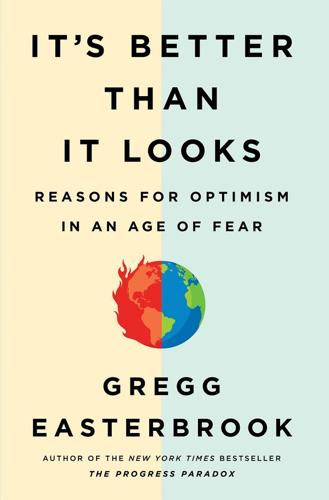
It's Better Than It Looks: Reasons for Optimism in an Age of Fear
by
Gregg Easterbrook
Published 20 Feb 2018
The three-car suburban family—about one-third of American households own at least three vehicles—will become a one-car family, the vehicle driving itself to wherever the next pickup or drop-off is required by a family member. Offices, schools, and entertainment destinations won’t need parking lots by the doors: cars will drop off their masters and mistresses, continue on to remote parking facilities, then come back when summoned. Groups of friends will get together to purchase one shared self-driving car, rather than each person owning a car: all members of the group will save on car and insurance expenses, resulting in another increase in standards of living. The horsepower arms race will end, since a car that refuses to violate the speed limit—this is going to please some people while driving others to distraction—would not benefit from prodigious power output.
…
See specific topics Nike, 253, 256 Nixon, Richard, 54–55, 179, 256–257 nuclear power, 226–227 nuclear weapons, 125–126, 160–161, 277–280 Obama, Barack, 62, 109, 131 anecdotes of, 219 declinism and, 200–201, 221 Dodd-Frank Act and, 92–93 on drone aircrafts, 159 fuel-economy regulatory regime and, 147–148 on infrastructure, 94 national debt and, 97, 100 ObamaCare and, 29, 220, 249 on tax, 254 ObamaCare, 29, 220, 249 obesity, 5, 26, 35 optimism, 283–285 ozone, 48, 49–50, 62 Paine, Lincoln, 80 Paine, Thomas, 256 Panasonic, 68–69 Paris Agreement, 239, 243 The Passing of the Great Race (Grant), 197, 198 Piketty, Thomas, 84–85 Pinker, Steven, 120, 137, 138–139 Plank, Terry Ann, 278 Plato, 202–203 pollution, 26, 30, 59 See also air pollution Prince William Sound, 43 The Promised Land (Lemann), 71 public health, 27 ability to pay and, 29 carbon dioxide and, 62 deindustrialization and, 29 flu pandemics and, 28 health care and, 29, 40, 101–102, 220, 247–248, 249 inequality and healthcare, 247–248 longevity and, 30–31 mosquitoes and, 39 ObamaCare and, 29, 220, 249 pollution reduction and, 30 sanitation infrastructure and, 29–30 racism, 223, 259–260, 266 law enforcement and, 113–114 refugees and, 197 slavery and, 174–175, 191 Radelet, Steven, 20 Reagan, Ronald, 206–207, 209, 273 Reilly, Bill, 45–46 religion, 222, 282 resource consumption, 280 resource depletion fossil fuels and, 52–53, 54, 55–57 immensity of geology and, 54 market forces and, 51–52 price controls and, 54–55 uninterrupted trends and, 51 in US and European Union, 51–52 Resources for the Future, 45, 46 Ricardo, David, 134 Rose, Reginald, 197–199 Rubenstein, David, 271 Russia. See specific topics Sagan, Carl, 140–141 Sanders, Bernie, 78, 79, 96 as declinist, 84, 201–202 on middle class, 86–87 on tax, 255 Sanger-Katz, Margot, 35 The Sea and Civilization (Paine, L.), 80 Sedjo, Roger, 46–47 self-driving cars and, 152–154 Shah, Rajiv, 4, 10 Shakya, Holly, 213 Sharkey, Patrick, 224–225 siege mentality, 283–284 Siegel, Rebecca, 24 Silberstein, Steve, 190 Sivak, Michael, 147–148, 149 slavery, 174–175, 191 smartphones, 52, 212 smog. See air pollution social media. See Facebook and social media Social Security, 36, 87, 98, 102, 185, 273 Soviet Union.

The Case for Space: How the Revolution in Spaceflight Opens Up a Future of Limitless Possibility
by
Robert Zubrin
Published 30 Apr 2019
While this does not matter for applications like one-way radio or TV broadcasting, it poses serious problems for two-way communication. For long-distance telephone calls, the quarter-second signal time delay each way can be quite annoying. For systems attempting to remotely control machinery under dynamic conditions (for example, self-driving cars or aircraft), it could potentially be catastrophic. If the satellites could orbit lower, say 1,200 kilometers, the time delay could be cut thirtyfold and the transmission power each way reduced a thousandfold. But satellites at that height orbit the Earth every two hours and can only been seen from the ground when they are relatively close by.
…
For example, such augmented communication constellations could enable low-cost wristwatch-sized communication devices that would be able to access on a real-time interactive basis all the storehouses of human knowledge from anywhere in the world. In addition, they would enable their users to communicate very high volumes of data—including voice, video, and music—either to each other or to the system's central libraries. They will not only make possible the global coordination of billions of self-driving cars but provide the kind of previously impossible automated air traffic control that could make mass use of private aircraft (finally, flying cars!) a reality as well. The practical value of such systems is obvious, but their implications go far beyond the practical into the social and historical.
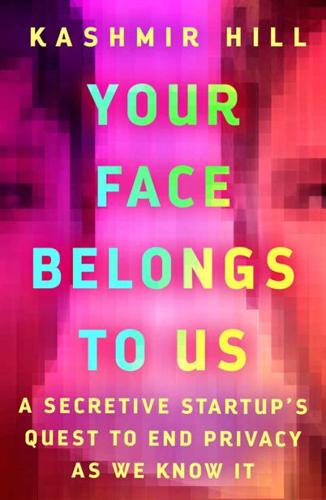
Your Face Belongs to Us: A Secretive Startup's Quest to End Privacy as We Know It
by
Kashmir Hill
Published 19 Sep 2023
That wasn’t going to help spot a wanted criminal or dangerous person in a large crowd. With no practical applications, interest faded and progress stalled. * * * — AND THEN ALONG came Matthew Turk. In 1986, Turk was a junior engineer with the defense contractor Martin Marietta, where he was working on one of the world’s first self-driving cars. Called the Autonomous Land Vehicle but nicknamed “Alvin” by Turk’s team, it was the size of an ice cream truck with eight wheels, a camera on its roof, a laser scanner where its windshield would have been, and a belly full of computing equipment. The vehicle was white with blue stripes; the acronym “ALV” was painted on its side in a large, stylized font.
…
See also Soviet Union S Salem, Mohammed, 171–174 Sampras, Pete, 104 Saverin, Eduardo, 94 Scalia, Antonio, 306n206 Scalzo, David author’s contact with, xv frustrations of, 188–189 investment in Clearview from, 111–112, 113, 116–117, 118–120 ScanAmerica, 270–271n44 SceneTap, 122 Schemm, Martin, 304n192 Schmidt, Eric, 27, 102–103, 145 Schneiderman, Henry, 103–106, 108–109 Schneier, Bruce, 61, 65 Schwartz, Richard Abrams and, 205–206 attempts to contact, 160, 213 background of, 27–29 Besson and, 128, 129 early plans of, 31, 33–34 FindFace and, 220 investors and, 116 Johnson and, 95, 247–248 law enforcement and, 132–133 Linden and, 161 Lynch and, 88, 89–90, 91, 92, 93 Montana and, 114 NYPD and, 129, 130, 131 opposition and, 138 Orbán and, 56 sale to businesses and, 187 Scalzo and, 111, 113, 118, 188–189 Smartcheckr and, 52, 72, 79, 89, 94 Ton-That and, 29–30 Waxman and, 80 Science, Policy, and the Value-Free Ideal (Douglas), 279n74 scraping Abrams case and, 206, 208–209 Bedoya and, 144, 241 Borthwick and, 113 description of, 58 efforts to block, 58, 117–118, 165 Fawkes and, 242 Grossenbacher and, 194–195 LinkedIn and, 117–118, 165 Smartcheckr and, 92 Ton-That’s use of, 78–79, 81, 116, 133, 162 Venmo and, 78–79 Vermont lawsuit and, 205 Search King, 306n206 Secret Service, 247 security theater, 65 Seeking, 201 Sejnowski, Terry, 268n37 self-driving cars, 42 selfies, as password alternative, 31 Semmelweis, Ignaz, 250–251 SenseTime, 226, 240, 242 September 11 attacks, 28, 64, 235 Sequoia Capital, 113 sex workers, 197–199, 221–222 Sherman, Rob, 144 Shirley cards, 179 ShopperTrak, 242 ShotSpotter, 232–233, 234 Showing Up for Racial Justice, 57 Shteyngart, Gary, 34 Six Flags amusement park, 151–152 Slack, 10 Slashdot, 104 Smartcheckr contractors for, 81 DeploraBall and, 55, 56–57 development of, 73–79 founding of, 52–53 Hungary and, 55–56, 57–59 investment efforts and, 80, 89 lack of office for, 72 Lynch and, 90–93 MegaFace and, 242 name change for, 162 white nationalism and, 94 winding down of, 95, 249 smartphone economy, 6 smartphones data brokers and, 204 Franken and, 141 iPhone, ix, 6, 9, 109 tracking and, 226 ubiquity of, 36 unlocking and, 109, 142 Smith, Brad, 239 Snap Map, 232 Snapchats, 232 Snowden, Edward, 149 social media, scraping and, 58, 92.

The Powerful and the Damned: Private Diaries in Turbulent Times
by
Lionel Barber
Published 5 Nov 2020
The other X factor is the app, the software application to perform specific tasks which can be downloaded in a flash on a mobile phone (as opposed to a desktop computer). ‘The web is dead,’ says Singhal, ‘it is now the app world.’ To reinforce the AI point, Google has arranged for me and my colleague Richard Waters to take a trip down the highway in a self-driving car, a fat white vehicle with a large piece of navigation kit on the roof. We strap ourselves in, a human driver guides us down a few streets and then the machines take over. As we fly down the highway, I catch a glimpse of the future. A real car draws up in the outside lane. So fascinated by our autonomous vehicle is the driver that he briefly swerves into another lane.
…
Lee) 182, 182n Lehman Brothers x, xiv, xv, 5n, 37, 46, 81, 85, 86, 87, 101–2, 104, 105, 107, 121, 160, 199, 432 Le Pen, Marine 349, 353, 380 Leveson Inquiry xv, 177–8, 191–2, 194–5, 197, 200–202, 220, 221, 222–3, 227, 236, 237, 239, 257n Leveson, Lord Justice 177, 194, 195, 201–2 Lewis, Leo 181 Lewis, Simon 143 Lewis, Will 135, 135n Liberal Democrats xv, 135, 135n, 151, 158, 158n, 159, 195–6, 274, 275, 275n, 284, 288, 290, 354 Libor rate 168, 212 Libya 142, 177, 180, 259, 330, 355, 387 Li, Frank 207–8 liquidity, financial 69, 70, 86, 94, 103, 117, 323 Lisbon treaty, EU 64, 64n, 67, 381 Liu Xiaoming x, 206–7, 374–5 Llewellyn, Ed 308–9 Lloyds Bank 19 Long-Term Capital Management (LTCM) 86, 86n Luce, Ed 130, 190 Maastricht treaty (1992) 64n, 342, 389, 426, 433 Mackay, Angela 284 Mack, John 85, 86 MacLeod, Lisa 147, 203 Macron, Emmanuel 353, 412–13 MacShane, Denis 41 Mail on Sunday 58, 197, 220–21, 227, 265 MailOnline 357 Ma, Jack 233 Major, John 139, 157, 217n, 290, 320, 342n, 414 Major, Tony 240–41, 254–5, 272 Ma Kai 271 Makinson, John 189, 282 Malema, Julius 260–61 Mallet, Victor 245, 392–3 Malmström, Cecilia 328 Mandela, Nelson 51, 52, 53 Mandelson, Peter 65, 190, 244 Manningham-Buller, Eliza 20–22 Marchionne, Sergio 375–6 Markle, Meghan 422 Marks and Spencer 235–6, 244 Marriage, Madison 368–9, 370, 371, 372, 373–4, 382, 384 Massoudi, Arash 295, 296 Mayer, Marissa 73–4 May, Theresa ix, xvi, 274, 310, 323, 324, 326, 327, 328, 333–4, 339, 342–3, 345–6, 349–50, 353–4, 358, 359–60, 365, 373, 375, 381, 388, 399–400, 402, 406, 410, 411, 413, 414, 420, 425 Mbeki, Thabo 51–3 McCain, John 96, 99 McChrystal, Stan 148–9, 148n, 150 McClean, Paul 356–7, 395 McCoy, Danny 188 McCrum, Dan 404, 405, 407, 421 McDonnell, Finola 406–7 McGregor, Heather 14 McKinsey 122, 197, 243, 245, 306 McLaren, Malcolm 155–6 McMaster, Lieutenant General H.R. 366, 366n McNulty, Sheila 35 Media Standards Trust 220–21 Medvedev, Dmitry xiv, 89, 90–91, 329, 417 Melbourne Mining Conference 386–7 Meng Wanzhou 399 Merkel, Angela ix, xiv, xvi, 95–7, 153, 199, 211, 253, 274, 309, 323, 326, 358–9, 367, 368, 420, 426, 433–5, 437 Merrill Lynch 16, 86, 102 #MeToo 357, 369, 370 Metropolitan Police 165 Meyer, Christopher 139 Micklethwait, John 238, 258 Middleweek, James 20 MI5 20–22 Miliband, David 162, 163–4, 193 Miliband, Ed 162, 164, 193, 273, 286, 290 Miller, Maria 220, 223 Mill, John Stuart 423, 423n Mirror Group 197, 227 MI6 21, 180 Misra, Rajeev 383 Mitchell, Tom 390 Modi, Narendra ix, 244–6, 309, 348, 407–9 Molotov, Vyacheslav 90, 90n Monti, Mario 196, 203–4, 367–8 Moreno, Glen 114–15, 294 Morgan Stanley 85, 86, 102, 113 Morgan, John Pierpont 93 Morgan, Piers: The Insider 11 mortgage-backed securities 62, 84, 85, 114 Mosbacher, Georgette 242, 333, 358, 366 MPs expenses scandal 135–6 Mubarak, Hosni 54 Mudie, George 127 Mueller investigation, US 374, 374n Mugabe, Robert 52, 53, 261 Mulcaire, Glenn 190 Mulvaney, Mick 366, 366n Münchau, Wolfgang 172, 180 Murdoch, James 63 Murdoch, Rupert xv, 5, 5n, 28, 59–61, 65, 67, 161–2, 177, 191, 222, 267–8, 282, 289, 291, 317, 318 Murphy, Paul 27, 291, 368, 369, 382, 384, 405, 421 Murray, John 386 Musk, Elon 221–2 Myanmar 229–31, 233 Narayanan, M.K. 169 National Security Agency (NSA) 236–7 National Union of Journalists (NUJ) xiv, 202, 203, 240, 311 NatWest Bank 22, 22n Navalny, Alexei 328–9, 329n Nayef, Mohammed bin 308 Nazarbayev, Nursultan 142, 176, 176n Netanyahu, Benjamin ix, xiv, 102, 108, 109, 109n Netflix 398–9, 439 Neville-Rolfe, Lucy 23 Newman, Cathy 15, 15n News Corporation 5n, 268 News International 161–2, 165, 191 News of the World xv, 11, 139, 165, 177, 190, 191, 223, 223n, 237, 324n Newton, Gordon 9, 391 New Yorker 381 New York Post 119 New York Stock Exchange 86, 234 New York Times 35, 59, 61, 161, 165, 189, 216n, 224, 225, 258, 298, 332 NHS (National Health Service) 180, 180n, 232, 289, 313, 422 Nikkei xv, xvi, 281, 283, 284–5, 295–300, 295n, 301–3, 304, 305–6, 310–11, 312, 321, 339, 371, 373, 374, 390, 391, 394, 403, 407, 428, 431 Nikkei Asian Review 403 9/11 terrorist attacks (2001) 76, 236 Nixon, Richard 10, 45, 241, 267 non-doms 82–3, 83n, 319 Noonan, Peggy 317 North Korea 54, 182, 253–4, 348, 349, 366, 374, 376, 397 Northern Rock 45, 70, 77, 88, 127 Oakeshott, Isabel 316 Obama, Barack xii, 55, 68, 82, 96, 96n, 97, 98, 99, 113–14, 117, 130–31, 132, 148n, 162, 163, 187, 188, 189, 204, 219, 222, 233, 236, 307, 320, 331, 333, 342, 348, 378, 396, 413, 435 Obamacare 342, 348 Obama, Michelle 204 Office of Budget Responsibility (OBR) 106 Okada, Naotoshi 284, 298, 299, 404 Oliver, Craig 180 Olympics: (2008) 98–9; (2012) 98–9, 243 Olympus Corporation 298 1MDB (Malaysian state investment fund) 167 O’Neal, Stan 16, 148 Osborne, George xv, 81, 82, 97, 106, 156–7, 159, 174, 193, 209, 255, 259, 273–4, 289, 308, 318–19, 324, 345, 377, 378, 413 Owen, Geoffrey 252, 411 Owen, Jane 174–5, 264, 270 Oxford Union 41, 41n, 340 Page, Bruce 62 Page, Larry 326 Pakistan 41n, 132, 161, 168, 169, 170, 171–2, 203, 309, 363 Palestinians xv, 54–5, 107, 108, 109, 208, 378 Palin, Sarah 99 Pandit, Vikram 85, 113 Parker, Alan 153, 153n Parker, George 152, 153, 157, 320, 322–3, 359 Parker, Lieutenant General Nick 150 Patten, Chris 217, 217n Paulson, Hank 31, 31n, 55–6, 57, 87, 104 Payne, Sebastian 313, 410 Pearson x, 3, 3n, 5, 8, 15, 18, 19, 29, 43, 66, 73, 114, 115, 128, 189, 213, 218, 251, 253, 257, 282, 288–9, 292, 293, 294–7, 302–3, 311 Pence, Mike 333 Penguin Books 189, 282 Perkins, Zelda 357 Peston, Robert 70, 127 Pfizer 263 phone-hacking xv, 41, 76, 139, 162, 165, 166, 177, 190–91, 195, 223, 223n, 236, 268, 291 PIGS (acronym for southern European nations) 100–101 Pilling, David 165, 355, 356 Piris, Jean-Claude 341, 426 Polman, Paul 352, 353 Portugal 99–100, 148, 212, 238 Powell, Colin 54, 330 Powell, Jonathan 68, 68n Prabodhan 244–5 Presidents Club 368–9, 370–72, 373 Press Complaints Commission (PCC) 139, 165–6, 165n, 178, 192, 197, 201, 202, 221 Press Standards Board of Finance (Pressbof) 197 Prince, Chuck 69 private equity xiv, 46, 68, 69, 113, 114, 233, 243, 352 Purdy, Matt 332 Putin, Vladimir ix, xii, xvi, 89, 89n, 91, 120–21, 137, 205, 237–9, 238n, 256, 275, 277, 307, 328, 329, 330, 335, 348, 380, 401, 405, 406, 416–20, 432, 434 Qatar 74, 122, 212, 377 quantitative easing (QE) 199, 241 quants 187 Quinn, Sally 276 Raab, Dominic 410, 410n Rachman, Gideon 26, 26n, 43, 359 Rafsanjani, Akbar Hashemi 249–50, 249n Rajan, Raghuram 246–7, 246n Rajoy, Mariano 155, 219, 225–6 Rake, Michael 122, 212 Ramaphosa, Cyril 51, 262 Rathbone, John Paul 100, 140, 141, 428 Read, Ian 263 Reagan, Ronald 117, 129, 186, 188, 232, 249, 315, 317, 366, 397 Rees-Mogg, Jacob 327, 340, 341, 373, 388, 424 Rees-Mogg, William 340 Reliance Communications 247 Reliance Group 40 Remnick, David 381 Ren Zhengfei 183–4, 399 Renzi, Matteo 239–40 Republican Party, US 96, 130, 187–8, 242, 314, 315, 316, 331, 333, 363, 366n, 374 Reuters 147n, 258, 295–6, 298, 403, 417 Rice, Condoleezza 53–5, 108, 330 Richard III (Shakespeare) 192–3 Ridding, John 29, 135, 147–8, 215, 234, 257, 258n, 282, 288, 292, 293, 295, 296, 297, 299, 301, 312, 406–7, 430 Rio Tinto 286, 386 Robbins, Ollie 414–15 Robinson, Gwen 185, 230–31 Robinson, Nick 318 Rogers, Ivan 326 rogue traders 193 Rollins, Ed 366–7 Romney, Mitt 219 Roosevelt, Teddy 130, 140, 348 Rothermere, Jonathan 377 Rothschild 296, 353 Rothschild, Lynn Forester de 265, 265n Rouhani, Hassan ix, 249, 250–51, 267 Rousseff, Dilma 140, 142 Royal Bank of Scotland (RBS) xiv, 22–3, 22n, 75, 122 RPC (law firm) 421 Rubin, Robert 84, 172, 228 Rudd, Kevin 144, 144n Rudd, Roland 322 Rumsfeld, Donald 54, 330 Rupert, Johann 428, 428n Rusbridger, Alan x, 76, 139, 191–2, 197, 290–91, 395 Russell, Alec 51, 53, 189, 302, 321–2, 381, 429, 430 Russia ix, 56, 70, 81, 88–91, 91n, 120–21, 138–9, 161, 163, 228, 229, 237–9, 237n, 238n, 239, 256–7, 259, 275, 276–7, 307, 328–31, 335, 348, 349n, 374n, 376–7, 376n, 377n, 391, 405, 408, 416–20, 434 Rwanda ix, 142, 340, 354–6 Saatchi, Charles 243, 243n Salman, Mohammed bin x, xii, xvi, 306–8, 326, 361, 362, 376–9, 383, 392 Salmond, Alex 272, 273, 361–2 Salvini, Matteo 380 Samsung 182, 182n Sandberg, Sheryl 394 Sandbu, Martin 172 Sands, Peter 244–5, 245n Santander UK 210, 210n Santos, Juan Manuel 141 Sarkozy, Nicolas 62, 91–2, 185, 259, 412, 413, 435 Saudi Arabia xii, xvi, 107, 306–8, 360–61, 362, 376–9, 383, 392 Saudi Aramco 307, 308 Scardino, Marjorie x, 5–6, 8, 9, 14, 18, 26, 29, 32, 43, 66, 73, 83, 85, 93, 115, 147, 213, 218, 251, 282, 294, 411 Scavino, Dan 347 Schama, Simon 266–7 Schmidt, Eric 74, 160–61 Schroders 235, 235n Schwab, Klaus 120 Schwarzman, Christine 104 Schwarzman Scholars programme, Tsinghua university, Beijing 120 Schwarzman, Steve x, xiv, 46–7, 103–4, 118–20, 333, 377 Scotland 22, 22n, 250, 290, 344, 350, 361–2, 438; independence/independence referendums 253, 258–9, 266–7, 269, 271, 272, 273, 319, 320, 413, 438 Scotsman 13, 22, 361 Scott, C.P. 440 Scottish National Party (SNP) 272, 273, 290, 350, 361 Scowcroft, Brent 55 Second World War (1939–45) 128–9, 400 Seibert, Steffen 433 Sein, Thein 230 self-driving cars 215 Selmayr, Martin 406 Sevastopulo, Demetri 181, 346, 396 7/7 suicide bombings, London 21, 21n S4Capital 386 ‘shadow banking system’ 134 Shakespeare, William 192–3, 270, 323 shale gas 238 Shariatmadari, Hossein 249 short selling 103, 405, 407, 421 Shrimsley, Robert 13, 28, 102, 107, 117–18, 333, 371, 372, 430, 431 Shwe, General Than 230 Silicon Valley xv, 73, 74, 183, 184, 200, 213, 214–16, 236, 291, 348, 358, 394 Silva, Lula da 140, 142–3 Silverman, Gary 102 Simpson, Wallis 201 Singhal, Amit 214–15 Singh, Manmohan 38–9 Skapinker, Mike 298 Skripal, Sergei 376–7, 417, 419 Sky Television 41, 63, 127, 267–8, 316–17 Smith, Adam 124, 266, 297 Smith, Terry 14–15, 17–18, 19–20, 20n, 32, 139, 201–2, 218, 243, 372 Smollett, Tobias 297, 297n Snowden, Edward xv, 202, 236–7, 270–71, 291, 395 Snowdon, Lord 75, 76 SoftBank 325, 325n; Vision Fund 308, 326, 378, 383 Solana, Javier 219 Son, Masayoshi 325–6, 325n Soros, George 190, 231 Sorrell, Martin 32–3, 46, 60–61, 191, 293, 370, 371, 374, 381–2, 383–6, 385n South Africa 51–3, 109, 147, 229–30, 260, 402, 424, 428, 428n, 429 South Korea 23, 181, 182, 182n, 242, 342, 366, 366–7n, 435, 438 Spacey, Kevin 192–3 Spain 84, 100–101, 148, 153–5, 212, 219, 225–6, 238, 363, 388 Spiegel, Peter 15, 200, 211, 302, 357, 389 Squire, Sarah 264 Sri Lanka 169, 356 Stalin, Joseph 48, 50, 64, 95, 207, 331 Standard Chartered Bank 244–5, 245n Stephens, Mark 174–5 Stephens, Philip 190, 209–10, 228, 354 Stevenson, Dennis 19, 128 Stoppard, Tom 300–301 Stott, Michael 403 Stringer, Sir Howard 17, 17n, 298, 299, 301 Studzinski, John 317 Sturgeon, Nicola 272 ‘sub-prime’ mortgages 62n, 69, 114 Sullivan, Martin 36, 37, 37n Sulzberger, Arthur 225 Summers, Larry 189–90 Sun 41, 100, 162, 165n, 223 Sunday Mirror 75–6 Sunday Times 7, 62, 68, 135n, 192, 317 Susman, Louis B. x, 68, 204, 222 Svanberg, Carl-Henric 409–10 Svenska Dagbladet 240–41 Swannell, Robert 235–6 Swift, Jonathan 297, 297n Syria xiv, 55, 102, 110–11, 177, 259, 355 Taliban 133, 149, 150, 170 Taseer, Salman 169–70 Tate Modern 319 taxation 83n, 106, 125, 131, 143, 143n, 160, 187, 189, 193, 263, 287, 318, 333, 342, 343, 363n, 368, 410, 439 Taylor, Ian 287, 387–8 Team Sky 216, 219 Tencent xii, 440 Tendulkar, Sachin 247 Tesco 23–4 Tesla 221–2, 221n Tett, Gillian xiv, 44–5, 74–5, 102, 147, 190, 346, 347, 389 Thain, John 86–7 Thatcher, Margaret 117, 128, 129, 186, 217n, 229, 231–3, 244, 316, 317, 320, 426, 429, 438 Thompson, Mark 162, 216–17, 216n, 332 Thomson, Robert 5, 5n, 60 Thornhill, John 302 3G 352, 353 Times, The 5, 5n, 28, 35, 60, 151, 165, 165n, 192, 255, 264, 340 Timmins, Nick 47–8 Timothy, Nick 342, 349, 350 Today programme 318 Tortoise 28, 389 Toynbee, Polly 82–3 Trans-Pacific Partnership (TPP) 391, 392 Trichet, Jean-Claude 61–2, 188, 416 Trump, Donald ix, xii, xv, xvi, 58, 97, 131, 133, 184, 211, 251, 312, 314, 315, 316, 317, 331, 332–3, 334–5, 339, 340, 341–2, 345, 346–9, 350, 353, 359, 364, 366–7, 366n, 367n, 374, 376, 378, 380, 381, 390, 391, 394n, 396, 397–8, 399, 406, 409, 412, 419, 420, 432, 434, 435, 437 Turnbull, Andrew 47–51 Tutwiler, Margaret 86 Twitter 210–11, 224, 225, 320, 326–7, 347 Uber 357–8 UBS 179n, 193 UKFast 401 UKIP 253, 259, 262, 274, 284, 412 Ukraine 12n, 27n, 91, 253, 256–7, 259, 275, 330; Orange Revolution 253, 256 Unilever 263, 352, 353 United Arab Emirates xiv, 102 United States: FT move into 3–4; Presidential Election (2008) 68, 82, 96–7, 96n, 98, 99, 113–14, 220; Presidential Election (2012) 220; Presidential Election (2016) 312, 314, 330, 331, 332, 346, 374n; trade war with China xvi, 390, 397 see also individual president name Uribe, lvaro 140, 141–2, 380 Vadera, Shriti 244, 301 Vanity Fair 7, 75, 206 Venezuela 141, 261, 418–19 Verizon 236 Vickers, Paul 197, 227 Vietnam War 132–3, 233, 284 Viner, Kath 291 Virgin Islands 178 Vitol 286, 287, 387 Volkswagen 292 Wall Street Journal 5n, 35, 59–61, 65, 66, 92–3, 135n, 258, 282, 289, 298, 305, 381, 382 Wang Jianlin 213, 233 Wang Qishan 390 Warner, Mark 187 Washington Post 10, 15, 35–6, 51, 57, 59, 60n, 258, 276, 282, 332, 392 Watergate scandal 10, 222n Waters, Richard 215, 270–71 Weber, Axel 178–9, 179n Weibo 234 Weidmann, Jens 368, 415 Weinstein, Harvey 204, 357, 358, 370 Wen Jiabao xiv, 117, 123–6 West Bank 108 Weston, Galen 198, 198n WhatsApp 210, 395 Wheatley, Jonathan 143 White House correspondents’ dinner (2007) 55 WikiLeaks xv, 161, 174–5, 291 Wilkes, John 194, 194n, 195 Williams, Jon 149 Williams, Archbishop of Canterbury, Rowan 168, 169 Williams, Ted 402–3, 404, 432 Williamson, Hugh 96 Wilson, Harold 227, 388 Wilson, Kevin 255, 272, 321 Wimbledon Championships 33–4, 118, 211–12, 242n Wirecard xiii, 401, 404–5, 407, 421 Wolf, Martin x, 38–9, 43, 66, 102, 109, 129–30, 136, 172, 190, 209–10, 232, 256, 271, 436 Wolfowitz, Paul 55–6, 56n, 57, 63 Wong, Joshua 351 Woodford, Michael 298–9, 300–301 Woodford, Stephen 34 Woodward, Bob 276, 342 World Bank x, 56, 56n, 57, 63, 118 World Economic Forum, Davos 46–7, 85–6, 118–23, 225, 360–61, 371, 380, 385, 398 WPP 33, 370, 381, 382, 384–6 Wright, Peter 197, 220, 227 Xi Jinping 99, 241, 242, 303, 304, 305, 335, 347–8, 374–5, 390, 397, 409, 439 Yakovenko, Alexander 237–8, 376–7, 405 Yakunin, Vladimir 276–7 Yale University, Poynter fellowship lecture 134–5 Yanukovich, Viktor 27n, 256, 330 Yemen 307, 377 Zapatero, José Luis Rodríguez 153–5, 225 Zardari, Asif Ali 170, 171–2 Zimbabwe 52, 53, 261 Zoellick, Bob x, 63, 417, 437, 437n Zuckerburg, Mark 394 Zuma, Jacob 52, 53, 261–2 THIS IS JUST THE BEGINNING Find us online and join the conversation Follow us on Twitter twitter.com/penguinukbooks Like us on Facebook facebook.com/penguinbooks Share the love on Instagram instagram.com/penguinukbooks Watch our authors on YouTube youtube.com/penguinbooks Pin Penguin books to your Pinterest pinterest.com/penguinukbooks Listen to audiobook clips at soundcloud.com/penguin-books Find out more about the author and discover your next read at penguin.co.uk EBURY UK | USA | Canada | Ireland | Australia New Zealand | India | South Africa Ebury is part of the Penguin Random House group of companies whose addresses can be found at global.penguinrandomhouse.com.

Behave: The Biology of Humans at Our Best and Worst
by
Robert M. Sapolsky
Published 1 May 2017
Alabama, 171, 589 mimicry, 390 empathic, 102, 522–24 mirror neurons and, see mirror neurons minimal group paradigm, 389–91 Minsky, Marvin, 603, 605 mirror neurons and supposed functions, 166n, 180n, 536–41 autism and, 539–40 empathy and, 540–41 social interactions and, 538–39 Mischel, Walter, 186–87 Mitchell, David, 657 M’Naghten, Daniel, 586–87, 598 Mogil, Jeffrey, 133, 524, 544 mole rats, 120, 352 Moniz, Egas, 9 Money, John, 215 monkeys, 4, 35, 36, 47, 48, 50–51, 55, 67, 68, 70, 71, 73–74, 82, 104, 109–10, 123, 148, 172, 221, 429, 535, 557 baboons, 17, 123, 131–32, 162, 172, 191–92, 196, 207, 295, 303, 337, 338, 429, 648–52, 648, 650 “Garbage Dump” troop of, 648–50, 649 hierarchies and, 426–27, 427, 428, 436–39, 442, 455 deception in, 513 “executive,” stress in, 436 Harlow’s experiments with, 189–90, 190, 192 kinship understanding in, 337–38 langurs and competitive infanticide, 334–35 moral judgments in, 484–85, 487 sex differences in behaviors of, 213–14, 214 social rank and, 433, 434 tamarins, 110, 213, 355, 357 monoamine oxidase-A (MAO-A), 251–55, 257, 264, 605 monogamy, 339, 366 morality and moral decisions, 478–520 in animals, 484–87 applying science of, 504–20 automaticity and, 50 in children, 181–85 reasoning in, 182–83 competition and, 495–500 consequentialism and, 504–7, 520 context in, 488–503 cultural, 275, 493–503 framing, 491–92 language, 491 proximity, 491 special circumstances, 492–93 cooperation and, 495–500, 508–9 cultural differences and, 275 deontology and, 504, 505, 520 disgust and, 398, 454, 561–65 doing the harder thing when it’s the correct thing to do, 45, 47–48, 50, 51, 55, 56, 63, 64, 74, 75, 92, 130, 134, 513, 515, 614 dumbfounding in, 483 honesty and duplicity and, 512–20 in infants, 483–84 internal motives and external actions in, 493 intuition in, 478, 479, 481–83, 507–8 “me vs. us” and “us vs. them” in, 508–12 obedience and, 471, 473 see also obedience and conformity political orientation and, 449–50 punishment and, see punishment reasoning in, 169, 478–81, 487–88, 507–8, 542 in adolescents, 167–69 in children, 182–83 in infants, 483–84 runaway trolley problem (killing one person to save five) and, 55, 56, 58–59, 117, 482, 488–91, 505–7 self-driving cars and, 612n saving person vs. dog, 368, 371 and sins of commission vs. omission, 490 and tragedy of the commons vs. tragedy of commonsense morality, 508–11, 533 universals of, 494–95 utilitarianism and, 505–7 virtue ethics and, 504, 520 Moral Life of Children, The (Coles), 181n Moral Origins: The Evolution of Virtue, Altruism, and Shame (Boehm), 323 Moral Politics: How Liberals and Conservatives Think (Lakoff), 558 Moral Tribes: Emotion, Reason, and the Gap Between Us and Them (Greene), 508–9 Mormons, 367 Morozov, Pavlik, 368–69, 487 Morse, Stephen, 598–600 Moscone, George, 92n Mother Teresa, 535 motivation, “you must be so smart” vs.
…
S., 298 Parkinson’s disease, 693 Parks, Rosa, 652 Pascual-Leone, Alvaro, 146 pastoralism, 282–83, 288, 379 religion and, 283, 304 pattern separation, 149 Pavlovian conditioning, 37n Paxton, Joseph, 518–19 peace: peaceology, 647 see also war and peace Pearl Harbor, 653–55 pedophilia, 597, 598 Peel, Robert, 586–87 peers, 164–67, 204 periaqueductal gray (PAG), 41, 42, 59, 527 Perkins, Marlin, 332, 426, 427 Perry, Gina, 466 personality traits, 439 compliance and, 473–74 genes and, 236 repressive, 63n perspective taking, 419, 522, 523, 617 Peterson, Dale, 316 Phelps, Elizabeth, 67, 85 phenylketonuria, 246 pheromones, 84, 90, 340 phobias and amygdala, 36 Piaget, Jean, 176–78, 181, 479 Pinker, Steven, 306–9, 311–15, 319, 321, 541, 616–20 pituitary gland, 99, 108, 125, 621, 708–9 Planet of the Apes, 387, 388 Plants and transposable genetic elements, 232 play, 204–5 playback experiments, 338, 352, 428 Plomin, Robert, 239 PMC (premotor cortex), 47, 166–68, 535–36, 540 PMDD (premenstrual dysphoric disorder), 121–22 PMS (premenstrual syndrome), 121–24 Poe, Edgar Allan, 62 political orientations, 88, 90, 444–55, 476–77 biology and, 452–55 genetic influences on, 455 genetics as viewed via, 224n, 237n implicit factors underlying, 446–52 affective psychological differences, 450–52 intellectual style, 447–49 intelligence, 446–47 moral cognition, 449–50 internal consistency of, 445–46 right-wing authoritarianism (RWA), 422, 446–47, 450, 451 polygamy, 339, 366 polygraph tests, 516–17 populations: density of, 297–99 heterogeneity of, 299–301 size of, 296–97 Porter, John, 632–33 post-traumatic stress disorder (PTSD), 34, 78, 150, 152, 153, 195, 645, 646, 656n poverty, 195–96, 249, 294, 295, 441, 576, 614 prairie voles, 110–11, 113n, 116, 229, 525–26, 530 Predictably Irrational (Ariely), 491 prefrontal cortex (PFC), 46–51, 54–61, 63, 65, 72, 74, 75, 79, 85, 88, 103, 129, 130, 157, 168, 416, 433, 434, 460, 535, 545 empathy and, 527, 531 moral decision making and, 479–82, 487–89, 492, 505–7, 513, 515–19 punishment and, 609–10 prehistoric and indigenous cultures, 305–26, 307, 310, 318, 320, 322 prejudice: racial, 89, 392, 416 see also Us/Them dichotomies premenstrual dysphoric disorder (PMDD), 121–22 premenstrual syndrome (PMS), 121–24 premotor cortex (PMC), 47, 166–68, 535–36, 540 Price, Tavin, 555 Prinz, Jesse, 546 prisoners, 464, 468 IRA, 468, 555 judicial decisions on, 448, 449, 566, 583, 643 Prisoner’s Dilemma (PD), 92, 116, 345–46, 372, 393, 557, 633, 634 prison experiments: BBC, 467–68 Stanford, 461, 463–68 progesterone, 117–19, 124, 158, 211, 708 prostate gland, 329 proteins, 709, 711–17 amino acids in, 712 DNA as blueprint for, 712–14 shape of, 711–12 Provance, Samuel, 652 Prozac, 694 psilocybin, 693 psychopaths, 44, 54, 97 PTSD (post-traumatic stress disorder), 34, 78, 150, 152, 153, 195, 645, 646, 656n puberty, 158–59 see also adolescence Punisher’s Brain, The: The Evolution of Judge and Jury (Hoffman), 609 punishment, 2, 38, 39, 56, 57, 62, 66, 182–83, 297, 484, 609–11, 635–37 antisocial, 272, 292–93, 496, 497 free-riding, 496, 497 third-party, 297, 636 purity, hygiene, and moral judgment, 563–65 quantum mechanics, 583n Rabin, Yitzhak, 576–77, 670 race, 406–8, 425 faces and, 85–87, 89, 391–92, 398, 408–9, 418–19, 614, 628–29 stereotypes and racism, 89, 392, 416 Raine, Adrian, 54 Rakic, Pasko, 147–50 Ramachandran, Vilayanur, 541, 594–95 Ramón y Cajal, Santiago, 681, 684, 688 Ramses II, 366–67 Rand, David, 511 Rapoport, Anatol, 346 rats, 37, 71, 82, 103, 127, 142, 146, 148, 151, 193, 205 population density and, 298 ravens, 428 Rayburn, Sam, 515n Reagan, Ronald, 587 reappraisal strategies, 60–61, 160, 453 reasoning, 617 moral, 169, 478–81, 487–88, 507–8, 542 in adolescents, 167–69 in children, 182–83 in infants, 483–84 see also morality and moral decisions see also cognition reciprocal altruism, 324, 342–54, 372–73, 499, 547 indirect, 324 in single-cell amoeba, 344n red blood cells, 680, 680, 681 reciprocity, 15, 523 reconciliation, 3, 15, 18, 525, 614, 637–42, 670 truth and reconciliation commissions (TRC), 638–39, 642 Red Queen scenario, 344 Reicher, Stephen, 467–68 religion, 88, 304–5, 547, 553, 617, 621–26 aggression and, 624–26, 625 atheism and, 626 Bible in, 11, 624–25, 625, 660 commonalities in, 621–22 and fairness and punishment, 498–99 in hunter-gatherer societies, 297, 623 Islam, 372, 396n, 553–54, 624, 626 pastoralism and, 283, 304 Theory of Mind and, 622 violence and, 624 Religion, Brain and Behavior, 622 Reparations for slavery, 638, 640 repressive personalities, 63n reputation, 95, 106, 393, 548, 634, 635 revenge, 15, 501 reward, 39–40, 65–70, 548 adolescence and, 162–64, í163 anticipation of, 70–73, 70, 72 arbitrary markers and, 391 pursuit of, 73–76, 75 Ricard, Matthieu, 544–45 rice farming and culture, 278–79, 278, 281 rights revolution, 617 right-wing authoritarianism (RWA), 422, 446–47, 450, 451 risk taking, 103, 131 (see also dopamine, and DRD4) in adolescence, 160–64 Rivers, Mendel, 658n Rizzolatti, Giacomo, 535, 538–39 RNA, 225, 226, 230, 233, 713–14 Robinson, Peter, 577 Roof, Dylann, 641 Roosevelt, Franklin Delano, 640 Roper v. Simmons, 170–71, 589, 590, 592 Rosenberg, Julius and Ethel, 396 Rousseau, Jean-Jacques, 305, 309, 325, 616 Rozin, Paul, 399, 562 Rudolph, Wilma, 596 runaway trolley problem (killing one person to save five), 55, 56, 58–59, 117, 482, 488–91, 505–7 self-driving cars and, 612n Russell, Jeffrey, 606 Rwanda, 570 genocide in, 571–72, 573, 619 Hutu and Tutsi tribes in, 372, 469, 570–73 Sabah, Nayirah al-, and supposed atrocities during the Gulf War, 632–33 sacred values, in conflict resolution, 575–79, 643–44 Sahlins, Marshall, 318 Saleh, Ali Abdullah, 653 Samoans, 122 Sandusky, Jerry, 597 Sandy Hook Elementary School massacre, 561 San Francisco earthquake (1989), 301 Santayana, George, 669–70 Saud, King, 367 Saypol, Irving, 396 Scalia, Antonin, 590 scapegoating, 531 schadenfreude, 15, 413 Schiller, Friedrich, 443 schizophrenia, 234, 235, 239, 582, 586, 593, 607 Schultz, Wolfram, 68, 71 Science, 133, 246–47, 251, 266, 278, 300n, 313, 322, 495, 524, 546, 549, 574–75, 636 Scientific American, 298 selective serotonin reuptake inhibitors, 694 self-confidence, 102–3, 237 Semai, 313, 502n Semang, 317, 318 sensorimotor contagion, 86, 395, 522 sensory stimuli, 6–7, 15, 81–98 amygdala and, 40–41 in animals, 83–84 auditory, 6, 83–84, 89 cultural differences in processing, 276 haptic (touch), 565–66 hormones and, see hormones interoceptive information, 90–92, 528, 529, 566 real vs. metaphorical sensation, 565–68 and sensitivity of sensory organs, 96–97 subliminal and unconscious, 84–90, 93–96 language, 92–93 temperature, 566 visual, 6, 84 Sepoy Mutiny, 391n September 11 attacks, 619 Seromba, Athanase, 572 serotonin, 134, 692 aggression and, 76–77, 250–55 genes and, 227, 246, 250–55, 264 psilocybin and, 693 selective serotonin reuptake inhibitors, 694 SES, see socioeconomic status sex, 11, 39, 43, 65–66, 95 oxytocin and, 110 sex differences, 266 cultural, 272 dimorphic, 366 and hormones in prenatal environment, 211–19 math skills and, 266–67, 267, 406 obedience and, 474 in monkey behaviors, 213–14, 214 transgender individuals and, 215n sexual selection, 330–31 Seyfarth, Robert, 337–38 shame, 502–3 Shariff, Azim, 623 Shepher, Joseph, 371 Sherman, Marshall, 554 Shermer, Michael, 495 Shweder, Richard, 271, 494 Sigmund, Karl, 350 Silkwood, Karen, 652 Simpson, O.
…
Simmons, 170–71, 589, 590, 592 Suu Kyi, Aung San, 652 symbolism, see metaphorical and symbolic thinking sympathetic nervous system (SNS), 26–27, 37, 43, 60–62 sympathy, 15, 18, 168, 522, 523, 542 see also empathy Szyf, Moshe, 221 tactile information, 144–46 Tajfel, Henri, 459n, 389–90, 470 tamarins, 110, 213, 355, 357 Taylor, Shelley, 133 temperament, 439 temperature sensation, 566 temporoparietal juncture (TPJ), 55n, 114, 178, 275, 480, 527, 531, 533, 535 Territorial Imperative, The (Ardrey), 316 terrorism, 624 terror-management theory, 452 Tetlock, Philip, 447 testosterone, 90, 99–107, 151, 158, 432, 444, 708 aggression and violence and, 100–102, 107, 115, 135, 170, 215, 216, 218–20, 259–60 papers published on, 605 challenge hypothesis of, 105–7, 435 contingent effects of, 104–5, 115 in females, 119–21 genes and, 227, 259–60 math skills and, 266 prenatal, 211–20 prosocial and nurturing behaviors and, 106n social rank and, 435 subtleties of effects of, 102–4 winning and, 102, 103, 105 Theory of Mind (ToM), 114, 177–81, 206, 274, 275, 411n, 429, 430, 433, 475, 480, 515, 527, 531, 533, 617–18 mirror neurons and, 538 religion and, 622 Thinking, Fast and Slow (Kahneman), 512n Thomas, Elizabeth Marshall, 319 Thompson, Hugh, Jr., 657–58, 658, 660, 661, 670 Thompson-Cannino, Jennifer, 641–42 threat perception, 451–52, 561–62 Tierney, Patrick, 312n Tinbergen, Niko, 83n Tit for Tat, 346–53, 363, 634, 666 Contrite, 350 Forgiving, 350, 351 Tomasello, Michael, 486 tool use, 269, 270, 523 tournament species, pair bonding vs., 354–58, 360, 383 Toxoplasma gondii, 151, 219 trade, 620–21 tragedy of the commons vs. tragedy of commonsense morality, 508–11, 533 transcription factor (TF), 226–29, 233 transgender individuals, 215n Treachery of Images, The (Magritte), 556–57, 556 Trench Warfare: 1914–1918 (Ashworth), 665, 666 Trip to the Moon, A, 398 Trivers, Robert, 344, 384 trolley problem (killing one person to save five), 55, 56, 58–59, 117, 482, 488–91, 505–7 self-driving cars and, 612n trust, 112–13, 116, 292, 496 chimpanzees and, 393 truth and reconciliation commissions (TRC), 638–39, 642 tryptophan hydroxylase (TH), 251 Tsai, Jeanne, 275 Tunisia and the Arab Spring, 652–53 Turchin, Peter, 291 Tutsi and Hutu tribes, 372, 469, 570–73 Tutu, Desmond, 639 Tversky, Amos, 93 Twinkie defense, 92n twins, 336, 717 studies of, 234–41 Tylor, Edward, 269 UCLA, 502–3 Uganda, 414 Ultimatum Game, 38–39, 106, 486, 497, 498, 500, 610, 635 unconscious and subliminal cuing, 84–90, 93–96 language, 92–93 United States: ethnicity in, 395 individualism in, 277 regionalism in, 288 South in, 181n, 207, 284–88, 501 urban living, 296, 298–99 Us and Them: The Science of Identity (Berreby), 399 Us/Them dichotomies, 387–424, 425, 478, 493, 526 in children, 391–92 conformity and, 470 converts and, 397 and discrepancies between what people claim to believe and how they act, 416–18 disgust and, 398–99 elimination of, 423 empathy and, 532–35 essentialism and, 399, 407, 423 individuation vs., 420–21 frontal cortex and, 416–17 hierarchies and, 421–22, 425 honorable enemy phenomenon and, 414, 415 Implicit Association Test (IAT) and, 116, 388, 389, 416, 582 magical contagion and, 403 manipulation of, 418–22, 469 by changing rank ordering of categories, 419–20 by contact, 420, 626–30 by cuing and priming, 418–19 to decrease implicit biases, 419, 643 essentialism vs. individuation in, 420–21 hierarchies in, 421–22 minimal, arbitrary groupings in, 389–91, 393 oxytocin and, 116–17, 389 race and, 406–8 self-hating and, 415 strength of, 388–93 Them in, 398–405 dehumanization and pseudospeciation of, 372, 570, 572–73, 574, 632–33 different feelings about different types of, 410–11 individual vs. group interactions with, 404–5 oxytocin and, 116–17, 135, 614 religion and, 624 thoughts vs. feelings about, 400–404 uniquely human realms of, 405–18 Us in, 393–97 multiple categories of, 405–10, 491 warmth and competence categories in, 410–15, 522 values, sacred, in conflict resolution, 575–79, 643–44 vasopressin, see oxytocin and vasopressin Vietnam War, 415, 624, 647, 664 My Lai Massacre in, 464, 655–58, 657, 658 Viljoen, Constand and Abraham Viljoen, 578, 670 violence, 2–4, 11, 15 in adolescence, 170–71 in American South, 285–88, 286, 501 context of, 3 in crime waves of 1970s and 1980s, 311 crowding and, 298–99 culture and, 272 decline in, 306, 615–21 fear and, 44 frontal cortex and, 54 genes and, 224 hot-blooded vs. cold-blooded, 18 in hunter-gatherer societies, 319–25, 322 income inequality and, 295 incompetence at and aversion to, 644–47 intrafamily, 369–70 media, 198, 206–7 observing in childhood, 197–98 in prehistoric and indigenous cultures, 306–15 psychopathic, 44 religion and, 624 reproductive success and, 367 serotonin and, 76–77 temperature and, 303 testosterone and, 170 see also aggression virtue ethics, 504, 520 visual spectrum, 6 visual stimuli, 6, 84 voles, 110–11, 113n, 116, 229, 525–26, 530 Voltaire, 383 Von Frisch, Karl, 83n Von Neumann, John, 345 voting, 237, 403, 442–44, 451 Wall, Patrick, 699 Wallace, Alfred Russel, 230n Wallen, Kim, 215 war and peace, 614–70 Civil War, 409, 662 Battle of Gettysburg, 554, 644 collective power and, 662–68 contact and, 420, 626–30 decline in violence, 306, 615–21 fraternizing between enemy soldiers, 662 Golden Arches theory of peace, 620 individuals making a difference, 652–61 religion and, 621–26 trade and, 620–21 Vietnam War, 415, 624, 647, 664 My Lai Massacre in, 464, 655–58, 657, 658 World War I, 394–95, 414, 619–21, 662–68, 670 Christmas truce in, 410, 663–65, 663, 667 Live and Let Live truces in, 665–67 propaganda posters in, 667 World War II, 202, 308, 404, 410, 413, 618, 619, 645–47 Japanese in, 413, 640, 653–55, 668, 669 War Before Civilization: The Myth of the Peaceful Savage (Keeley), 306 Washington, Booker T., 642 Watergate, 652 Watson, James, 714 Watson, John, 8–9, 82 weaning conflict, 358 weather, 302–3 Wegner, Daniel, 62 Wellesley effect, 11, 90 Wendorf, Fred, 308 Westermarck effect, 371 Weyer, Johann, 584 Wheeler, Mary, 408 White, Dan, 92n Whiten, Andrew, 458 Whitman, Charles, 33 Who’s in Charge?
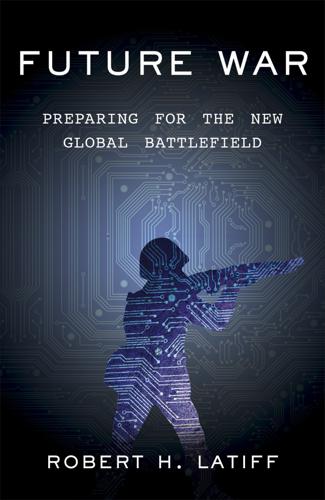
Future War: Preparing for the New Global Battlefield
by
Robert H. Latiff
Published 25 Sep 2017
In health care, computers and algorithms make excellent diagnoses, and robots perform exquisite surgeries, displacing highly skilled doctors. Police departments now depend heavily on data mining and predictive analytics to solve and prevent crimes, eliminating the need for human deductive reasoning. Self-driving cars are on the horizon. In war, that most human of endeavors, we are designing machines to handle every phase of conflict, including finding an enemy, tracking them, identifying their capabilities, targeting them with an appropriate weapon, and destroying them. The issue is the speed at which this is taking place, and how little debate or understanding will go into it.
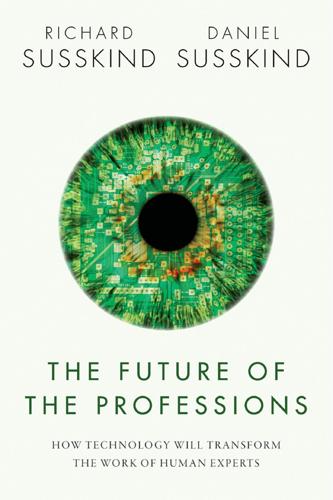
The Future of the Professions: How Technology Will Transform the Work of Human Experts
by
Richard Susskind
and
Daniel Susskind
Published 24 Aug 2015
Another is provided by Walmart, which analysed the buying habits of its customers prior to hurricanes and found not just that flashlights were in greater demand but so too were Pop-Tarts; and this insight enabled them to stock up accordingly when the next storm came round. Natural language translation systems and self-driving cars are also said to operate on the back of Big Data techniques.41 While there are many ways in which Big Data is valuable,42 most specialists in the field would agree with Mayer-Schönberger and Cukier that, ‘[a]t its core, big data is about predictions … it’s about applying math to huge quantities of data in order to infer probabilities … these systems perform well because they are fed with lots of data on which to base their predictions’.43 More extravagantly, Eric Siegel, a computer scientist, goes further when he speaks of ‘computers automatically developing new knowledge and capabilities by furiously feeding on modern society’s greatest and most potent unnatural resource: data’.44 If we combine these views of Big Data, we can see its promise for the professions—as a way of making predictions and as a way of generating new knowledge.
…
They argued that computers had caused ‘a major upheaval in the nature of human work’, and that they would continue replacing people in ‘an ever widening range of tasks … the list becomes longer each year’.54 But they stopped short of declaring that computers would replace all jobs. One task that they thought was beyond their reach was driving. They said it was ‘hard to imagine’ that truck-drivers would ever be computerized. Is it not remarkable, therefore, that Google has developed a small fleet of self-driving cars just one decade later? In ten years robots have moved ‘from making cars to driving them’.55 By 2014, Google’s vehicles had travelled almost 700,000 miles, with only one incident (said to be caused by a car driven by a human being). In the United States legislation has been passed in four states and in Washington, DC, allowing driverless cars.56 By 2020 most major car manufacturers also expect to be selling autonomous vehicles.
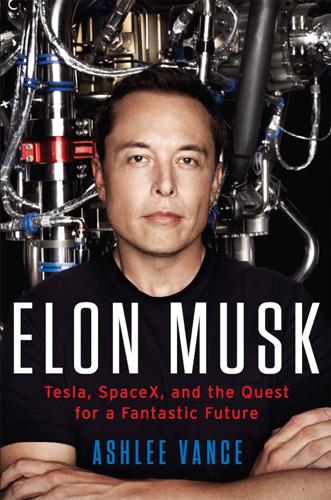
Elon Musk: Tesla, SpaceX, and the Quest for a Fantastic Future
by
Ashlee Vance
Published 18 May 2015
Tony Fadell, the former Apple executive credited with bringing the iPod and iPhone to market, has characterized the smartphone as representative of a type of super-cycle in which hardware and software have reached a critical point of maturity. Electronics are good and cheap, while software is more reliable and sophisticated. Their interplay is now resulting in science fiction–worthy ideas we were promised long ago becoming a reality. Google has its self-driving cars and has acquired dozens of robotics companies as it looks to merge code and machine. Fadell’s company Nest has its intelligent thermostats and smoke alarms. General Electric has jet engines packed full of sensors taught to proactively report possible anomalies to its human mechanics. And a host of start-ups have begun infusing medical devices with powerful software to help people monitor and analyze their bodies and diagnose conditions.
…
“He’s kind of homeless, which I think is sort of funny,” Page said. “He’ll e-mail and say, ‘I don’t know where to stay tonight. Can I come over?’ I haven’t given him a key or anything yet.” Google has invested more than just about any other technology company into Musk’s sort of moon-shot projects: self-driving cars, robots, and even a cash prize to get a machine onto the moon cheaply. The company, however, operates under a set of constraints and expectations that come with employing tens of thousands of people and being analyzed constantly by investors. It’s with this in mind that Page sometimes feels a bit envious of Musk, who has managed to make radical ideas the basis of his companies.

Surveillance Valley: The Rise of the Military-Digital Complex
by
Yasha Levine
Published 6 Feb 2018
Stanford was the epicenter of the Bay Area dot-com boom when a young Larry Page parachuted right into the vortex. Page started the computer science PhD program at Stanford in the autumn of 1995. He was in his element and immediately started scratching around for a research topic worthy of a dissertation. He toyed with various ideas, including a self-driving car, which Google would later get into in a heavy way. Eventually, he settled on Internet search.19 In the mid-1990s, the Internet was growing exponentially. The landscape was chaotic: a jumble of random websites, personal webpages, university sites, news sites, and corporate properties. Pages were popping up all over the place.
…
It could be hard to keep track of them all: Gmail, Google Docs, Google Drive, Google Maps, Android, Google Play, Google Cloud, YouTube, Google Translate, Google Hangouts, Google Chrome, Google+, Google Sites, Google Developer, Google Voice, Google Analytics, Android TV. It blasted beyond pure Internet services and delved into fiber-optic telecommunication systems, tablets, laptops, home security cameras, self-driving cars, shopping delivery, robots, electric power plants, life extension technology, cyber security, and biotech. The company even launched a powerful in-house investment bank that now rivals Wall Street companies, investing money in everything from Uber to obscure agricultural crop monitoring start-ups, ambitious human DNA sequencing companies like 23andME, and a secretive life extension research center called Calico.88 No matter what service it deployed or what market it entered, surveillance and prediction were cooked into the business.

People, Power, and Profits: Progressive Capitalism for an Age of Discontent
by
Joseph E. Stiglitz
Published 22 Apr 2019
We can make machines that not only perform programmed tasks better than humans but also learn better, at least in certain domains. Thus machines can outperform people in many key jobs. Better education and job training for workers may be a short-term palliative for many, but computers can and are replacing radiologists, so not even a doctor’s degree provides a safe harbor. It is anticipated that within a few years, self-driving cars and trucks will replace drivers; if true, this is of especial concern, because truck driving today represents a very large source of employment for men who have a high school diploma or less. The worry is that these labor-replacing machines will drive down wages, especially of low-skilled workers, and increase unemployment.
…
United States, 133 science and collective judgments, 262–63n20 Enlightenment and, 10–12 opposition to, 20 replacement with ideology, 20 as shared value, 228 as social enterprise, 262n18 and standard of living, 263n22 Trump’s attack on, xvii, 16–17 and wealth of a nation, xiv sea level rise, 207 secular stagnation, 120 securitization of mortgages, 217 self-driving cars, 118 self-interest, 19–20, 113 selfishness, 30, 240 Senate, 6, 159–60 senior citizens, 181–82 service sector, 122–23 share buybacks, 109 shareholder interests, 102 shareholder value maximization, 112 share of capital, 53 Shelby County v. Holder, 342–43n44 Sherman Antitrust Act (1890), 68 Shiller, Robert, 63–64 shortsightedness, 104–5 short-term interests, 84, 112 short-term stock trading, 207 Silicon Valley, 16, 117 Sinclair, Upton, 144 single payer system, 214 skill-biased technological changes, 304n19 slavery, 161, 271n3 small and medium-sized enterprises (SMEs), 102, 105–6 Smith, Adam, 152 on collusion among businesses, 51, 66 and Enlightenment, 10 and limits of markets, 24 and moral sentiments, 229 Wealth of Nations, 8–9 Snowden, Edward, 127 Social Darwinism, 309–10n42 social insurance programs, 141, 189 “socialist market economy with Chinese characteristics,” 95 social justice government involvement in economy and, 142 and intergenerational transmission of advantage/disadvantage, 199–201 and labor market, 197–99 restoring, 197–201 social media, 96, 131–36; See also Facebook social protection, 188–91 government and, 231 unemployment insurance, 189–90 universal basic income, 190–91 Social Security, 13, 142, 189, 210, 214–16, 242 Social Security Administration, 217 Social Security Trust Fund, 216 society, economic behavior and, 30 soft power, 29, 235–36 solar panels, Chinese, 91–92 Solow, Robert, 263n22 special interests, 146; See also lobbyists specialization, 9 SpeechNow.org v.

The Future Is Asian
by
Parag Khanna
Published 5 Feb 2019
Bike stations and dockless biking have been pioneered by companies such as Mobike and Ofo, which have spread from China across Asia and into Europe. As Asian cities prepare for driverless cars and buses on their street, policy makers, regulators, urban planners, and insurance companies are developing new frameworks to govern them. Even the Western firms ranked most likely to get self-driving cars onto the road first—including Ford, Renault, Daimler, Volkswagen, and BMW—will be looking to do so in Asia. In South Korea, Hyundai and Kia have partnered with Cisco Systems and other US IT companies to advance connected car communications. Baidu’s open-source approach to driverless-car software development, called Apollo, has lured Intel, Daimler, and Ford to contribute resources.
…
Google has invested more than $500 million in the Chinese e-commerce company JD.com and has opened an AI research center in Beijing. The United States’ leading high-performance graphics chip maker, NVIDIA, has partnered with Baidu to enhance the company’s efforts to deliver cloud-based services for home assistants and self-driving cars. At the same time, both Baidu and Tencent have funded AI labs in the United States, while Chinese investors more broadly have poured about $700 million into more than fifty AI start-ups in the United States—all of which want to advance their applications in Asia’s largest markets. All of this helps to explain why, according to the Asian Development Bank, AI is creating far more jobs in Asia than it is destroying.
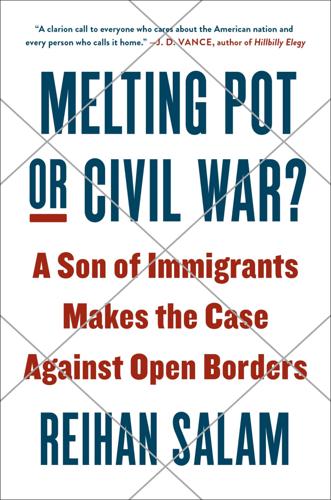
Melting Pot or Civil War?: A Son of Immigrants Makes the Case Against Open Borders
by
Reihan Salam
Published 24 Sep 2018
Under these circumstances, it’s not just offshoring that might go into reverse. The same could happen to laborsaving technologies of all sorts. Think back to the relationship between gas prices and the prevalence of gas-guzzling cars. If low-skill labor were sufficiently abundant, no one would bother to work on self-driving cars and delivery drones, as chauffeurs and bicycle messengers could be had at cut-rate prices. Indeed, in the absence of low-skill immigration, many of today’s low-wage jobs—in agriculture, garment manufacturing, meatpacking, and retail—would already be done by machines or by workers overseas. Consider the case made by Lant Pritchett, a senior fellow at the Center for Global Development and a leading advocate of open borders immigration policies.

Intertwingled: Information Changes Everything
by
Peter Morville
Published 14 May 2014
An industry that is not just “sustainable,” but enhances the world.clx A decade later, not only are we not there yet, but we may be traveling in the opposite direction. Are the espoused values of tricksters clouding our vision? What are the real assumptions, beliefs, and values of Silicon Valley? What is the theory of the world behind self-driving cars, wearable devices, ingestible sensors, clones, drones, and the Singularity? Of course, we shouldn’t be too hard on the technologists, since we won’t even have a future unless we invent ourselves out of the box. The root of our problem is on the opposite coast. Our federal government is corrupt and riddled with tricksters who are neither wise nor noble.

Moon Rush: The New Space Race
by
Leonard David
Published 6 May 2019
We do not need it to go anywhere, in fact, argues Zubrin. “It is true that one could operate rovers on the lunar surface from orbit, but the argument that it is worth the expense of such a station in order to eliminate the two-second time delay involved in controlling them from Earth is absurd. We are on the verge of having self-driving cars on Earth that can handle traffic conditions in New York City and Los Angeles. There’s a lot less traffic on the Moon,” says Zubrin. But for many space planners, the Gateway is the way to go. It offers the ability to regain and sustain deep-space exploration beyond the historical but short-duration undertaking accomplished with the Apollo missions.

Last Best Hope: America in Crisis and Renewal
by
George Packer
Published 14 Jun 2021
The winners in Smart America—connected by airplane, Internet, and investments to the rest of the globe—have lost the capacity and the need for a national identity, which is why they can’t grasp its importance for others. Their passionate loyalty, the one that gives them a particular identity, goes to their family. The rest is diversity and efficiency, heirloom tomatoes and self-driving cars. They don’t see the point of patriotism. In 2004 the Harvard political scientist Samuel Huntington published his last book, Who Are We? It was a cry of alarm about the demise of American identity under globalization. The New Yorker gave it a withering review for raising a panic about something obsolete: “If the world is becoming more porous, more transnational, more tuned to the same economic, social, and informational frequency—if the globe is more global, which means more Americanized—then the need for national cultural homogeneity is lesser, not greater.

The Zero Marginal Cost Society: The Internet of Things, the Collaborative Commons, and the Eclipse of Capitalism
by
Jeremy Rifkin
Published 31 Mar 2014
Joann Muller, “With Driverless Cars, Once Again It Is California Leading the Way,” Forbes, September 26, 2012, http://www.forbes.com/sites/joannmuller/2012/09/26/with-driverless-cars -once-again-it-is-california-leading-the-way/ (accessed June 2, 2013). 20. Chris Urmson, “The Self-Driving Car Logs More Miles on New Wheels,” Google Blog, August 7, 2012, http://googleblog.blogspot.com/2012/08/the-self-driving-car-logs-more-miles-on.html (accessed June 2, 2013). 21. Mary Slosson, “Google Gets First Self-Driven Car License in Nevada,” Reuters, May 8, 2012, http://www.reuters.com/article/2012/05/08/uk-usa-nevada-google-idUSLNE84701320120508 (accessed June 3, 2013). 22.

Chaos Monkeys: Obscene Fortune and Random Failure in Silicon Valley
by
Antonio Garcia Martinez
Published 27 Jun 2016
What are the costliest Google keywords among relatively high-volume keywords? The ranking changes, but the top ten is always composed of some combination of “insurance,” “loans,” “mortgage,” “classes,” “credit,” “lawyer,” and so on. These are Google’s moneymakers, which pay for the Android phones, the Chrome browser, the self-driving cars, the flying Wi-Fi balloons, and whatever weird, geeky, philanthropic shit the company is up to recently. Think about this in the context of more traditional industries for a moment. Chain restaurants like McDonald’s have a best-performing outlet in a particularly busy high-rent district. Automakers have a particularly popular, bestselling model like the Ford Fusion or the Chevy Impala that makes their quarter.
…
Like “scuba,” “radar,” and “laser,” “Kitten” was originally an acronym, whose origins had been more or less forgotten; the name now simply referred to the current state of Facebook’s topic-extraction technology. Topic extraction is one of those critical but unsexy artificial-intelligence challenges that underlie huge pieces of Internet technology (e.g., Google Search), but never receive the attention of sexy initiatives like self-driving cars. In essence, it’s a programmatic way of mapping the convoluted parlance of human texts like messages, webpages, or social media posts into a dictionary of semantic categories. For example, your status update of “Tiger really managed to hit that birdie in the US Open” would be automatically mapped to the categories “Tiger Woods,” “Golf,” and “US Open.”

If Mayors Ruled the World: Dysfunctional Nations, Rising Cities
by
Benjamin R. Barber
Published 5 Nov 2013
Electronic (principally wireless) sensors are, for example, introducing a valuable new layer of automation to city sustainability and efficiency in transportation and energy. Sensors that facilitate the “platooning” (efficient spacing) of vehicles and the democratization of parking information and other measures that reduce engine idling are surely useful innovations. A number of American states, including California and Nevada, are experimenting with “self-driving cars” that are far more energy efficient than traditional vehicles and are intended primarily for cities. Smart thermostats save electricity and make heating and air-conditioning more efficient. Smart sensors of every kind are being used in cities across the world, including Cairo, Dubai, Kochi, Málaga, Malta, Yokohama, Songdo, and Southampton.
…
See Virtues and vices of cities vs. countryside Rustbelt cities, 186, 223 Sandig, Jochen, 278–279 San Francisco and gay marriage, 167 Santa Monica as rebel town, 324 Santander, Spain, smart sensors in, 261 São Paulo business revival, 223 Sassen, Saskia, 10, 16, 65–66, 116, 248 Scavengers, 231 Schmidt, Eric, 241 Scholz, Olaf, 109 Schuster, Wolfgang: on democracy, 8, 84; on jobs, 213; on networks, 169; on parliament of mayors, 337, 338, 344, 353; profile, 103–105 Sea level rise, 130 Seastead, 16 Seattle, plastic grocery bag ban, 149 “Seaworlds,” 16 Second Life (video game), 261, 391n39 Secularism, 70 Security, 121–130, 160, 202–204 Segregation, 187–192 Selebi, Jackie, 126 “Self-driving cars,” 261 Self-sufficiency, 60, 63–64, 321–325 Self-Sufficient City Contest, 18 Seoul. See Park Won-soon September 11, 2001, terrorist attacks, 107 Serra, Artur, 241 Service centers, 16 Service jobs, 221–222 Service Learning movement, 395n5 Shaw, George Bernard, 272–273, 365n21 Shklar, Judith N., 197–198 Shopping malls, 44–45, 47, 276 Singapore: as city-state, 8–9, 11; mitigation of inequality in, 234, 386n38; natural networks in, 113; parks in, 47; reinvention of, 222.
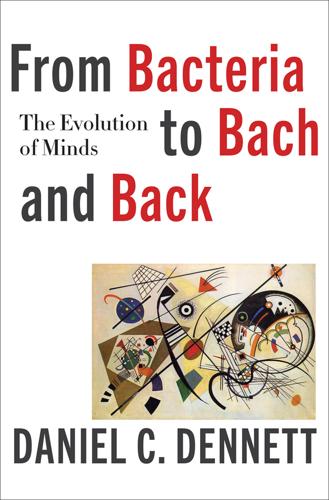
From Bacteria to Bach and Back: The Evolution of Minds
by
Daniel C. Dennett
Published 7 Feb 2017
It is just another level of generate and test, in a game that could hardly be more abstract and insulated from real-world noise and its attendant concerns, but AlphaGo is learning to make “intuitive” judgments about situations that have few of the hard-edged landmarks that computer programs excel at sorting through. With the self-driving car almost ready for mass adoption—a wildly optimistic prospect that not many took seriously only a few years ago—will the self-driving scientific exploration vehicle be far behind? So practical, scientific, and aesthetic judgment may soon be off-loaded or outsourced to artificial agents. If Susan Blackmore is right, this abdication or alienation of human judgment is already being pioneered in the digital world of popular music and Internet memes—tremes, in her new terminology (see ch. 11, p. 237).
…
S., 214 rogue cultural variants, 217, 257 Roman Catholic Church, 147 Romeo and Juliet (Shakespeare), 227–28 Roosevelt, Franklin D., 71 routines, as memes, 230 Rutter, Brad, 389, 395, 398 Salov, Serhiy, 384 Savage-Rumbaugh, Sue, 252 scams, 306–7 skeptic filters in, 312–13 Schönborn, Christoph, archbishop of Vienna, 36 Science, 44 science, modern: birth of, 13 collaboration in, 375–79 expanding discoveries in, 18, 27 Sciences of the Artificial, The (Simon), as hierarchical, 153–54 scientific image, manifest image vs., 61–63, 203, 206, 222, 287, 337, 350, 354, 355–56, 366, 367, 412 scientific information, 113–14 scientism, 11 Seabright, Paul, 408–9 seagulls, 83 Searle, John R., 95, 364–65, 366 Secret of Our Success, The (Heinrich), 305 Seedol, Lee, 391 self: as end-user, 345, 346–53 sense of, see sense of self self-criticism, 341 self-deception, 342 self-domestication, 122, 197 self-driving cars, 392 Selfish Gene, The (Dawkins), 205–6 self-justification, 341 self-maintenance, self-repair: AI and, 158, 159 in living organisms, 6, 18, 26 self-monitoring, 390 in communication, 342 talking to oneself as, 296–98 self-monitoring, of machines, 65 as step toward consciousness, 69 self-protection, as fundamental reason for behavior, 343–44 Selfridge, Oliver, 201, 342 Sellars, Wilfrid, 41, 61–62, 63, 219, 314n, 409, 412 semantic information, 112, 128 as “a difference that makes a difference,” 116–17, 118n, 120, 125, 411 asymmetric, 114–15 design improvement and, 119 as design worth getting, 5, 115, 126–27, 128, 206, 411 digitization of, 226–27 economic, see economic information information theory and, 108–9 as information worth stealing, 228 memes as, 206, 211 semantic information as misinformation and disinformation, 116, 117–18, 128, 131, 206–7 ontologies and, 125 scientific, 113–14 Shannon information vs., 108, 113, 130–31 storage of, 108–9 unwanted, 115–16 useful, 117–18, 119–21 “useless,” 118, 126–27 use of term, 107 see also affordances semantic information, extraction of, 3, 74, 85 accumulated knowledge and, 122–23 Bayesian models of, 167–68 brain as organ for, 150–51, 157 evolution and, 118–19 human competences and, 135 see also learning semantic information, transmission of, 106–7, 108–9, 412 beneficiaries in, 117–18 deception in, 127 DNA and, 123–24, 125 language and, 96 light and, 119–20 signal and noise in, 127–28 semantic information, value of: as confirmable but not measurable, 128 legal protection of, 128–34, 136 semantics, children’s acquisition of, 194–95 sense of self: as applied to one’s view of others, 345 in humans, 344 in nonhuman species, 343 see also consciousness serendipity, in software, 47 Seung, Sebastian, 162 sexism, 22, 23–24 sexual selection, 134 Shakespeare, William, 77, 227, 324 Shannon, Claude, 116, 151, 162–63 information theory of, 106, 107–9, 113, 124, 129, 157–58, 411 Shannon information, 5, 108, 109, 111, 117, 129–30, 136, 165 Shazam (app), 185n shell game, 306–7 shibboleth test, 330 Siegel, Lee, 318 signal, information transmission and, 108, 111, 124, 127–28, 136 Simon, Herbert, 153 Sims, Karl, 385 Skinner, B.

Good Economics for Hard Times: Better Answers to Our Biggest Problems
by
Abhijit V. Banerjee
and
Esther Duflo
Published 12 Nov 2019
Their current technological backwardness could just be a symptom of their lack of capital. Finally, and this might be the hardest piece to wrap one’s head around, countries on the way to the balanced growth path could actually be upgrading their technologies faster than those already there. Of course, the most showy breakthroughs, the self-driving cars and 3D printers of the day, will always be in the more advanced countries, but most technology upgrading is just moving from day-before-yesterday’s technology to yesterday’s. This is typically easier than pushing the frontier, precisely because it has already been done and we know exactly how to do it.
…
Bill Gates has recommended it.23 In 2017 the European Parliament considered, but ultimately voted down, a proposed “robot tax,” citing concern over stifling innovation.24 Around the same time, however, South Korea announced the world’s first robot tax. The Korean plan reduces tax subsidies for businesses investing in automation and combines it with a tax on outsourcing, so that the tax on robots does not lead to outsourcing.25 The problem is that while it is easy to ban self-driving cars (whether or not it’s a good idea), most robots do not look like R2-D2 in Star Wars. They are typically embedded inside machines that will still have human operators, just fewer of them; how does the regulator decide where the machine stops and the robot begins? A robot tax would likely lead companies to find new ways around it, further distorting the economy.

The Stack: On Software and Sovereignty
by
Benjamin H. Bratton
Published 19 Feb 2016
It is still geared toward staging and accelerating cognitive accomplishment, or as Heatherwick says in the project's video, “what is the best possible environment we can make, to invent, engineer and most importantly, make ideas happen and go out into the world?”56 Strategies for that staging move past the open-plan faux warehouse, “our self-driving car team, for example, has very different needs when it comes to office space from our Search engineers,” Google executive, Daniel Radcliffe explains. Others are more circumspect about the “Googledome,” arguing that it is either a wasteful expenditure or that its success will further gentrify the area, making it all but unlivable for anyone but the elect.57 It is too early in the project to say anything definite about is success or failure on specific terms, but we can read in the choice to keep (at least parts of) the campus open to publics including retailers and non-employee pedestrians that Google wishes for its footprint to be more than a high-performance vitrine for its human resources, and more like a spatial platform that draws surplus value from and provides lesser surplus value to those who come.
…
Prototypes to date have mostly used a customized Prius, though the company recently announced plans to work with auto manufacturers to build autonomous vehicles to Google's own specifications, and some early products could be commercially available in a few years, if some very wicked problems can be worked out first. On these see Lee Gomes, “Hidden Obstacles for Google's Self-Driving Cars,” MIT Technology Review, August 28, 2014. 58. Levy again: “Why is OpenFlow so advantageous to a company like Google? In the traditional model you can think of routers as akin to taxicabs getting passengers from one place to another. If a street is blocked, the taxi driver takes another route—but the detour may be time-consuming.
…
It is interesting to note that the transposition of human labor into simple puzzle solving is taken by some as straightforward market efficiency and not as a transformation of humans into diminished automatons, whereas other Stack technologies that may ultimately allow for greater individual pleasure and safety are seen as affronts to the dignity of Creation. I recently heard Joi Ito, director of the MIT Media Lab say, “Google didn't just design a self-driving car. They designed a driver.” This focuses attention on the hardware-data-Cloud path dynamic that comes into play as the car navigates the City layer, partially or fully autonomous from human passenger intention. Among the most interesting features of what we call today the “driverless car” (“horseless carriage”) is how it decenters the agency and authority of the human pilot from the cockpit and disperses it into ambient networks operating at multiple scales.

Enlightenment Now: The Case for Reason, Science, Humanism, and Progress
by
Steven Pinker
Published 13 Feb 2018
This is the danger that we will be subjugated, intentionally or accidentally, by artificial intelligence (AI), a disaster sometimes called the Robopocalypse and commonly illustrated with stills from the Terminator movies. As with Y2K, some smart people take it seriously. Elon Musk, whose company makes artificially intelligent self-driving cars, called the technology “more dangerous than nukes.” Stephen Hawking, speaking through his artificially intelligent synthesizer, warned that it could “spell the end of the human race.”19 But among the smart people who aren’t losing sleep are most experts in artificial intelligence and most experts in human intelligence.20 The Robopocalypse is based on a muzzy conception of intelligence that owes more to the Great Chain of Being and a Nietzschean will to power than to a modern scientific understanding.21 In this conception, intelligence is an all-powerful, wish-granting potion that agents possess in different amounts.
…
The observation of a 1965 report from NASA still holds: “Man is the lowest-cost, 150-pound, nonlinear, all-purpose computer system which can be mass-produced by unskilled labor.”32 Driving a car is an easier engineering problem than unloading a dishwasher, running an errand, or changing a diaper, and at the time of this writing we’re still not ready to loose self-driving cars on city streets.33 Until the day when battalions of robots are inoculating children and building schools in the developing world, or for that matter building infrastructure and caring for the aged in ours, there will be plenty of work to be done. The same kind of ingenuity that has been applied to the design of software and robots could be applied to the design of government and private-sector policies that match idle hands with undone work.34 * * * If not robots, then what about hackers?
…
Hanson, “I Still Don’t Get Foom,” Humanity+, July 29, 2014, http://hplusmagazine.com/2014/07/29/i-still-dont-get-foom/; Hanson & Yudkowsky 2008. See also Kelly 2017, and notes 26 and 27 above. 31. Quoted in J. Bohannon, “Fears of an AI Pioneer,” Science, July 17, 2016. 32. Quoted in Brynjolfsson & McAfee 2015. 33. Self-driving cars not quite ready: Brooks 2016. 34. Robots and jobs: Brynjolfsson & McAfee 2016; see also chapter 9, notes 67 and 68. 35. The bet is registered on the “Long Bets” Web site, http://longbets.org/9/. 36. Improving computer security: Schneier 2008; B. Schneier, “Lessons from the Dyn DDoS Attack,” Schneier on Security, Nov. 1, 2016, https://www.schneier.com/essays/archives/2016/11/lessons_from_the_dyn.html. 37.
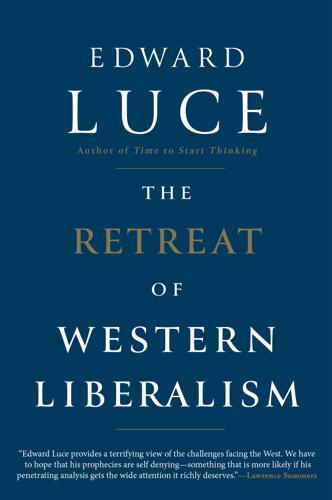
The Retreat of Western Liberalism
by
Edward Luce
Published 20 Apr 2017
Is progress built ‘one brick at a time, calloused hand by calloused hand’?4 That is surely so. Reform is the fruit of painstaking effort. The civil rights victories of the 1960s were won by courageous people who were prepared to risk their lives. But I have grave doubts about history’s long arc. History is not some self-driving car taking humanity to a pre-set destination. Whichever human is behind the wheel must ensure the others stay in the car. Telling some of the passengers they have no business in the driver’s seat because they are clueless about the destination will sooner or later result in a crash. ‘Take back control’ was the chant of Brexiteers and Trump voters alike.
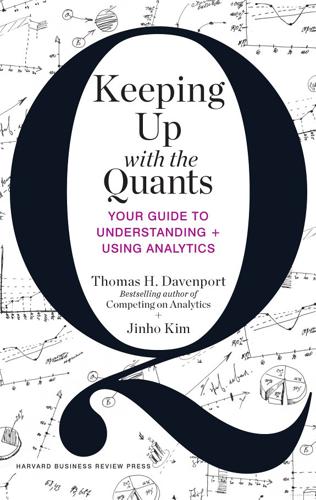
Keeping Up With the Quants: Your Guide to Understanding and Using Analytics
by
Thomas H. Davenport
and
Jinho Kim
Published 10 Jun 2013
The availability of all this data means that virtually every business or organizational activity can be viewed as a big data problem or initiative. Manufacturing, in which most machines already have one or more microprocessors, is increasingly a big-data environment. Consumer marketing, with myriad customer touchpoints and clickstreams, is already a big data problem. Google has even described its self-driving car as a big-data project. CEOs like Gary Loveman at Caesars Entertainment (he’s known for saying, “Do we think, or do we know?”), Jeff Bezos at Amazon (“We never throw away data”), and Reid Hoffman at LinkedIn (“Web 3.0 is about data”) are publicly on record that analytical thinking and decision making is a route to organizational success and personal fortune.

The Non-Tinfoil Guide to EMFs
by
Nicolas Pineault
Published 6 Dec 2017
At this point, I’ll see that he’s clearly had enough doom and gloom for today — and won’t even talk about the fact that things will likely get way worse in the next few years. © 2017 N&G Media Inc. 195 I won’t even tell him that while the imminent rollout of the next-generation 5G cellular network will enable incredible technological advances like self-driving cars,526 smart cities filled with billions of sensors forming what’s called “The Internet Of Things” (IoT)527 and make clean energy cheaper than coal528 — it’s also going to increase the levels of EMF radiation we’re exposed to by orders of magnitude.529 I won’t tell him that while users will be busy enjoying the incredible download speeds 5G will bring to the table (up to 50X faster than the current 4G/LTE), and while the industry will make trillions in profits, 5G technology will also require installing millions of new cellular antennas — possibly one at every street corner,530 and on most traffic light poles.531 And I won’t even tell him that most people working for any industry closely benefiting from a quick rollout of 5G will likely send me hate mail for having the insolence to “slow down human progress”, and accuse me of being a quack — staying completely blind even when faced with the almost-overwhelming scientific evidence showing that non-ionizing radiation is making people sick.
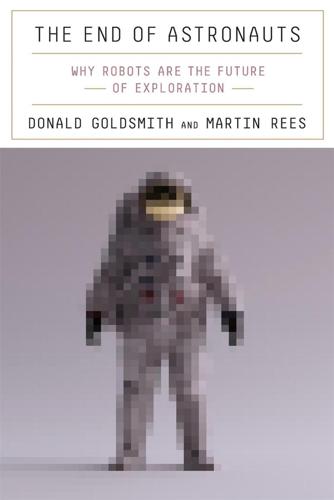
The End of Astronauts: Why Robots Are the Future of Exploration
by
Donald Goldsmith
and
Martin Rees
Published 18 Apr 2022
However, predictions of the most significant improvements coming from artificial intelligence during the next decade or so show a significant overlap between terrestrial and lunar tasks. Transportation on Earth seems likely to receive the greatest impact from AI, as the replacement of our existing road vehicles with self-driving cars and trucks improves the safety of highway travel, free from accidents caused by human distraction and poor judgment. Excessively dangerous activities such as firefighting and underground mining will be largely performed by robots. Their ability to judge and to navigate complex situations will mimic what robots on the moon must apply on a larger scale of operation.

Co-Intelligence: Living and Working With AI
by
Ethan Mollick
Published 2 Apr 2024
Though I am not a computer scientist, I am an academic studying innovation who has long been involved in work on the applications of AI, especially for learning. Over the years, AI has promised much more than it has delivered. For decades, AI research has always seemed to be on the edge of a massive breakthrough, but most practical uses, from self-driving cars to personalized tutoring, always advanced grindingly slowly. During this time, I kept experimenting with AI tools, including OpenAI’s GPT models, figuring out ways to incorporate them into my work, and assigning my students to use AI in class. So my sleepless nights came early, just after the release of ChatGPT in November 2022.

Demystifying Smart Cities
by
Anders Lisdorf
The engines were eventually changed to gasoline and electrical power, but the essence is that the industrial revolution boosted human physical power beyond what any single human or group of humans would be capable of. Similarly, AI promises to boost human mental powers. It promises to perform a number of tasks in a human way with superior performance. Current examples include self-driving cars, diagnostic aids for doctors, recommendations on music and films, and so on. All of these things have been performed by humans, but AI would be able to take them over with superior performance leaving humans to focus on other more interesting or worthwhile tasks. This is similar to the industrial revolution where machines would take over the hard, physical labor making it possible for humans to do something different instead.
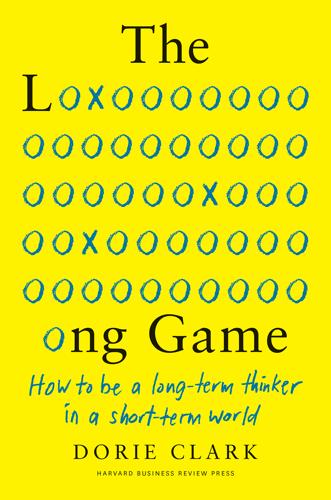
Long Game: How Long-Term Thinker Shorthb
by
Dorie Clark
Published 14 Oct 2021
I’d be happy to spend a few hours on it a week’—it’s hard [for them] to say no.” That’s your opening, he says. “And then, if there’s a fit, naturally over time, you get invited to more meetings, you’re in the circle a little bit more, you get entrusted with things.” That’s how Adam first got involved with X. A colleague had landed a job working on the self-driving car project, and Adam was desperate to get involved. “When I say ‘an opportunity arose,’” he recalls, “it’s a very fancy way of saying I begged: Could I help? I was extremely interested in the future of mobility and what they were doing. It was exciting.” He spent several months volunteering on a research project to better understand how customers learn about and adopt new technologies.
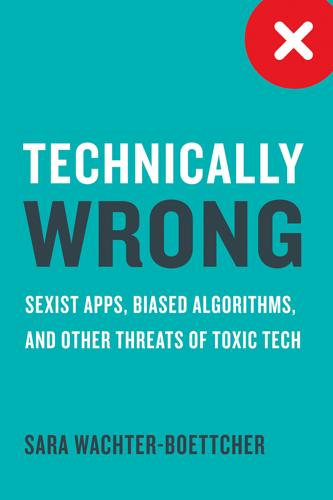
Technically Wrong: Sexist Apps, Biased Algorithms, and Other Threats of Toxic Tech
by
Sara Wachter-Boettcher
Published 9 Oct 2017
It knows that diverse teams perform better. It also knows it needs programmers and designers—badly enough to pay six-figure starting salaries to twenty-two-year-old computer science graduates. Why, then, aren’t things getting better, faster? How can the industry that put a powerful computer in my pocket and self-driving cars on the street not be able to figure out how to get more diverse candidates into its companies? Well, I’ll tell you the secret. It’s because tech doesn’t really want to—or at least, not as much as it wants something else: lack of oversight. Consider the entire concept of the “tech industry.”
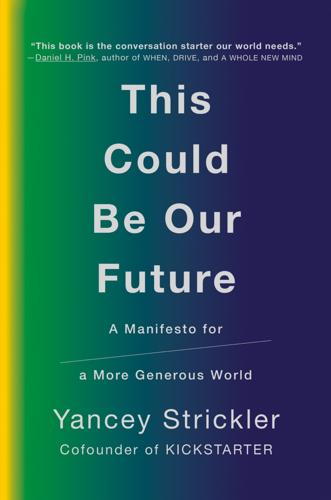
This Could Be Our Future: A Manifesto for a More Generous World
by
Yancey Strickler
Published 29 Oct 2019
The people in these generations have a tremendous opportunity—I would even say responsibility—to think carefully about where they want to lead us. Thirty years is not that far away. It will be here faster than we think. Three centuries ago, people lived as aristocrats or subjects. The idea of a person as an individual with rights was like the self-driving car of 2016: cool in theory, but far from an everyday reality. The idea that the rich would willfully share power was unthinkable. You had to petition the House of Lords to start a company. Children were expected to work long hours of hard labor. Then new ideas developed and spread for how the world could work.

Blockchain Chicken Farm: And Other Stories of Tech in China's Countryside
by
Xiaowei Wang
Published 12 Oct 2020
These non-Western theories have been marginalized throughout time by the forces of imperialism and colonialism. Ingredients dong quai (Angelica sinensis) | 9 g goji berries | 9 g ginger, cut into coarse slices | 16 g whole red dates, chopped | 12 soy milk | 2,000 ml uncooked white rice | 200 g dried apricots, diced | 100 g While companies in the West promised self-driving cars and fully sentient machines by 2020, neural networks used in AI are still constrained by a number of factors, including the specificity of training data for AI models, which is said to create a “generalization problem”: an inability to adapt to unseen new data. For example, AI models trained to perform facial recognition can classify well-lit images with great accuracy, but have a difficult time classifying faces if the photos are obscured, occluded, or shown in different lighting conditions than the images on which the AI model was trained.

A Generation of Sociopaths: How the Baby Boomers Betrayed America
by
Bruce Cannon Gibney
Published 7 Mar 2017
Then again, the possibility of a rogue supercomputer is not zero, though it remains distant. * Full disclosure: I invested in DeepMind personally in its earlier years; the company was then acquired by Google, in which I now hold stock. Wall Street has long dismissed Google’s side projects like self-driving cars and AI as money sinks, but Google has a thoughtful plan and one you may not be fully comfortable with. Google (in the verb sense; may as well start there) “self-driving car,” “AlphaGo,” and “Android Marketshare” and you’ll get a sense for the future Google might have in mind. You can add in Boston Dynamics +Atlas +Google, and you might get a sense of Google’s terminal ambitions, even if it ultimately ditches Boston Dynamics in favor of other robotics companies
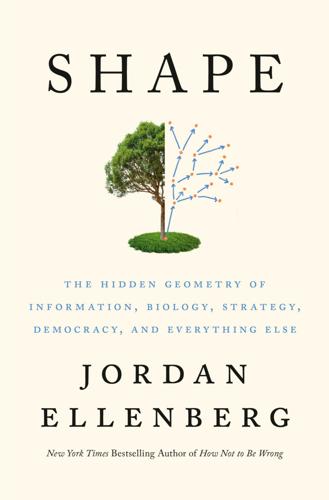
Shape: The Hidden Geometry of Information, Biology, Strategy, Democracy, and Everything Else
by
Jordan Ellenberg
Published 14 May 2021
That class of strategies is just not big enough to, for instance, tell you which images are cats. For that, you have to venture into the wild world of the nonlinear. DX21 The biggest thing going on right now in machine learning is the technique called deep learning. It powers AlphaGo, the computer that beat Lee Se-dol, it powers Tesla’s fleet of sort-of-self-driving cars, and it powers Google Translate. It is sometimes presented as a kind of oracle, offering superhuman insight automatically and at scale. Another name for the technique, neural networks, makes it sound as if the method is somehow capturing the workings of the human brain itself. But no. As Broussard said, it’s just math.
…
Common Cause, 384–85, 402, 405, 406, 408 rumors, 233–34 Russian Orthodox Church, 85 Salisbury Cathedral, 350–51 sampling, 70–74 Sanskrit poetry, 236–37, 236n, 268, 322 Sargent, John Singer, 59 Sartorius von Waltershausen, Wolfgang, 46 satire, 411–13 Savilian Professor of Geometry, 323 scale changes, 202 Scarpetta, Sergio, 142 Schachtner, Patty, 381–82 Schaeffer, Jonathan, 98–99, 138, 139–42, 140n Schimel, Brad, 380–81 Schubfachprinzip (“chest-of-drawers principle”), 273–74 Schwarzenegger, Arnold, 408 Science and Hypothesis (Poincaré), 83 science fiction, 183n Scientific American, 325n scoring functions, 164 scronch geometry, 55–56, 61–63 Second Congressional District of Wisconsin, 349–50 second law of motion, 238–39, 239n second law of thermodynamics, 331 selectivity, 37 self-driving cars, 177–78, 204–5 self-education, 210 self-evident truths, 13n Selfridge, Oliver, 204 September 11, 2001 terrorist attacks, 220 seven-shuffle theorem, 331, 393, 399 Seventh Congressional District of Pennsylvania (Goofy Kicking Donald Duck), 366, 366–67 Shamir, Adi, 135 Shannon, Claude, 93, 96, 128 Shaw v.
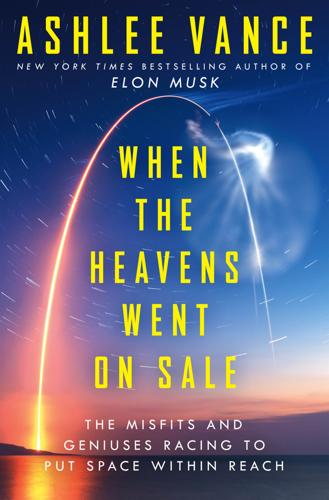
When the Heavens Went on Sale: The Misfits and Geniuses Racing to Put Space Within Reach
by
Ashlee Vance
Published 8 May 2023
Though the navy once used it for all sorts of missions, the airfield had been neglected for many years like the rest of the base and used in more recent times mostly for weird one-off projects. Parts of The Matrix, for example, were filmed there, and so, too, were experiments done by the MythBusters. I’d been to Nimitz on a couple of previous occasions to take part in experimental runs of self-driving cars, during which I had strapped myself into a robot going sixty miles per hour. Adam London and Chris Thompson led much of the static fire test. Surprising no one, the dragging of the mobile launcher and the rocket out to the tarmac was as much of an experiment as the test itself and took a number of hours.
…
It began by hiring a slew of executives from big-name companies in Silicon Valley. Most bizarrely, it named Benjamin Lyon as chief engineer. Lyon came from Apple, which, as of this writing, does not make rockets. His experience revolved around developing track pads for laptops, iPhones, and allegedly Apple’s struggling and secretive self-driving car program. Kemp argued that Lyon brought fresh perspective and the knowledge of what it took to make industrial-grade products to Astra. In other conversations, people told me that Lyon had been hired to make Astra’s investors feel good. He’d built up a strong reputation in the Valley, and the board thought he might check some of Kemp’s more brazen impulses.

Hit Refresh: The Quest to Rediscover Microsoft's Soul and Imagine a Better Future for Everyone
by
Satya Nadella
,
Greg Shaw
and
Jill Tracie Nichols
Published 25 Sep 2017
As the digital transformation automates many tasks formerly handled by people, workers need the skills that will enable them to become managers of the new automated tools. Just as workers wielding shovels gave way to workers capable of driving bulldozers, societies now need people with the skills to manage fleets of automated bulldozers, self-driving cars, and drones. To this end, government must demonstrate empathy for all of its constituents, and work to create a more knowledge-based economy. The pathway to new technologies requires a parallel investment in skills development—making sure people have the requisite skills to participate in an increasingly digital society, one that depends on smart devices and online services.
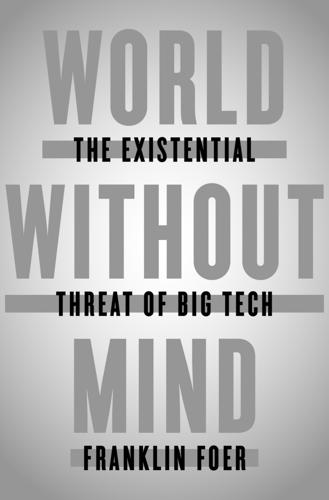
World Without Mind: The Existential Threat of Big Tech
by
Franklin Foer
Published 31 Aug 2017
Algorithms can be gorgeous expressions of logical thinking, not to mention a source of ease and wonder. They can track down copies of obscure nineteenth-century tomes in a few milliseconds; they put us in touch with long-lost elementary school friends; they enable retailers to deliver packages to our doors in a flash. Very soon, they will guide self-driving cars and pinpoint cancers growing in our innards. But to do all these things, algorithms are constantly taking our measure. They make decisions about us and on our behalf. The problem is that when we outsource thinking to machines, we are really outsourcing thinking to the organizations that run the machines
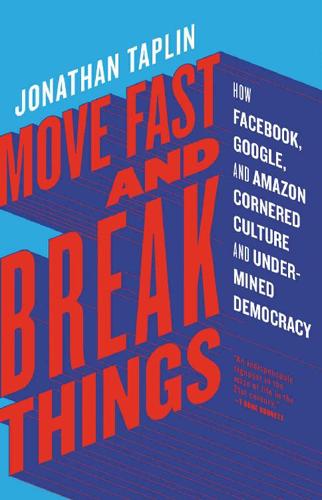
Move Fast and Break Things: How Facebook, Google, and Amazon Cornered Culture and Undermined Democracy
by
Jonathan Taplin
Published 17 Apr 2017
So assuming one could argue that Google is a monopoly and needs to enter into a consent decree, would the Bell Labs model work? If Google were required to license every patent it owns for a nominal fee to any American company that asks for it, it would have to license its search algorithms, Android patents, self-driving car patents, smart-thermostat patents, advertising-exchange patents, Google Maps patents, Google Now patents, virtual-reality patents, and thousands of others. What is clear from the Bell Labs model is that such a solution actually benefits innovation in general. The availability of the Bell Labs transistor patents allowed the rise of Texas Instruments, Fairchild Semiconductor, and Intel.
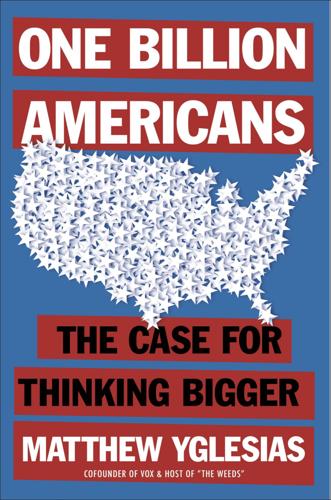
One Billion Americans: The Case for Thinking Bigger
by
Matthew Yglesias
Published 14 Sep 2020
Hiring and training more staff to safely supervise little kids and to provide older ones with safe and edifying things to do after school and during the summer months is not an entirely trivial problem, and it can’t be done overnight. But the country is not running out of able-bodied people who could do this work. Indeed, there is widespread anxiety that automation in the form of self-checkout machines and self-driving cars might lead to mass unemployment of people who lack specialized skills. This worry strikes me as overblown. But at a minimum there’s no reason to think we’d be facing a social crisis if a growing child-care and education workforce started pulling labor out of low-wage retail jobs. Most likely the big companies will find technological substitutes.

Humankind: Solidarity With Non-Human People
by
Timothy Morton
Published 14 Oct 2017
The future is foreclosed. An algorithm is an automated past: past “squared” if you like, because appearance is already the past. “The tradition of dead generations weighs like a nightmare on the brains of the living.”22 To run a society (or anything) purely in an algorithmic mode is to be caught in the past. Self-driving cars will be programmed to save the driver or save the pedestrians if there’s an accident: each mode will represent a past state of human style—driving will be caught in the past. PTSD is evidently automated human behavior resulting from a trauma that ripped a hole in the victim’s psyche. The PTSD victim is caught in the past to the power of two.
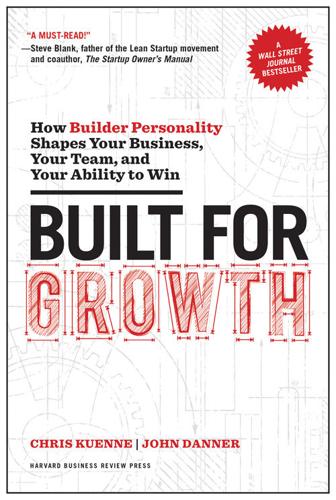
Built for Growth: How Builder Personality Shapes Your Business, Your Team, and Your Ability to Win
by
Chris Kuenne
and
John Danner
Published 5 Jun 2017
But that’s the crusade Google’s cofounders, Larry Page and Sergey Brin, embarked on in 1998. Since then, Google has redefined how we use the web, redesigned concepts of the workplace, and refined its business model—separating its wildly successful advertising business from its “moon shot” initiatives like self-driving cars. The open, shoot-for-the-moon culture of Google and its parent company, Alphabet, reflects the comparably creative but looser management approach that characterizes the Crusader personality. Both of Google’s businesses are essentially search engines: one for what is, and the other for what might be.
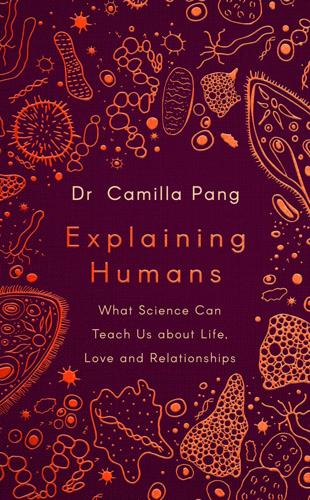
Explaining Humans: What Science Can Teach Us About Life, Love and Relationships
by
Camilla Pang
Published 12 Mar 2020
A bit like some of your maths textbooks, in which you could look up the answer at the back of the book, and the tricky part was working out how to get there. It’s supervised because, as the programmer, you know what the answers should be. Your challenge is how to get an algorithm to always reach the right answer from a wide variety of potential inputs. How, for instance, can you ensure an algorithm in a self-driving car will always recognize the difference between red and green on a traffic light, or what a pedestrian looks like? How do you guarantee that the algorithm you use to help diagnose cancer screens can correctly identify a tumour? This is classification, one of the main uses of supervised learning, in which you are essentially trying to get the algorithm to correctly label something, and to prove (and over time improve) its reliability for doing this in all sorts of real-world situations.

Curbing Traffic: The Human Case for Fewer Cars in Our Lives
by
Chris Bruntlett
and
Melissa Bruntlett
Published 28 Jun 2021
“If you are in a car, with this traffic light issue, you’re never in a prisoner’s dilemma, because this situation is solved by an external algorithm,” reveals Te Brömmelstroet. And that state of affairs will only be worsened by the (seemingly inevitable) introduction of autonomous cars: “Imagine all of us being in self-driving vehicles. The algorithm of the self-driving car solves all of these conflicts by itself. Imagine doing that for a year, and what that would do to your sense of trust of others.” On a smaller scale, this is already happening with ride-hailing services, such as Uber and Lyft, gradually diminishing our capacity to trust, and willingness to go out of our way to help one another.

Survival of the Friendliest: Understanding Our Origins and Rediscovering Our Common Humanity
by
Brian Hare
and
Vanessa Woods
Published 13 Jul 2020
And sometimes it’s even part of the problem.” Because technology is, and always has been, a double-edged sword. The projectile weapon that we used to cooperatively hunt mammoths could also be used to kill our fellow humans. Nuclear power could be a critical solution to our energy crisis if we manage not to start a nuclear war. Self-driving cars will save a hundred thousand lives a year, until terrorists hijack the network and kill a hundred thousand people in a series of crashes. The Internet was an amazing tool for human advancement, until foreign governments used it to sway democratic elections. In order for technology to be used as a force for good, it needs to be developed in anticipation of the best and worst of human nature, but it almost never is.

The Driving Machine: A Design History of the Car
by
Witold Rybczynski
Published 8 Oct 2024
Digital controls have replaced mechanical linkages, digital engine management has replaced carburetors, and computers are in charge of steering, suspension, braking, and much more. Instead of analog gauges and dials, touch screens control lights, infotainment, navigation, and heating and cooling. Doors open and close automatically. Cars park themselves and warn the driver of hazards. Multiple cameras peer warily in all directions. If the self-driving car ever arrives, it will be the final capitulation. Whether we end up with hybrids, or cars powered by electric batteries, hydrogen cells, or synthetic fuels, it is evident that a new era is beginning. No more rumbling engines, no more downshifting in corners, no more heel-and-toeing, no more tinkering and tuning.

The Price of Time: The Real Story of Interest
by
Edward Chancellor
Published 15 Aug 2022
Theranos bled investors of more than $1 billion before going bankrupt – a unicorn-sized loss.36 Other unicorns engaged in ‘narrative construction’. Uber didn’t see itself for what it was – an online cab-hailing business – but as an integral part of the new ‘gig economy’, whose software platform could be leveraged to enter myriad other business lines. Uber planned flying taxis and self-driving cars, which, by removing pesky driver costs, would put it on a path to eventual profitability. Founded in 2010, over the following years Uber raised $20 billion from investors. In the four years prior to its 2019 stock market launch, losses totalled more than $14 billion. Uber was often described as a ‘disruptive’ business.
…
As one tech analyst commented: ‘The rise in unprofitable IPOs reflects the general preference in both public and private markets for growth over profitability.’18 Silicon Valley’s unicorns attracted higher valuations at each funding round, even as losses outpaced sales. A fortunate few, such as Uber and Lyft, made it to the public markets, where they jostled for attention with another company that had long promised, or rather over-promised, the imminent arrival of self-driving cars. In 2017, the market capitalization of Elon Musk’s Tesla Inc. accelerated past General Motors.19 Three years later, Tesla was valued at more than Toyota, even though the Japanese car maker produced over twenty times as many vehicles. For this valuation to hold, Musk would have to produce millions more cars every year, and to achieve that Tesla required a great deal of investment.

Web Scraping With Python: Collecting Data From the Modern Web
by
Ryan Mitchell
Published 14 Jun 2015
We can detect that redirect in a clever way by “watching” an element in the DOM when the page initially loads, then repeatedly calling that element until Selenium throws a StaleElementReferenceException; that is, the element is no longer attached to the page’s DOM and the site has redirected: from selenium import webdriver import time from selenium.webdriver.remote.webelement import WebElement from selenium.common.exceptions import StaleElementReferenceException def waitForLoad(driver): elem = driver.find_element_by_tag_name("html") count = 0 while True: count += 1 if count > 20: print("Timing out after 10 seconds and returning") return time.sleep(.5) try: elem == driver.find_element_by_tag_name("html") except StaleElementReferenceException: return driver = webdriver.PhantomJS(executable_path='<Path to Phantom JS>') driver.get("http://pythonscraping.com/pages/javascript/redirectDemo1.html") waitForLoad(driver) print(driver.page_source) 158 | Chapter 10: Scraping JavaScript This script checks the page every half second, with a timeout of 10 seconds, although the times used for the checking time and timeout can be easily adjusted up or down as needed. Handling Redirects | 159 CHAPTER 11 Image Processing and Text Recognition From Google’s self-driving cars to vending machines that recognize counterfeit cur‐ rency, machine vision is a huge field with far-reaching goals and implications. In this chapter, we will focus on one very small aspect of the field: text recognition, specifi‐ cally how to recognize and use text-based images found online by using a variety of Python libraries.

Bitcoin for the Befuddled
by
Conrad Barski
Published 13 Nov 2014
Usually, his bracelet would now dispense 20 satoshis to the winning bidder as a reward; however, because the bracelet calculates that Crowley has missed his bus, it draws upon a 100 satoshi insurance pool from an escrow account that the winning alarm-clock bidder had to set up as part of the bidding process. As a result, the winner loses money on today’s bid (the programmer has some algorithm debugging to do). With the satoshis from the escrow account, the bracelet starts an impromptu Bitcoin auction with all nearby parked, self-driving cars to determine if any are willing to rent to Crowley. After entering the winning car, Crowley is off to work. Today, Crowley’s real estate client is buying a house. Ever since the 2023 Digital Real Estate Reform Act, all houses are managed by simply tracking ownership of a single, specific satoshi assigned to each property.

Whiplash: How to Survive Our Faster Future
by
Joi Ito
and
Jeff Howe
Published 6 Dec 2016
Rather than completely retooling, as Ford needed to do when it replaced the Model T with the Model A, an engaged community can redesign its solutions in real time, or something close to it. Of course, codesign is not the only way of creating systems-oriented solutions, nor is the Media Lab the only organization working toward incorporating this principle into its work. In describing its self-driving car, Google has emphasized that the car itself is merely an object—the artificial intelligence that drives it is the system, and it must mesh seamlessly into the other systems it touches. As such, its sensors and software are being designed to work with existing road infrastructure and to solve common problems such as drunk driving and transport for people with mobility challenges.

Makers
by
Chris Anderson
Published 1 Oct 2012
The front of its website features not products but its blog, with chatty tutorials and videos from its employees. Its forums are full of customers helping one another. Every year Sparkfun throws an autonomous vehicle competition, featuring a live band playing robot-themed songs of its own composition, and lots of kids chasing self-driving cars (I’ve been competing in the aerial category every year since it started—no wins yet). At Maker festivals around the country, Sparkfun engineers teach people how to solder, which is actually a lot more fun than it may sound. Sparkfun’s employees are young, passionate, and appear to totally love their jobs.
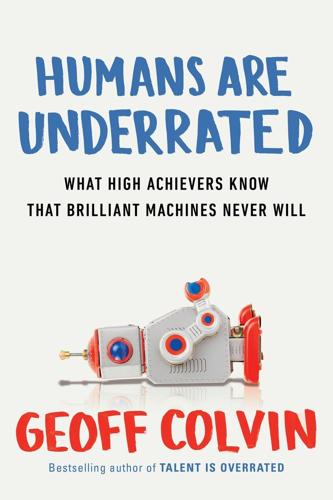
Humans Are Underrated: What High Achievers Know That Brilliant Machines Never Will
by
Geoff Colvin
Published 3 Aug 2015
But now he and others began seeing a new possibility: Capital can substitute for labor, period. Summers explained, “That is, you can take some of the stock of machines and, by designing them appropriately, you can have them do exactly what labor did before.” The key word is “exactly.” A Google self-driving car doesn’t complement anybody’s work because nobody operates it at all. The company produced a version that doesn’t have a steering wheel, brake pedal, or accelerator, and it’s designed to transport even blind or other disabled people. So it doesn’t make drivers, even a shrunken population of them, more productive.
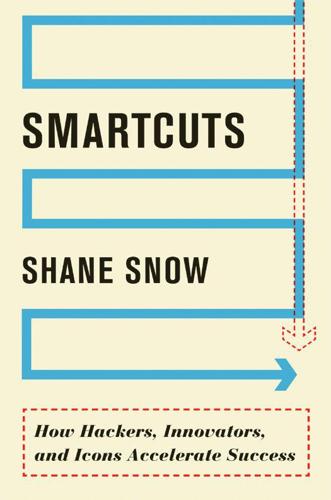
Smartcuts: How Hackers, Innovators, and Icons Accelerate Success
by
Shane Snow
Published 8 Sep 2014
Teller is the goatee-and-ponytailed head of a rather secret Google laboratory in California called Google[x]. He holds a PhD in artificial intelligence. Teller’s job is to dream big. 10x big. Google’s founders have endowed him with an engineer-filled building and a mandate to blow their minds. His team has built self-driving cars, augmented reality glasses, and WiFi balloons meant to roam the stratosphere. He’s hired some brilliant minds onto his team, but that’s not the secret of their success. The secret sounds a bit crazy. Says Teller, “It’s often easier to make something 10 times better than it is to make it 10 percent better.”
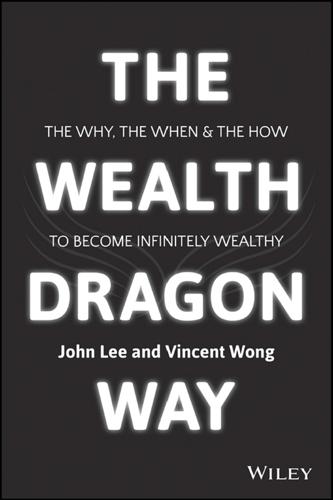
The Wealth Dragon Way: The Why, the When and the How to Become Infinitely Wealthy
by
John Lee
Published 13 Apr 2015
Documentary filmmakers sit in boats in shark-infested seas or lie amongst ravenous lions in order to bring us never-before-seen footage. It's the same in business. People risk their money investing in technology, spending huge sums on research and development, and going through successes and failures, so that we can enjoy new innovations such as smartphones and (coming sooner than you think) self-driving cars. In Without Risk There's No Reward, Bob Mayer tells many anecdotes to show how his booming property business could not have been built without taking huge risks. Step two of your plan should be to create a passive income from rental income and through trading the money markets, with a possible long-term view to creating a passive income from a business.
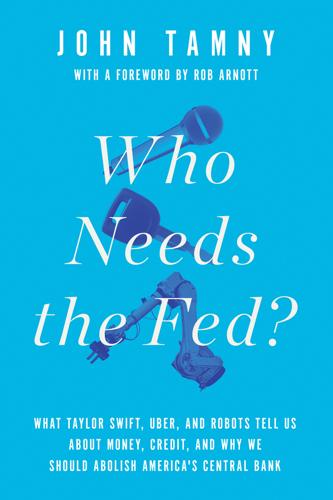
Who Needs the Fed?: What Taylor Swift, Uber, and Robots Tell Us About Money, Credit, and Why We Should Abolish America's Central Bank
by
John Tamny
Published 30 Apr 2016
This is particularly true in the age of the TSA. What’s exciting is that we don’t have to worry about how private flight will be turned into a common good; we can just wait for entrepreneurs to deliver it. Odds are the wait won’t be a long one. And with more and more talk about the promise of self-driving cars, can self-flying jets be too far off? There are many arguments for reducing government meddling in the economy and the allocation of credit, but private flight is perhaps one of the more visibly appealing of them. If government is consuming less of the economy’s resources, then entrepreneurs will have more credit to access and utilize in their attempts to turn the luxury that is private flight into a common good.
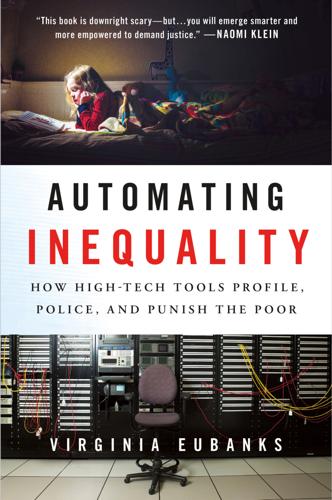
Automating Inequality
by
Virginia Eubanks
But in the last decade, Pittsburgh has seen a wave of young college graduates flocking to the region for jobs in the health professions, higher education, technology, and the arts. What was once Steel City now houses an estimated 1,600 technology companies, including a 450-employee office of Google and Uber’s robotic self-driving car division. Marc Cherna, director of the Allegheny County Department of Human Services, arrived in February 1996 to run what was then known as Children and Youth Services (CYS) in the wake of two very public scandals. In the first, known as the “Baby Byron” case, a white foster family, the Derzacks, refused to return an African American toddler, Byron Griffin, to the agency so he could be reunited with his mother.

Reinventing Capitalism in the Age of Big Data
by
Viktor Mayer-Schönberger
and
Thomas Ramge
Published 27 Feb 2018
Zetsche is a tall, slim man with a background in electrical engineering. He is easy to recognize, thanks to his bushy mustache and his sense of humor. Confronted with potential disruption by new competitors such as Tesla and its Chinese counterparts, facing game-changing advances in technology, such as self-driving cars, and finding himself up against novel business models, such as ride-hailing services, the Daimler head ordered his organization to shift into start-up mode. Copying the cellular organizational structure of successful Internet titans such as Google, Zetsche explained, would mean that Daimler will “supplement the hierarchical-management pyramid with cross-functional and interdisciplinary groups and eventually replace them.”
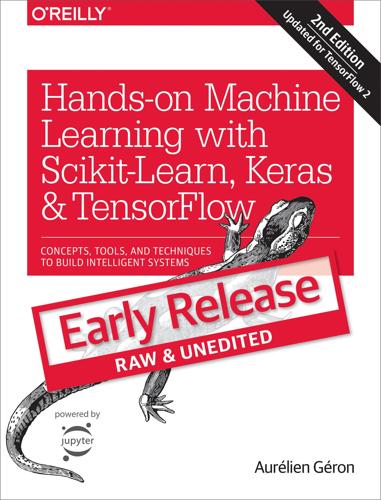
Hands-On Machine Learning With Scikit-Learn, Keras, and TensorFlow: Concepts, Tools, and Techniques to Build Intelligent Systems
by
Aurelien Geron
Published 14 Aug 2019
We will use K-Means, but feel free to experiment with other clustering algorithms. Using clustering for image segmentation Image segmentation is the task of partitioning an image into multiple segments. In semantic segmentation, all pixels that are part of the same object type get assigned to the same segment. For example, in a self-driving car’s vision system, all pixels that are part of a pedestrian’s image might be assigned to the “pedestrian” segment (there would just be one segment containing all the pedestrians). In instance segmentation, all pixels that are part of the same individual object are assigned to the same segment. In this case there would be a different segment for each pedestrian.

Rebel Ideas: The Power of Diverse Thinking
by
Matthew Syed
Published 9 Sep 2019
We might call these ‘rebel combinations’: merging the old with the new, the alien and the familiar, the outside and the inside, the yin and the yang. This trend is not slowing up but accelerating in the computer age, with its vast networks. Think of Waze. This is classically recombinant, combining a location sensor, data transmission device, GPS system and social network. Or take Waymo, the self-driving car technology company, which brings together the internal combustion engine, fast computation, a new generation of sensors, extensive map and street information, and many other technologies.14 Indeed, almost all tech innovations connect disparate ideas, minds, concepts, technologies, data-sets and more.

Escape From Model Land: How Mathematical Models Can Lead Us Astray and What We Can Do About It
by
Erica Thompson
Published 6 Dec 2022
In 2020, a video uploaded to Facebook by a British tabloid newspaper including clips of Black men was automatically labelled with the category ‘primates’. These offensively inadequate models are then incorporated into even more consequential applications. Whether it is a mobile phone that cannot detect the face of the user or self-driving cars that are unable to recognise a human pedestrian, there are many reasons to be appalled by the continued appearance of this kind of mistake in the context of the rapid development of real-world artificially ‘intelligent’ autonomous systems. With larger and larger data sets and aspirations to more widespread use, the prospect of only removing this kind of error by hand after the event is infeasible and unacceptable.

The Code: Silicon Valley and the Remaking of America
by
Margaret O'Mara
Published 8 Jul 2019
This also was a reminder of the Pentagon spending still lurking behind the Valley’s entrepreneurial audacity, for a DARPA “Grand Challenge” competition a decade earlier had revved up the race to bring driverless vehicles to market. As ever, the Valley’s next generation was helped along by the military’s willingness to make far-out bets. See Alex Davies, “Inside the Races that Jump-Started the Self-Driving Car,” Wired, November 10, 2017, https://www.wired.com/story/darpa-grand-urban-challenge-self-driving-car/, archived at https://perma.cc/EWN5-8XCD. 2. Tiernan Ray and Alex Eule, “John Doerr on Leadership, Education, Google, and AI,” Barron’s, May 5, 2018, https://www.barrons.com/articles/john-doerr-on-leadership-education-google-and-ai-1525478401, archived at https://perma.cc/S2W5-5GMY [inactive]; James Morra, “Groq to reveal potent artificial intelligence chip next year,” ee News: Europe, November 17, 2017, http://www.eenewseurope.com/news/groq-reveal-potent-artificial-intelligence-chip-next-year, archived at https://perma.cc/FQ3G-YAEK. 3.

Doing Good Better: How Effective Altruism Can Help You Make a Difference
by
William MacAskill
Published 27 Jul 2015
For example, before the advent of alarm clocks, people called knocker uppers were employed to knock on the windows of sleeping people in the morning, so they could get to work on time. Similarly, computers have decreased the need for jobs that involve basic number crunching; refrigerators have decreased the need for milkmen; robotic assemblers have decreased the need for assembly-line workers. The technology for self-driving cars is already here, so it may be unwise to become a taxi or a truck driver because there is a good chance that this industry will become automated over the next couple of decades. Improvements in technology are reducing demand for clerks and secretaries. In general, jobs that require social skills (like public relations), creativity (like fashion design), or precise perception and manipulation (like boilermaking) are the least likely to become automated.
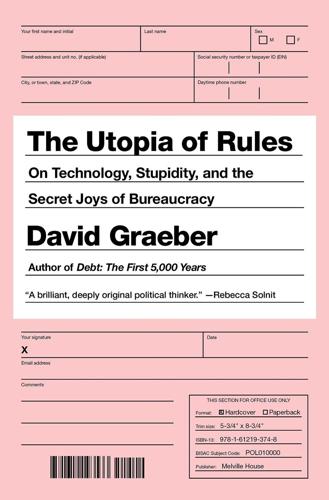
Bureaucracy
by
David Graeber
Published 3 Feb 2015
The Internet does provide opportunities for collaboration and dissemination that may eventually help break us through the wall, as well. Where will the breakthrough come? We can’t know. Over the last couple years, since the first version of this essay saw print, there has been a whole spate of new possibilities: 3-D printing, advances in materials technologies, self-driving cars, a new generation of robots, and as a result, a new spate of discussion of robot factories and the end of work. There are hints, too, of impending conceptual breakthroughs in physics, biology, and other sciences, made all the more difficult because of the absolute institutional lock of existing orthodoxies, but which might well have profound technological implications as well.
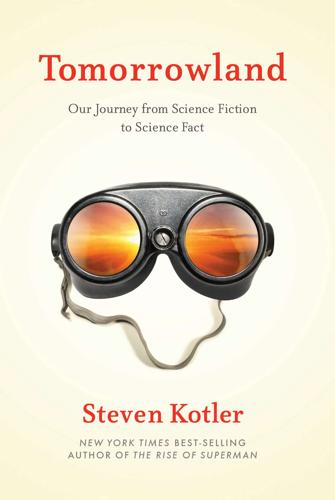
Tomorrowland: Our Journey From Science Fiction to Science Fact
by
Steven Kotler
Published 11 May 2015
Initially, offerings were simple. We crowdsourced the design of T-shirts (Threadless.com) and the writing of encyclopedias (Wikipedia.com), but it didn’t take long for the trend to start making inroads into the harder sciences. Pretty soon, the hunt for extraterrestrial life, the development of self-driving cars, and the folding of enzymes into new and novel proteins were being done this way. With the fundamental tools of genetic manipulation — tools that cost millions of dollars not ten years ago — dropping precipitously in price, the crowdsourced design of biological agents was just the next logical step.

Our Final Invention: Artificial Intelligence and the End of the Human Era
by
James Barrat
Published 30 Sep 2013
So it seemed inconceivable that Google did not have AGI in mind. Then, about a month after my last correspondence with Freidenfelds, The New York Times broke a story about Google X. Google X was a stealth company. The secret Silicon Valley laboratory was initially headed by AI expert and developer of Google’s self-driving car, Sebastian Thrun. It is focused on one hundred “moon-shot” projects such as the Space Elevator, which is essentially a scaffolding that would reach into space and facilitate the exploration of our solar system. Also onboard at the stealth facility is Andrew Ng, former director of Stanford University’s Artificial Intelligence Lab, and a world-class roboticist.
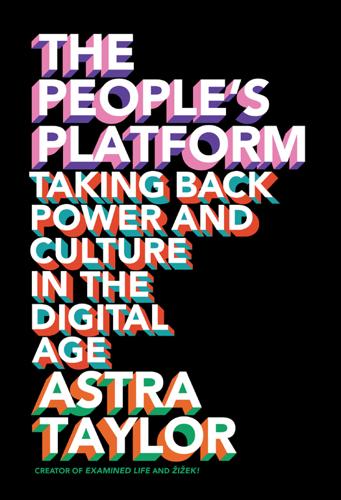
The People's Platform: Taking Back Power and Culture in the Digital Age
by
Astra Taylor
Published 4 Mar 2014
It makes devices, offers cloud computing services, and has begun to produce its own content, starting various publishing imprints before expanding to feature film production.32 Google is taking a similar approach, having expanded from search into content, operating system design, gadget manufacturing, retail, “smart” appliances, robotics, self-driving cars, debit cards, and fiber broadband service in select communities.” More troublingly, at least for those who believed the Internet upstarts would inevitably vanquish the establishment dinosaurs, are the ways the new and old players have melded. Condé Nast bought Reddit, Fox has a stake in Vice Media, Time Warner bet on Maker Studios (which is behind some of YouTube’s biggest stars), Apple works intimately with Hollywood and AT&T, Facebook joined forces with Microsoft and the major-label-backed Spotify, and Twitter is trumpeting its utility to television programmers.

Exponential Organizations: Why New Organizations Are Ten Times Better, Faster, and Cheaper Than Yours (And What to Do About It)
by
Salim Ismail
and
Yuri van Geest
Published 17 Oct 2014
Sustainable production and logistics Greener and more self-sufficient production driven by robo-transport, sensors, AI, flexible solar panels and perovskite solar cells. Nanomaterials (graphene) that can be added to buildings, vehicles, machines and equipment. Transformation in Logistics (road, water and air transport). Autonomous transport and delivery Leveraging autonomous vehicles (e.g., Google’s self-driving car) and drones (e.g., Matternet) for the transport and delivery of supplies and products, especially in remote areas. Full supply chain tracking/monitoring Internet of Things sensors used to monitor the entire supply chain. Location, status, preservation and safety of most substances can be monitored (chemical substance traces, pollution, quality of life).

Going Dark: The Secret Social Lives of Extremists
by
Julia Ebner
Published 20 Feb 2020
Most recently, hacks of political institutions have gone beyond this: they have entailed not just financial losses, but, more worryingly, a loss of trust – in democratic processes as well as in political representatives. And while past hacks may have led to millions of dollars or files being lost, future hacks could lead to millions of lives being lost. If terrorists continue upgrading their cyber skills, there is a real risk of more sophisticated hacks targeting power plants or self-driving cars. At this point in time, though, it is the hybrid threats we should be worried about: the mix of cyber and real-world terrorism. 12 Gamified Terrorism: Within the Sub-cultures behind the New Zealand Attack My heart is racing and I feel sick as I leave the office. I can still see the men and women collapsing one by one as they are hit by the rain of bullets, and I can hear those gunshots fired with the semi-automatic rifle.

The Clock Mirage: Our Myth of Measured Time
by
Joseph Mazur
Published 20 Apr 2020
Once I get beyond the nauseatingly painful gradual acceleration to get up to goal speed, and then cruise at that speed at a comfortable constant velocity, I will hardly sense moving. After the joy of peeking at a few dwarf stars and returning to earth, time will have moved on by a hundred years. I’d likely be amazed to see self-driving cars levitating on roads that don’t look at all like roads. I might see a few very old people jogging to work with prosthetic legs, see brainwave bonnets on sidewalk lampposts for getting five-minute naps to make up for no nighttime sleep or vending machines where one can get a caffeine jolt pumped directly to the basal ganglia area of the brain.

The Startup Wife
by
Tahmima Anam
Published 2 Jun 2021
I knew this was coming—we can’t live on his allowance forever, and we don’t have the money to launch—but neither of us knows how to do this, not even Jules, whose amniotic fluid was probably flecked with gold. I’ve gone as far as leafing through copies of Harvard Business Review, and subscribing to daily updates from various websites that promise to tell me how to do it, but all I can see is funding for self-driving cars, for putting stuff up in the cloud like it’s one giant safe-deposit box in the sky, and subscriptions to everything from dye-free tampons to vegan protein powder. There’s fintech, biotech, oiltech, real estate, bento boxes of skin care, and tiffin carriers of meat-free protein. There are no funds for quasi-religious platforms.

The Strange Order of Things: The Biological Roots of Culture
by
Antonio Damasio
Published 6 Feb 2018
It will not be difficult, even without feelings, for so-called humanlike robots to play and win many sorts of games, or to talk as well as HAL seemed to talk in 2001, or to serve as helpful human companions, although one shudders a bit at the prospect of a society that needs robots as companions. Are there not enough unemployed to fill those jobs after self-driving cars and trucks took away their livelihood? I can see humanlike robots predict the weather, operate heavy machinery, and perhaps even turn against us. But it will take a while until they really feel, and until then the simulation of humanity will be just that, a simulation. Back to Mortality While we wait for the promised and touted singularities, we might as well deal seriously with two of the largest medical problems anywhere in the world: drug addictions and pain management.

A Pelican Introduction: Basic Income
by
Guy Standing
Published 3 May 2017
Washington, DC: National League of Cities Center for City Solutions and Applied Research. 6. M. Bittman (2015), ‘Why not Utopia?’, New York Times, Sunday Review, 20 March. 7. H. Koch and J. Quoos (2017), ‘Schwab: “Gewinner müssen mit Verlierern solidarisch sein” ’, Hamburger Abendblatt, 9 January. 8. S. Dadich (2016), ‘Barack Obama, neural nets, self-driving cars and the future of the world’, Wired, October. https://www.wired.com/2016/10/president-obama-mit-joi-ito-interview/. 9. The best general treatment is Caputo, Basic Income Guarantee and Politics. 10. V. Taylor et al. (2002), Report of the Commission on the Comprehensive Reform of Social Security.

The Socialist Manifesto: The Case for Radical Politics in an Era of Extreme Inequality
by
Bhaskar Sunkara
Published 1 Feb 2019
Reformat your CV, and work on that handshake. Your factory is being outsourced? Stop whining, and take a coding class. As one popular libertarian title puts it, You’re Broke Because You Want to Be. Today, the masters of Silicon Valley are presenting a new vision of the future—space travel, 3-D printing, artificial intelligence, self-driving cars. But without the promise of mass employment to go along with all that disruption, they summon more concern that robots are coming to steal our jobs than awe. We all can’t just go to an “innovation clinic” and launch our own app. This hasn’t stopped the new captains of industry from trying to expand their appeal into the political realm.

The Digital Party: Political Organisation and Online Democracy
by
Paolo Gerbaudo
Published 19 Jul 2018
This trend is epitomised by the rapid growth of causalised workers such as call centre workers, riders for delivery companies such as Deliveroo, Uber drivers or warehouse workers as those of Amazon104 among many other typical profiles of the so-called ‘gig economy’.105 These figures can be considered as part of the ‘precariat’, an emerging class which, in his General Theory of the Precariat, Italian activist and theorist Alex Foti describes as ‘the underpaid, underemployed, underprotected, overeducated, and overexploited’.106 What is more, many fear the job-destroying avalanche of the incoming second automation revolution, with robots predicted to eliminate many manual jobs such as drivers substituted by self-driving cars, and artificial intelligence threatening to destroy clerical jobs, such as those in the legal and accounting sectors. This ambiguous nature of the digital revolution provides useful insights to make sense of the support base of digital parties, which, as we shall see, centres on digitally savvy millennials living in urban areas.
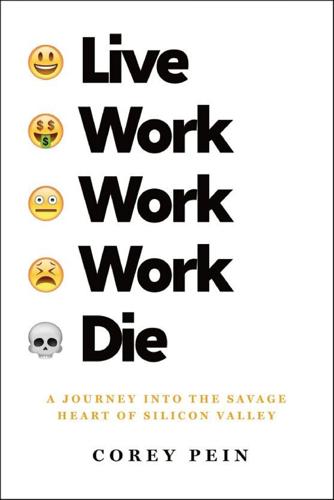
Live Work Work Work Die: A Journey Into the Savage Heart of Silicon Valley
by
Corey Pein
Published 23 Apr 2018
My fellow passengers boozed it up the whole way, of course. The transit plaza teemed with more drunken, lanyard-wearing princelings and princesses. As I approached the taxi stand, two white Google cars pulled up simultaneously to an intersection. One was a Street View surveillance vehicle. The other had a label on the side that said SELF-DRIVING CAR, so it must’ve been a prototype. I took an old-fashioned taxi that got lost on the way to my new home. When I arrived, the host, Jeannie, was out wandering the unlit streets looking for her cat. It being late, she showed me outside to the tent straightaway. I tiptoed around fallen seeds and dried pine needles in the dark summer night.
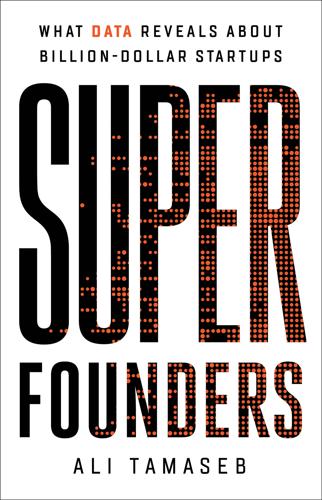
Super Founders: What Data Reveals About Billion-Dollar Startups
by
Ali Tamaseb
Published 14 Sep 2021
Those subsectors were followed by network-management software (like Palo Alto Networks, which creates firewalls for networks, among other products), database management (like MongoDB, a document-oriented database company), automation/workflow software (like UiPath, a company automating manual tasks for enterprise clients), automotive (like Cruise, a self-driving car company acquired by General Motors), and biotechnology (like Indigo Ag, an agriculture company that works with plant microbes, aiming to improve yields). Business and productivity software was the largest subsector among billion-dollar startups, followed by social/consumer software, application software, and e-commerce.

Breaking Twitter: Elon Musk and the Most Controversial Corporate Takeover in History
by
Ben Mezrich
Published 6 Nov 2023
It had just been the two of them, and they had been talking about family, about how they’d both gone to Burning Man and it had made them think hard about their place in the world, and where they came from. Elon had told her that his older kids, his teenagers, didn’t like to hang out with him. Although she was very close to her own kids, she knew that teenagers could be difficult. But this was Elon Musk, a man who made self-driving cars and rocket ships and flamethrowers, who dug tunnels under Las Vegas and was going to put a man on Mars. What teenager wouldn’t want to hang out with a man like that? She’d felt bad for him at the time, and she felt bad for him now. She had the sense that it wasn’t just Twitter in a downward spiral.

Uncomfortably Off: Why the Top 10% of Earners Should Care About Inequality
by
Marcos González Hernando
and
Gerry Mitchell
Published 23 May 2023
He reflects that “this might be related to upbringing and being encouraged to pursue risk”. This includes a willingness to be flexible. It is closely associated with making good decisions and leveraging the skills that you have: “These days it’s about working smarter. We have to see what technology is doing. Why work hard as a taxi driver if you might be replaced by a self-driving car?” Later in the interview, we asked Peter if he thought there should be a space for people who are not necessarily good decision makers, such as the taxi drivers he spoke about. He responded: 64 ‘Work is life, that’s it’ ‘If someone cannot recognise […] the demise of an industry, then that’s a problem that needs to be addressed, maybe through re-education and empowerment.
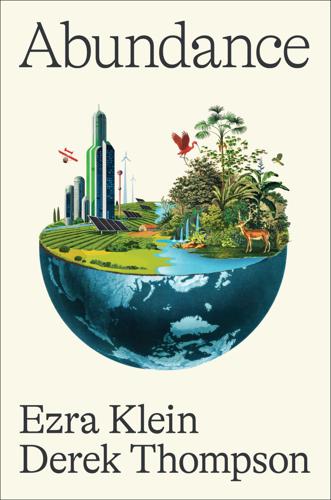
Abundance
by
Ezra Klein
and
Derek Thompson
Published 18 Mar 2025
Decades from now, our children may gawk in horror that people with chronic pain or lingering illness in the early twenty-first century couldn’t take a simple all-purpose saliva or blood test to answer the basic question Why do I feel sick? If disease is a universe of mysteries, we have scarcely explored one minor solar system of its cosmos. Inventions that may seem outlandish today may soon feel essential to our lives. Streets filled with electric self-driving cars that give us mobility without emissions and free us from the vast number of deaths caused by faulty human reflexes or judgment. Gigantic desalination facilities that transform our oceans into drinkable tap water. An economy with robots that build our houses and machines that take on our most dangerous and soul-draining work.
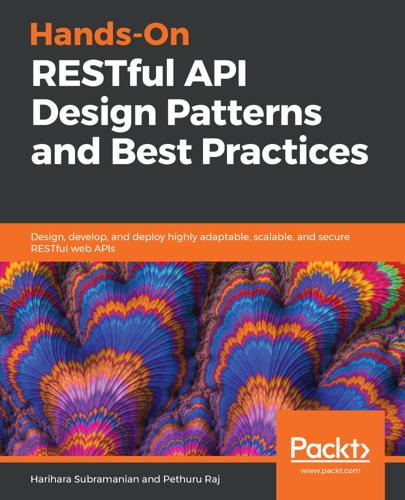
Hands-On RESTful API Design Patterns and Best Practices
by
Harihara Subramanian
Published 31 Jan 2019
There are novel use cases being unearthed and rolled out to enhance the proliferation and penetration of the IoT paradigm. Due to the multiplicity and heterogeneity of IoT devices, the operational, management, and security complexities of IoT devices are being deployed in homes, hotels, hospitals, retail stores, manufacturing floors, railway stations, restaurants, and self-driving cars. Nowadays, sensors and actuators have become the eyes and ears of every digital application these days. Every device is becoming computational, communicative, perceptive, and active. There are edge and fog devices with sufficient power to form ad hoc clouds to capture, store, process, and analyze real-time, time-series, and streaming data to extract actionable insights that can be looped back to devices and people to make intelligent decisions in time and to engage in correct and relevant activities with all the clarity and confidence.

Americana: A 400-Year History of American Capitalism
by
Bhu Srinivasan
Published 25 Sep 2017
In prime time on ABC, Americans could tune in to catch the animated cartoon The Jetsons, about a space-age family who lived with their housekeeping robot, Rosie, and dog, Astro. A couple of years later, Desilu, I Love Lucy’s production company, premiered Star Trek on CBS. Stanley Kubrick’s 2001: A Space Odyssey had a near-omniscient computer named Hal manipulating its astronauts. By the midsixties, the concepts of artificial intelligence and self-driving cars were no longer in the realm of magic or science fiction—they were seen as the logical, inevitable outcome of the American trajectory. Modernity and sophistication looked like American Airlines. A leader in the fast-growing field of jet travel, the airline brought in IBM to develop flight plans.
…
America had been the world’s top oil producer from the first drilling in Pennsylvania in 1859 until the early seventies, remained in the top three, then climbed back to the top with new methods of drilling. Boeing still made planes. Its pharmaceutical companies and medical device makers were among the best in the world. John Deere and Caterpillar remained leaders in farm and construction equipment. And it dominated in technology, shaping the world’s future in terms of what came next, like self-driving cars and trucks. For many, the lingering American discontent had roots in nostalgia about some former era of glory—but the thirties had the Depression; the forties, World War II; the idyllic fifties, over thirty thousand battlefield deaths in the Korean War and schoolchildren doing drills to prepare for a nuclear war; the sixties, Vietnam and three political assassinations; the seventies, the oil crisis, economic malaise, and high inflation; the eighties, the fear of AIDS, street crime, and paranoia about Japan.

Americana
by
Bhu Srinivasan
In prime time on ABC, Americans could tune in to catch the animated cartoon The Jetsons, about a space-age family who lived with their housekeeping robot, Rosie, and dog, Astro. A couple of years later, Desilu, I Love Lucy’s production company, premiered Star Trek on CBS. Stanley Kubrick’s 2001: A Space Odyssey had a near-omniscient computer named Hal manipulating its astronauts. By the midsixties, the concepts of artificial intelligence and self-driving cars were no longer in the realm of magic or science fiction—they were seen as the logical, inevitable outcome of the American trajectory. Modernity and sophistication looked like American Airlines. A leader in the fast-growing field of jet travel, the airline brought in IBM to develop flight plans.
…
America had been the world’s top oil producer from the first drilling in Pennsylvania in 1859 until the early seventies, remained in the top three, then climbed back to the top with new methods of drilling. Boeing still made planes. Its pharmaceutical companies and medical device makers were among the best in the world. John Deere and Caterpillar remained leaders in farm and construction equipment. And it dominated in technology, shaping the world’s future in terms of what came next, like self-driving cars and trucks. For many, the lingering American discontent had roots in nostalgia about some former era of glory—but the thirties had the Depression; the forties, World War II; the idyllic fifties, over thirty thousand battlefield deaths in the Korean War and schoolchildren doing drills to prepare for a nuclear war; the sixties, Vietnam and three political assassinations; the seventies, the oil crisis, economic malaise, and high inflation; the eighties, the fear of AIDS, street crime, and paranoia about Japan.

The Sharing Economy: The End of Employment and the Rise of Crowd-Based Capitalism
by
Arun Sundararajan
Published 12 May 2016
As illustrated, most of the population actually uses an owned car less than 10% of its life, which means that a vast majority of cars are parked on the street or in a garage for over 90% of their lives. (As I point out in the Introduction, this seems true in Manhattan as well.) And Californians actually use their cars more intensively than the average US resident does. Figure 5.1 Vehicle usage in the United States (compiled from NHTS data as of 2009). We may not need to wait for self-driving cars to see a digitally induced economic revolution in the auto and transportation sector. The range of new peer-to-peer models—Uber to get a driven car on-demand, Lyft to see who else is driving your route, Getaround to see whose car in your neighborhood might be available for you to drive by yourself, BlaBlaCar to get a ride to another city—have already started to increase the impact of the global automobile stock.
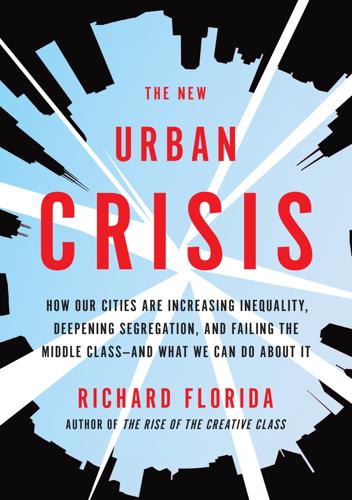
The New Urban Crisis: How Our Cities Are Increasing Inequality, Deepening Segregation, and Failing the Middle Class?and What We Can Do About It
by
Richard Florida
Published 9 May 2016
It is time to level the playing field for mass transit by reducing the outright subsidy we give to the car in the form of roads and highways. Cities in other parts of the world, including London, have begun to institute congestion charges, which make drivers pay for their use of busy roads to help alleviate traffic, sprawl, and pollution. New developments like self-driving cars, electric vehicles, and on-demand digital delivery systems, such as Uber and Lyft, will certainly play a big role in the city of the future. But we still need mass transit to provide the connective fiber that will increase clustering and enable the development of a larger number of dense, mixed-use clustered neighborhoods that are affordable to more people.
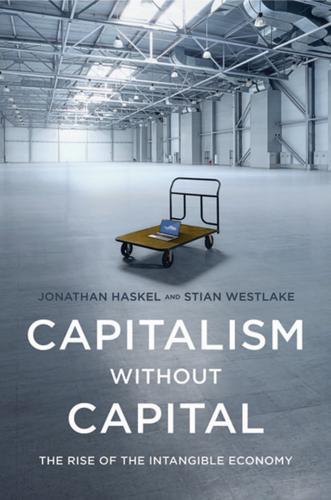
Capitalism Without Capital: The Rise of the Intangible Economy
by
Jonathan Haskel
and
Stian Westlake
Published 7 Nov 2017
Even if these forms of education end up being paid for by the adult students themselves rather than by taxpayers, the research to develop new models that work seems like a worthy goal of public policy. Government funding can also help reduce coordination problems that may hold businesses back from investing. Suppose there are big economic gains to be had from developing self-driving cars and reconfiguring our cities around them (fewer car accidents, more productive commutes, freeing up parking spaces for redevelopment, and so on). But realizing these benefits requires a lot of investments to be made together (driverless car technology, urban design, new insurance policies, and so on); it may well be that no company is willing to make investments on its own unless it knows that others will make complementary ones.
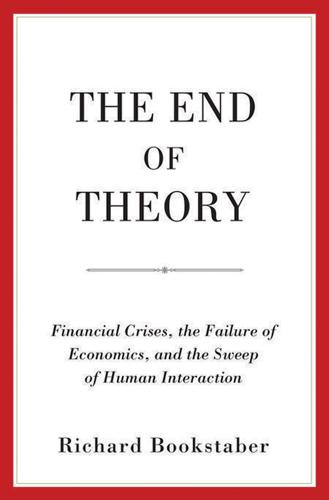
The End of Theory: Financial Crises, the Failure of Economics, and the Sweep of Human Interaction
by
Richard Bookstaber
Published 1 May 2017
We are not stepping into a smooth, equilibrium sort of world where the agents and institutions will behave the same way in the future as they have in the past, or even where the agents in our financial system will be those of the past. We have had one hundred fifty years of neoclassical economics. We need to look elsewhere if we are going to be successful in understanding and containing complex, dynamic financial crises. If we build a highway for self-driving cars, we don’t need to use an agent-based model (so long as there are no human drivers or pedestrians on it). If we construct a network of distributed databases sharing and updating information, we don’t need to use an agent-based model. We don’t need an agent-based model for a mechanical, predetermined world.

A More Beautiful Question: The Power of Inquiry to Spark Breakthrough Ideas
by
Warren Berger
Published 4 Mar 2014
But students find it really liberating to have a teacher say, ‘I don’t know the answer—so let’s figure this out together.’” Is it possible the kind of Socratic teaching that Deresiewicz’s professor did could make a comeback in the online world? That’s what Sebastian Thrun is hoping. Thrun, known for developing Google’s self-driving car and other tech breakthroughs, says he was never comfortable asking disruptive questions in his native Germany but found a much more receptive environment in Silicon Valley. While working at Google he also taught at Stanford University; in 2011, an artificial intelligence course he co-taught was offered online, and Thrun was surprised to see that tens of thousands signed up for it.
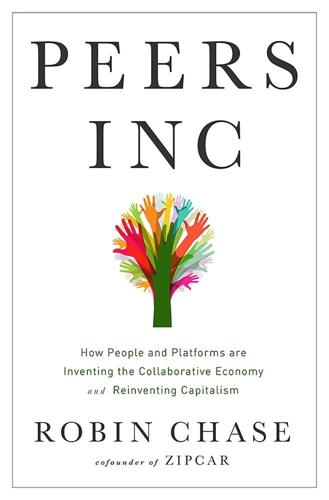
Peers Inc: How People and Platforms Are Inventing the Collaborative Economy and Reinventing Capitalism
by
Robin Chase
Published 14 May 2015
There is no economic rationale to have cars that are used 5 percent of the time taking up valuable and heavily subsidized real estate for parking the other 95 percent of the time. Once vehicles are shared, we only need about a tenth of the number we currently have. The move to shared-cars-only cities is almost certainly inevitable, particularly when the self-driving car arrives. Technology makes it simple, the economics of pay per use are preferable to consumers, and cities will increasingly require it because of parking space constraints. Back in the mid-2000s, I couldn’t figure out why the car companies didn’t see this (today, they all do). Why weren’t they adapting faster?

Frugal Innovation: How to Do Better With Less
by
Jaideep Prabhu Navi Radjou
Published 15 Feb 2015
Contributors could either tinker with concept designs available on Volkswagen’s website or submit their own original designs. The winning idea came from Wan Jia, a student from Chengdu, who dreamed up a two-person, emissions-free hover car that uses magnetic levitation. Volkswagen then brought to life Jia’s imaginary car by making a short video that shows her ecstatic parents proudly flying in the self-driving car that their daughter designed (the video has been viewed over 7.5 million times on YouTube). Validators Validators are customers who do not create anything themselves but help to validate new product ideas and prototypes. These customers can reduce thousands of potential options and features to a few that matter most to the majority of customers.
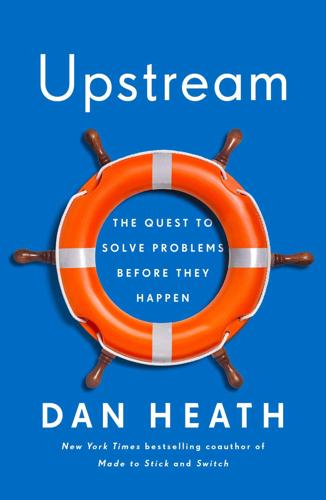
Upstream: The Quest to Solve Problems Before They Happen
by
Dan Heath
Published 3 Mar 2020
Rather, thousands of people—auto safety experts and transportation engineers and Mothers Against Drunk Driving volunteers—tweaked the system so that millions of other people could be safer. They shaped the water. And they shape it still: Despite the success, there are still more than 37,000 people who die annually from car crashes in the US. Someday, self-driving cars might come close to eliminating those fatalities. In the meantime, there are countless tweaks being made every week to help fallible human drivers. On sharp curves where accidents tend to happen, transportation departments have begun to install high friction surface treatments (HFSTs)—overlays of ultra-rough material superglued to existing roads.
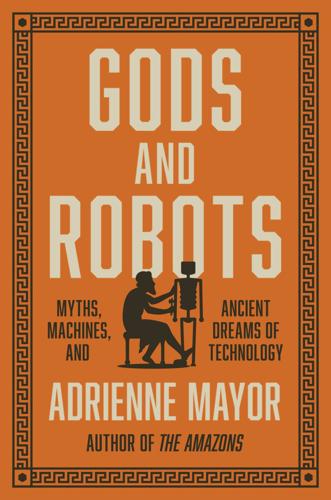
Gods and Robots: Myths, Machines, and Ancient Dreams of Technology
by
Adrienne Mayor
Published 27 Nov 2018
AI can also be classified by types: Type I machines are reactive, acting on what they have been programmed to perceive at the present, with no memory or ability to learn from past experience (examples include IBM’s Deep Blue chess computer, Google’s AlphaGo, and the ancient bronze robot Talos and the self-moving tripods in the Iliad). Type II AI machines have limited capacity to make memories and can add observations to their preprogrammed representations of the world (examples: self-driving cars, chatbots, and Hephaestus’s automated bellows). Type III, as yet undeveloped, would possess theory of mind and the ability to anticipate others’ expectations or desires (fictional examples: Star Wars’ C-3PO, Hephaestus’s Golden Servants, the Phaeacian ships). Type IV AI of the future would possess theory of mind as well as self-awareness (fictional examples include Tik-Tok in John Sladek’s 1983 novel and Eva in the 2015 film Ex Machina).

What Algorithms Want: Imagination in the Age of Computing
by
Ed Finn
Published 10 Mar 2017
As Siva Vaidhyanathan wrote of Google in 2011: “there has never been a company with explicit ambitions to connect individual minds with information on a global—in fact universal—scale.”24 Google’s immensity and deep imbrication in the core structures of algorithmic culture have also fueled global ambitions. The company’s X Lab dedicates itself entirely to considering “moonshot” ideas that offer radical solutions or exponential improvements to current challenges, and they are the intellectual force behind high-risk ventures such as Google Glass, the self-driving car, and Project Loon, an effort to deliver Internet service to remote areas via high-altitude balloons. Astro Teller, the lab’s captain of moonshots, has encouraged a culture of rapid prototyping and early failure points to try out new ideas.25 Since the company acquired the artificial intelligence research group DeepMind in 2014, Google has also made a string of breathtaking announcements about advances in machine learning.

Bitcoin Billionaires: A True Story of Genius, Betrayal, and Redemption
by
Ben Mezrich
Published 20 May 2019
The phrase sounded space age, sci-fi, to Cameron, but he knew it was truly the next step in the nearly instant economy that Bitcoin allowed; basically, it referred to programmed transactions between banks or individuals that could be self-validating and perfectly efficient; smart contracts that could be set in place to occur automatically, without any middlemen or oversight. For instance, self-driving cars and autonomous agents of the future would exchange value back and forth, perhaps while changing lanes in real time, paying for faster rates of travel—but they wouldn’t be doing it via wires, ACH, or credits cards, which were too slow and costly; they would have to use crypto. Machines couldn’t open accounts at Wells Fargo, but they could plug into protocols exchanging bitcoin.
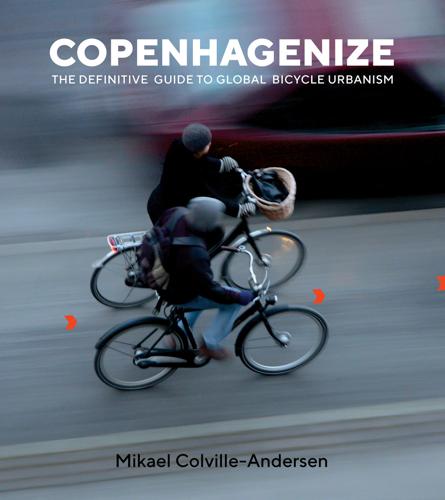
Copenhagenize: The Definitive Guide to Global Bicycle Urbanism
by
Mikael Colville-Andersen
Published 28 Mar 2018
Add to this the concerted effort being made to hype electric vehicles and autonomous vehicles as the next big thing that will change the world. The former only eliminates one aspect of the problem—emissions. The latter brings new problems with it. I recall reading a quote on Twitter that “In Amsterdam, a Google self-driving car would park itself after a few minutes and start crying.” Both of them still occupy an arrogant amount of urban space. I spoke at the State of Design Festival in Melbourne a few years back. The event was book-ended by two keynote speakers. The American, Chris Bangle, who is the former head of design at BMW, would kick it off, and I would wrap it up a few days later.

The Perfect Police State: An Undercover Odyssey Into China's Terrifying Surveillance Dystopia of the Future
by
Geoffrey Cain
Published 28 Jun 2021
Instead, the software could connect the dots on its own when looking at vast datasets, and then learn from that data. The software could then improve its algorithm for the task its creators built it for.4 With fewer humans supervising and limiting the software, businesses could deploy AI for far broader uses. Deep neural nets could control self-driving cars, help physicians diagnose patients, and detect credit card fraud.5 Until 2012, the idea of creating a deep neural network that could impact the market was dismissed as quackery. No matter how many times they tried, the computer scientists at Microsoft Research Asia, and other emerging companies, were hitting a wall.

Beginners: The Joy and Transformative Power of Lifelong Learning
by
Tom Vanderbilt
Published 5 Jan 2021
Beginner drivers are told to stop at red lights; beginning chess players learn to “always” do this or that (for example, don’t move your knight to the edge of the board). But what if a driver comes to an intersection where the red light has malfunctioned? (This was a classic problem in the “beginner” stages of self-driving cars.) What if your chess opponent responds to your textbook move with something unorthodox? Beginners judge their performance, the Dreyfuses suggested, by how well they follow rules. On the surfboard, I was trying to follow a set of fundamental rules, without otherwise paying attention to what was going on in the real world.
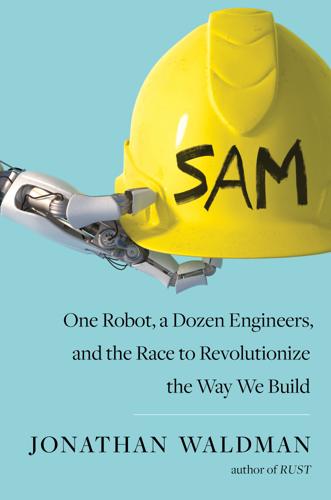
SAM: One Robot, a Dozen Engineers, and the Race to Revolutionize the Way We Build
by
Jonathan Waldman
Published 7 Jan 2020
By the time the workday was over, long into overtime territory, SAM had put down all of 108 bricks, which was only a fraction of what even the laziest human bricklayer typically laid. For Scott, the number was hard to digest. For eight years, he’d dreamed of a machine so dominant, so refined and widely dispersed, that it would render today’s antiquated hand-laying technique obsolete. In many ways, such a shift was to be more significant than the much heralded move to self-driving cars, because horseless carriages have been evolving for a hundred years, thanks to armies of engineers and billions of R&D dollars. Bricklaying hasn’t changed since man crawled out of the muck. As ever, laying bricks requires hard work and a lot of time. Old-timers know that bricklayers lift the equivalent of a Ford truck every few days, basically trading a body for a paycheck.
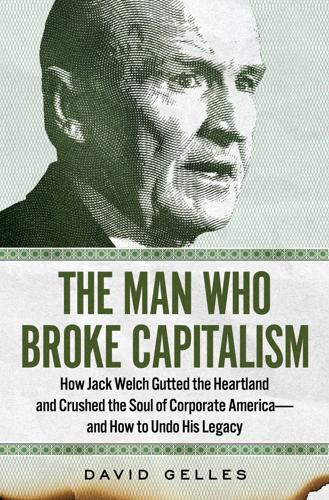
The Man Who Broke Capitalism: How Jack Welch Gutted the Heartland and Crushed the Soul of Corporate America—and How to Undo His Legacy
by
David Gelles
Published 30 May 2022
When he asked the business leaders of different units what the purpose of the company was, he said, their answer was always about delivering for shareholders. “When you tried to get anything done, you would feel the imprint of Welch,” he said. “The impact that man left was profoundly deep.” For years, Dignan burrowed into GE, encouraging Immelt to pursue 3D printing, self-driving cars, anything that might give the company relevance in the years ahead. Dignan kept telling Immelt and the board what any student of business understands: there would be up-front costs, but that if the investments paid off, the rewards could be enormous. “This is going to hurt before it gets better,” he would tell them.
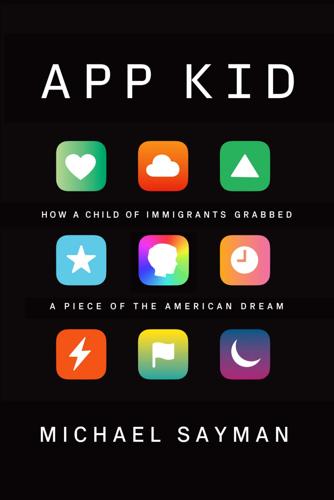
App Kid: How a Child of Immigrants Grabbed a Piece of the American Dream
by
Michael Sayman
Published 20 Sep 2021
She’d taken off her pumps to fit her legs under the table but still looked pinched and uncomfortable in her gray wool pantsuit. Technically, not all of us were “Nooglers,” as they called first-week Google employees. Google was one of several companies owned by Alphabet, our parent corporation. Back in 2015, Google was pursuing so many projects—self-driving cars, longevity research, urban innovation, and so on—that the founders, Sergey Brin and Larry Page, decided to spin off each non-Internet division into its own company. They created Alphabet to hold them all, including Google, the biggest. I could not believe I worked at Google now! Everything I’d ever learned—how to code, program, design—I’d taught myself through Google.
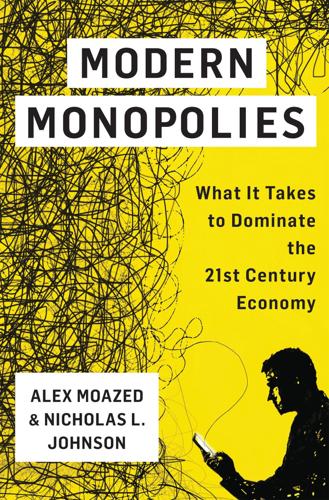
Modern Monopolies: What It Takes to Dominate the 21st Century Economy
by
Alex Moazed
and
Nicholas L. Johnson
Published 30 May 2016
Its one glaring hole has been a social networking platform, which explains its repeat failed attempts at building one (e.g., Orkut, Google Wave, and Google+). Google has also experimented with services marketplaces, including Google Express, and is toying with the idea of an eventual Uber competitor that uses self-driving cars. Similarly, Apple has iTunes, iOS and the App Store, Apple Pay, and iMessage, among others. And although Facebook started as a social networking platform, it has expanded to include content platforms (Instagram and Facebook Pages), messaging platforms (Messenger and WhatsApp), and development platforms, as well as a number of experiments with product and services marketplaces.

How to Spend a Trillion Dollars
by
Rowan Hooper
Published 15 Jan 2020
But his greatest talent was in automation. We meet Hephaestus in the Iliad, when Thetis visits him in his forge to commission a suit of armour for her son, Achilles. Thetis sees that Hephaestus has constructed an extraordinary fleet of autonomous wheeled tripods. Reading this now, it could almost be a description of the Waymo self-driving cars trundling around Silicon Valley. He basically pre-empts Google and Apple’s autonomous vehicles by some 3,000 years. Thetis marvels that Hephaestus even has a staff of automata, ‘fashioned of gold in the image of maidens’; builds Talos, a giant bronze war-droid that guards Crete from invaders; and is commissioned to create Pandora, the beautiful android sent by Zeus to punish humans for the theft of fire.

Gnomon
by
Nick Harkaway
Published 18 Oct 2017
You painted The Lion in Space.’ She stopped, suddenly concerned. ‘Can you do it? I mean, can you still paint? Did you burn out?’ An intimate question from a professional colleague. A daring one from a granddaughter. A good one. ‘No,’ I said. ‘I faded away.’ Colson offered to take me home in the self-driving car, but in the end I got in a taxi because I needed very much to collect myself and get sensible. Annie had quite adroitly doubled my oblique family repair work back upon me in a style of manipulation that I recognised as my own and Michael’s mixed. I didn’t want to default on grandfatherly assistance or fatherly amends, so I had at least to think it over, even if my first reaction was to run a mile from such a strange, enormous undertaking.
…
Whatever private discussion they were having seemed to be over. ‘Well, all right,’ I said. ‘That’s a nice historical background. For today, your advice is?’ ‘To explore your options. See what may be negotiated before things deteriorate. To consider what you most wish to achieve.’ And with that, the meeting was over. We all got into one of the self-driving cars and let it take us away. ‘What was that about?’ I asked Colson, after a long silence during which no one spoke. ‘The nice lady is doing her best for us,’ Colson said. ‘But she’s being fucked with and she’s a little bit scared on her own account.’ ‘Lindsey?’ ‘Yes. Did you see the little squit at the end of the table taking notes?’

MONEY Master the Game: 7 Simple Steps to Financial Freedom
by
Tony Robbins
Published 18 Nov 2014
But you’re going to get an insider’s look at what’s coming from some of the most brilliant minds of our time. We’ll hear from my friends Ray Kurzweil, the Edison of our age, and Peter Diamandis, creator of the X Prize, about new technologies coming online: 3-D printers that will transform your personal computer into a manufacturing plant, self-driving cars, exoskeletons that enable paraplegics to walk, artificial limbs grown from single cells—innovations that will dramatically change our lives for the better in the very near future. I’m hoping this will inspire you, and also show you that even if you somehow screw up and don’t get your financial act together, you’ll still have a better quality of life.
…
He created the first digital music. If you’ve ever dictated an email to Siri or other voice-to-text systems, that’s because of Ray. I remember meeting Ray Kurzweil nearly 20 years ago and listening with amazement as he described the future. It seemed like magic then, but it’s all real now. Self-driving cars. A computer that could beat the world’s greatest chess master. He had already invented an optical character-recognition system to create the first reading machine for the blind—Stevie Wonder was his first customer. Now he wanted to help blind people read street signs and navigate cities without help, and go into restaurants and order off the menu using a little device the size of a pack of cigarettes.

On the Edge: The Art of Risking Everything
by
Nate Silver
Published 12 Aug 2024
ChatGPT’s success at language-related tasks has been remarkable, but it’s at least plausible that this says more about language than it does about AI—that language is more gamelike, structured, and strategic than was once assumed. Progress on AI in the physical world has been much slower, with repeated overpromises in fields like self-driving cars. “AIs have been good at chess for a long time. We still don’t have a robot that can iron clothes,” said Stokes. AI’s lack of sensory experience and emotional intelligence could also be a big constraint—or a danger if we assign it tasks it isn’t well suited for. “There’s a lot of evidence in psychology that our bodies impact the way we think, and the way we conceptualize the world and the way we conceptualize other people isn’t captured in machines without bodies,” said Mitchell.[*45] Scientific and economic progress faces a lot of headwinds, and that changes the balance of risk and reward.
…
Top Technological Inventions, 1900–1909 and 2000–2009 1900–1909 2000–2009 Airplane (1903) Theory of relativity (1905) Air conditioning (1901) Ford Model T (1908) Radio broadcasting (1906) Plastics (1907) Vacuum cleaner (1901) Electrocardiograph (1901) Safety razor (1903) Hamburger (1904 or earlier) iPhone (2007) Facebook (2004) mRNA vaccines (2005) Human Genome Project (2003) Blockchain/Bitcoin (2008) USB drive (2000) YouTube (2005) Google Maps (2005) Cloud computing (2002) Tesla (2008) At first this might look like a rout for the 1900s—it has airplanes and Einstein!—but I’m not sure that’s entirely clear. It can take decades to realize the impact from new technologies; the blockchain and self-driving cars have perhaps not lived up to the hype so far, but who’s to say where they’ll be in twenty or thirty years? And the 2010s and the 2020s look more promising than the aughts between the AI transformer, gene-editing technologies like CRISPR, and even pharmaceuticals like semaglutide.[*5] So I do not mean to suggest that progress has ended; the world is still growing and changing.

The New Harvest: Agricultural Innovation in Africa
by
Calestous Juma
Published 27 May 2017
This is referred to as the evolution of technologies.2 While it is easy to be intimidated by the pace of technological growth, it could also be a means to achieve a society of abundance, where all people have access basic needs, education, freedom, and good health.3 Exponential growth in knowledge is also one of the main criteria for what some have called the new machine age, a time when digital technologies can create self-driving cars and contribute to solve some of the world’s most pressing challenges.4 African countries can utilize the large aggregation of knowledge and know-how that has been amassed globally in their efforts to improve their access to and use of the most cuttingedge technology. While Africa is currently lagging in the Advances in Science, Technology, and Engineering 41 utilization and accumulation of technology, its countries have the ability not only to catch up to industrial leaders but also to attain their own level of research growth.
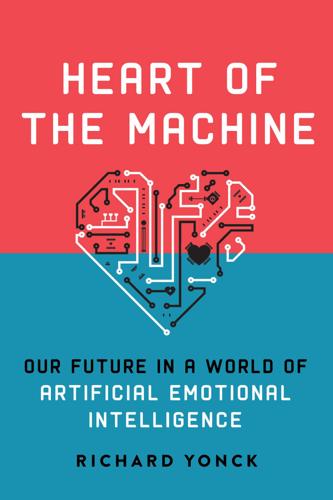
Heart of the Machine: Our Future in a World of Artificial Emotional Intelligence
by
Richard Yonck
Published 7 Mar 2017
Today, instead of tales told around a campfire or in a temple, our stories are increasingly told between the covers of a book or on the screen of a movie theater, television, or smartphone. It’s no coincidence that the more our myths and stories have used technology as a medium, the more they have also turned to it as primary subject matter. The narratives of our ancestors had little cause to ponder space travel or self-driving cars or biotechnology run amok. They most certainly didn’t need to contemplate a world filled with artificial intelligence. Today, we do. The past two centuries have seen a growing exploration of technology’s ongoing impact through many different mediums of fiction. Automation, robotics, and artificial intelligence have all seen an evolution in books and movies that often mirrors and sometimes anticipates the changes occurring in the real world.

Streetfight: Handbook for an Urban Revolution
by
Janette Sadik-Khan
Published 8 Mar 2016
The major near-term goal is establishing licensing and liability requirements that promote safe street operation (obeying speed limits, yielding to pedestrians) on test vehicles and the early prototypes that will be on the market. The new street code for cities must also address parking policies, such as dedicated on- and off-street spaces for shared vehicles. And with the advent of self-driving cars, cities must be prepared for an increase in the demand for curb space for pickup and drop-offs. Finally, as self-driving fleets evolve, cities will need to invest in updated signs, infrastructure, and mapping technology to accommodate the new way of getting around and dedicate funding to adapt cities’ roadways.
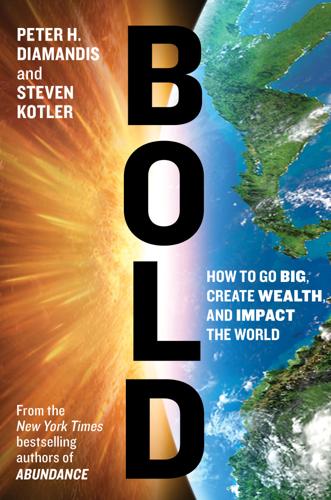
Bold: How to Go Big, Create Wealth and Impact the World
by
Peter H. Diamandis
and
Steven Kotler
Published 3 Feb 2015
Already, we’ve seen the first wave of this in the smart assembly lines and supply chains (what’s technically called process optimization) that have enabled things like just-in-time delivery. With the smart grid for energy and the smart grid for water—what’s technically called resource consumption optimization—we’re seeing the second wave. Next up is the automation and control of far more complex autonomous systems—such as self-driving cars. There are even further opportunities in finding simpler ways to connect decision makers to sensor data in real time. The aforementioned plants that tweet their owners when they need watering were an early (2010) iteration of this sector. A more contemporary example (2013) is the Washington, DC-based start-up SmartThings, a company that CNN called “a digital maestro for every object in the home.”21 SmartThings makes an interface that can recognize over a thousand smart household objects, from temperature sensors that control the thermostat to door and windows sensors that tell you if you left something unlocked to ways to have appliances automatically shut off before you go to bed.

Cataloging the World: Paul Otlet and the Birth of the Information Age
by
Alex Wright
Published 6 Jun 2014
E veryone 297 C ATA L O G I N G T H E WO R L D was busy carving one stone here and another stone there, with some invisible architect getting everything to fit. The mood was playful, yet there was a palpable reverence in the air.” 2 That spirit of reverence underlies much of what Google has tried to accomplish—not just delivering search results, but creating self-driving cars, space elevators, humanitarian tools for crisis response, and a scientific platform for environmental forecasting, as well as any number of unknown classified projects going on at any given time in the company’s secretive X Lab, under the close supervision of co-founder Sergey Brin. But many contemporary critics have questioned how such a lofty-sounding mission can square with the commercial imperatives of a publicly traded, for-profit enterprise.

Welcome to Britain: Fixing Our Broken Immigration System
by
Colin Yeo;
Published 15 Feb 2020
Junior officials were expected to act like robots, merely checking whether the documents submitted by an applicant met precise predefined criteria and, if so, issuing a visa. In a way, the Home Office could be accused of being too far ahead of its time. Today, technology entrepreneurs are using artificial intelligence to recognise everyday objects, utilising vast sets of data and complex detection and perception technology. Self-driving cars require computers to interpret, classify and predict the behaviour of a bewildering array of real-life objects. The Home Office tried something similar with no prior experience, no artificial intelligence, no data and no computers all the way back in 2006. Unsurprisingly, the project failed.

Calling Bullshit: The Art of Scepticism in a Data-Driven World
by
Jevin D. West
and
Carl T. Bergstrom
Published 3 Aug 2020
It takes a set of numerical values as inputs, and then spits out either a 0 or a 1. The numerical inputs might be the pixel values of a chest X-ray; the output, whether a patient has pneumonia. Connect enough of these perceptrons together in the right ways, and you can build a chess-playing computer, a self-driving car, or an algorithm that translates speech in real time like Douglas Adams’s Babel Fish. You don’t hear the term “perceptron” often these days, but these circuits are the building blocks for the convolutional neural networks and deep learning technologies that appear in headlines daily. The same old magic is still selling tickets.
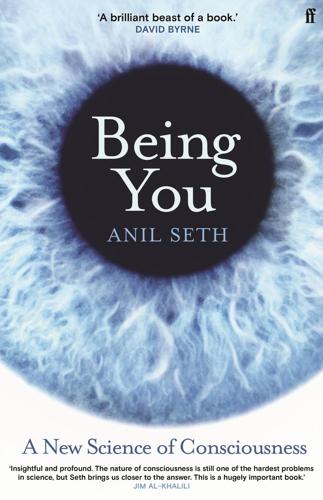
Being You: A New Science of Consciousness
by
Anil Seth
Published 29 Aug 2021
Fig. 23: Eight faces. These people are not real. — The rapid rise of AI – whatever mixture of hype and reality it is fuelled by – has sparked a resurgent and necessary discussion of ethics. Many ethical concerns have to do with the economic and societal consequences of near-future technologies like self-driving cars and automated factory workers, where significant disruption is inevitable.† There are legitimate worries about delegating decision-making capability to artificial systems, the inner workings of which may be susceptible to all kinds of bias and caprice, and which may remain opaque – not only to those affected, but also to those who designed them.
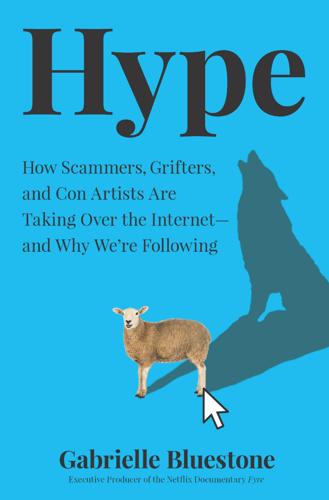
Hype: How Scammers, Grifters, and Con Artists Are Taking Over the Internet―and Why We're Following
by
Gabrielle Bluestone
Published 5 Apr 2021
In 2019, for example, The Drive calculated that Tesla had “three times as many OSHA violations as the 10 largest US plants combined,”49 making a job with Musk more dangerous than working in a slaughterhouse or a sawmill, according to a 2017 Los Angeles Times report.50Nor have his problems been limited to the factory floor: he recently had to pay out $20 million for tweeting that he had secured private funding to take Tesla private at $420 a share, when in fact he had not.51 This is a guy who sells an $8,000 “self-driving” car software that requires an active driver behind the wheel to operate. And still three people have died from crashes stemming from the software, with at least ten other nonfatal crashes also under investigation by the National Highway Traffic Safety Administration.52 Still, it’s no coincidence that, alongside a disregard for local laws, the vast majority of wealth created over the last few decades has been concentrated in the tech industry, starting with the rise of Silicon Valley venture capital that set the stage for today’s obscene IPOs.
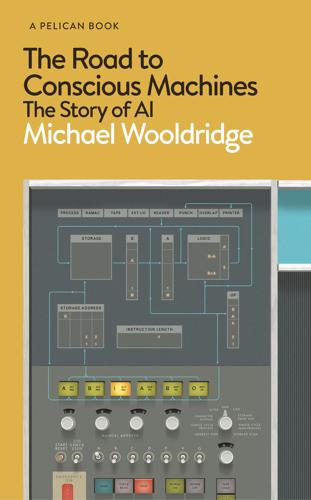
The Road to Conscious Machines
by
Michael Wooldridge
Published 2 Nov 2018
The Trolley Problem has risen rapidly in prominence recently because of the imminent arrival of driverless cars. Pundits were quick to point out that driverless cars might well find themselves in a situation like the Trolley Problem, and AI software would then be called upon to make an impossible choice. ‘Self-driving cars are already deciding who to kill’ ran one Internet headline in 2016.8 There was a flurry of anguished online debate, and several philosophers of my acquaintance were surprised and flattered to discover that there was suddenly an attentive audience for their opinions on what had hitherto been a rather obscure problem in the philosophy of ethics.

Practical Doomsday: A User's Guide to the End of the World
by
Michal Zalewski
Published 11 Jan 2022
With that in mind, and now that we have the taxonomy of the challenges sketched out, let’s dive into some of the investment strategies that can help protect your savings down the line. If you approach a financial advisor and ask them what to do with your savings, their first question will be about your investment objective—expecting to hear that you want to retire early, send your children to a posh college, or make a lot of money on self-driving cars. But their first real question will be about your risk tolerance. If you’re risk-averse, they’ll keep your account mostly in cash or government bonds, but if you tell them you want to get rich quick, they’ll recommend putting a good chunk of your money into stocks that historically showed high volatility, with the implication that higher payoffs might result down the line.* For the purpose of safeguarding rainy-day funds, I believe this thinking is flawed; risk has many dimensions.

Golden Gates: Fighting for Housing in America
by
Conor Dougherty
Published 18 Feb 2020
Having spent most of her life in Philadelphia, a city with blocks of empty property that had lost about half a million people from its 1950 peak, she knew what a troubled city looked like and was not going to blame anyone for moving to a region that to an outsider felt like an economic wonderland. It had been only a few years since the Great Recession. Most of America was still grappling with what the pundits called “a jobless recovery” (whatever that meant), while the Bay Area lived in a bubble of exuberance and self-satisfaction. Google had just revealed its self-driving car project, Facebook was gearing up to go public, and the venture capitalist Marc Andreessen was coining the phrase “software is eating the world.” Sonja thought it was exciting to live in a place with so much optimism and easy employment, and when she heard people complain about how San Francisco was being murdered by runaway growth, she regarded them as ingrates who didn’t know or didn’t care what places like Philly and St.

This Is for Everyone: The Captivating Memoir From the Inventor of the World Wide Web
by
Tim Berners-Lee
Published 8 Sep 2025
I was amazed by ChatGPT the first time I used it, just as I’d been amazed by the RSA encryption algorithm and Google’s PageRank. Each was a step change in functionality for the web, and for the world: in security, in discoverability, and now in intelligence. We had been watching AI become more important in different places, and we had, like many people, been hopeful about self-driving cars. (Rosemary made an early investment in Wayve, impressed by its Kiwi founder Alex Kendall, a super-bright Cambridge PhD.) Despite all that, the ability of the Large Language Models (LLMs) used by ChatGPT and other AIs to produce high-quality prose instantaneously was a complete shock. ChatGPT and its rivals sparked a revolution in computer science – not to mention a frenzied rally in the stock market.

Digital Empires: The Global Battle to Regulate Technology
by
Anu Bradford
Published 25 Sep 2023
Meta CEO Mark Zuckerberg acknowledged this back in 2019 by noting how “China is building its own internet focused on very different values, and is now exporting their vision of the internet to other countries.”220 US government representatives in China have made similar observations, with one diplomat acknowledging in 2021 that China has sought to decouple its internet from that of the West for a decade already, with the goal of ultimately creating two digital ecosystems.221 It is possible to view China as being well on its way in creating a separate digital architecture that includes a sovereign digital authoritarian internet. It does not need Facebook, Amazon, Google, or Apple because it has WeChat, Alibaba, Baidu, Huawei, and Xiaomi. China is also not dependent on others in terms of its AI capabilities, developing its own self-driving cars, smart cities, smart medicine, and health applications—in addition to perfecting its already robust AI-powered regime of state surveillance. Beijing will be one step closer to a sovereign Chinese tech ecosystem once it has rolled out its own digital currency, internationalized it, and thereby created an alternative financial universe that is less reliant on the US dollar or the SWIFT international payment system.
…
The EU’s push for greater transparency of algorithms also exposes the AI developers globally as information about the quality of AI systems will be available outside the EU as well. Any information that the EU’s transparency regime generates about the safety of AI could even be deployed in litigation in the US.160 If self-driving cars powered by AI had been programmed to stop operating under certain conditions under EU rules, for example, would the developer turn off this feature in the US? If an accident happened in the US under those same conditions, the company would have a hard time arguing before US courts that such an accident was not reasonably foreseeable when the plaintiff can show that additional safety features were adopted for the European market.

Utopia Is Creepy: And Other Provocations
by
Nicholas Carr
Published 5 Sep 2016
From Politico Magazine 2015 WHY ROBOTS WILL ALWAYS NEED US “HUMAN BEINGS ARE ASHAMED to have been born instead of made,” wrote the philosopher Günther Anders in 1956. Our shame has only deepened as our machines have grown more adept. Every day we’re reminded of the superiority of computers. Self-driving cars are immune to distractions and road rage. Automatic trains don’t speed out of control. Factory robots don’t goof off. Algorithms don’t suffer the cognitive biases that can cloud the judgments of doctors, accountants, and lawyers. Computers work with a speed and precision that make us look like bumbling slackers.
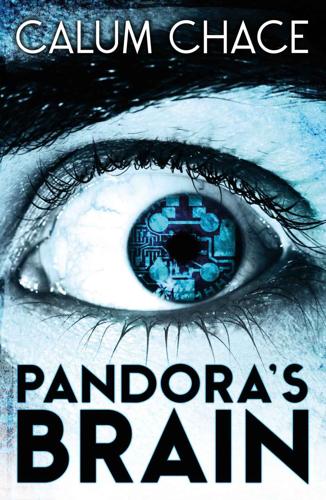
Pandora's Brain
by
Calum Chace
Published 4 Feb 2014
When you watch those videos of the latest military-grade robots on YouTube, or when you ask your smartphone a question, do you detect anything like a conscious mind? The AI community said we would have them by now, along with flying cars and personal jetpacks.’ Matt raised his hands. ‘Come off it, Carl. It’s ridiculous to say that AI has made no progress. Self-driving cars are legal on public roads in parts of the US, and they will be legal over here soon too. Computers can recognise faces as well as you and I can: a lot of people said that would be in the ‘too-hard’ box for decades. Real-time machine translation is getting seriously impressive. This is all driven by the hugely increased processing power at researchers’ disposal, so they are going back to their original goal of developing a human-level intelligence which will pass a robust version of the Turing Test.
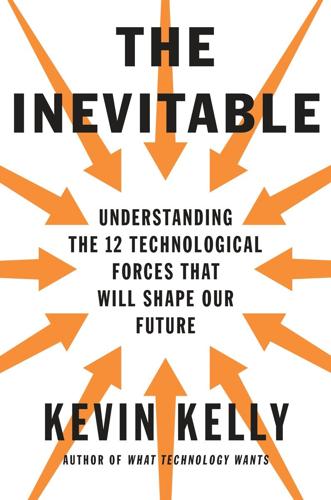
The Inevitable: Understanding the 12 Technological Forces That Will Shape Our Future
by
Kevin Kelly
Published 6 Jun 2016
In the next 10 years, 99 percent of the artificial intelligence that you will interact with, directly or indirectly, will be nerdly narrow, supersmart specialists. In fact, robust intelligence may be a liability—especially if by “intelligence” we mean our peculiar self-awareness, all our frantic loops of introspection and messy currents of self-consciousness. We want our self-driving car to be inhumanly focused on the road, not obsessing over an argument it had with the garage. The synthetic Dr. Watson at our hospital should be maniacal in its work, never wondering whether it should have majored in finance instead. What we want instead of conscious intelligence is artificial smartness.
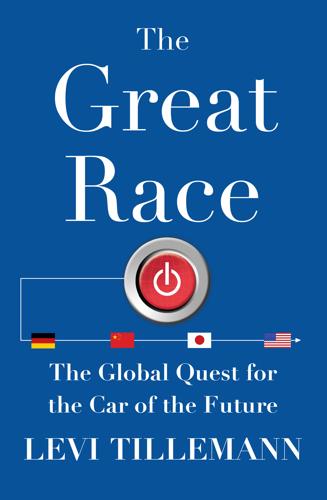
The Great Race: The Global Quest for the Car of the Future
by
Levi Tillemann
Published 20 Jan 2015
For academics and policy makers it was suddenly legitimate, reasonable, and even necessary to start pondering the implications of a future with cars that drove themselves and what this might mean for automakers, cities, and countries around the world. Different people used different terminologies with various meanings to describe these robotic cars—self-driving cars, robot cars, automated vehicles, and autonomous vehicles, to name a few. However, the ultimate goal was generally understood to be a car that could drive itself. Although theirs was not the first autonomous car, Google broke the logjam. And that is why one might say that automation is not simply the next frontier, but the finishing line in the Great Race.

An Optimist's Tour of the Future
by
Mark Stevenson
Published 4 Dec 2010
Today she’s leading a charge for the renewable energy industry in New Zealand that could have international repercussions – initiatives that are undoubtedly good for the planet whether you worry about climate change or not. The guard takes my blog address and promises to buy the book. ‘Don’t forget to mention those self-driving cars!’ he says. Vicki meets me at my hotel the next morning to drive us to breakfast. Although to say one ‘meets’ Vicki is something of an understatement. Vicki meets me in the same way a tornado ‘meets’ the air. You are instantly swept up, and it’s invigorating. The first thing you notice is she cannot stop laughing.

Choked: Life and Breath in the Age of Air Pollution
by
Beth Gardiner
Published 18 Apr 2019
This is an idea I’ve heard before, proffered by many who hope to loosen cities’ gridlock, clean their air, and ease pressure on the climate. We’ll be less likely, the thinking goes, to buy our own cars than to pay for whatever form of transportation we need when we need it—a shared bike at the end of a train ride, a self-driving car home from the supermarket. And indeed, the millennial generation, at least in wealthier nations, seems less interested in driving than its elders. In both America and Britain, the proportion of young people holding driver’s licenses has declined steadily since the 1990s.5 “If you own a car, it stands [idle] 23 hours a day,” Welke says.

Frenemies: The Epic Disruption of the Ad Business
by
Ken Auletta
Published 4 Jun 2018
The e-mail invite said PetChatz was located in CES Booth 82646, which was in Hall G of the Sands. But a trip to the floor found Booth 82646 empty. One objective of CES is to manufacture buzz. In 2016, virtual reality was the much-hyped new new thing, which would be supplanted at CES 2017 by artificial intelligence, and AI-centric products like self-driving cars and Amazon’s Alexa. In previous years, drones, Google Glass, and 4K TVs had their moment. Writing about CES 2016, Farhad Manjoo of the New York Times observed, “If news from CES feels especially desultory this year, it might not be the show that’s at fault. Instead, blame the tech cycle. We’re at a weird moment in the industry: The best new stuff is not all that cool, and the coolest stuff”—AI, virtual reality, the Internet of things, drones—“isn’t quite ready

The Human City: Urbanism for the Rest of Us
by
Joel Kotkin
Published 11 Apr 2016
“You’ll Never Guess the City Where Private School Is Most Common,” Time, http://time.com/money/3105112/private-school-enrollment-cities-highest/. DAVIES, Alan. (2012, March 20). “Is suburban living a neurotic condition?,” Crikey, http://blogs.crikey.com.au/theurbanist/2012/03/20/is-suburban-living-a-neurotic-condition/. DAVIES, Alex. (2015, March 9). “Self-Driving Cars Will Make Us Want Fewer Cars,” Wired, http://www.wired.com/2015/03/the-economic-impact-of-autonomous-vehicles/. DAVIS, Bob and PAGE, Jeremy. (2011, March 7). “China’s Focus Turns to its Poor,” Wall Street Journal, http://www.wsj.com/articles/SB10001424052748703362804576184364247082474. de BARY, William Theodore, CHAN, Wing-Tsit and WATSON, Burton. (1960).
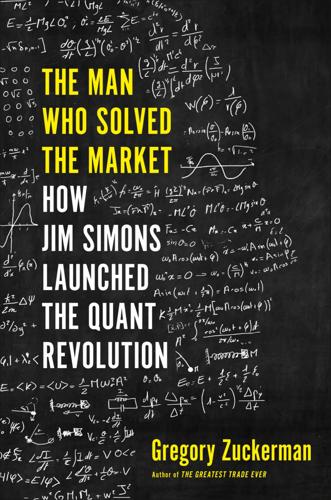
The Man Who Solved the Market: How Jim Simons Launched the Quant Revolution
by
Gregory Zuckerman
Published 5 Nov 2019
Prosecutors later charged a trader operating out of his West London home for manipulating a stock-market-index futures contract, laying the groundwork for the decline.11 To some, the sudden downturn, which was accompanied by little news to explain the move, suggested the rise of the machine had ushered in a new era of risk and volatility. Automated trading by computers is a scary concept for many, much as airplanes flown by autopilot and self-driving cars can frighten, despite evidence that those machines improve safety. There’s reason to believe computer traders can amplify or accelerate existing trends. Author and former risk manager Richard Bookstaber has argued that risks today are significant because the embrace of quant models is “system-wide across the investment world,” suggesting that future troubles for these investors would have more impact than in the past.12 As more embrace quantitative trading, the very nature of financial markets could change.
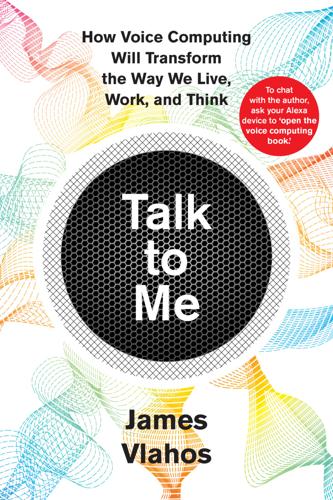
Talk to Me: How Voice Computing Will Transform the Way We Live, Work, and Think
by
James Vlahos
Published 1 Mar 2019
For the first edition of the annually recurring contest, more than one hundred university teams applied to compete, and Amazon selected the fifteen squads whose proposals seemed the most promising. If any team actually succeeded, its members would snare academic glory and the promise of brilliant future careers. (Consider that alums of the DARPA Grand Challenges, an early set of autonomous-vehicle competitions, went on to run the self-driving-car divisions of Google, Ford, Uber, and General Motors.) The victors would also walk away with the Alexa Prize itself—a $1 million purse. The Alexa Prize is not the only contest that tries to squeeze more humanlike rapport out of the world’s chatbots; recall the Loebner Prize, the one that Mauldin entered, from chapter 4.
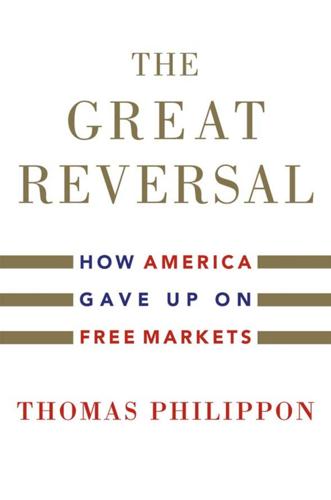
The Great Reversal: How America Gave Up on Free Markets
by
Thomas Philippon
Published 29 Oct 2019
As the GAFAMs’ dominant positions became more obvious, and amid a string of scandals related to their treatment of users’ data, they began to attract more regulatory scrutiny. Amazon’s lobbying increased after its acquisition of grocery chain Whole Foods. Facebook has been embroiled in a string of data privacy scandals, one of them involving the firm Cambridge Analytica. Waymo, Google’s self-driving car unit, faces potential liability issues and other concerns. Google, Twitter, and Facebook are also involved in the targeting of their users by Russian agents during the 2016 campaign. Generally, companies exert influence in Washington for one of four main reasons. The first two reasons are related to benefits they expect to receive thanks to their lobbying efforts.

Stakeholder Capitalism: A Global Economy That Works for Progress, People and Planet
by
Klaus Schwab
Published 7 Jan 2021
The Fourth Industrial Revolution Even as many technologies of the Third Industrial Revolution are still playing out in the market, we have entered a Fourth Industrial Revolution. As I wrote back in 2016: This Fourth Industrial Revolution is characterized by a fusion of technologies that is blurring the lines between the physical, digital, and biological spheres. Already, artificial intelligence is all around us, from self-driving cars and drones to virtual assistants and software that translate or invest. Impressive progress has been made in AI in recent years, driven by exponential increases in computing power and by the availability of vast amounts of data, from software used to discover new drugs to algorithms used to predict our cultural interests.
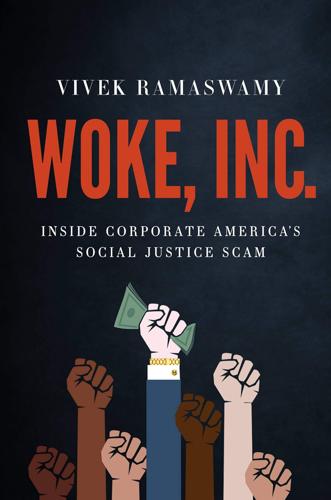
Woke, Inc: Inside Corporate America's Social Justice Scam
by
Vivek Ramaswamy
Published 16 Aug 2021
Uber CEO Dara Khosrowshahi retreated from his initially critical stance in 2018. During a November 2019 interview, he said the murder of Khashoggi was “a mistake” but that Uber had “made mistakes too, with self-driving”—drawing an equivalence between a targeted assassination of a journalist and a pedestrian accident involving a self-driving car.47 McKinsey & Company went back to charging a small fortune for advising clients on how to do business in the Kingdom of Saudi Arabia. The cottage industry built around opening up personal connections in the Middle East was soon humming once again. To be sure, most business leaders still haven’t forgotten about the Khashoggi episode.
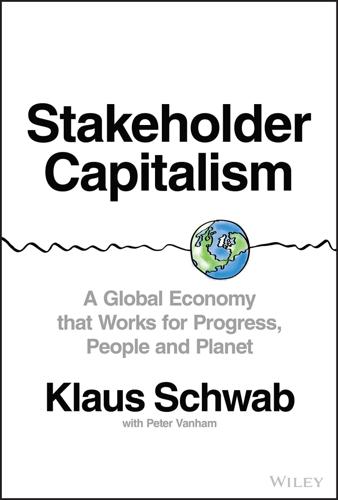
Stakeholder Capitalism: A Global Economy That Works for Progress, People and Planet
by
Klaus Schwab
and
Peter Vanham
Published 27 Jan 2021
The Fourth Industrial Revolution Even as many technologies of the Third Industrial Revolution are still playing out in the market, we have entered a Fourth Industrial Revolution. As I wrote back in 2016: This Fourth Industrial Revolution is characterized by a fusion of technologies that is blurring the lines between the physical, digital, and biological spheres. Already, artificial intelligence is all around us, from self-driving cars and drones to virtual assistants and software that translate or invest. Impressive progress has been made in AI in recent years, driven by exponential increases in computing power and by the availability of vast amounts of data, from software used to discover new drugs to algorithms used to predict our cultural interests.
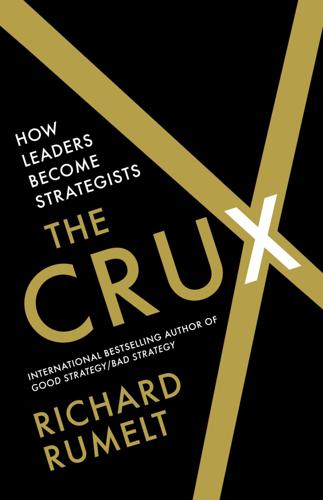
The Crux
by
Richard Rumelt
Published 27 Apr 2022
This experience seems to have pushed change at GM. Barra killed the matrix and flattened the organization. She fired fifteen employees for cause. She has put together a team of executives at the top who would model problem-solving behavior. GM has dropped brands and whole divisions. It has new electric cars and is researching self-driving cars. The company has returned to profit. After the 2009 bankruptcy, General Motors dropped four famous (North American) brands: Saturn, Hummer, Pontiac, and Saab. Since the ignition-switch crisis, CEO Barra had gotten the company out of Western Europe, Russia, South Africa, and India. It stopped assembling cars in Australia and Indonesia.
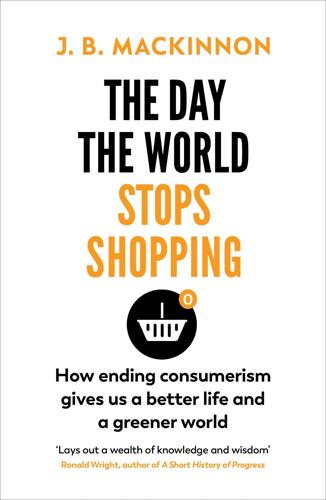
The Day the World Stops Shopping
by
J. B. MacKinnon
Published 14 May 2021
In recent years, annual data consumption has grown at a compound rate of about a quarter, and—once again in common with material consumption—the ways we consume are becoming more rather than less resource intensive. Coming in the near future is a swelling wave of data-demanding technologies, including artificial intelligence, augmented reality, virtual reality, cryptocurrencies, the smart home, self-driving cars, and the “internet of things,” which will connect our internet-connected devices to each other. We don’t yet know, really, how harmful—or not—all of this is to the planet, said Widdicks. Ironically, the data on the environmental costs of data is not great. Still, there are patterns worth paying attention to.

Cities in the Sky: The Quest to Build the World's Tallest Skyscrapers
by
Jason M. Barr
Published 13 May 2024
Workers who have an abundance of noncognitive skills are increasingly sorted into occupations that are abstract, non-routine, non-offshorable, non-automatable, and social; this suggests that optimal skill mixes of given occupations have changed over time. The premium for noncognitive skills is due to what people want to consume and how these products are created. Tech is more embedded in our lives, whether it’s social media, the use of iPhone apps, streaming movie services, self-driving cars, AI, robotics, and so on. The magic ingredient that allows businesses to create these new products is urban density. The former industrial coastal cities that used to belch pollution from factories, and whose products were shipped from Mafia-controlled ports, have not only retained their place in the global hierarchy but also become even more crucial.
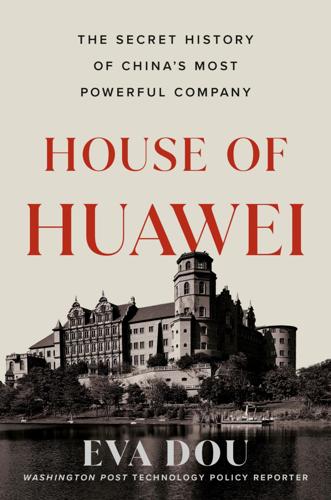
House of Huawei: The Secret History of China's Most Powerful Company
by
Eva Dou
Published 14 Jan 2025
Tong’s team got to work. The advent of 2G had brought text messaging; 3G, mobile photos and video clips; 4G, mobile video. Now mobile engineers expected 5G to bring one-thousand-fold gains in network capacity, making possible data-intensive applications that had previously been the realm of science fiction: self-driving cars, perhaps, or remote surgeries, self-regulating factories, and next-generation surveillance systems. As the date of the 3GPP summit approached, Tong and his team found themselves on firm footing. Through the help of research partnerships with prestigious institutions across the globe, they had filed for a long list of patents in many areas of 5G technology.

Lonely Planet Central Asia (Travel Guide)
by
Lonely Planet
,
Stephen Lioy
,
Anna Kaminski
,
Bradley Mayhew
and
Jenny Walker
Published 1 Jun 2018
Agency or CBT-arranged drivers generally cost around double since they must cover the probability of returning empty, but such options are still worth considering for complex routes with multiple or overnight stops, and you'll often get a better vehicle (not necessarily English-speaking drivers, though). Typical rates are between 14som and 18som per kilometre, plus an overnight fee between 500som to 1000som to cover the driver's expenses. Car & Motorcycle Self-drive car rental is a new concept, but there are two local agencies in Bishkek: Iron Horse Nomads and Kyrgyz Rent-Car. Swiss-run MuzToo ( GOOGLE MAP ; http://muztoo.ch; 101 St; h9am-5pm Mon-Fri) in Osh rents Yamaha-600 trail motorbikes, but they don't come cheap. When stopped by traffic police, standard regulations involve a driver surrendering their licence until a fine is paid in the nearest regional centre.
…
Don't run red lights and do stick to speed limits (usually 50km/h in cities and 90km/h outside them). The standard bribe rate in the Mangistau region is 5000T. You should carry an International Driving Permit as well as your home-country licence. For many trips it is easier, and no more expensive, to take a taxi or tour than to rent a self-drive car, but there are self-drive options if that suits your needs best. In fact, Kazakhstan rewards those intrepid and adventurous people with plenty of time on their hands and a love for driving, since many of the country's natural and cultural attractions often lie in the middle of nowhere and are reachable by rugged roads.

In Our Own Image: Savior or Destroyer? The History and Future of Artificial Intelligence
by
George Zarkadakis
Published 7 Mar 2016
Dick. 1989: Tim Berners-Lee invents the World Wide Web. 1990: Seiji Ogawa presents the first fMRI machine. 1993: Rodney Brooks and others start the MIT Cog Project, an attempt to build a humanoid robot child in five years. 1997: Deep Blue defeats Garry Kasparov at chess. 2000: Cynthia Breazeal at MIT describes Kismet, a robot with a face that simulates expressions. 2004: DARPA launches the Grand Challenge for autonomous vehicles. 2009: Google builds the self-driving car. 2011: IBM’s Watson wins the TV game show Jeopardy!. 2014: Google buys UK company Deep Mind for $650 million. 2014: Eugene Goostman, a computer program that simulates a thirteen-year-old boy, passes the Turing Test. 2014: Estimated number of robots in the world reaches 8.6 million.1 2015: Estimated number of PCs in the world reaches two billion.2 NOTES Introduction 1PCs (‘Personal computers’) started becoming widely available in the early 1980s: IBM 5150 in 1981, Commodore PET in 1983.

Fire and Fury: Inside the Trump White House
by
Michael Wolff
Published 5 Jan 2018
He was voluble, open, and expansive, a charmer and an international player, a canny salesman rather than a remote, taciturn grandee. He had seized the economic portfolio and was pursuing a vision—quite a Trumpian vision—to out-Dubai Dubai and diversify the economy. His would be a new, modern—well, a bit more modern—kingdom (yes, women would soon be allowed to drive—so thank God self-driving cars were coming!). Saudi leadership was marked by age, traditionalism, relative anonymity, and careful consensus thinking. The Saudi royal family, on the other hand, whence the leadership class comes, was often marked by excess, flash, and the partaking of the joys of modernity in foreign ports.
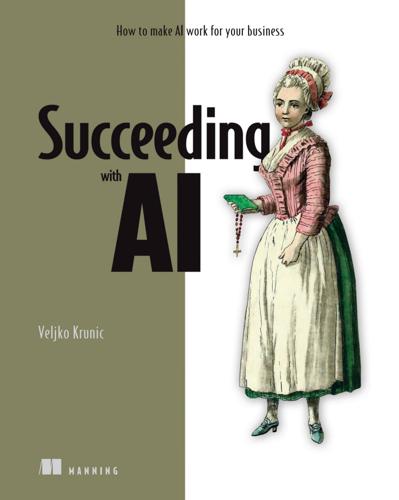
Succeeding With AI: How to Make AI Work for Your Business
by
Veljko Krunic
Published 29 Mar 2020
In other cases, data must be analyzed in real time as it’s arriving into the system. (This is called streaming analytics.) NOTE An important consideration in the application of a Sense/Analyze/React loop is the question of who or what is reacting. It could be the system itself in some automated fashion. (That’s what a self-driving car [38] does.) Or, based on the results of the analysis, it could be a human. The latter case is much more common today within an enterprise use of data science. The Sense/Analyze/React loop is widely applicable The Sense/Analyze/React loop is applicable across many scales. It could be applied on the level of a single device (as in the case of smart thermometers like Nest [36] and ecobee [37]), a business process, multiple departments, the whole enterprise, a smart city, or an even larger geographical area.

On the Clock: What Low-Wage Work Did to Me and How It Drives America Insane
by
Emily Guendelsberger
Published 15 Jul 2019
She then invents birth control pills, the microprocessor, personal computers, cell phones, the Big Mac, and the internet. Five seconds to midnight, Wanda’s gotten herself a laptop, wireless internet, a smartphone, Google, Facebook, YouTube, and Amazon. At one second to midnight, Wanda’s made self-driving cars, Tinder, and commercial space flight. The society Wanda’s built in your backyard is, for this single second, identical to the one you live in right now. By the time the clock finishes striking midnight, Wanda will have technology you can’t even imagine. Wanda spent almost the entire week evolving to better fit her environment with what seemed like agonizing slowness.

The Metaverse: And How It Will Revolutionize Everything
by
Matthew Ball
Published 18 Jul 2022
Culturally, at least, the idea of collectively shared but privately owned infrastructure is already well understood. Anyone who installs solar panels at their home can sell excess power to their local grid (and, indirectly, to their neighbor). Elon Musk touts a future in which your Tesla earns you rent as a self-driving car when you’re not using it yourself—better than just being parked in your garage for 99% of its life. As early as the 1990s programs emerged for distributed computing using everyday consumer hardware. One of the most famous examples is the University of California, Berkeley’s SETI@HOME, wherein consumers would volunteer use of their home computers to power the search for alien life.

The Equality Machine: Harnessing Digital Technology for a Brighter, More Inclusive Future
by
Orly Lobel
Published 17 Oct 2022
Our explorations throughout the chapters of this book have shown us that the answer to whether we should be excited or alarmed by our newfound capabilities to know, detect, analyze, interpret, predict, and enhance begins and concludes with the ends to which we’re employing our newfound superpowers. What seemed like science fiction a few decades ago now seems natural to us—smartphones, wearable digital devices that can read our bioprocesses, chatbots, virtual personal assistants, robot surgeons, self-driving cars, replicas of ourselves, humanoid friends. The unprecedented acceleration in digital capabilities and their integration into our lives mean that, inevitably, the key question is how technology can help address the challenges of power and inequality—challenges to our very humanity—that lie at the heart of our society.

Visual Thinking: The Hidden Gifts of People Who Think in Pictures, Patterns, and Abstractions
by
Temple Grandin, Ph.d.
Published 11 Oct 2022
It did. If the computer was hacked, manufacturing could come to a halt. In, say, a transportation system, with human lives at stake, such an oversight could create enormous vulnerability. What if a hacker took control and commanded electric trains to crash into each other? For the same reason, self-driving cars must be hacker-proof, with a mechanical kill switch accessible to the driver in an emergency and not connected to the internet. After the computer is disabled, the car should have a mechanical emergency brake and be steerable, so the driver can get it off the road. I think we’ve become so reliant on computers and blindly trusting of them that we no longer see the inherent dangers.
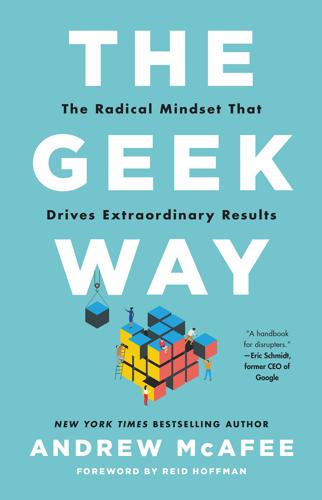
The Geek Way: The Radical Mindset That Drives Extraordinary Results
by
Andrew McAfee
Published 14 Nov 2023
The Economist named The Second Machine Age “the most influential recent business book,” and the Financial Times called me and Erik “the pinup boys of the Davos crowd.” That kind of attention didn’t cause my modeling career to take off, but it did lead to a lot of offers to talk with leaders all over the world about the tectonic shifts taking place in industries, economies, and societies. And to keep learning. I rode in a Google self-driving car, watched robots scurry around an Amazon warehouse, talked with economists at Uber and Airbnb about using data and algorithms to dynamically balance supply and demand, and had countless other eye-opening experiences. Lots of industrial-era companies were also having eye-opening experiences at the time, and not pleasant ones.

Why Machines Learn: The Elegant Math Behind Modern AI
by
Anil Ananthaswamy
Published 15 Jul 2024
Surely, if the Mark I distinguished the letter “B” from the letter “G,” it was simply going by the patterns and did not attach any meaning to those letters that would engender further reasoning. Such questions are at the heart of the modern debate over the limits of deep neural networks, the astonishing descendants of perceptrons. There is a path connecting these early perceptrons to the technology of large language models or the AI being developed for, say, self-driving cars. That path is not a straight one; rather, it’s long and winding, with false turns and dead ends. But it’s a fascinating, intriguing path nonetheless, and we are setting off on it now. Building the perceptron device was a major accomplishment. An even bigger achievement was the mathematical proof that a single layer of perceptrons will always find a linearly separating hyperplane, if the data are linearly separable.

Warnings
by
Richard A. Clarke
Published 10 Apr 2017
Thus, a botnet could infect an IV pump and use it to spew spam around the world, monopolizing the processor while degrading the functioning of the pump. Despite repeated warnings from Weiss and others, nothing seems to slow industry’s mad dash toward connecting everything. The latest arena is automobiles. Long before the self-driving car craze, cars were already becoming part of the IoT. The academic expert we know in that arena is Stefan Savage, who hangs his hat at the beautiful campus of the University of California at San Diego. He famously demonstrated to a conference how to hack a Corvette. As Wired reported, Stefan used “a 2-inch-square gadget that’s designed to be plugged into cars’ and trucks’ dashboards and used by insurance firms and trucking fleets to monitor vehicles’ location, speed and efficiency.
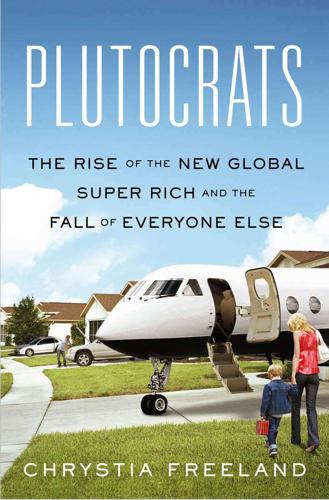
Plutocrats: The Rise of the New Global Super-Rich and the Fall of Everyone Else
by
Chrystia Freeland
Published 11 Oct 2012
Google’s company motto is “Don’t be evil,” and at a recent company conference, Larry Page, Google’s cofounder and now its CEO, said earnestly that one of Google’s greatest accomplishments was to save lives—thanks to the search engine, for instance, people can type in their symptoms, learn immediately they are having a heart attack, and get life-saving help sooner than they would have otherwise. The self-driving car, one of Page’s pet projects, would eventually, he argued, save more lives than any political, social, or humanitarian effort. “It’s not possible in tech to frame your ambitions aside from those who are making the world a better place,” Eric Schmidt, former CEO of Google, told me. “I think it has a lot to do with the way Silicon Valley was formed and the university culture.
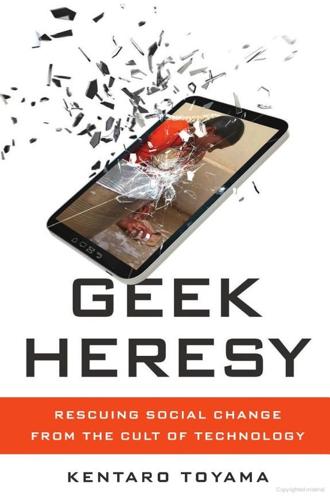
Geek Heresy: Rescuing Social Change From the Cult of Technology
by
Kentaro Toyama
Published 25 May 2015
The flaw is not in either technology or technocracy, per se, but in our misguided, overly optimistic beliefs about what kinds of social change they will accomplish. It hasn’t yet been a century since Asimov imagined his first fictional robots, but robots are already current news: Google has prototyped a self-driving car; software bots manipulate online product ratings; Amazon proposes delivery by automated quad-copter. These robots are designed for profit, not human betterment. Technology doesn’t bootstrap an ethical outlook on its own. Ultimately, people govern technology. Any progress worthy of the name requires progress in human heart, mind, and will.

Finance and the Good Society
by
Robert J. Shiller
Published 1 Jan 2012
Financial Crisis Inquiry Commission, in its nal 2011 report, described the boom as “madness,”2 but, whatever it was, it was not for the most part criminal. And, pursuing this highway metaphor a bit further, we may suggest that automotive designers would best stay focused on how new technology can help us better manage vehicular tra c, with improved cruise control, external electronic feedback to cars, and ultimately even self-driving cars—complex new systems that will enable people to reach their travel destinations more easily and more safely. If that’s the future for our highways, something like it should be the future for our financial institutions as well. All of these protest movements are only the most manifest signs of discontent that have been discernible in conversations and blogs ever since the nancial crisis began.

Bank 3.0: Why Banking Is No Longer Somewhere You Go but Something You Do
by
Brett King
Published 26 Dec 2012
A computing device with the power of our current iPhone would fit inside a “nano-robot” computer the size of a blood cell in two or three decades’ time. What does that mean for medical sciences? What will it mean when the device we carry around in our pocket is more powerful than the most advanced supercomputer available today? How will such technologies impact our life? Self-driving cars, computer-based personal assistants that can predict and anticipate our needs or manage our calendar without needing to ask us any questions; holographic telepresence when we’re away from our loved ones; computers built into everything, from the paint we put on our walls, the clothes to jewellery we wear, to sensors in our bathrooms that can monitor our health based on our morning’s ablutions . . .

Text Analytics With Python: A Practical Real-World Approach to Gaining Actionable Insights From Your Data
by
Dipanjan Sarkar
Published 1 Dec 2016
With the resurgence in popularity of neural networks and advances made in computer architecture, we now have deep learning and artificial intelligence evolving rapidly to make some efforts into trying to engineer machines into learning, perceiving, understanding, and performing actions on their own. You may have seen or heard several of these efforts, such as self-driving cars, computers beating experienced players in games like chess and Go, and the proliferation of chatbots on the Internet. In Chapters 4–6, we have looked at various computational, language processing, and ML techniques to classify, cluster, and summarize text. Back in Chapter 3 we developed certain methods and programs to analyze and understand text syntax and structure.
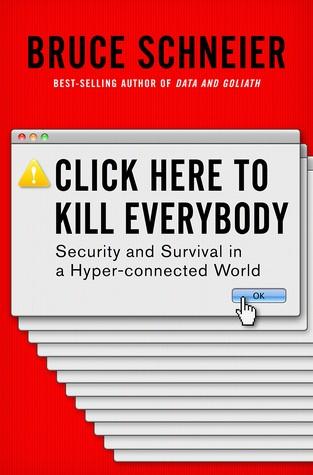
Click Here to Kill Everybody: Security and Survival in a Hyper-Connected World
by
Bruce Schneier
Published 3 Sep 2018
Lorenzo Franceschi-Bicchierai (28 Mar 2017), “Apple just banned the app that tracks U.S. drone strikes again,” Vice Motherboard, https://motherboard.vice.com/en_us/article/538kan/apple-just-banned-the-app-that-tracks-us-drone-strikes-again. 60“content that ridicules public figures”: Jason Grigsby (19 Apr 2010), “Apple’s policy on satire: 16 apps rejected for ‘ridiculing public figures,’” Cloudfour, https://cloudfour.com/thinks/apples-policy-on-satire-16-rejected-apps. 60in 2017, Apple removed security apps: Telegraph Reporters (31 Jul 2017), “Apple removes VPN apps used to evade China’s internet censorship,” Telegraph, http://www.telegraph.co.uk/technology/2017/07/31/apple-removes-vpn-apps-used-evade-chinas-internet-censorship. 60Google has also banned an app: AdNauseam (5 Jan 2017), “AdNauseam banned from the Google Web Store,” https://adnauseam.io/free-adnauseam.html. 61“Some of us have pledged our allegiance”: Bruce Schneier (26 Nov 2012), “When it comes to security, we’re back to feudalism,” Wired, https://www.wired.com/2012/11/feudal-security. 61Companies owning fleets of autonomous cars: Judith Donath (16 Nov 2017), “Uber-FREE: The ultimate advertising experience,” Medium, https://medium.com/@judithd/the-future-of-self-driving-cars-and-of-advertising-will-be-promoted-rides-free-transportation-b5f7acd702d4. 62Because the machines use software: After years of refusing to allow consumers to use refillable pods, Keurig now allows consumers to use any coffee they want, as long as they buy a special add-on. Alex Hern (11 May 2015), “Keurig takes steps towards abandoning coffee-pod DRM,” Guardian, https://www.theguardian.com/technology/2015/may/11/keurig-takes-steps-towards-abandoning-coffee-pod-drm. 62HP printers no longer allow: Brian Barrett (23 Sep 2016), “HP has added DRM to its ink cartridges.
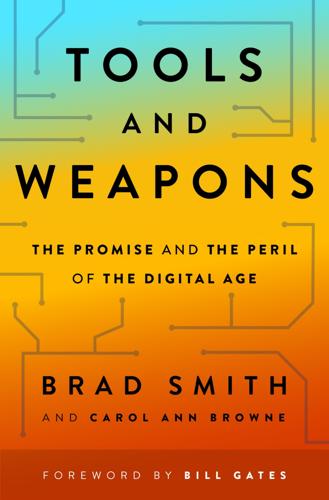
Tools and Weapons: The Promise and the Peril of the Digital Age
by
Brad Smith
and
Carol Ann Browne
Published 9 Sep 2019
But it was a technical advance in touch-based screens and Jobs’s vision for integrating everything with a clean design that led to a rapid explosion of smartphones around the world. AI likely will be both similar and different. There is good reason to believe that we’re reaching a liftoff point for many AI scenarios, like the use of a computer to take an order at a drive-through. But more complex tasks in which errors can result in injury or death—like a self-driving car—may well require considerably more time. As a result, we’re likely to see not a single transition across the entire economy or even for a single technology, but rather successive waves and ripples in different sectors. This may characterize technology and societal change over the next two or three decades.

More Everything Forever: AI Overlords, Space Empires, and Silicon Valley's Crusade to Control the Fate of Humanity
by
Adam Becker
Published 14 Jun 2025
This homogeneous, STEM-focused intellectual background in tech start-up culture, and in Silicon Valley more generally, engenders humanities denial, a systematic and sometimes willful ignorance of the arts and humanities. Nowhere is humanities denial more apparent in the tech industry than in its attitude toward history. “I don’t even know why we study history,” says Anthony Levandowski, cofounder of Google’s self-driving car division, now known as Waymo. “It’s entertaining, I guess—the dinosaurs and the Neanderthals and the Industrial Revolution, and stuff like that. But what already happened doesn’t really matter. You don’t need to know that history to build on what they made. In technology, all that matters is tomorrow.”43 Levandowski may not be the most reliable narrator: In 2020, he pleaded guilty to stealing trade secrets from Waymo (Trump pardoned him the next year).44 He also founded a religious organization dedicated to “the realization, acceptance, and worship of a Godhead based on Artificial Intelligence.”45 But the sentiment he expressed is only a slightly more extreme version of a fairly common view within the tech industry.

The Frackers: The Outrageous Inside Story of the New Billionaire Wildcatters
by
Gregory Zuckerman
Published 5 Nov 2013
Any slowing of global energy demand will bring benefits to the environment and put pressure on prices. Alternative-fuel vehicles, such as all-electric cars and hybrids, are also gaining popularity. Brokerage firm Raymond James says electric vehicles could claim 1 percent of the market in 2013, a share likely to keep rising. Any widespread embrace of self-driving cars could cripple oil demand. George Mitchell’s son, Todd, says his father’s work will have had a negative impact on the world if it forestalls progress on renewable energy, instead of giving innovators time to improve wind, solar, and other cleaner energy sources. “I think that it will be clear in decades or more that extracting hydrocarbons from tight shale formations blew up all previous assumptions about the availability and economics of oil and gas development,” Mitchell says.
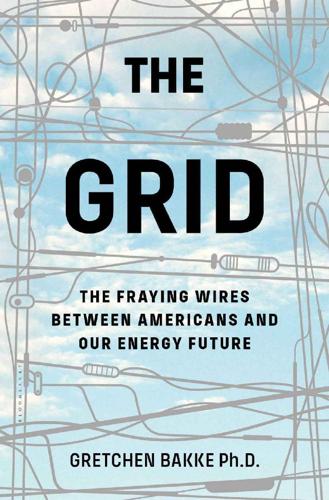
The Grid: The Fraying Wires Between Americans and Our Energy Future
by
Gretchen Bakke
Published 25 Jul 2016
A second, increasingly popular means for translating interests of different kinds into a single system is to rely upon a platform—an integrative computer program rather than a gadget. In order to help ensure that our grid is wrenched out of its current workings, this platform would need to be open to all the strange sorts of things people are dreaming up and building today (from vehicle to grid-enabled self-driving car pods to real live nanogrids) and to the boring old stuff we’re stuck with for the moment (like natural gas combustion plants and old coal or nuclear), and also to the desires and activities of regular people. All without letting the basic structures of the grid get too rotten or out of date.
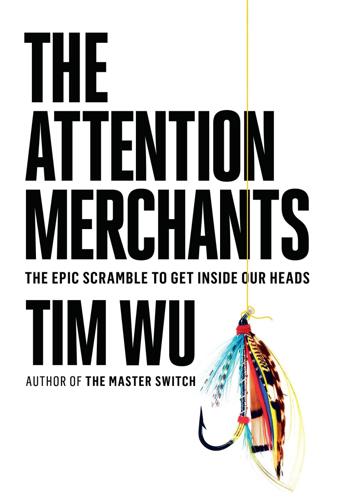
The Attention Merchants: The Epic Scramble to Get Inside Our Heads
by
Tim Wu
Published 14 May 2016
Google had, in fact, laid bare what had originally been so miraculous about the attention merchant model—getting something truly desirable at no apparent cost. For what really seemed like nothing, the public got the best search ever designed and, in time, other goodies as well, like free email with unlimited storage, peerless maps, the world’s libraries, and even research devoted to exciting innovations like self-driving cars. Of course, there was, as there always is, a quid pro quo: in its ripest state, the buying public was exposed to sales pitches; which might prove useful but then again might not. Google also began to collect a lot of information about a lot of people. Nevertheless, Page, who had the most qualms about advertising, told Wired’s Steven Levy that he’d begun to feel that AdWords was a good and just innovation.

Whole Earth: The Many Lives of Stewart Brand
by
John Markoff
Published 22 Mar 2022
(happening), 94 Wiener, Norbert, 160, 169, 222, 226, 273 Wiesner, Jerome, 272 Wilkinson, Lawrence, 295, 301, 302 Williams, Cecil, 137 Willis, Garry, 200 Wolfe, Tom, 5, 88, 111, 121, 125, 170, 212, 304–5 Wolpman, Jim, 157 Women Building the Earth for the Children’s Sake, 41 Woodstock, 128, 181, 188 woolly mammoth, 359, 360 World Future Society, 231 World’s Fair (1964; New York), 96, 113 “World War IV,” 149, 211 World Wide Web, 151, 172, 230, 279, 292, 314, 330 World Without Mind (Foer), 5–6 Wozniak, Steve, 25, 252, 268–69, 325 Wright, Frank Lloyd, 305, 307, 319 X Xerces blue butterfly, 359, 361 Xerox Palo Alto Research Center, see PARC Y Year with Swollen Appendices, A (Eno), 306 Yucca Mountain, 335–36 Z Zen Buddhism, 33, 77, 98, 194, 225–26 SB and, 207–8, 210, 218, 225 see also San Francisco Zen Center Zihuatanejo, Mexico, Leary/Alpert project in, 89 Zoloft, 338 Zomeworks, 203 Zuni Indians, 100 A B C D E F G H I J K L M N O P Q R S T U V W X Y Z About the Author John Markoff was one of a team of New York Times reporters who won the 2013 Pulitzer Prize for Explanatory Reporting. He has covered Silicon Valley since 1977, wrote the first account of the World Wide Web in 1993, and broke the story of Google’s self-driving car in 2010. He is the author of five books, including What the Dormouse Said: How the Sixties Counterculture Shaped the Personal Computer Industry and Machines of Loving Grace: The Quest for Common Ground Between Humans and Robots. What’s next on your reading list? Discover your next great read!

The Contrarian: Peter Thiel and Silicon Valley's Pursuit of Power
by
Max Chafkin
Published 14 Sep 2021
These were perhaps the necessary moral compromises made by any real disrupter—and no different from the growth hacking at PayPal, or the privacy violations at Facebook, or the lies that Thiel and his peers had told throughout their careers to hasten the advent of the future. “It almost doesn’t matter if you agree with it or not, he was right,” said former Thiel Fellow Austin Russell, now the CEO of Luminar, which makes sensors for self-driving cars. “If you really want to change the world, you have to have a seat at the table.” Indeed, perhaps if only to placate his friends, Thiel sought to put some distance between himself and Trump, explaining the endorsement as a practical matter of allying with the likely winner—as Austin Russell had.

AI 2041: Ten Visions for Our Future
by
Kai-Fu Lee
and
Qiufan Chen
Published 13 Sep 2021
Another important consideration is that we shouldn’t think of AVs simply as upgraded cars, but as part of a full smart-city infrastructure, the kind of interconnected technology infrastructure depicted in the story. On the way to realizing that vision, AV—as “The Holy Driver” suggests—will disrupt many professions and industries, and raise significant ethical and legal issues. Let’s dig into these issues in more detail. WHAT IS AN AUTONOMOUS VEHICLE? At its most basic, an AV, or self-driving car, is a computer-controlled vehicle that drives itself. Humans take about forty-five hours to learn how to drive, so it is a complicated task. Human driving involves perception (watching our surroundings and listening for sounds), navigation and planning (associating our surroundings to locations on a map, and getting us from point A to point B), inference (predicting the intent and the action of pedestrians and other drivers), decision-making (applying rules of the road to situations), and controlling the vehicle (translating intent to turning the steering wheel, stepping on the brake, and so on).

The Book of Why: The New Science of Cause and Effect
by
Judea Pearl
and
Dana Mackenzie
Published 1 Mar 2018
The owl can be a good hunter without understanding why the rat always goes from point A to point B. Some readers may be surprised to see that I have placed present-day learning machines squarely on rung one of the Ladder of Causation, sharing the wisdom of an owl. We hear almost every day, it seems, about rapid advances in machine learning systems—self-driving cars, speech-recognition systems, and, especially in recent years, deep-learning algorithms (or deep neural networks). How could they still be only at level one? The successes of deep learning have been truly remarkable and have caught many of us by surprise. Nevertheless, deep learning has succeeded primarily by showing that certain questions or tasks we thought were difficult are in fact not.
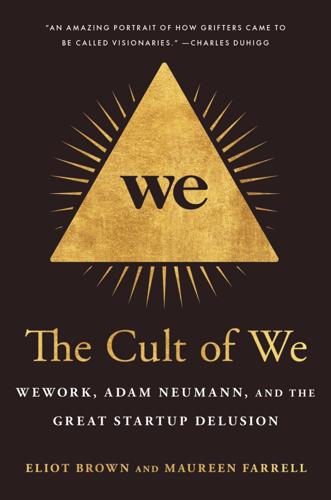
The Cult of We: WeWork, Adam Neumann, and the Great Startup Delusion
by
Eliot Brown
and
Maureen Farrell
Published 19 Jul 2021
Investors ignored the fact that the company was losing money on every ride and focused instead on the hope that Uber was going to completely replace personal car ownership. It would be the go-to courier for everything from packages to laundry, rivaling FedEx and Amazon. It would decrease congestion (it increased it), make its own self-driving car technology (it’s lagging), and spit out profits (it hasn’t). Those who missed out on pumping money into Uber were desperate to find the next one. A whole breed of startups were branded the Uber of X—on-demand services that arrive within minutes after the touch of an app. There were at least three on-demand car valets, an Uber for laundry called Washio, even an Uber for cookies called Doughbies.
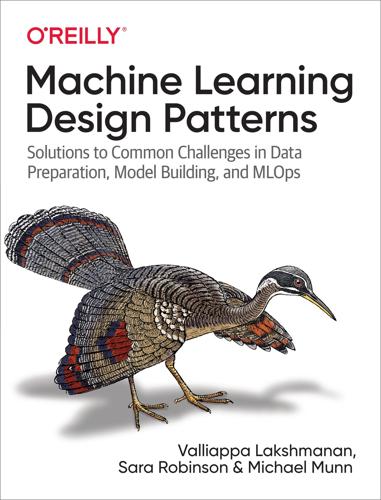
Machine Learning Design Patterns: Solutions to Common Challenges in Data Preparation, Model Building, and MLOps
by
Valliappa Lakshmanan
,
Sara Robinson
and
Michael Munn
Published 31 Oct 2020
Embeddings Hashed Feature Neutral Class Multimodal Input Transfer Learning Two-Phase Predictions Cascade Windowed Inference Computer Vision Computer vision is the broad parent name for AI that trains machines to understand visual input, such as images, videos, icons, and anything where pixels might be involved. Computer vision models aim to automate any task that might rely on human vision, from using an MRI to detect lung cancer to self-driving cars. Some classical applications of computer vision are image classification, video motion analysis, image segmentation, and image denoising. Reframing Neutral Class Multimodal Input Transfer Learning Embeddings Multilabel Cascade Two-Phase Predictions Predictive Analytics Predictive modeling uses historical data to find patterns and determine the likelihood of a certain event occurring in the future.

Power Play: Tesla, Elon Musk, and the Bet of the Century
by
Tim Higgins
Published 2 Aug 2021
* * * — Musk was working just as steadily to change the perception of Autopilot. It had attracted a lot of attention when it was announced in 2014 and rolled out in earnest in late 2015, further burnishing Tesla’s credentials as a car company of the future. It had been used by Musk as an example of how the automaker was on the road to deploying fully self-driving cars, the kind of technology that was gaining increased attention in Silicon Valley with advances made by Google and others. Tesla’s underlying technology came from a parts supplier named Mobileye, which had developed a camera system to identify objects on the roadway. Tesla’s team had worked to push the boundaries of the system through clever software programming.

The Controlled Demolition of the American Empire
by
Jeff Berwick
and
Charlie Robinson
Published 14 Apr 2020
They do generate some revenue, but for the most part, are considered to be money- losing operations for the government, and thus do not receive the financial help that they desperately require to maintain them. Roads: D The most obvious fail of American infrastructure are the crumbling and potholed roads that keep expanding, yet always seem to be filled beyond capacity with cars and trucks, starting and stopping for miles and miles. Self-driving cars boast that they will remove inefficiencies associated with human driving and decision making, but that still does not address the problem of too many cars occupying too few spaces. Each year Americans waste $160 billion in fuel and time by sitting in traffic, and 20% of all roads in the country are considered to be in poor condition and require replacement.

Battle for the Bird: Jack Dorsey, Elon Musk, and the $44 Billion Fight for Twitter's Soul
by
Kurt Wagner
Published 20 Feb 2024
Twitter, which was primarily built around text posts and links, wasn’t anywhere close to providing competition for the most successful video business on the internet. But the fact that Musk wanted to take on YouTube or give people savings accounts was also exactly why some people had initially been optimistic about his arrival. Musk was bold and ambitious to a fault. This was the same man who was building self-driving cars and routinely promised that humans would construct a colony on Mars. It was clear Musk didn’t have a concrete plan for Twitter, but the things he cooked up certainly sounded exciting to employees who had spent years moving too slowly and taking small swings. “Just try weird stuff,” he told employees that day.

It's Not TV: The Spectacular Rise, Revolution, and Future of HBO
by
Felix Gillette
and
John Koblin
Published 1 Nov 2022
Mobile upload and download speeds were poised to get much faster. Soon, wireless networks would be behaving more like the seamless internet connections inside office buildings. Everything would be instantaneous, no delays. Stankey said that 5G was on the verge of ushering in a wave of new mobile technologies. For example, autonomous self-driving cars. It wouldn’t be long before commuters in a city like Los Angeles would be sitting in the backseat of their cars watching premium video on the way to work instead of driving, he said. Over the next four years, individuals would be consuming, on average, an additional hour to an hour and a half of video each day.
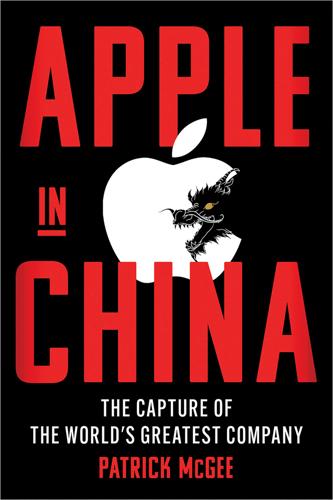
Apple in China: The Capture of the World's Greatest Company
by
Patrick McGee
Published 13 May 2025
Nothing it did was pure political window dressing. The team was getting savvy in how to work the political system in China, and if it had to make political overtures, it would do so in ways that achieved other aims, too. The Didi investment served at least two functions. At the time, the Next Big Thing in Silicon Valley was self-driving cars—a technology that, according to Google cofounder Larry Page, might be “bigger than Google.” Apple wasn’t immune to the hype, and in 2014 it had launched Project Titan, a secretive car project envisioning a driverless ride-hailing service in both the United States and China. Didi could offer Apple a “fast track into the world of autonomous vehicle and mapping,” says a former Apple engineer on Project Titan, explaining that autonomy requires mapping out the roads and that foreign companies aren’t allowed to collect such data.

Rocket Dreams: Musk, Bezos and the Trillion-Dollar Space Race
by
Christian Davenport
Published 6 Sep 2025
And if anyone was looking for evidence that Musk, even while sober, spoke like he had just exhaled a spectacular bong hit, here he was on watches: “It’s kind of amazing that you can keep time mechanically on a wristwatch with these tiny little gears.” Rogan tried to match his tone, gushing that the technology in self-driving cars could evolve to the point where there is “some electromagnetic field around the cars that as cars come close to each other, they automatically and radically decelerate because of magnets or something.” On it went. “I’m an alien,” Musk said. He postulated that reality did not exist and that humanity was dwelling in some sort of simulation taking place in a computer-generated metaverse.

The Content Trap: A Strategist's Guide to Digital Change
by
Bharat Anand
Published 17 Oct 2016
Car companies are used to investing in engines and transmissions, looking to grab differentiation there. But some of them, including BMW, have begun licensing their technologies to others. Their reasoning? That superiority in hardware will be short-lived, even superfluous, as the shift toward electric cars (inspired by Tesla), self-driving cars (inspired by Google), and ride sharing (inspired by Uber) shifts the locus of differentiation toward sensors, controls, and software. It’s a familiar story: As competition moves from products to connected portfolios, it pays to know whose complement you are—or, to put it another way, which business you are really in.
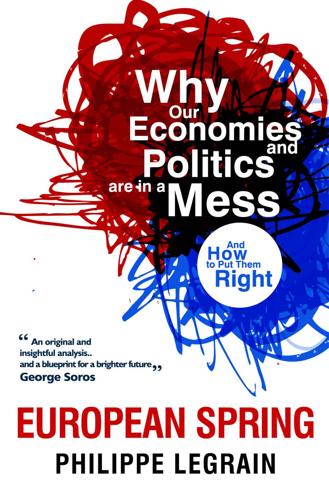
European Spring: Why Our Economies and Politics Are in a Mess - and How to Put Them Right
by
Philippe Legrain
Published 22 Apr 2014
Using nitrates as fertilisers helped us feed billions but their overuse pollutes the water; perhaps the solution will be genetic engineering to enable plants to fix more of their own nitrates or bacteria that convert nitrates into nitrogen at more efficient rates. Fossil fuels have made possible all the comforts of modern life; now we need clean energy to limit climate change. Above all, we don’t know what we don’t know and have no idea what the future holds. Only a decade ago, even technologists thought self-driving cars were scarcely on the horizon, yet Google has successfully developed them. Future advances in computing, biotech, nanotechnology or something else entirely are likely to surprise us.710 We have surely only scratched the surface of what is possible. Astronomy, nanochemistry and genetic engineering are advancing in leaps and bounds.

Algorithms to Live By: The Computer Science of Human Decisions
by
Brian Christian
and
Tom Griffiths
Published 4 Apr 2016
The good news is that the lack of centralized coordination is making your commute at most only 33% worse. On the other hand, if you’re hoping that networked, self-driving autonomous cars will bring us a future of traffic utopia, it may be disheartening to learn that today’s selfish, uncoordinated drivers are already pretty close to optimal. It’s true that self-driving cars should reduce the number of road accidents and may be able to drive more closely together, both of which would speed up traffic. But from a congestion standpoint, the fact that anarchy is only 4/3 as congested as perfect coordination means that perfectly coordinated commutes will only be 3/4 as congested as they are now.
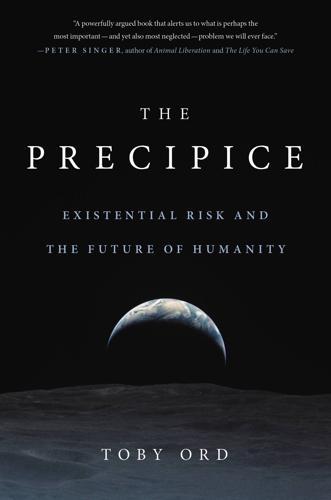
The Precipice: Existential Risk and the Future of Humanity
by
Toby Ord
Published 24 Mar 2020
This burst of progress via deep learning is fueling great optimism about what may soon be possible. There is tremendous growth in both the number of researchers and the amount of venture capital flowing into AI.83 Entrepreneurs are scrambling to put each new breakthrough into practice: from simultaneous translation, personal assistants and self-driving cars to more concerning areas like improved surveillance and lethal autonomous weapons. It is a time of great promise but also one of great ethical challenges. There are serious concerns about AI entrenching social discrimination, producing mass unemployment, supporting oppressive surveillance, and violating the norms of war.

Track Changes
by
Matthew G. Kirschenbaum
Published 1 May 2016
“Computers also amplify creative imagination,” we read just after the urgent prognostications about civil liberties.58 Computers, they assert, will be used by writers and artists, by journalists and doctors, by account executives and their secretaries, and by architects and government clerks. We find early anticipations of assistive and adaptive applications for the disabled, such as screen readers and self-driving cars. Computers can be used to control the environment in one’s house, and even (with “appropriate sensors”) can be used for pest control. Machine translation, electronic voting, and sensors to detect spoiled food or contaminated water are also all on offer. Nonetheless, Herbert and Barnard are careful to emphasize, computers are only tools.

We Are the Nerds: The Birth and Tumultuous Life of Reddit, the Internet's Culture Laboratory
by
Christine Lagorio-Chafkin
Published 1 Oct 2018
(No, no, and no: Kan could simply point the camera to the ceiling when he deemed necessary.) Building their camera rig system, which would transmit a continuous video signal to the Internet, was an undergrad they’d found on an MIT listserv, Kyle Vogt. Vogt was a robotics-obsessed engineer who’d already experimented with self-driving cars and had competed on the TV show BattleBots. He flew to San Francisco after his fall semester ended, to crash on the couch and finish up the hardware during winter break. With him, Vogt had brought a camera prototype. It was a black device a bit smaller than a soda can, with a headset that could perch above Kan’s right ear.

Lifespan: Why We Age—and Why We Don't Have To
by
David A. Sinclair
and
Matthew D. Laplante
Published 9 Sep 2019
Both times, he suffered through six months of corneal stitches that felt like “branches” in his eyes, but his vision was saved. The fact that Nick now literally sees the world through others’ eyes is an amusing topic for dinner conversation that belies the true depth of our family’s gratefulness to his deceased donors. Now, as we rapidly approach the era of self-driving cars—a technological and social paradigm shift that almost every expert expects will rapidly reduce car crashes—we need to confront an important question: Where will the organs come from? The geneticist Luhan Yang and her former mentor Professor George Church in my department at Harvard Medical School had just discovered how to gene edit mammalian cells when they began working to edit out genes in pigs.
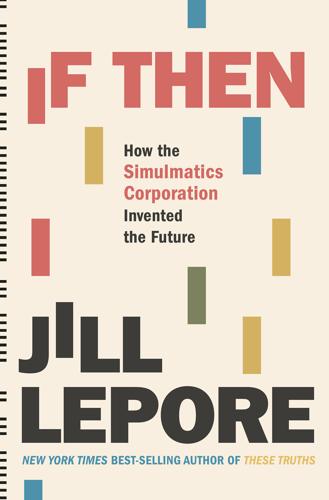
If Then: How Simulmatics Corporation Invented the Future
by
Jill Lepore
Published 14 Sep 2020
Commentators accused the Trump campaign of using a “weaponized AI propaganda machine,” describing a new and “nearly impenetrable voter manipulation machine.”18 New? Hardly. Simulmatics invented that machine in 1959. In twenty-first-century Silicon Valley, the meaninglessness of the past and the uselessness of history became articles of faith, gleefully performed arrogance. “The only thing that matters is the future,” said the Google and Uber self-driving car designer Anthony Levandowski in 2018. “I don’t even know why we study history. It’s entertaining, I guess—the dinosaurs and the Neanderthals and the Industrial Revolution and stuff like that. But what already happened doesn’t really matter. You don’t need to know history to build on what they made.

Blood in the Machine: The Origins of the Rebellion Against Big Tech
by
Brian Merchant
Published 25 Sep 2023
While the factory was degrading the cloth workers’ livelihood, it was creating new, appalling conditions for the next generation of machine workers. Cartwright’s loom, poised to enable such mass accumulation, didn’t replace the human, of course—it just let boys like Blincoe do the work. These cascading consequences of automation, unintended or otherwise, persist. We might marvel at the progress of, say, the self-driving car, but its autonomous navigation requires the labor of numerous invisible workers who do the thankless, drudgery-filled toil, often for very low wages, of labeling image after image to make the datasets the algorithm needs in order to operate. From Amazon’s Mechanical Turk to refugee camps in Europe, workers are paid pennies to sort endless reams of data, the raw materials for computer vision programs and self-driving vehicles.
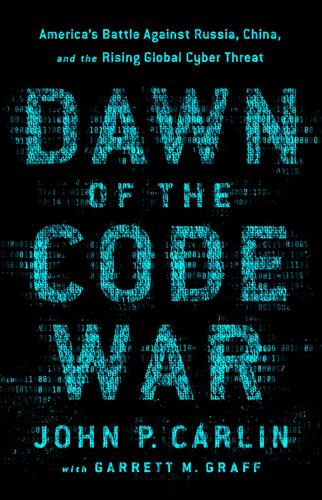
Dawn of the Code War: America's Battle Against Russia, China, and the Rising Global Cyber Threat
by
John P. Carlin
and
Garrett M. Graff
Published 15 Oct 2018
In the years since, Pittsburgh developed a whole ecosystem of key cyber resources, including the National Cyber Forensics and Training Alliance (NCFTA), which since its own founding in 1997 emerged as perhaps law enforcement’s most important clearinghouse for computer crime. NCFTA was part of the city’s dramatic transformation from a dying steel town to a thriving, hip technology hub—the very city, years later, where Uber would first deploy its self-driving cars. On paper, according to government charts at least, public–private information sharing is supposed to be the purview of groups like the Department of Homeland Security’s National Cybersecurity and Communications Integration Center, a 700-person, billion-dollar-a-year, state-of-the-art operation based in Arlington, Virginia.
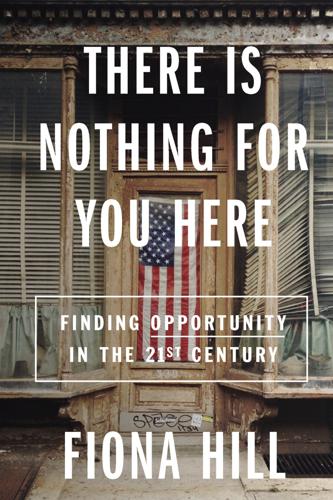
There Is Nothing for You Here: Finding Opportunity in the Twenty-First Century
by
Fiona Hill
Published 4 Oct 2021
It coordinates with Michigan’s state and local governments to attract new business and investment to the region and produces reports on improving the business climate, as well as informing programs on workforce development. The DRP helps big companies in the Detroit region, such as the Ford Motor Company and General Motors, connect with smaller firms in the new automotive and “mobility technology” sector (self-driving cars and electric vehicles) to create a business network focused on developing technology clusters. In 2020 alone the DRP’s model of bringing together private companies and local government officials brought over $450 million in new investment into the Detroit region and created 1,745 new jobs. In the Lehigh Valley, where Dad might have ended up back in the 1960s had he actually emigrated, the city of Bethlehem set up a similar public-private partnership, the Lehigh Valley Economic Development Corporation.

Lonely Planet Sri Lanka
by
Lonely Planet
Recommended companies with drivers include the following (there are many more; the Lonely Planet Thorn Tree forum is a good source of driver recommendations): Ancient Lanka (%077 727 2780; www.ancientlanka.com) Let's Go Lanka (%077 630 2070; www.letsgolanka.com) Self-Drive Hire Colombo-based company Shineway Rent a Car ( GOOGLE MAP ; %071 278 9323; http://rentalcarsrilanka.com; 45/15 Nawala Rd, Narahenpita, Col 5) offers self-drive car hire. You'll find other local firms as well as very small operations in tourist towns. You can usually hire a car for about US$30 per day with 100km of included kilometres. But it is still uncommon to see visitors driving themselves in Sri Lanka. Motorbike rentals run about Rs 1500 per day across the country.

Nexus: A Brief History of Information Networks From the Stone Age to AI
by
Yuval Noah Harari
Published 9 Sep 2024
The most obvious suggestion is to tell computers that they must care about any entity capable of suffering. While suffering is often caused by belief in local intersubjective myths, suffering itself is nonetheless a universal reality. Therefore, using the capacity to suffer in order to define the critical in-group grounds morality in an objective and universal reality. A self-driving car should avoid killing all humans—whether Buddhist or Muslim, French or Italian—and should also avoid killing dogs and cats, and any sentient robots that might one day exist. We may even refine this rule, instructing the car to care about different beings in direct proportion to their capacity to suffer.

Character Limit: How Elon Musk Destroyed Twitter
by
Kate Conger
and
Ryan Mac
Published 17 Sep 2024
Pichette leaned on his experience at Google as he made his case to Cohn. Sundar Pichai was technically the leader of only one company, Alphabet, he argued. But under the Alphabet umbrella was the search company Google, the video service YouTube, the corporate web suite Cloud, and moonshot projects like self-driving cars. Pichai ran it all without Wall Street worrying he was distracted. Why not let Dorsey run just two companies, Twitter and Square? What mattered wasn’t the number of businesses but having the right teams installed around a visionary leader to make sure everything stayed on track. Cohn should meet Dorsey, Pichette insisted.

I Am a Strange Loop
by
Douglas R. Hofstadter
Published 21 Feb 2011
If we once again postulate the idea of obtaining nutrition by carrying out certain remote actions, and if we add back the ability to control distant motion by means of a joystick or even by certain brain events, then things really start to shimmer in uncertainty. For surely a mobile robot is not where the radio-connected computer that is controlling it happens to be sitting. A robot might be strolling about on the moon while its computerized guidance system was in some earthbound laboratory. Or a self-driving car like Stanley could be crossing the Nevada desert, and its computer control system might be on board or might be located in a lab in California, connected by radio. But would we even care where the computer was? Why should we care where it is located? A robot, we feel, is where its body is. And so when my brain can switch at will (using the fancy glasses described above) between inhabiting any one of a hundred different bodies — or worse yet, when it can inhabit several bodies at the same time, processing different kinds of input from all of them at once (perhaps visual input from one, sonic from another, tactile from a third) — then where I am becomes extremely ill-defined.

Termites of the State: Why Complexity Leads to Inequality
by
Vito Tanzi
Published 28 Dec 2017
Ch apter 12 Termites in Regulatory Activities While one may venture a guess about limits to how much governments should spend, it is difficult, or impossible, to set limits to the number, or the use, of regulations in today’s economies, in part because those limits would need to be adjusted frequently to accommodate technological and other changes. For example, the introduction of cars required many new regulations and so did that of planes. Regulations significantly reduced the number of car accidents over the years. Self-driving cars will require new, different regulations. There are growing complaints about the number of regulations in today’s world that some, and especially representatives of enterprises, libertarian economists, and conservative politicians, see as excessive. At the same time there are complaints from other groups that various activities are not regulated enough, and abuses, presumably due to the absence of regulations, are reported with increasing frequency.

Facebook: The Inside Story
by
Steven Levy
Published 25 Feb 2020
He was a serious musician, playing multiple instruments but particularly excelling as a jazz pianist. Stanford brought out his geek side, and he majored in symbolic systems—a cult program whose alumni include Reid Hoffman and Google’s Marissa Mayer—and took courses with world-renowned masters of AI. He was around the AI lab when it won the DARPA self-driving car challenge. After graduating in 2004, he decided to take a year off before grad school, traveling the country and doing computer consulting. When he returned from his trek, he was back at Stanford and living in one of a group of houses in Palo Alto known as the Grateful Dead Houses, run by a landlord who was a serious fan of the band.

The Power Law: Venture Capital and the Making of the New Future
by
Sebastian Mallaby
Published 1 Feb 2022
BACK TO NOTE REFERENCE 84 Michael Ewens and Joan Farre-Mensa, “The Deregulation of the Private Equity Markets and the Decline in IPOs,” Review of Financial Studies 33, no. 12 (Dec. 2020): 5463–509. BACK TO NOTE REFERENCE 85 Heather Somerville, “Toyota to Invest $500 Million in Uber for Self-Driving Cars,” Reuters, Aug. 27, 2018. BACK TO NOTE REFERENCE 86 Sam Nussey, “SoftBank’s Son Admits Mistakes After Vision Fund’s $8.9 Billion Loss,” Reuters, Nov. 6, 2019. BACK TO NOTE REFERENCE 87 Arash Massoudi and Kana Inagaki, “SoftBank Imposes New Standards to Rein In Start-Up Founders,” Financial Times, Nov. 4, 2019.
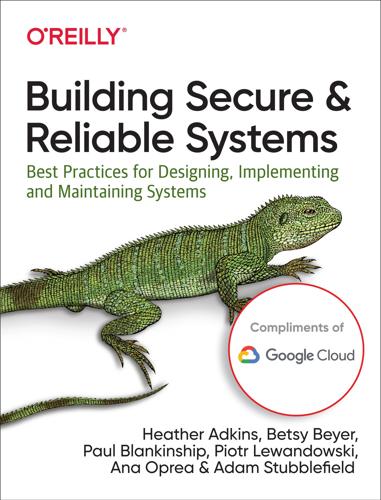
Building Secure and Reliable Systems: Best Practices for Designing, Implementing, and Maintaining Systems
by
Heather Adkins
,
Betsy Beyer
,
Paul Blankinship
,
Ana Oprea
,
Piotr Lewandowski
and
Adam Stubblefield
Published 29 Mar 2020
As with certifications, we recommend considering a candidate’s academic achievements in the context of their practical experience and your organization’s needs. For example, you might want to bring on an experienced professional as your first security hire, and then hire early career talent once the team is established and can offer mentorship. Alternatively, if your organization is working on a niche technical problem (such as securing self-driving cars), a new PhD graduate with deep knowledge in that specific research area but little work experience might fit the role nicely. Integrating Security into the Organization Knowing when to start working on security is more of an art than a science. Opinions on this topic are plentiful and varied.

Seeking SRE: Conversations About Running Production Systems at Scale
by
David N. Blank-Edelman
Published 16 Sep 2018
For this last bullet point, it can be somewhat of a difficult situation for the reliability organization to say they’re responsible for improving availability, but at the same time don’t have total control over the factors that impact availability. A lot of people aren’t comfortable with saying they’re responsible for improving something they don’t necessarily have absolute control over. At a company where you ship a product to the field (for example, self-driving car software), this model might not work. You wouldn’t want to wait and say, “Wow, look, that car drove off the road. That was an error. Who wrote that? Well, let’s get it right next year.” In contrast, the space we operate in allows a fair amount of room to leverage context over control, as we don’t put lives at risk and can make changes quickly to the aggregate product environment.

Designing Data-Intensive Applications: The Big Ideas Behind Reliable, Scalable, and Maintainable Systems
by
Martin Kleppmann
Published 17 Apr 2017
Responsibility and accountability Automated decision making opens the question of responsibility and accountability [87]. If a human makes a mistake, they can be held accountable, and the person affec‐ ted by the decision can appeal. Algorithms make mistakes too, but who is accounta‐ ble if they go wrong [88]? When a self-driving car causes an accident, who is responsible? If an automated credit scoring algorithm systematically discriminates against people of a particular race or religion, is there any recourse? If a decision by your machine learning system comes under judicial review, can you explain to the judge how the algorithm made its decision?
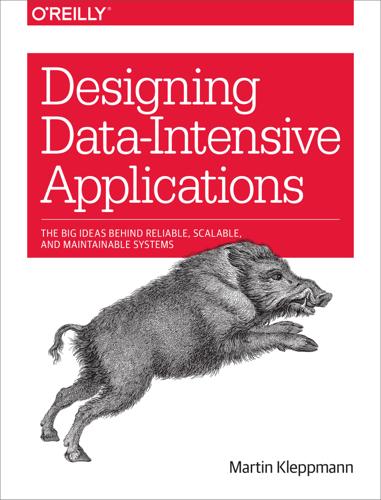
Designing Data-Intensive Applications: The Big Ideas Behind Reliable, Scalable, and Maintainable Systems
by
Martin Kleppmann
Published 16 Mar 2017
Responsibility and accountability Automated decision making opens the question of responsibility and accountability [87]. If a human makes a mistake, they can be held accountable, and the person affected by the decision can appeal. Algorithms make mistakes too, but who is accountable if they go wrong [88]? When a self-driving car causes an accident, who is responsible? If an automated credit scoring algorithm systematically discriminates against people of a particular race or religion, is there any recourse? If a decision by your machine learning system comes under judicial review, can you explain to the judge how the algorithm made its decision?

Merchants of Truth: The Business of News and the Fight for Facts
by
Jill Abramson
Published 5 Feb 2019
It would enable BuzzFeed to sync its output across departments, so that when the news team had one of its occasional themed weeks (e.g., Mental Health Week), the viral video personalities who worked in BuzzFeed’s Hollywood studio would be able to contribute some comic relief to the conversation. After unveiling HIVE to his employees, Peretti wanted to step back and explain how the new tool fit into his broader vision for BuzzFeed, which he did by way of analogy: “Self-driving cars are starting to get better than humans at driving. Humans crash a lot more. The reason is that you only have your own experience when you drive. If you’ve never had a ball roll out into the street, or driven on an icy patch, you don’t know how to do that.” That was the limitation on human expertise: it was necessarily confined to the lived experience of an individual.
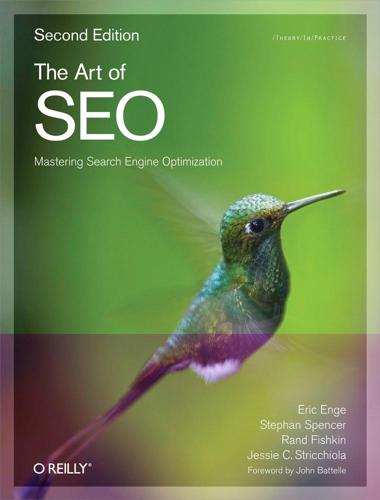
The Art of SEO
by
Eric Enge
,
Stephan Spencer
,
Jessie Stricchiola
and
Rand Fishkin
Published 7 Mar 2012
For example, Google and NASA are working on new networking protocols that can work with the long latency times and low bandwidth in space. Google is also pursuing alternative energy initiatives (http://www.google.com/green/), which clearly goes beyond its mission statement. An example of such an initiative is its investments in self-driving cars. In addition, Google has ventures in office productivity software with Google Docs. These two initiatives have little to do with SEO, but they do speak to how Google is trying to expand its reach. Another potential future involves Google becoming a more general-purpose pattern-matching and searching engine.

The Rough Guide to Sri Lanka
by
Rough Guides
Published 21 Sep 2018
Bike, motorbike and car rental Alma Tours (217 Lewis Place; 031 487 3624, almatours65@yahoo.com), Yellow Fleet Bike Tours (077 776 5919) and Pick & Go (077 646 4346, pickandgotravels.com) have a range of scooters and larger motorbikes for rent for around $10–25/day. Alma Tours and Pick & Go also rent out mountain bikes (Rs.500/day), self-drive cars and minivans (€30–40/day) and even tuktuks. Internet Sunrise Internet Café between Lords and Sherry Land (daily 8.30am–1pm & 3–9pm; Rs.330/hr) has a handful of machines. Swimming pools Non-guests can use the pools at the Paradise Beach Hotel, Camelot Beach Hotel and the Jetwing Beach and Jetwing Blue hotels.

The Rough Guide to Egypt (Rough Guide to...)
by
Dan Richardson
and
Daniel Jacobs
Published 1 Feb 2013
Car rental Renting a car pays obvious dividends if you are pushed for time or plan to visit remote sites, but whether you’d want to drive yourself is another matter – it’s not much more expensive to hire a car and driver. Branches of Misr Travel, and numerous local tour agencies, can fix you up with one, or you can charter a taxi. If you bring your own vehicle, you are required to re-export it when you leave – even if it gets wrecked. A self-drive car can be rented through one of the international franchise chains, or a local firm (addresses are given in the guide). It’s worth shopping around as rates and terms vary considerably. At the cheaper end, you can get a car with unlimited mileage for around £50/$75 a day. Most companies require a hefty deposit, and not all accept credit cards.

The Rough Guide to Australia (Travel Guide eBook)
by
Rough Guides
Published 14 Oct 2023
Long-distance train travel, though limited, has the advantage of sleepers and a bit more freedom of movement. Discounts are generally available up to 11 or 12 years old and children under 4 generally go free. Most train companies offer family fares, too, allowing discounted or free travel for children who travel with at least one adult. Otherwise, there’s always the option of self-drive. Car rental is reasonably priced, and motorhomes and campervans are also available for rental (see page 56). Within cities, metropolitan buses and trains give discounts of around fifty percent for children and many allow children under 4 or 5 to travel free. Accommodation While resorts and motels often provide child discounts and may offer a babysitting service or organized activities, most families on extended trips find that self-catering provides the most flexibility.